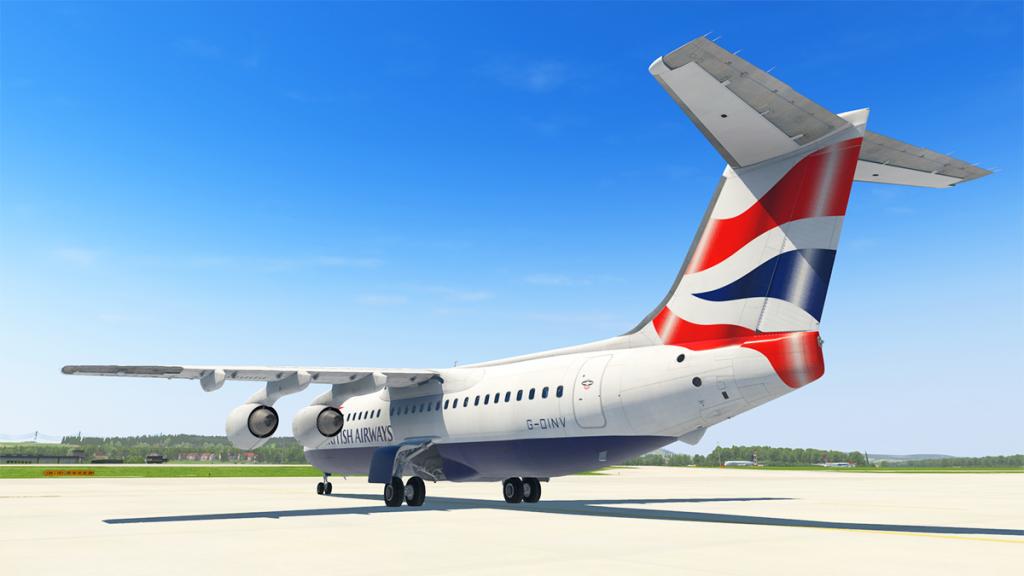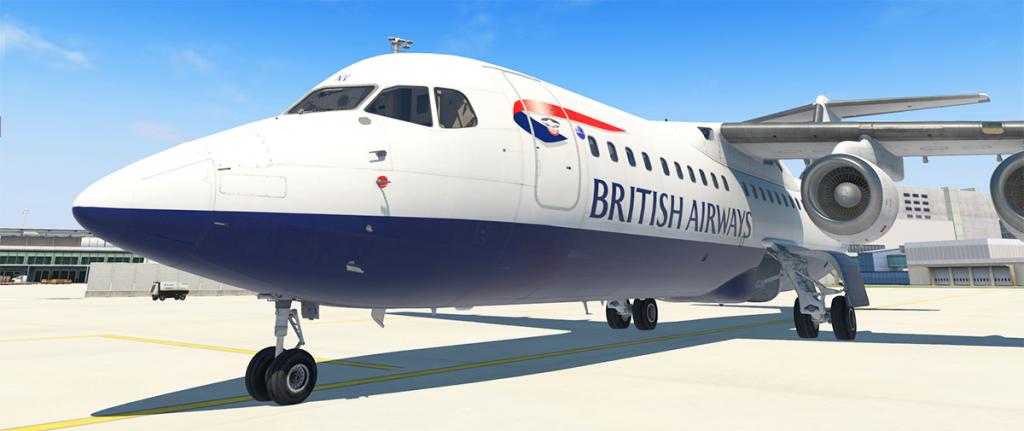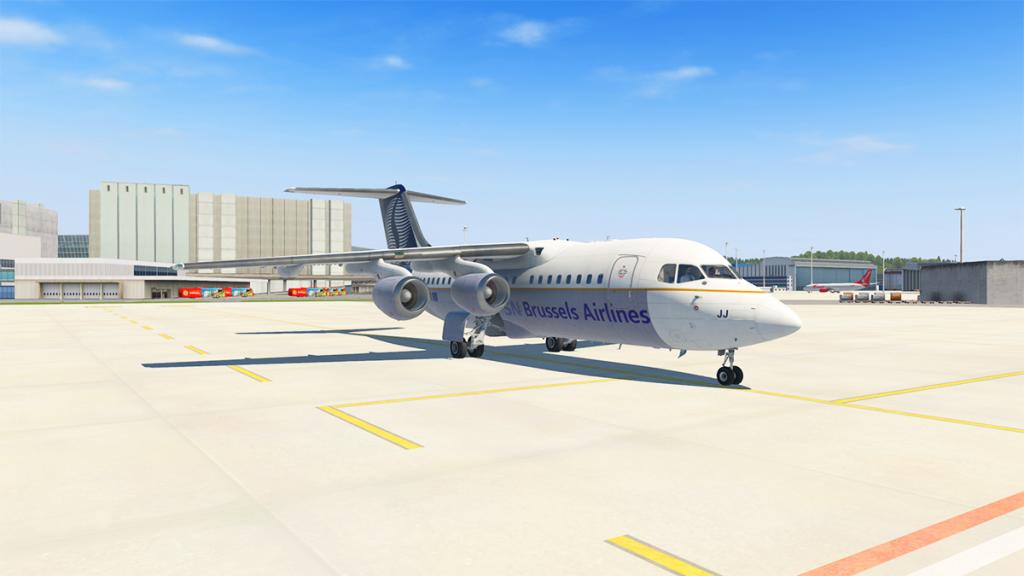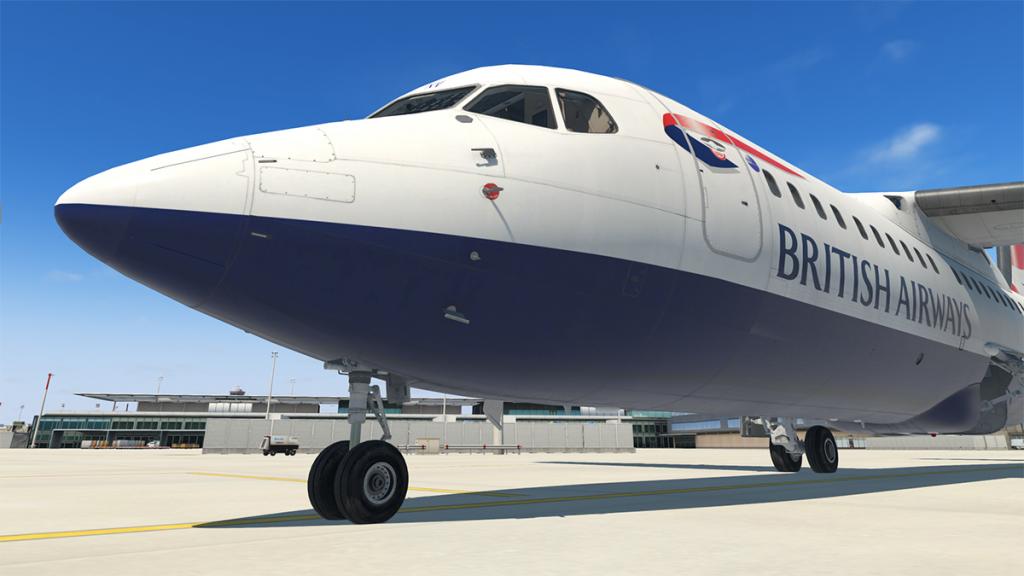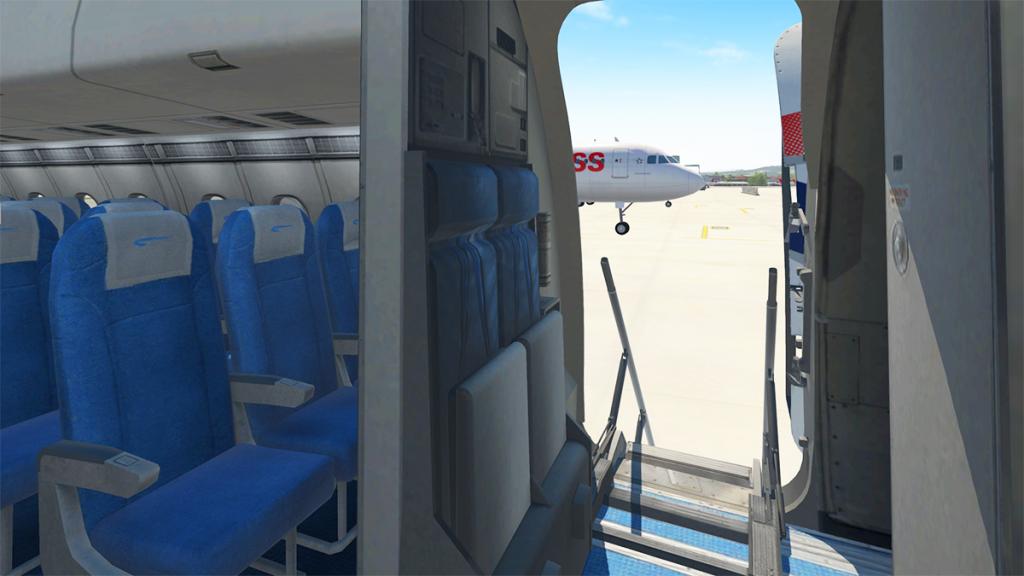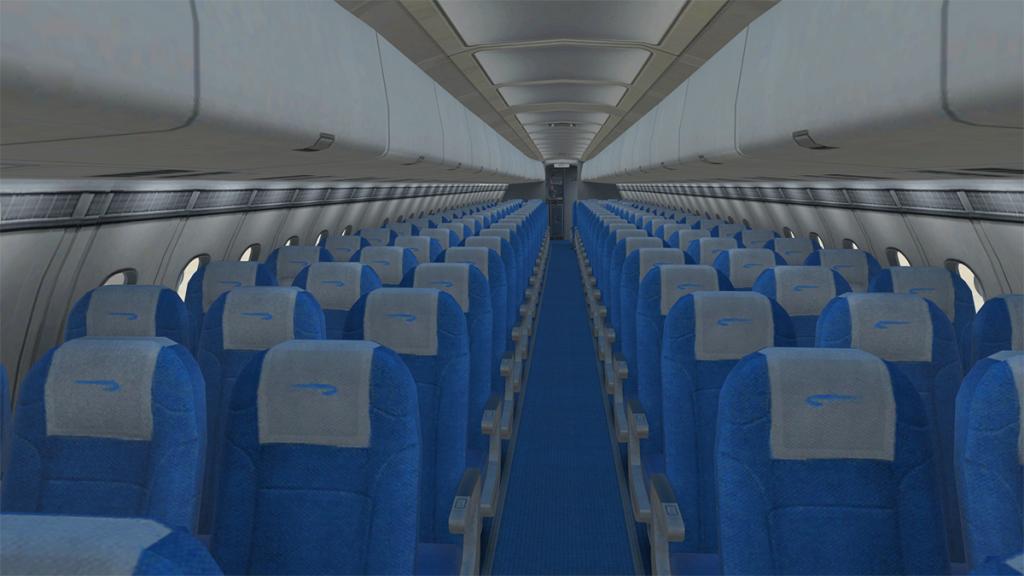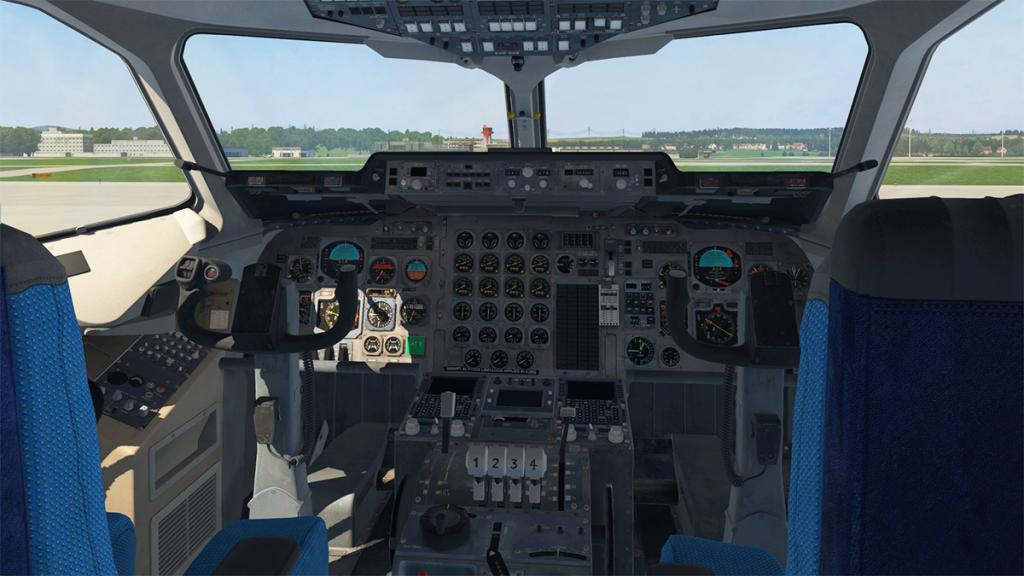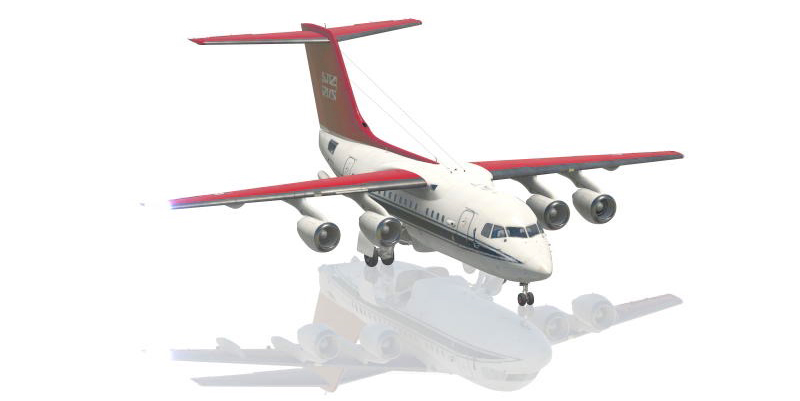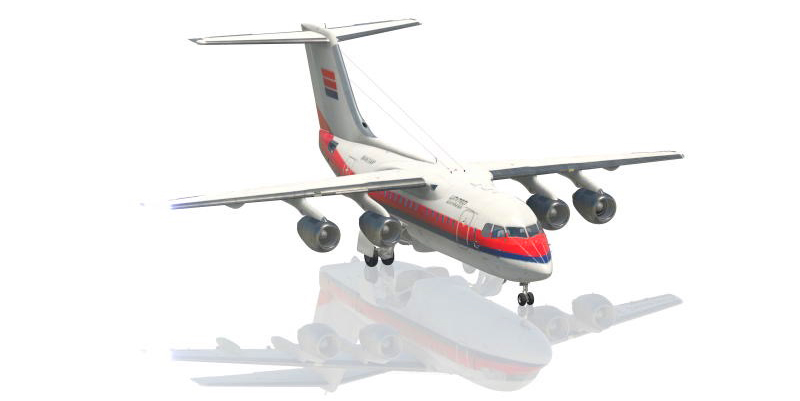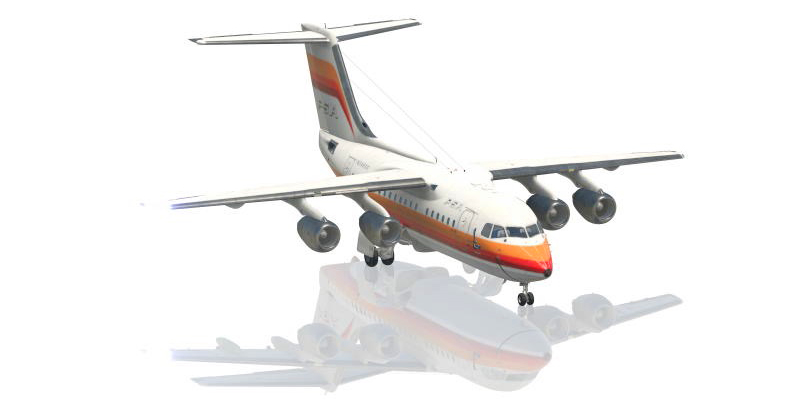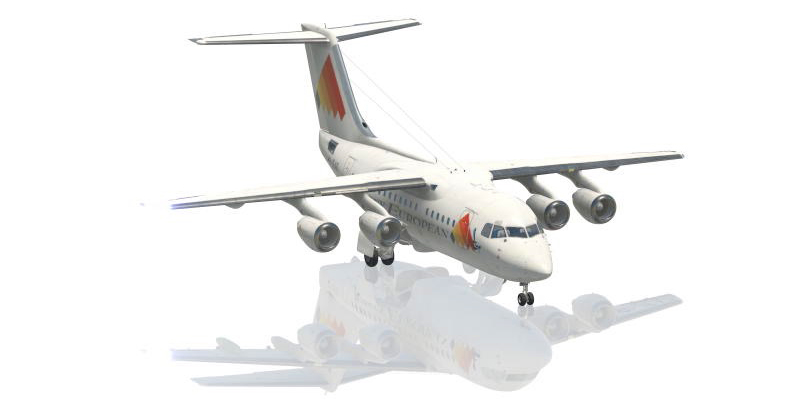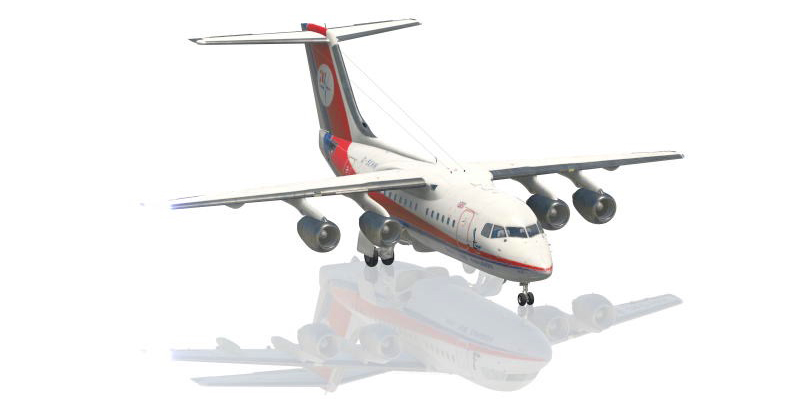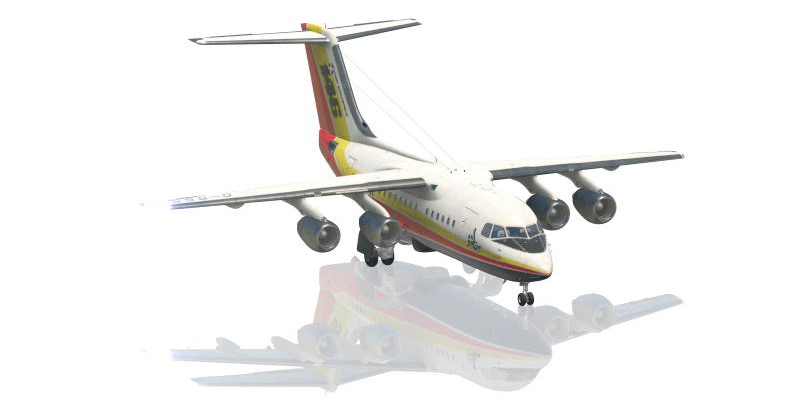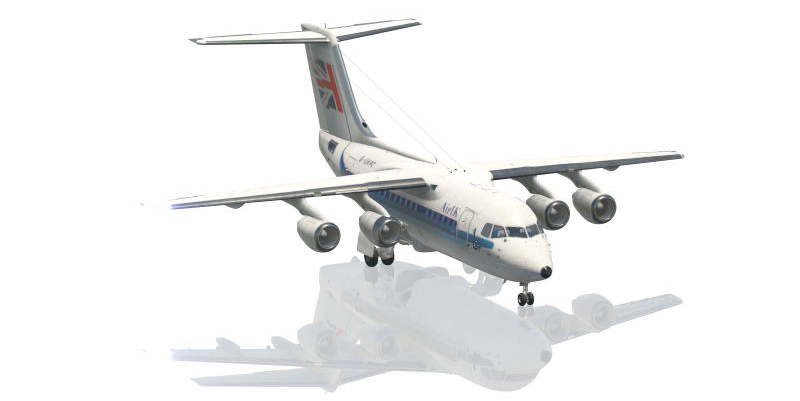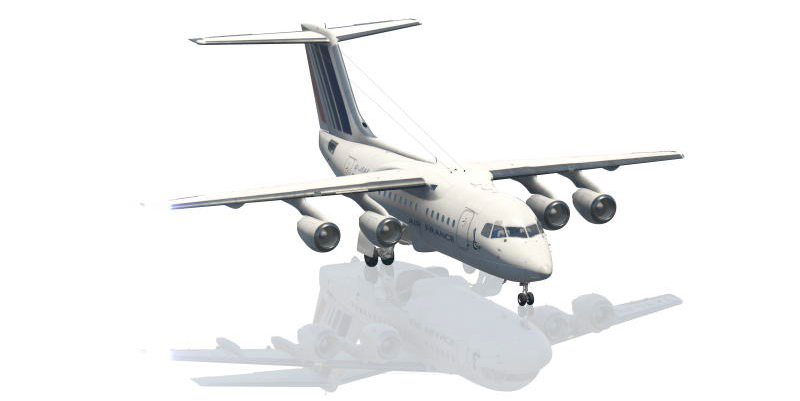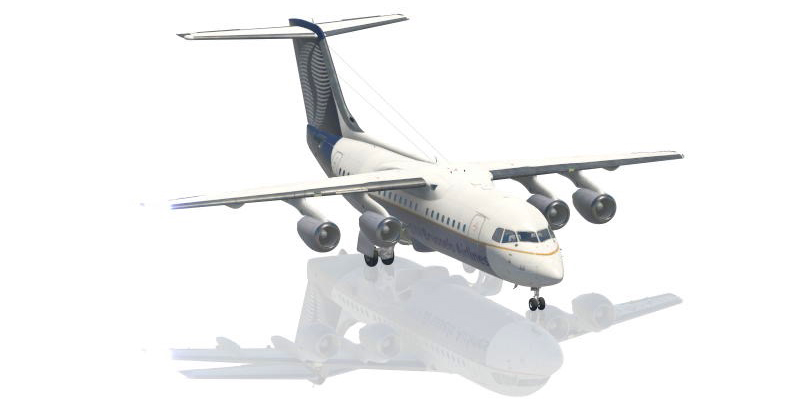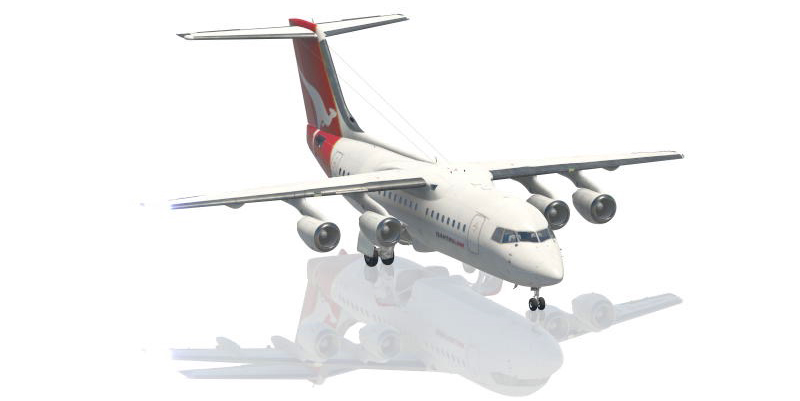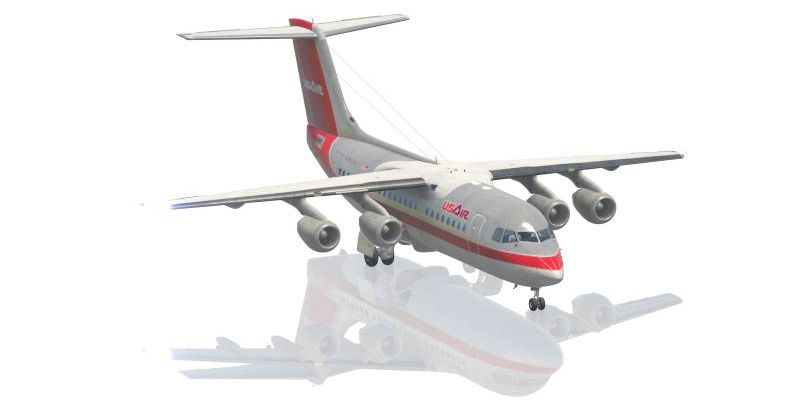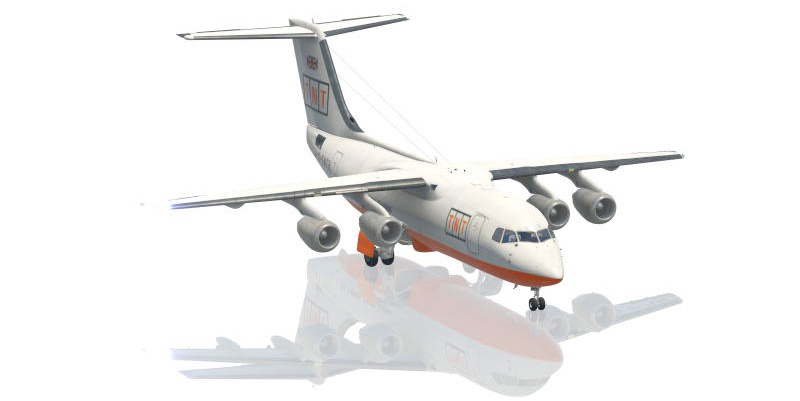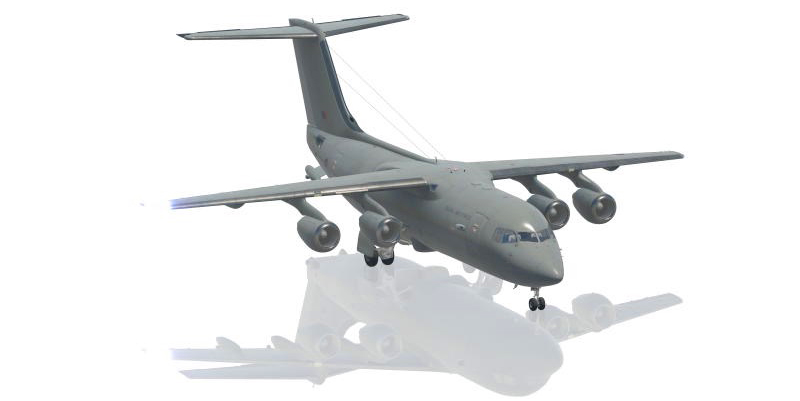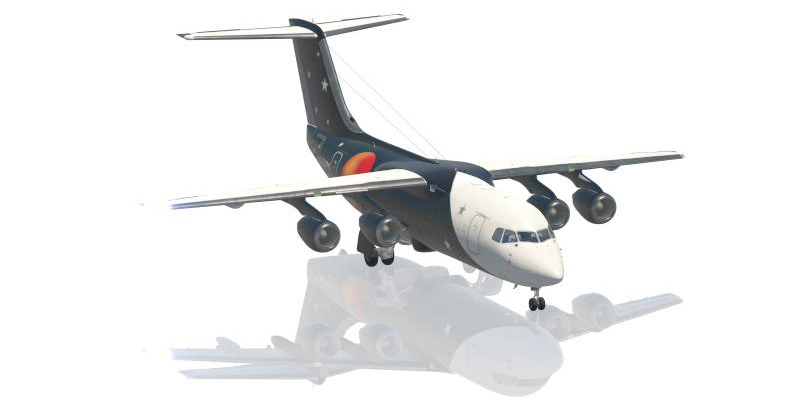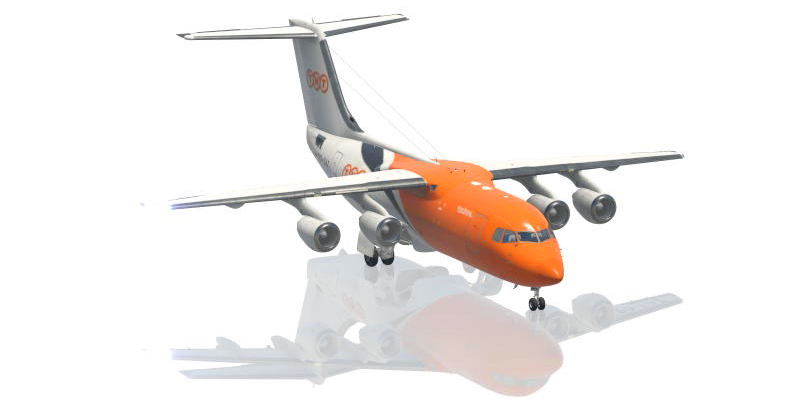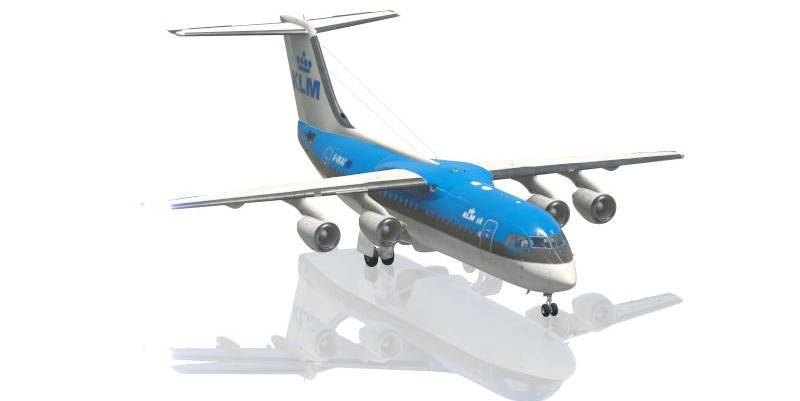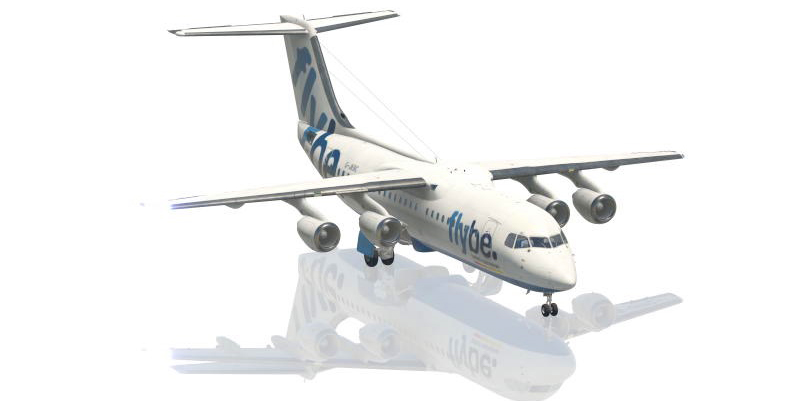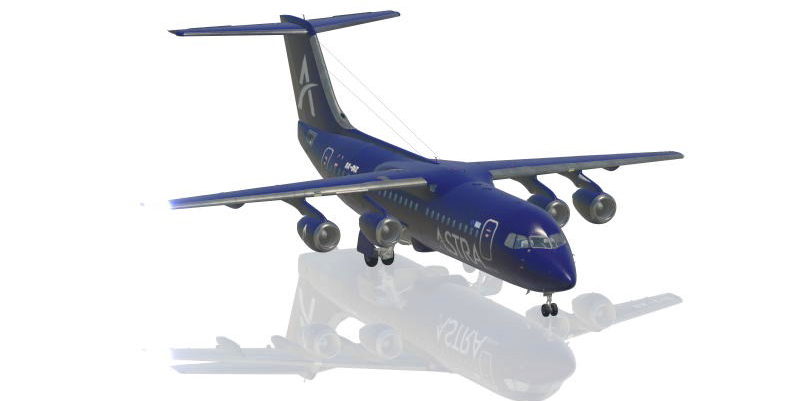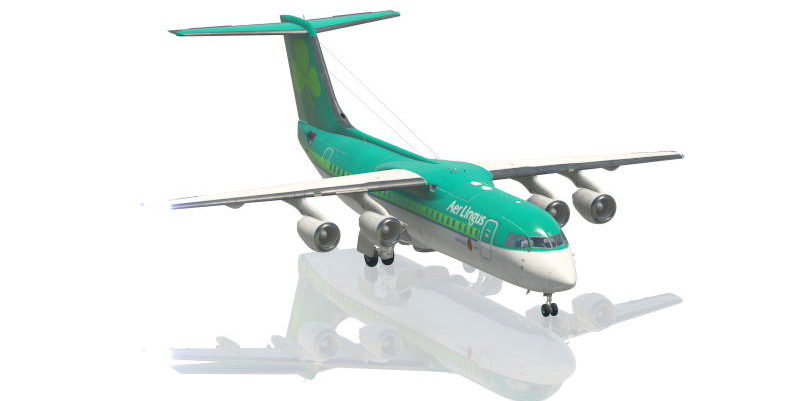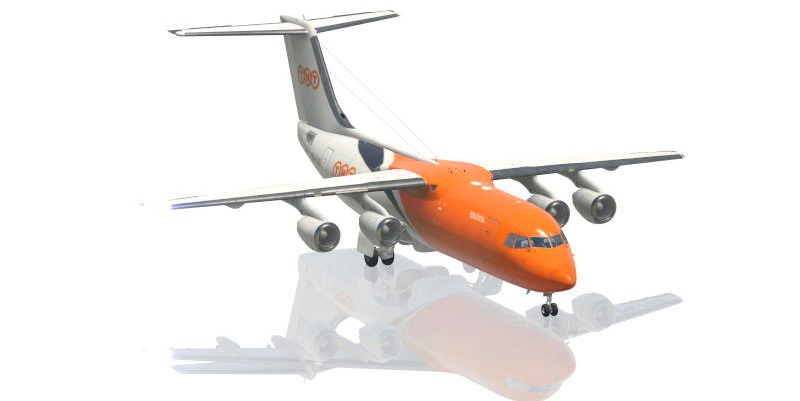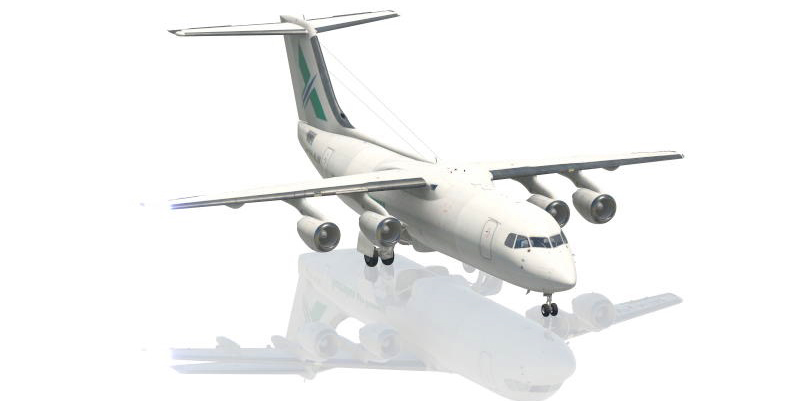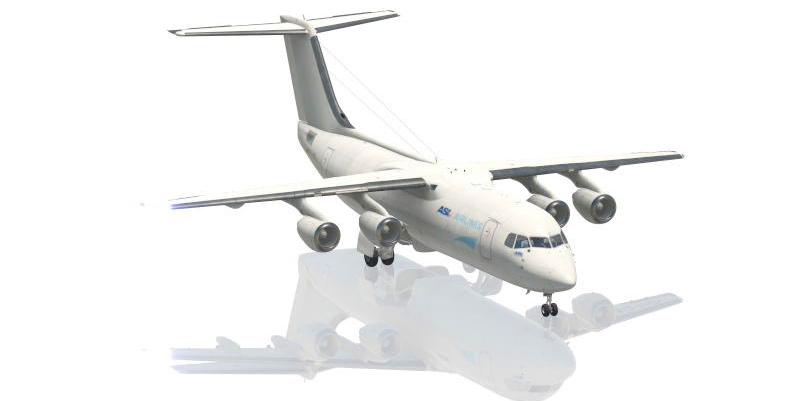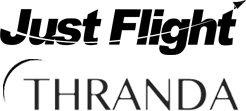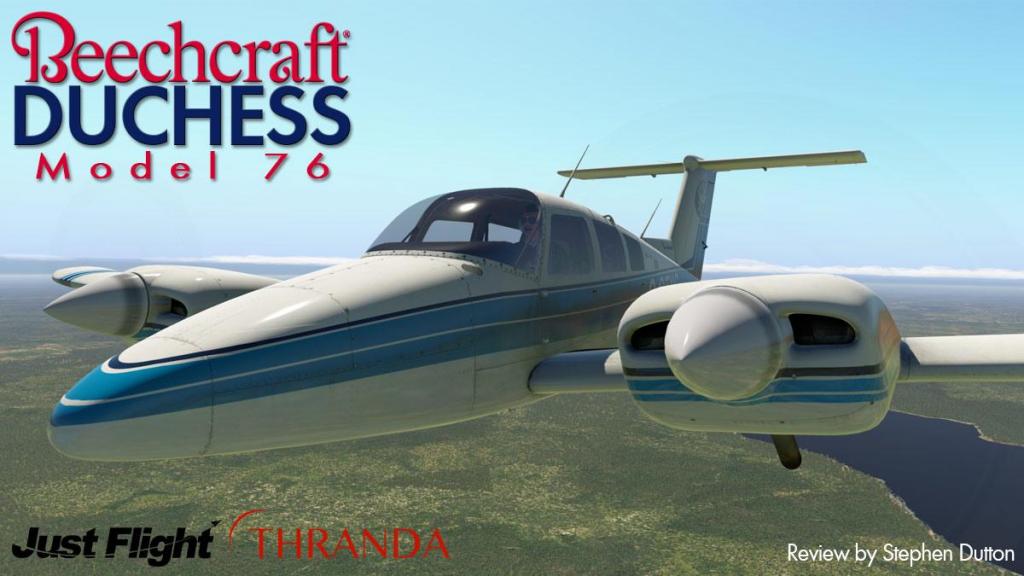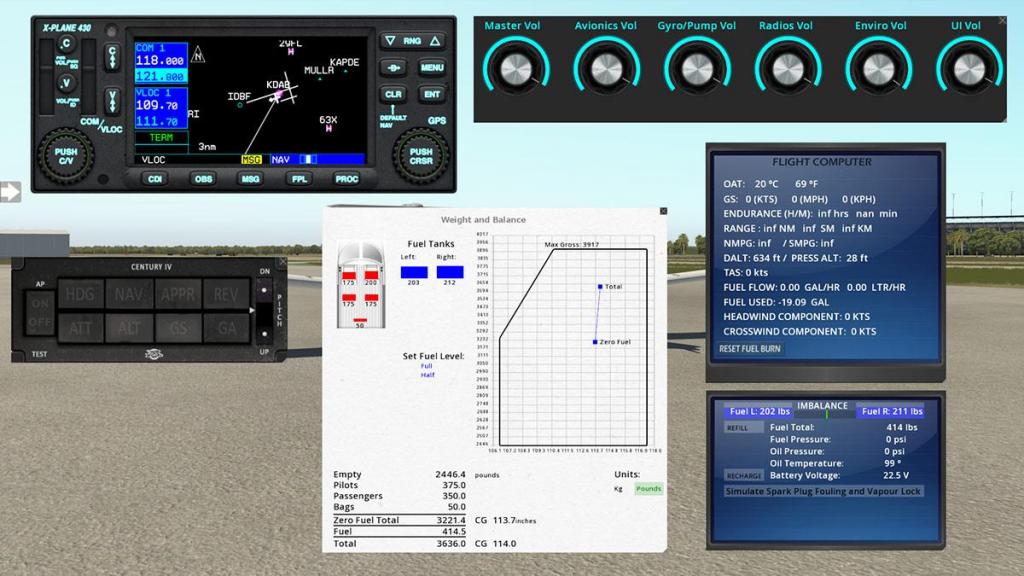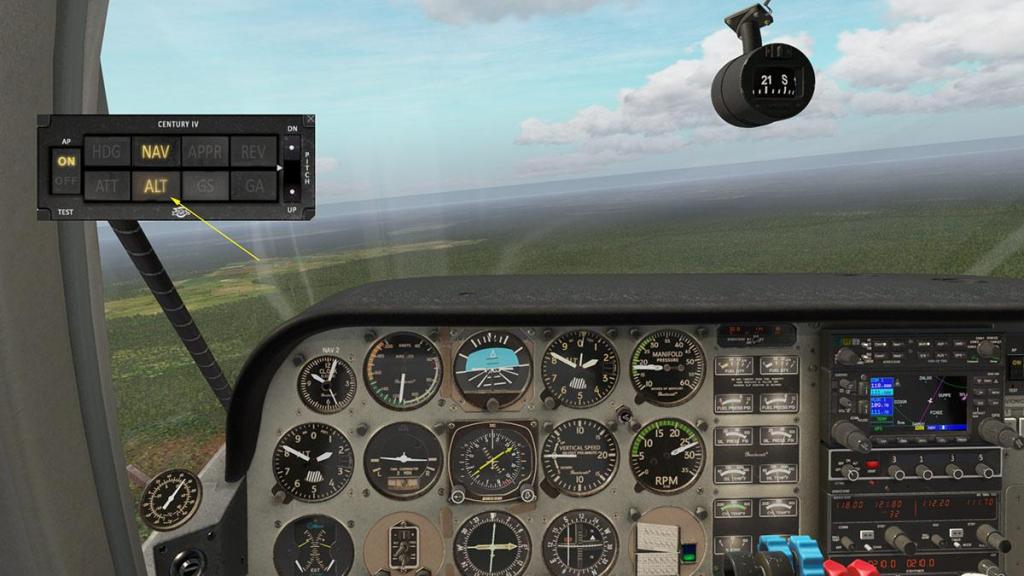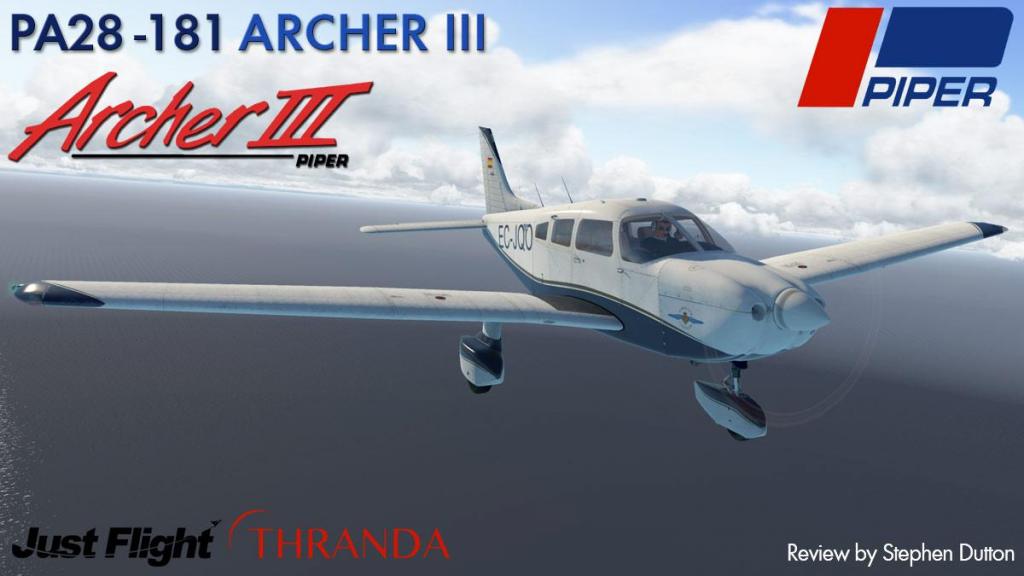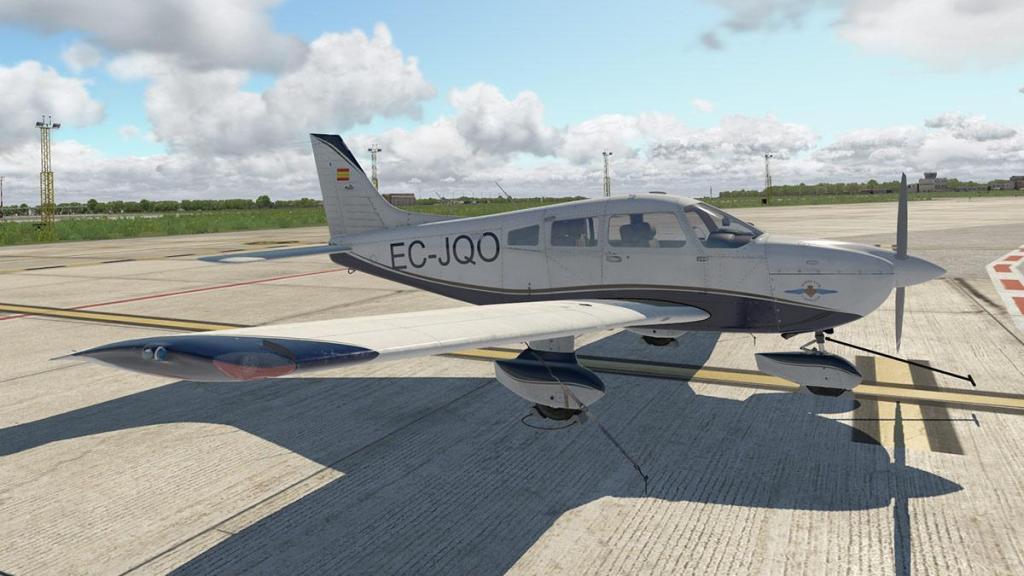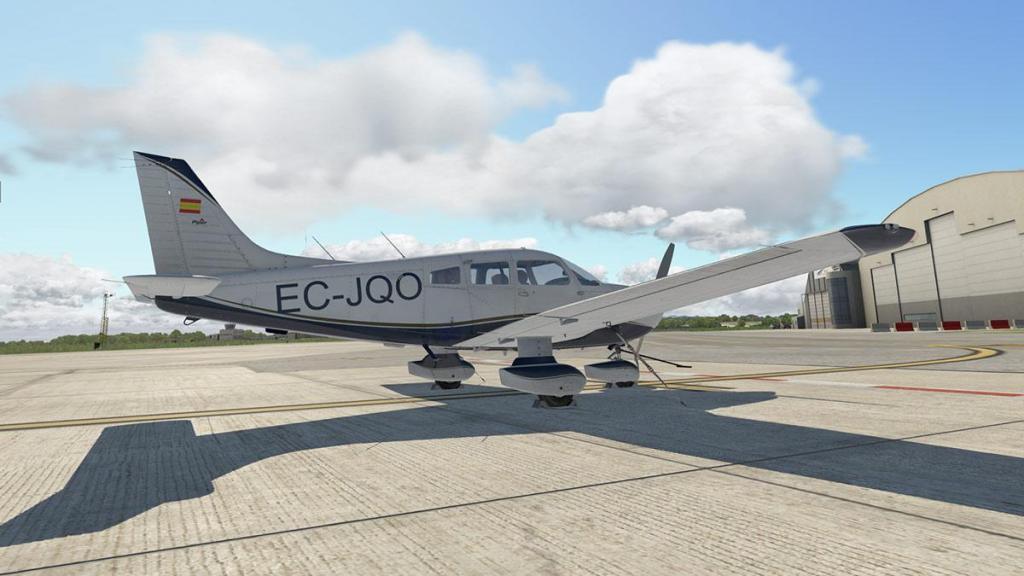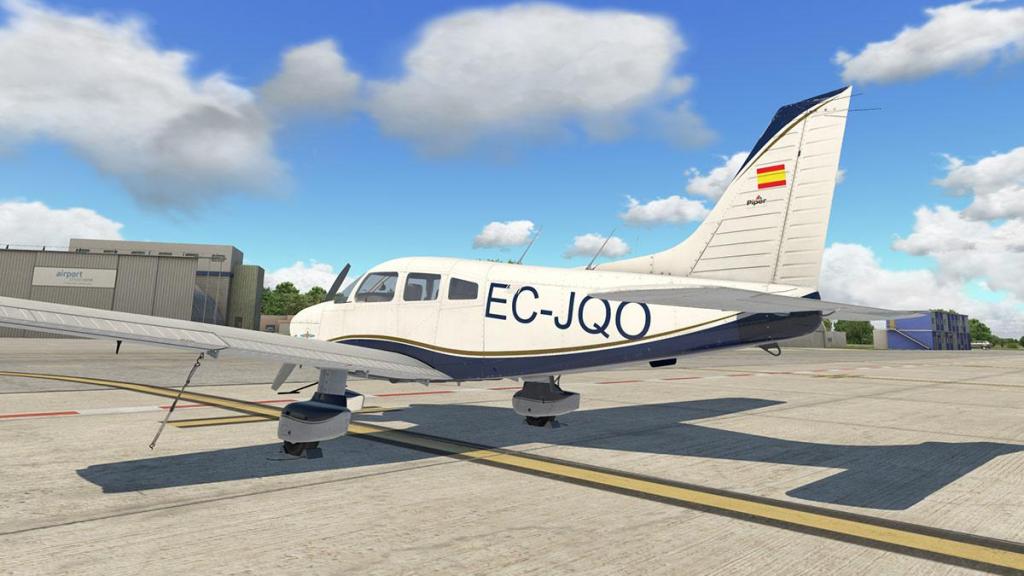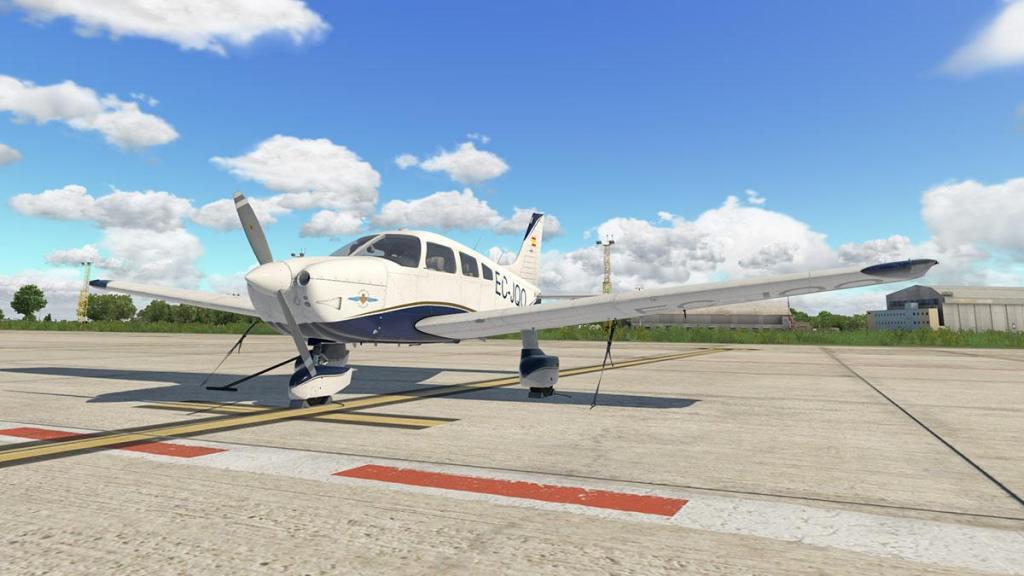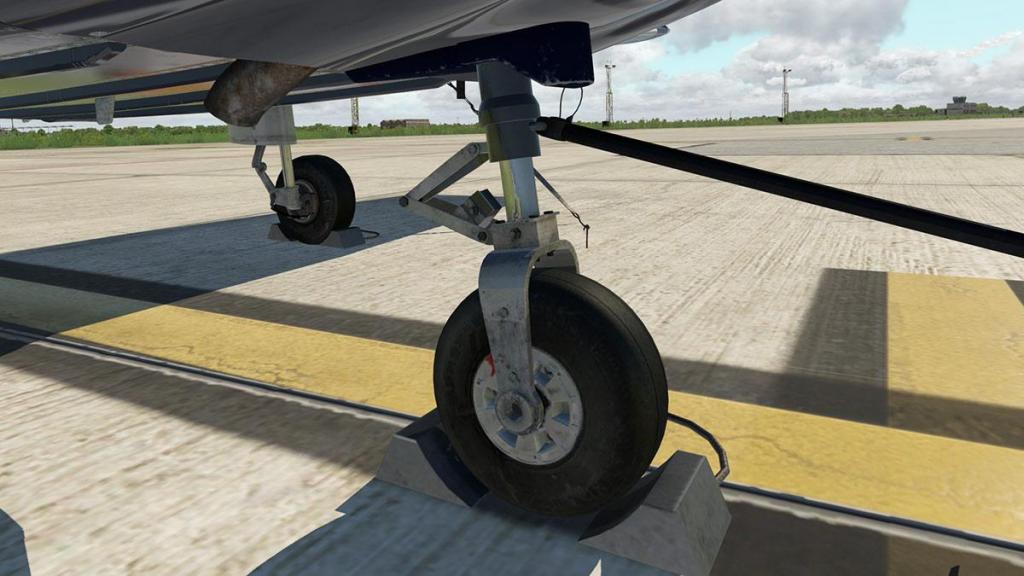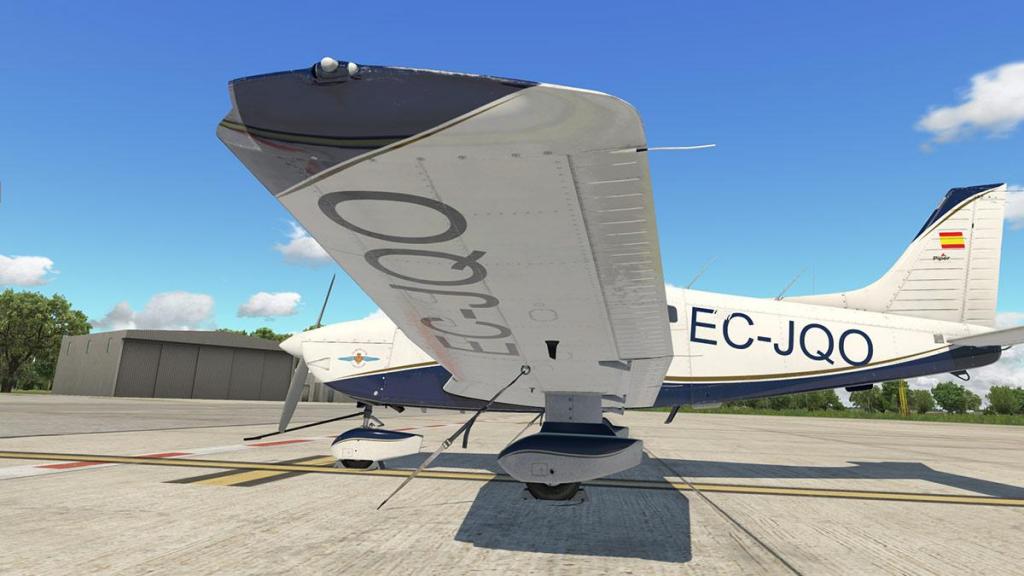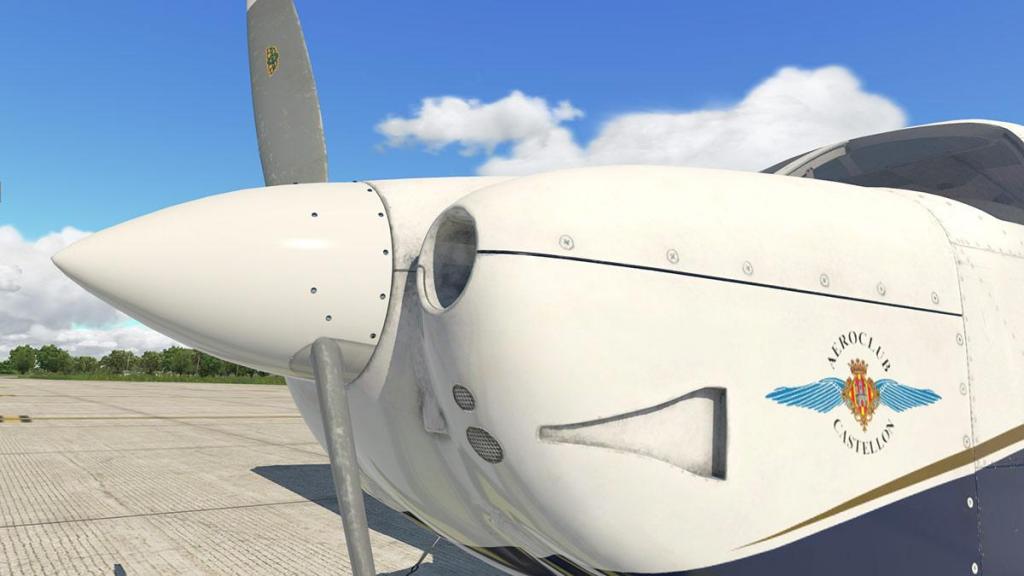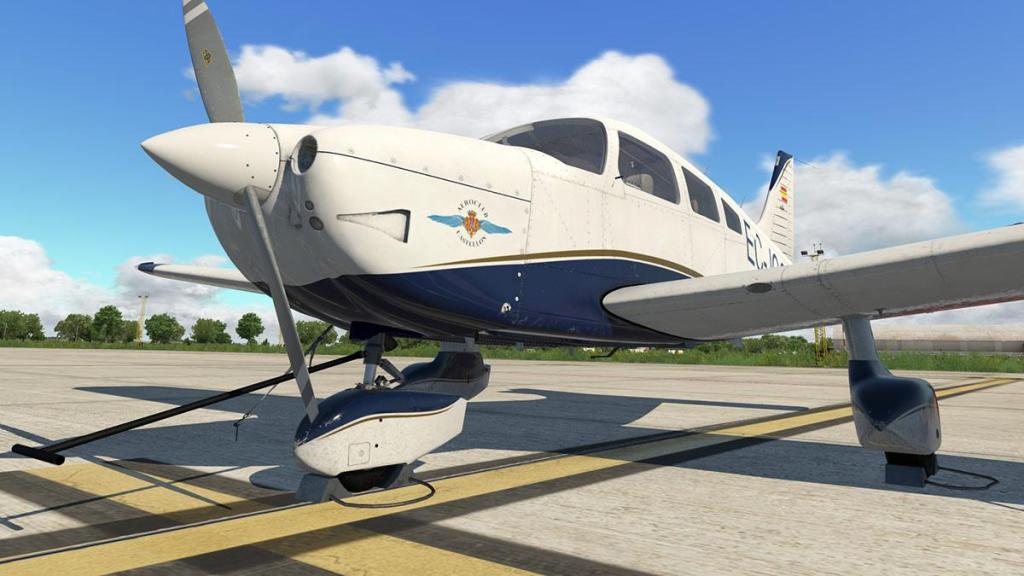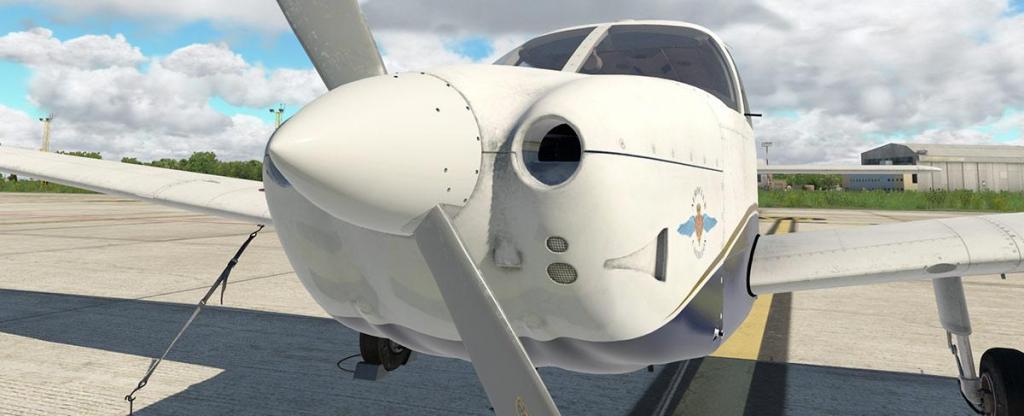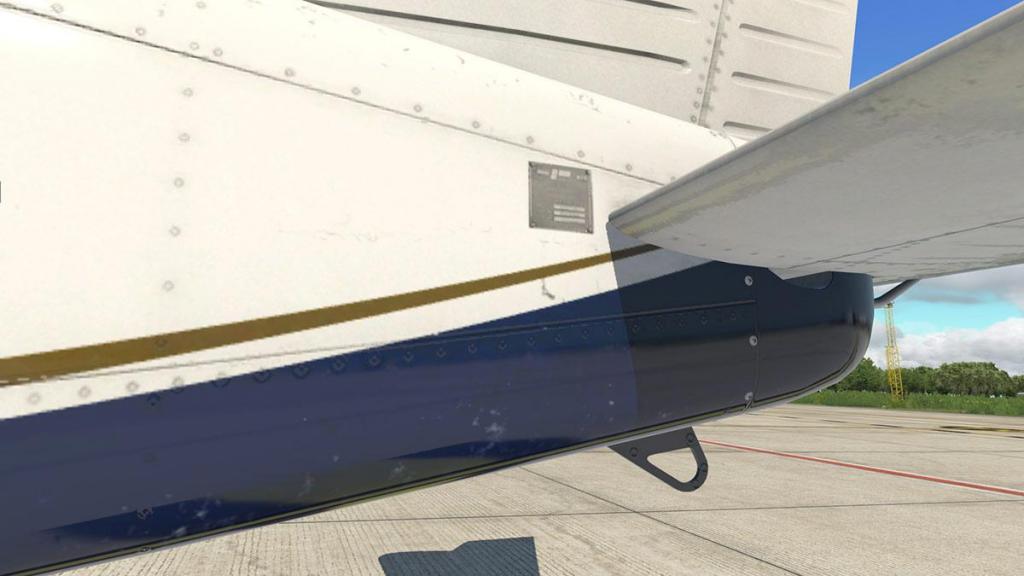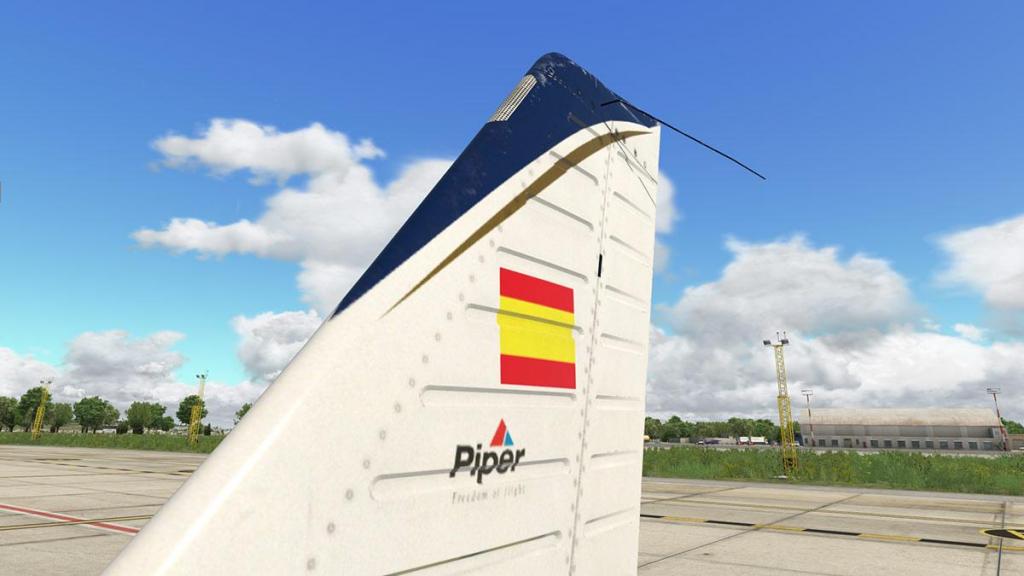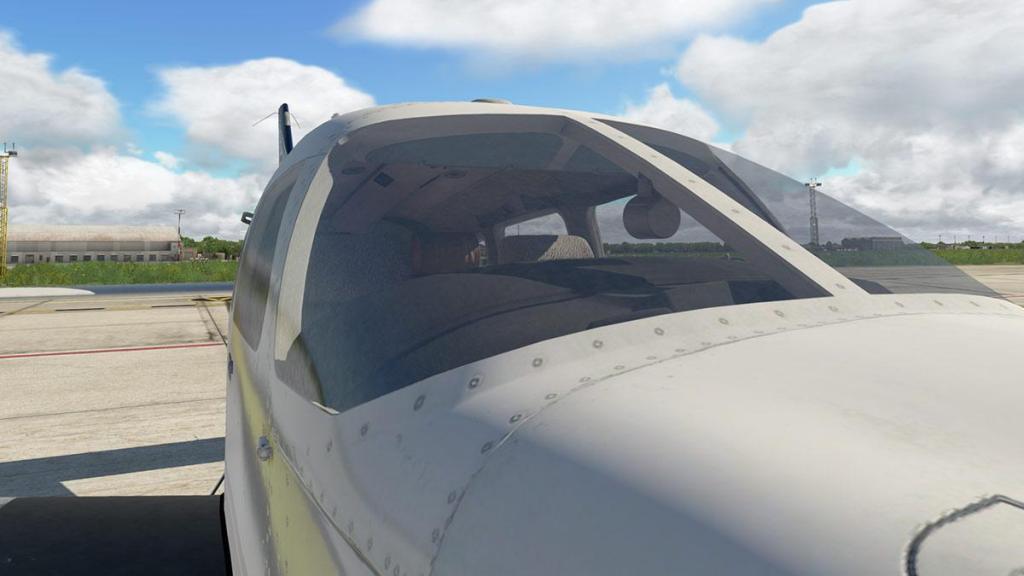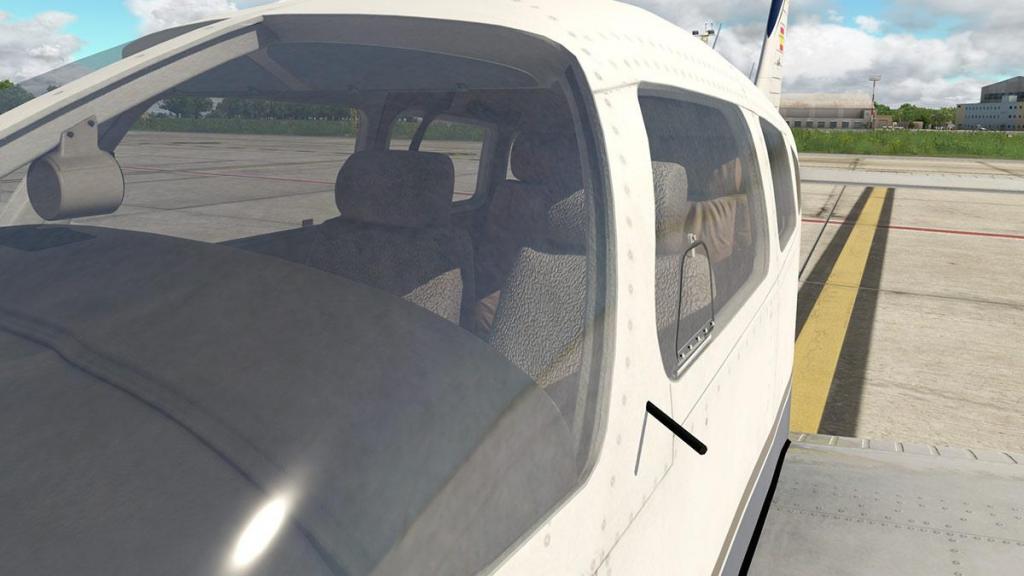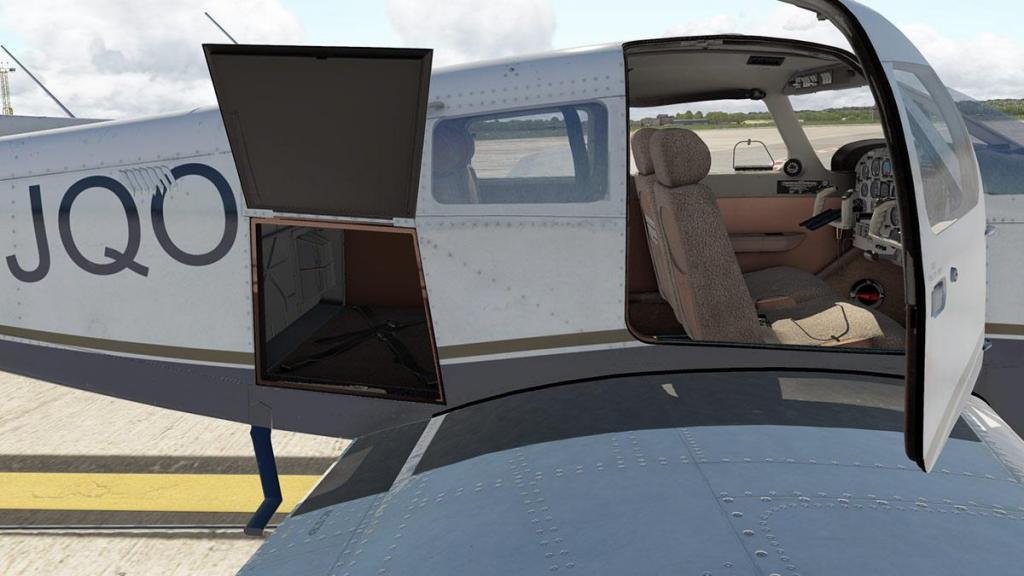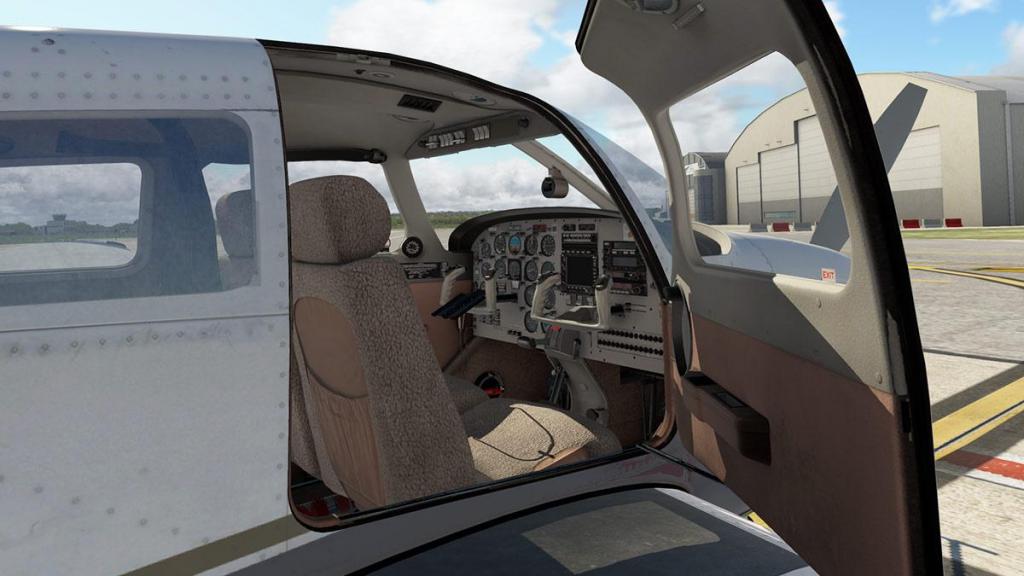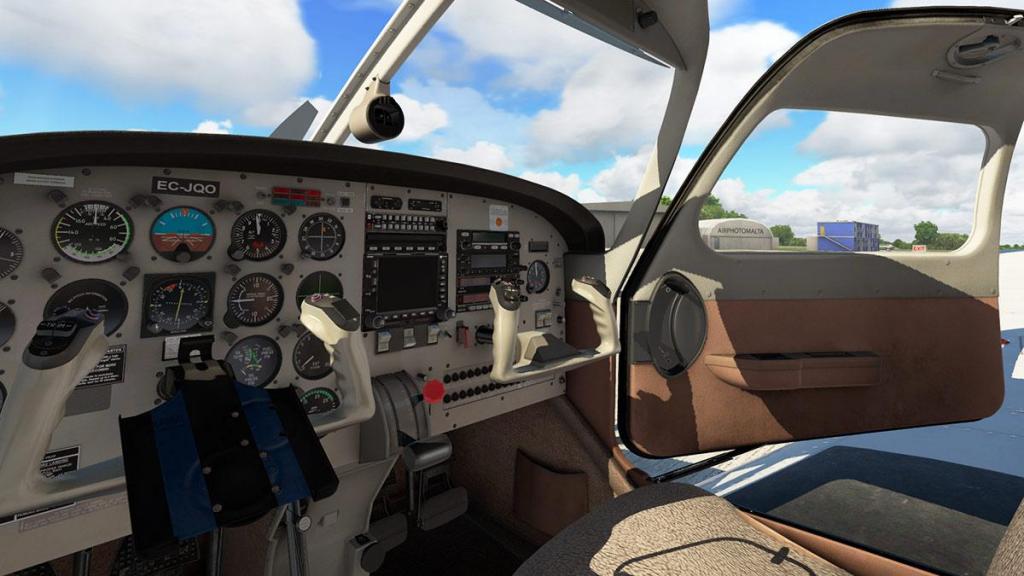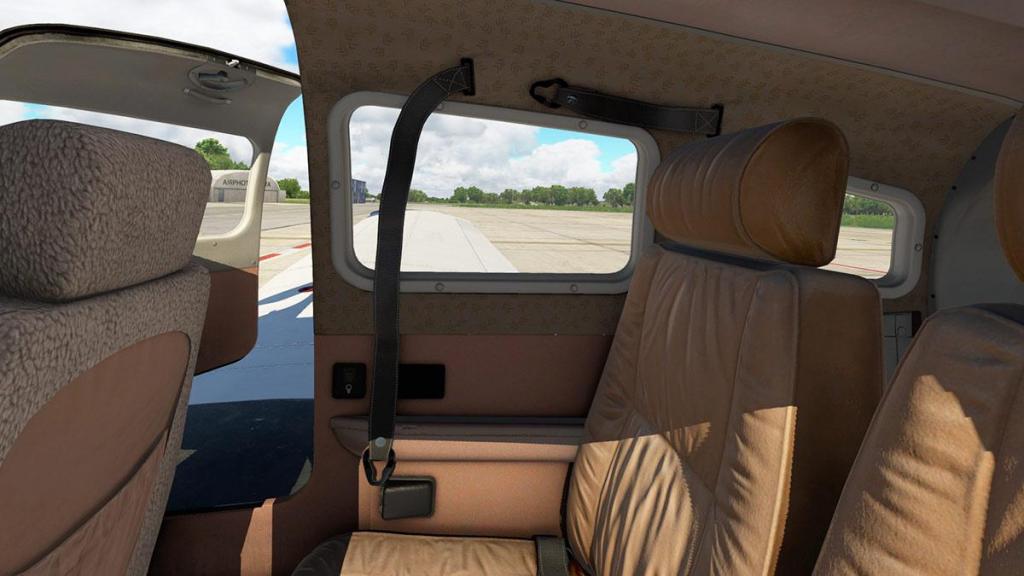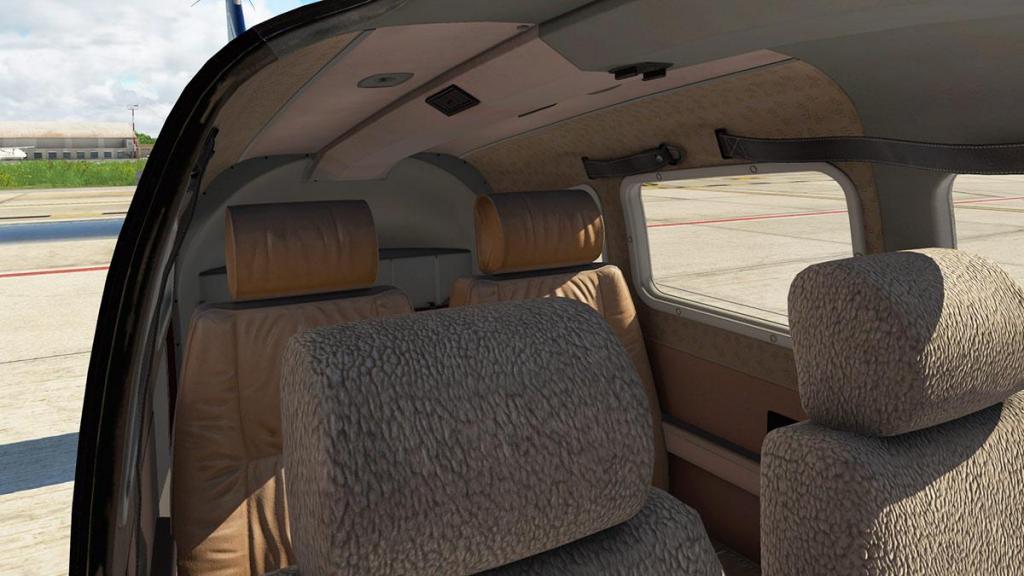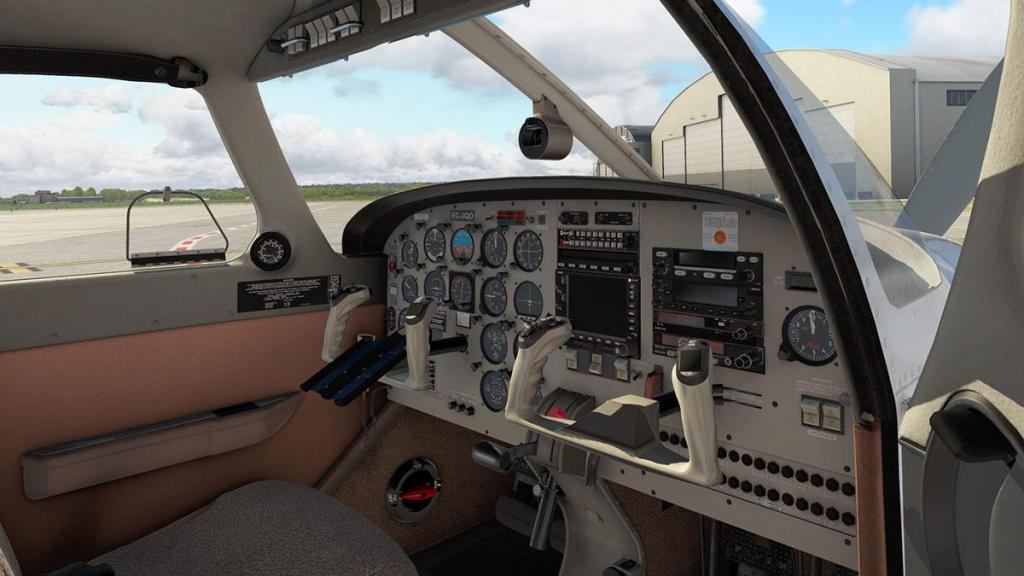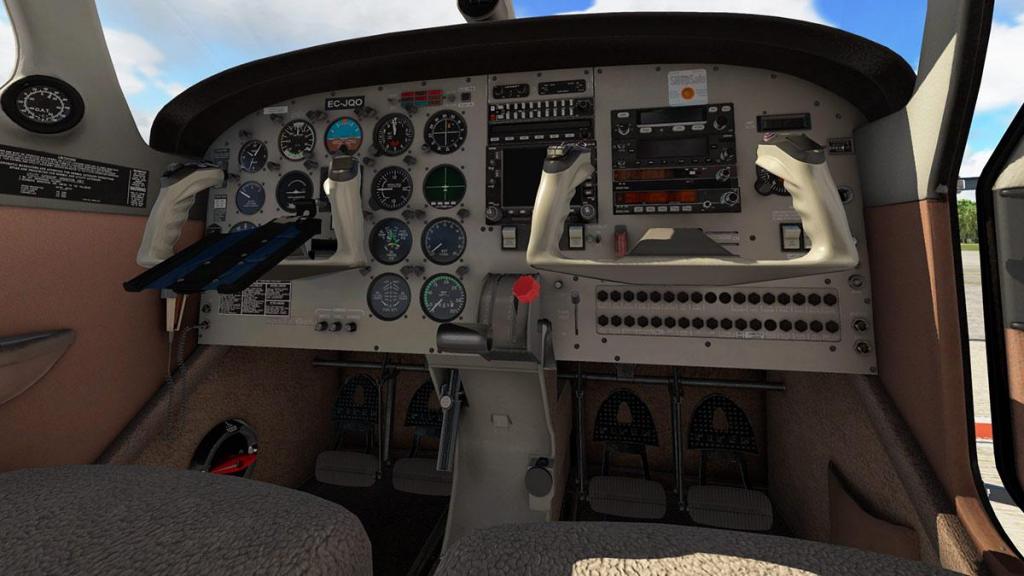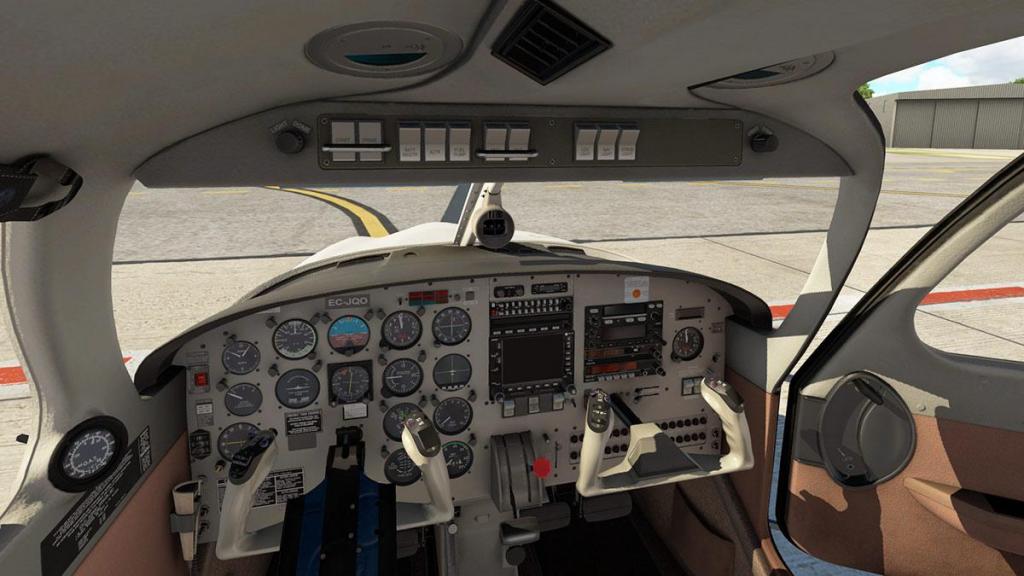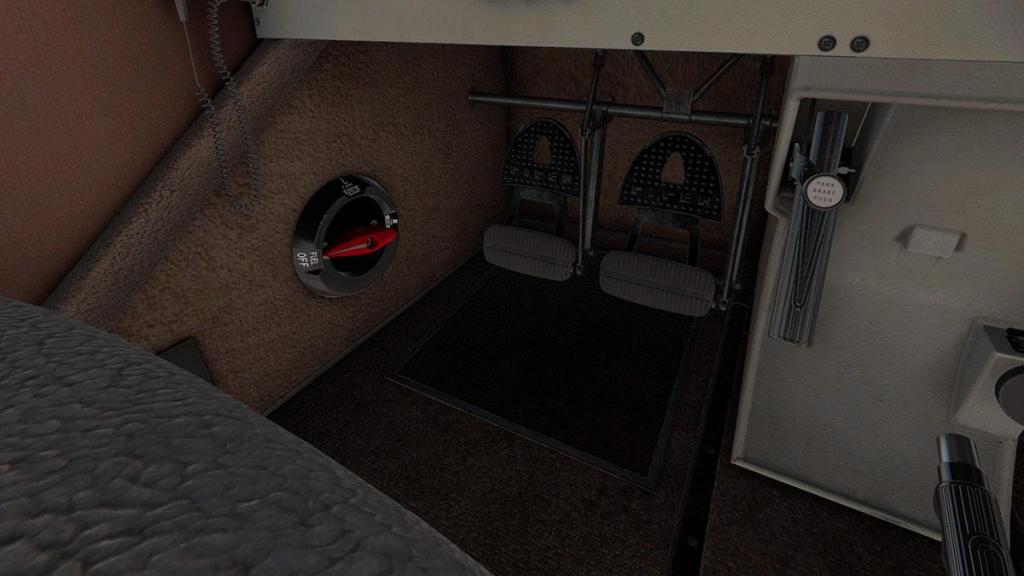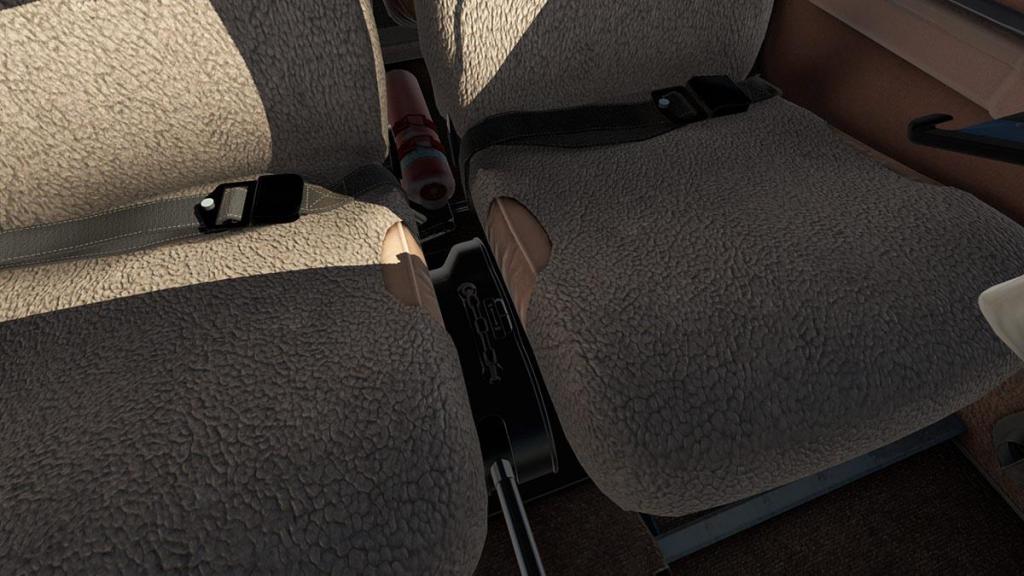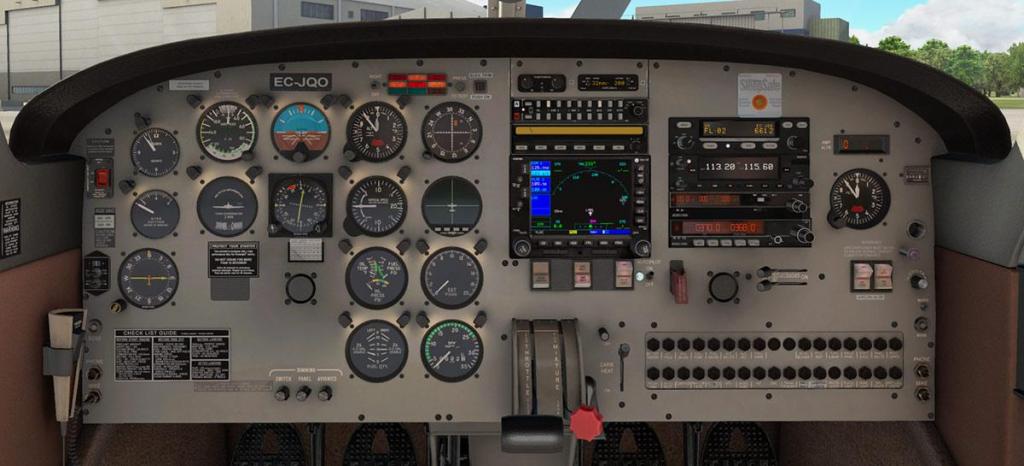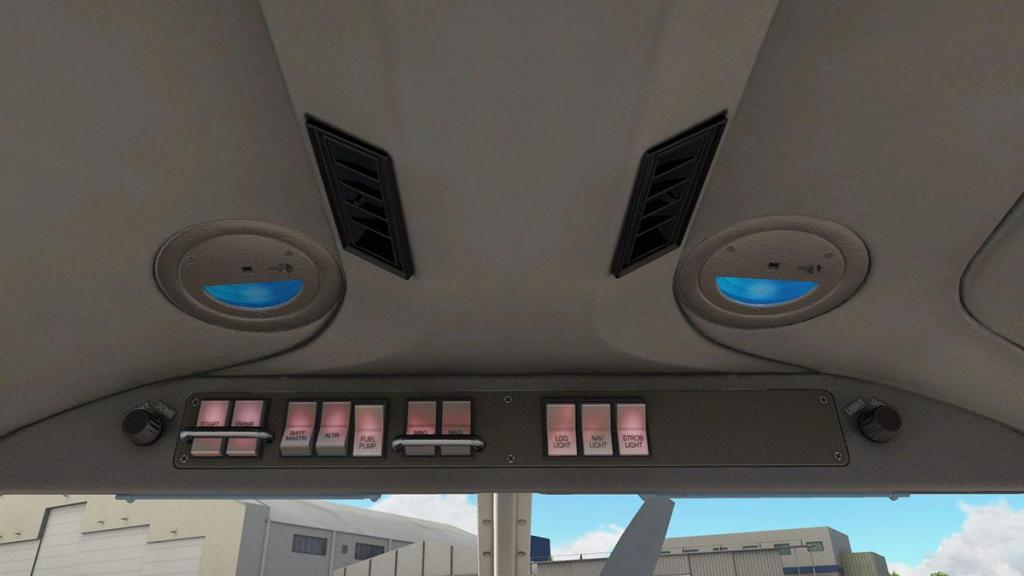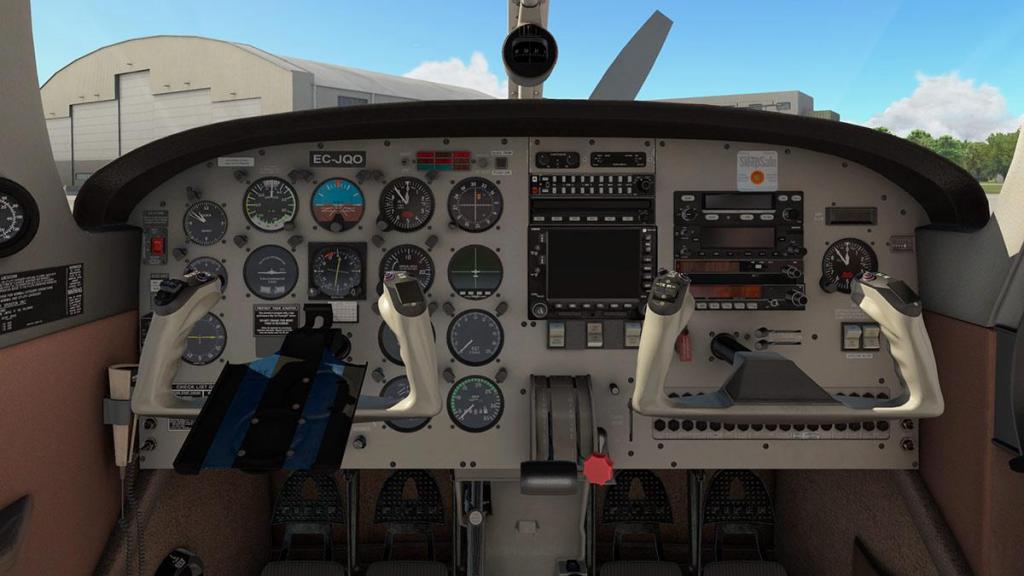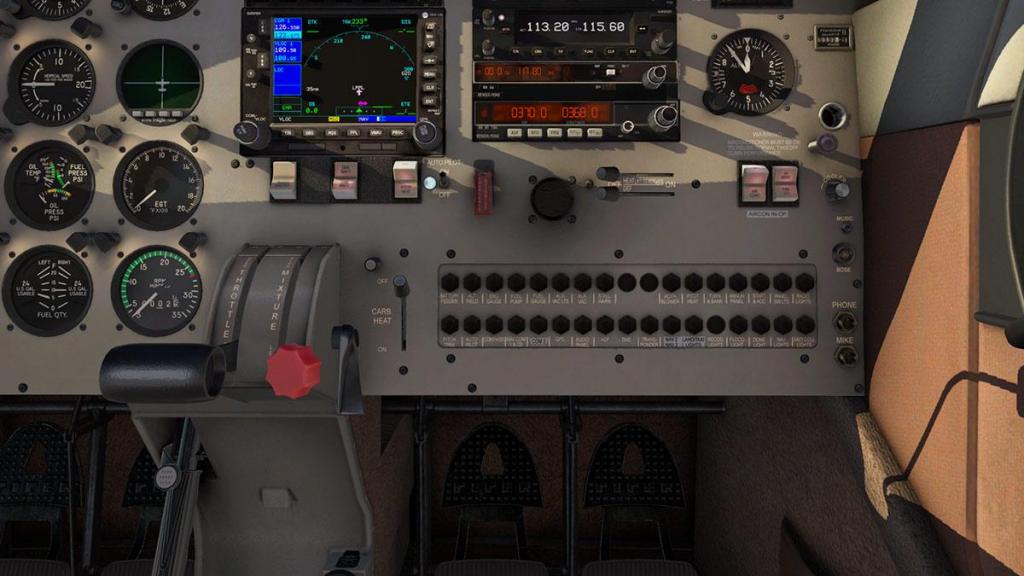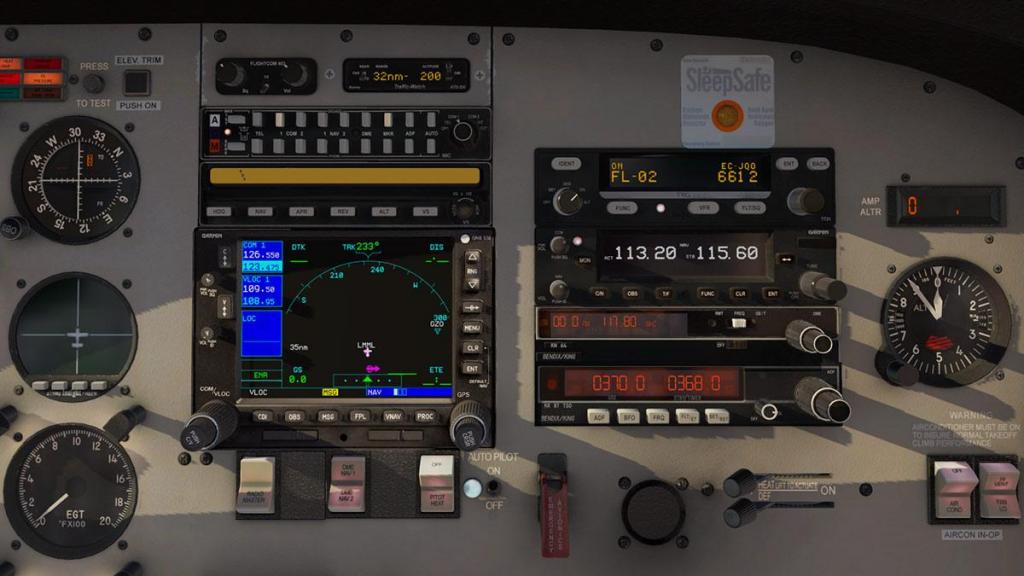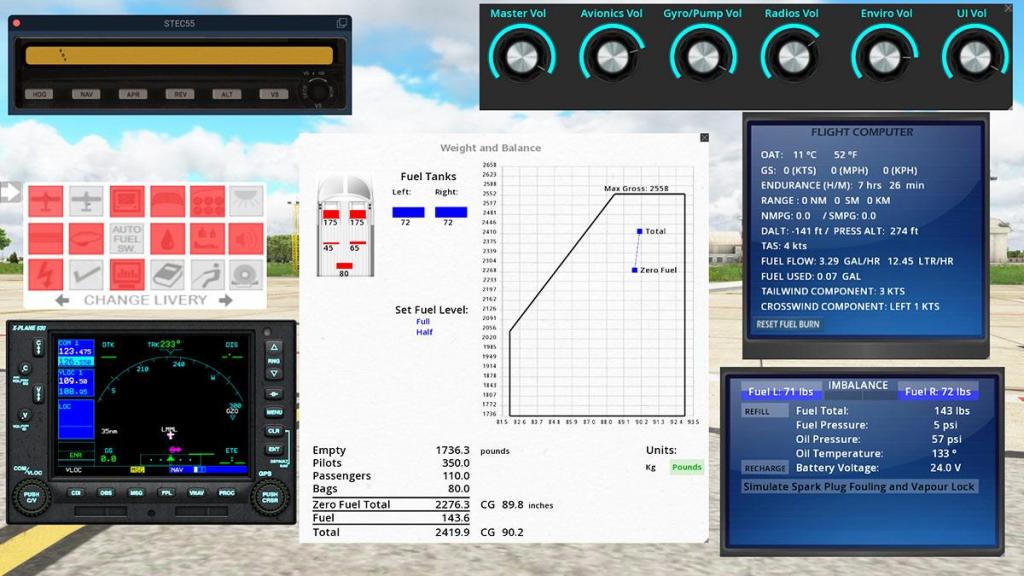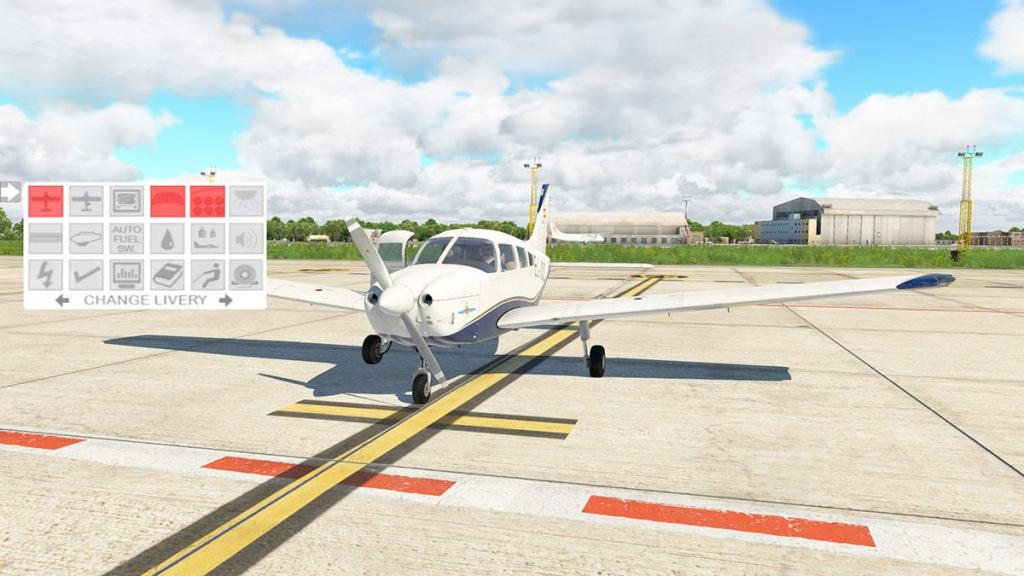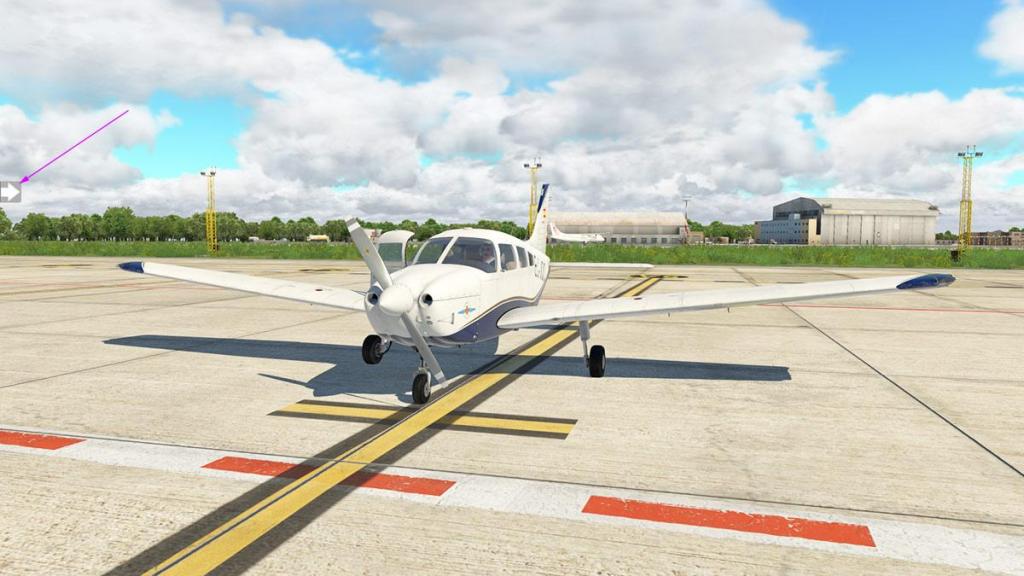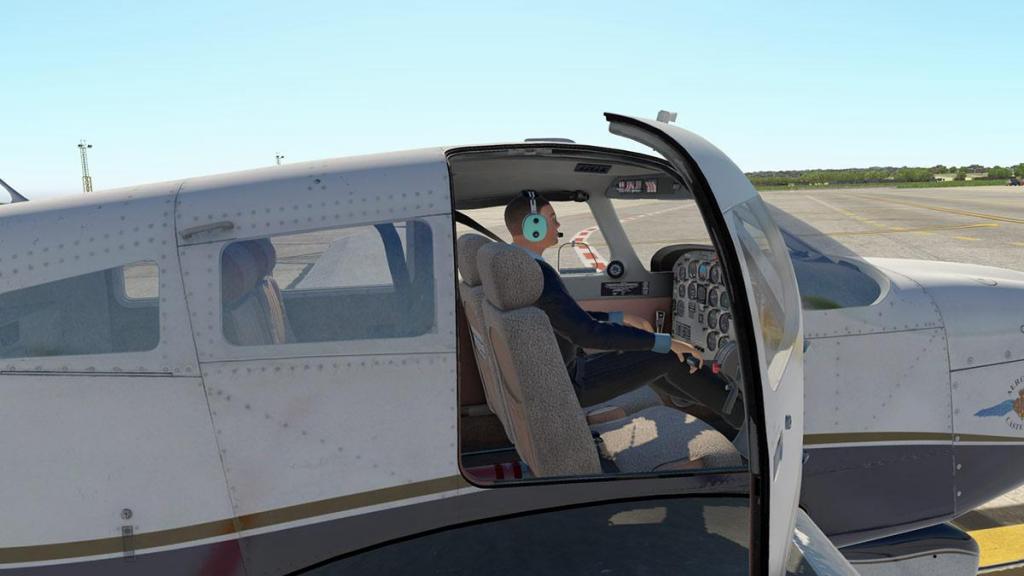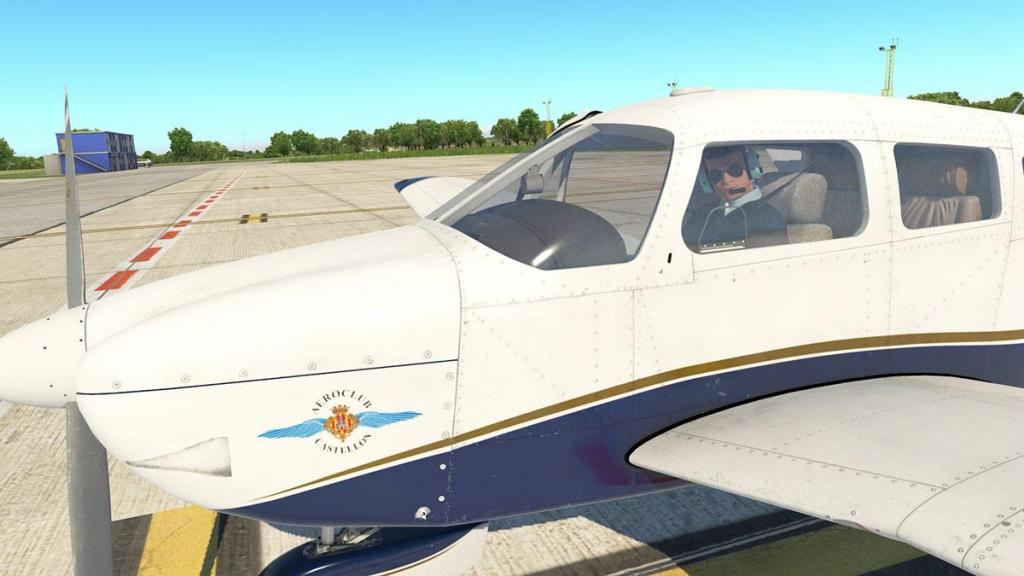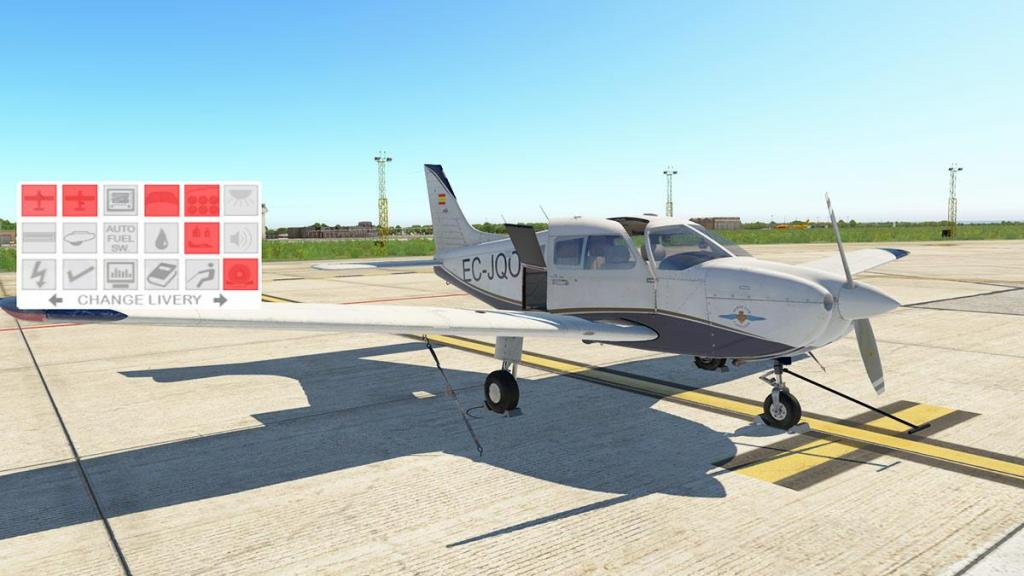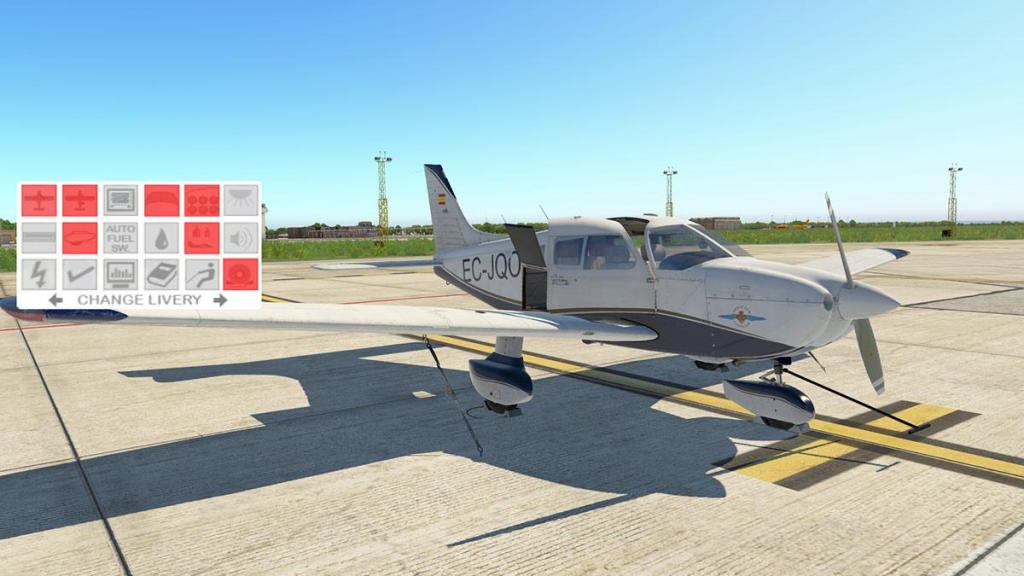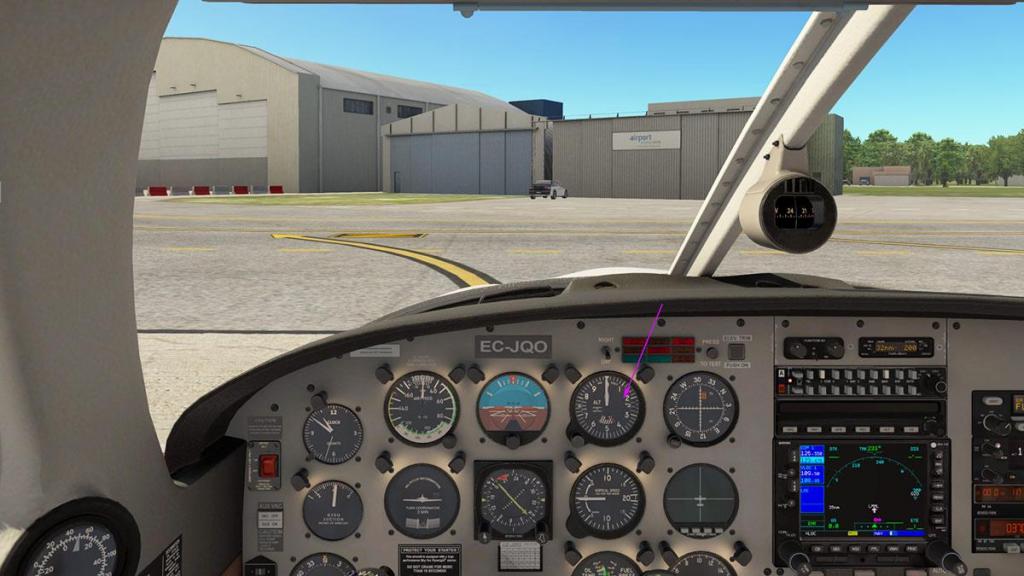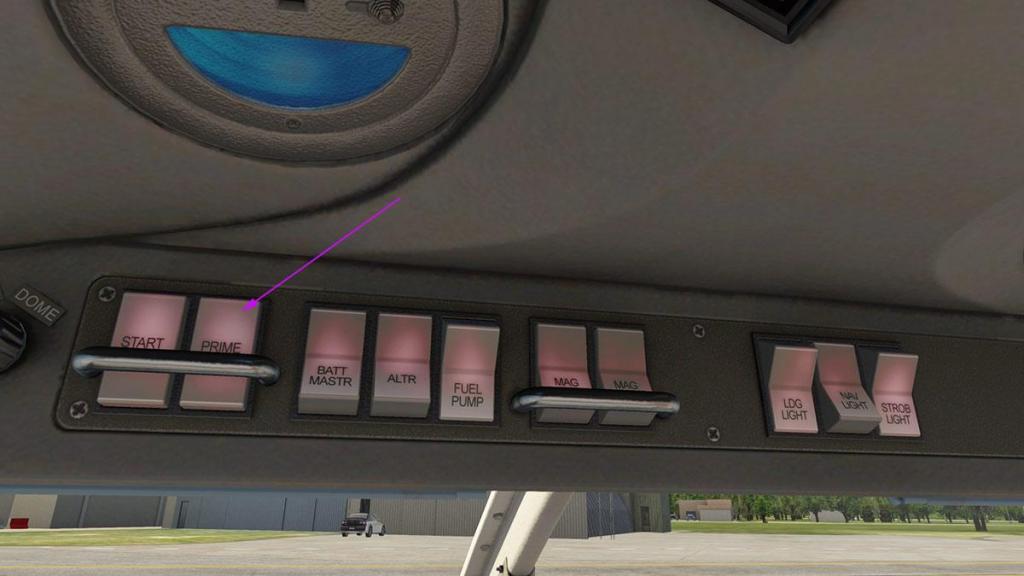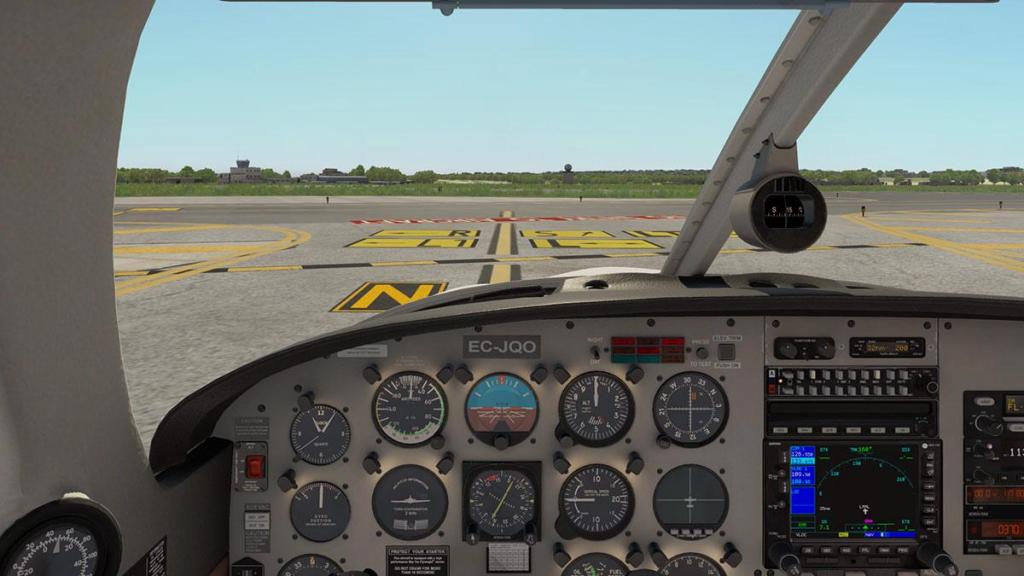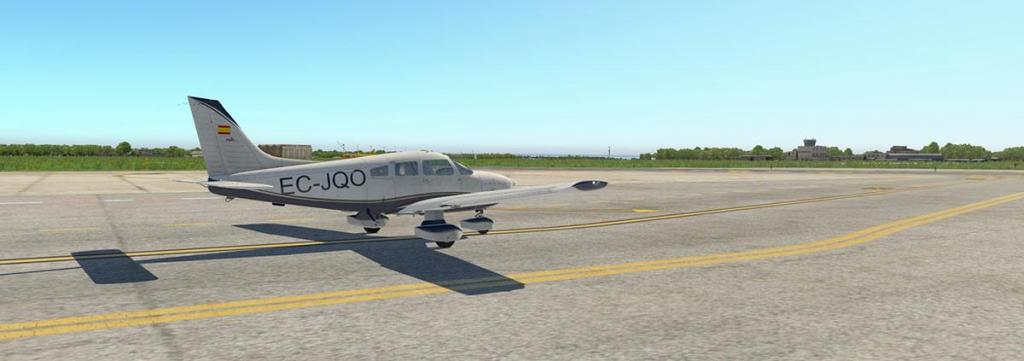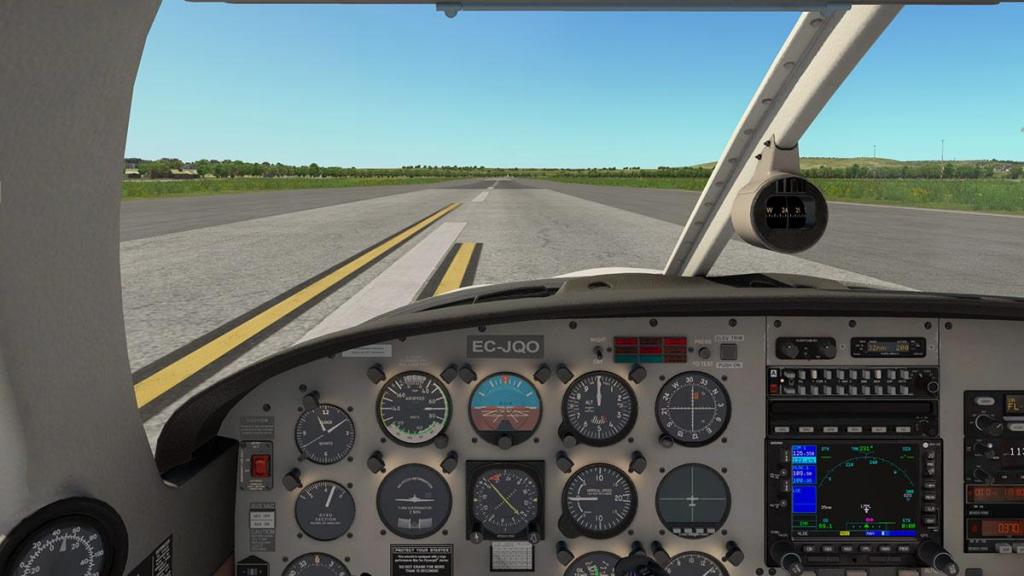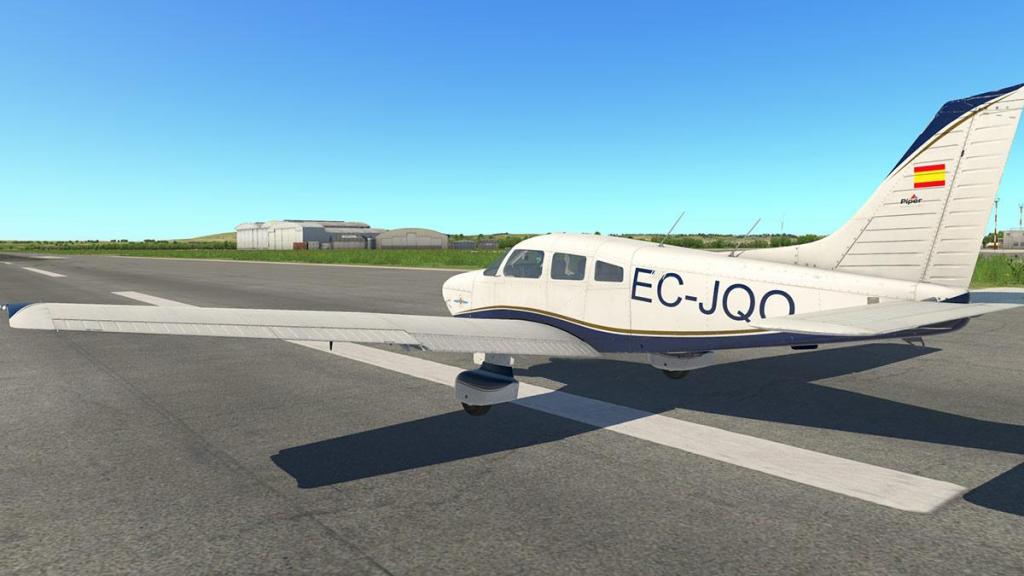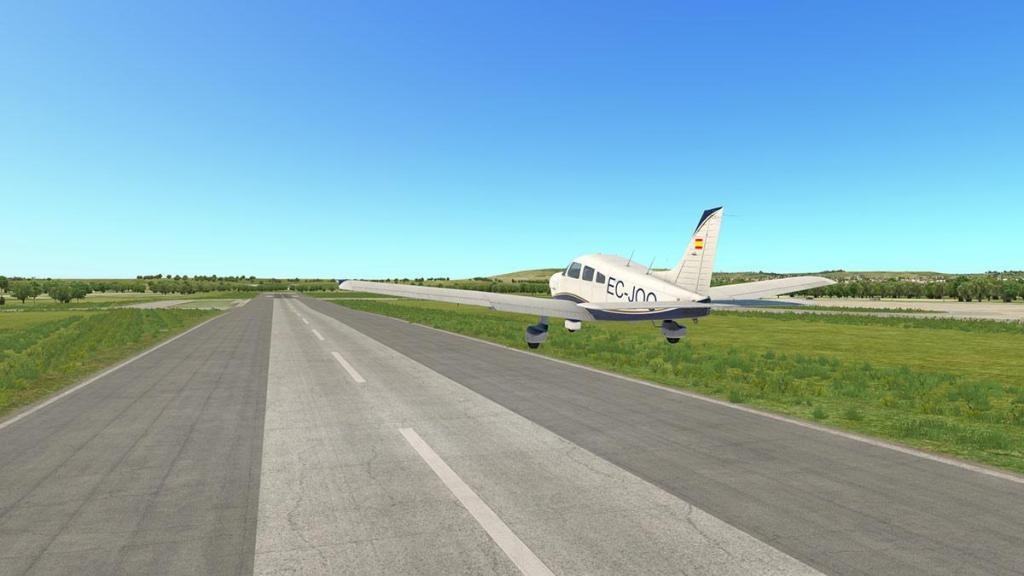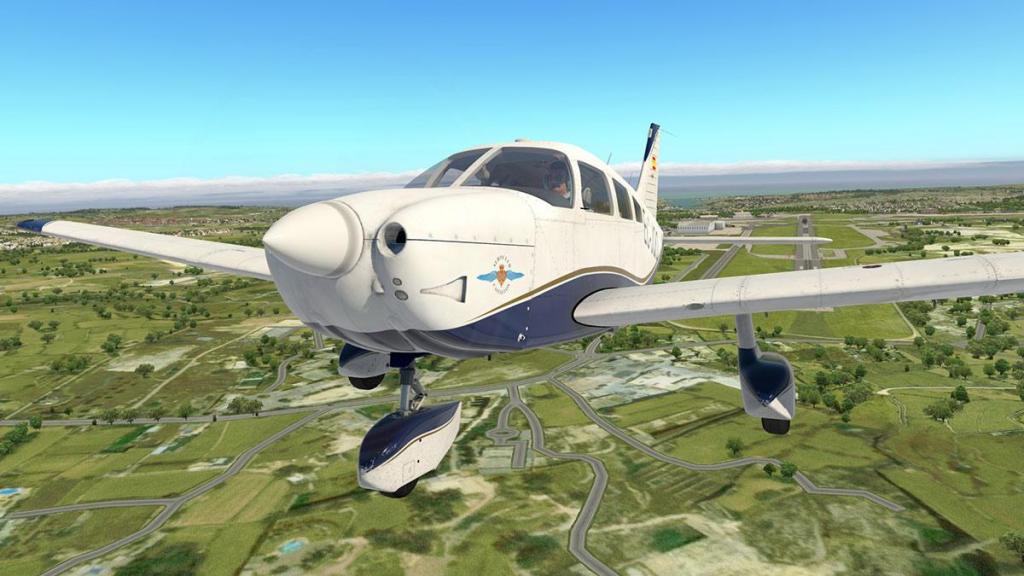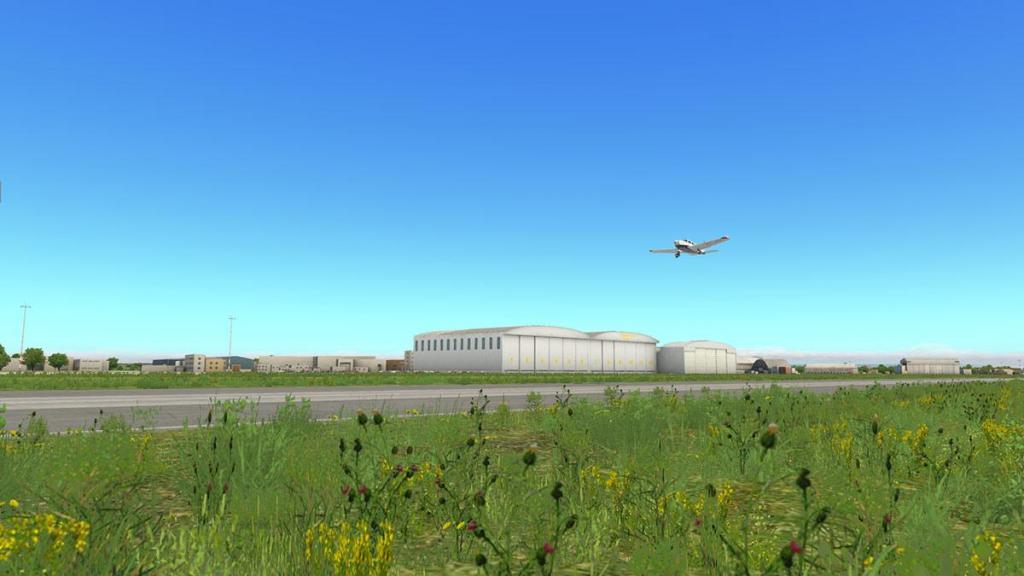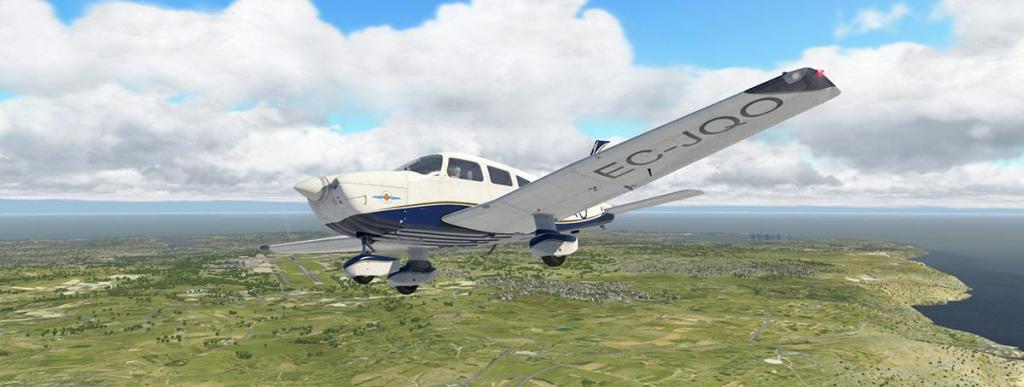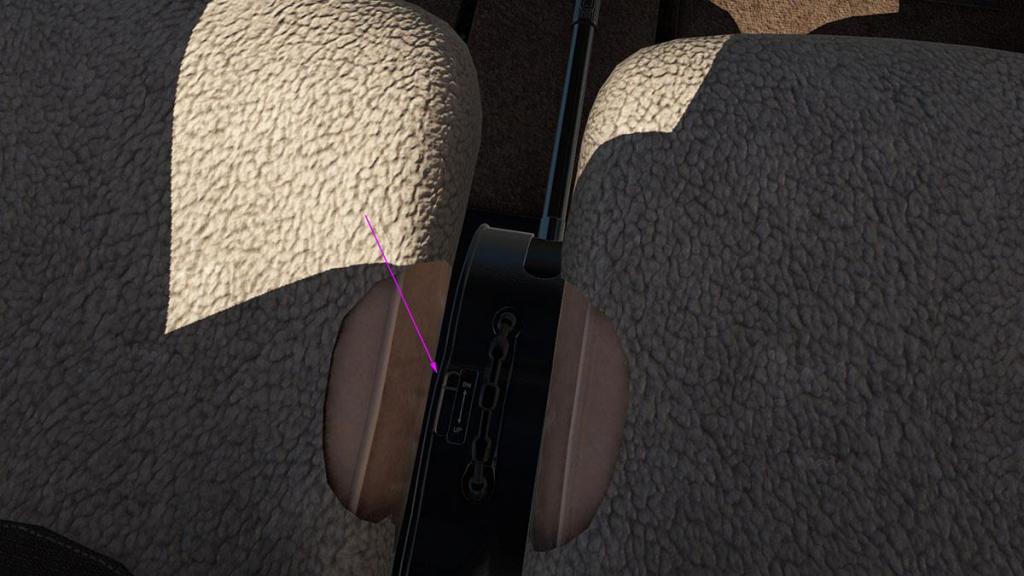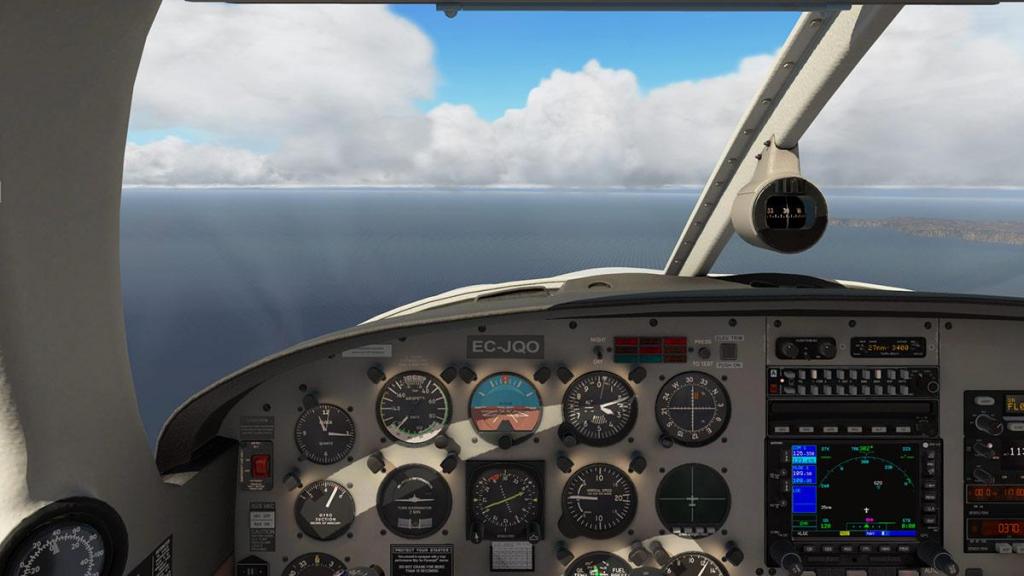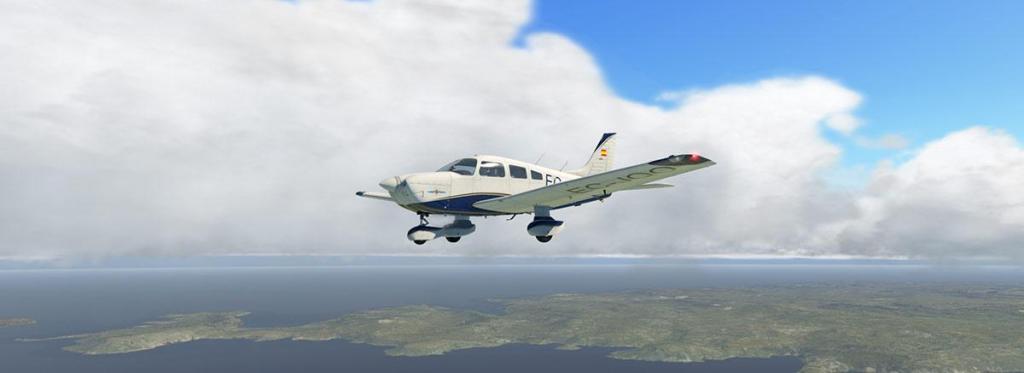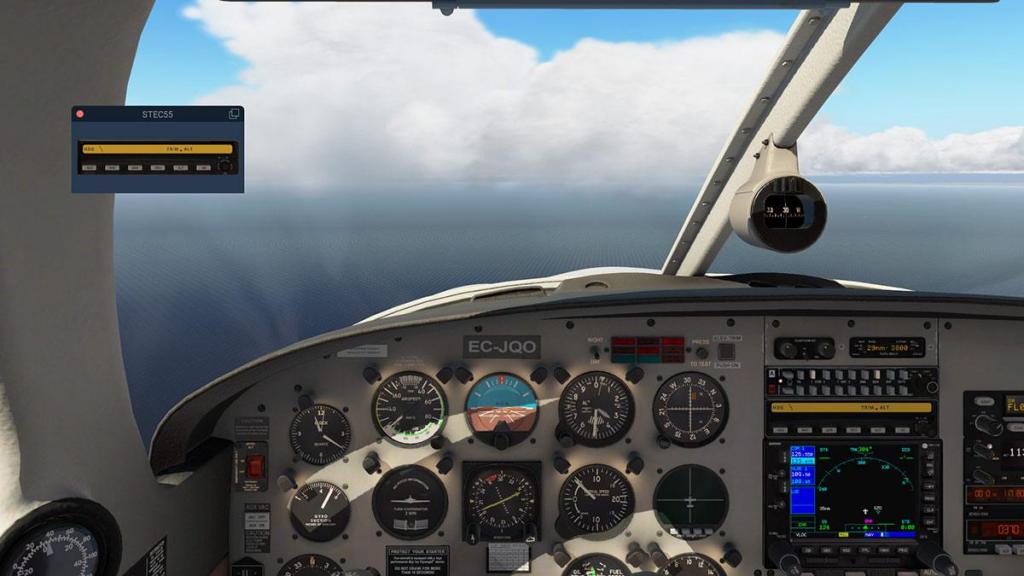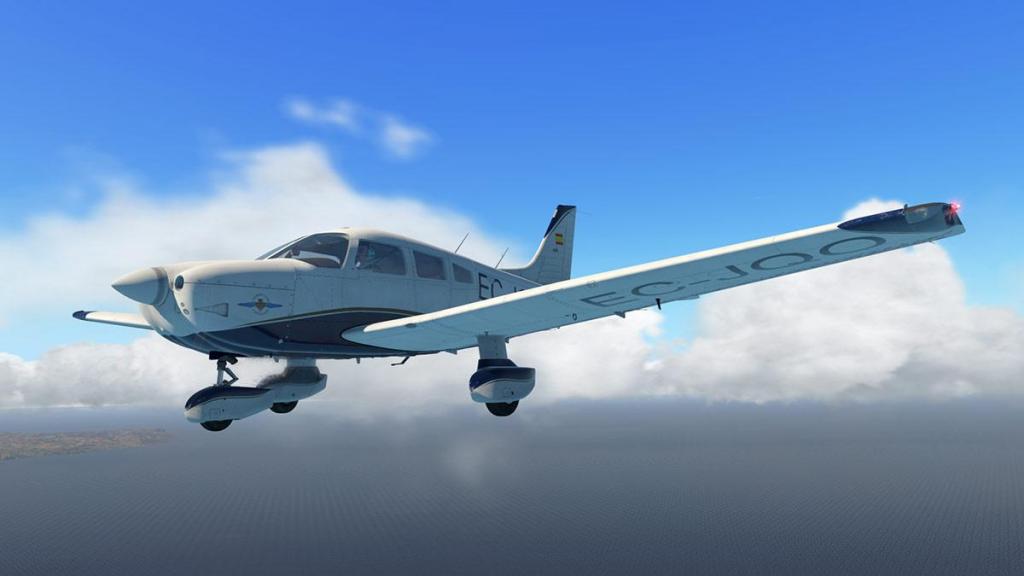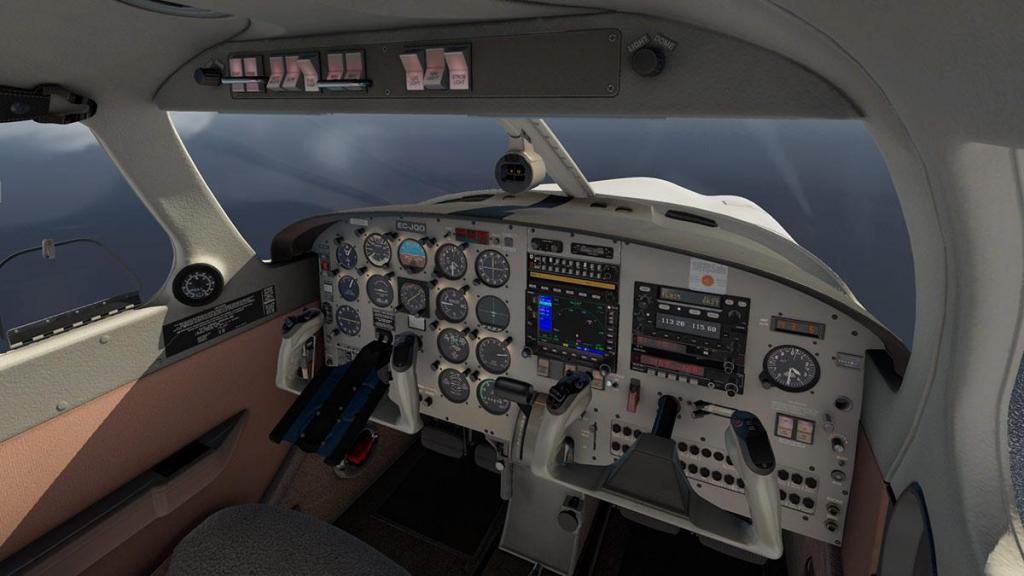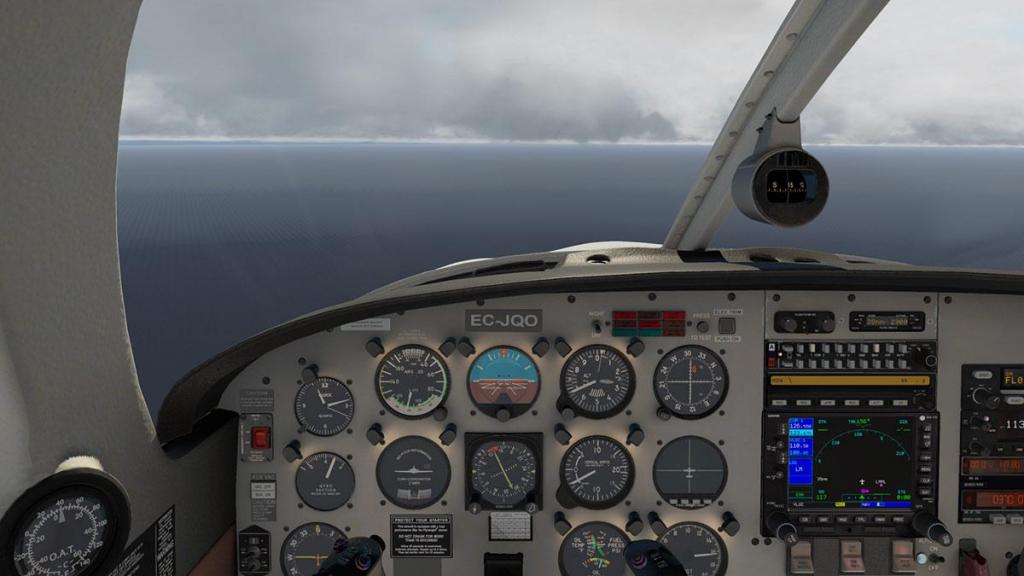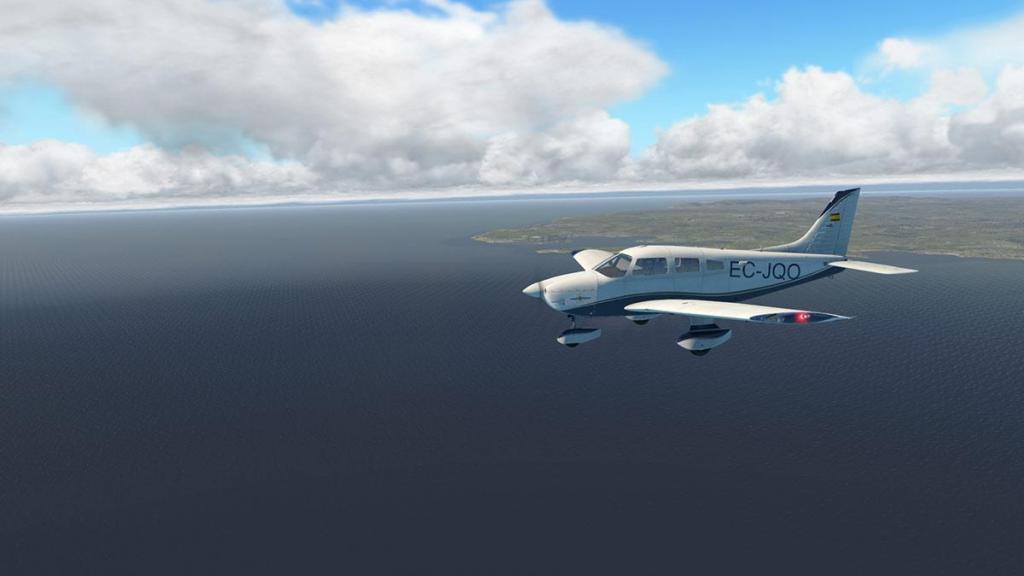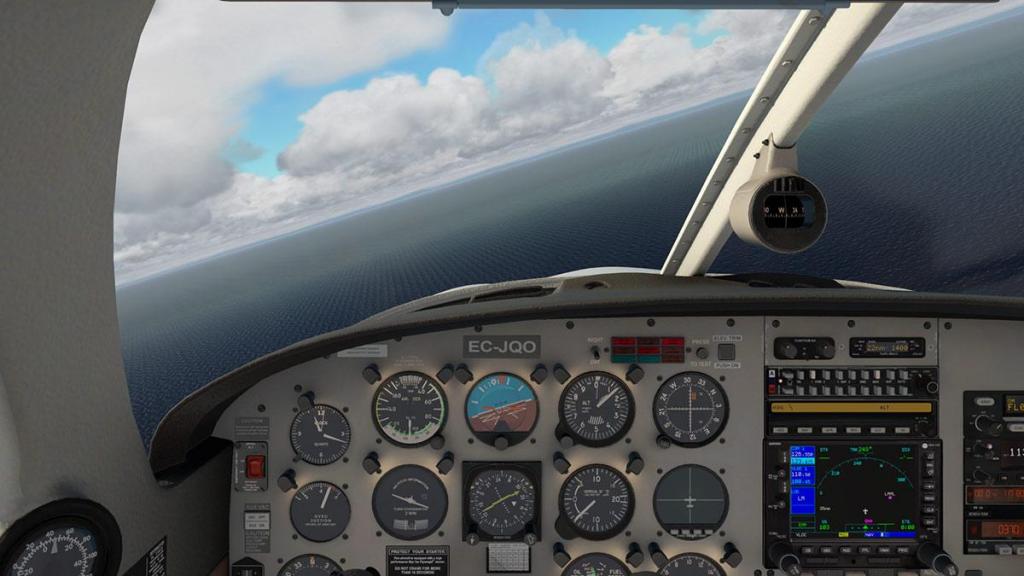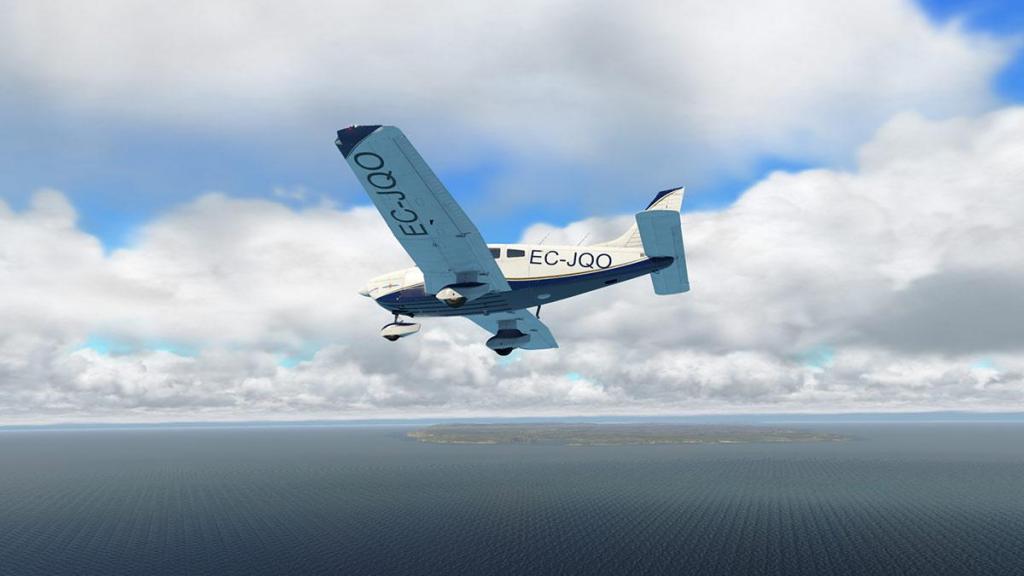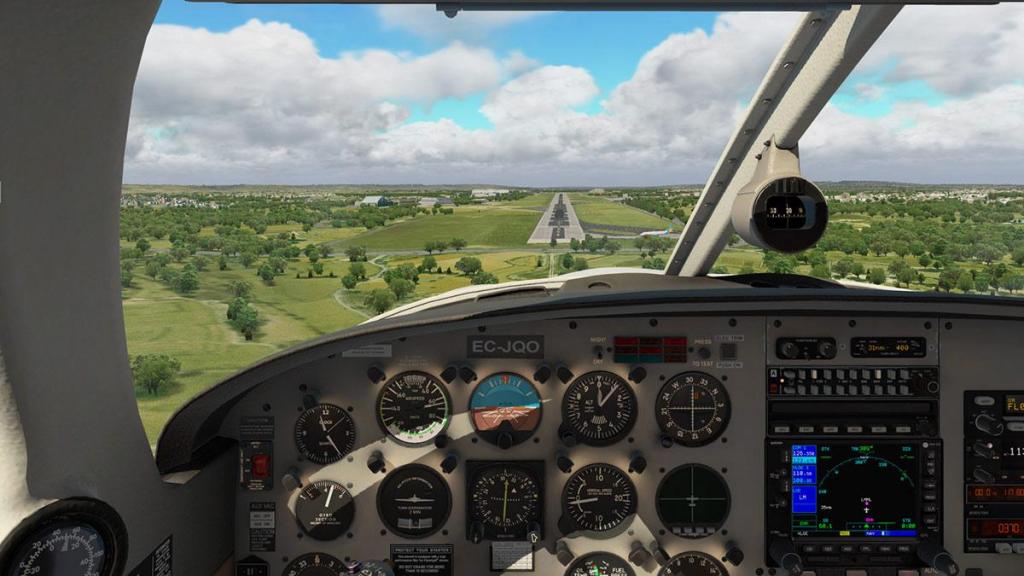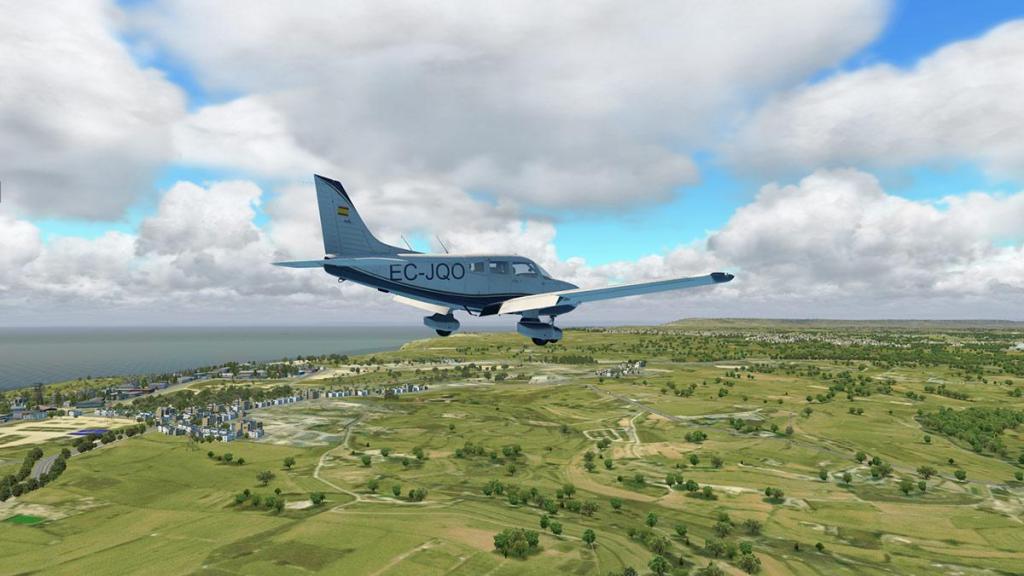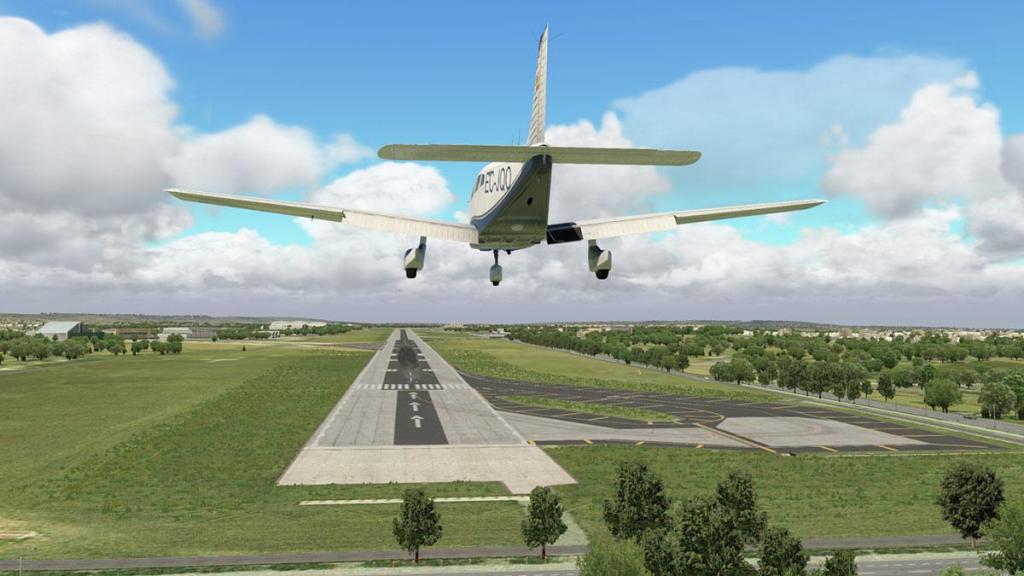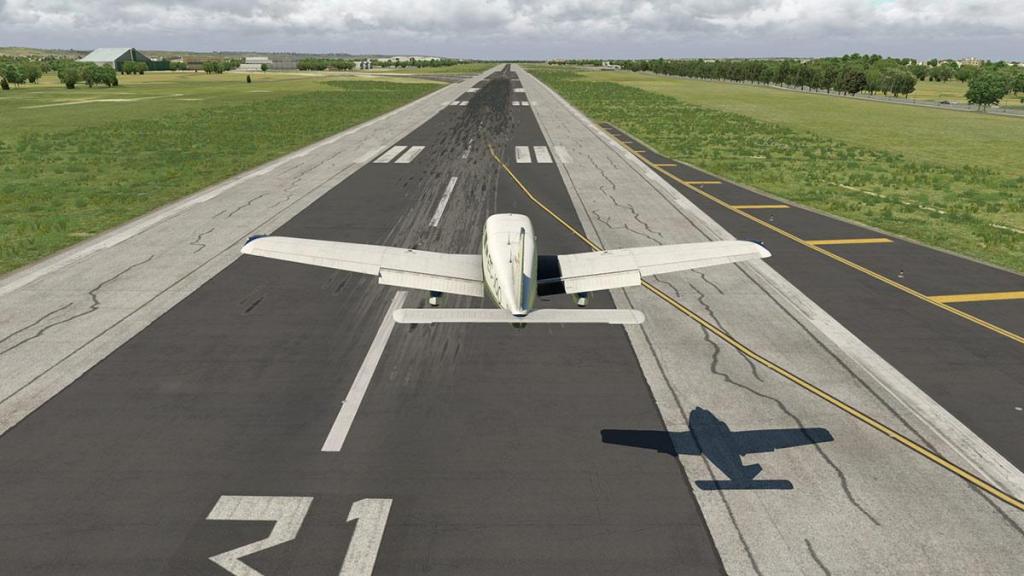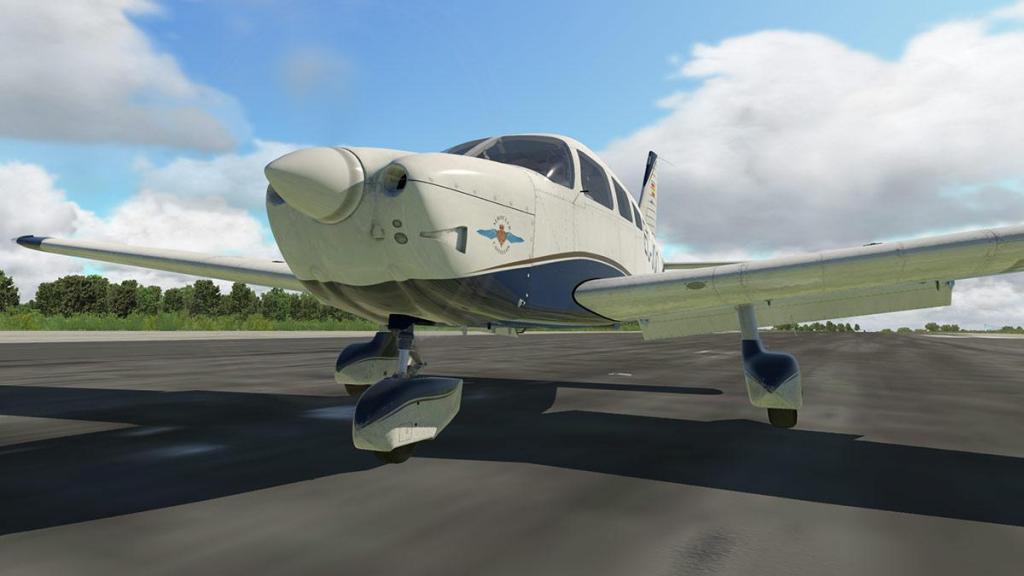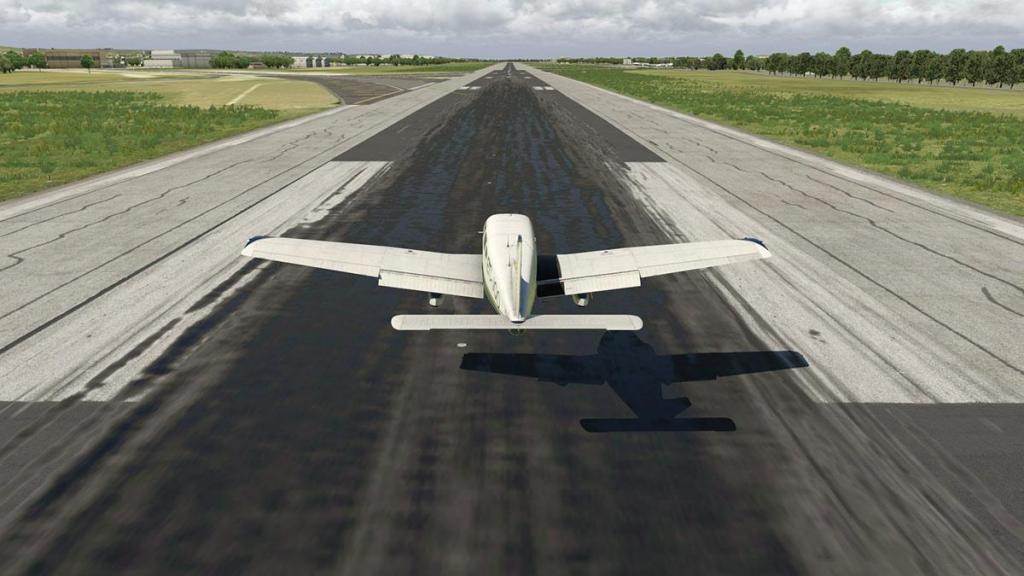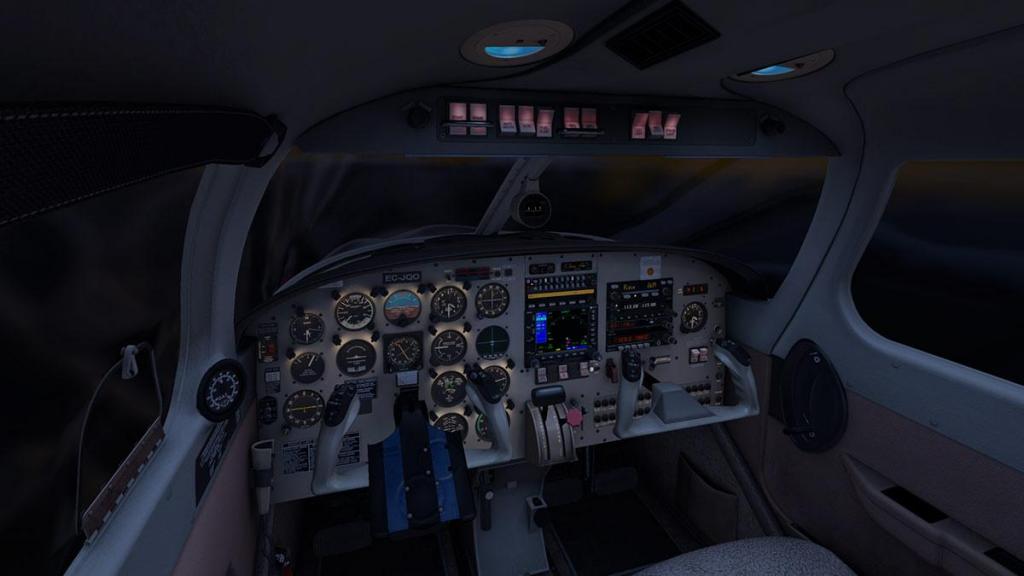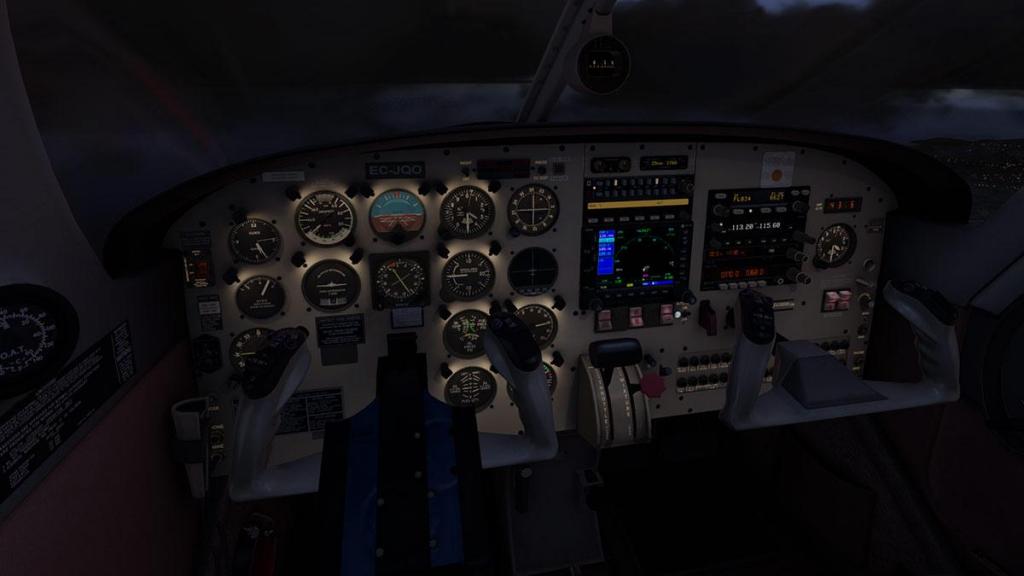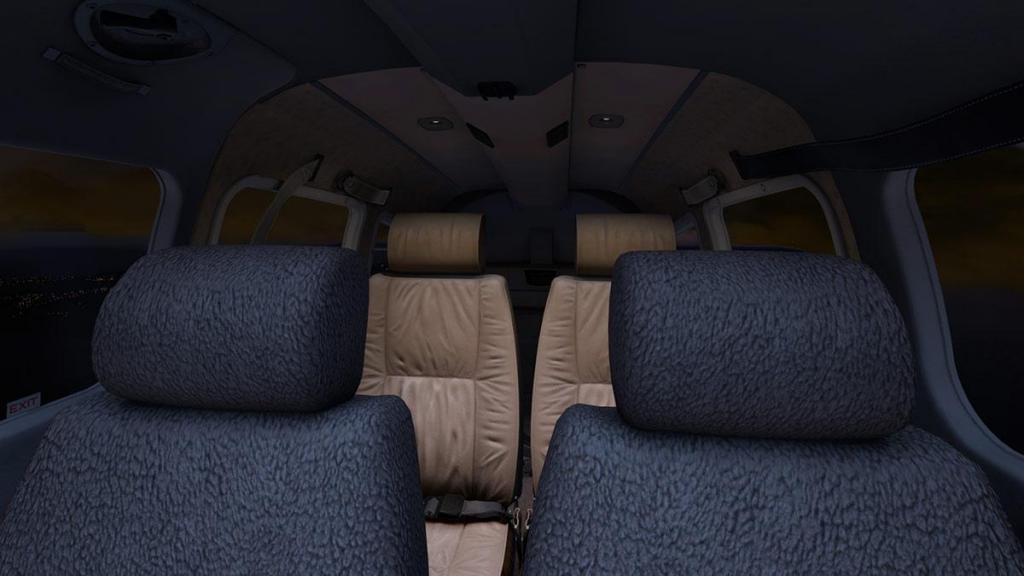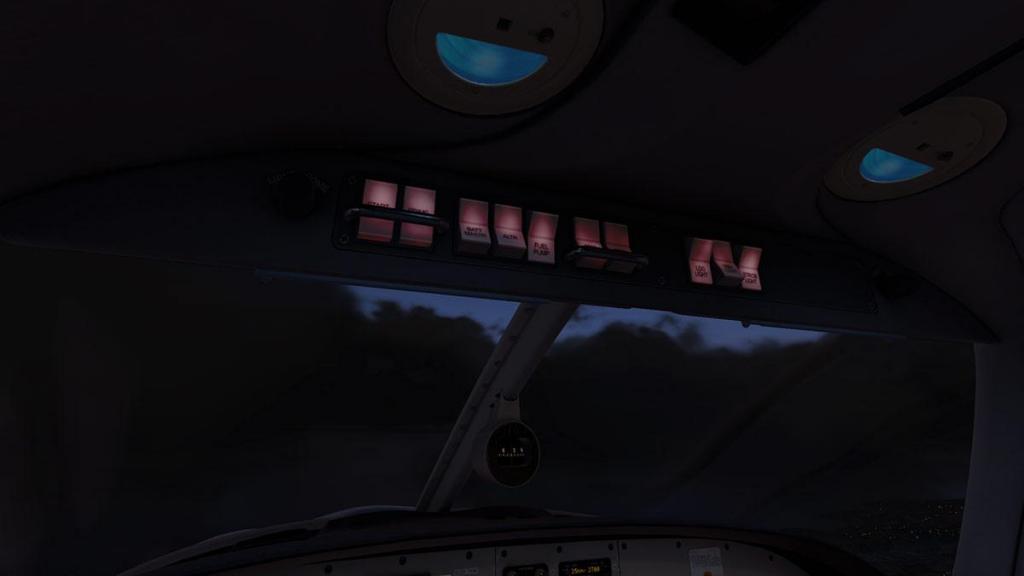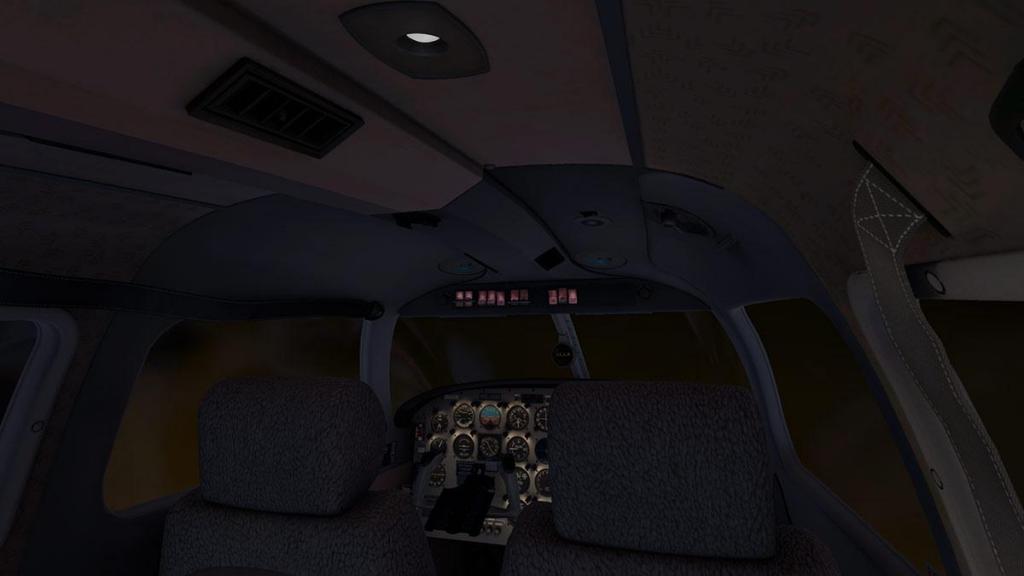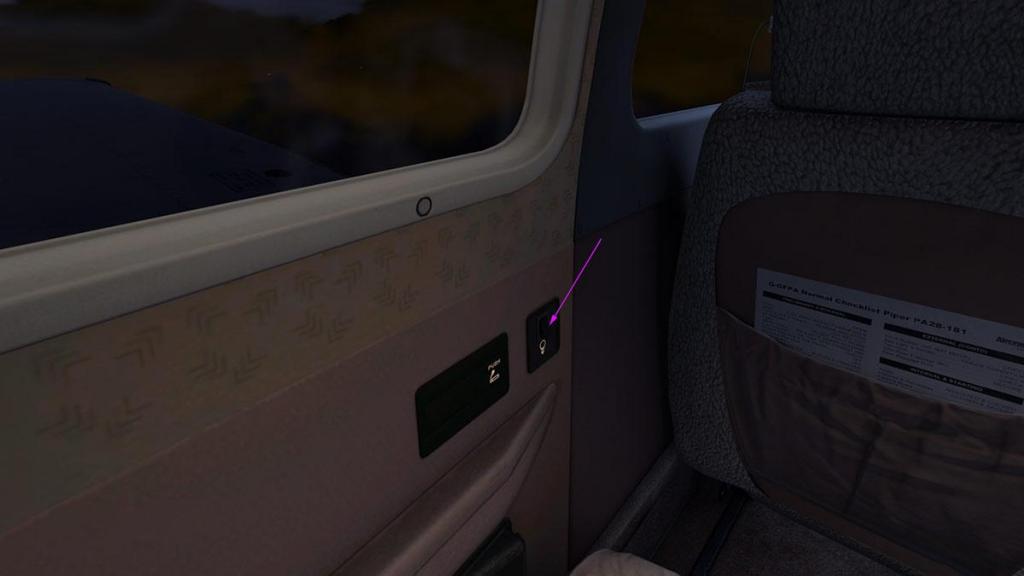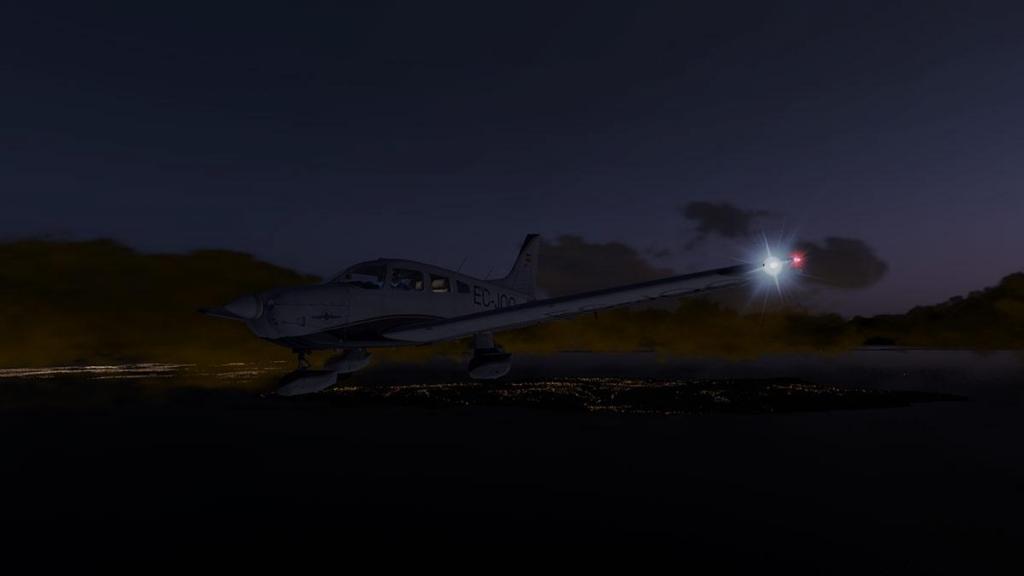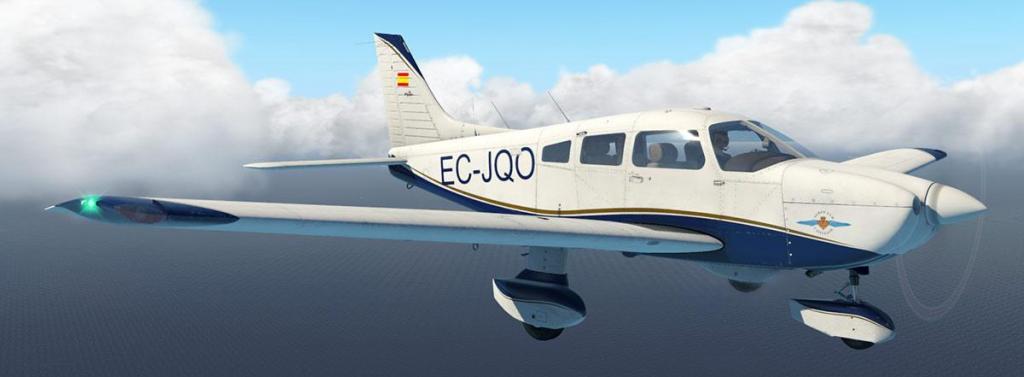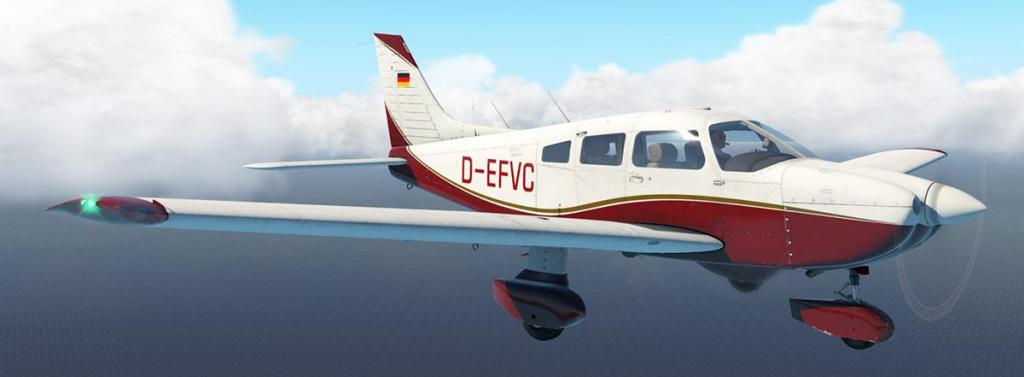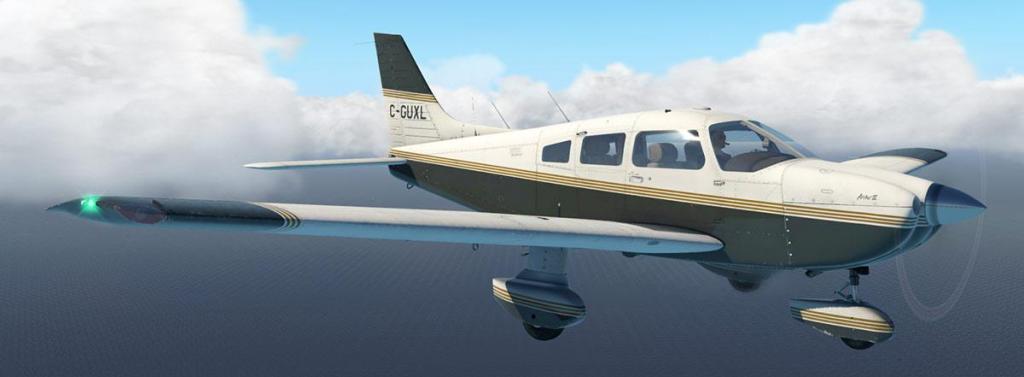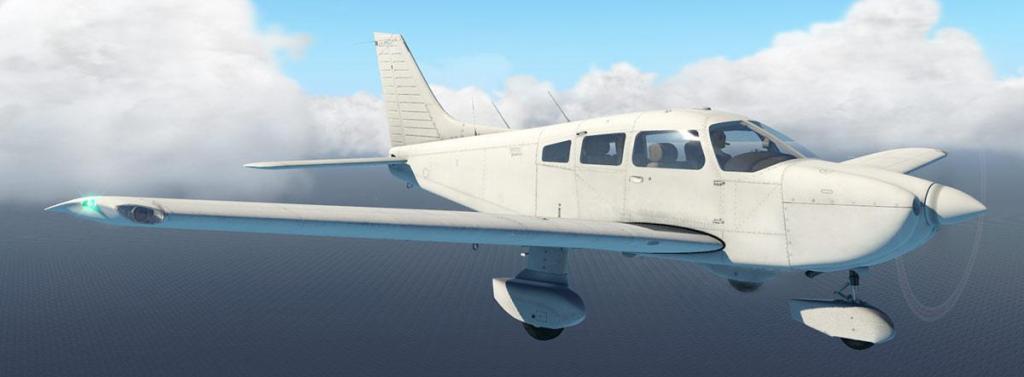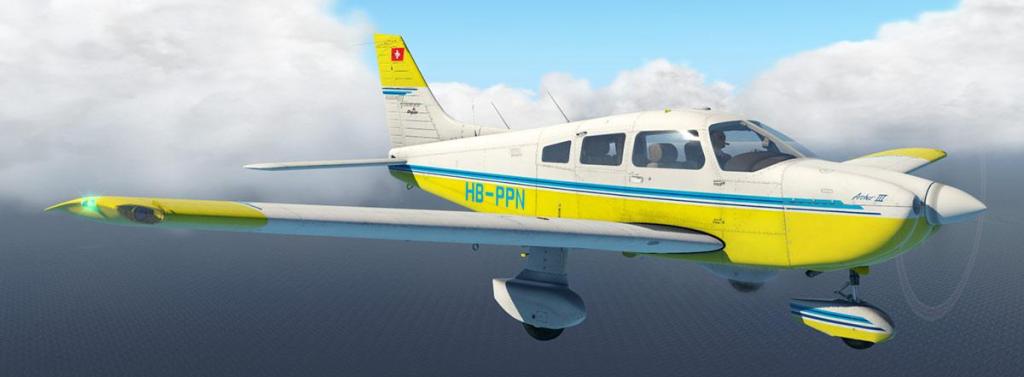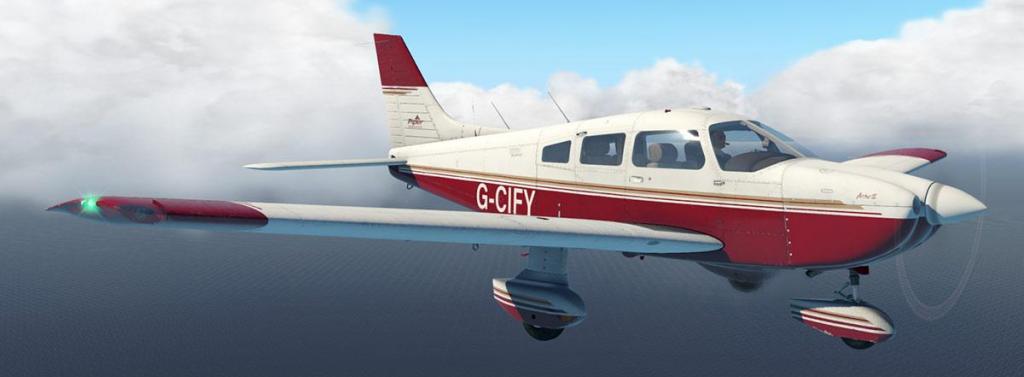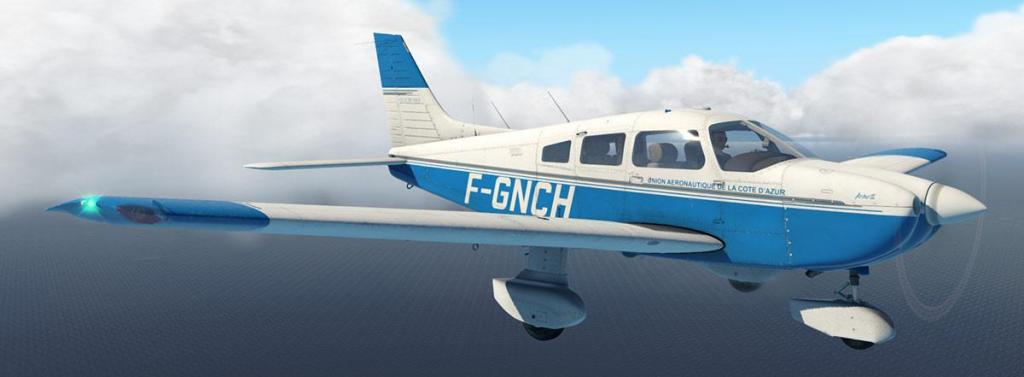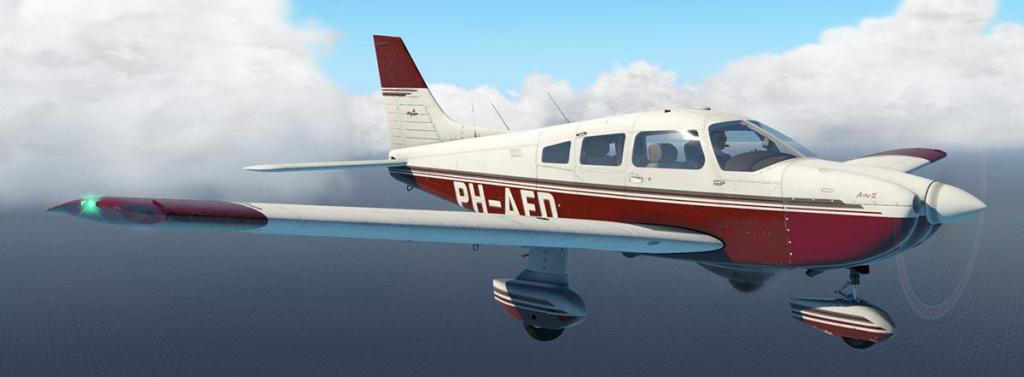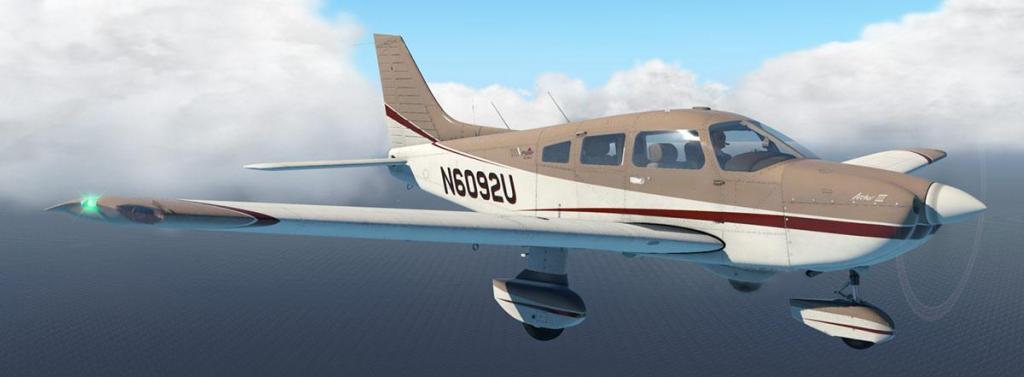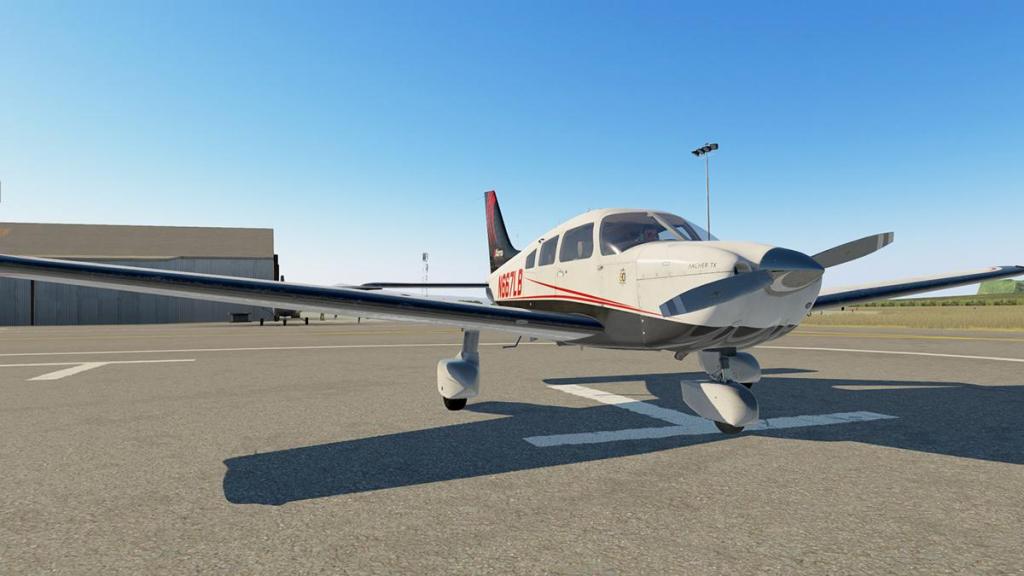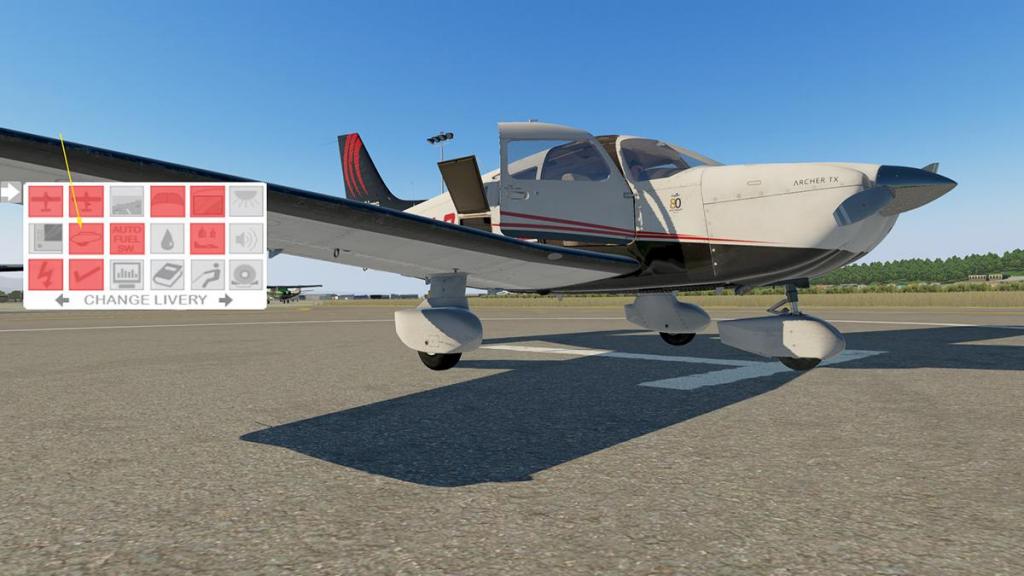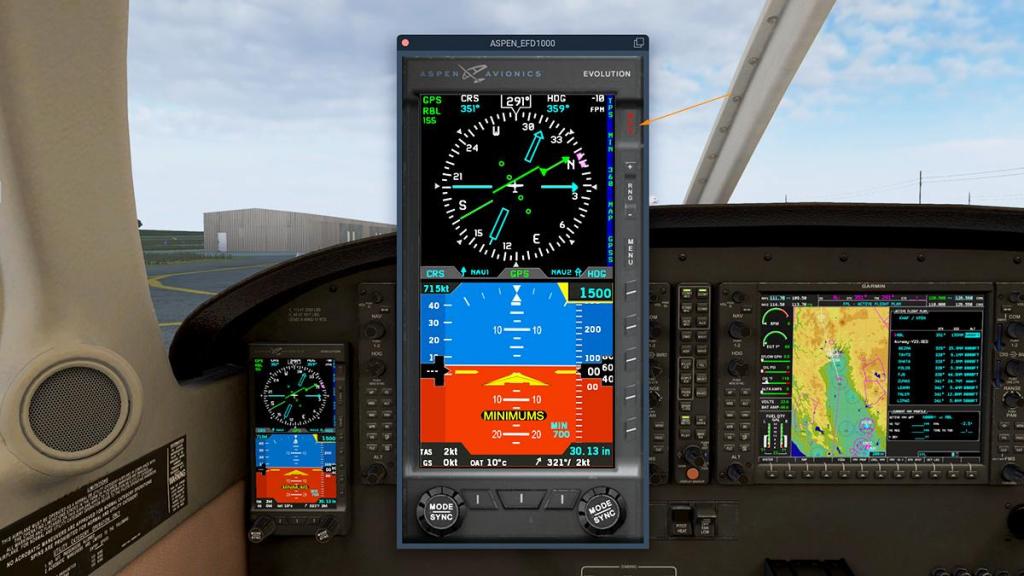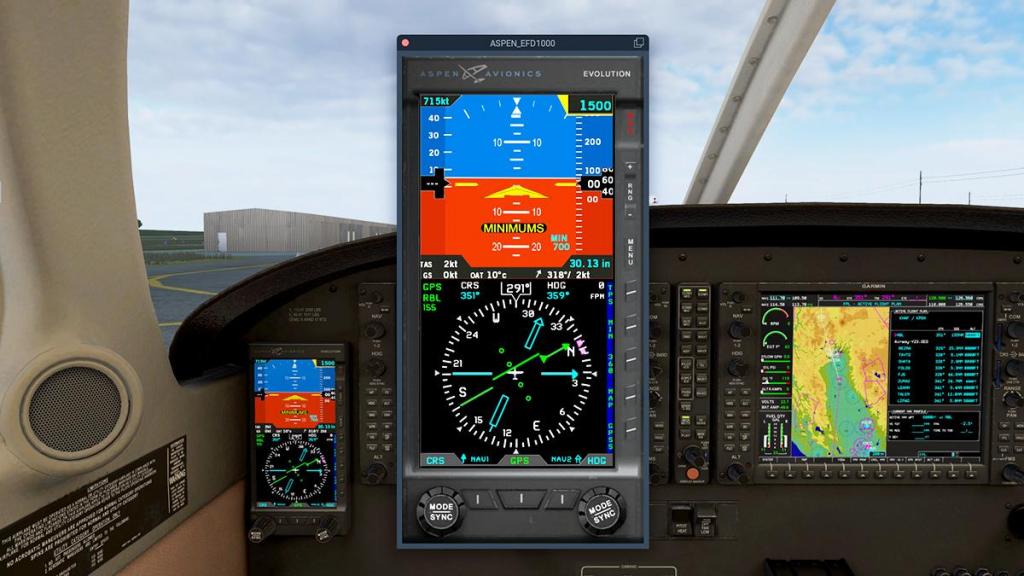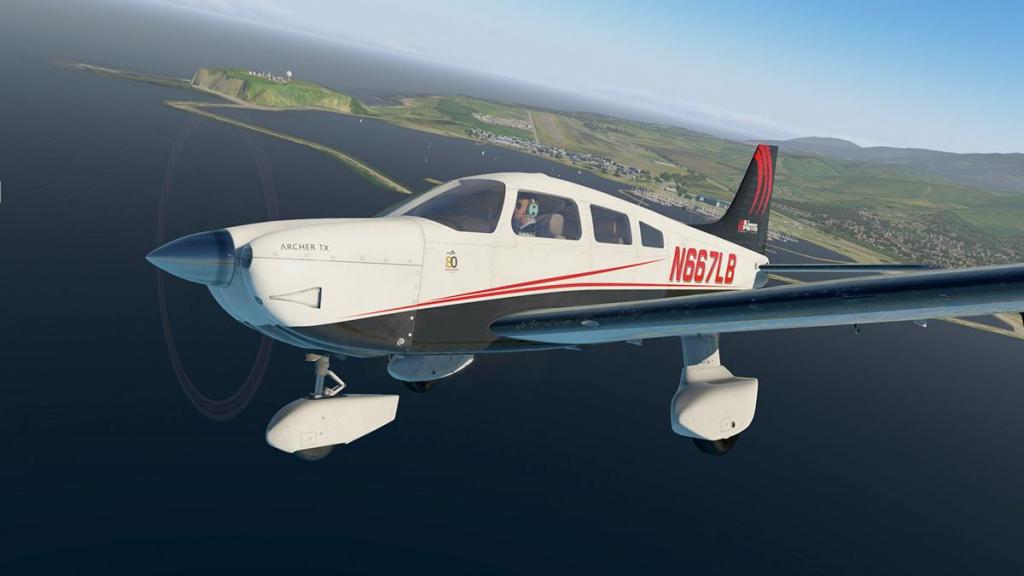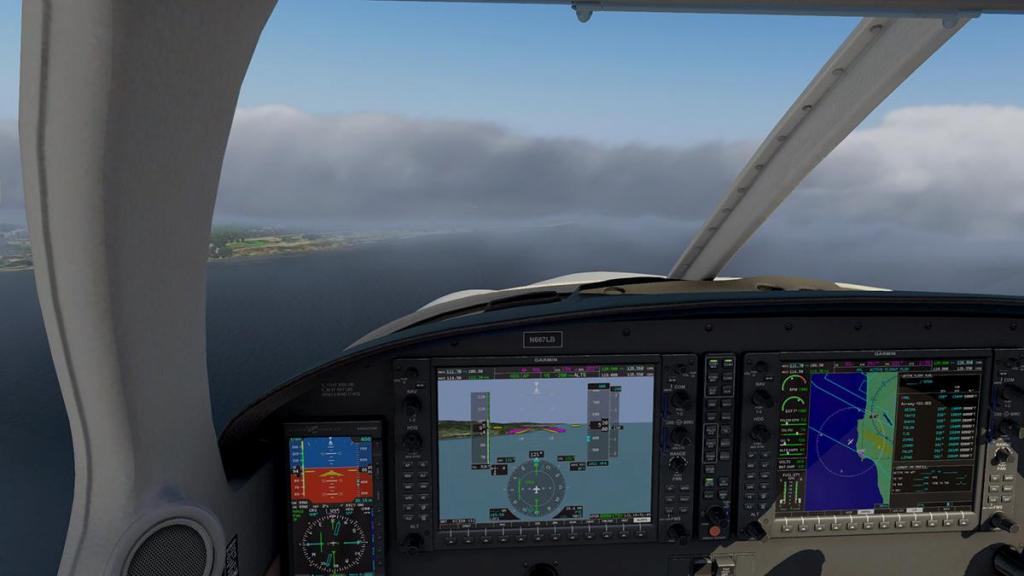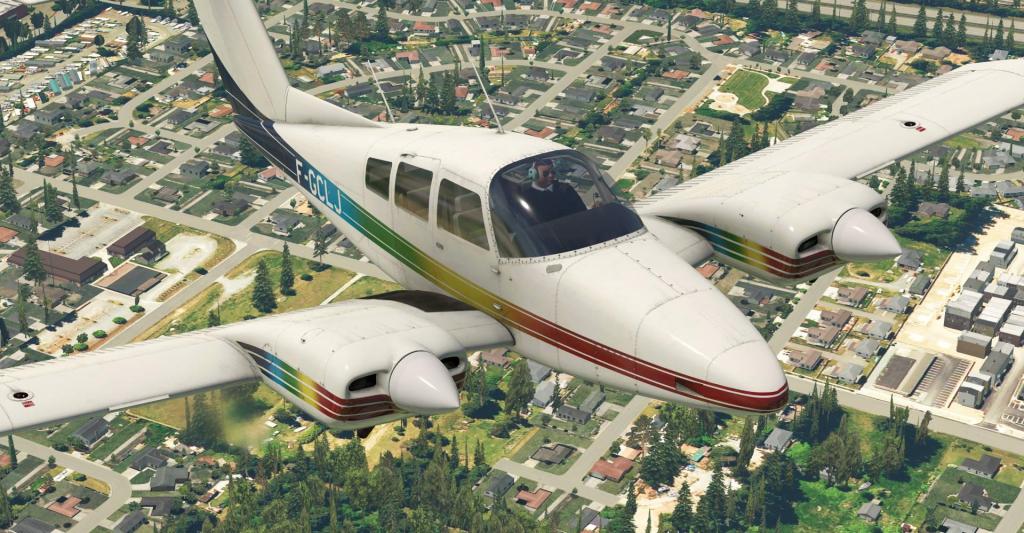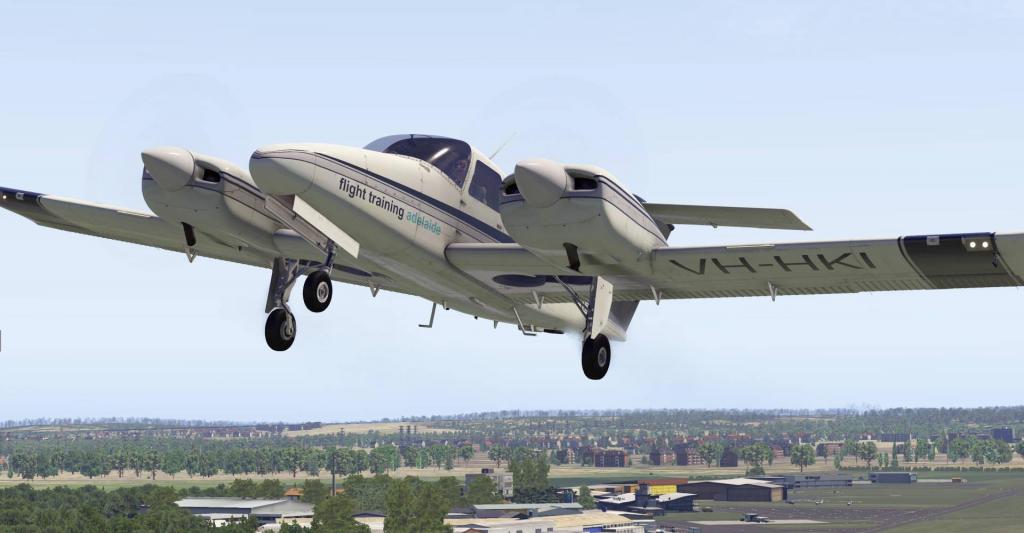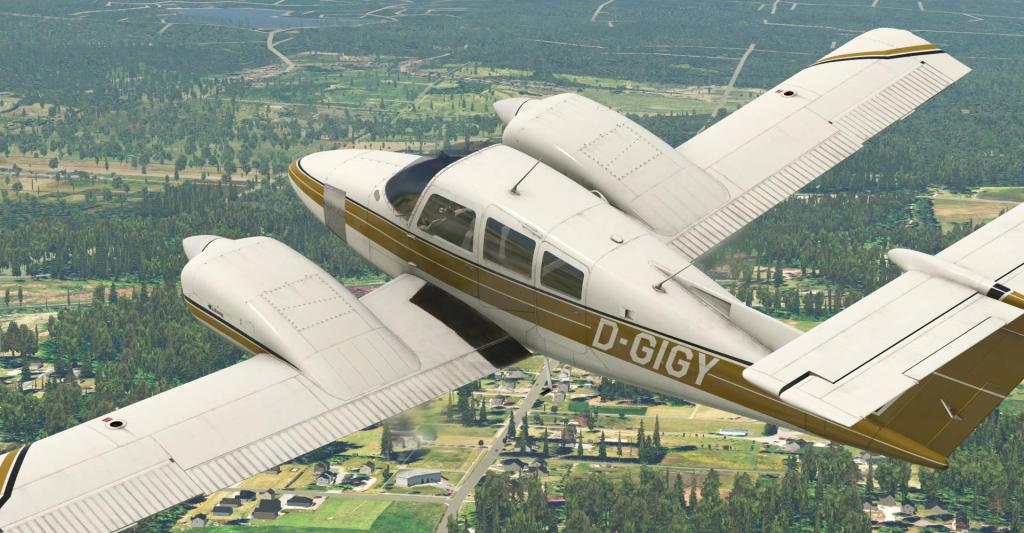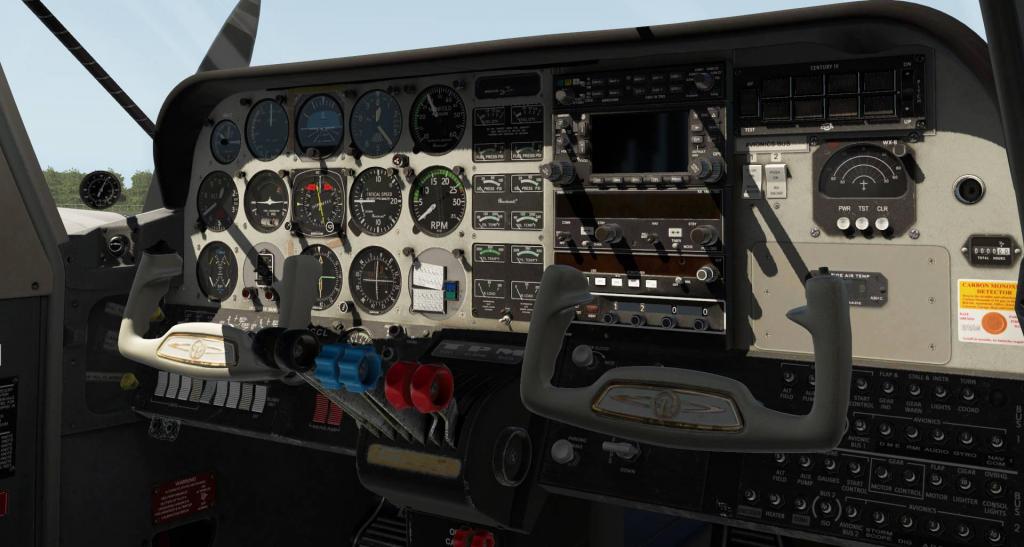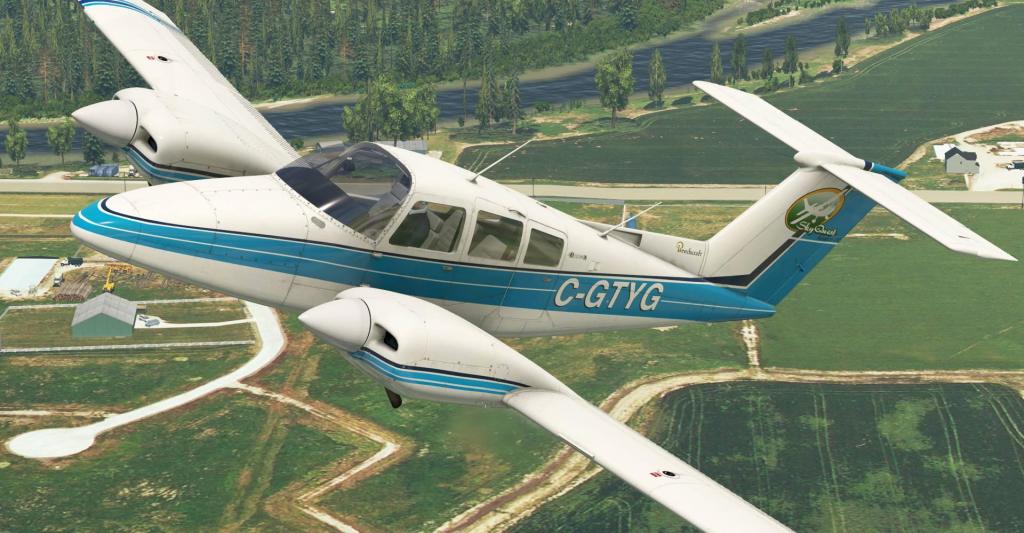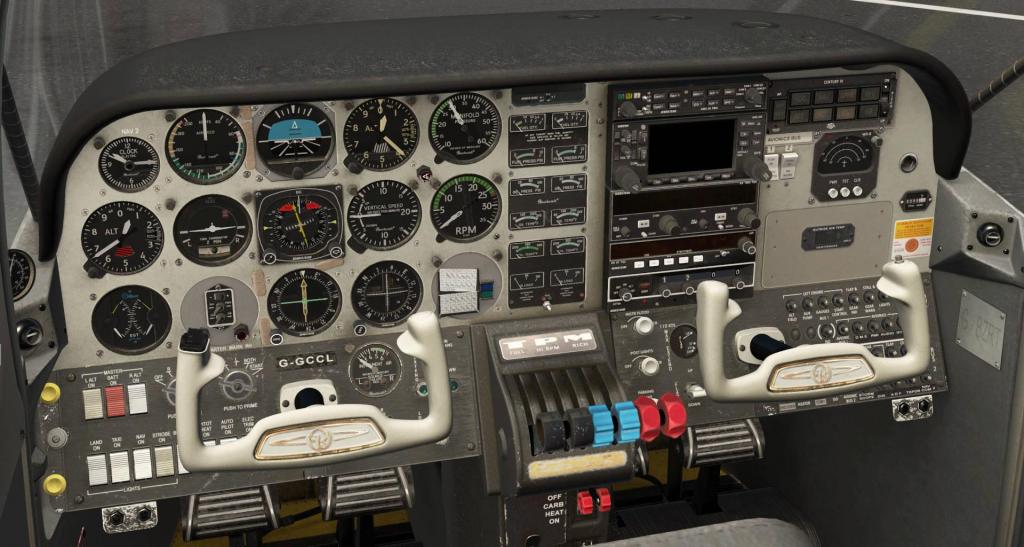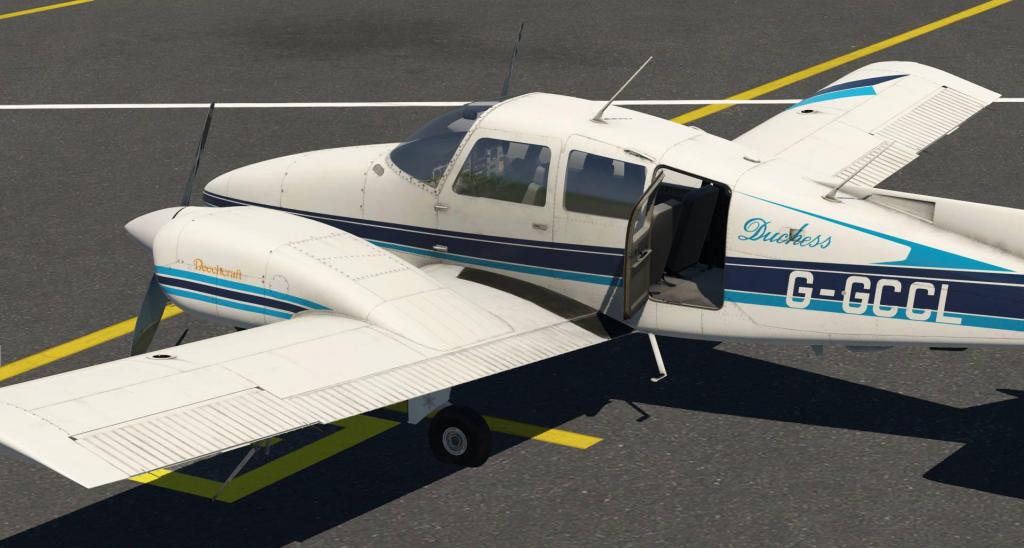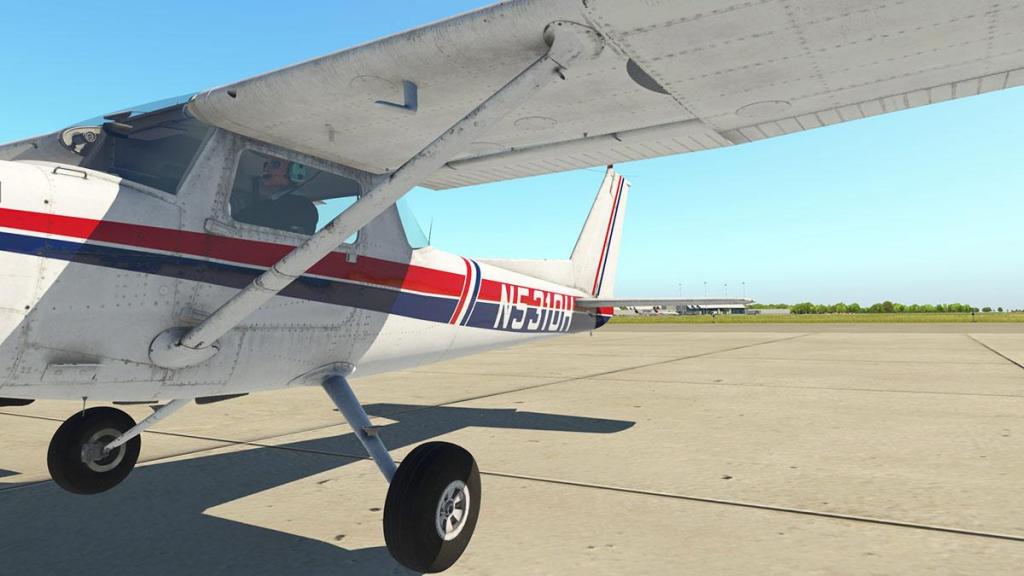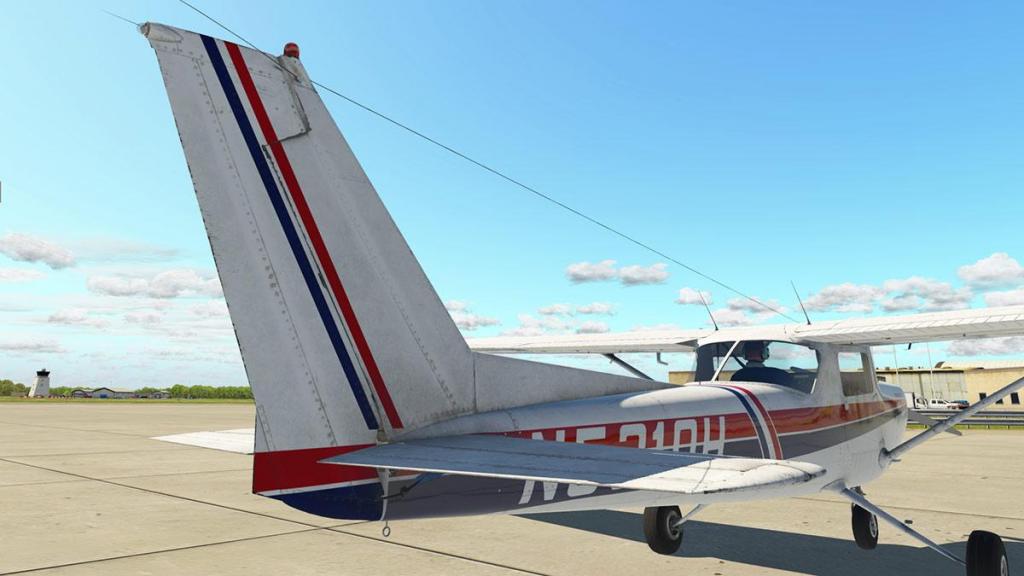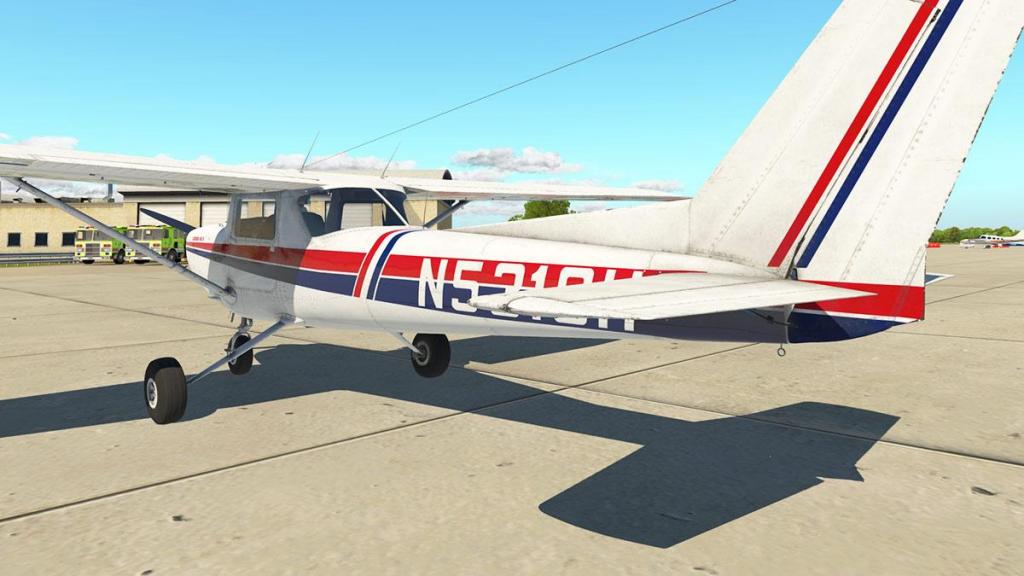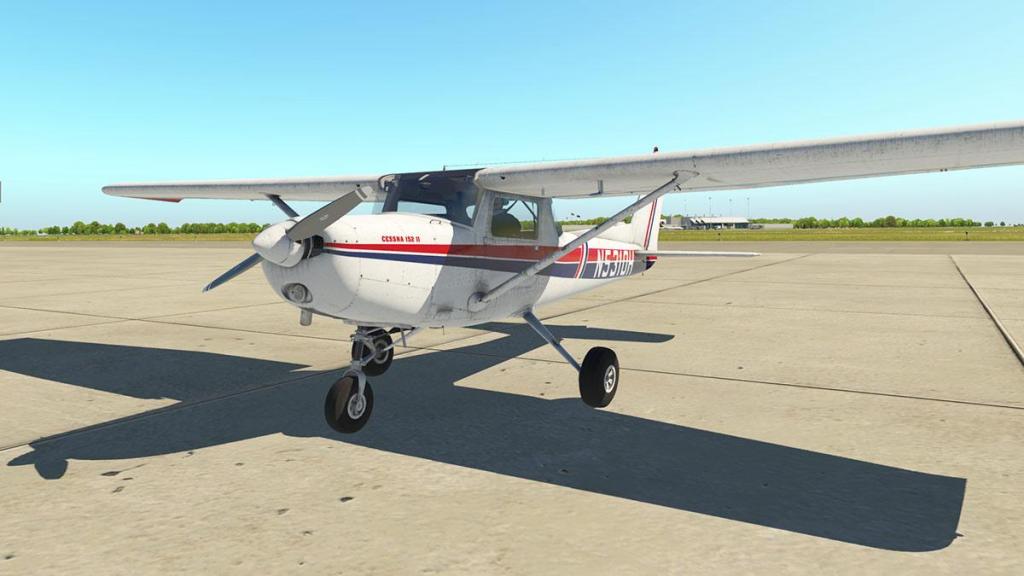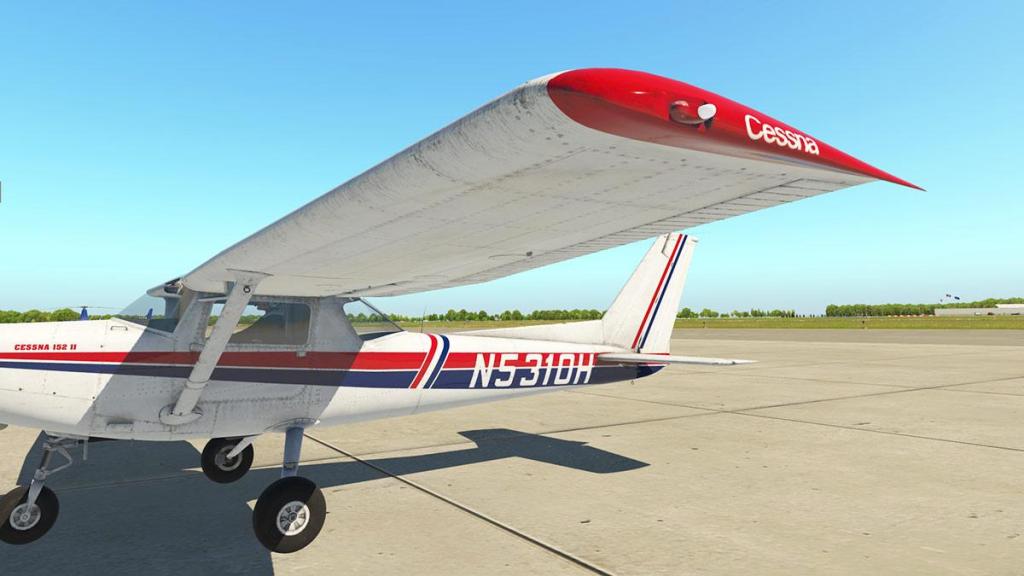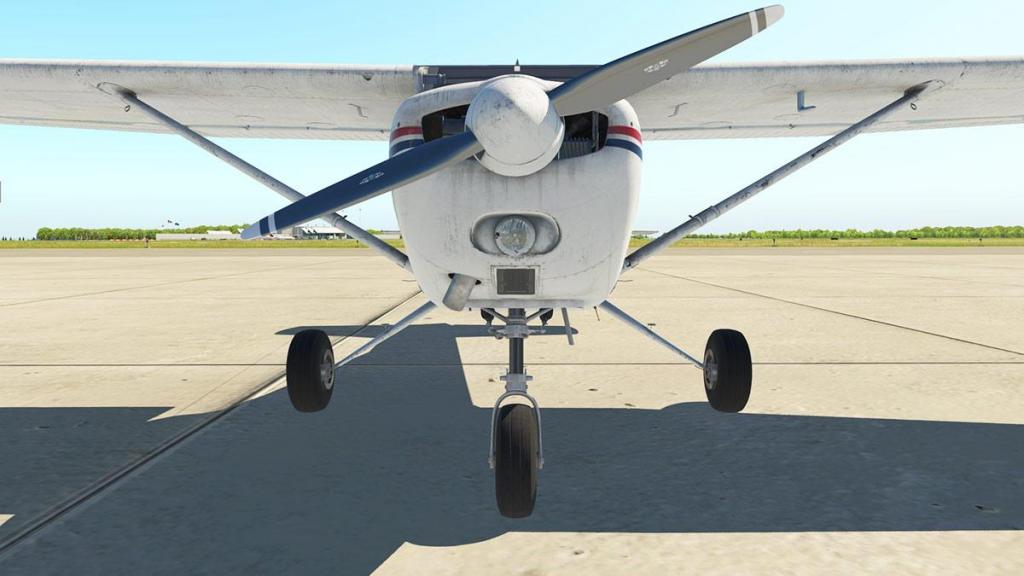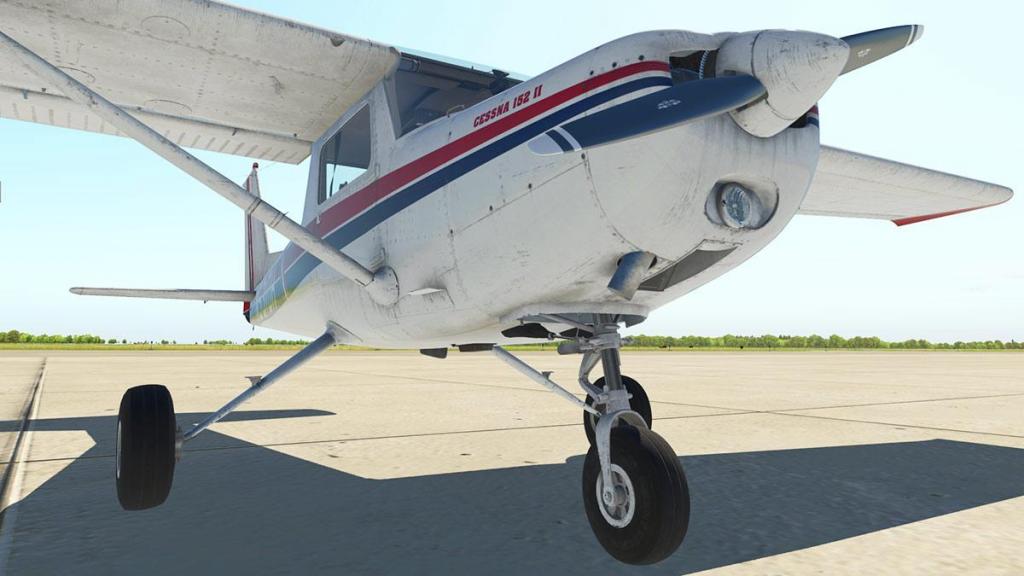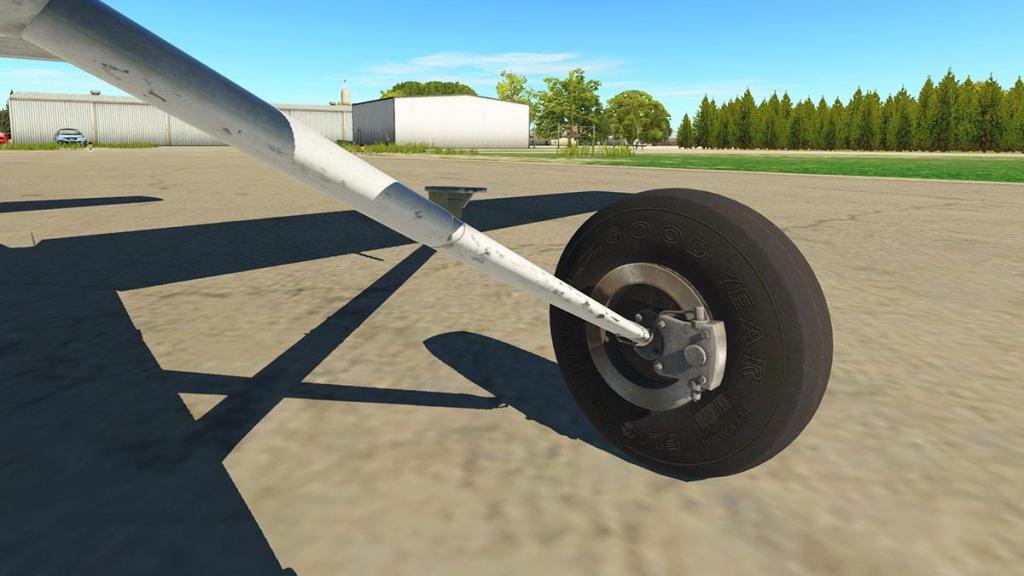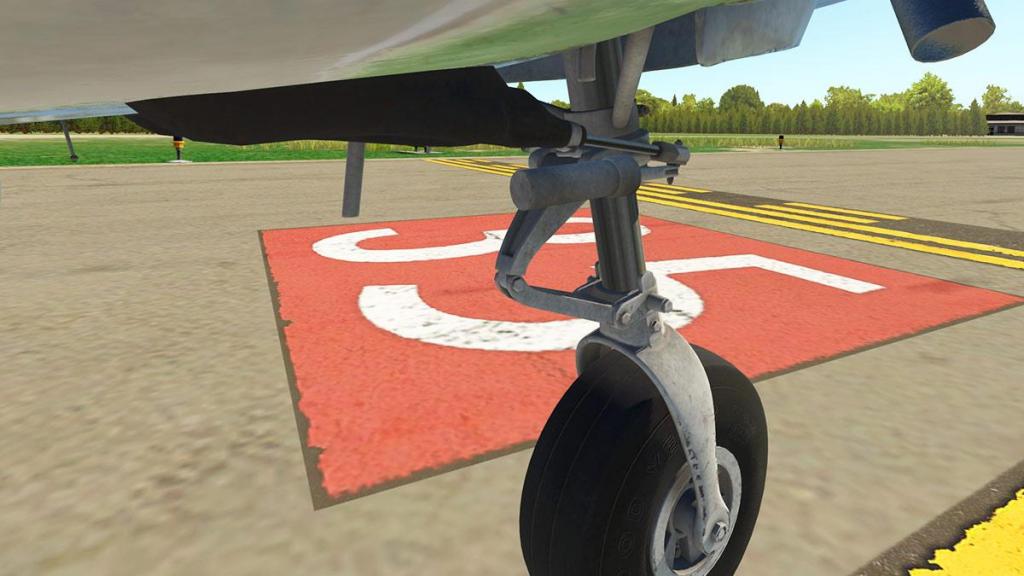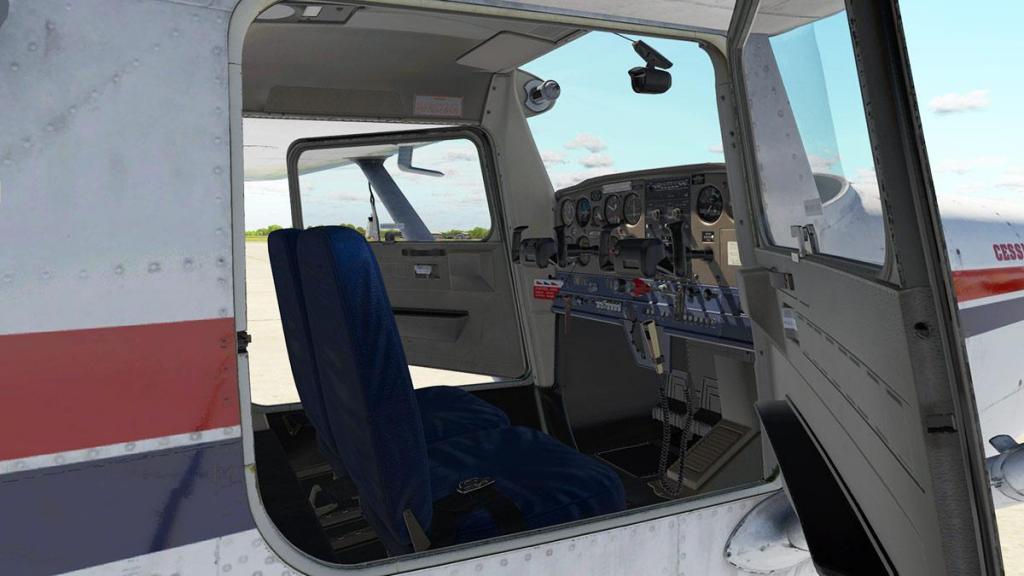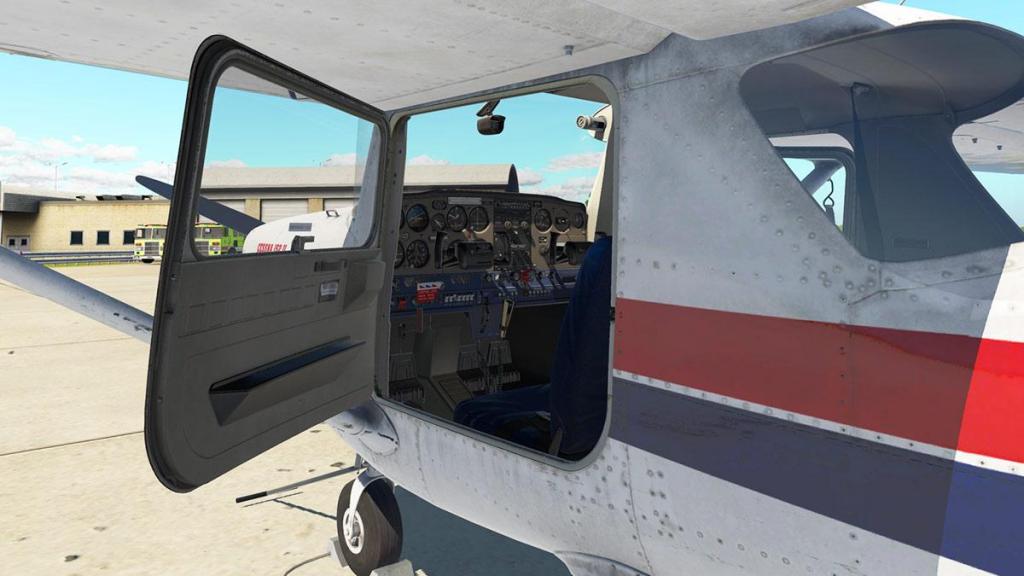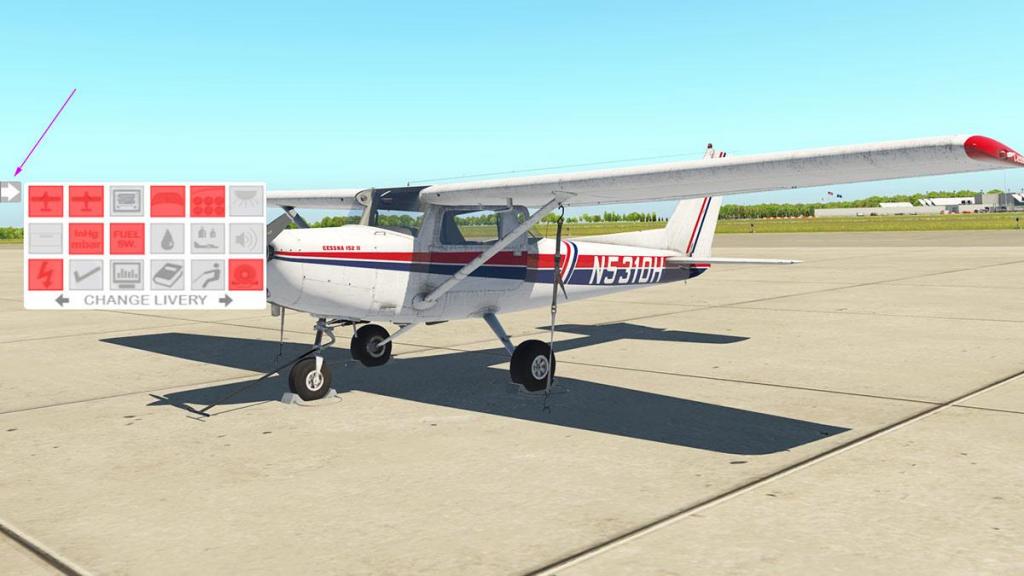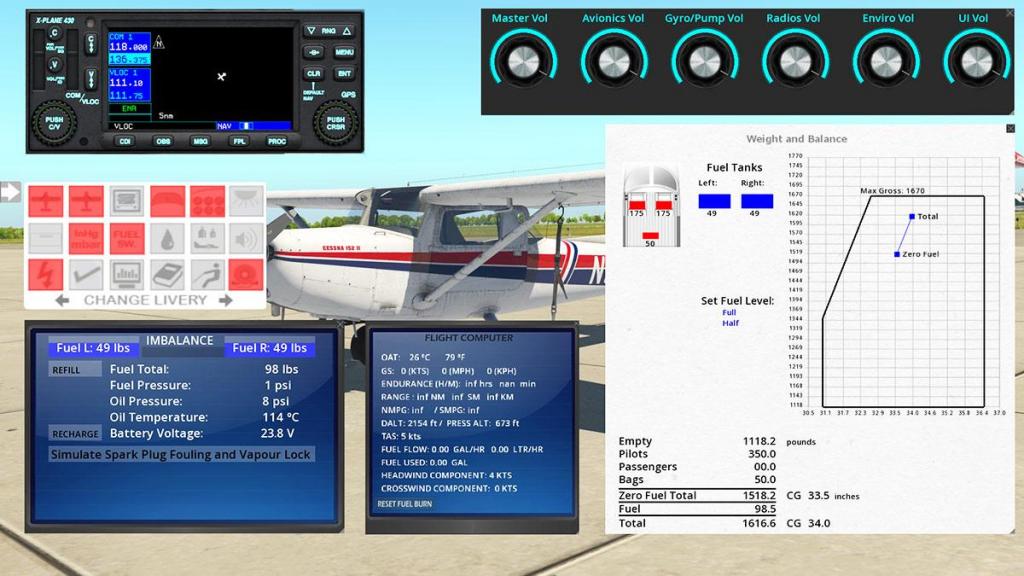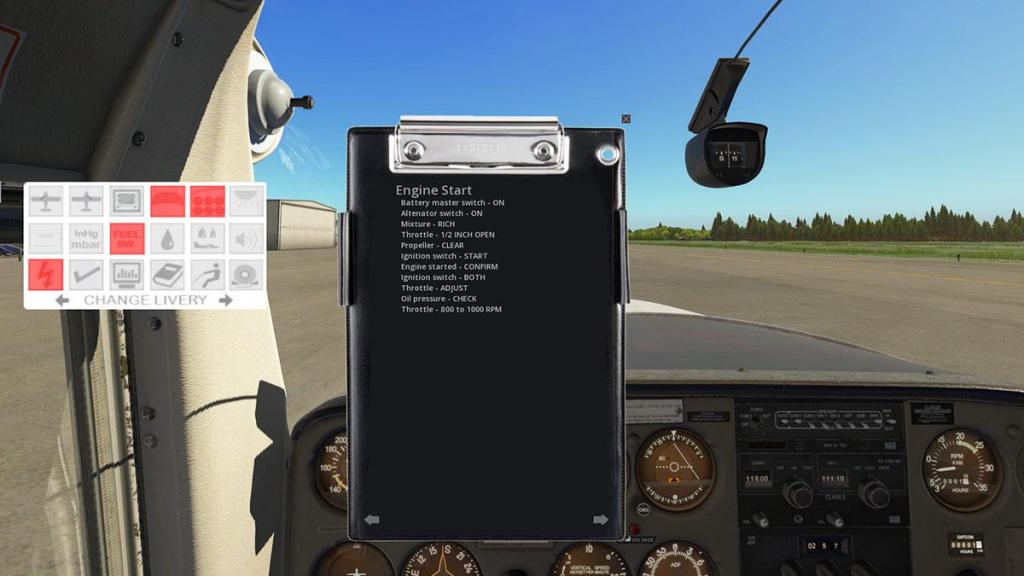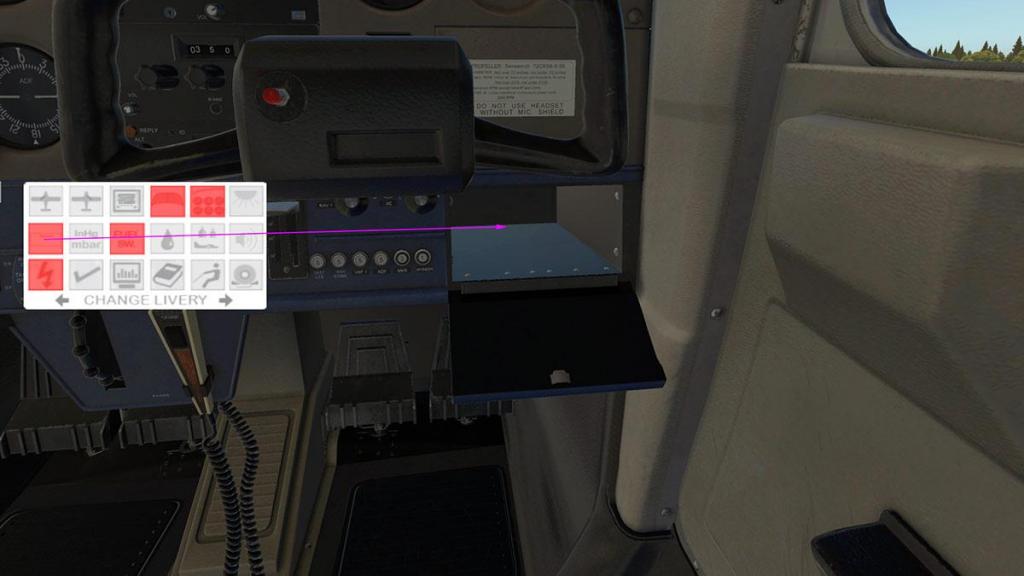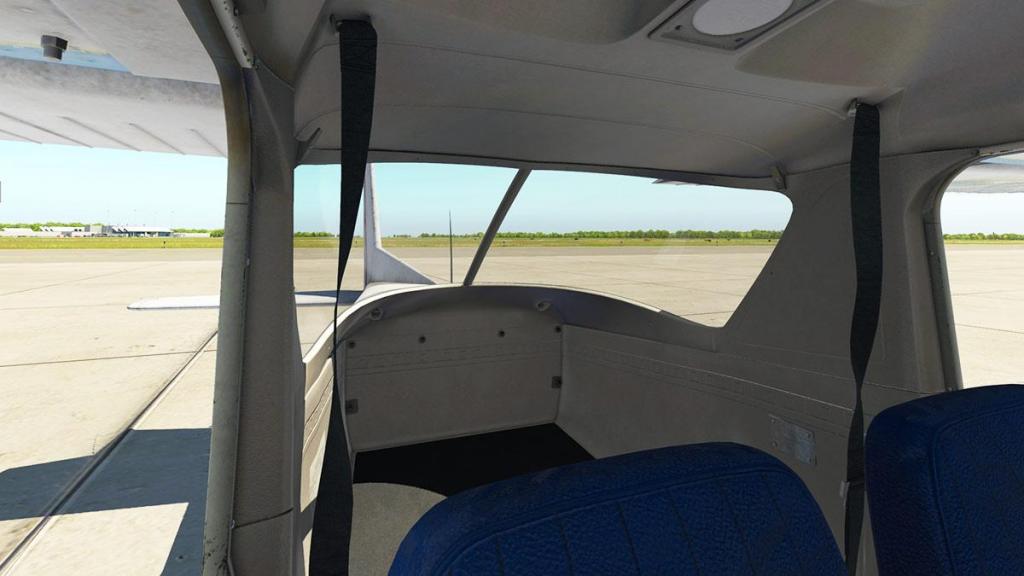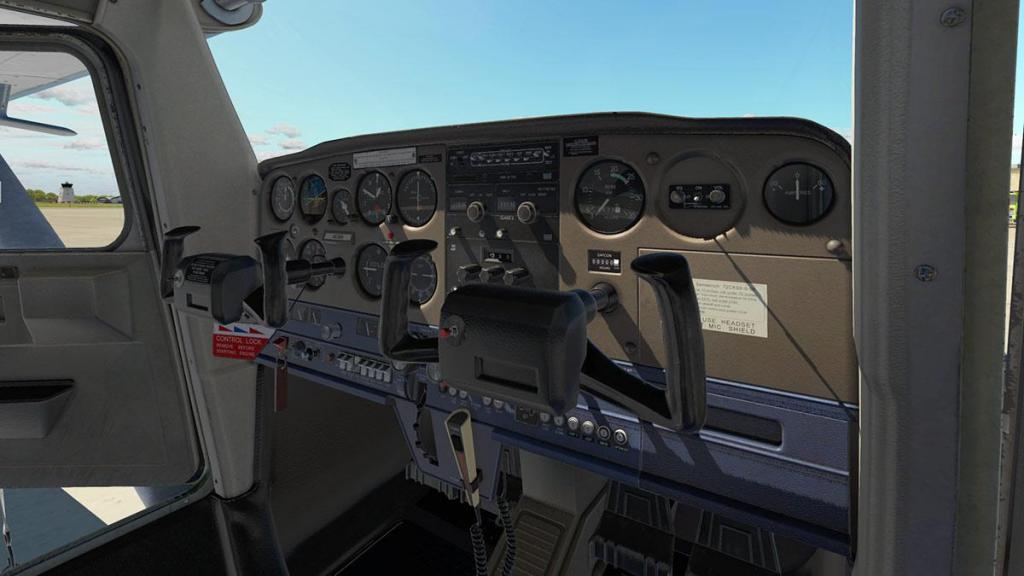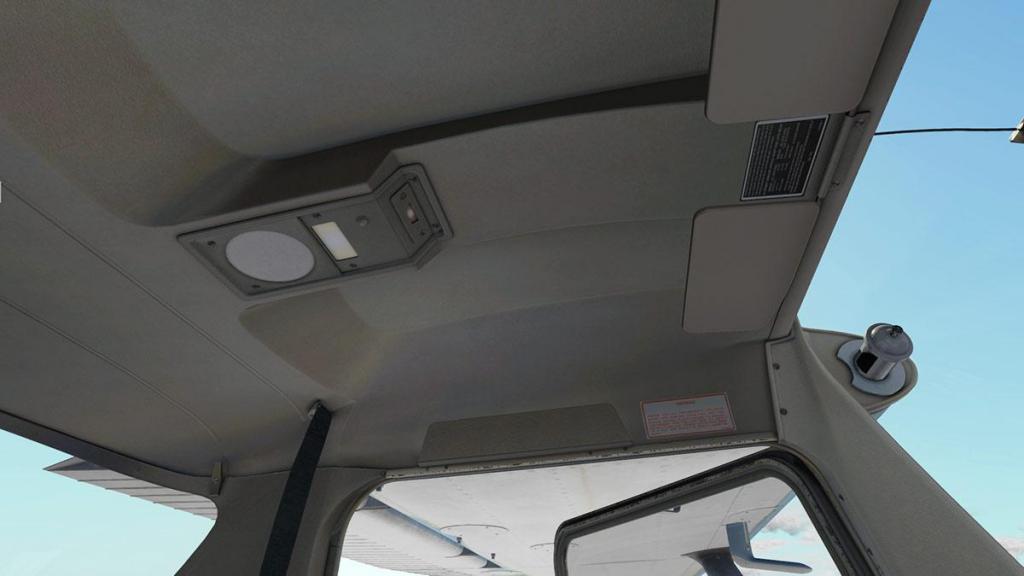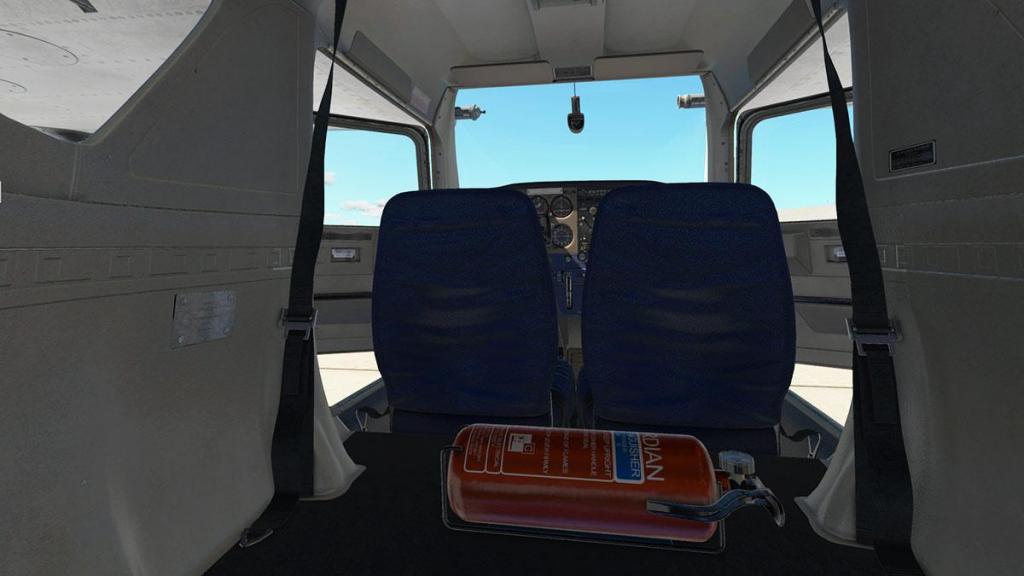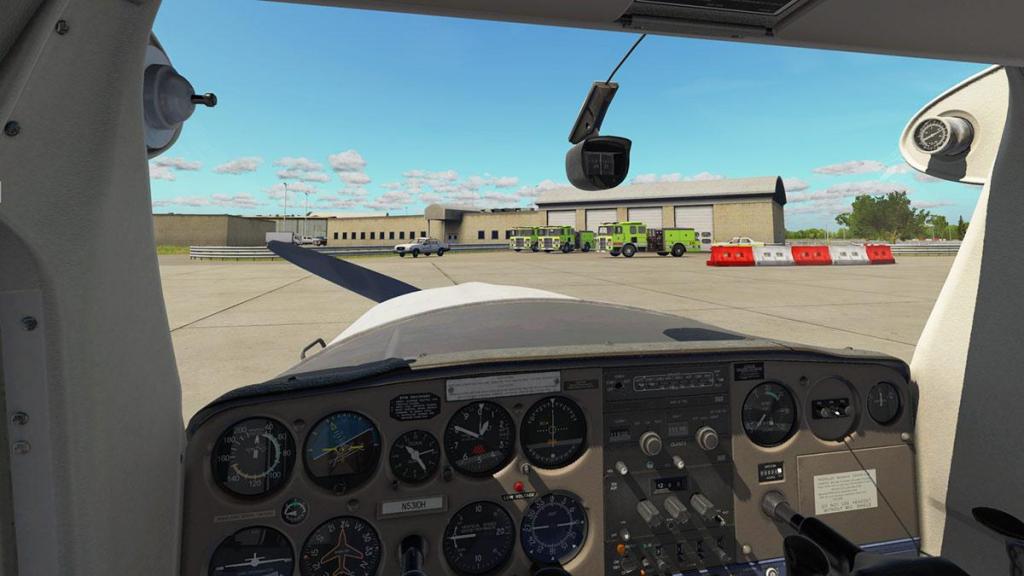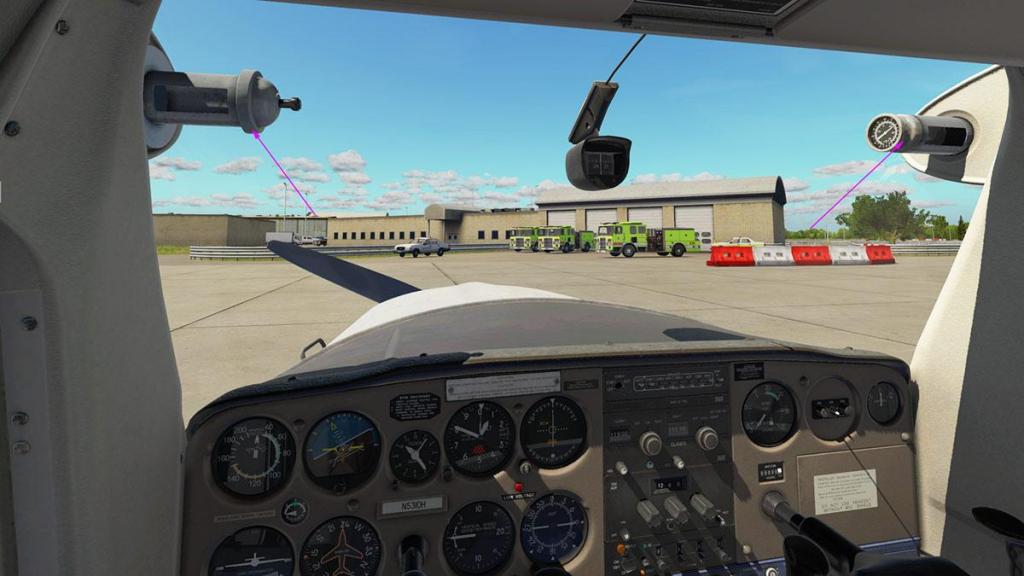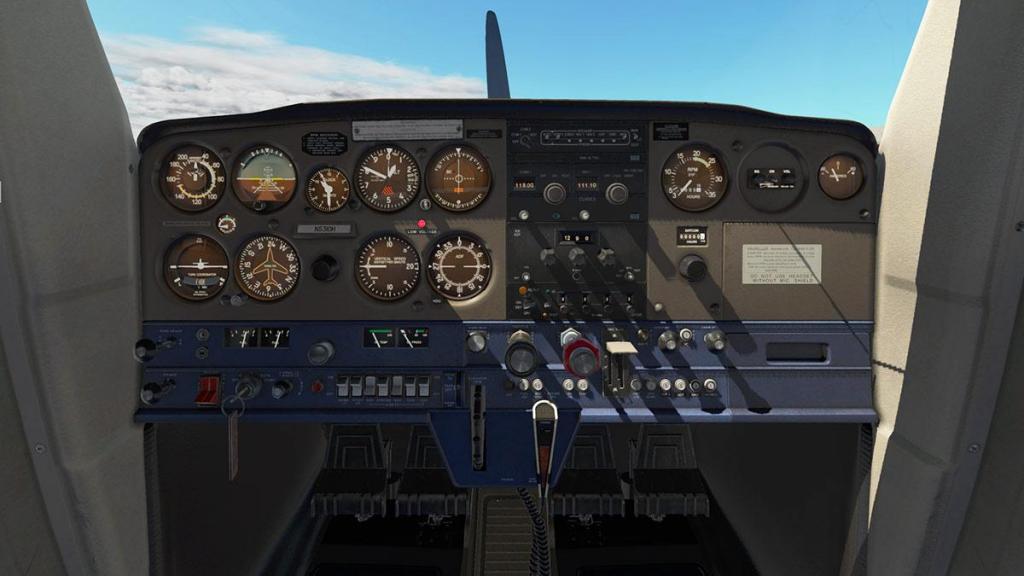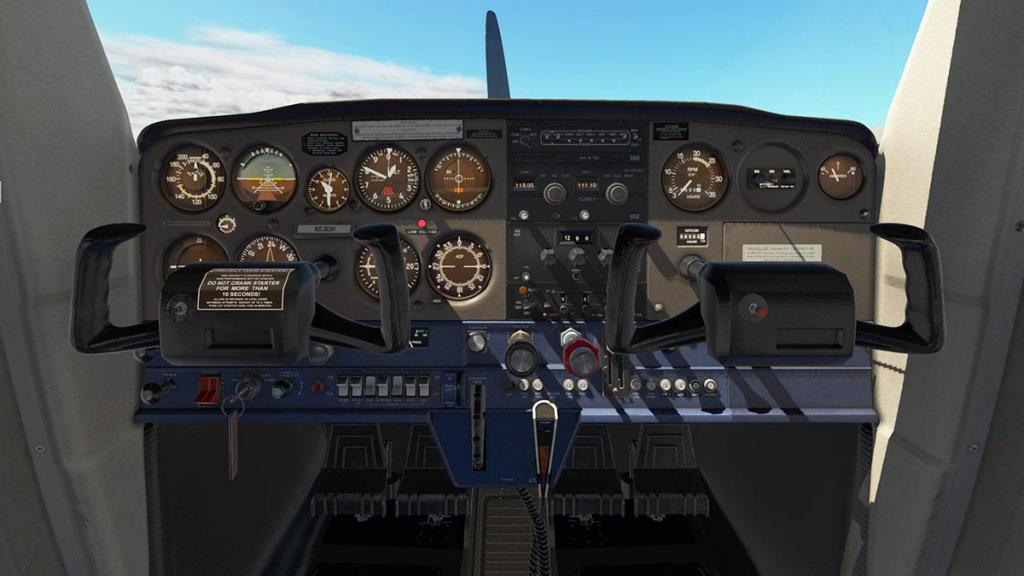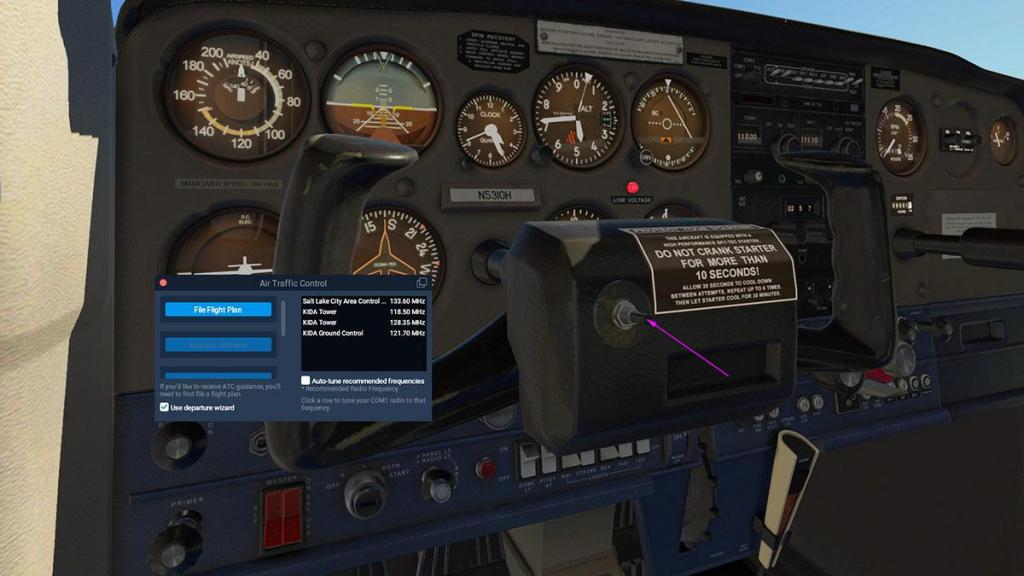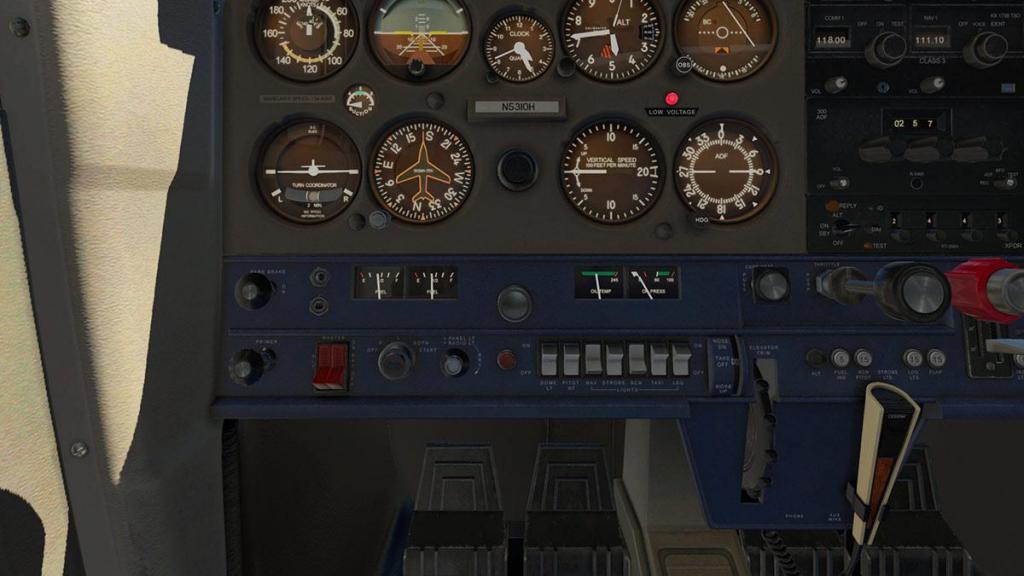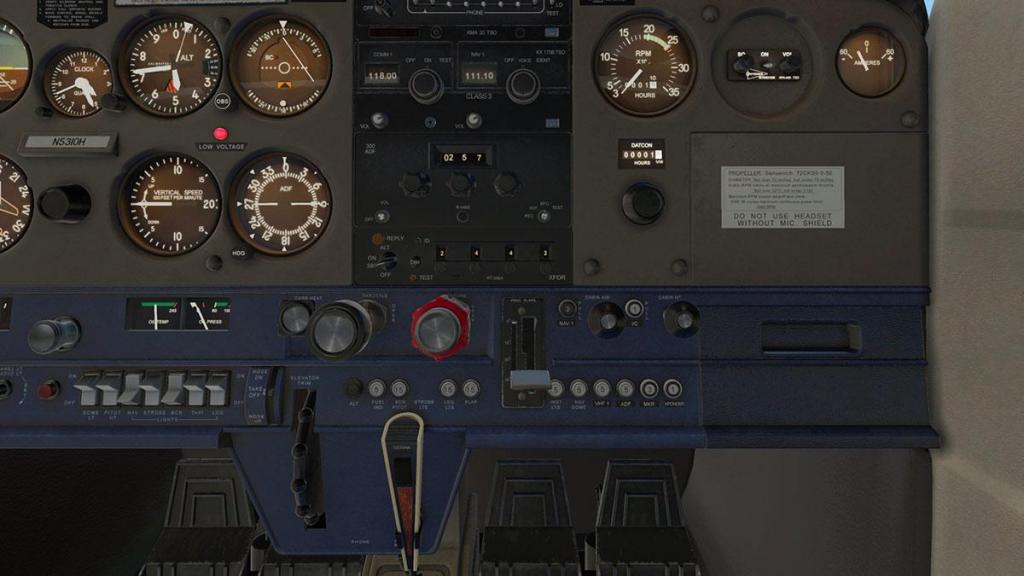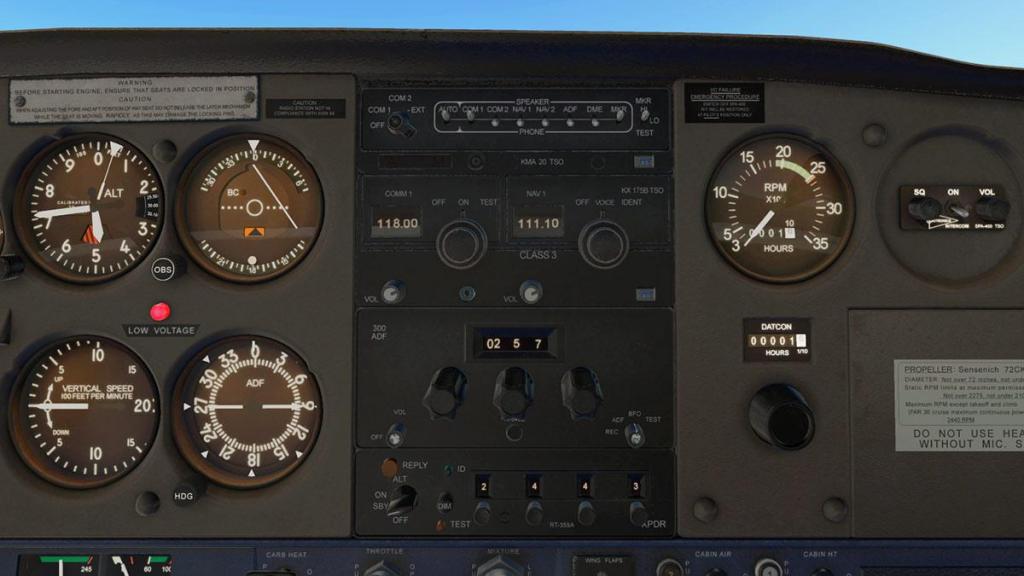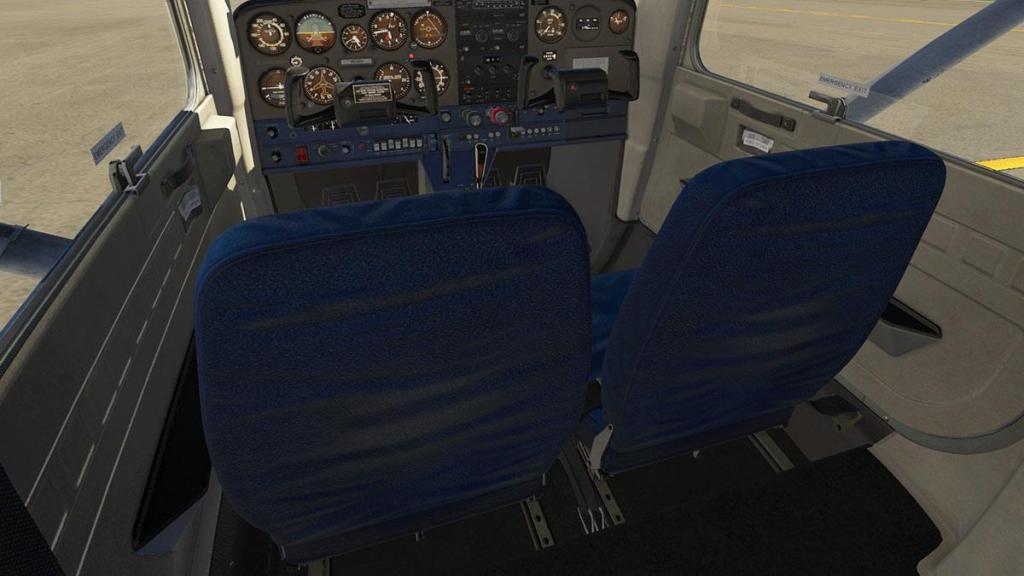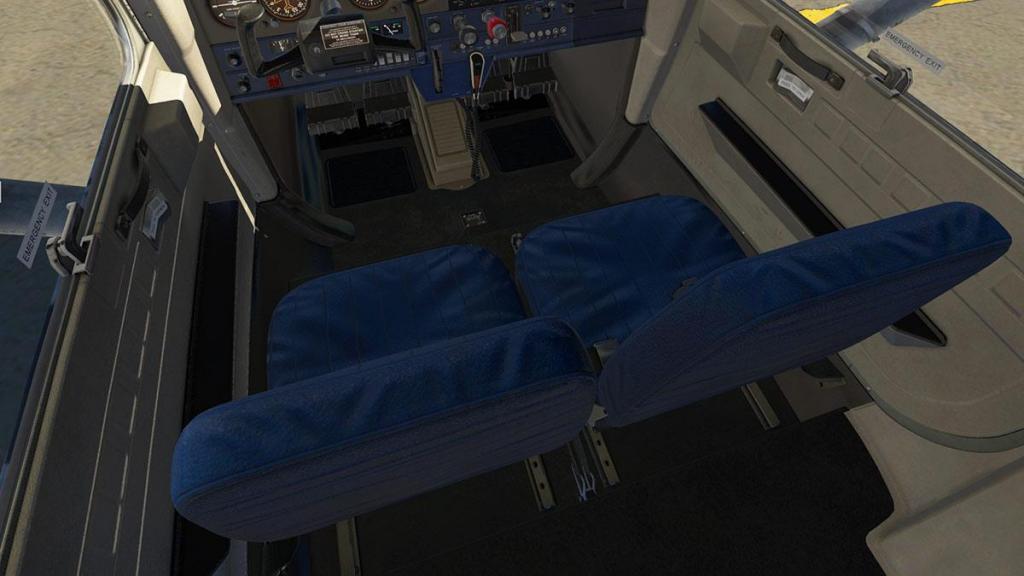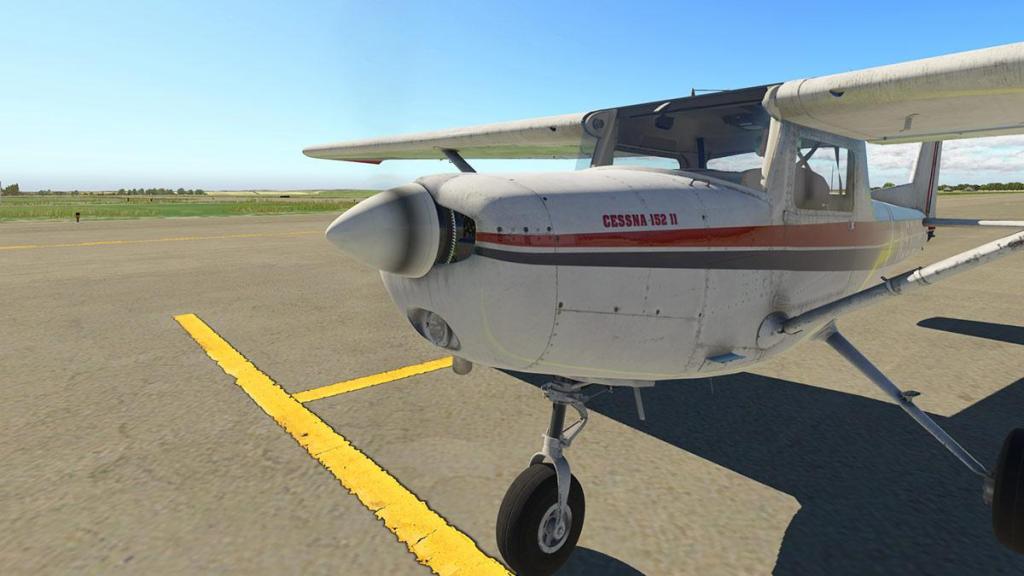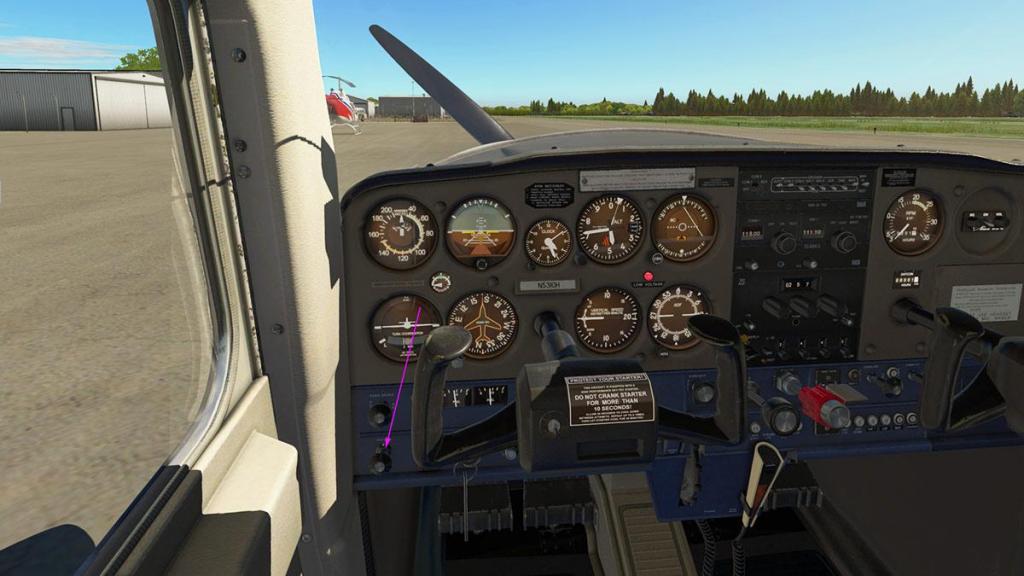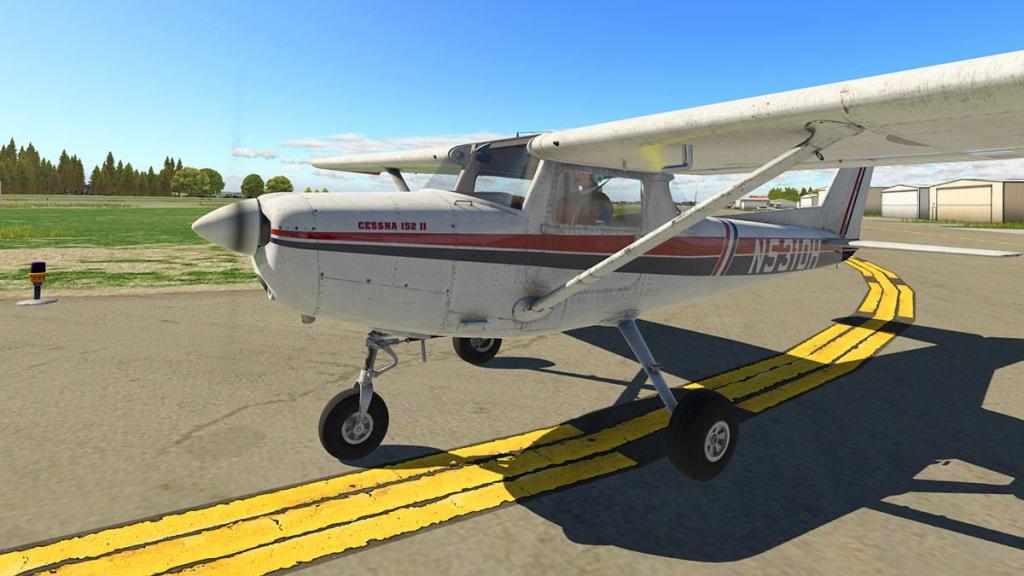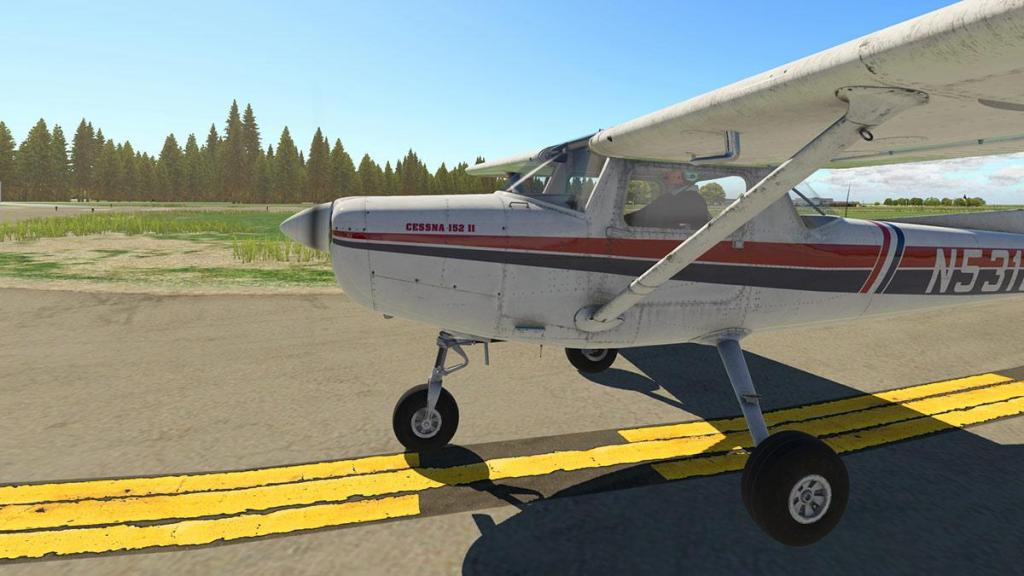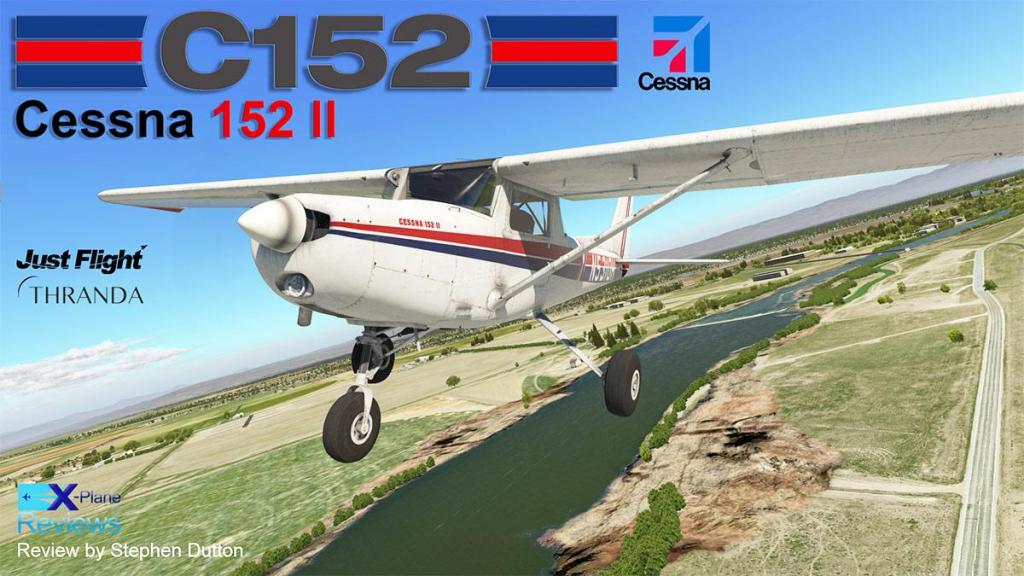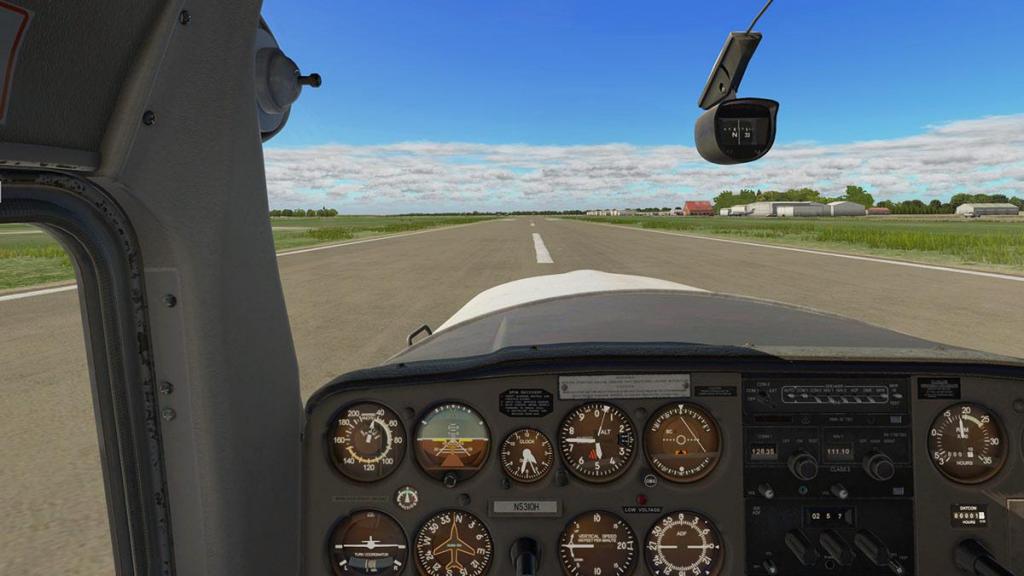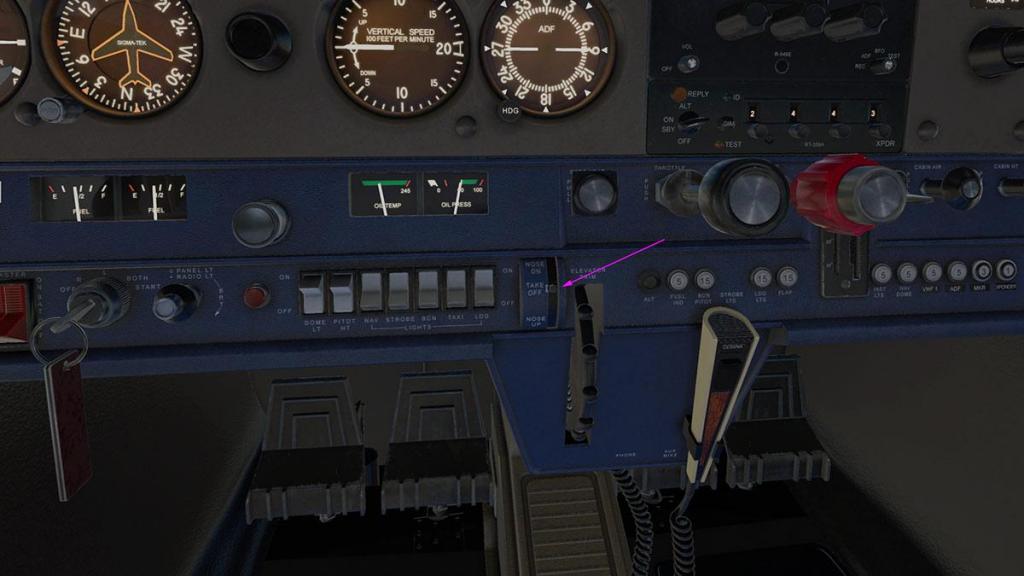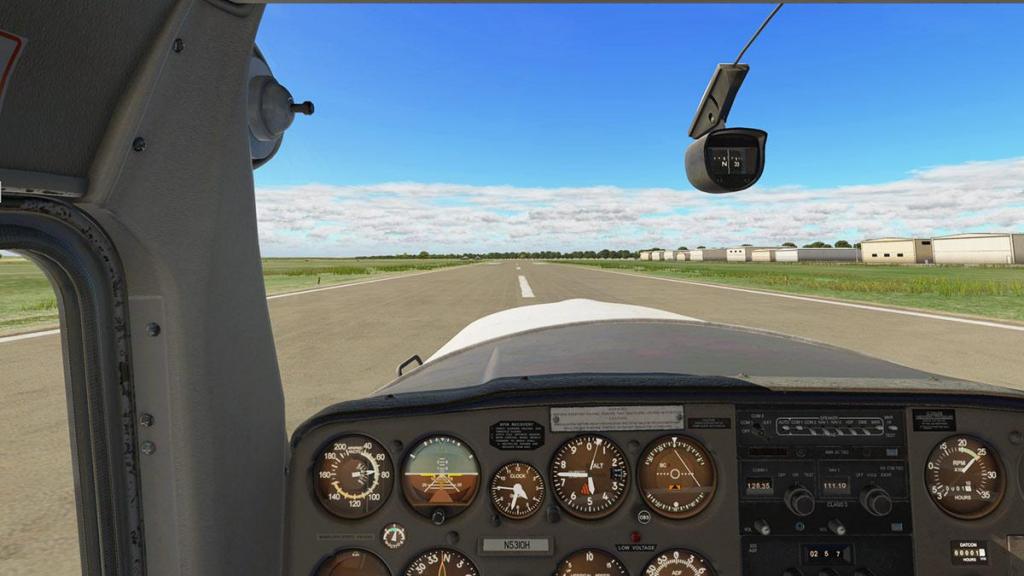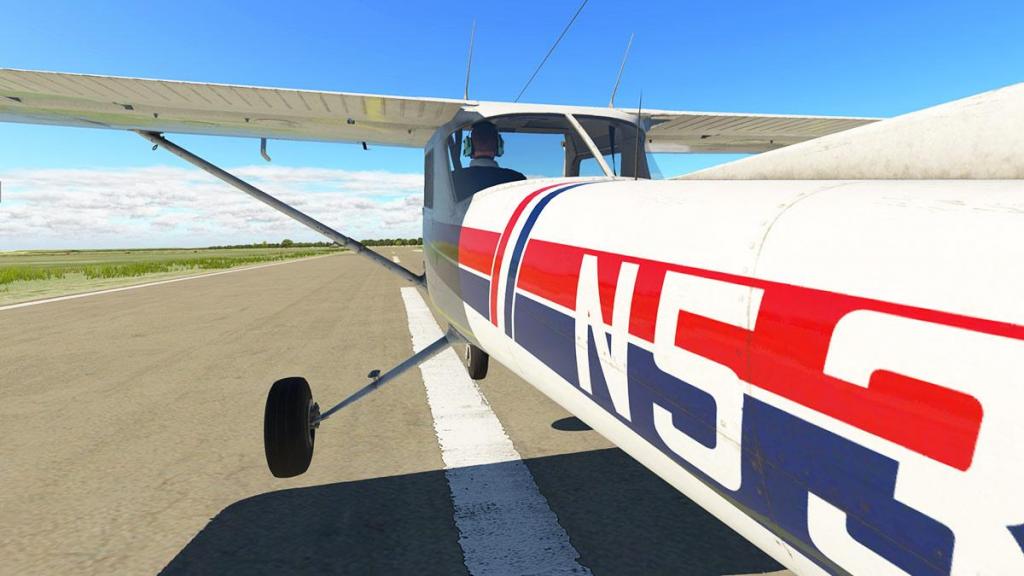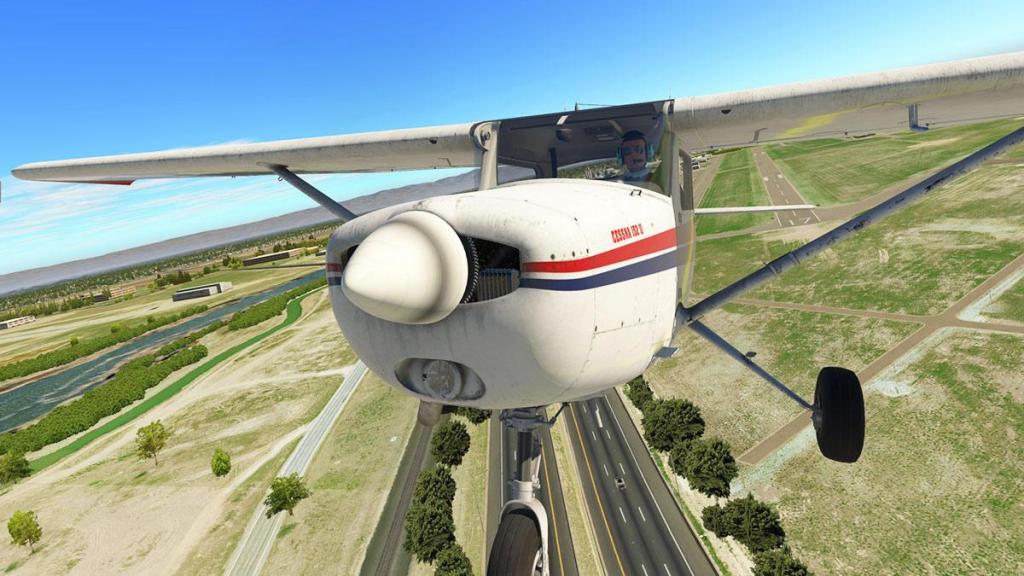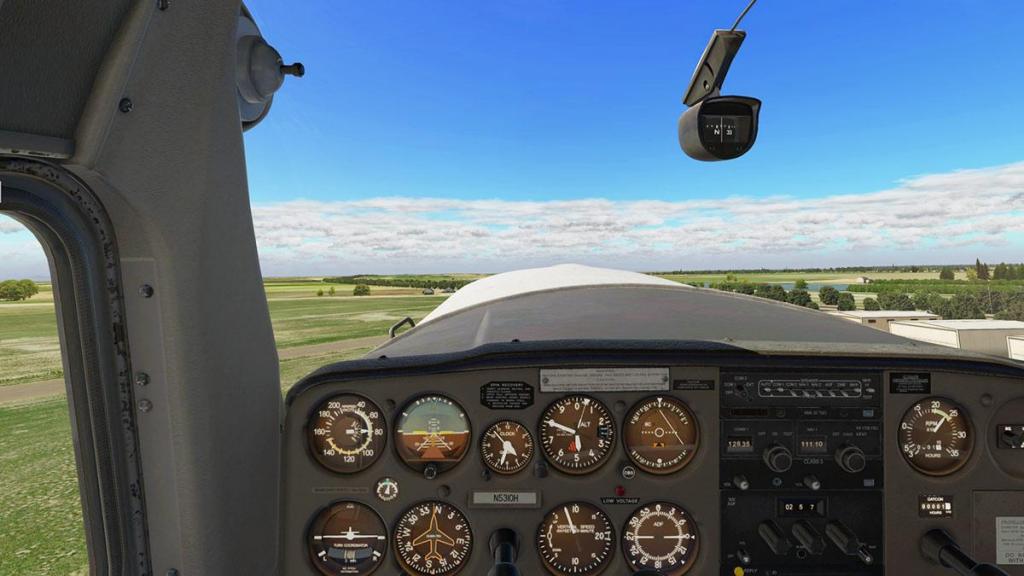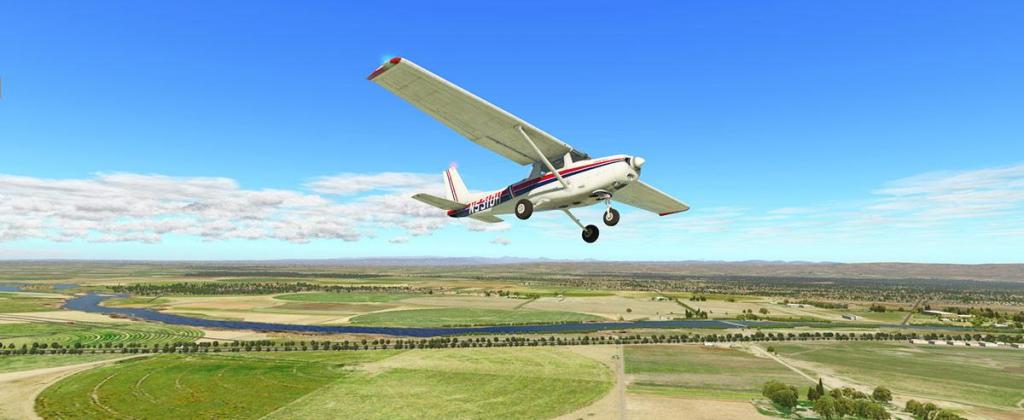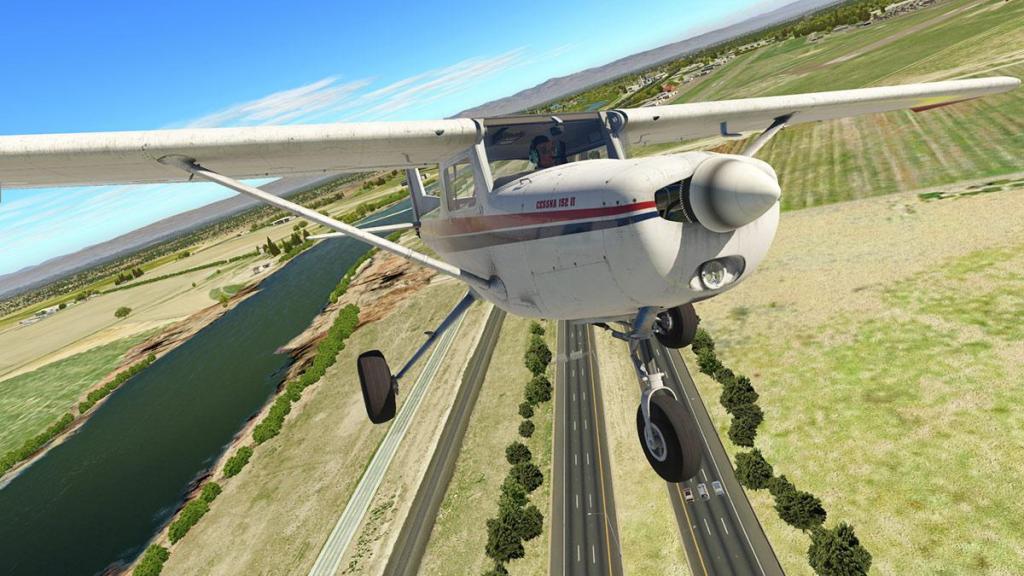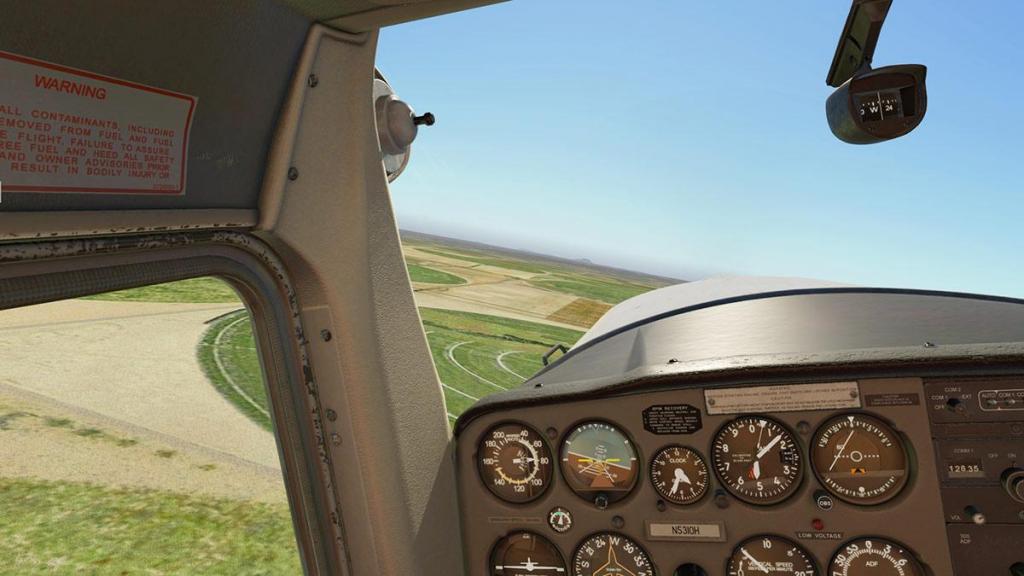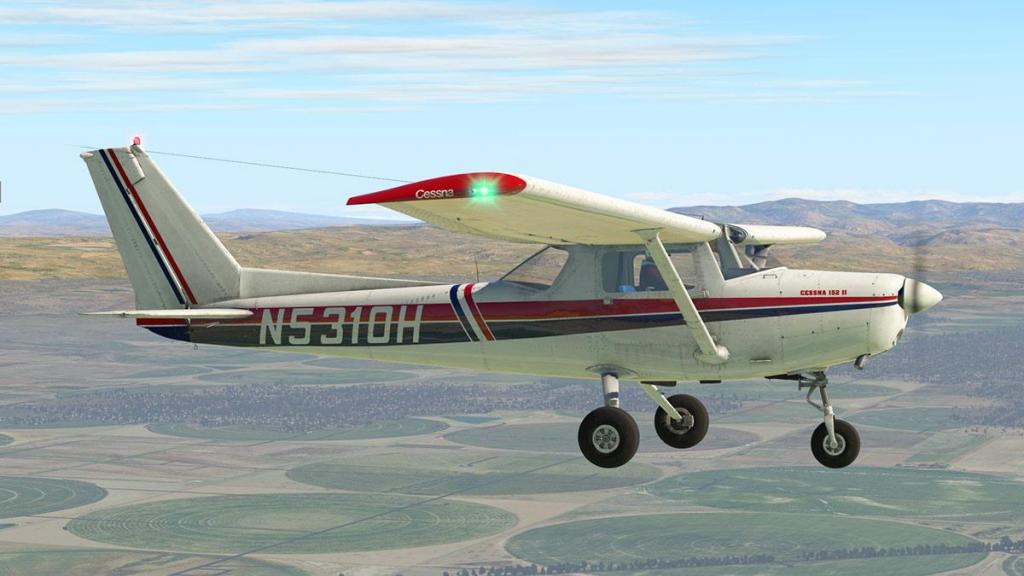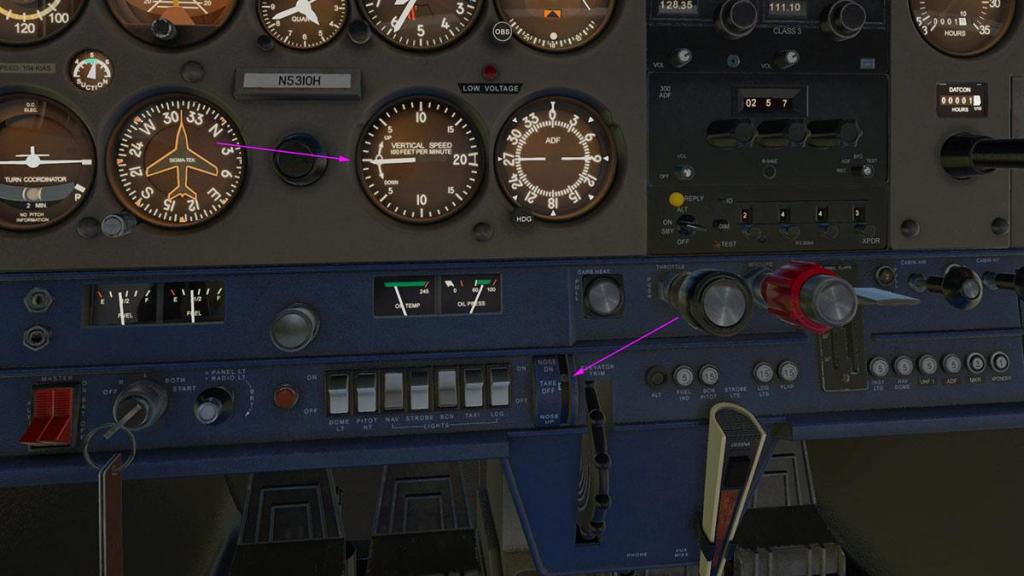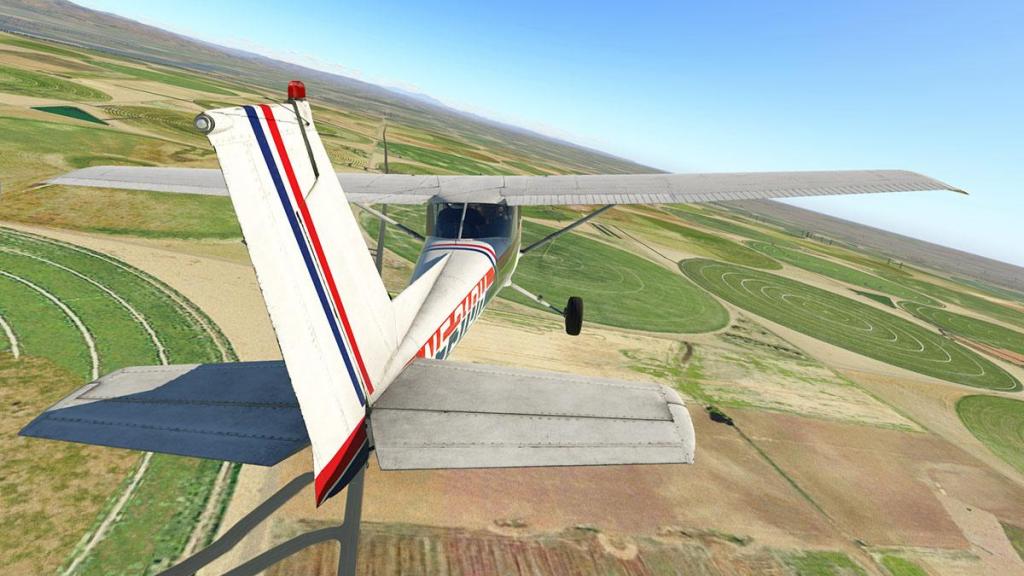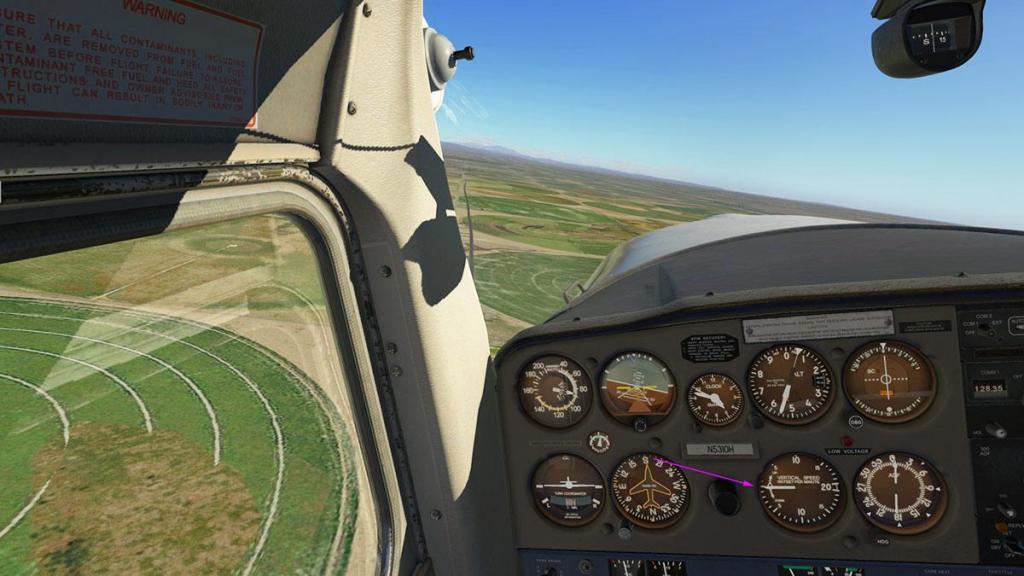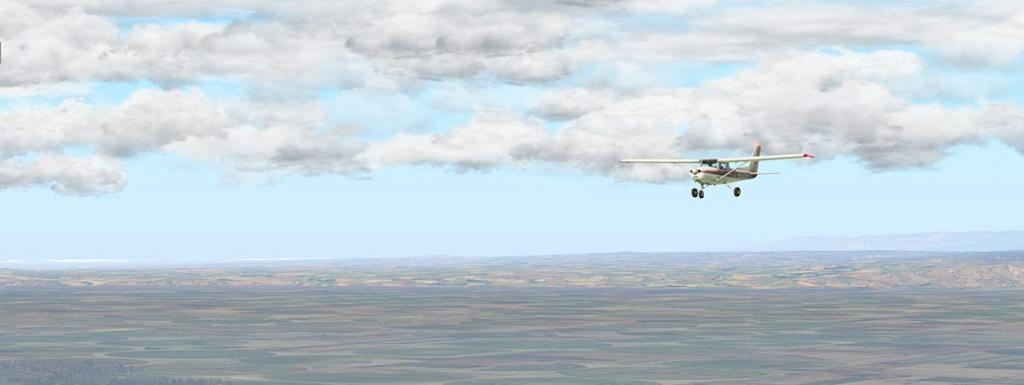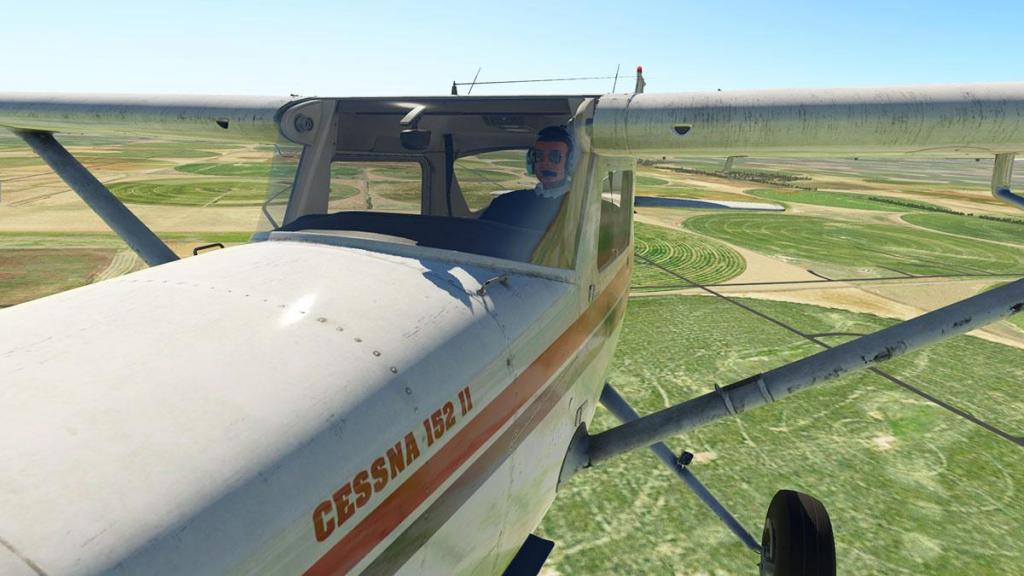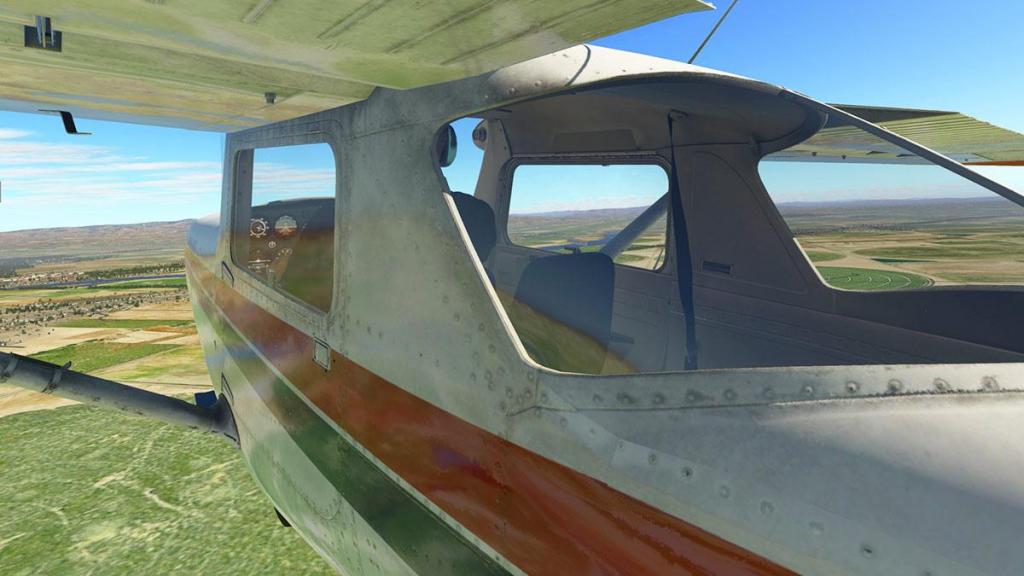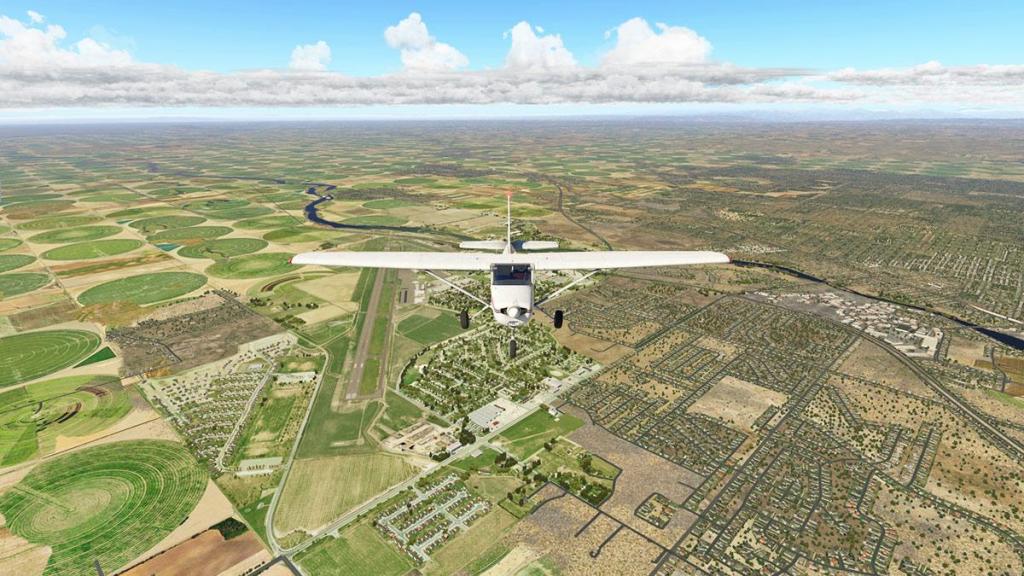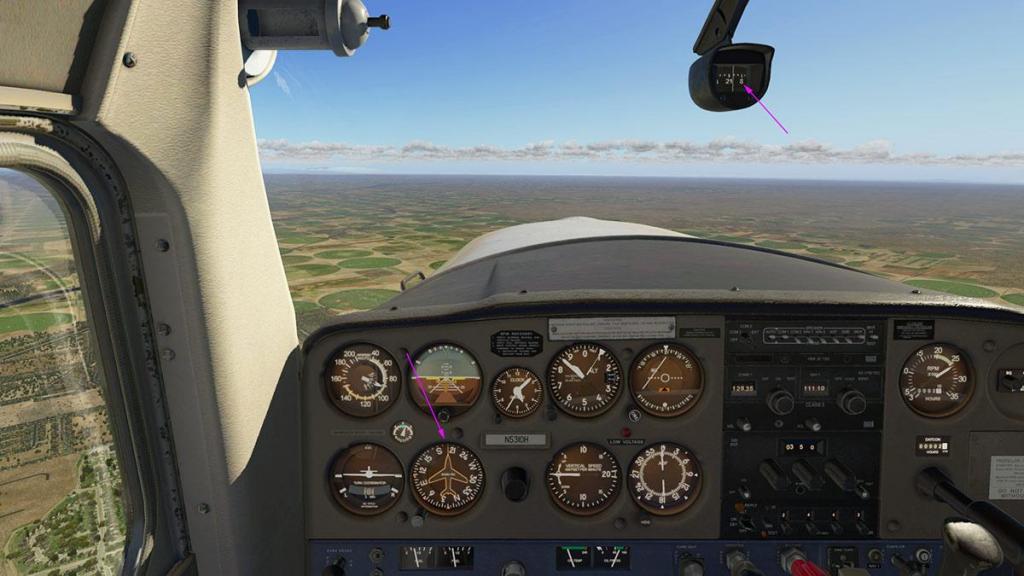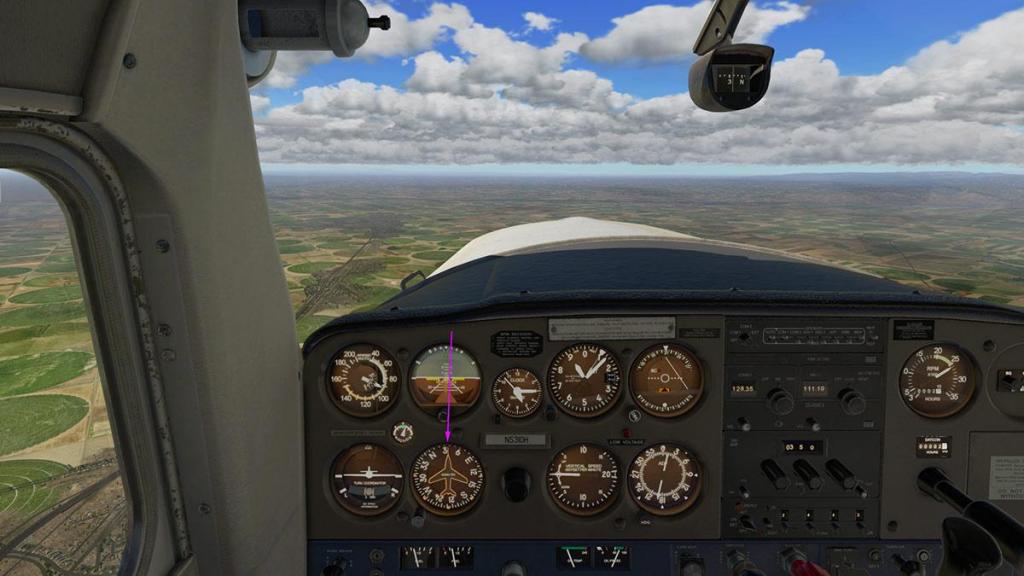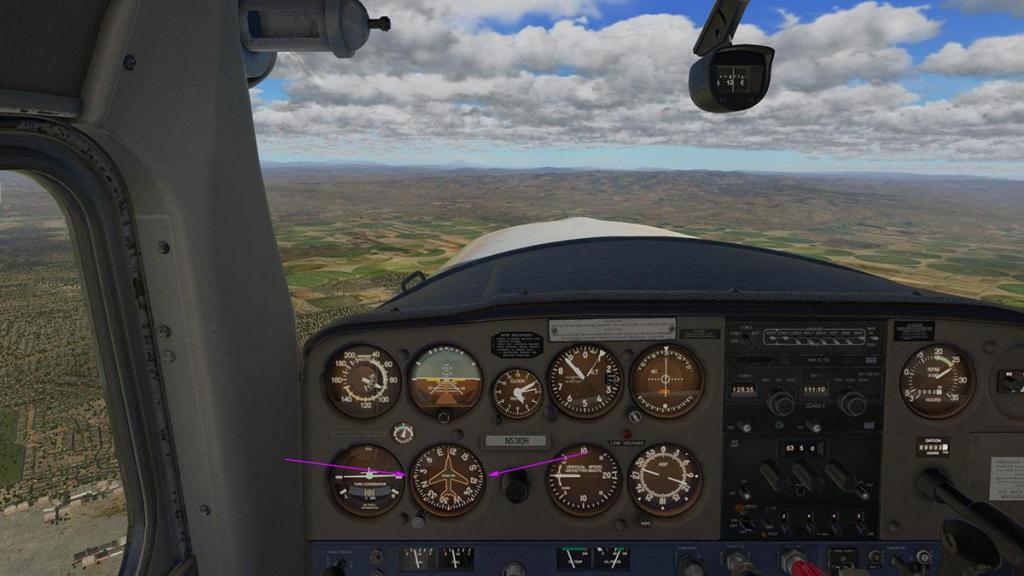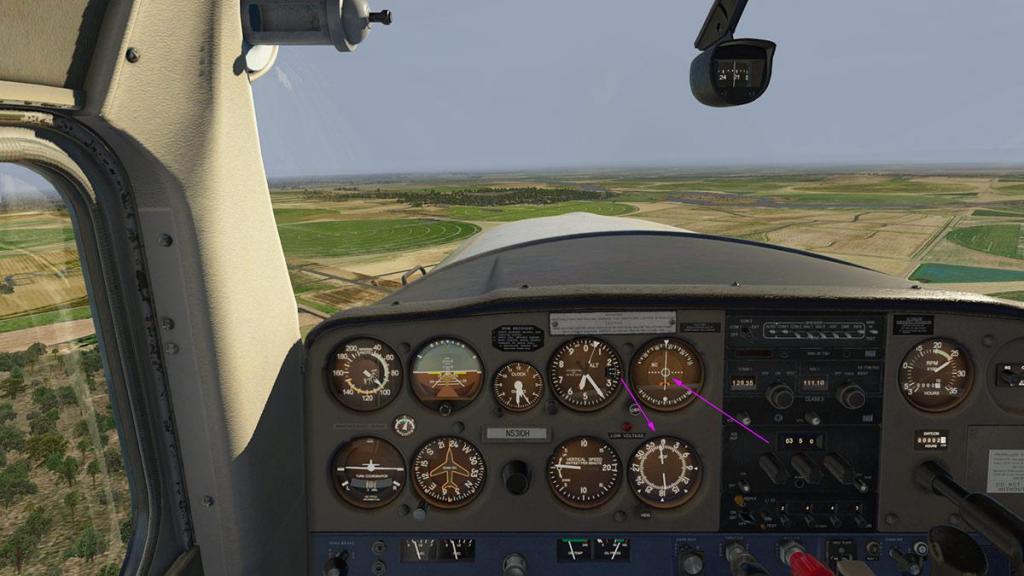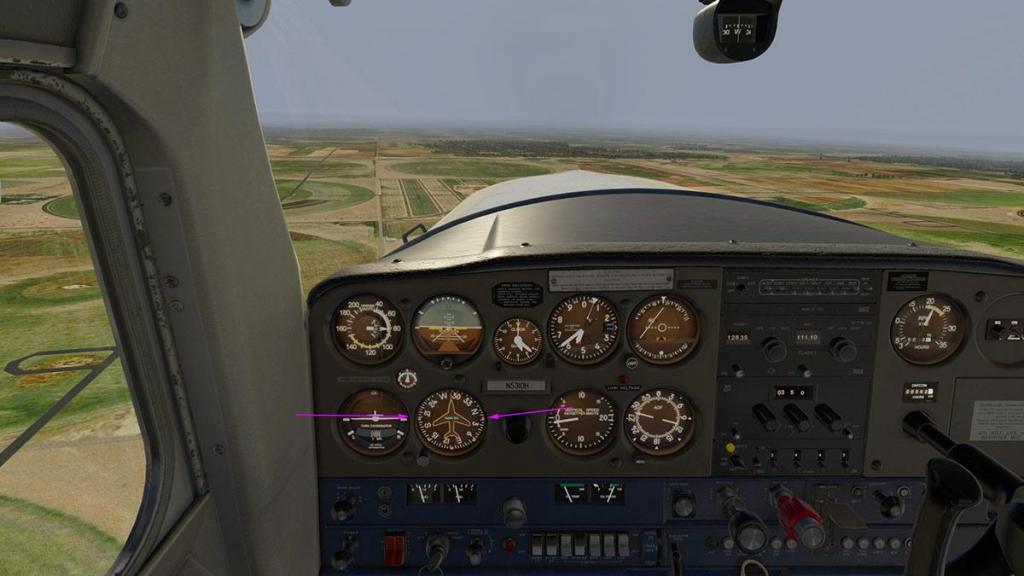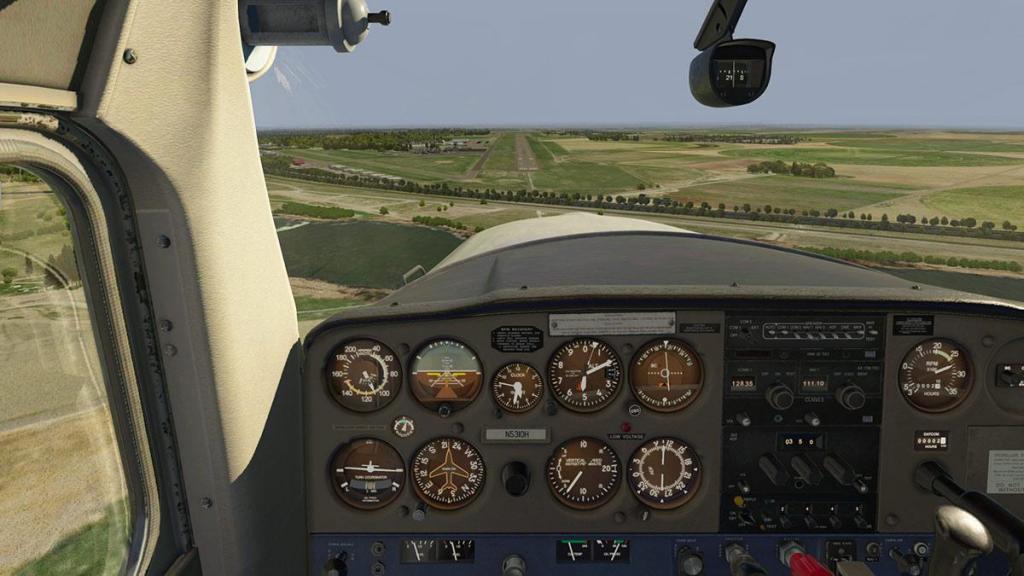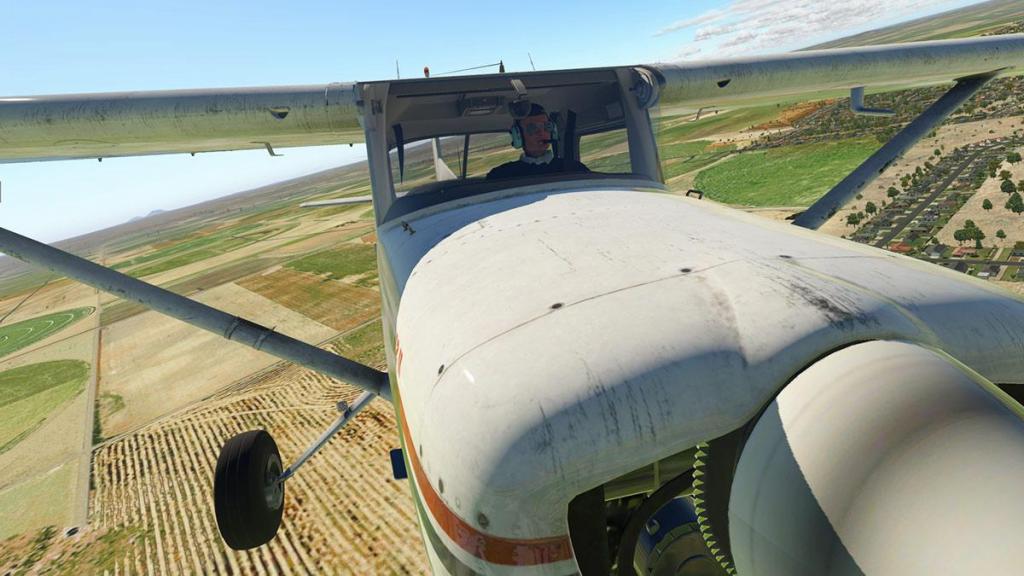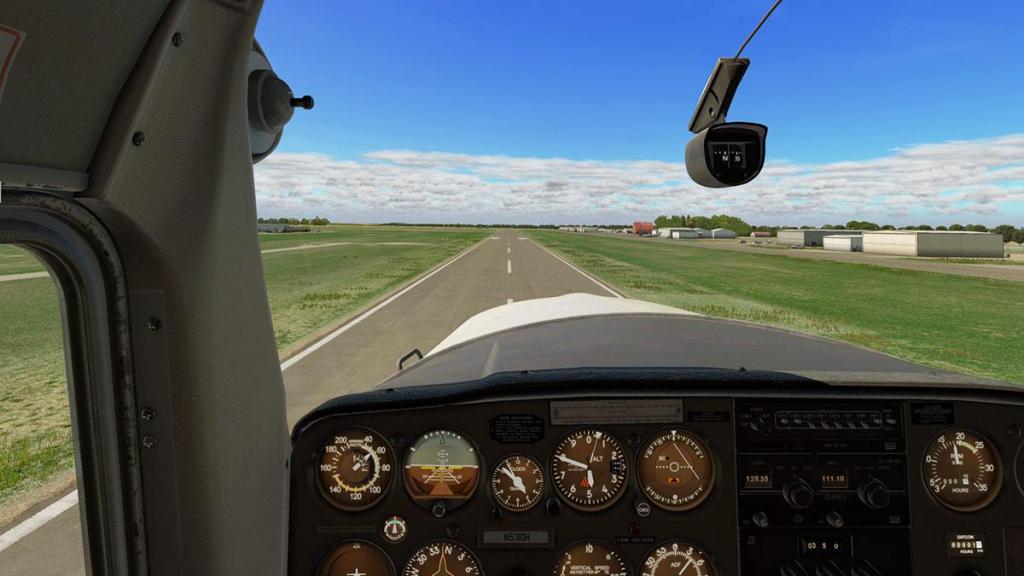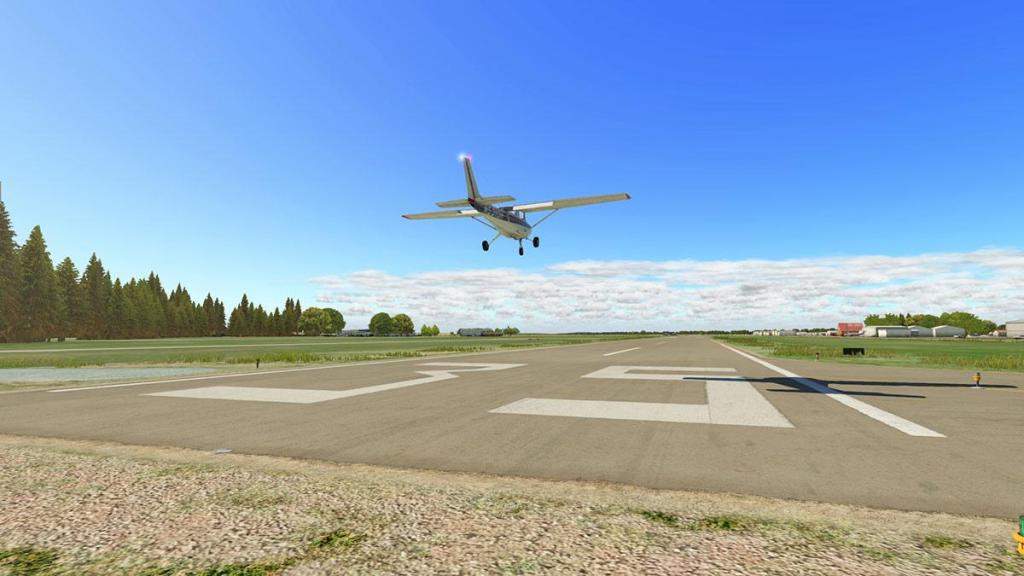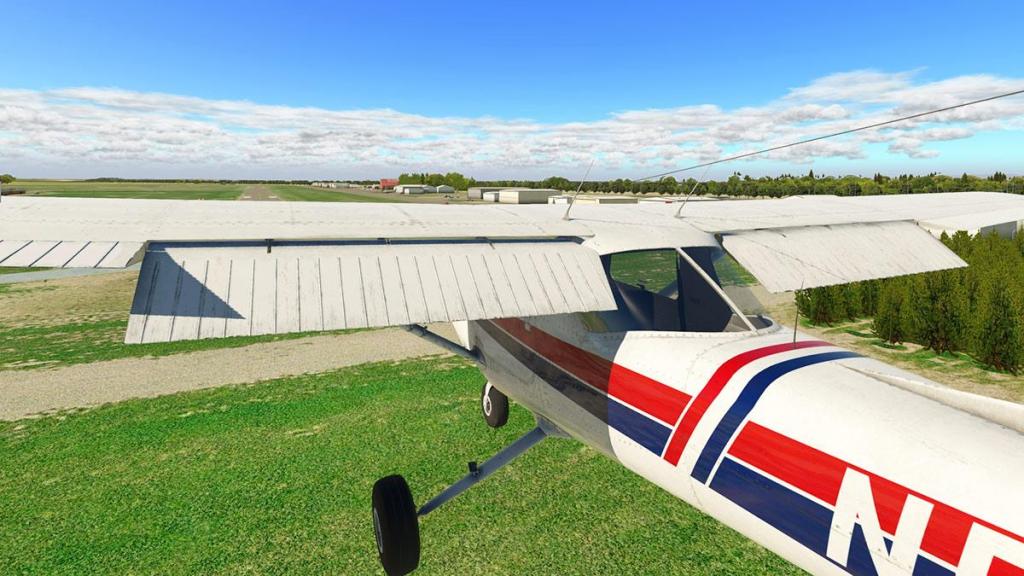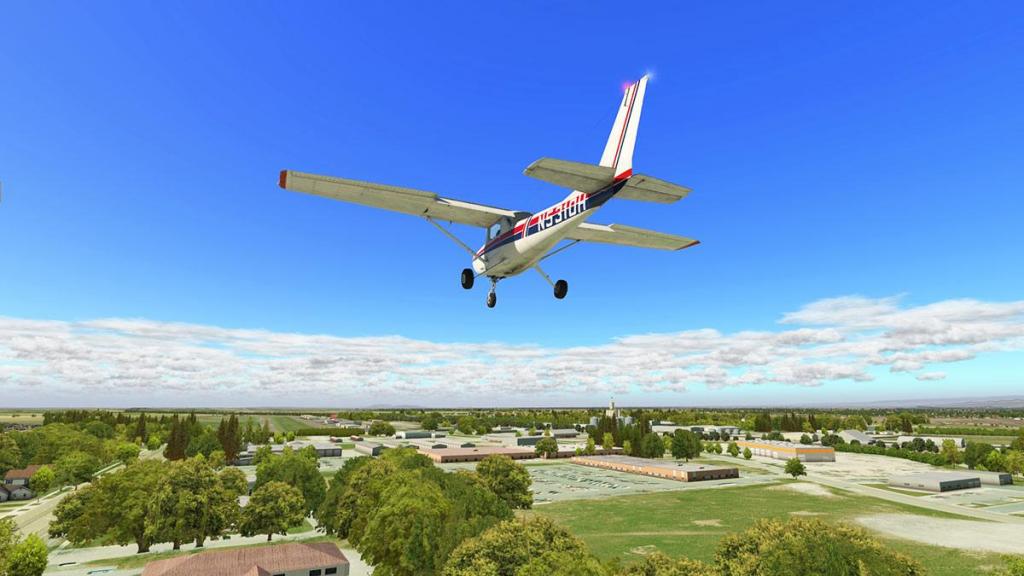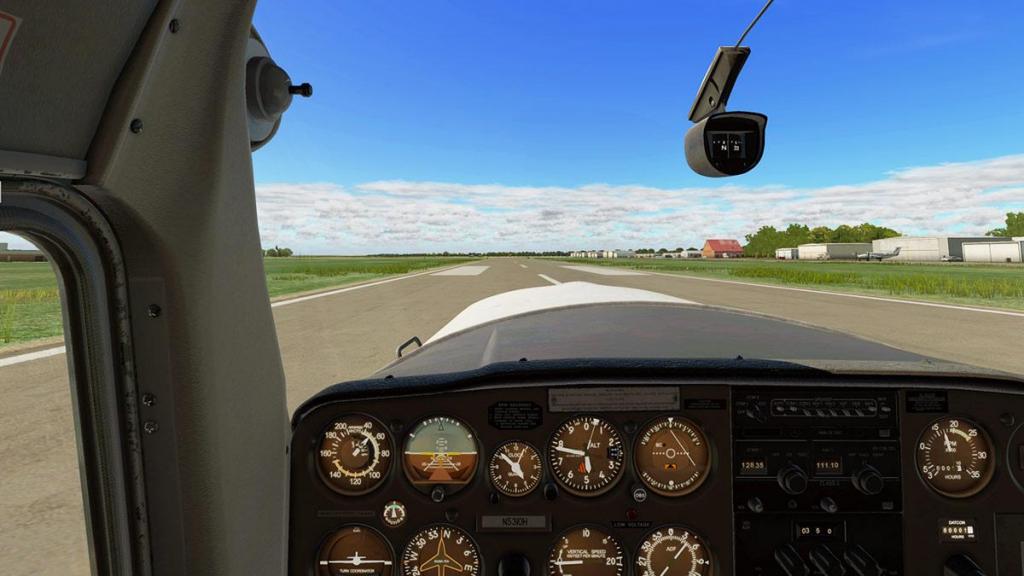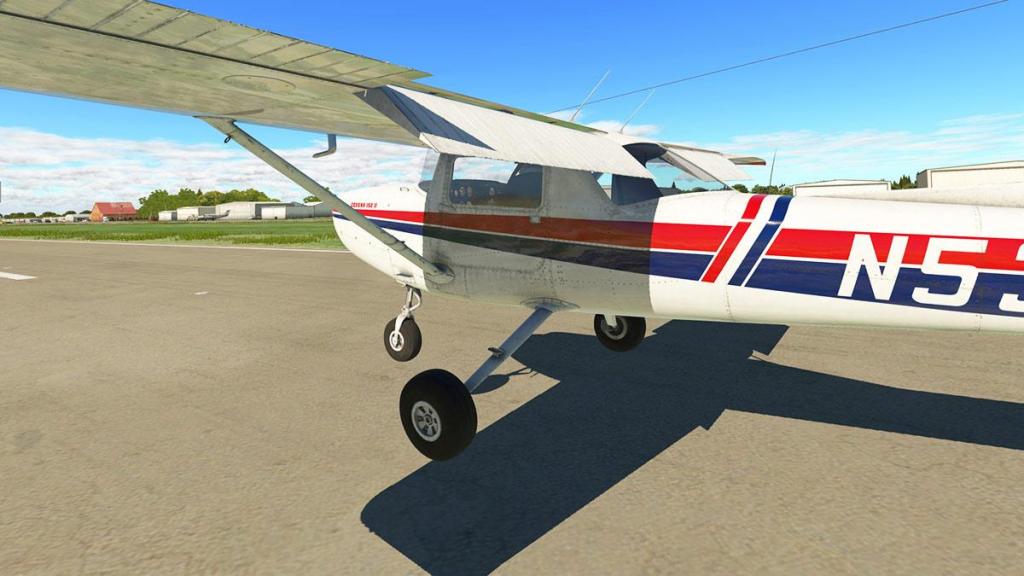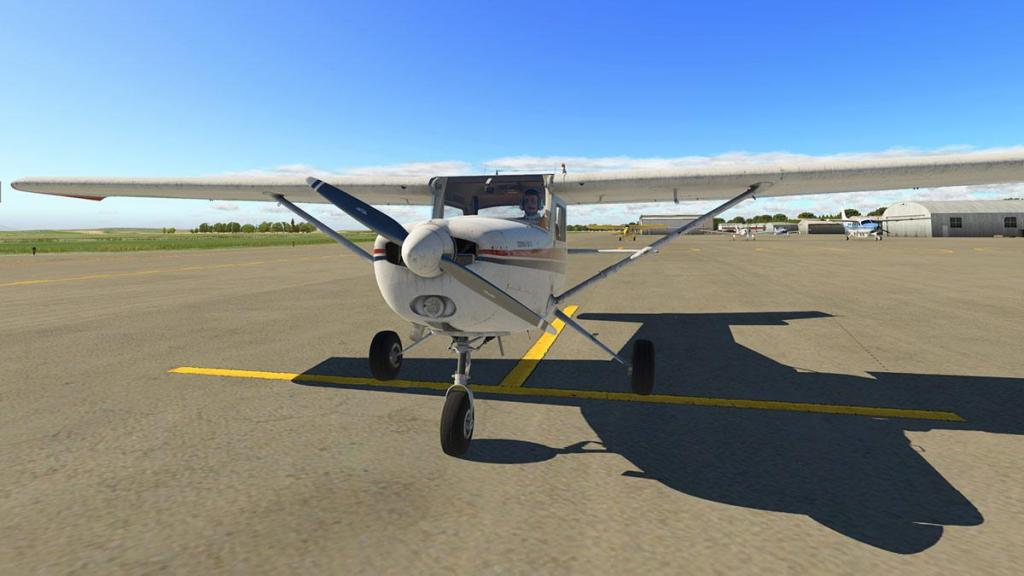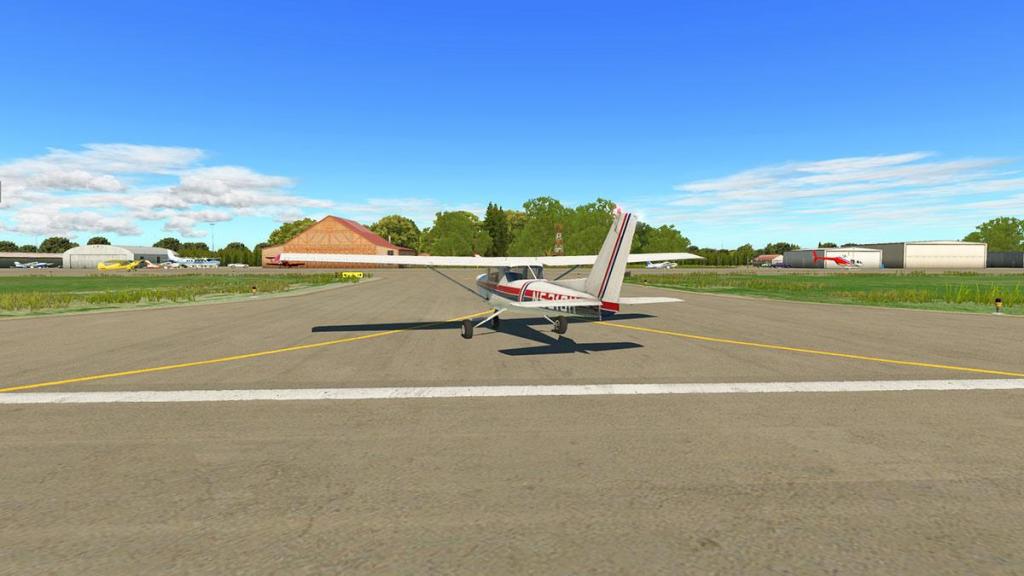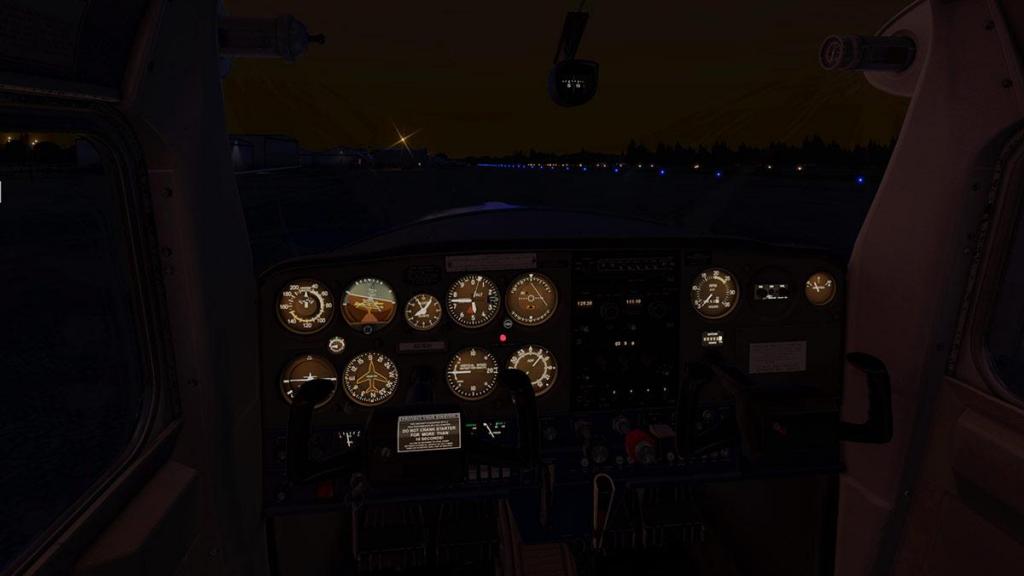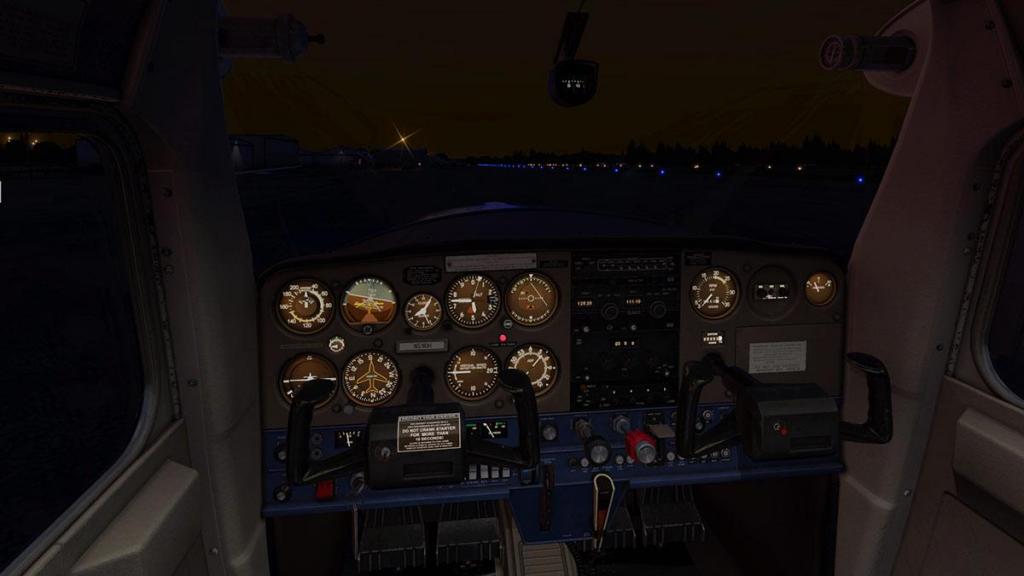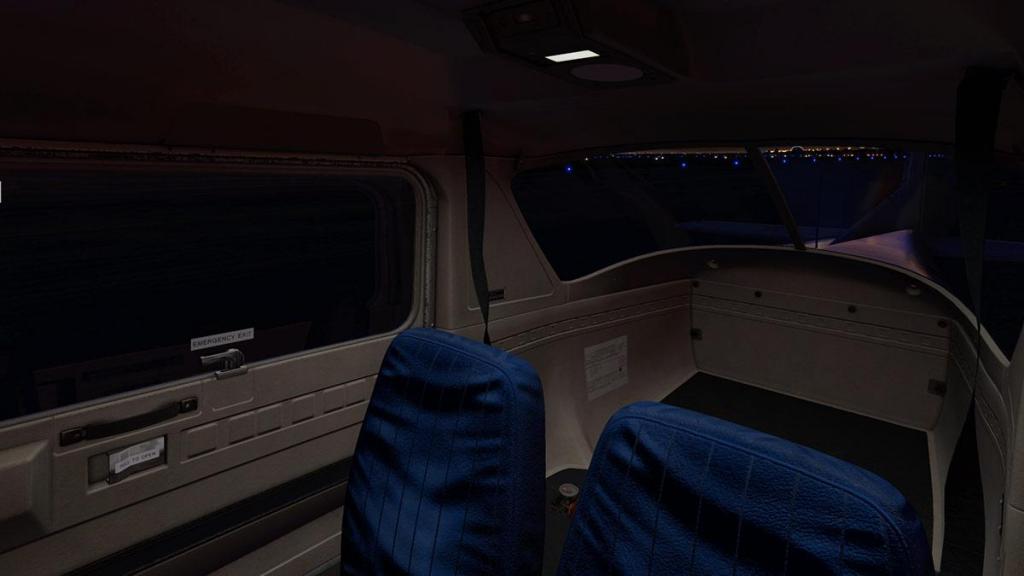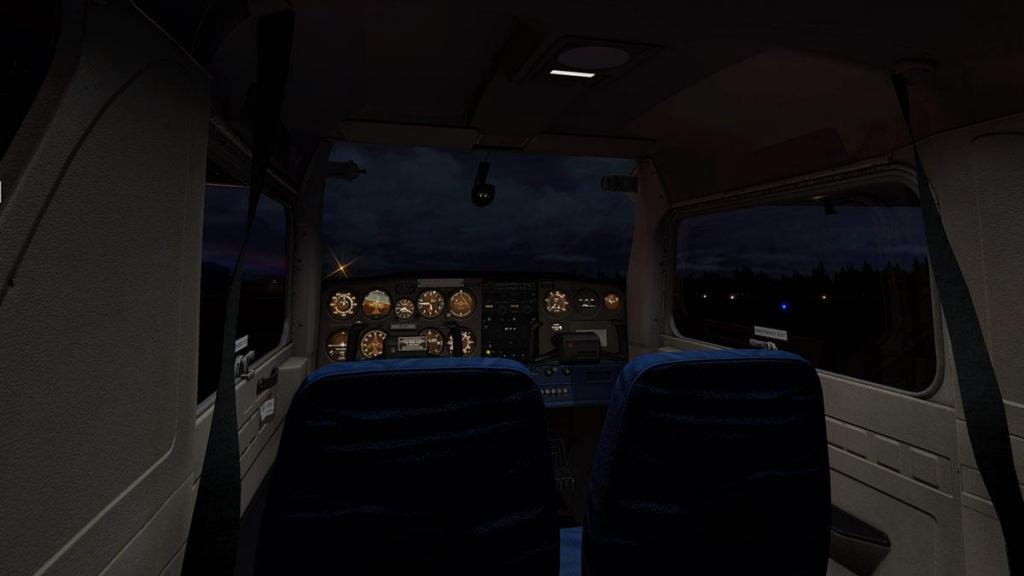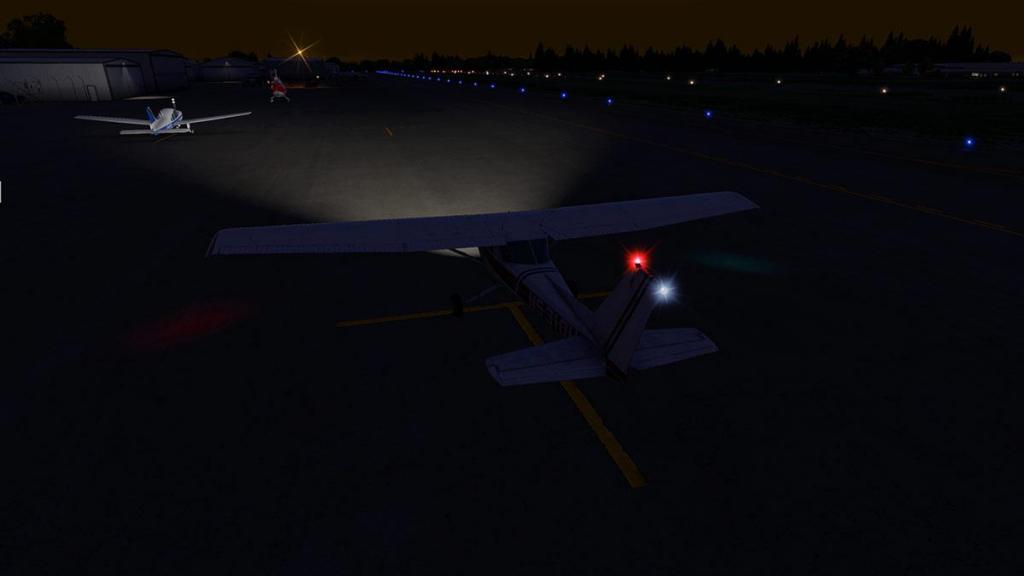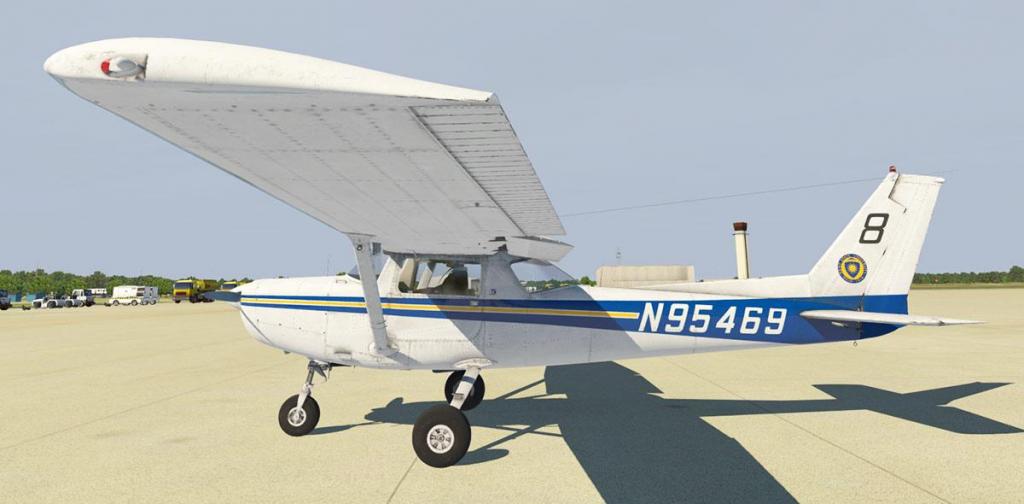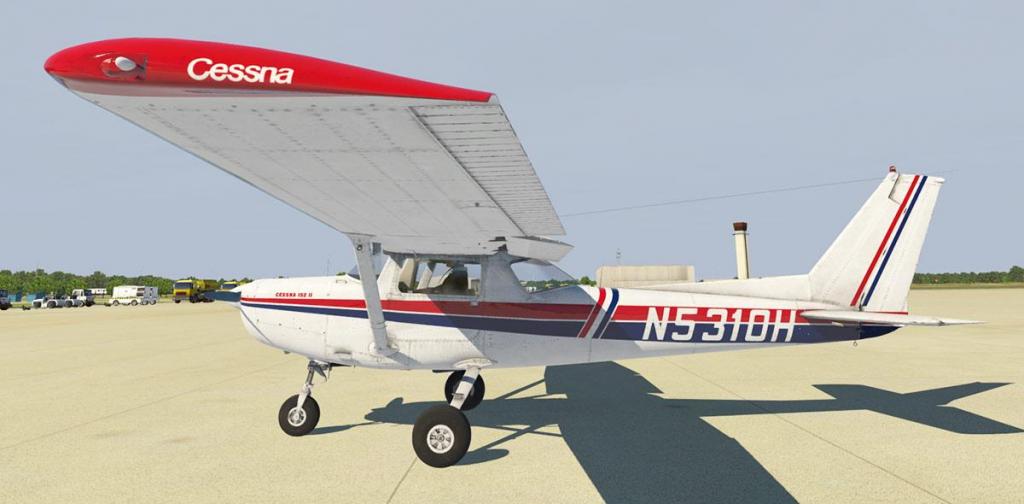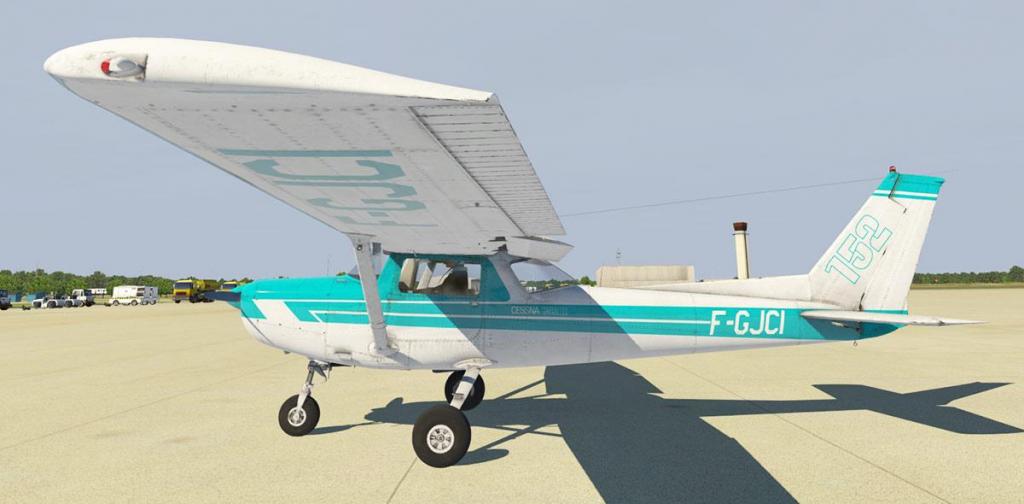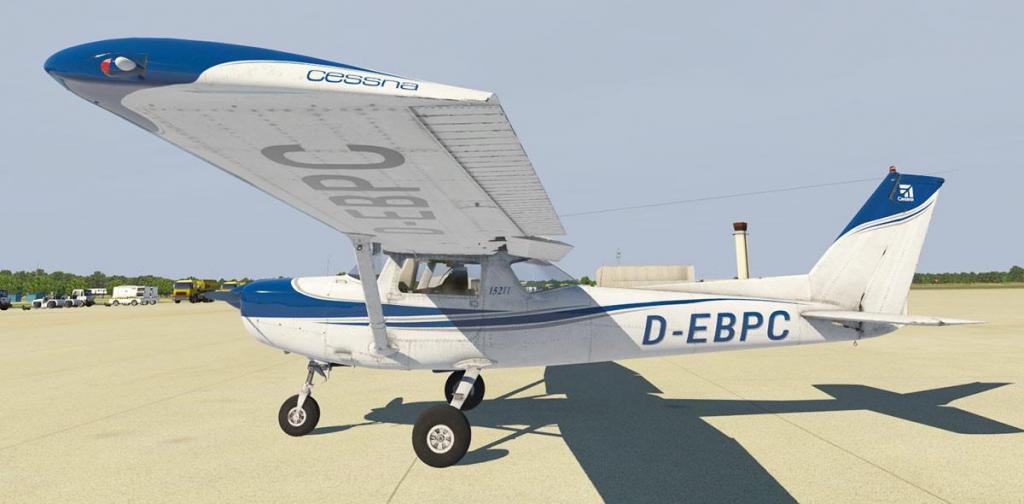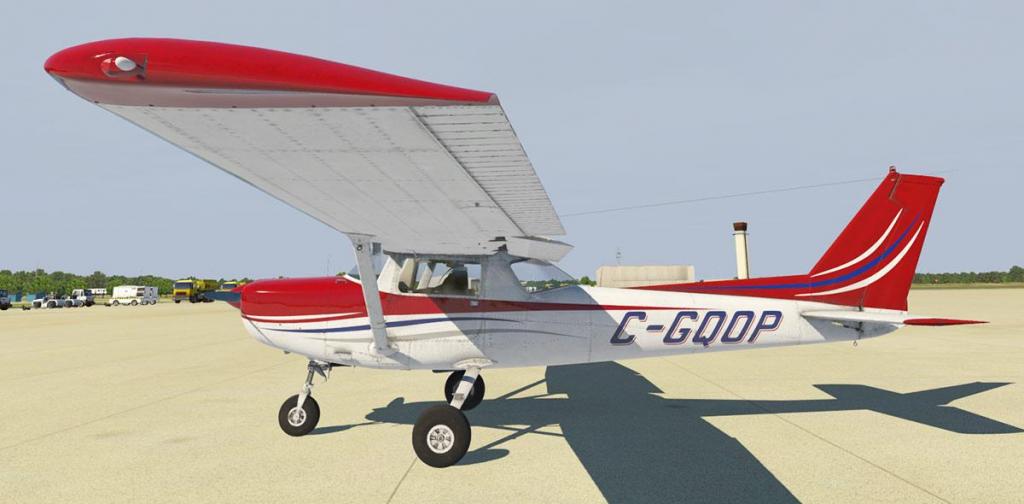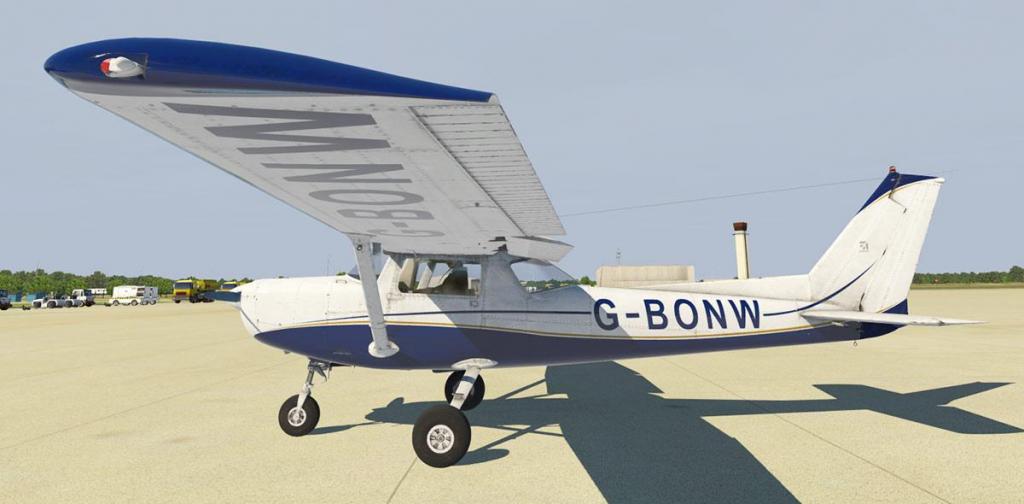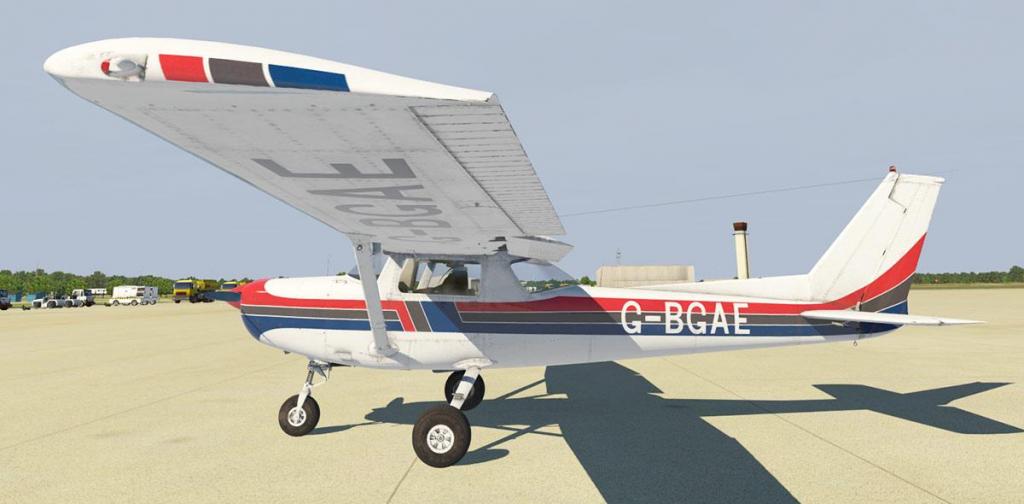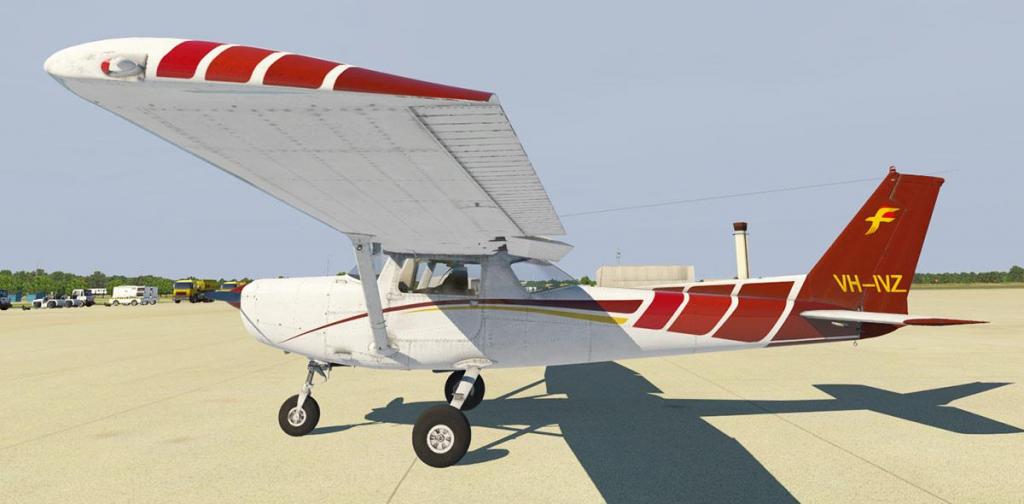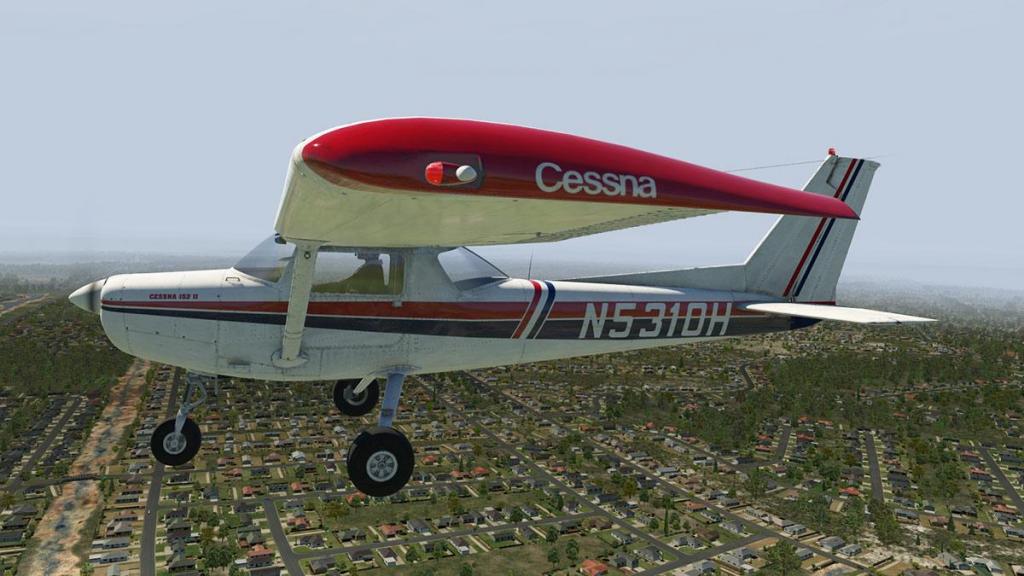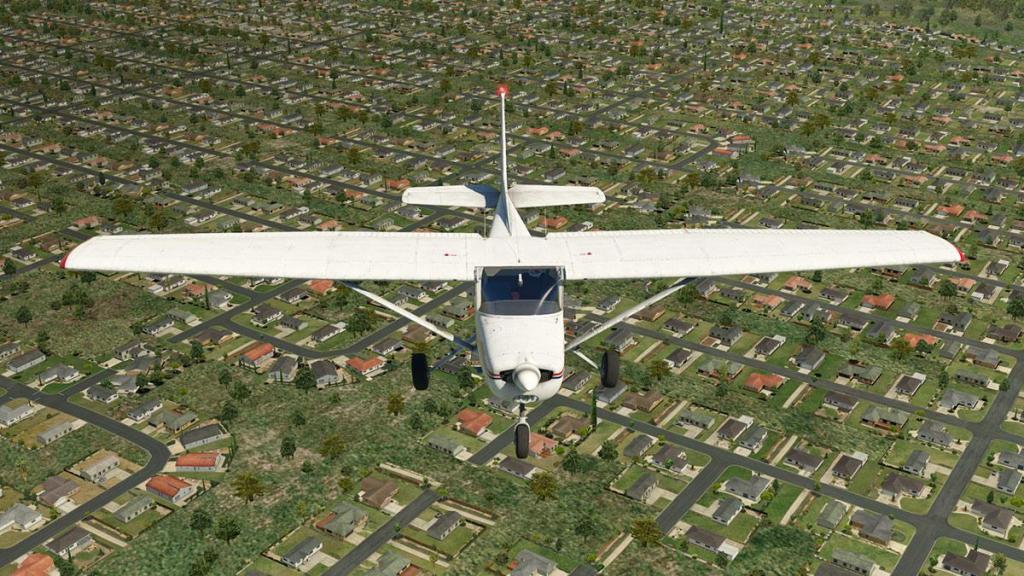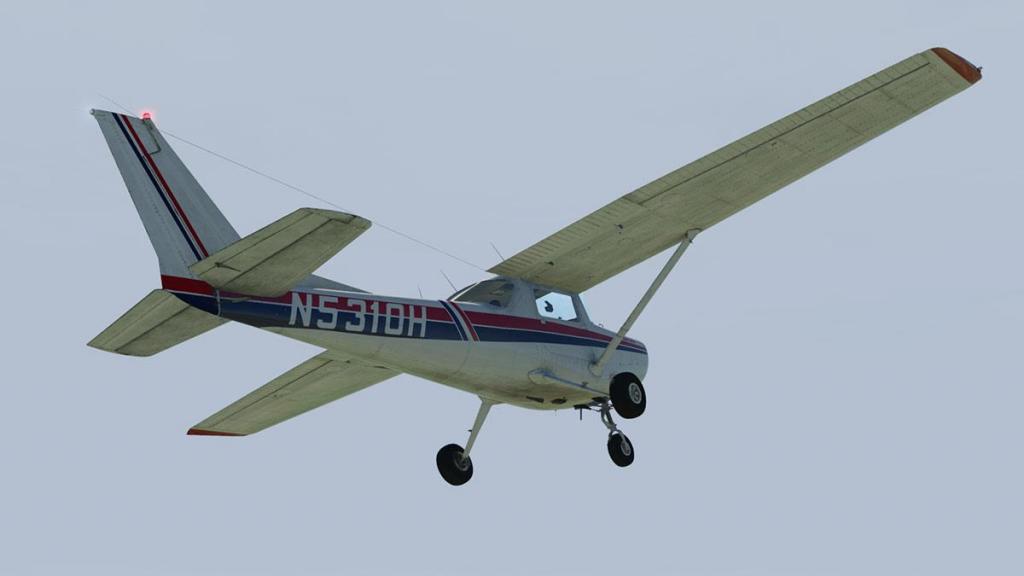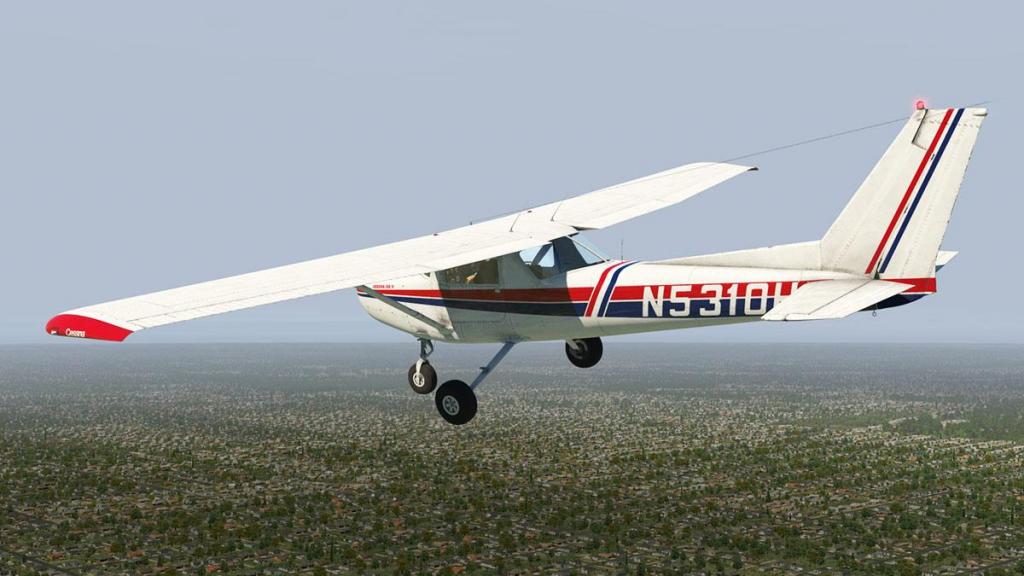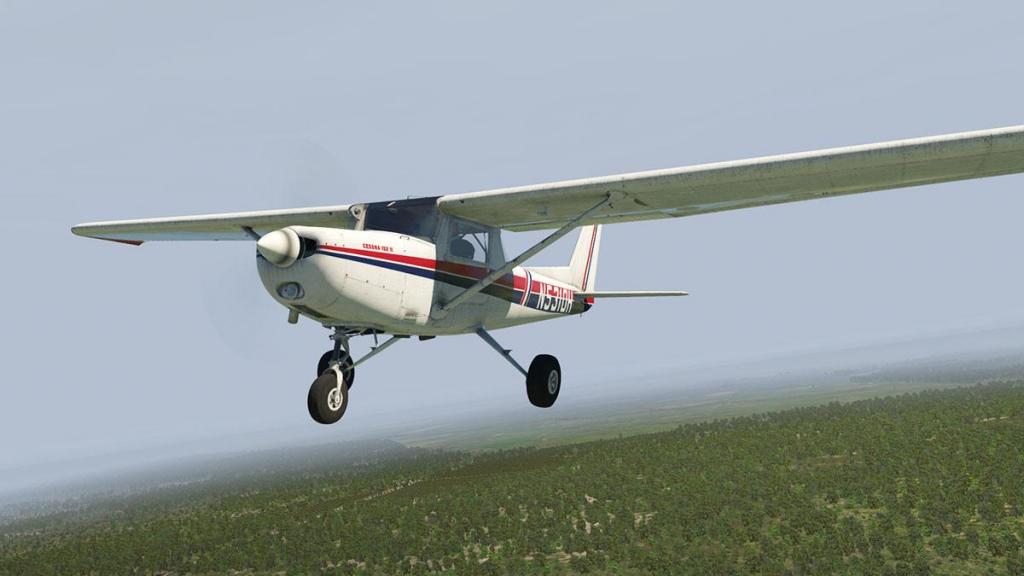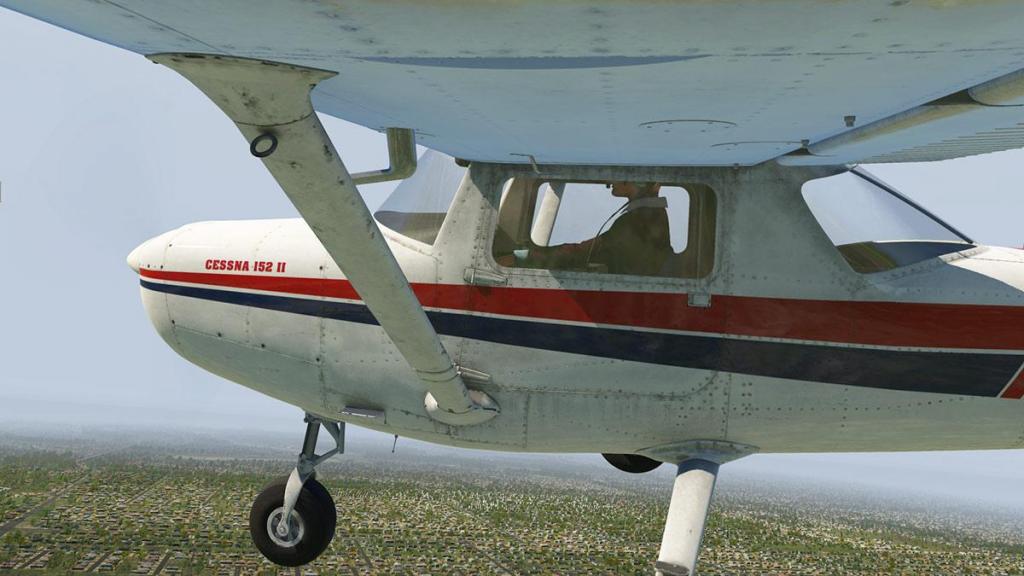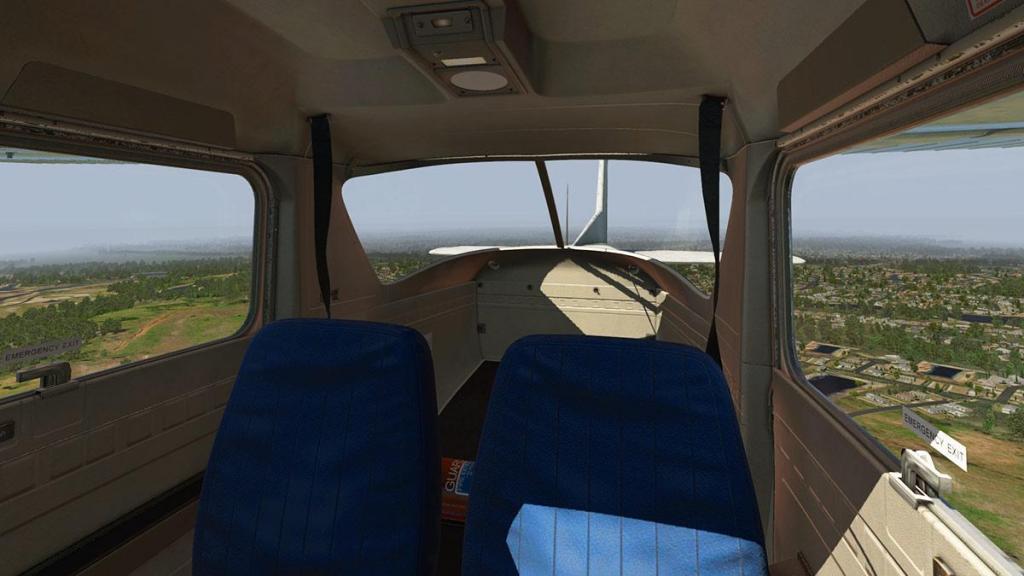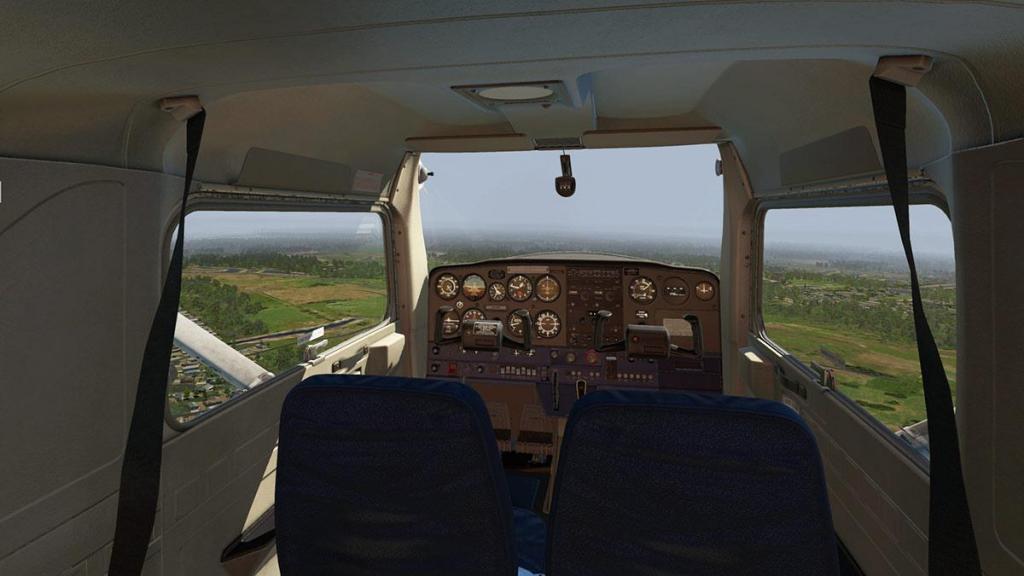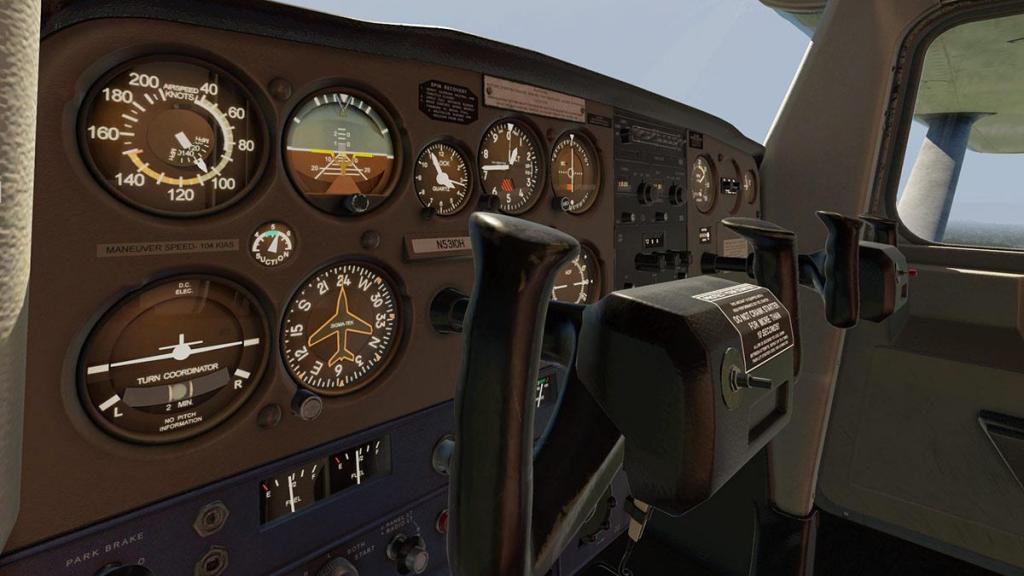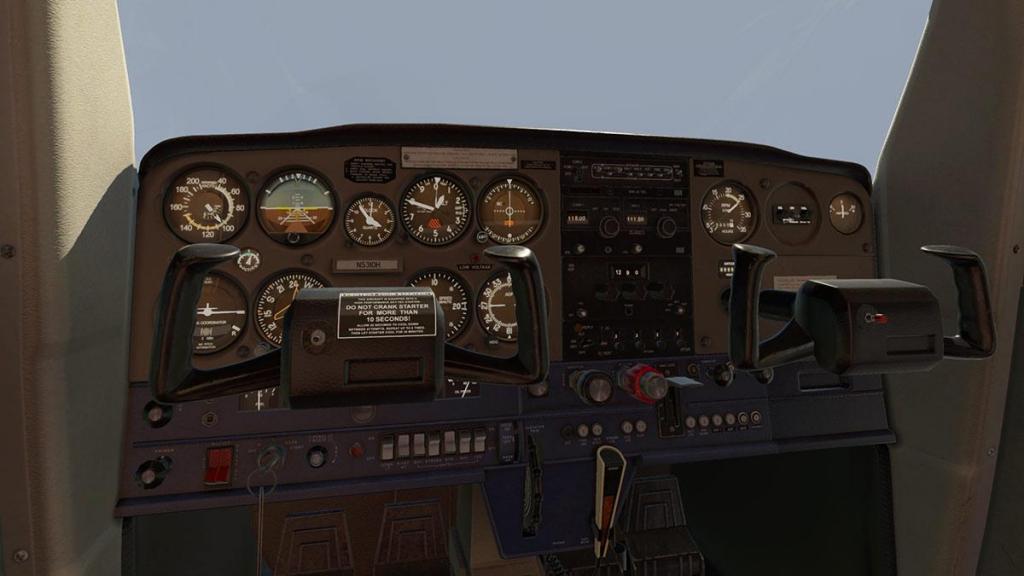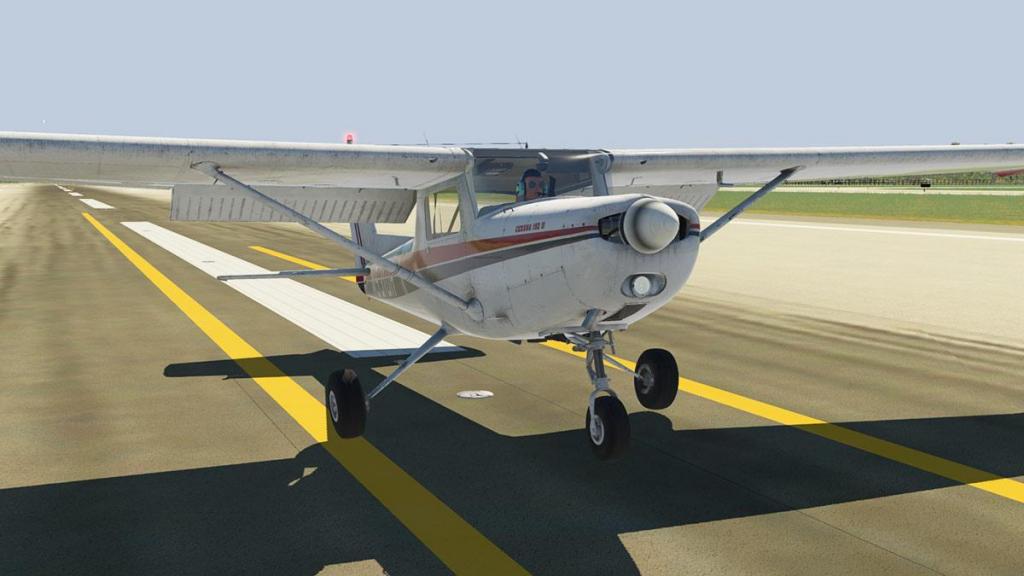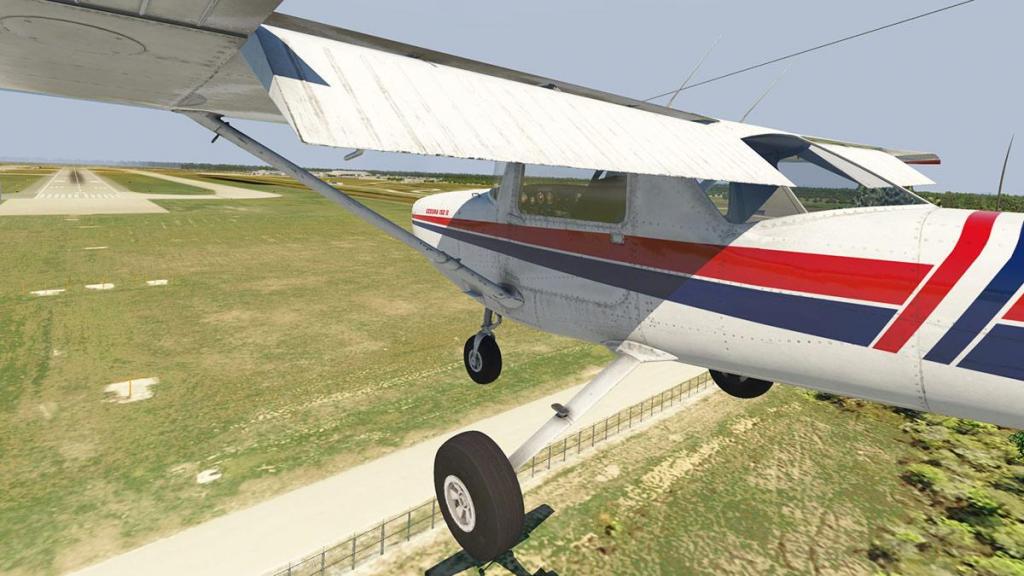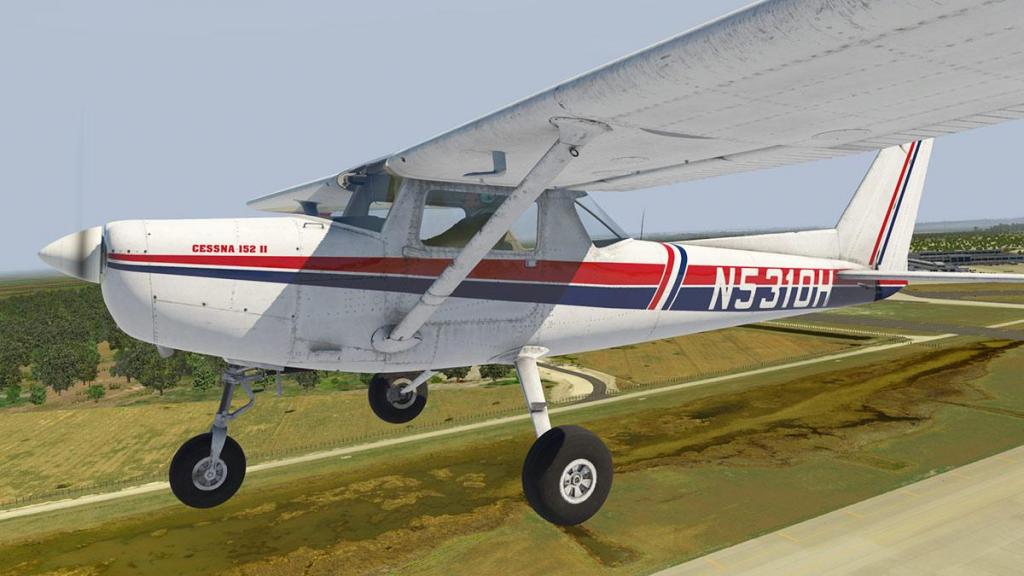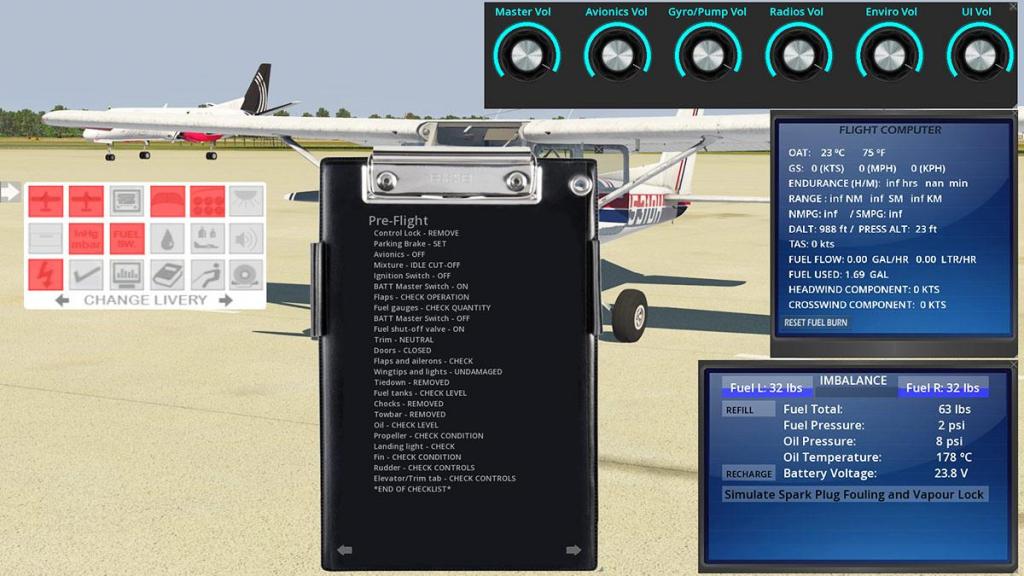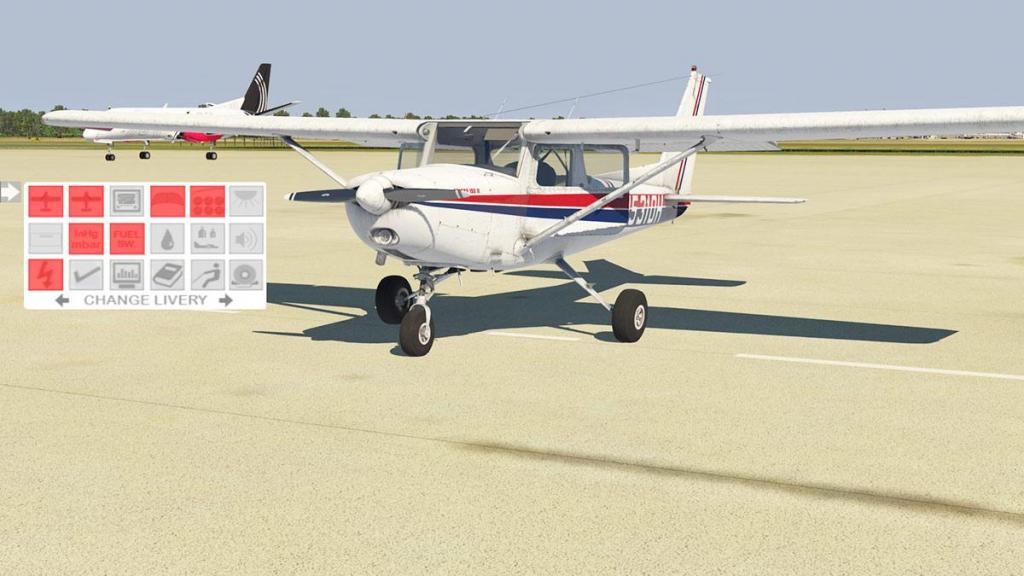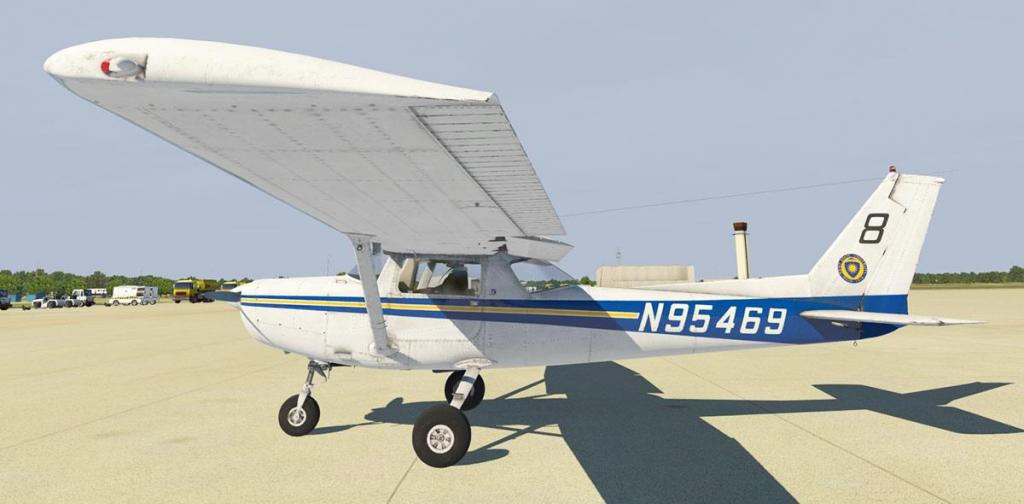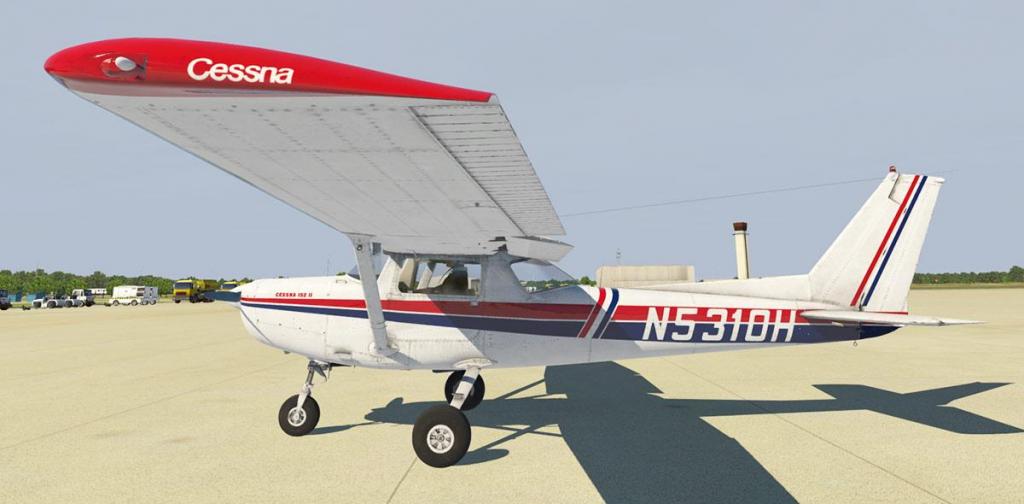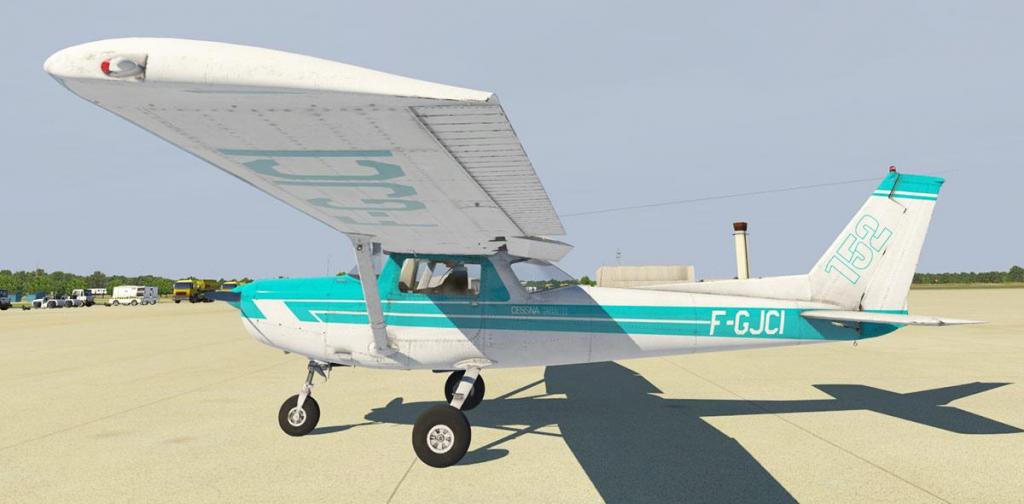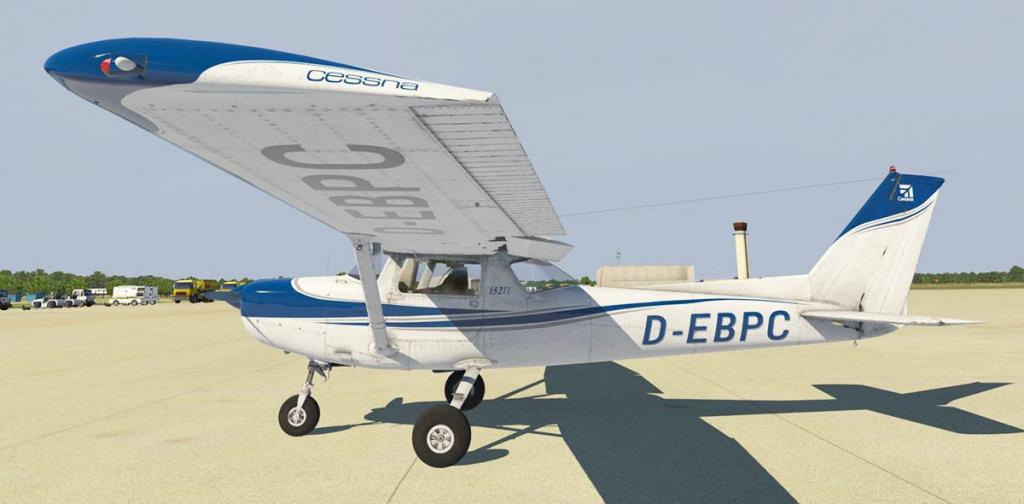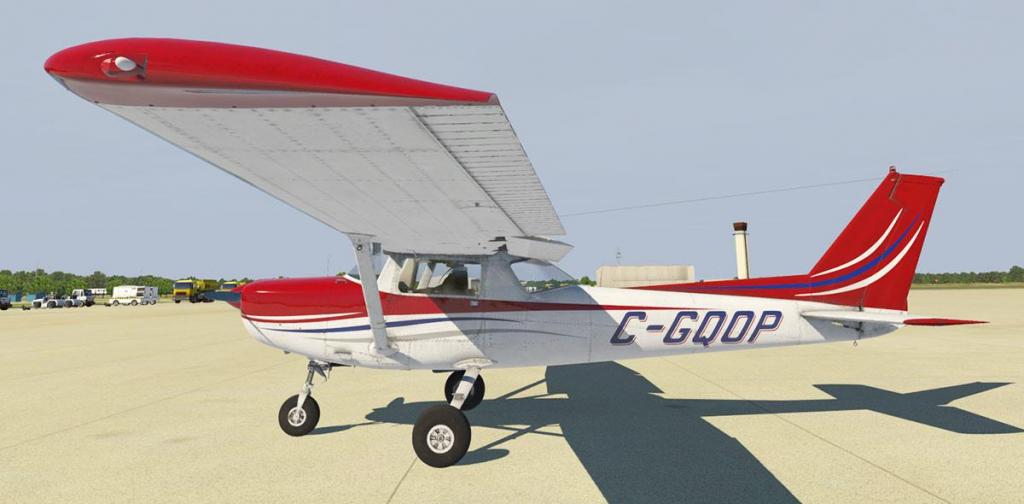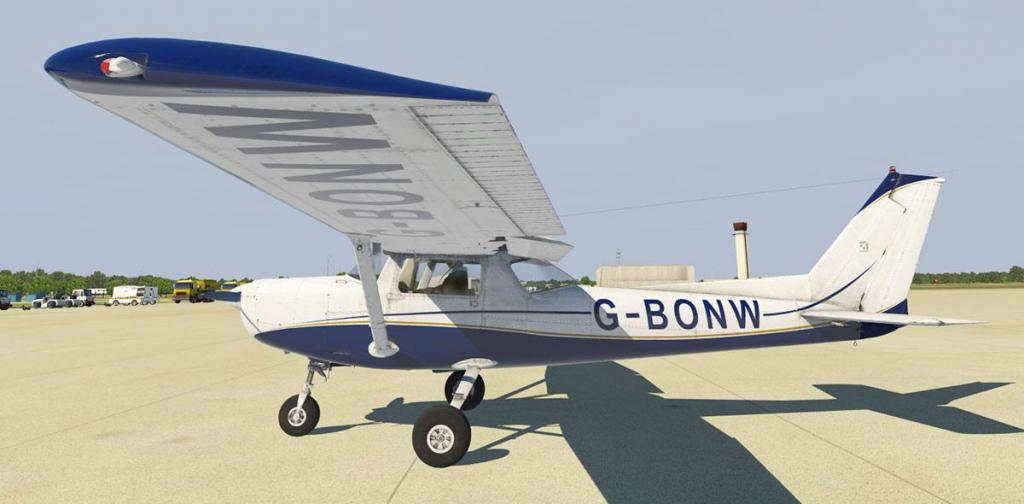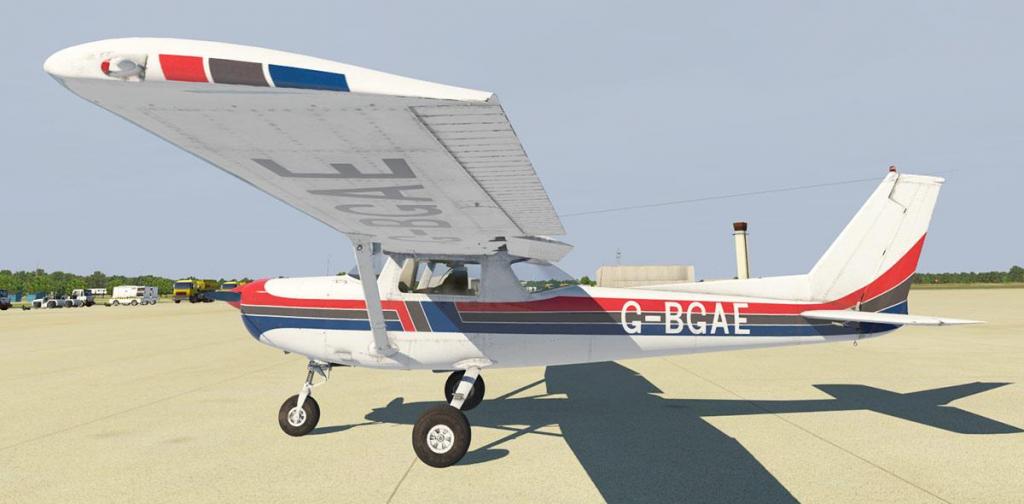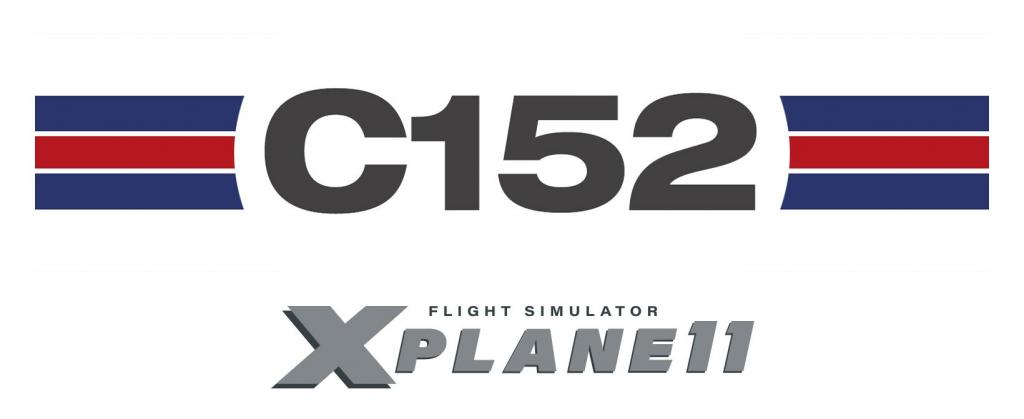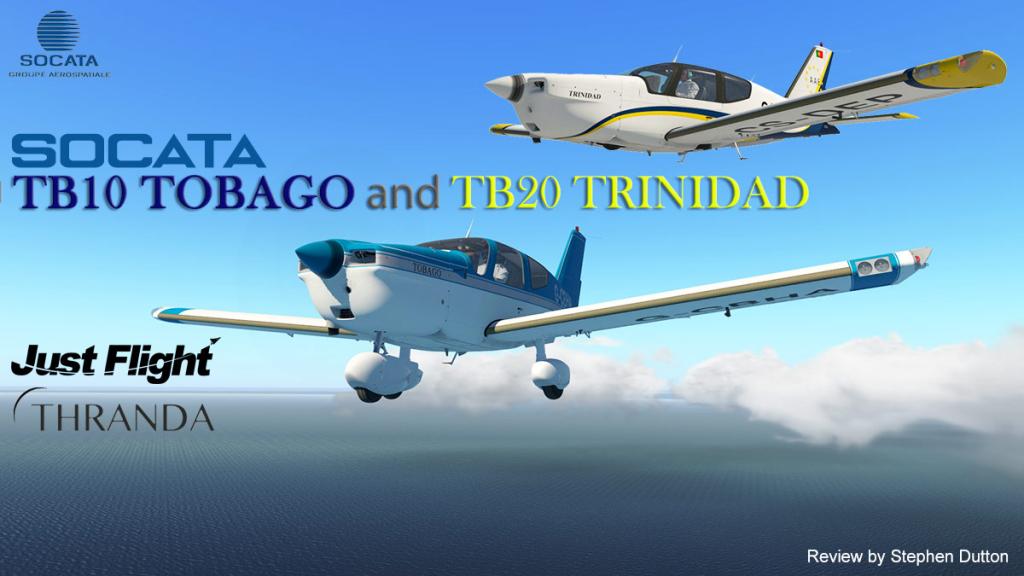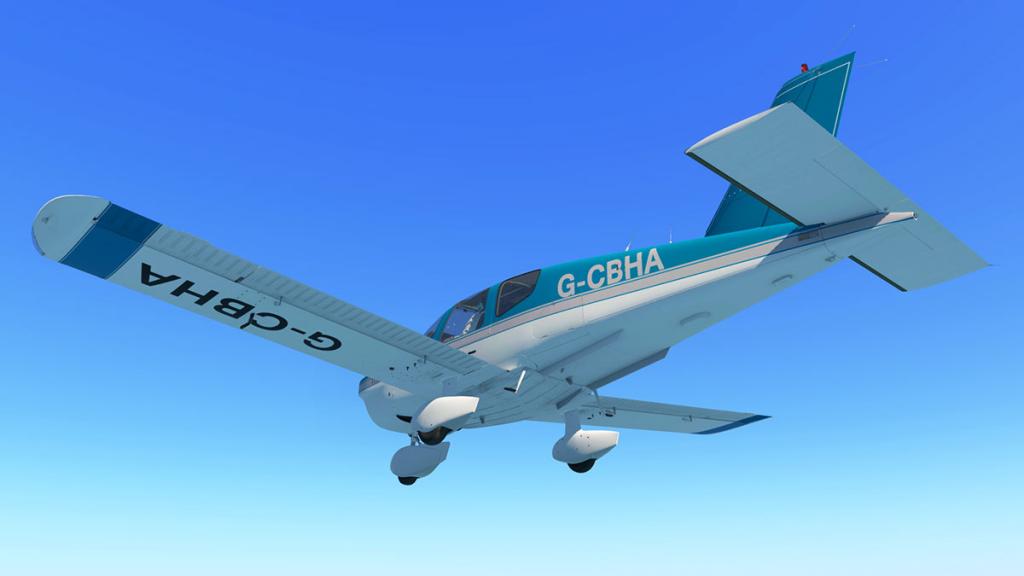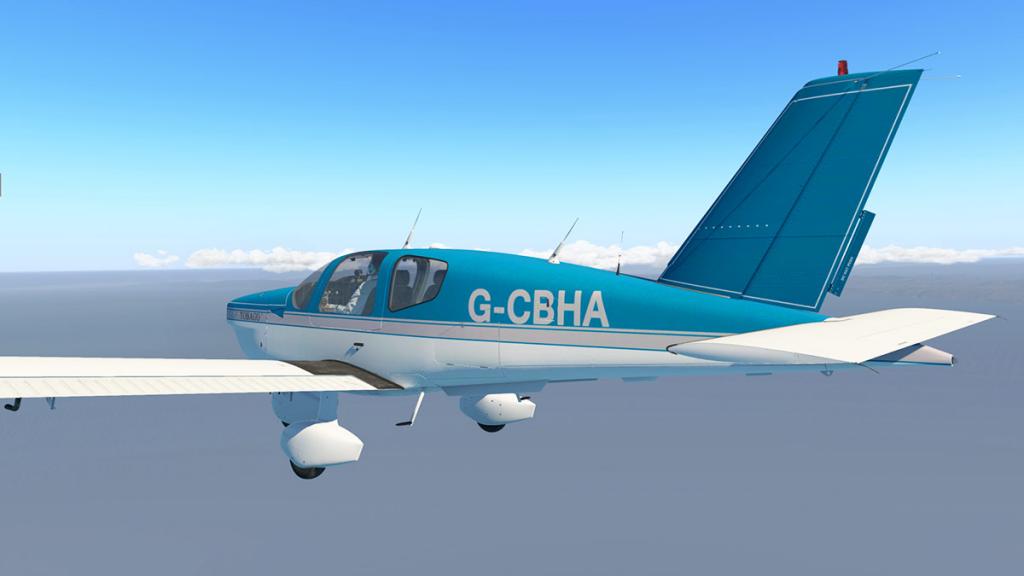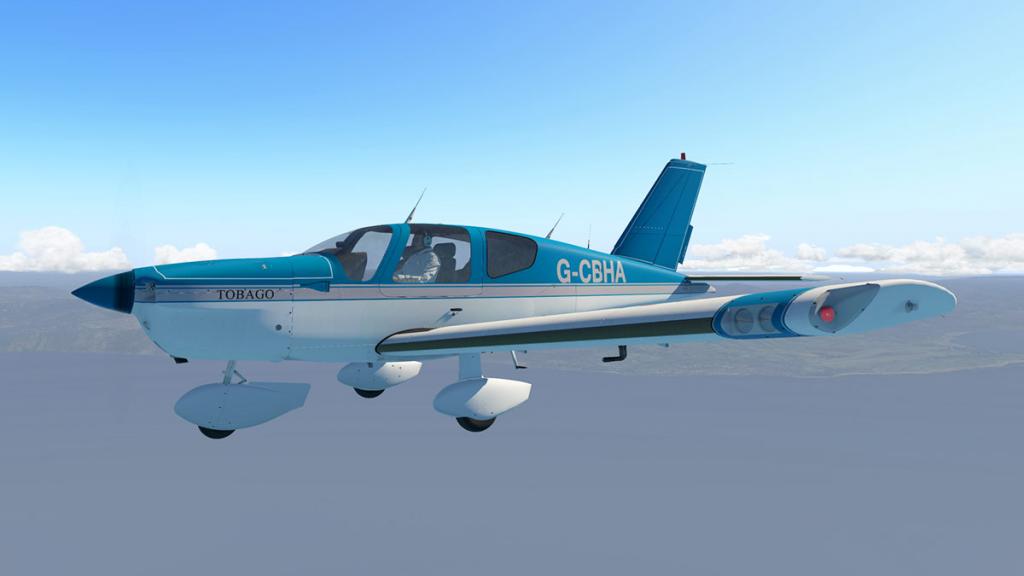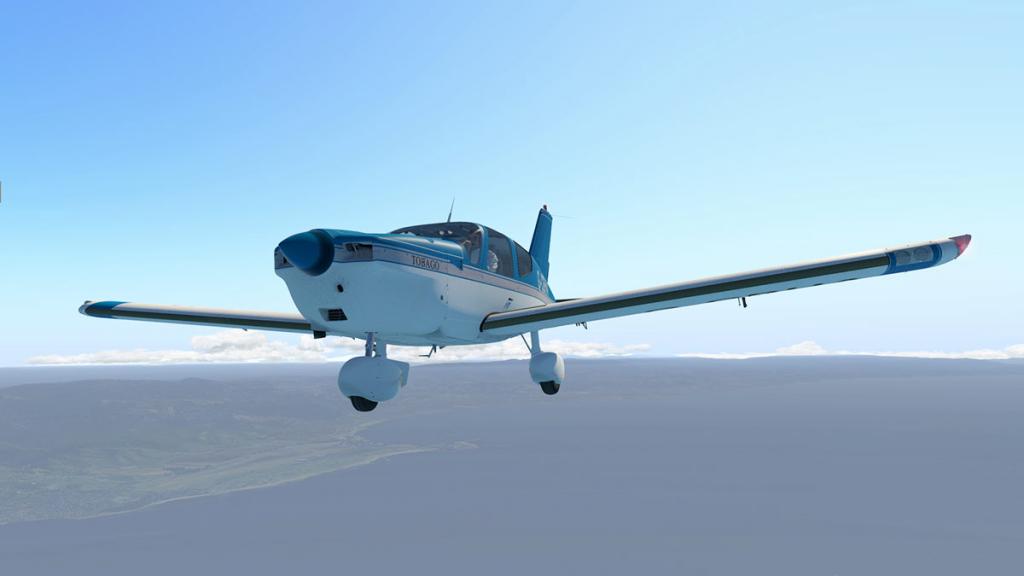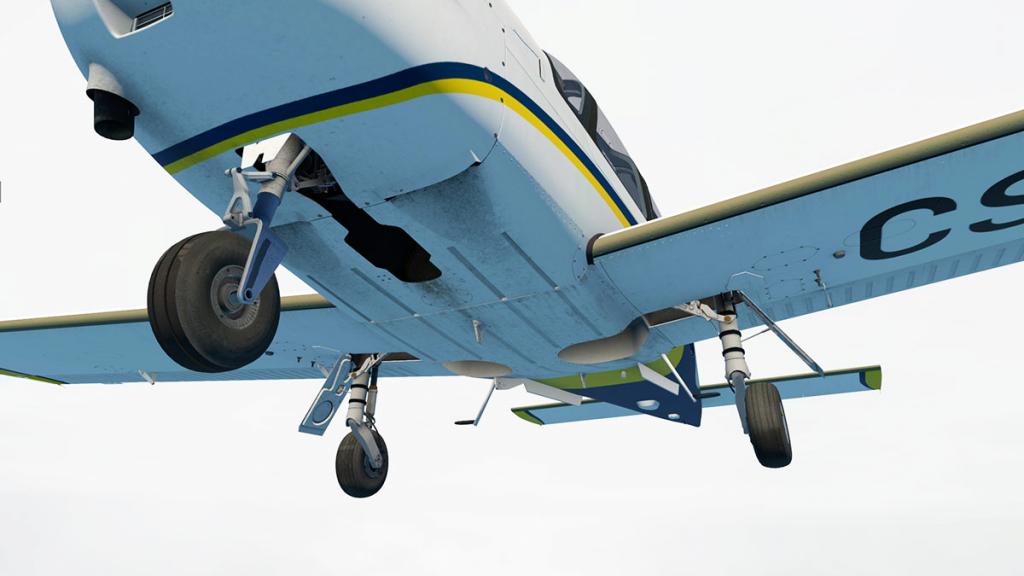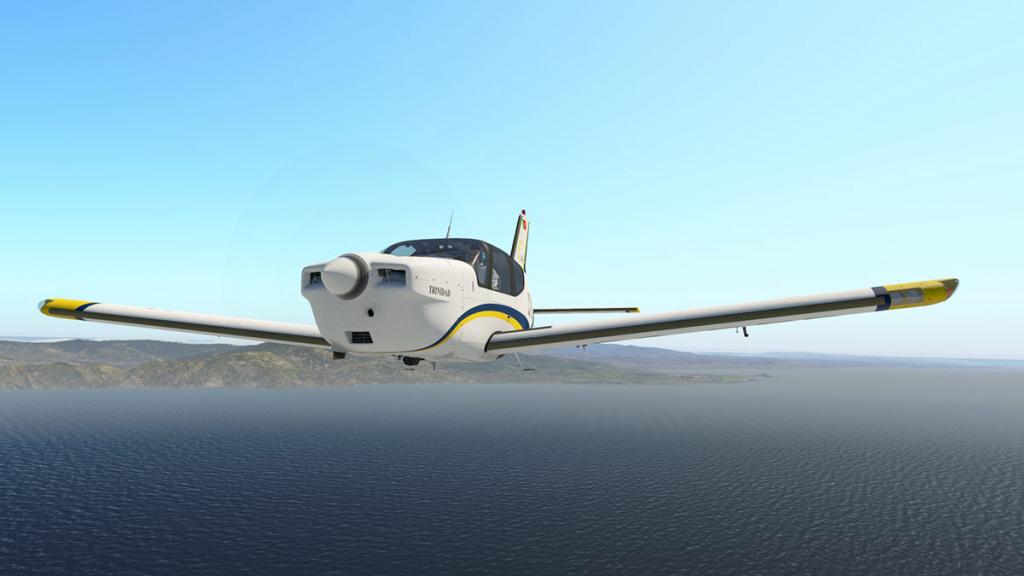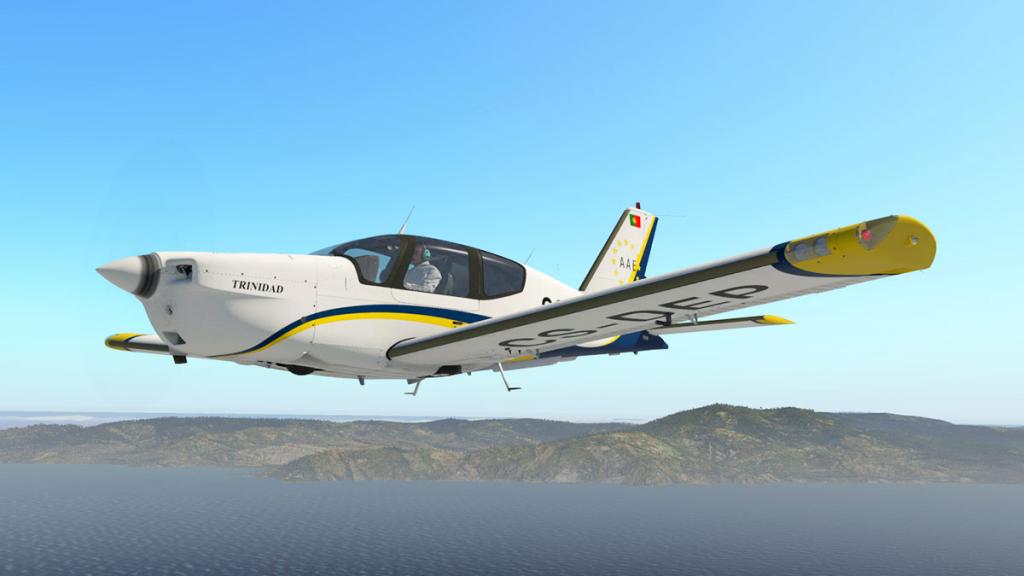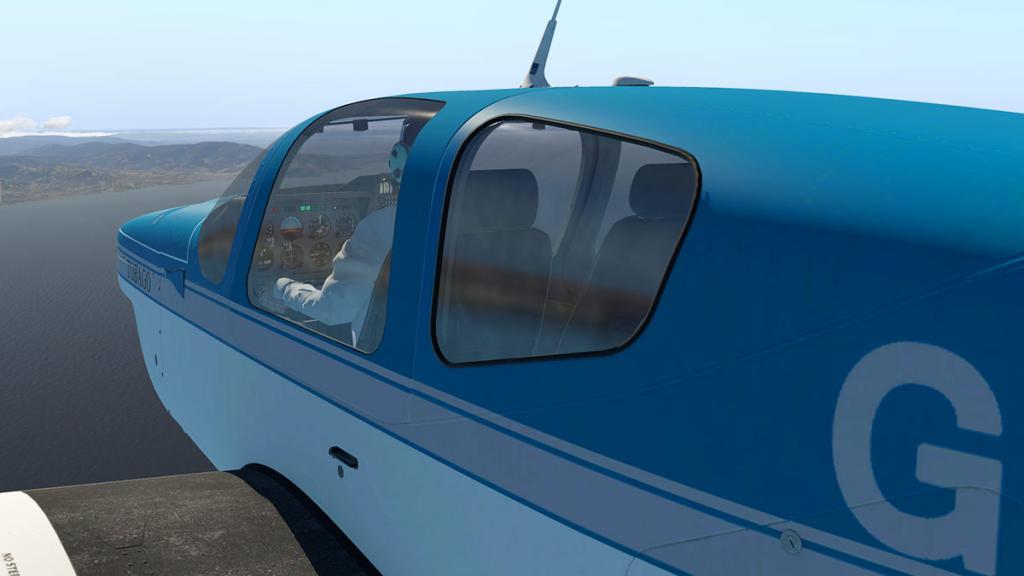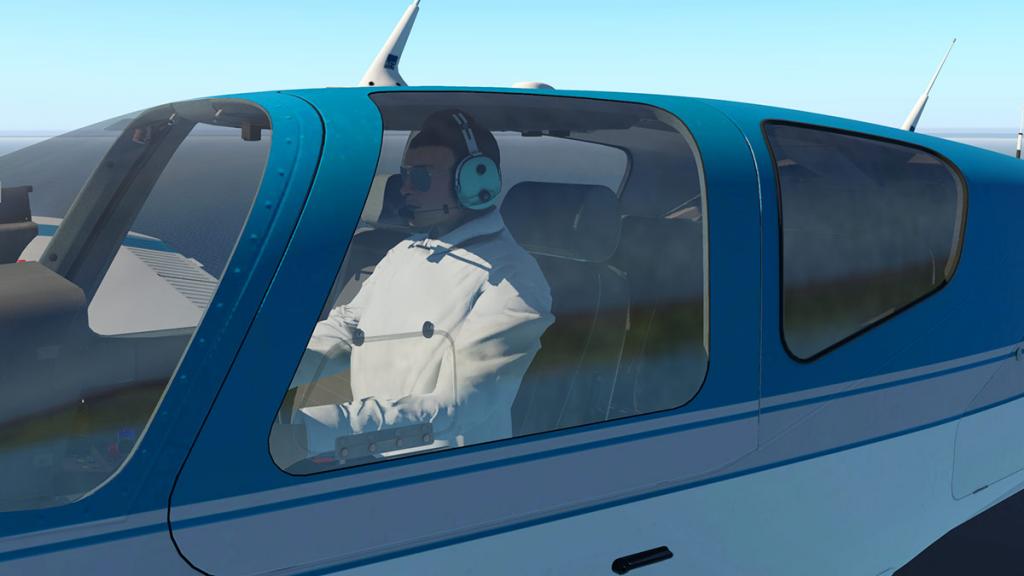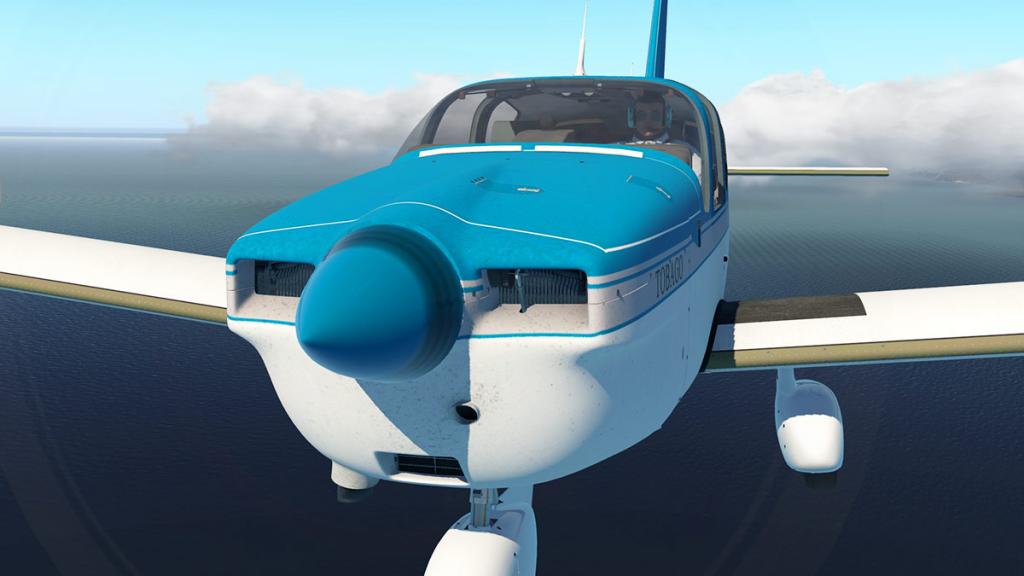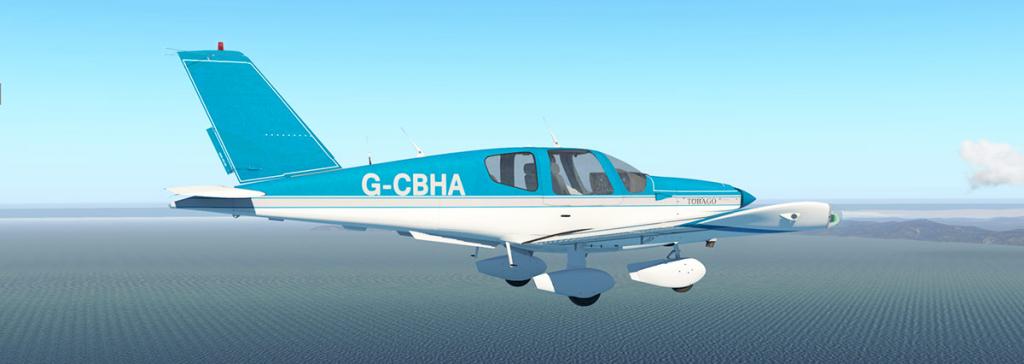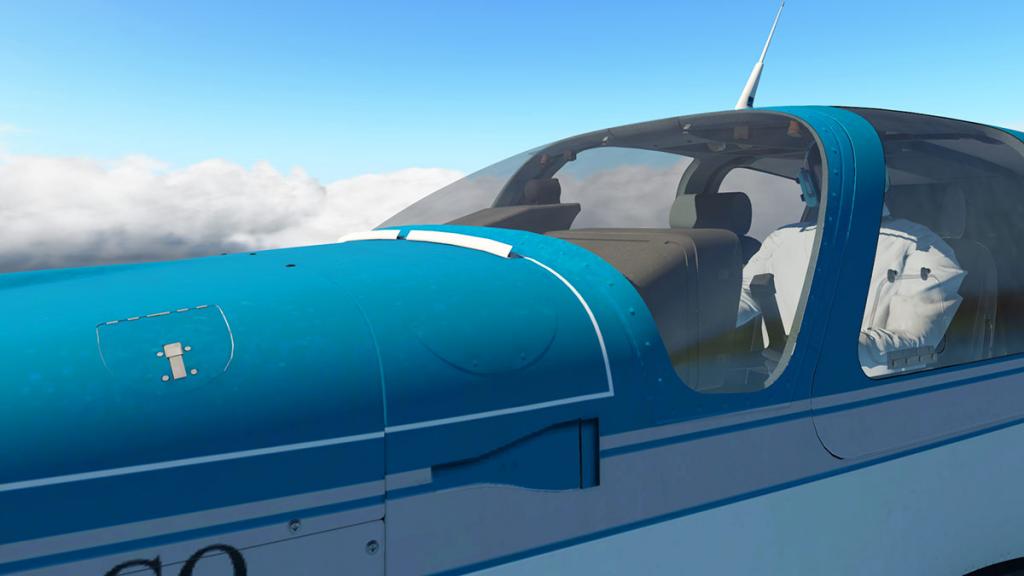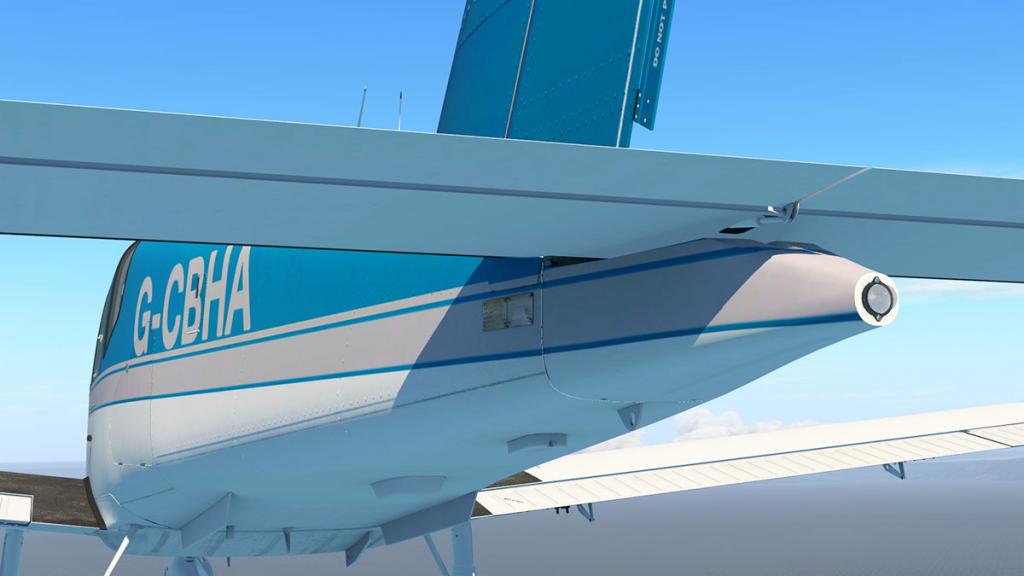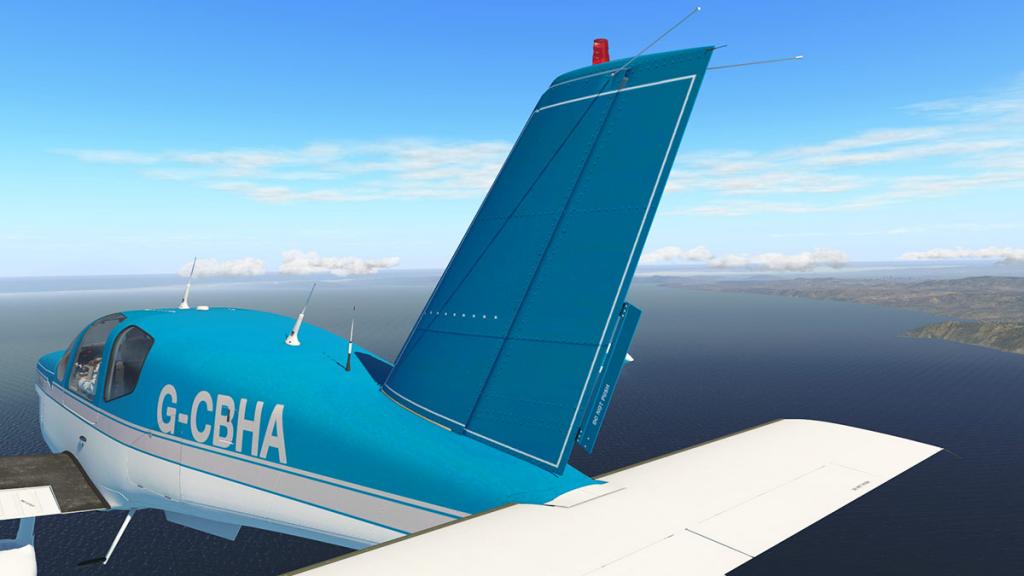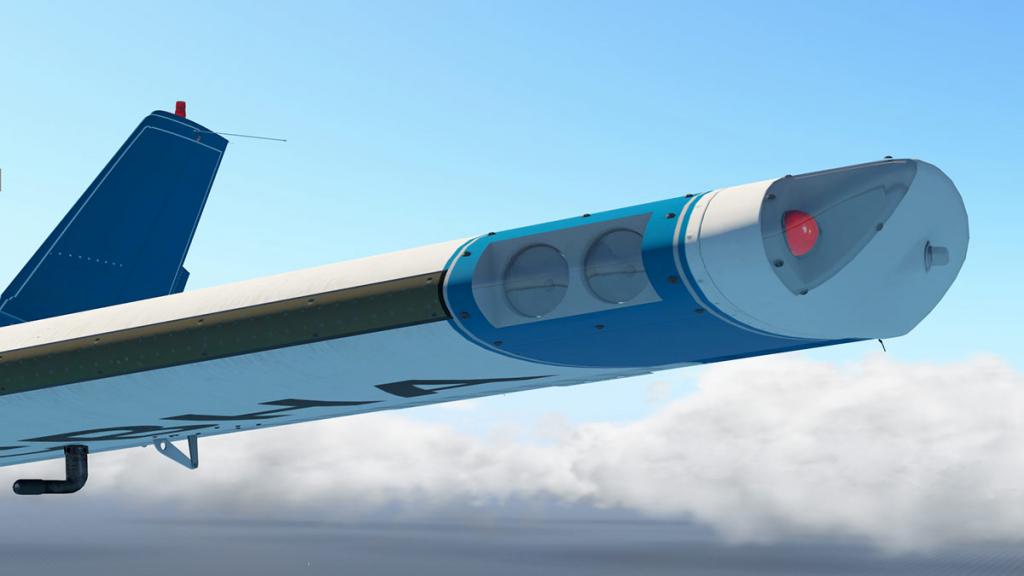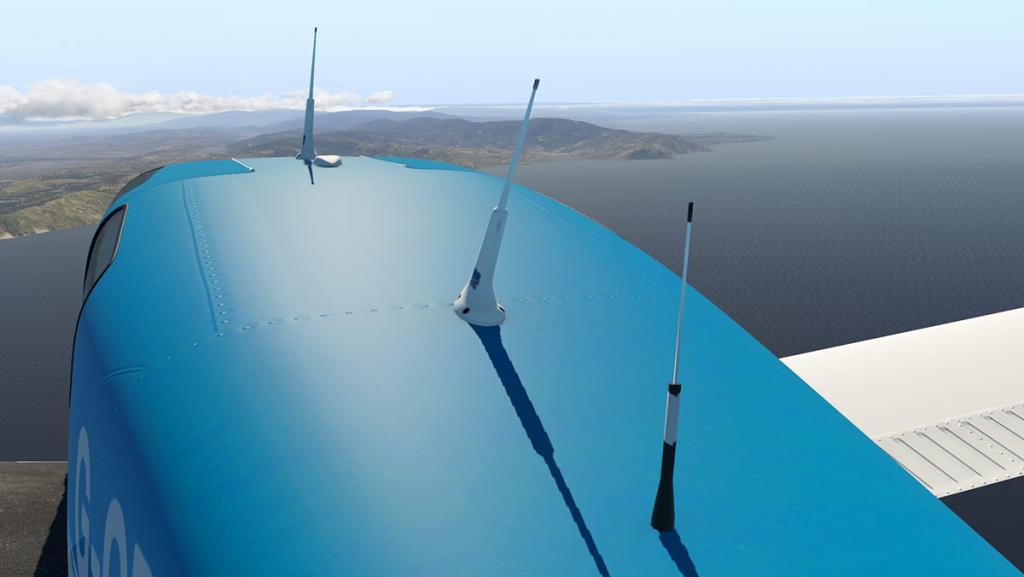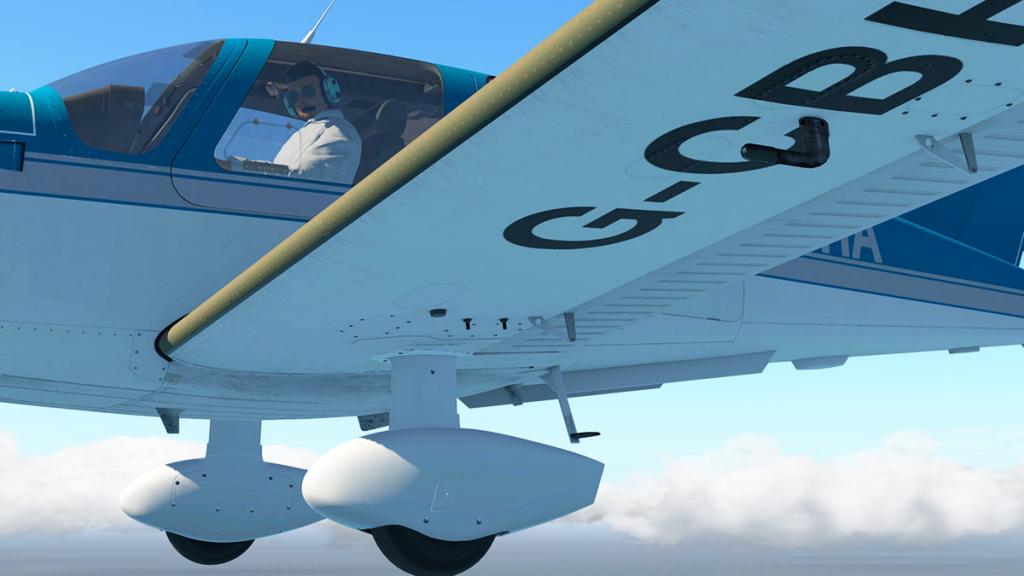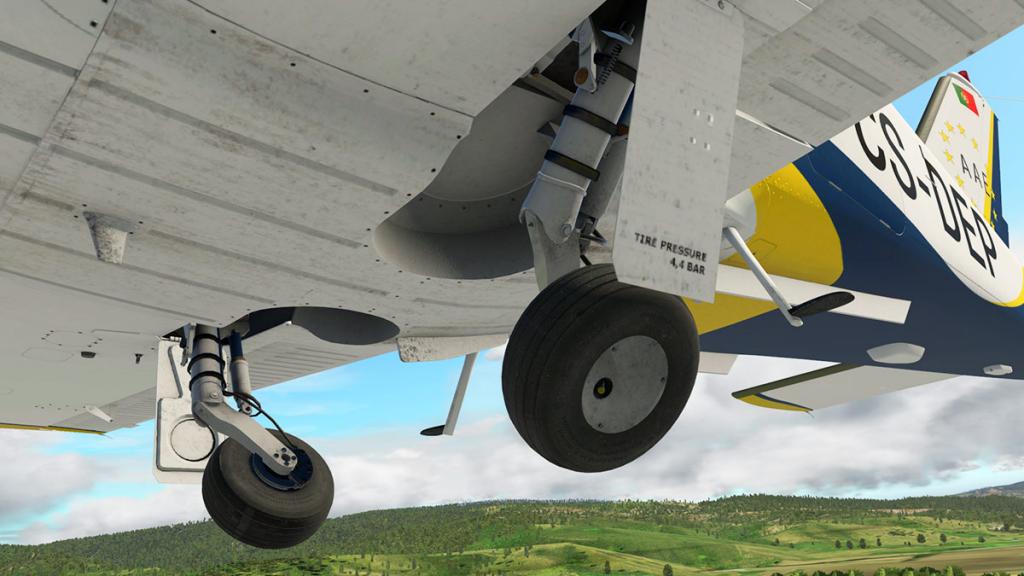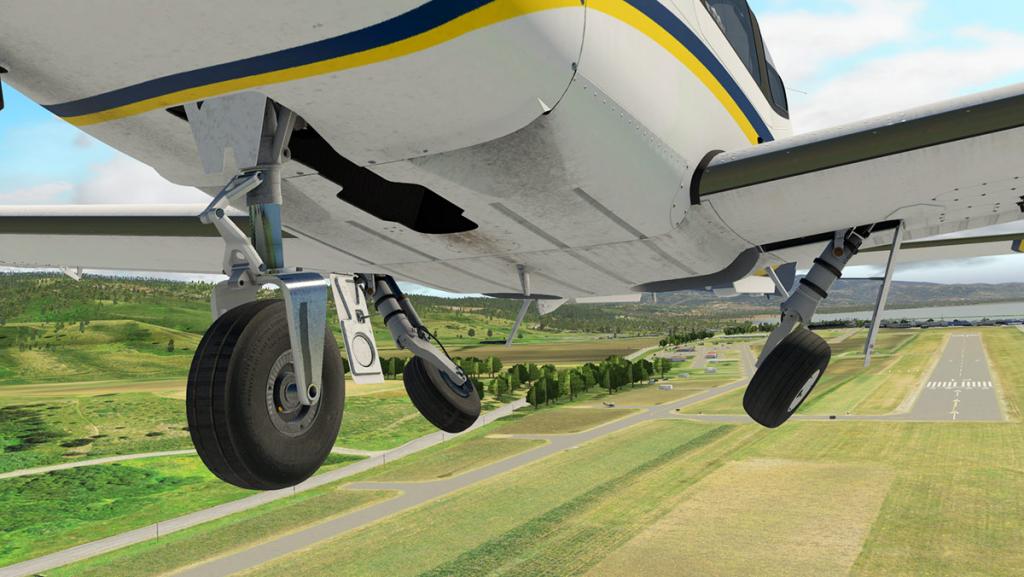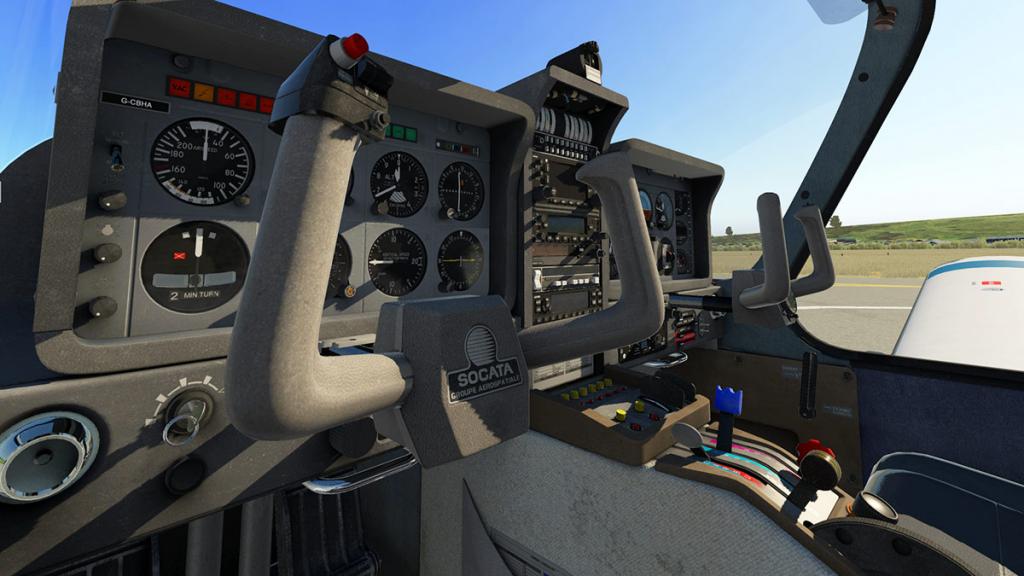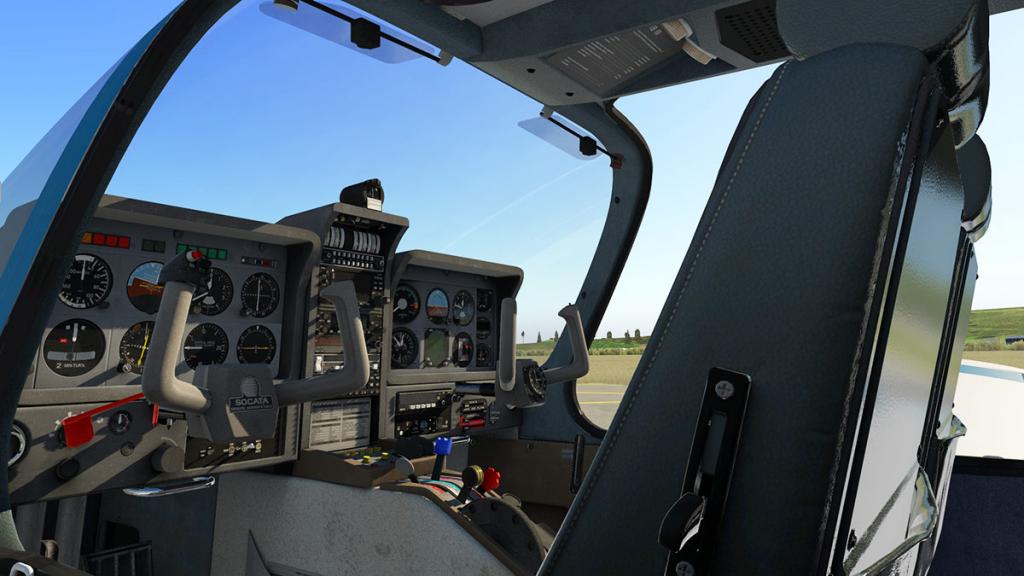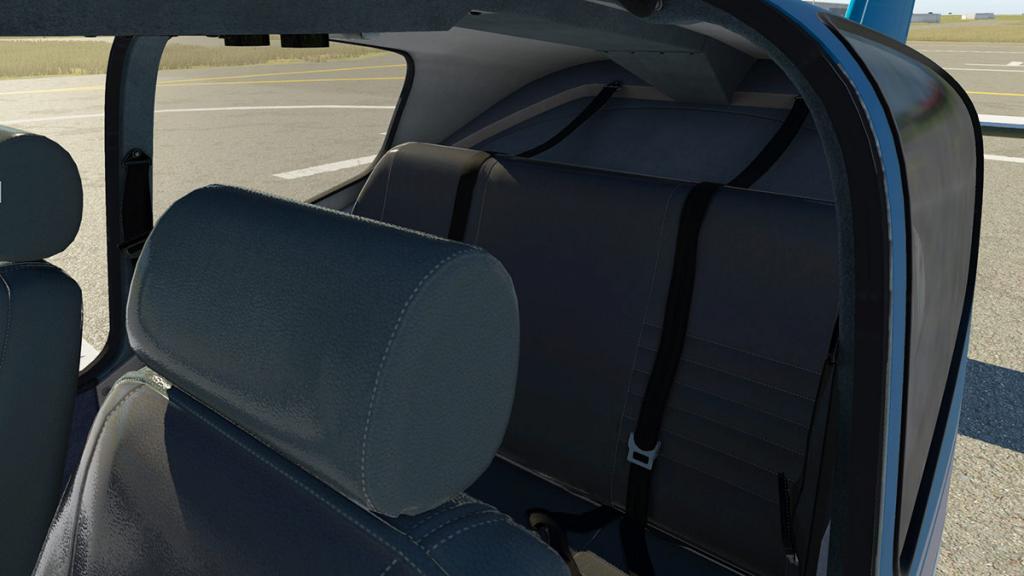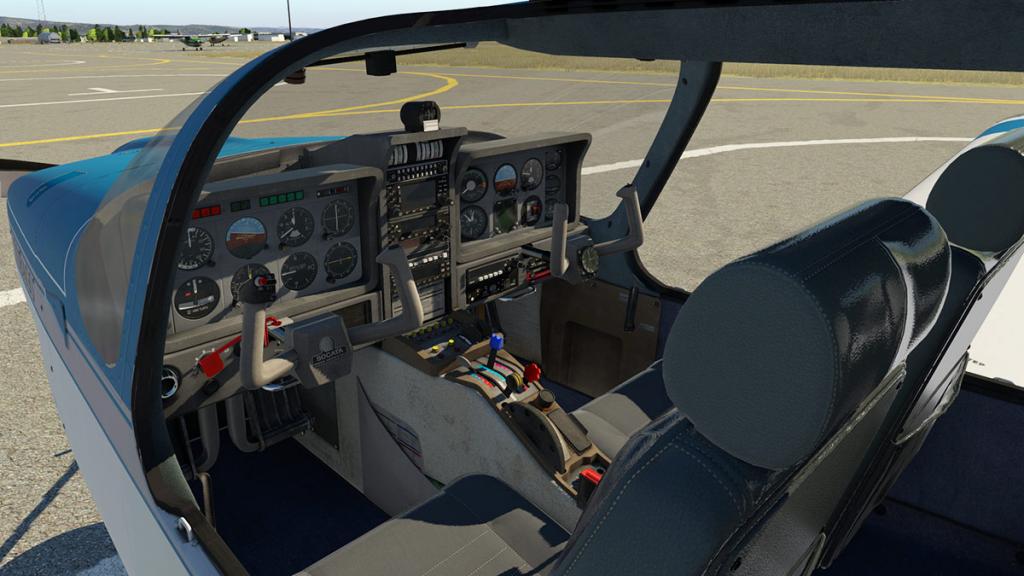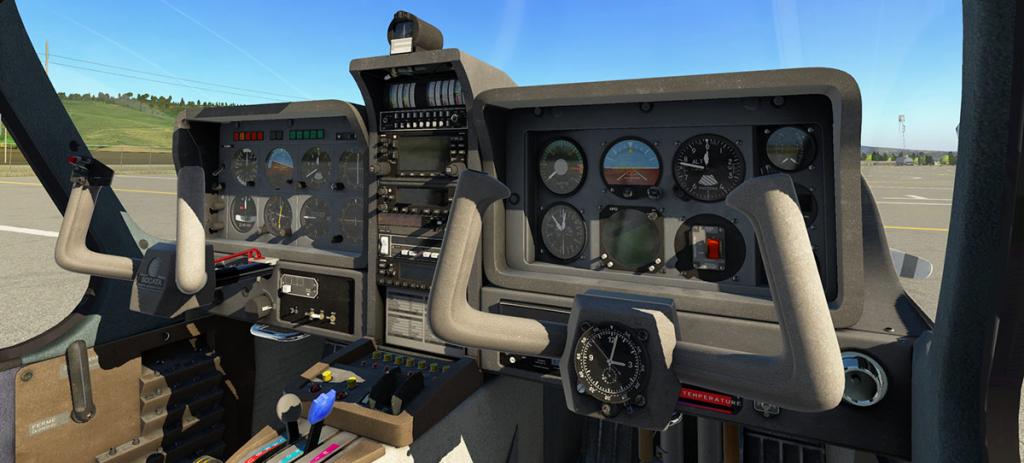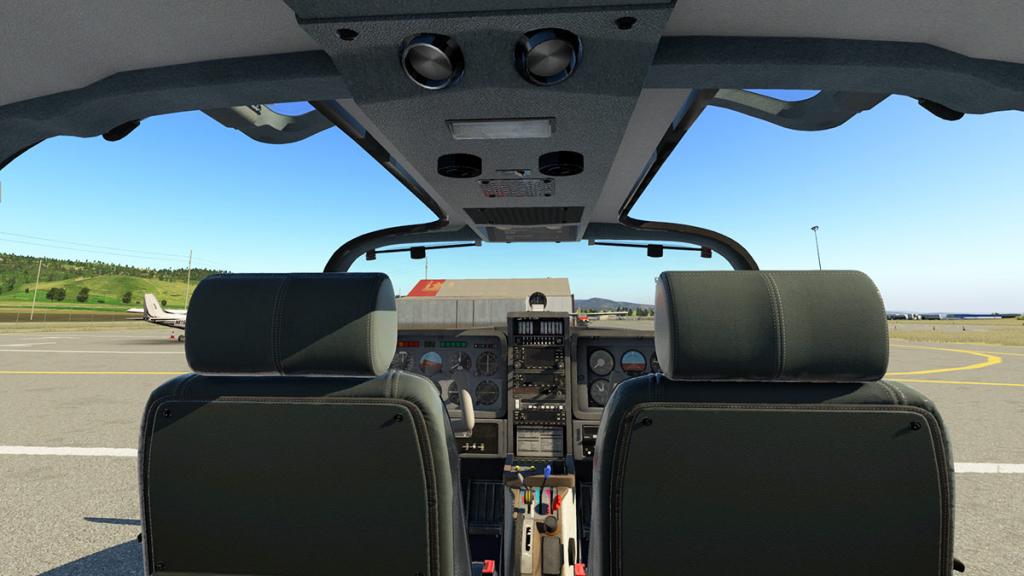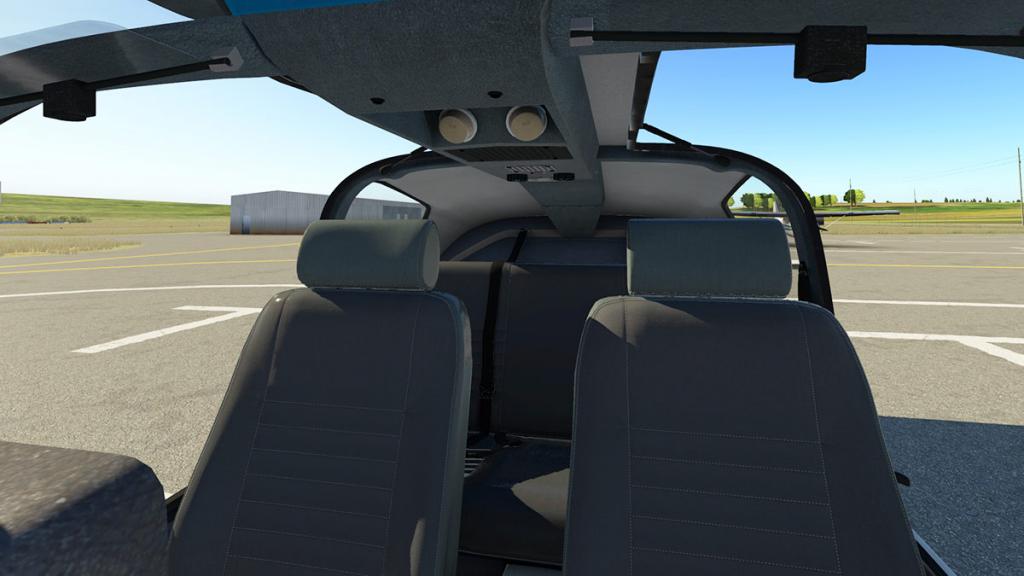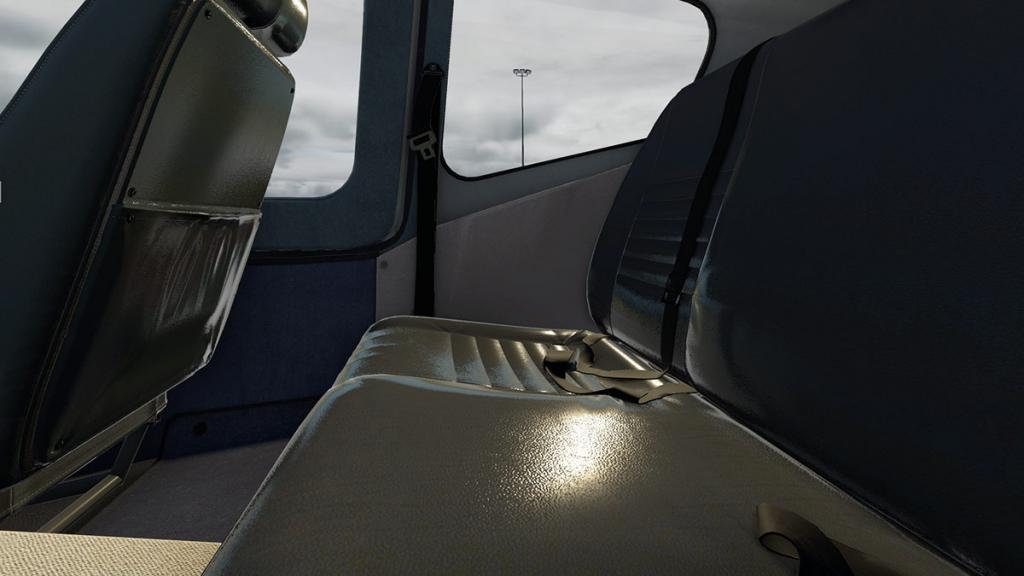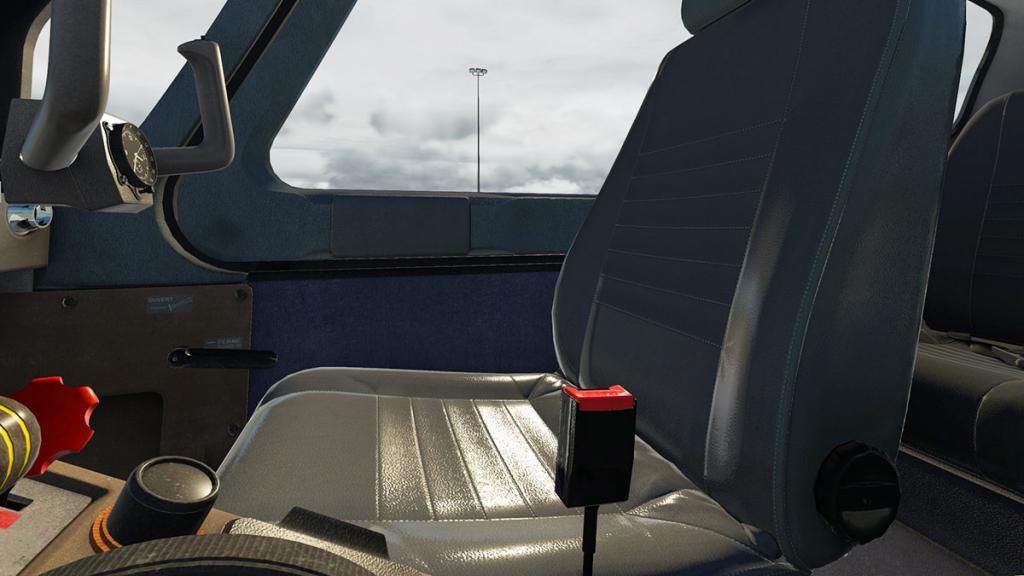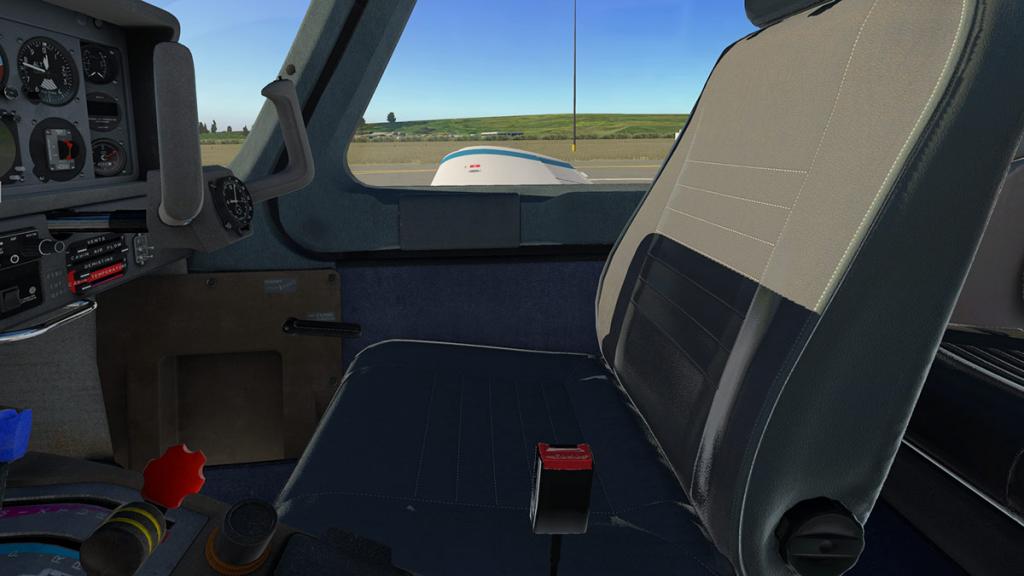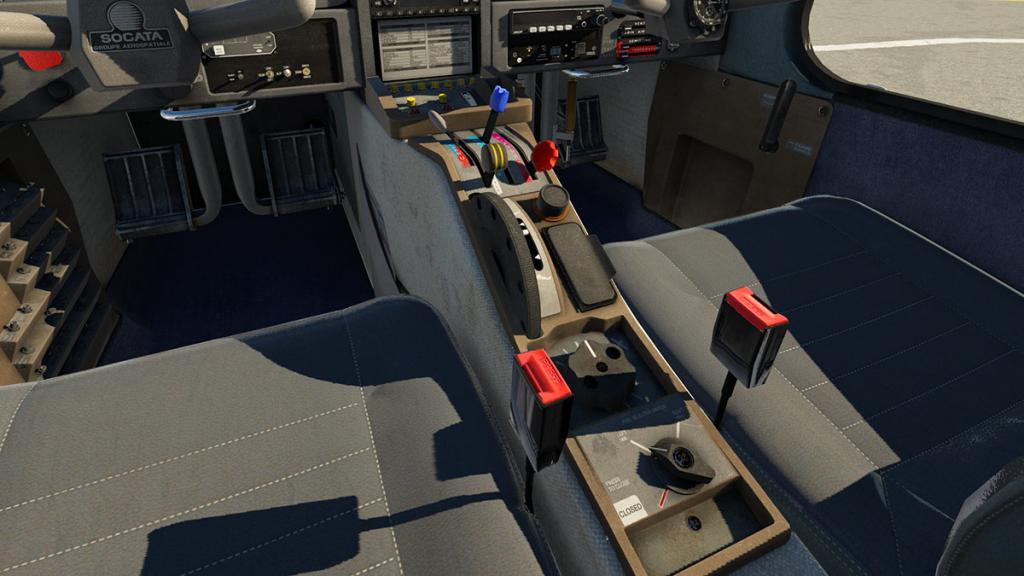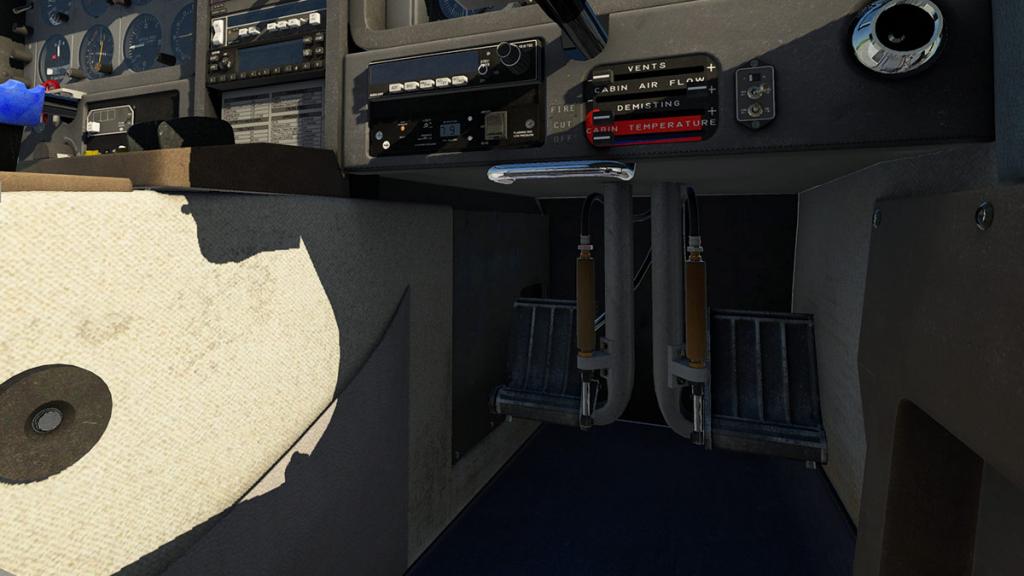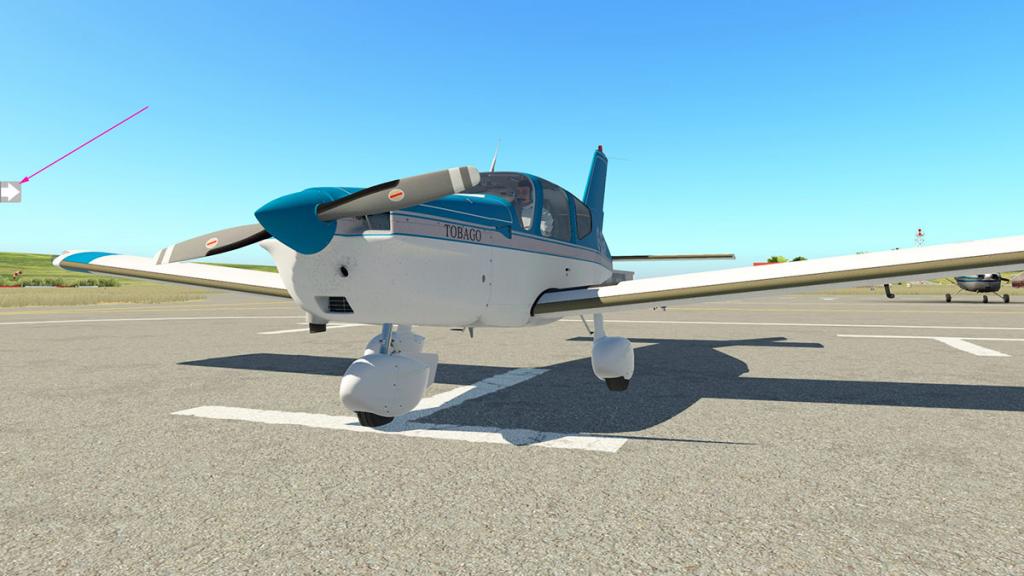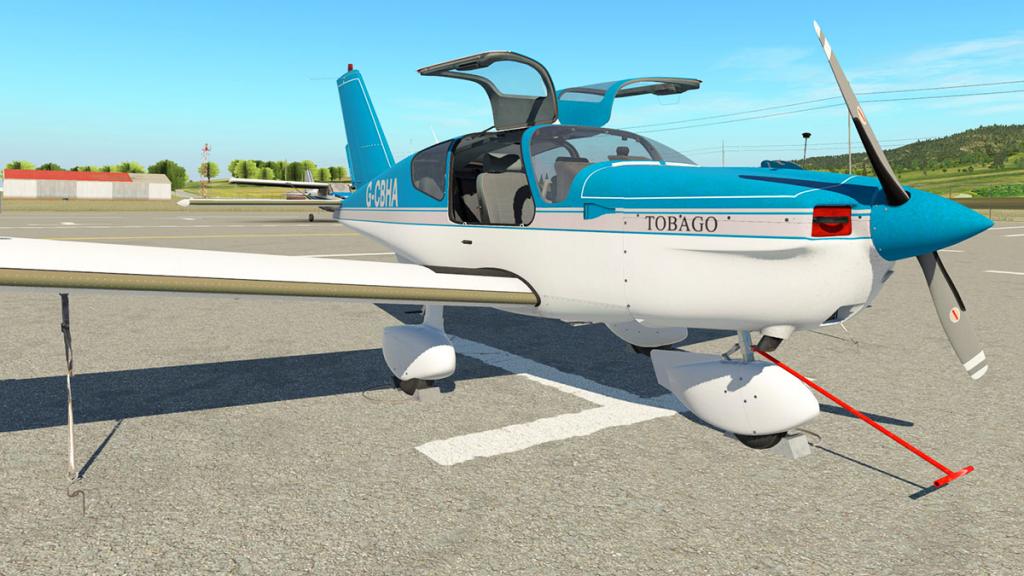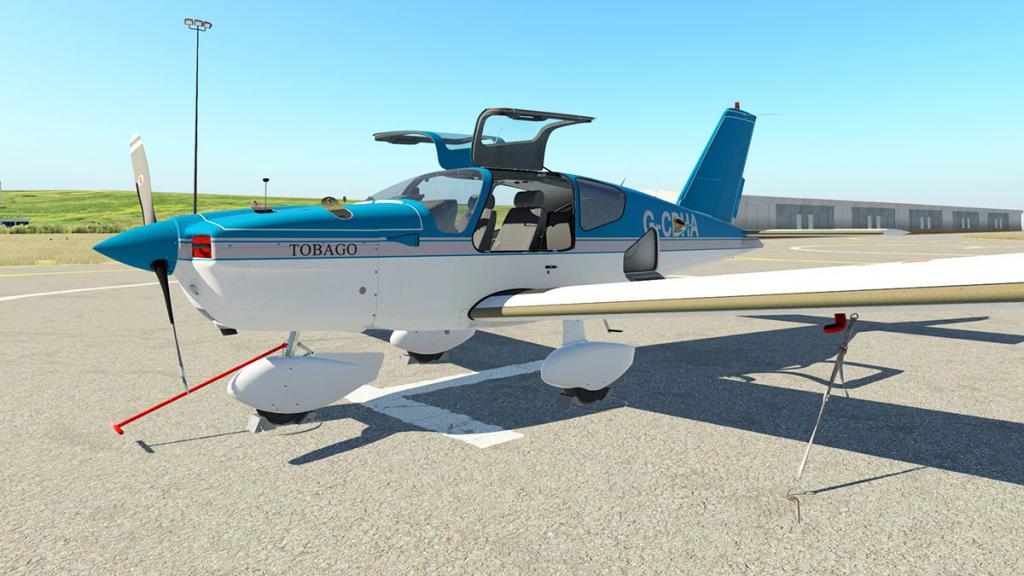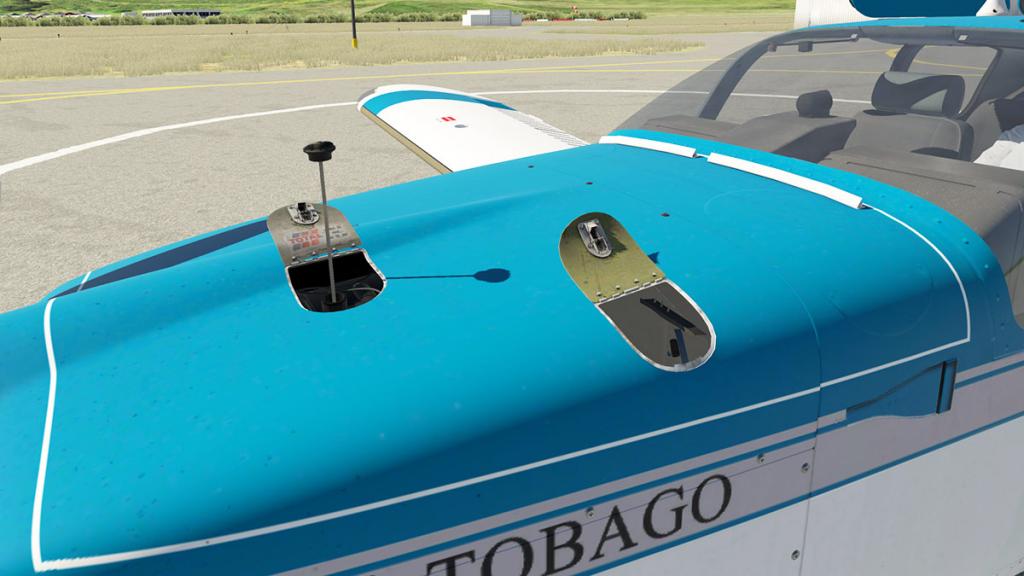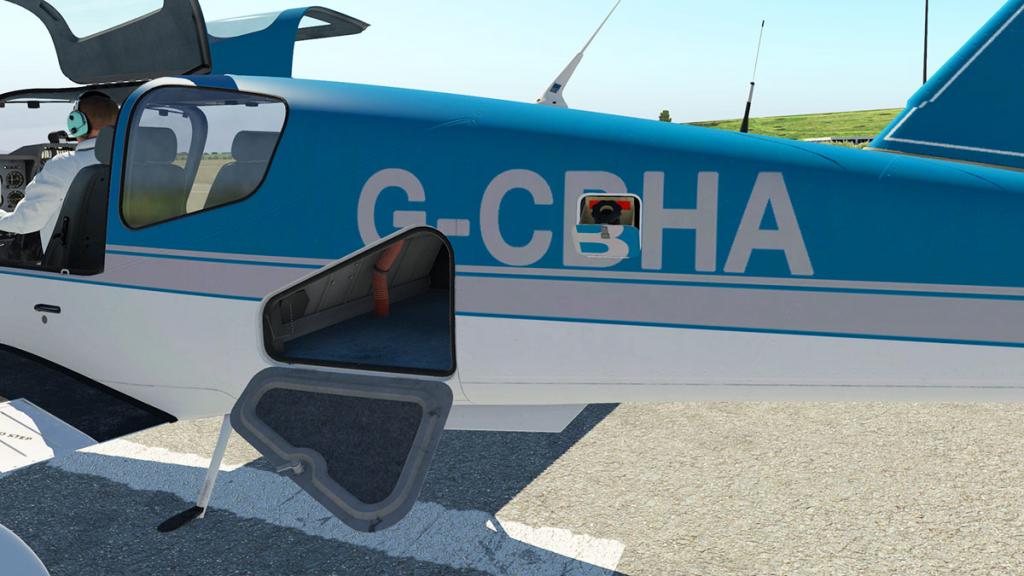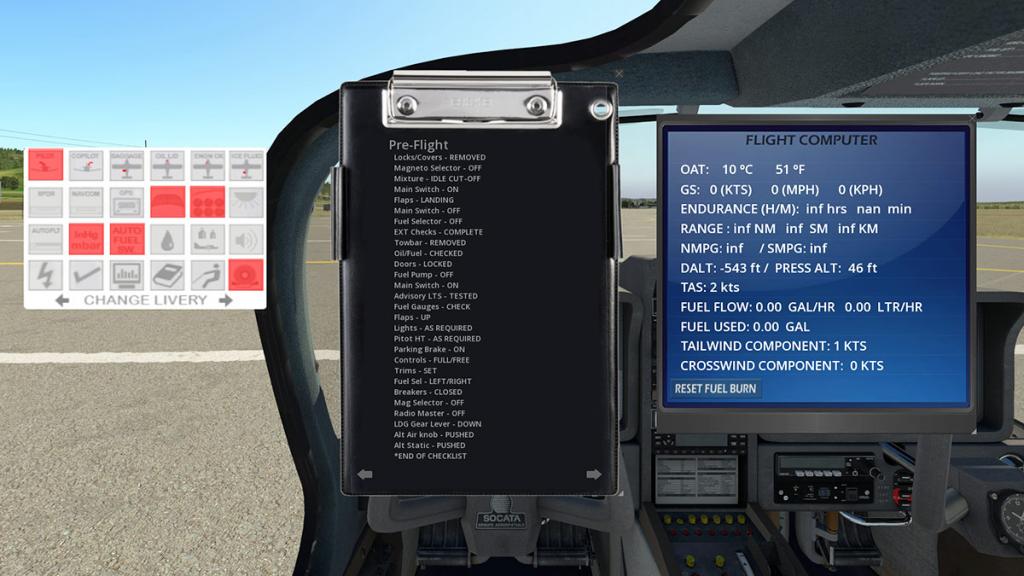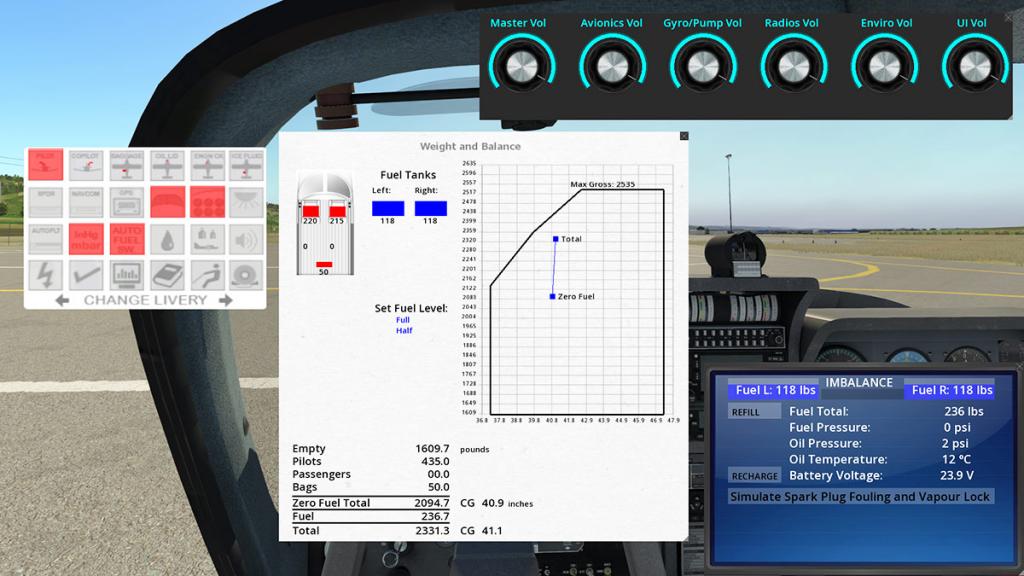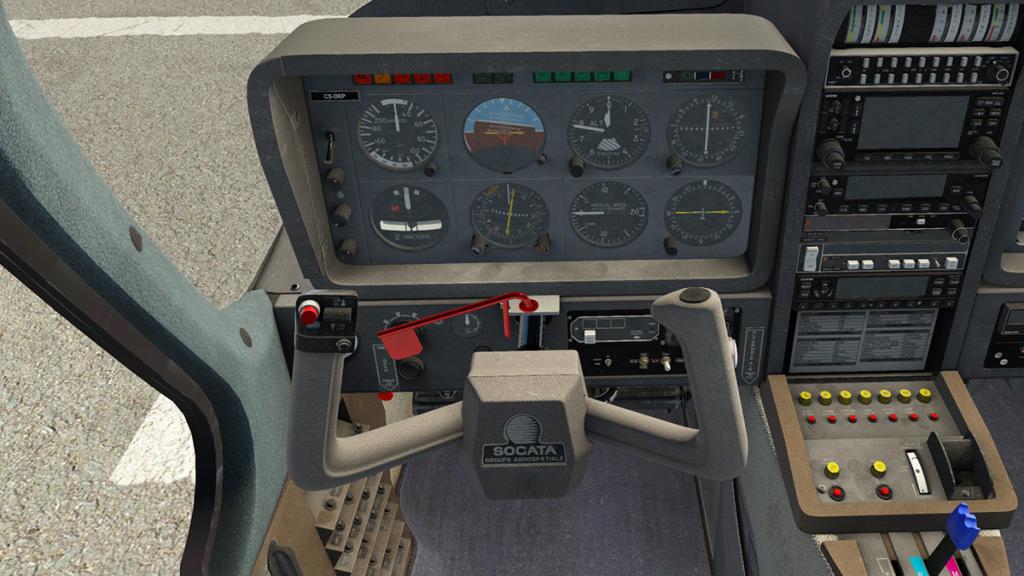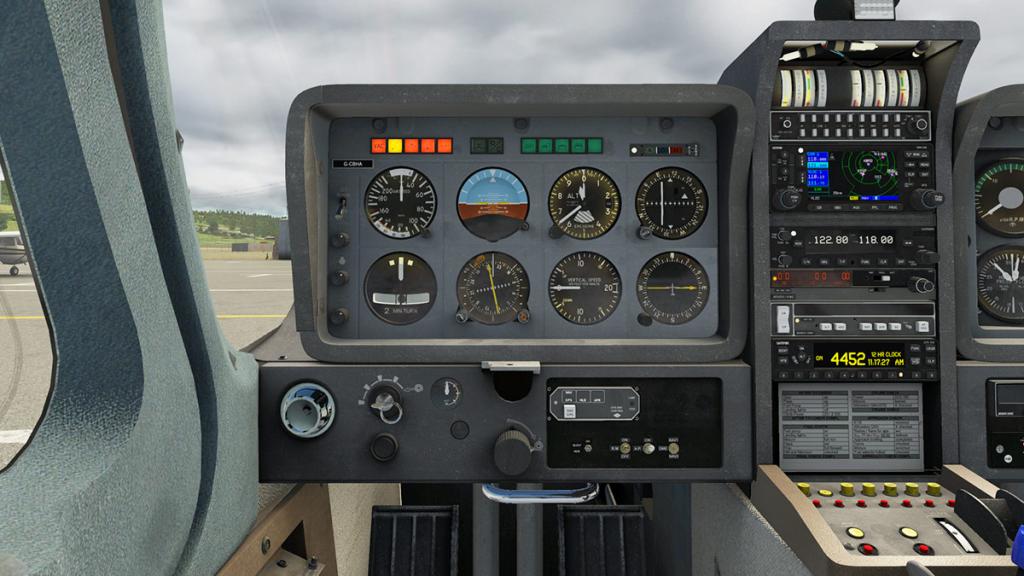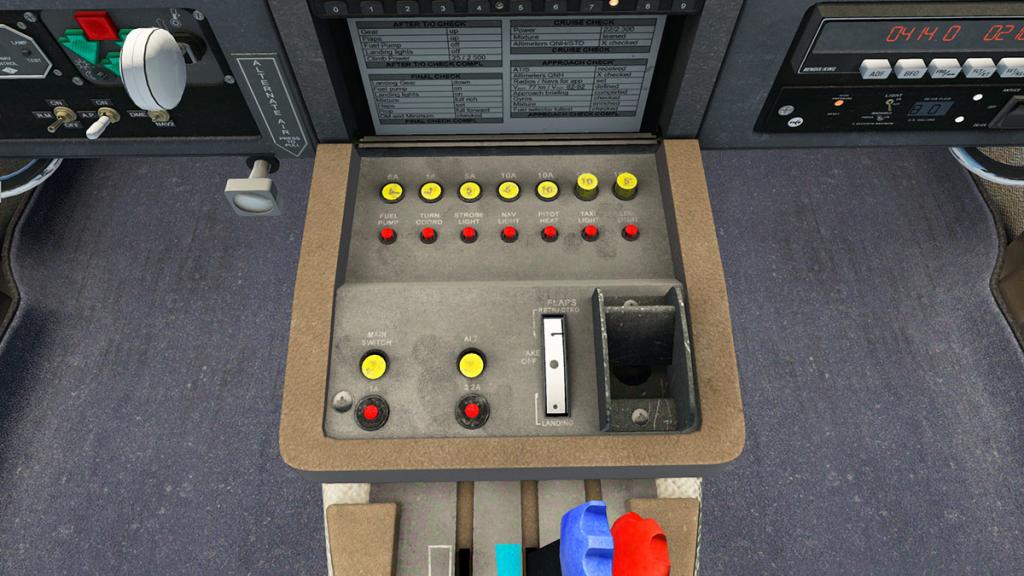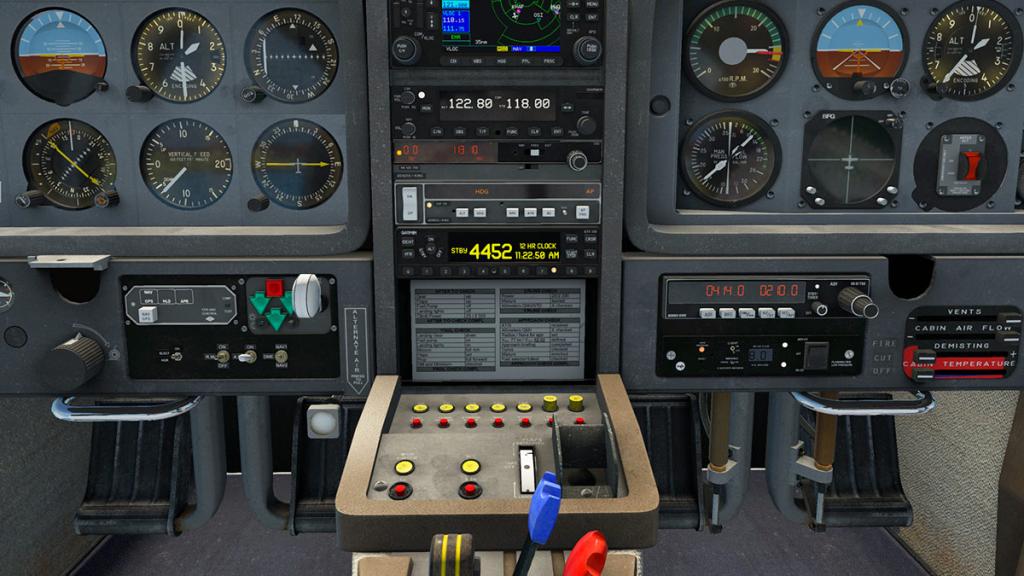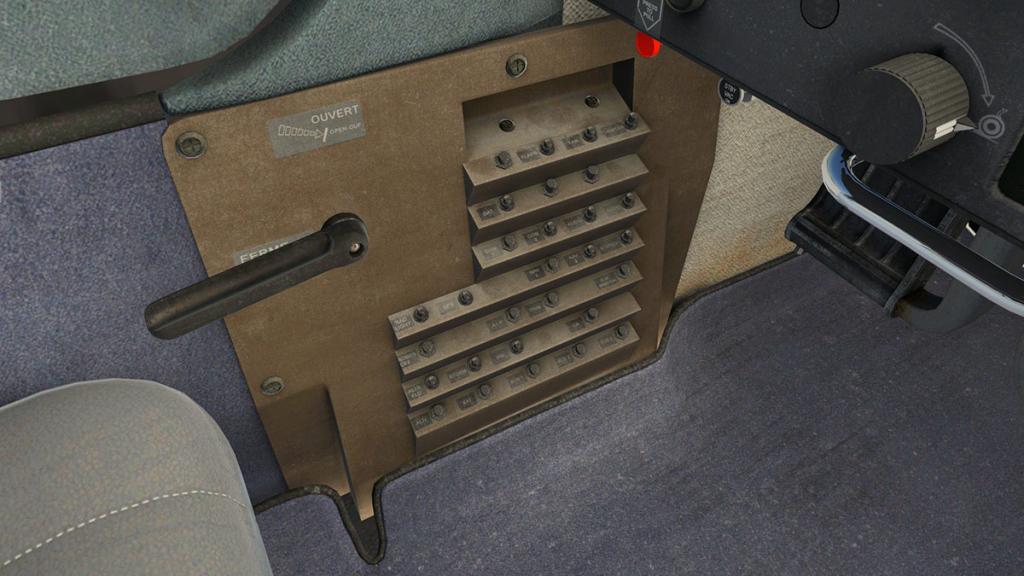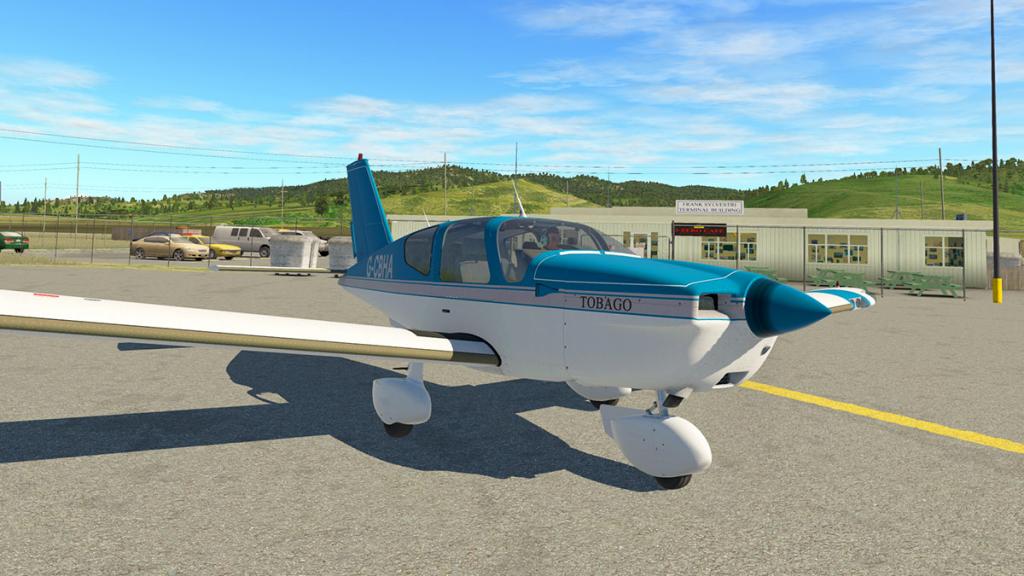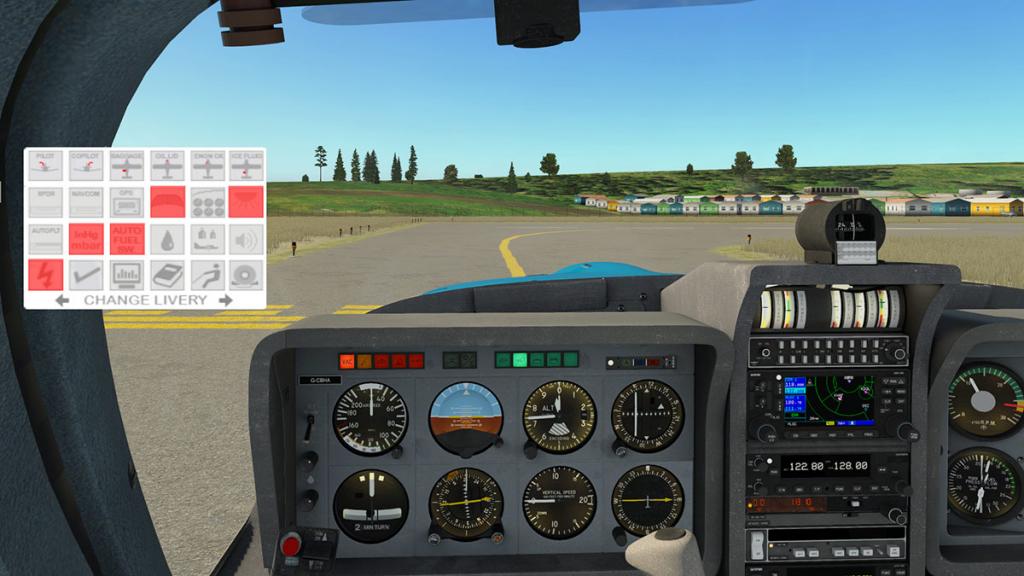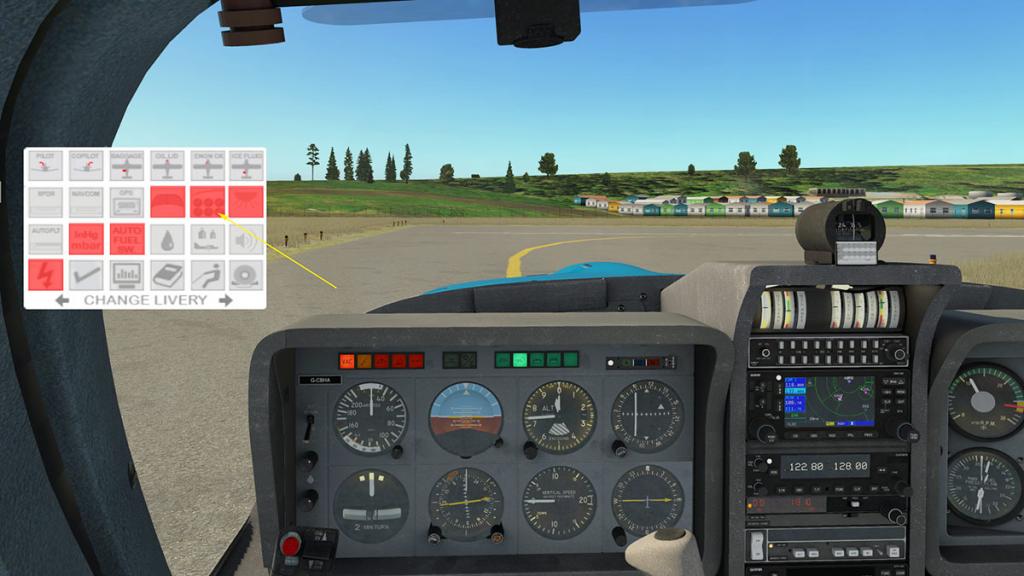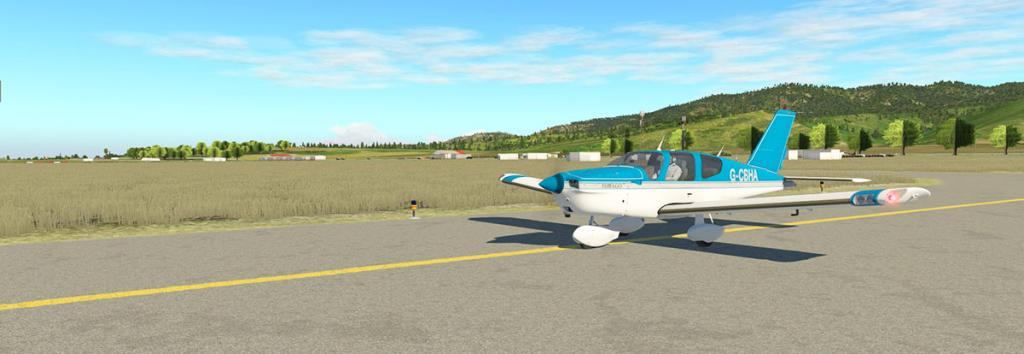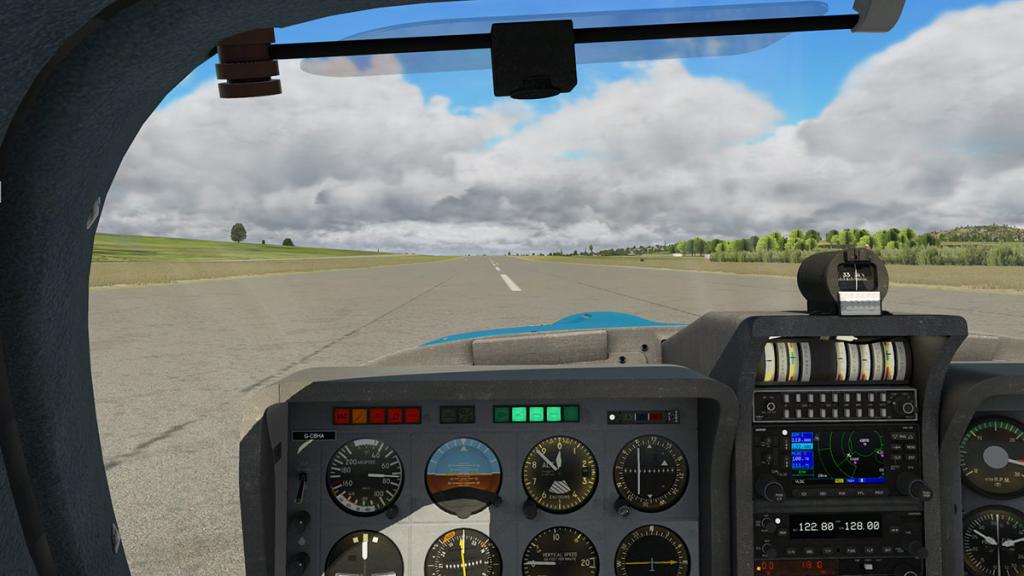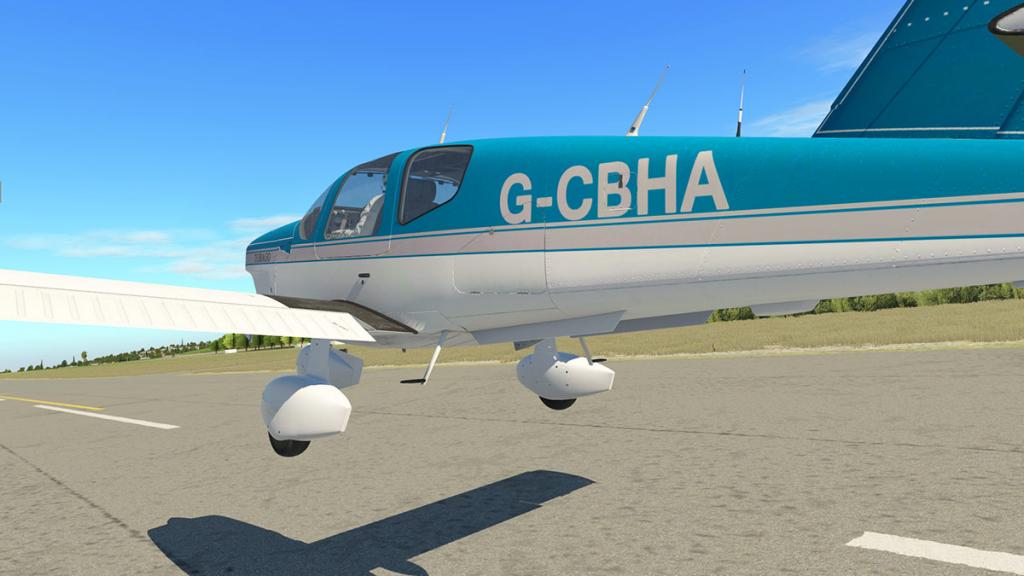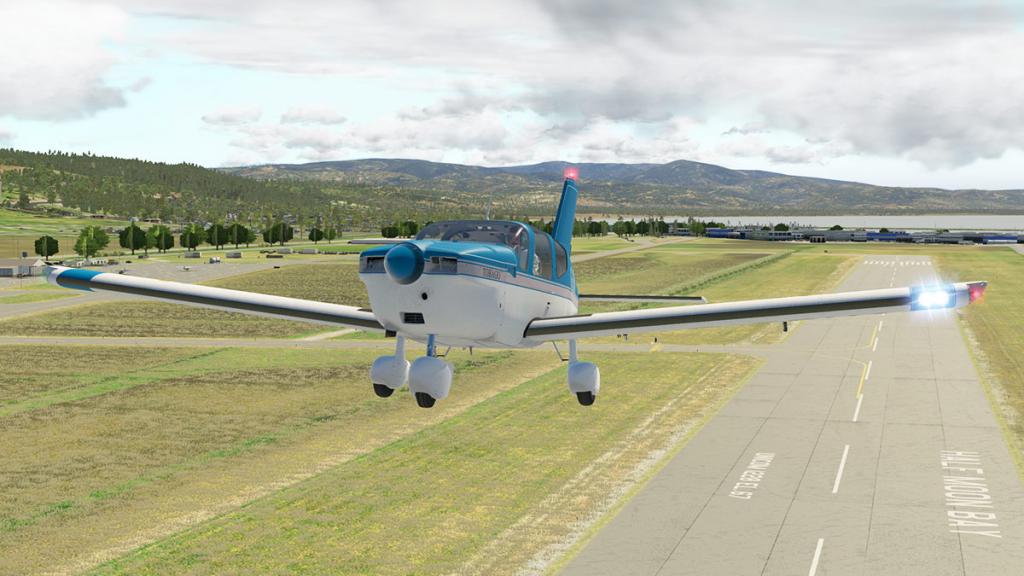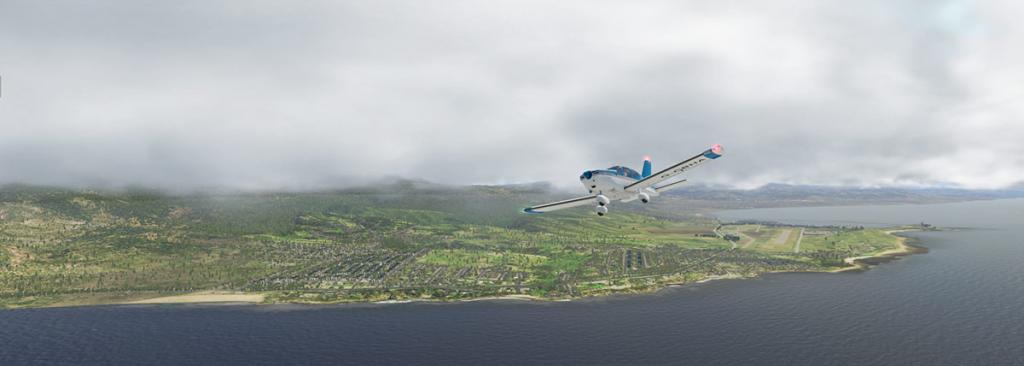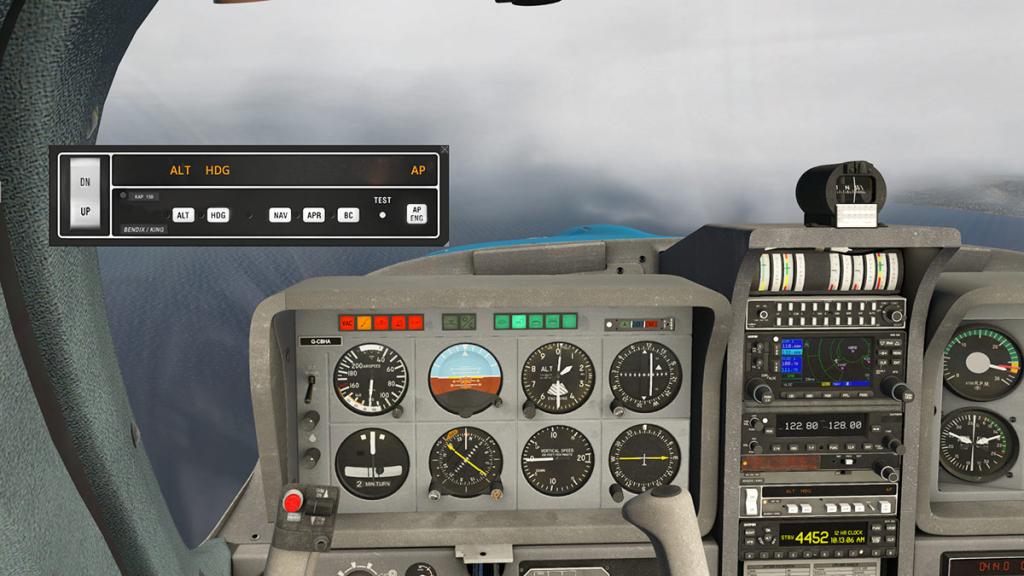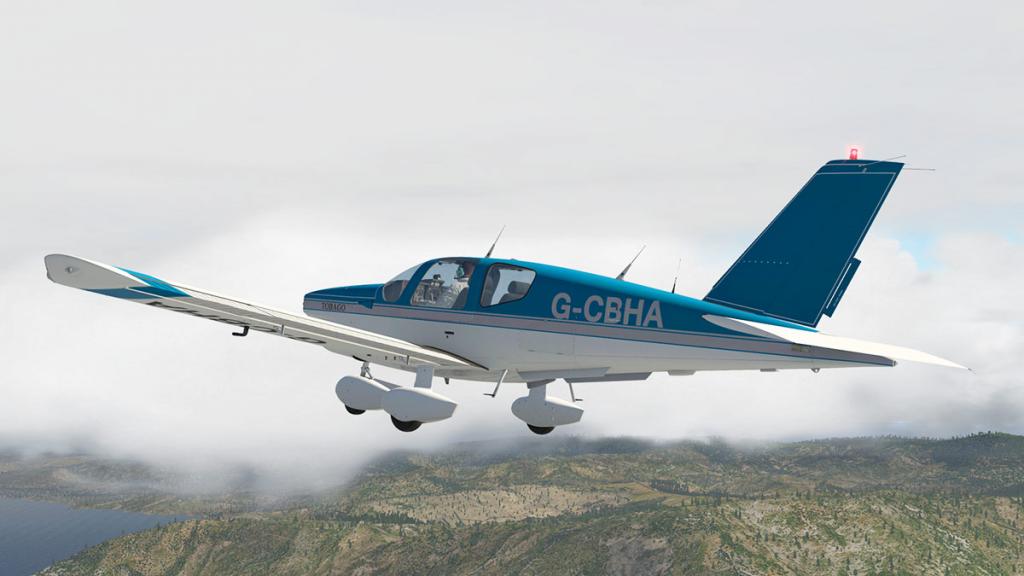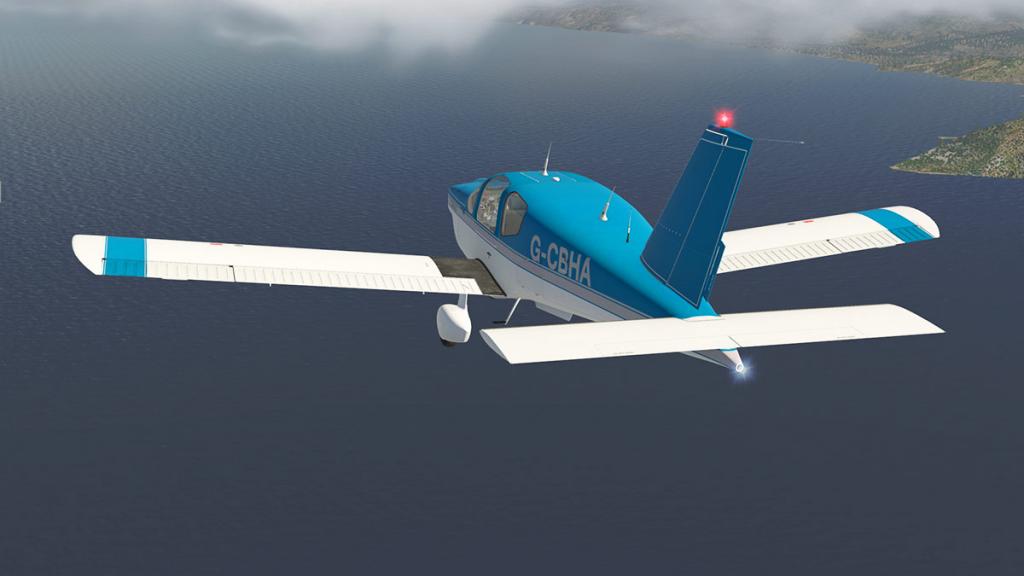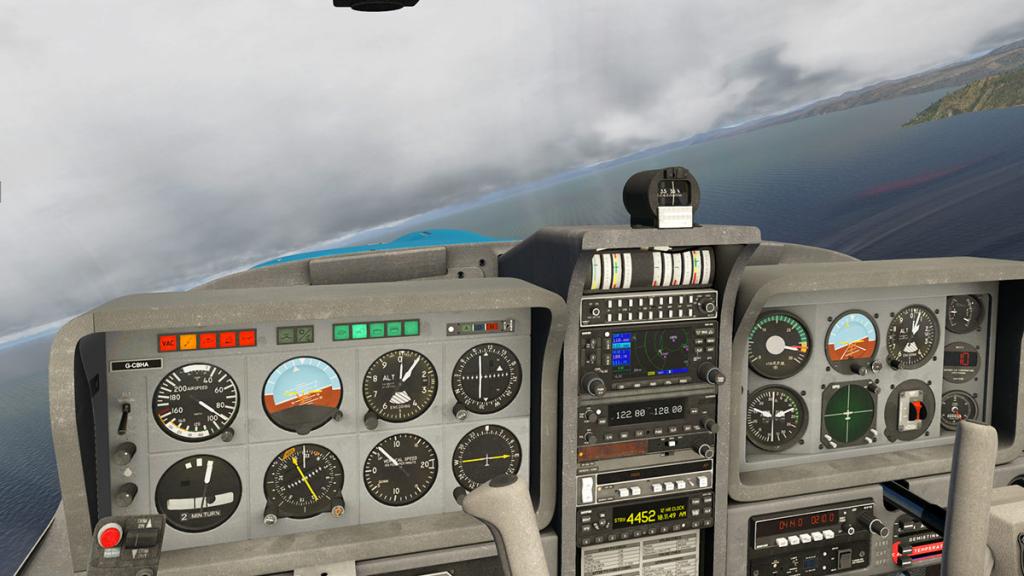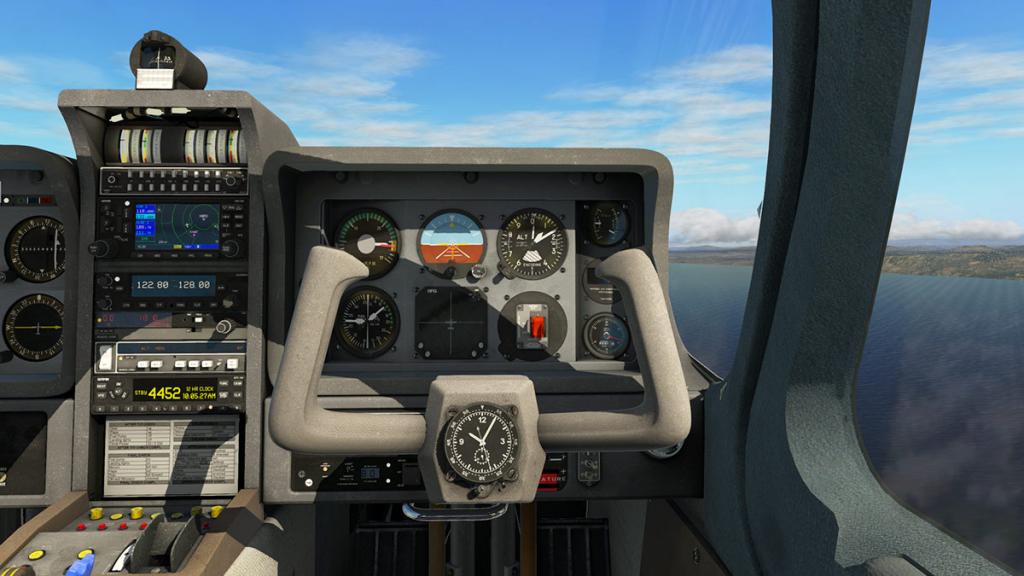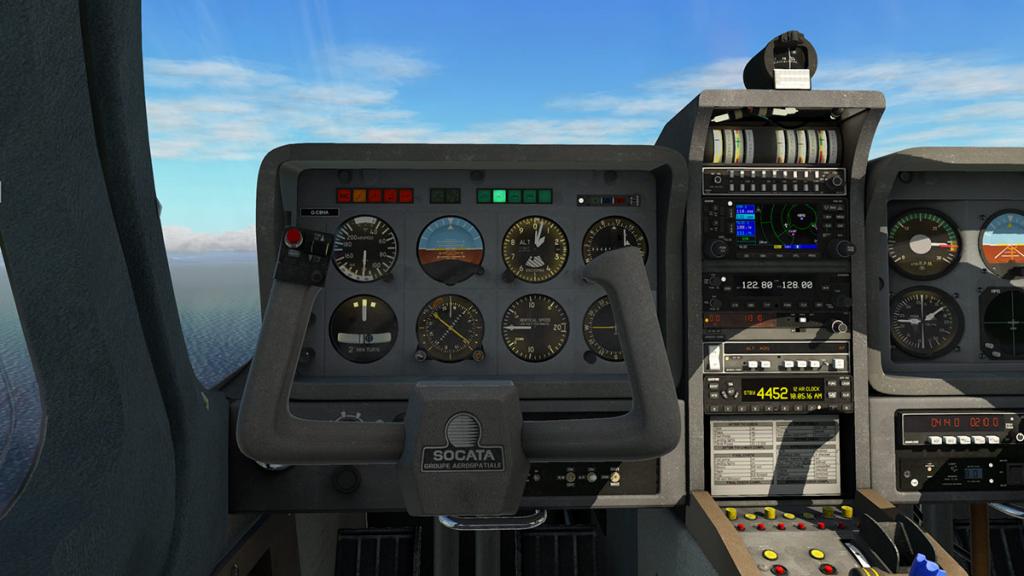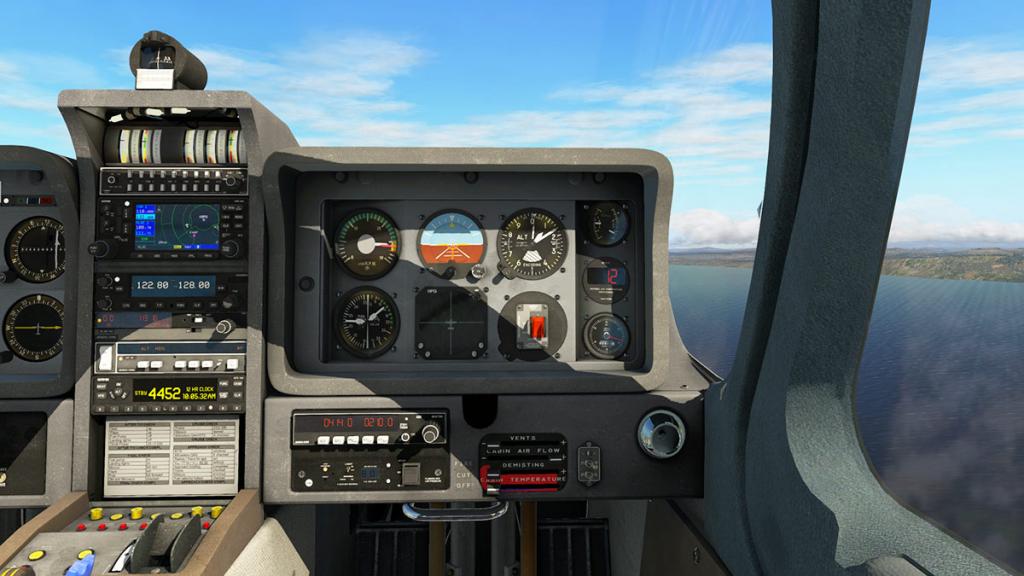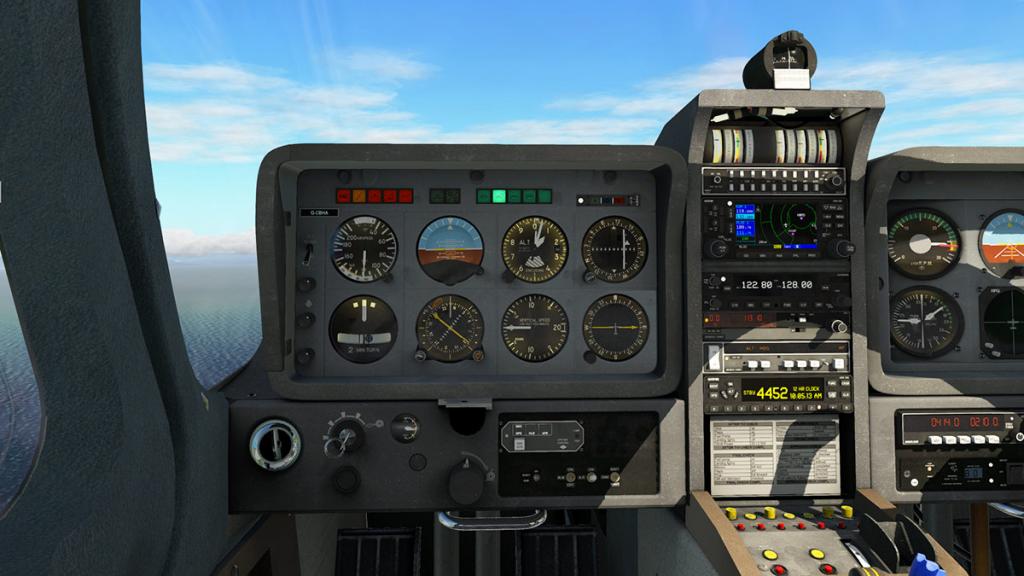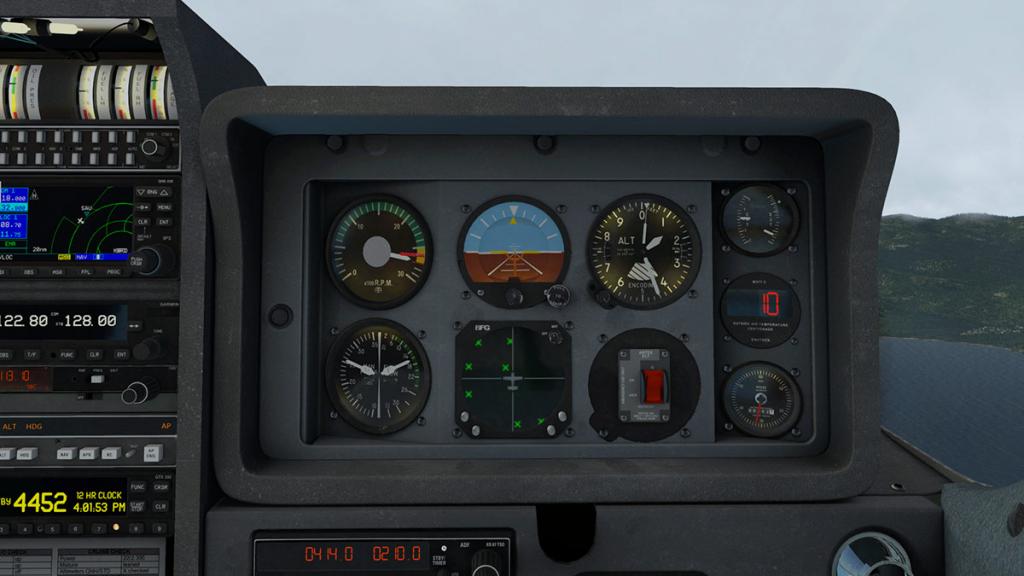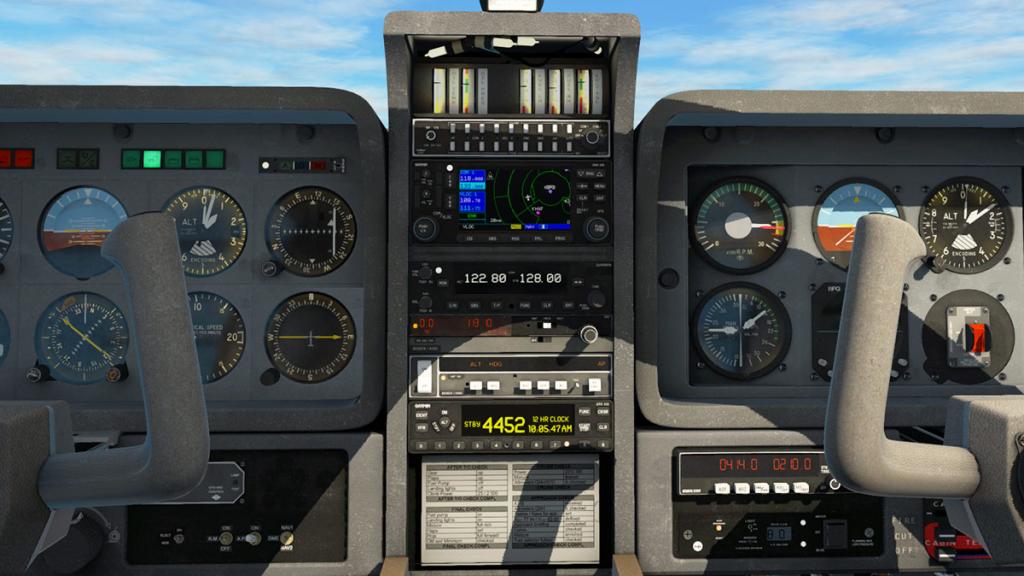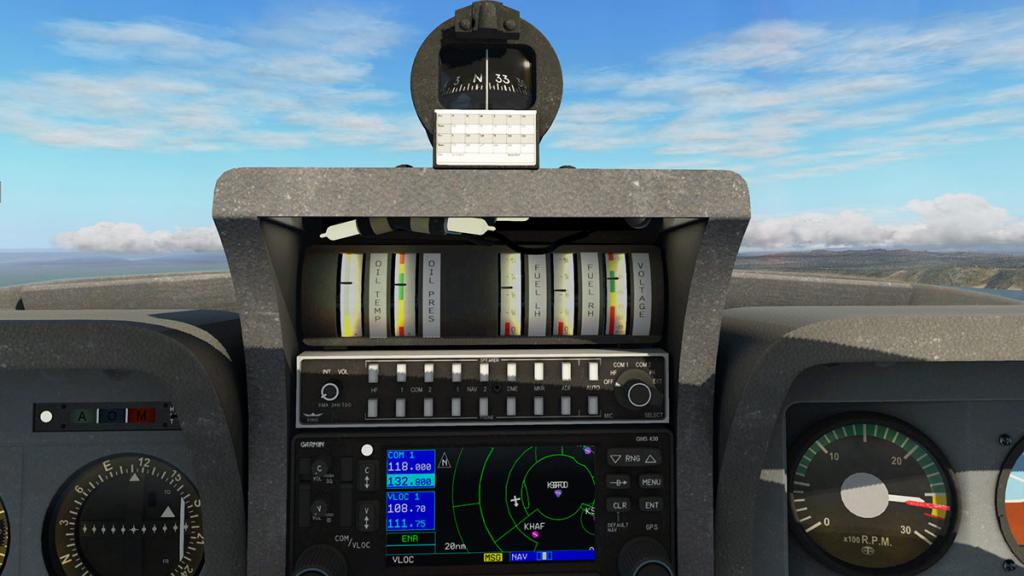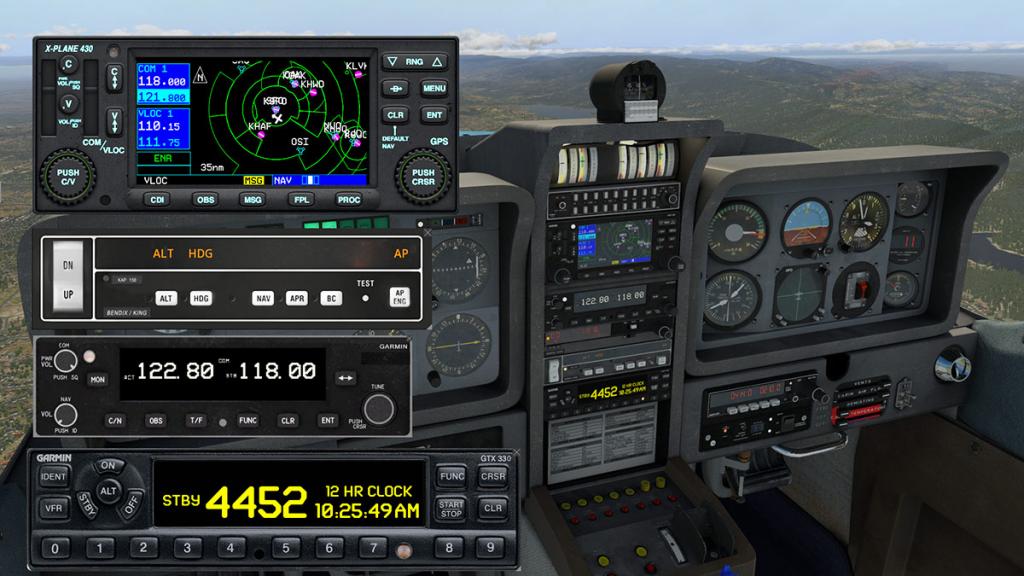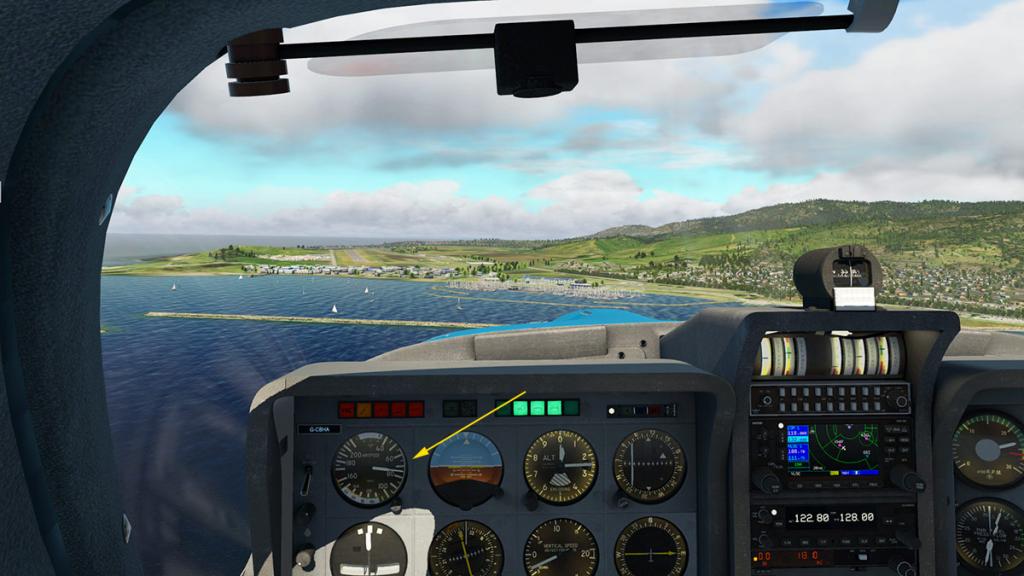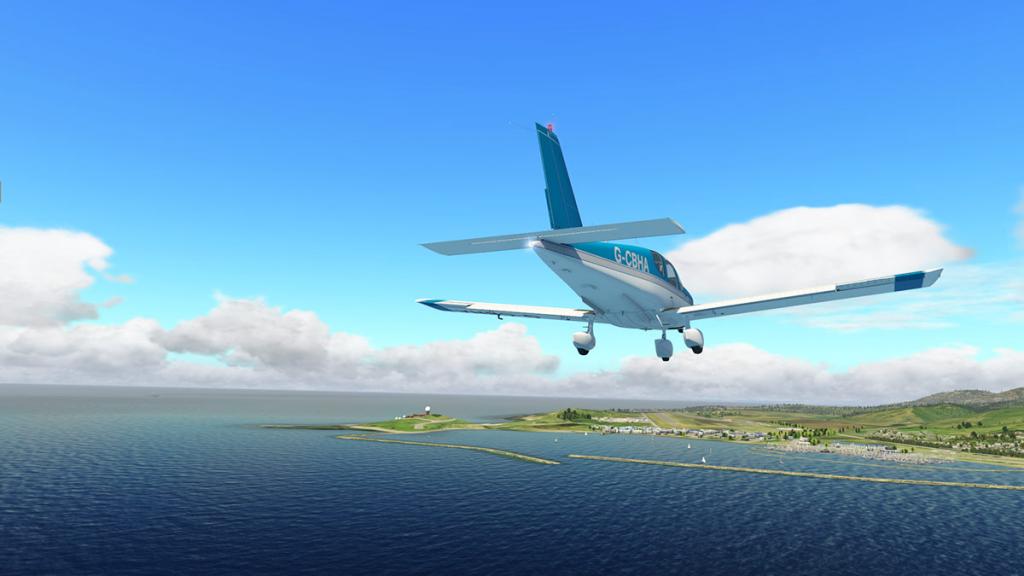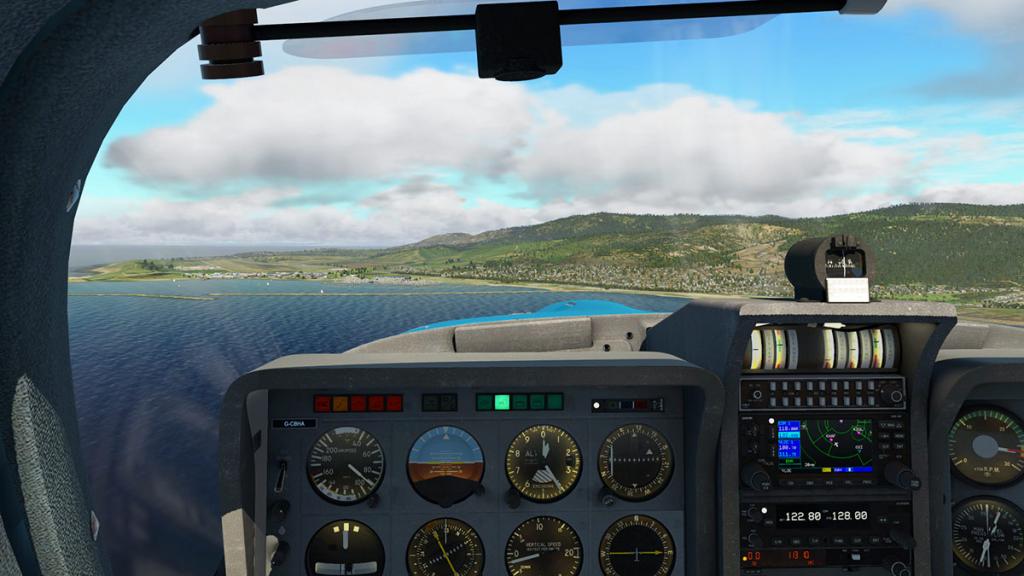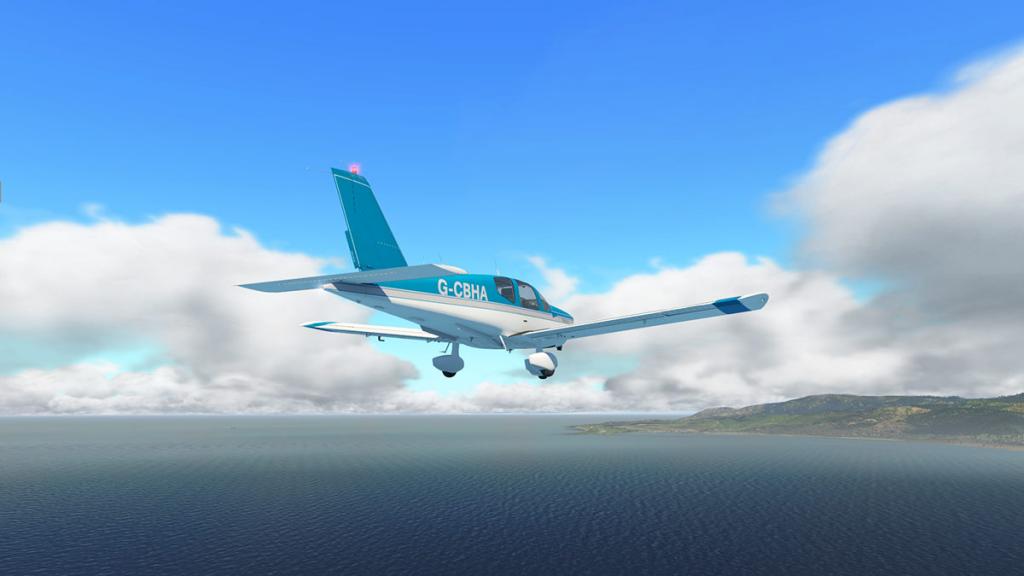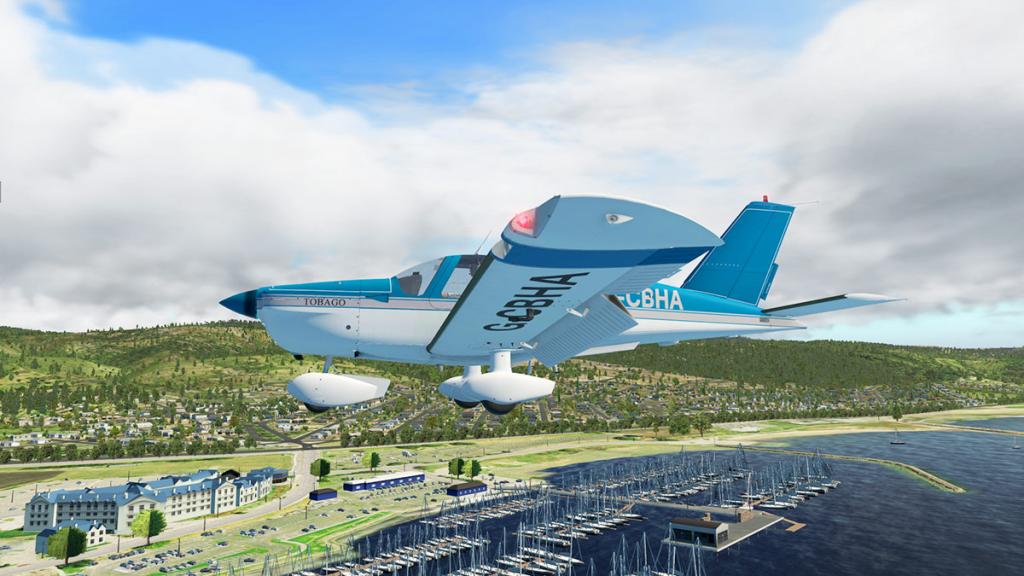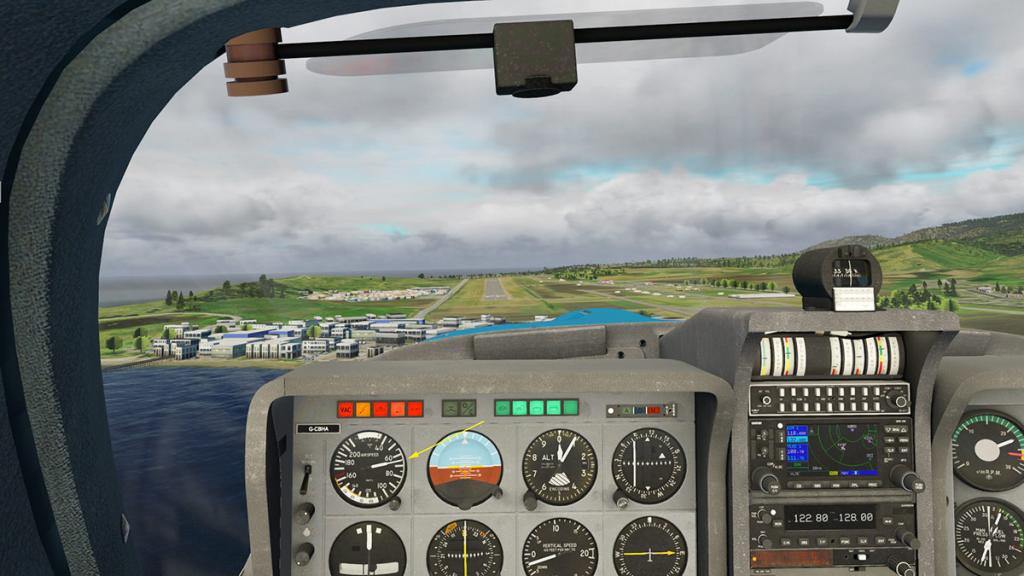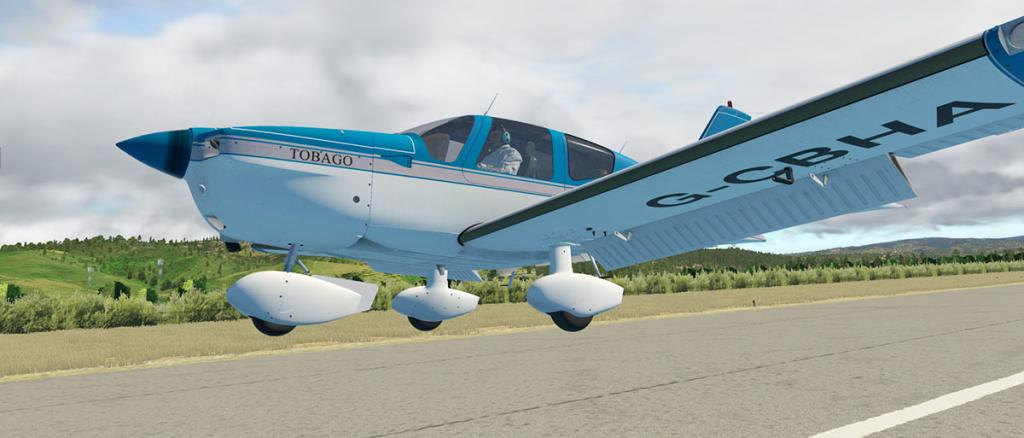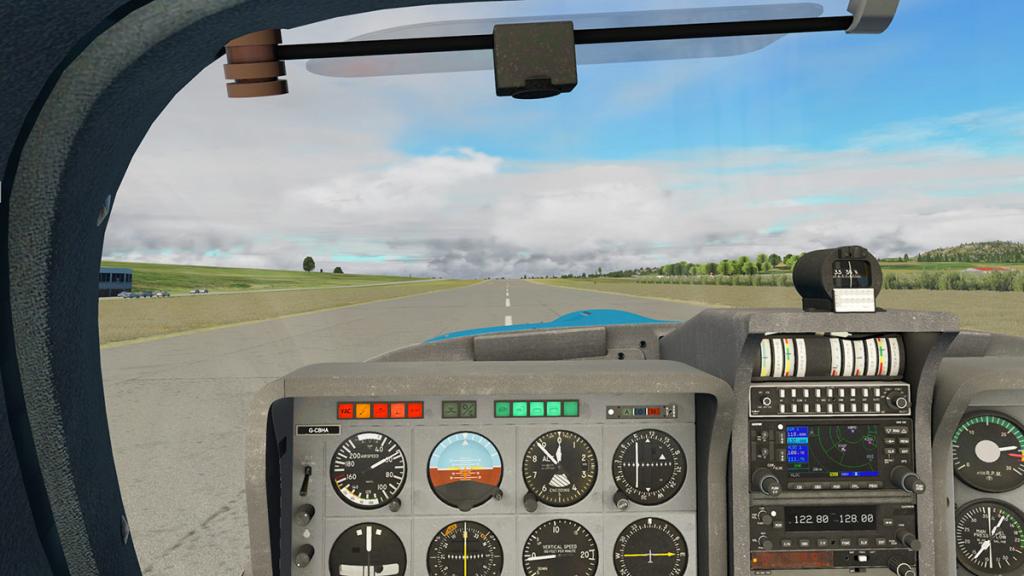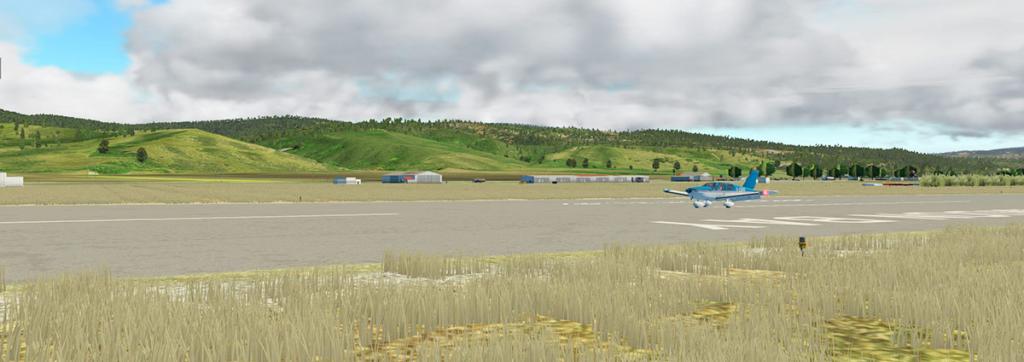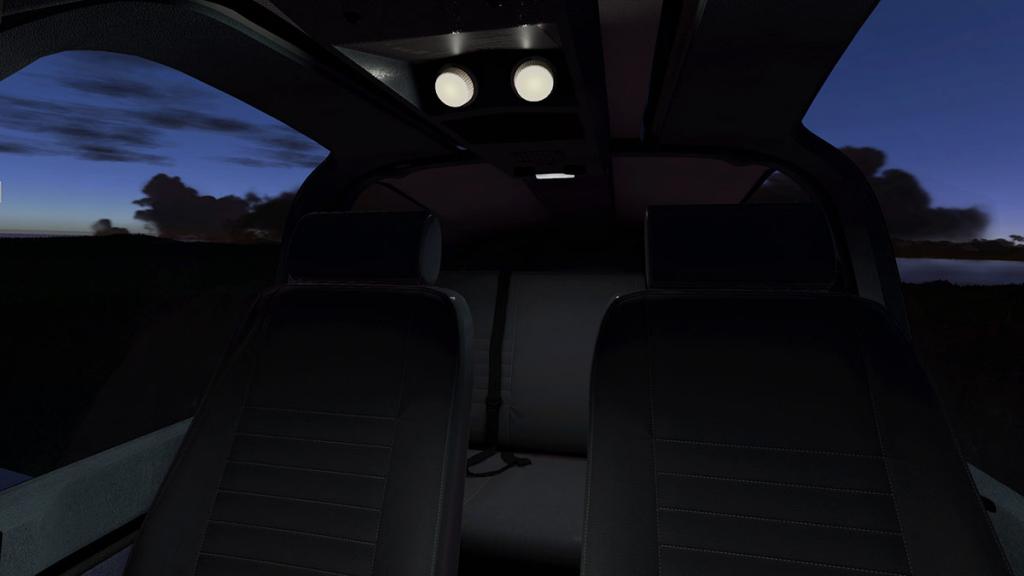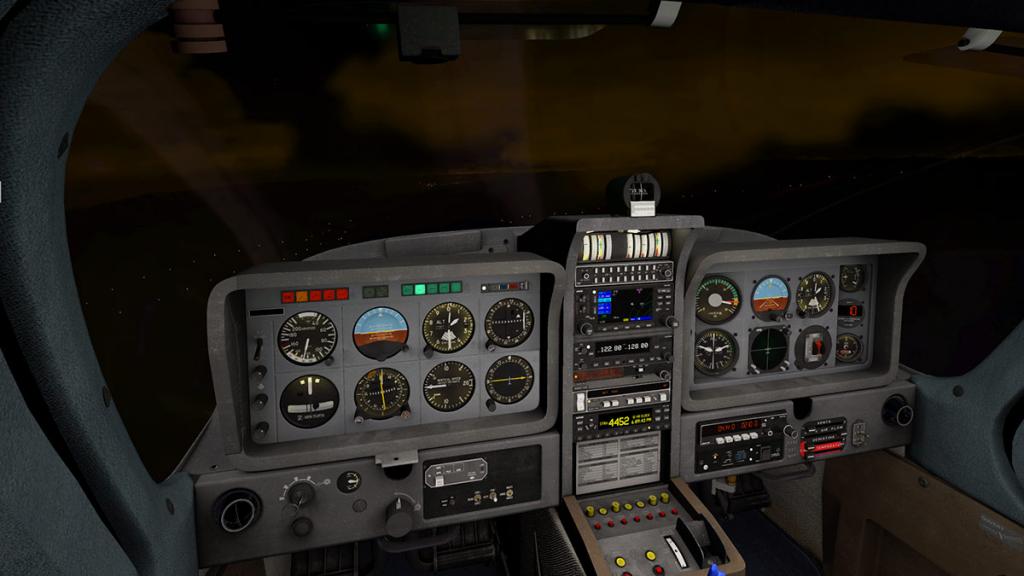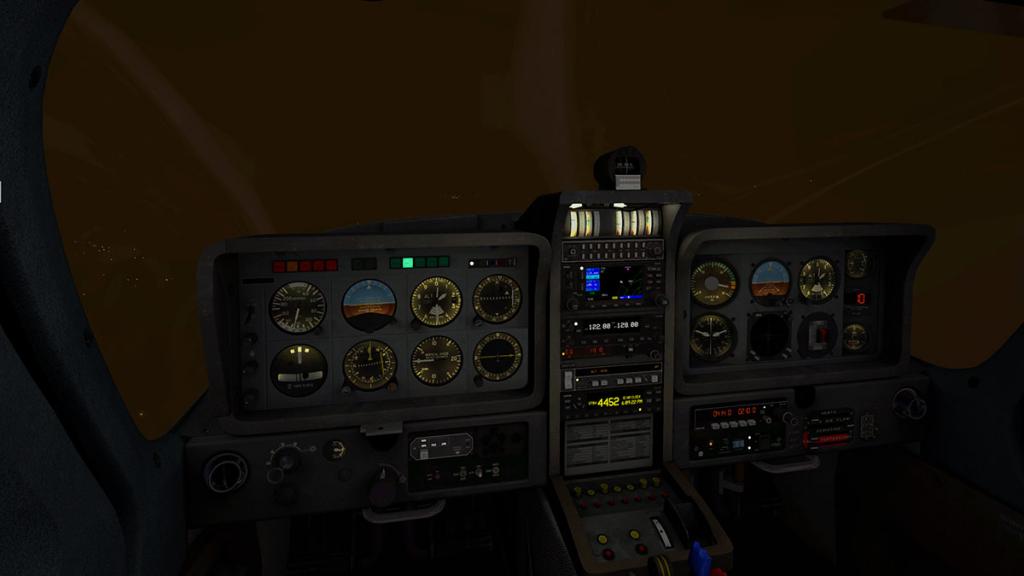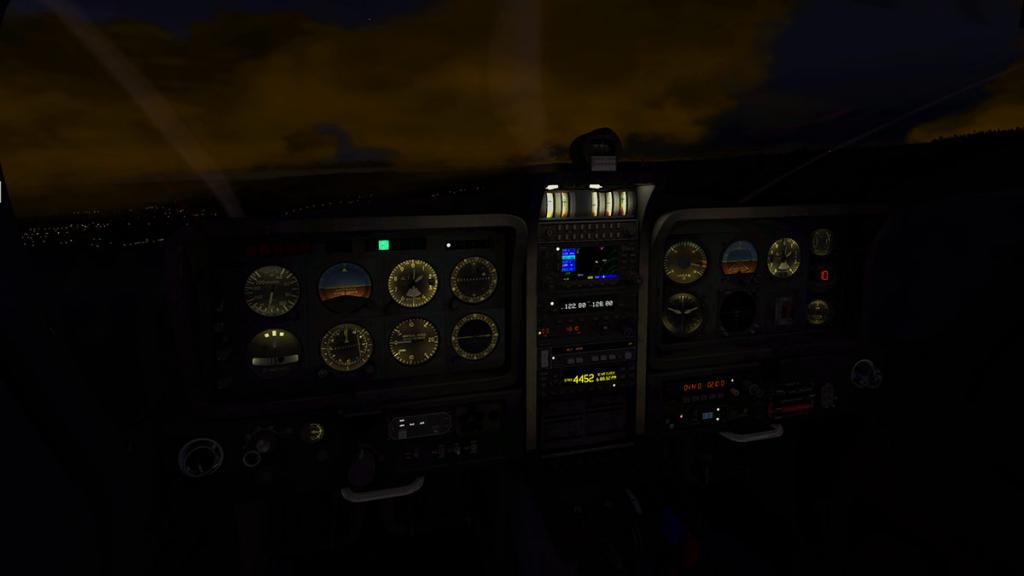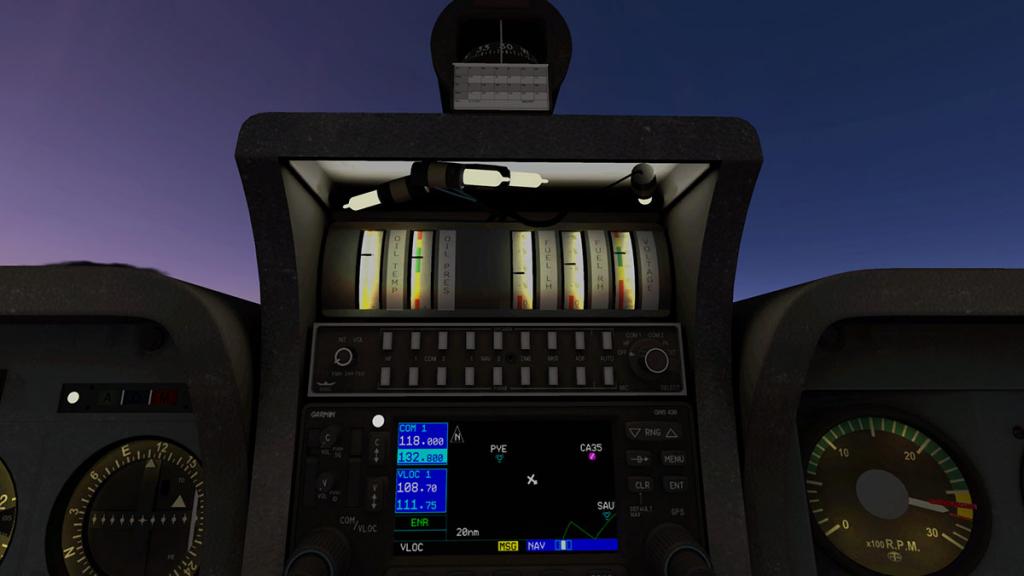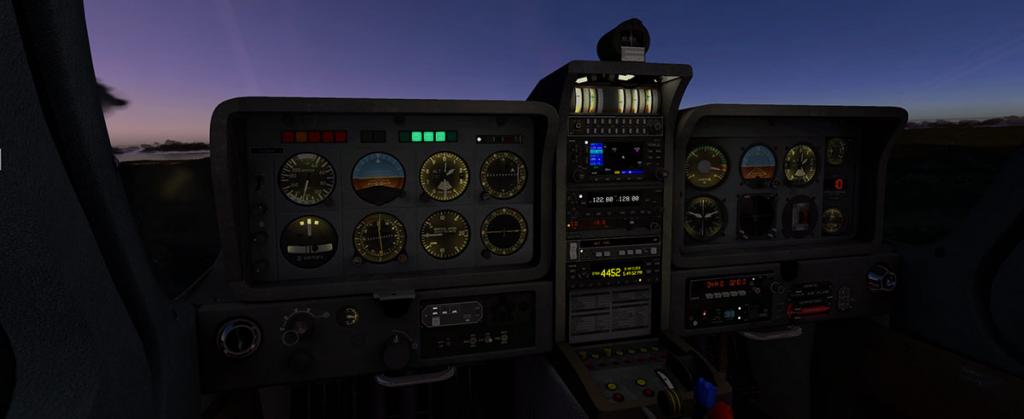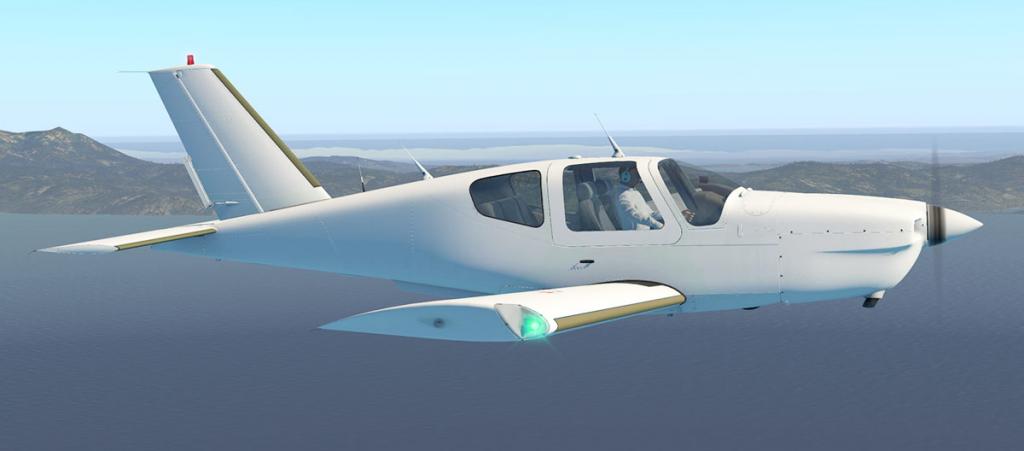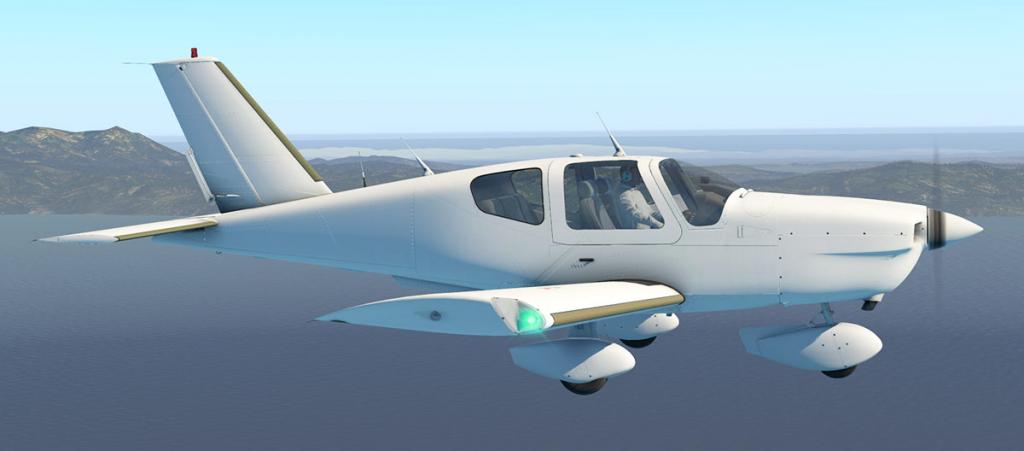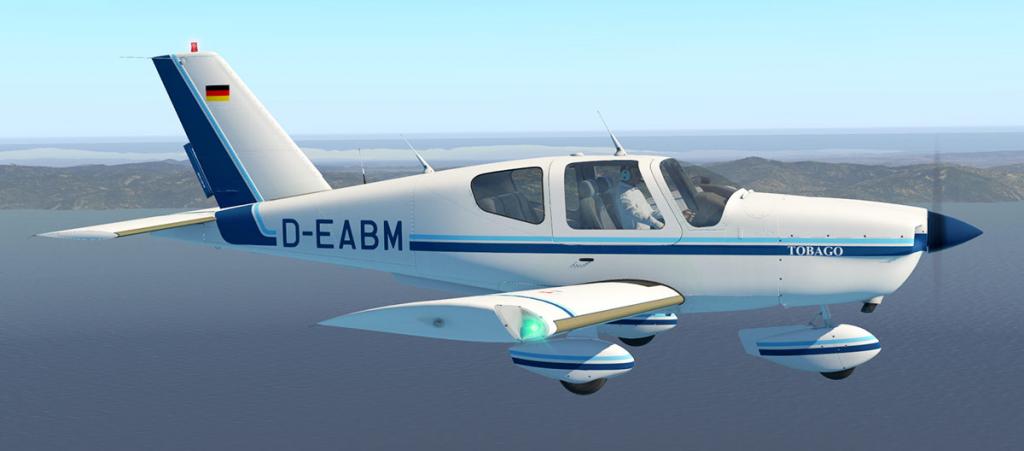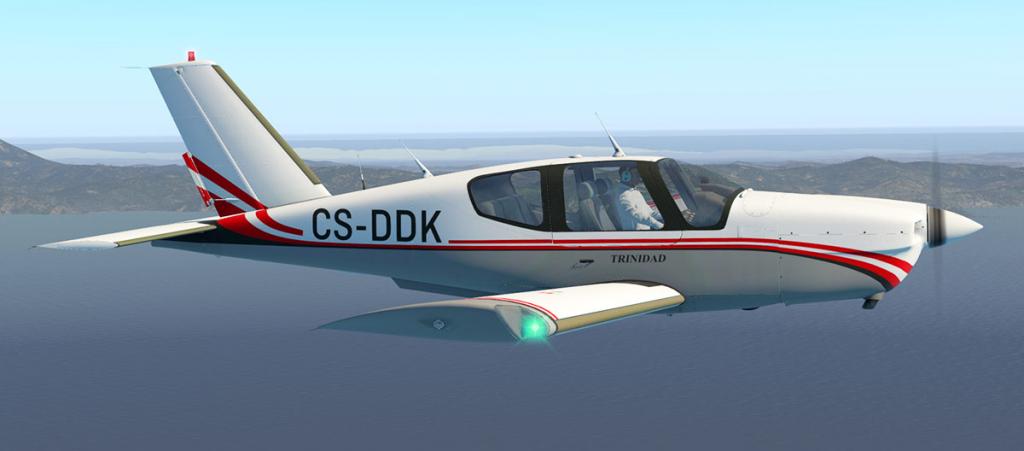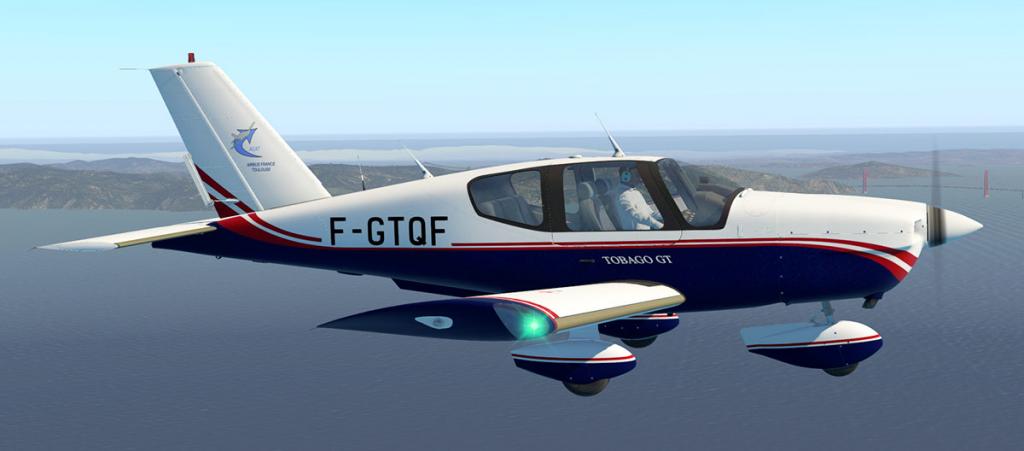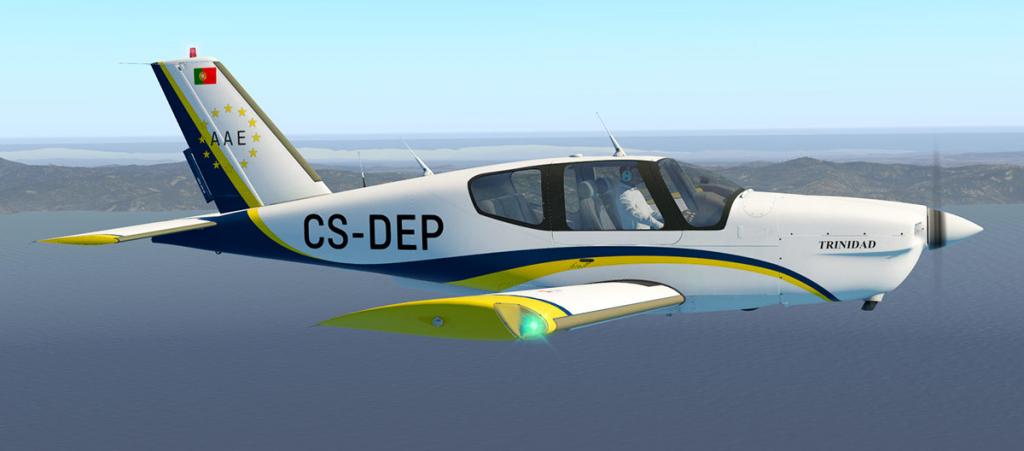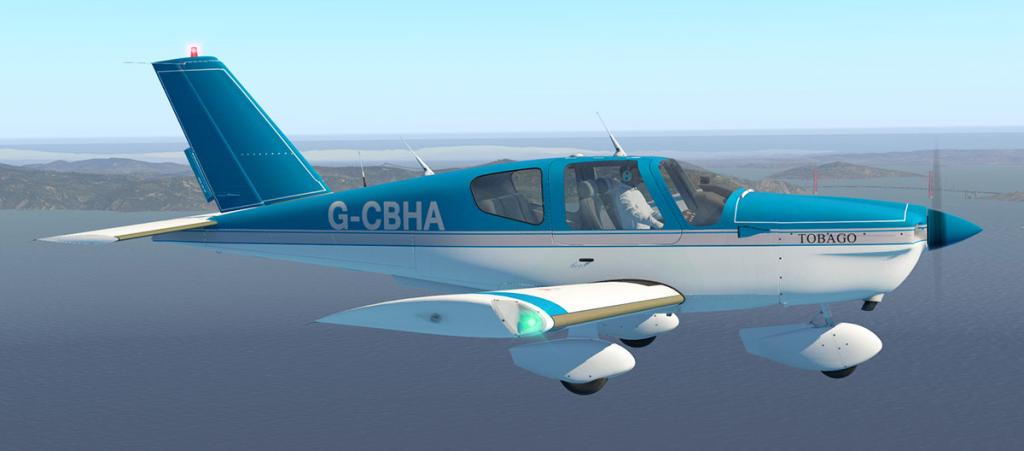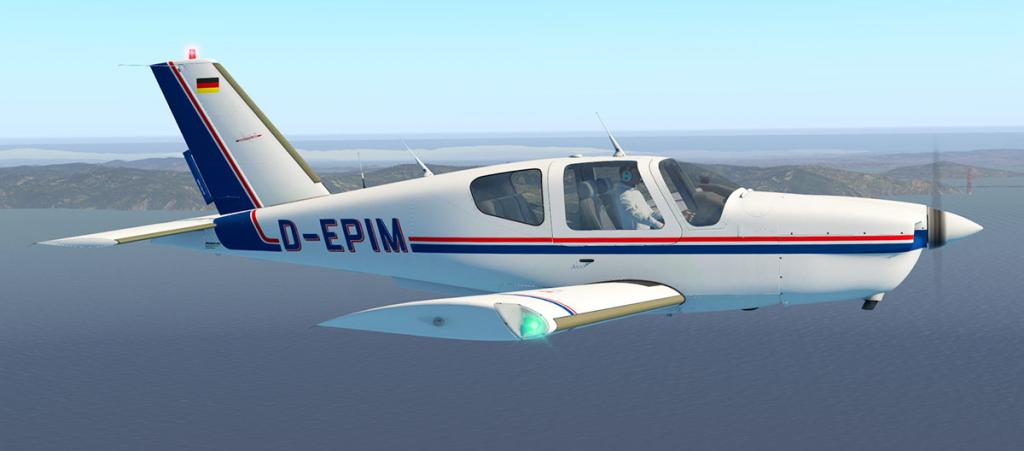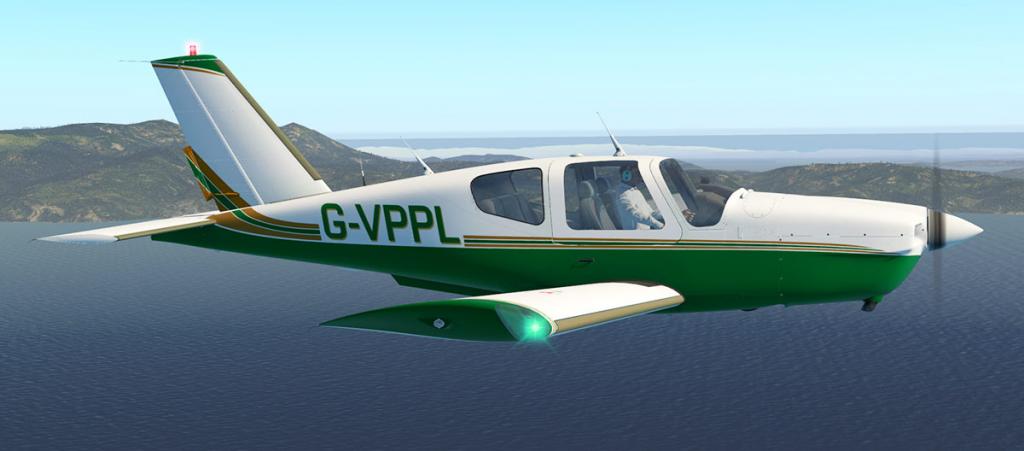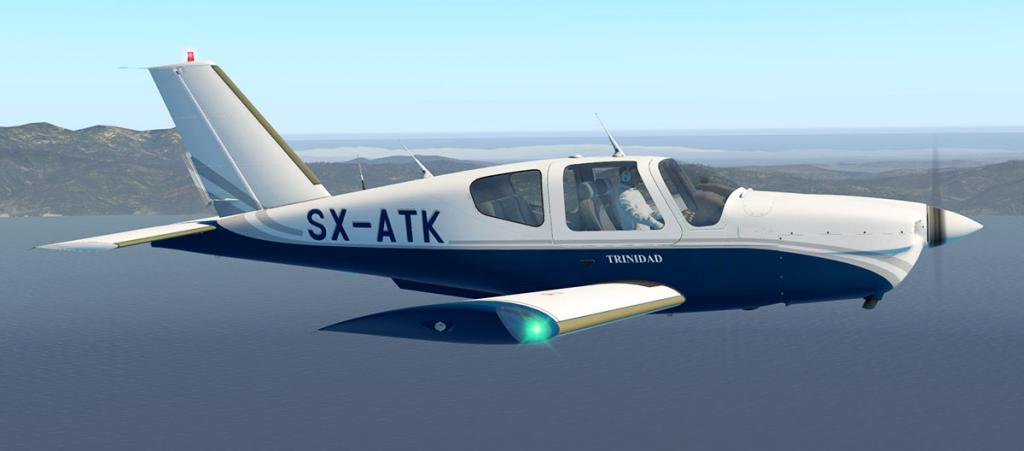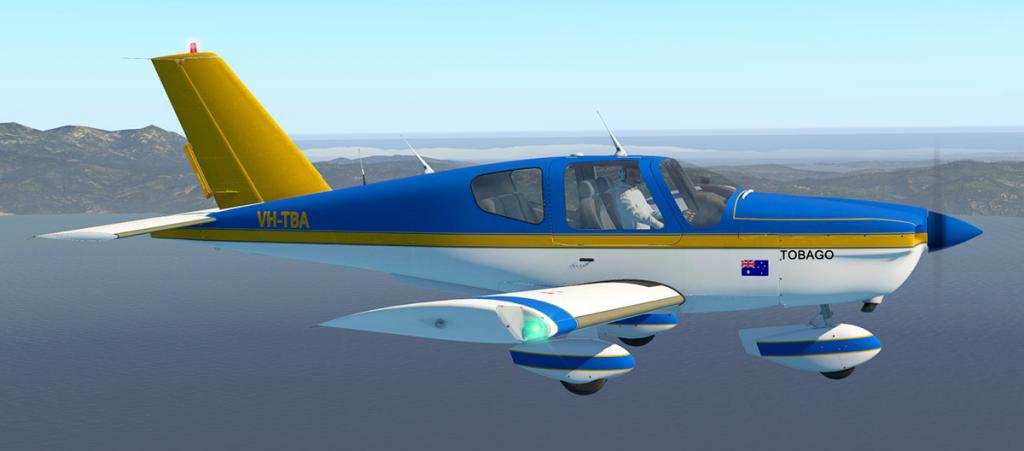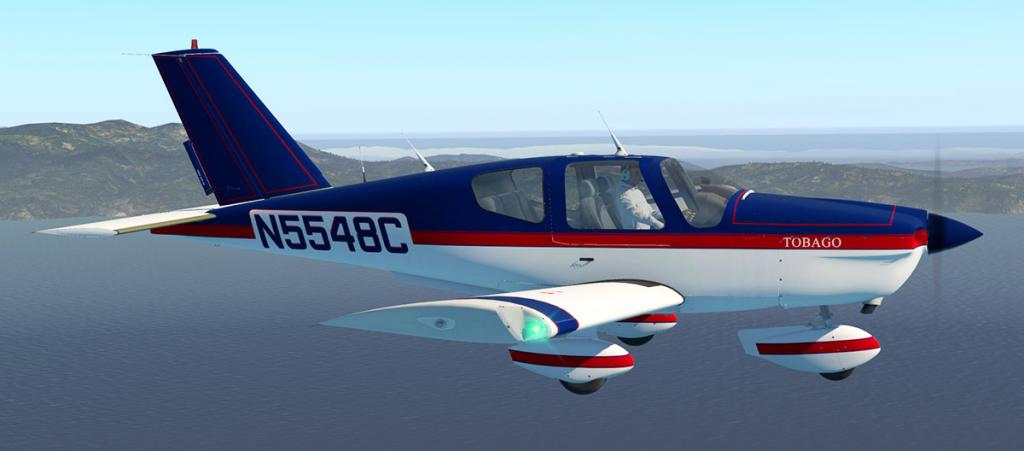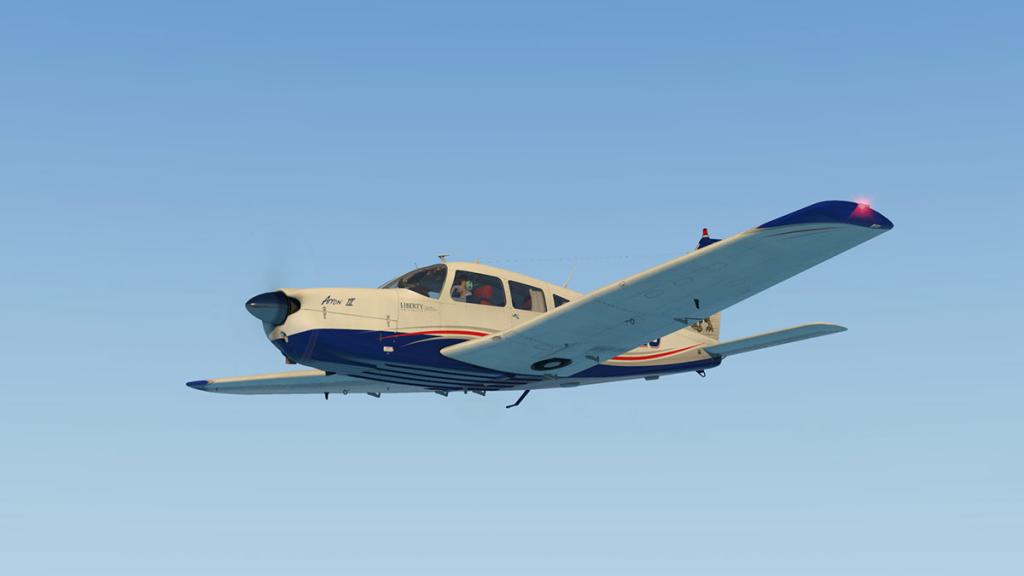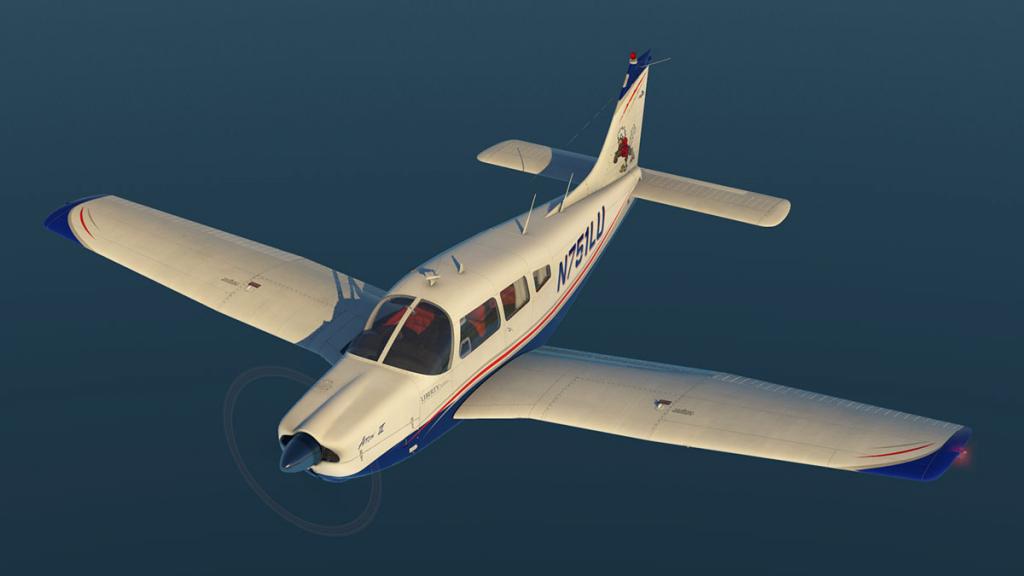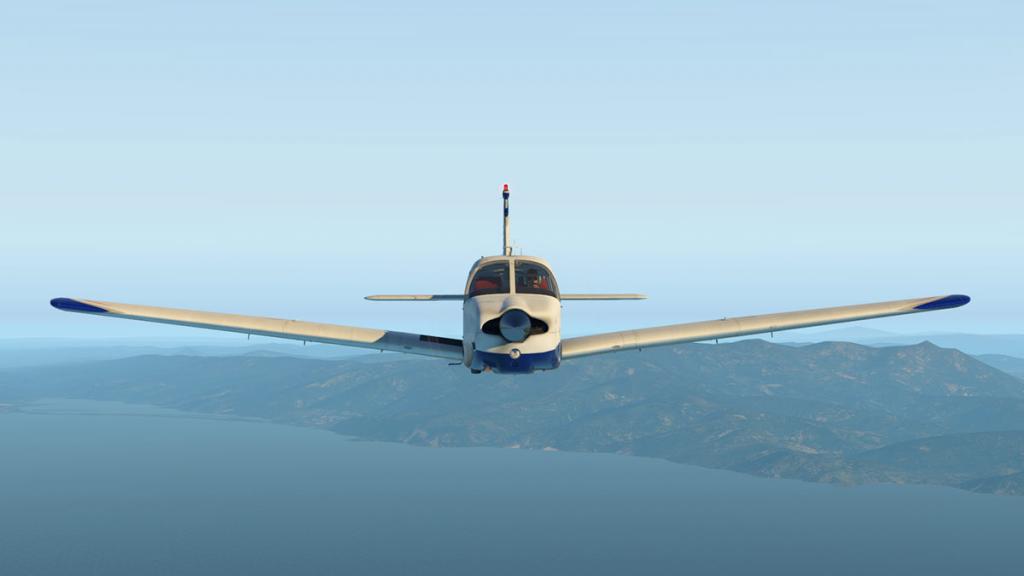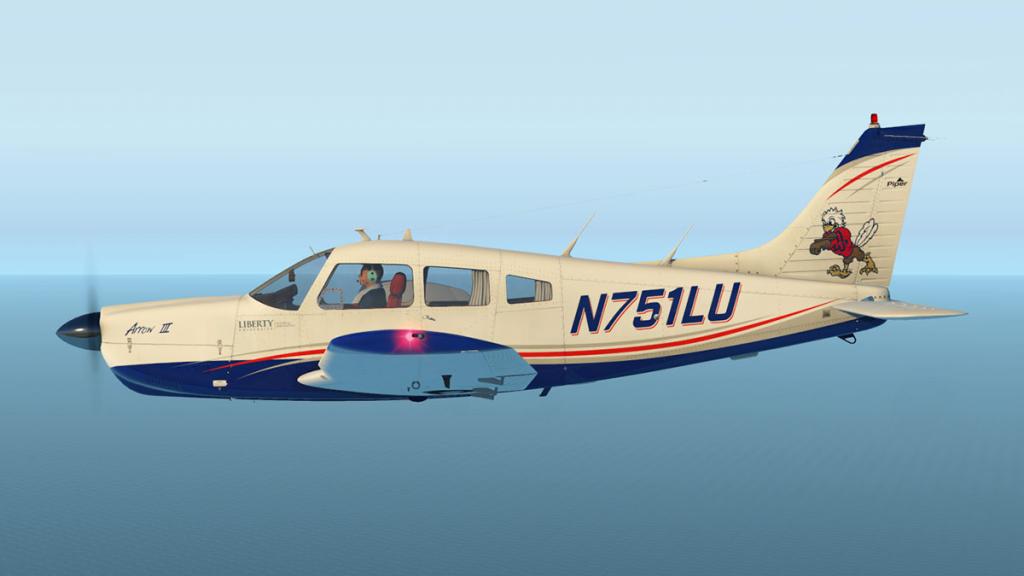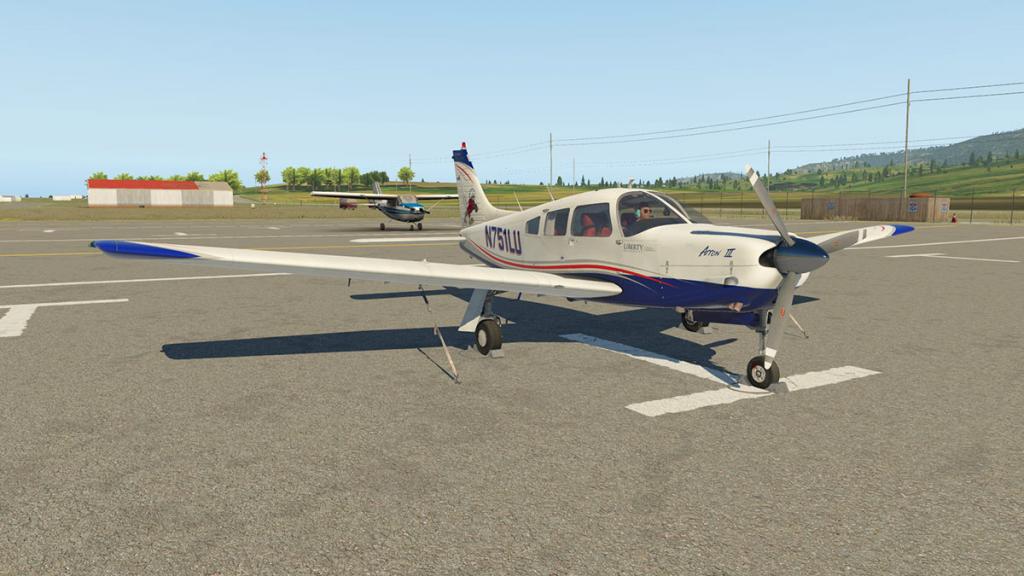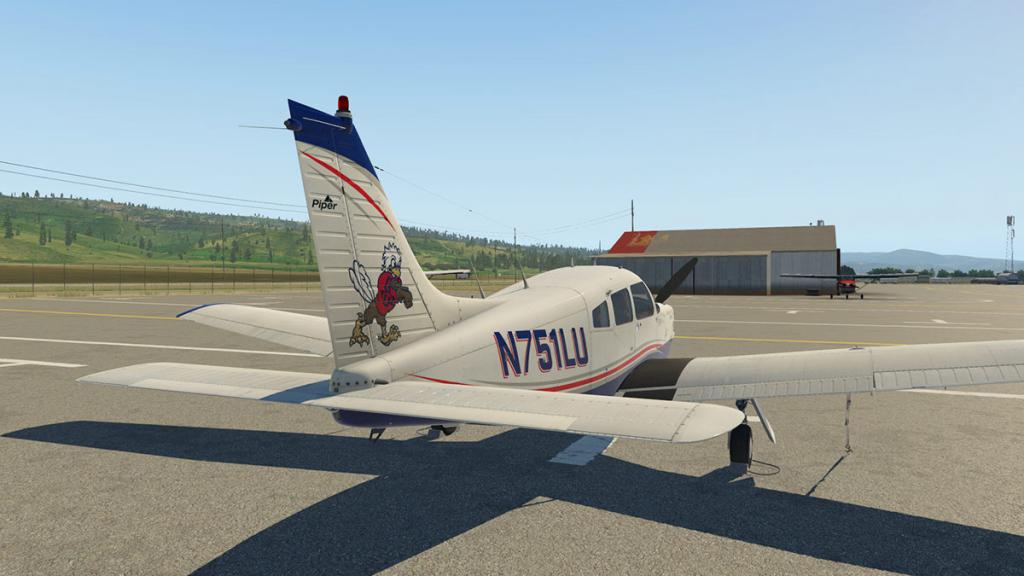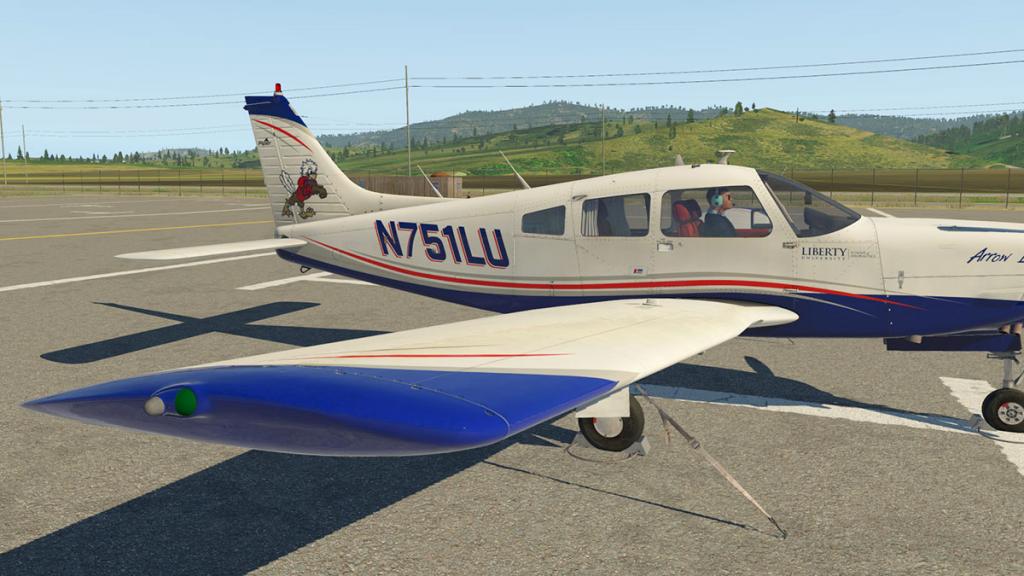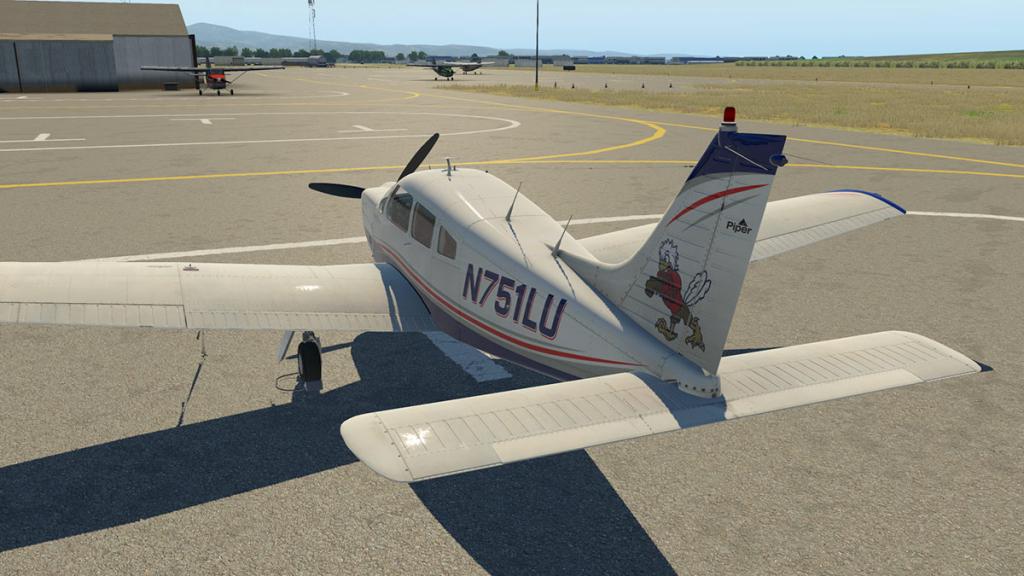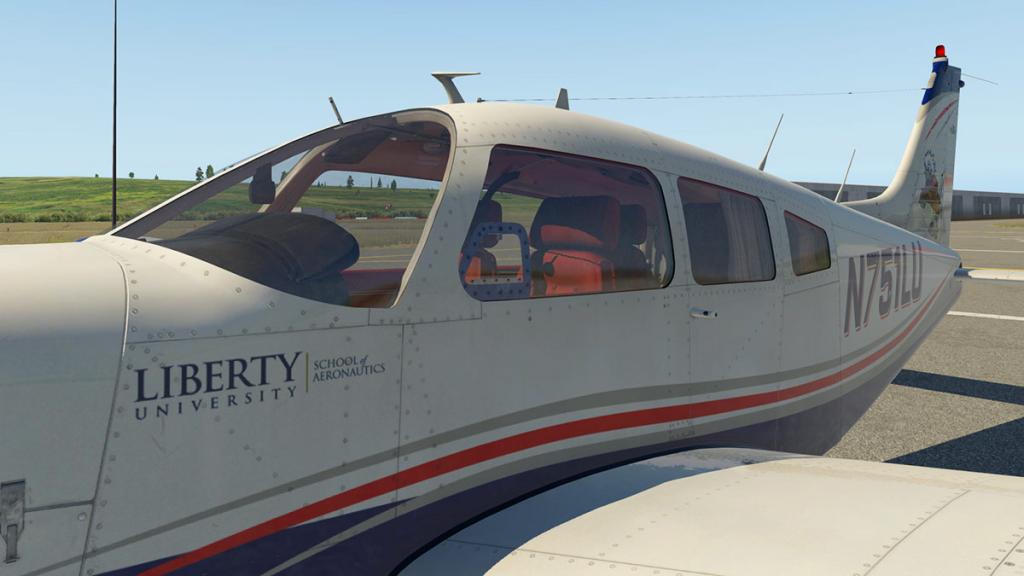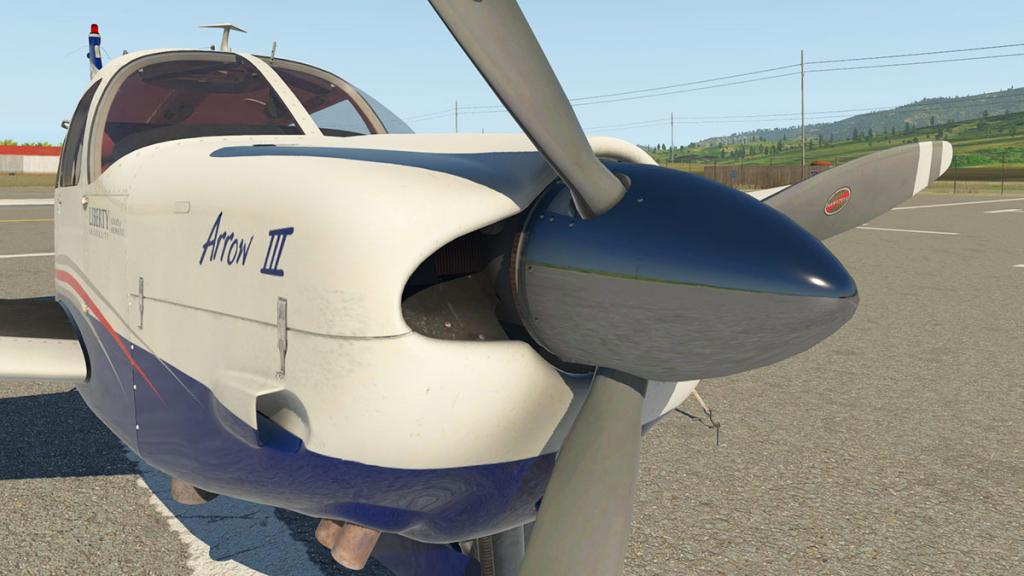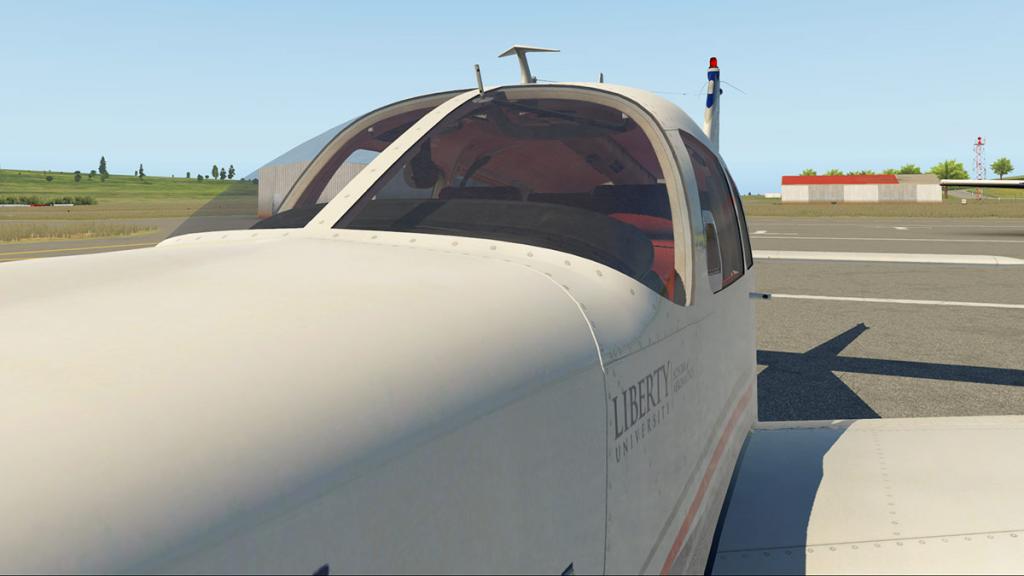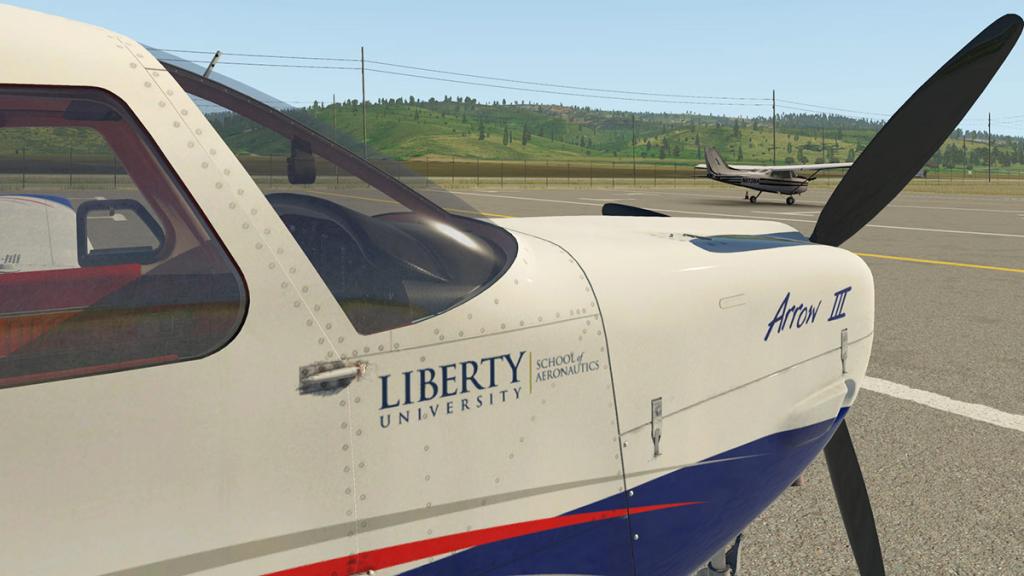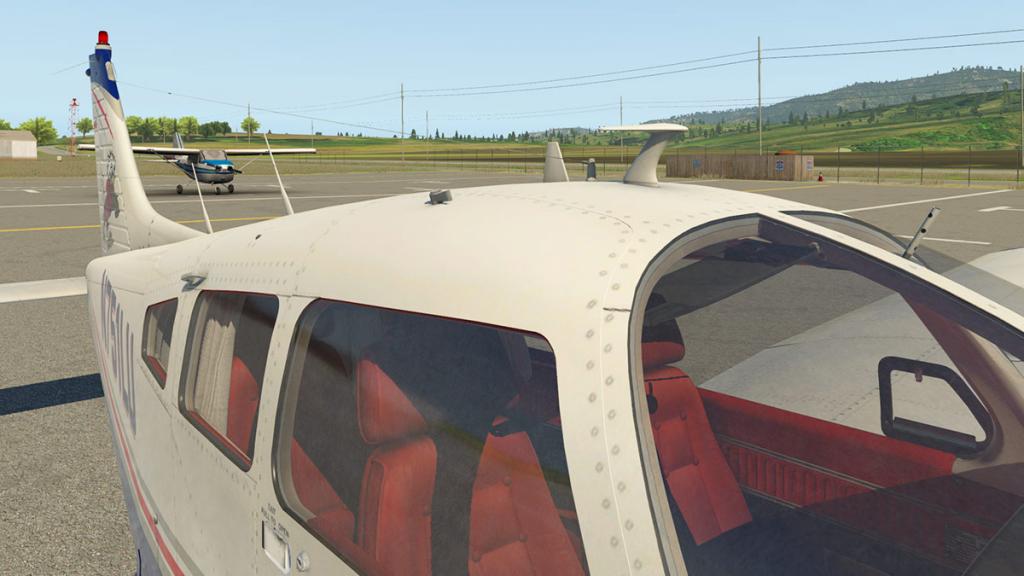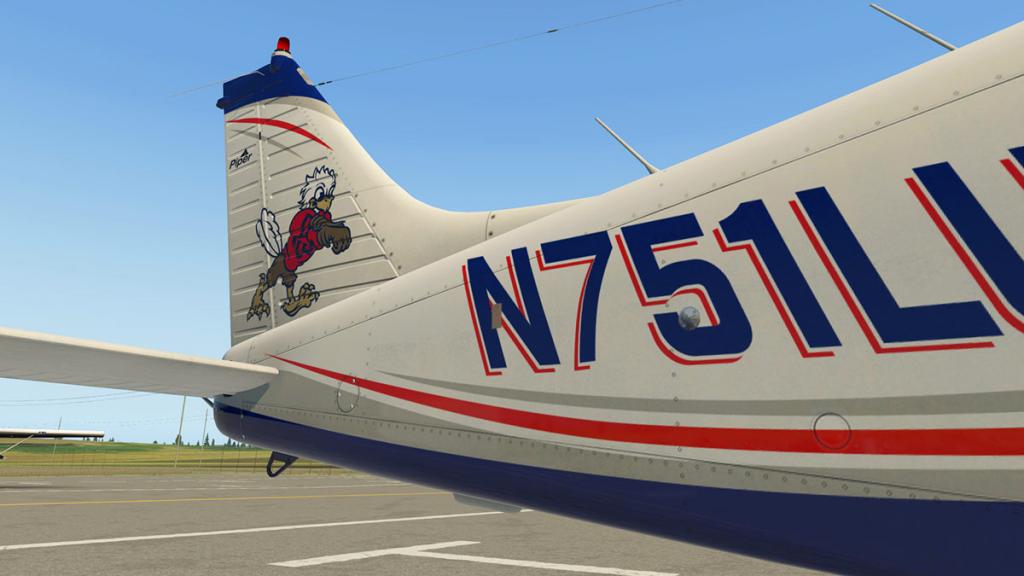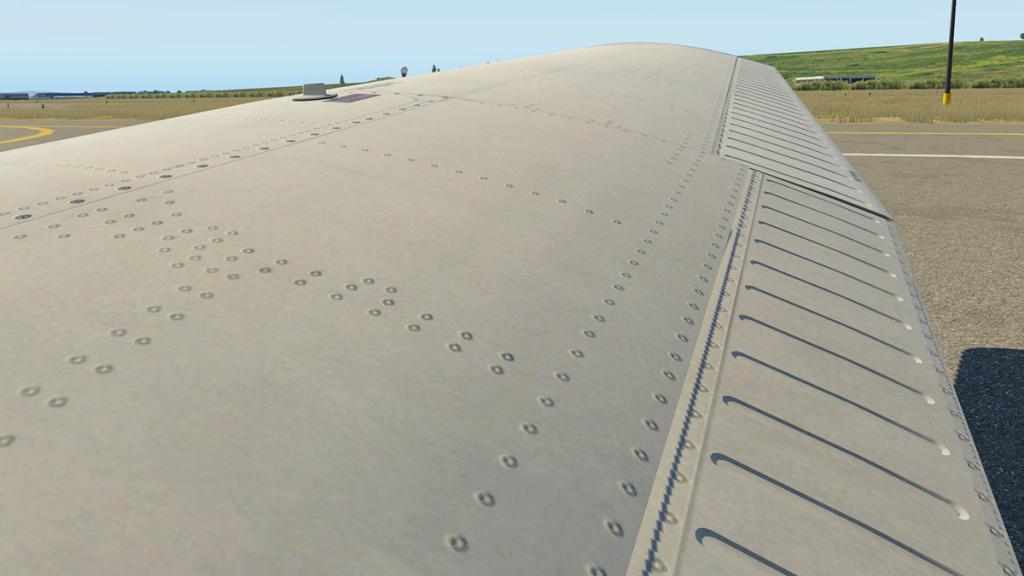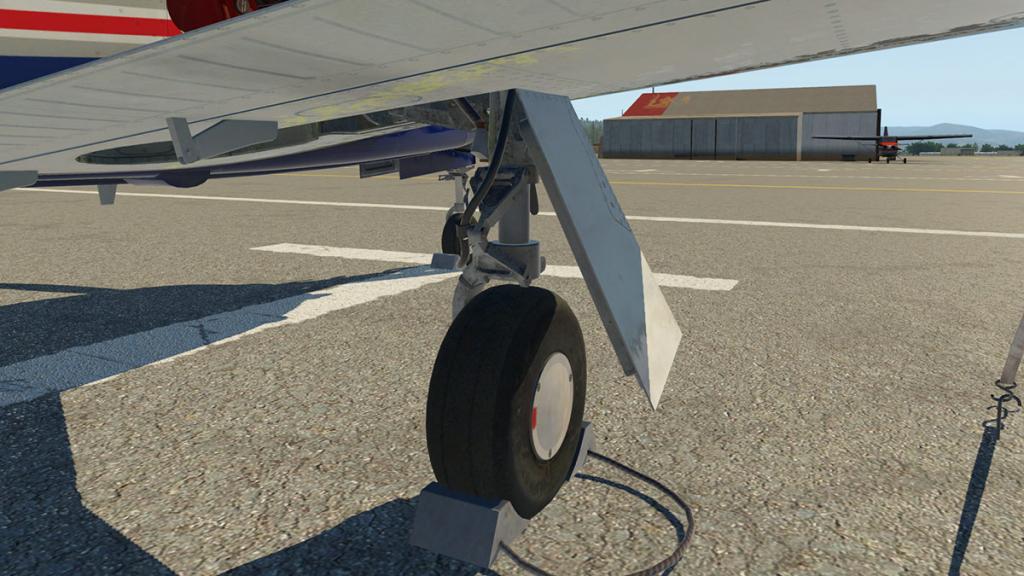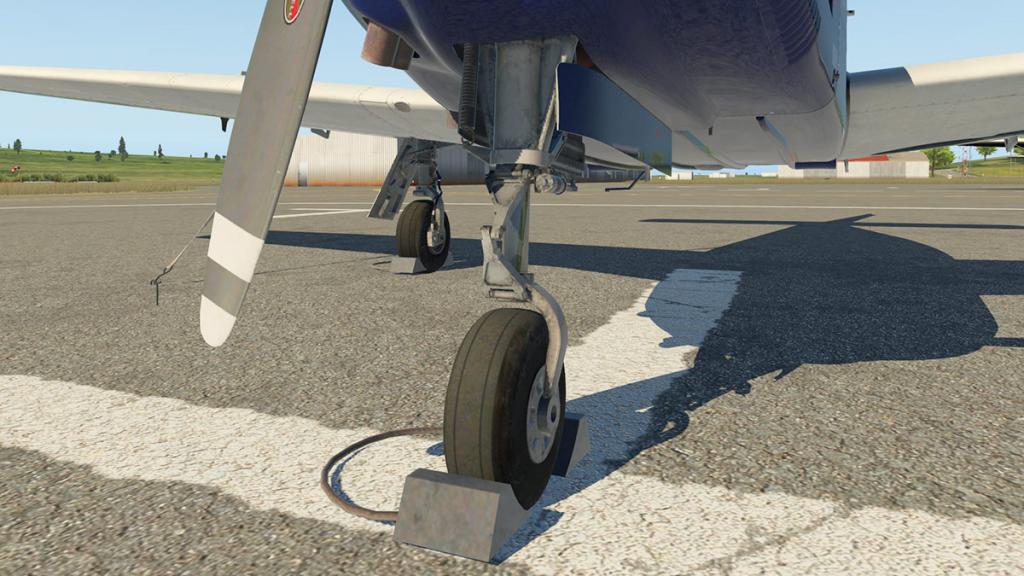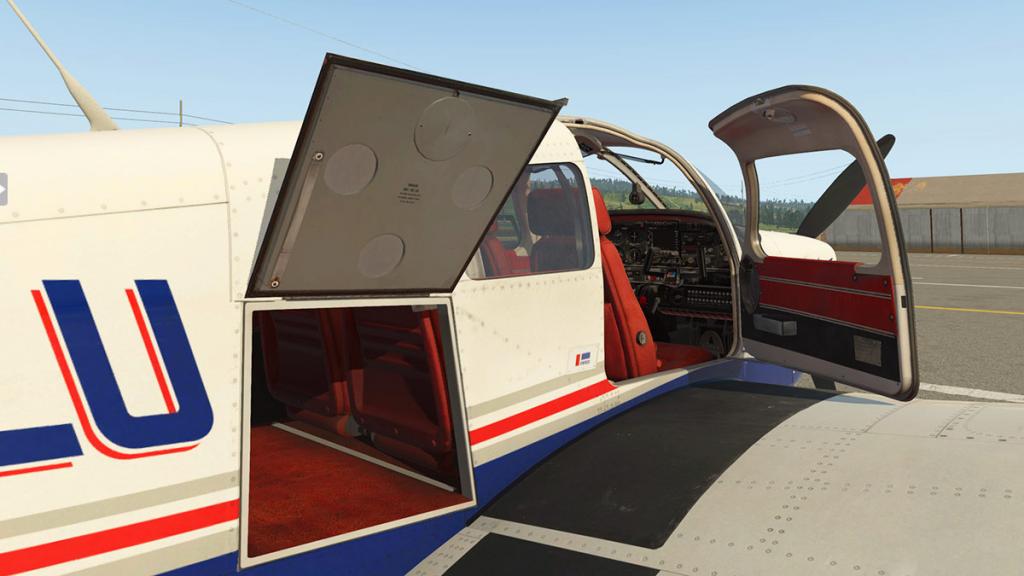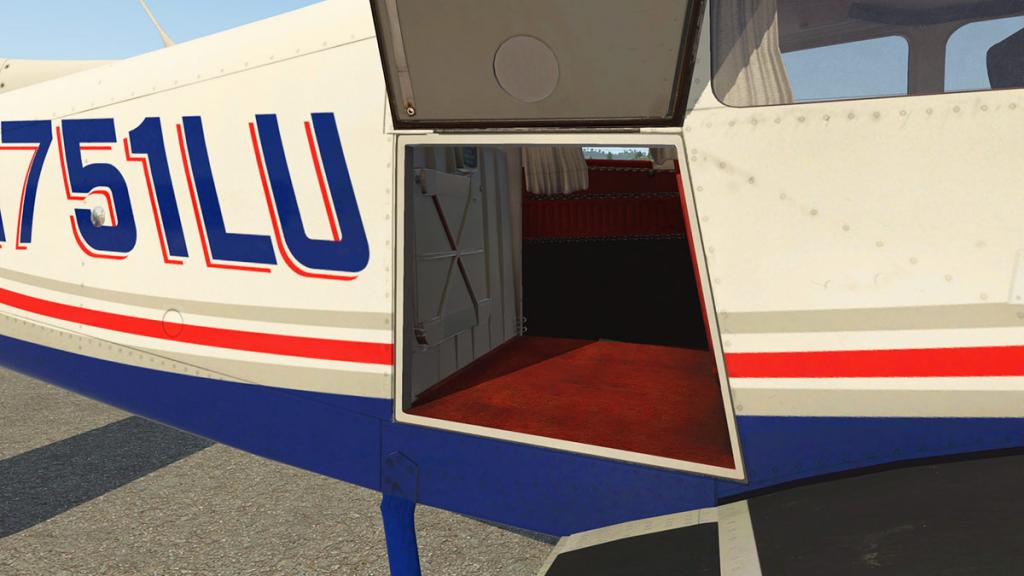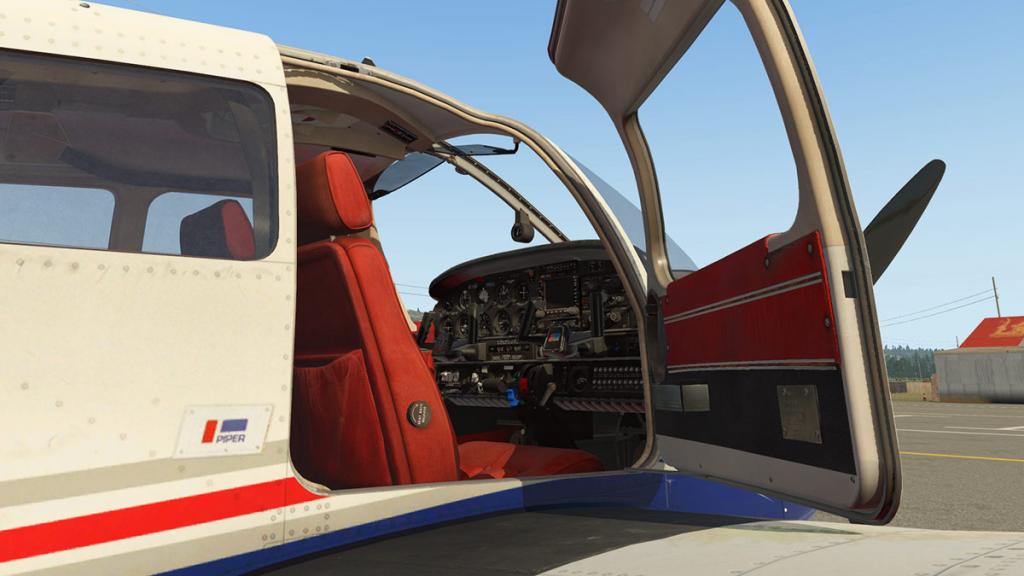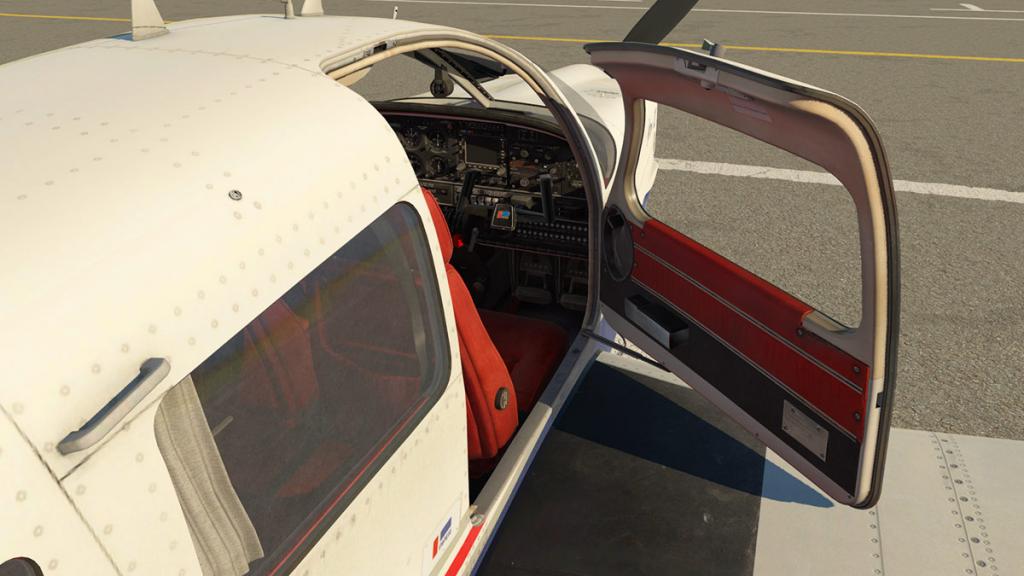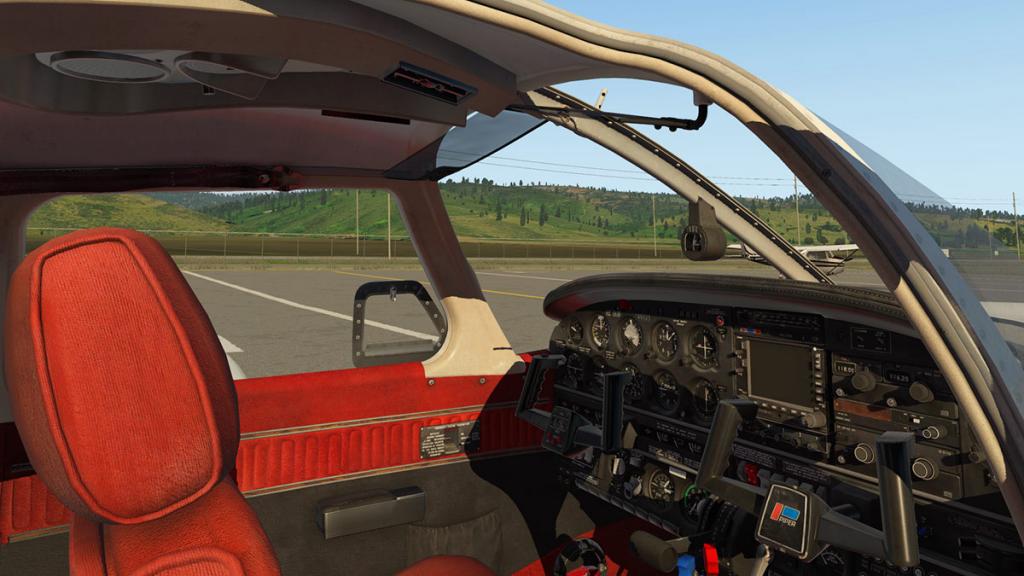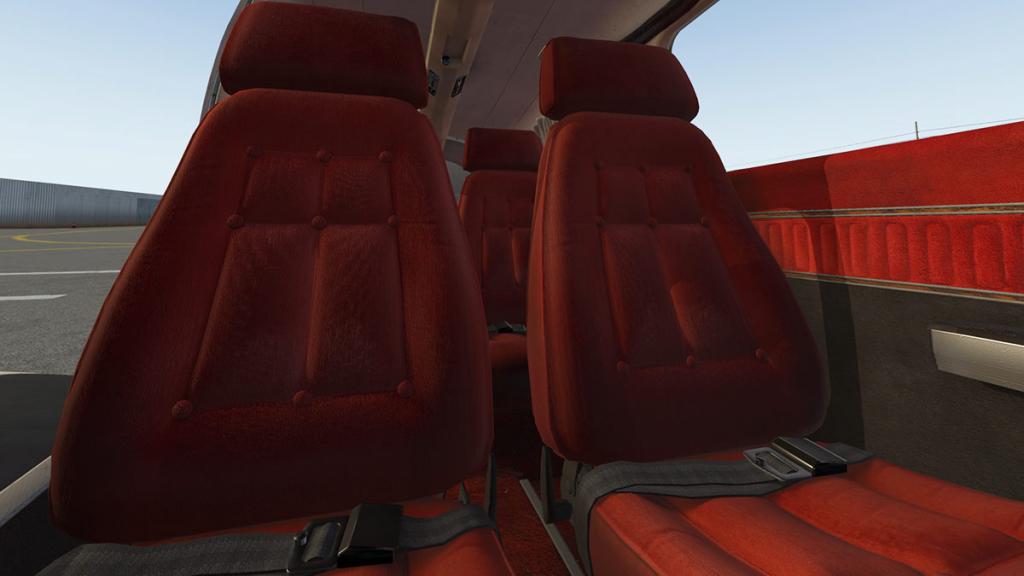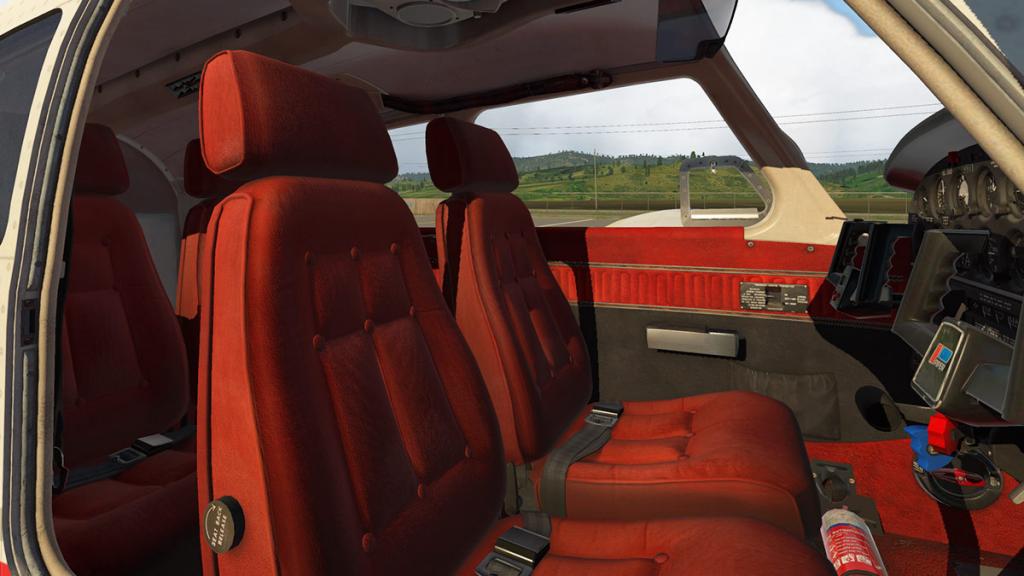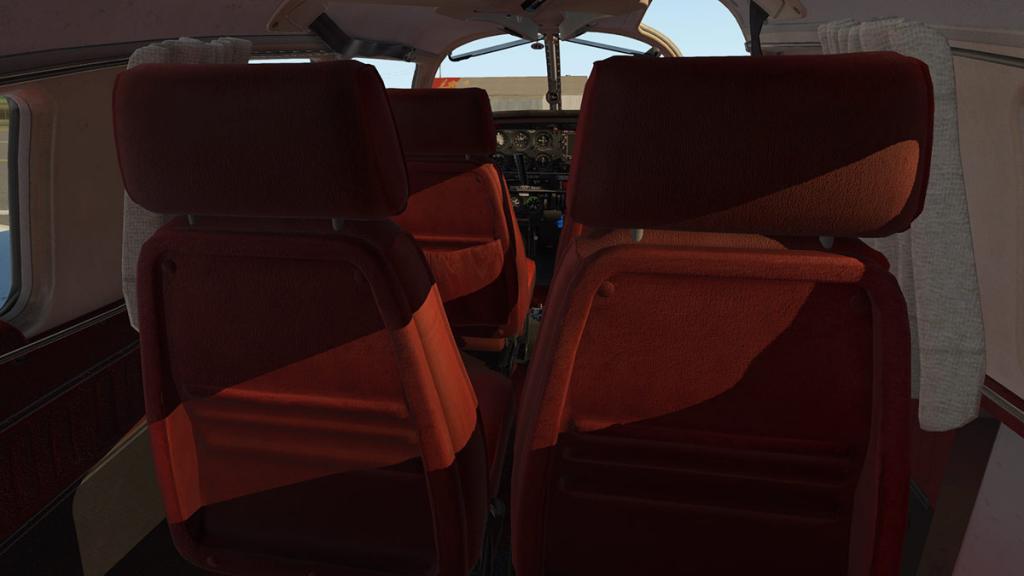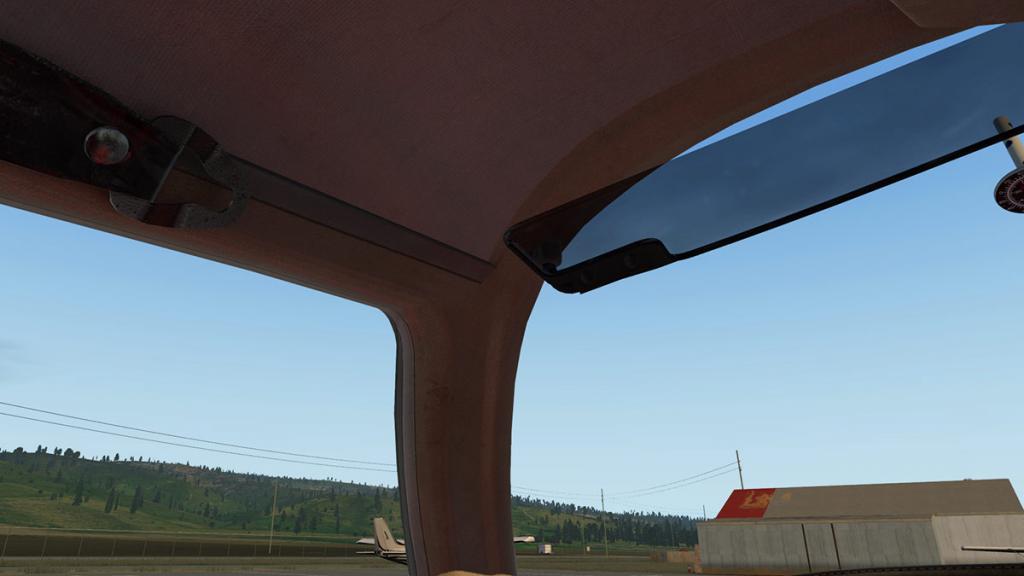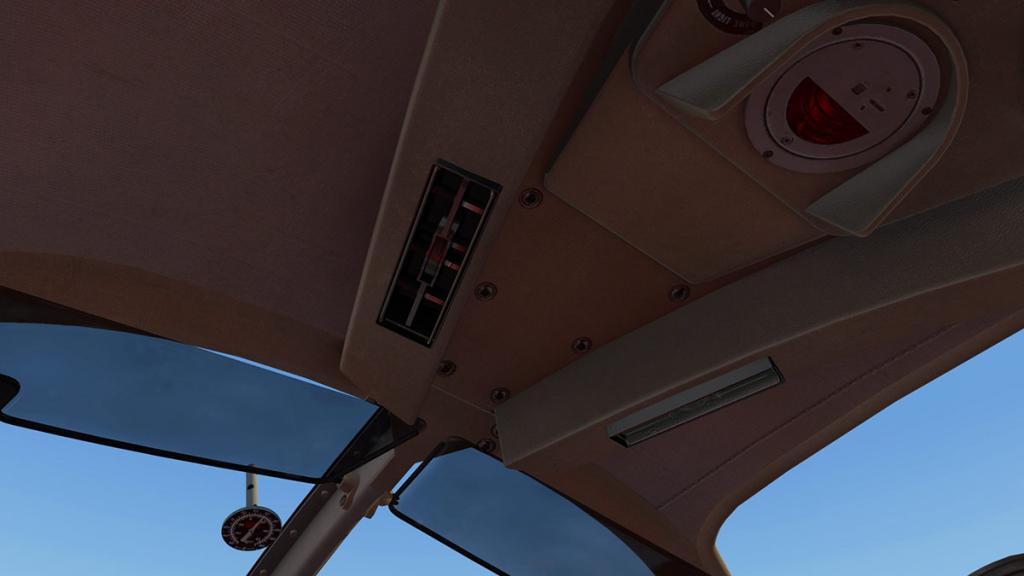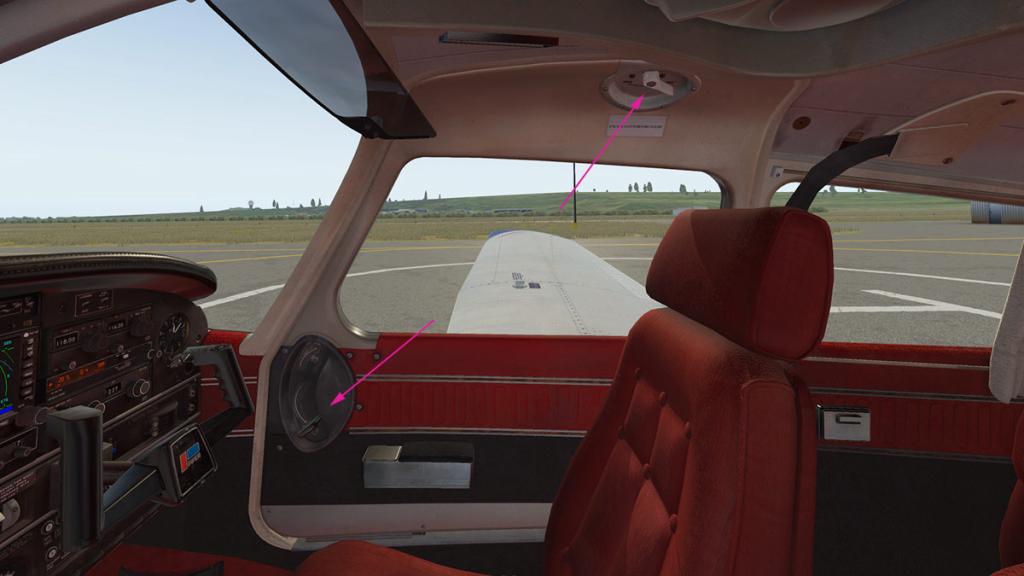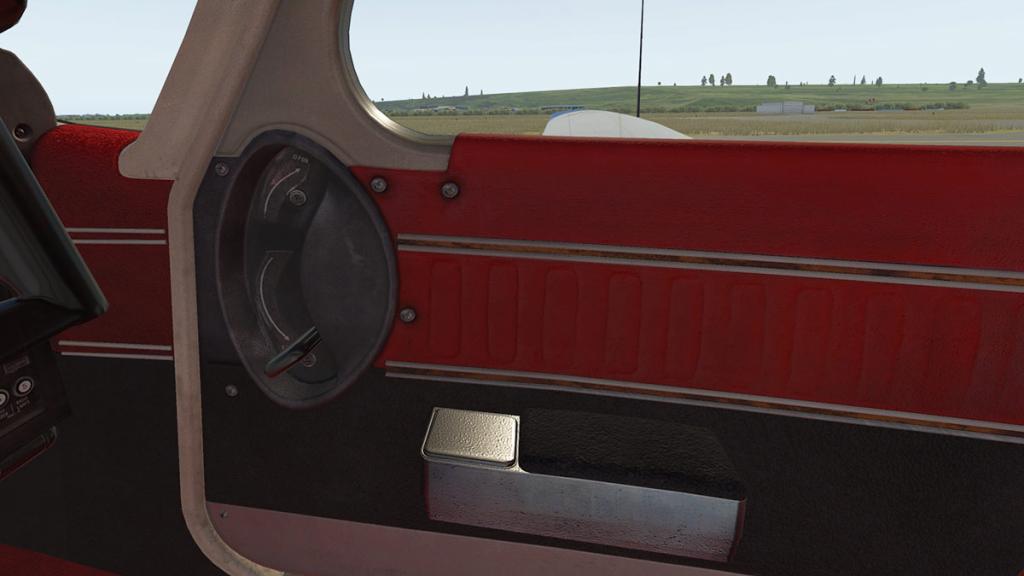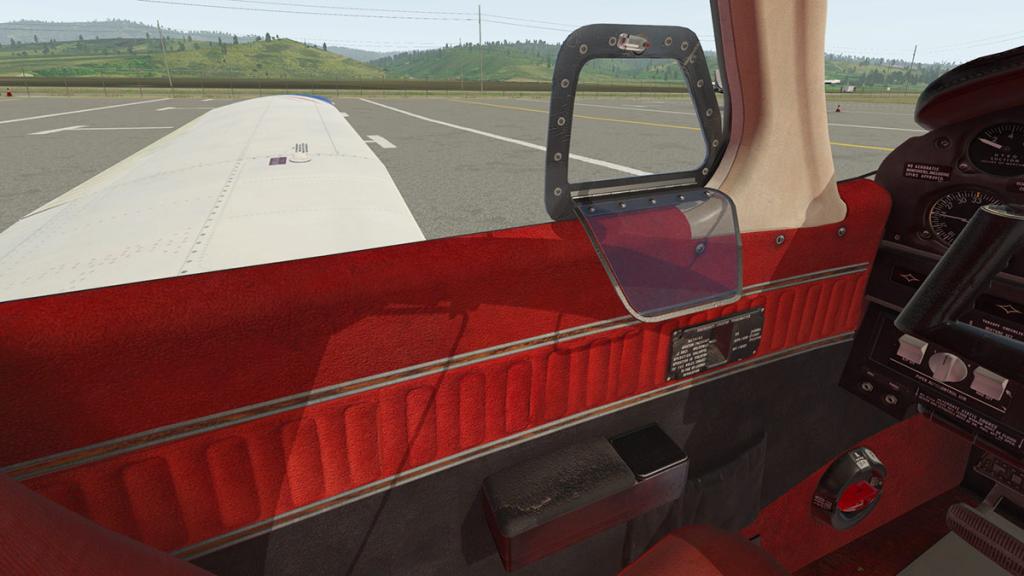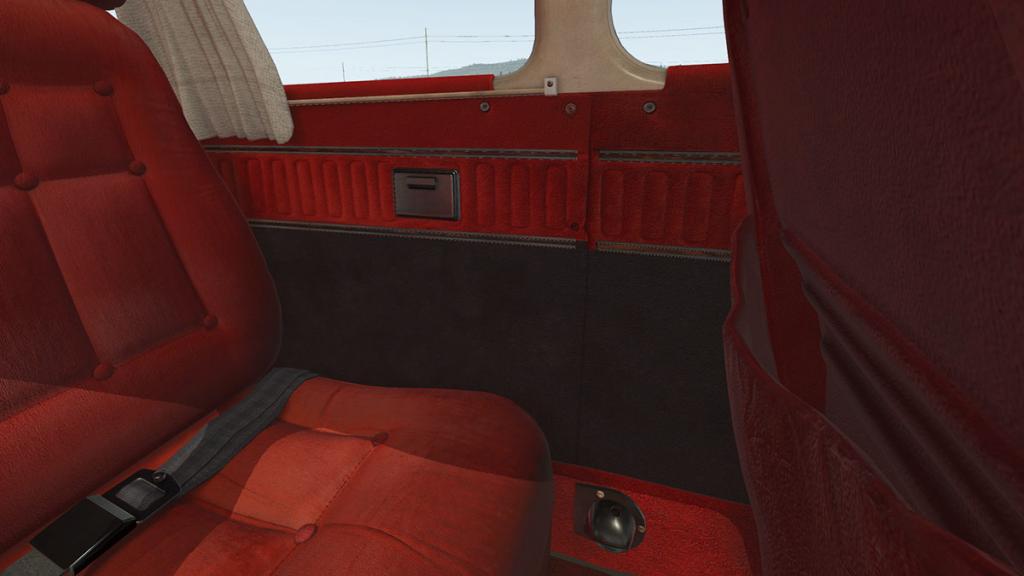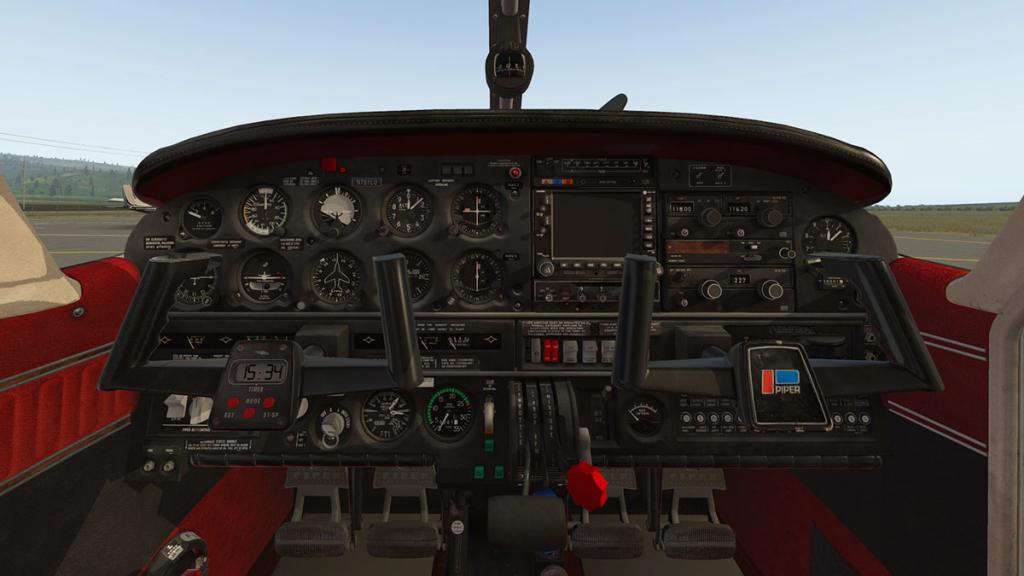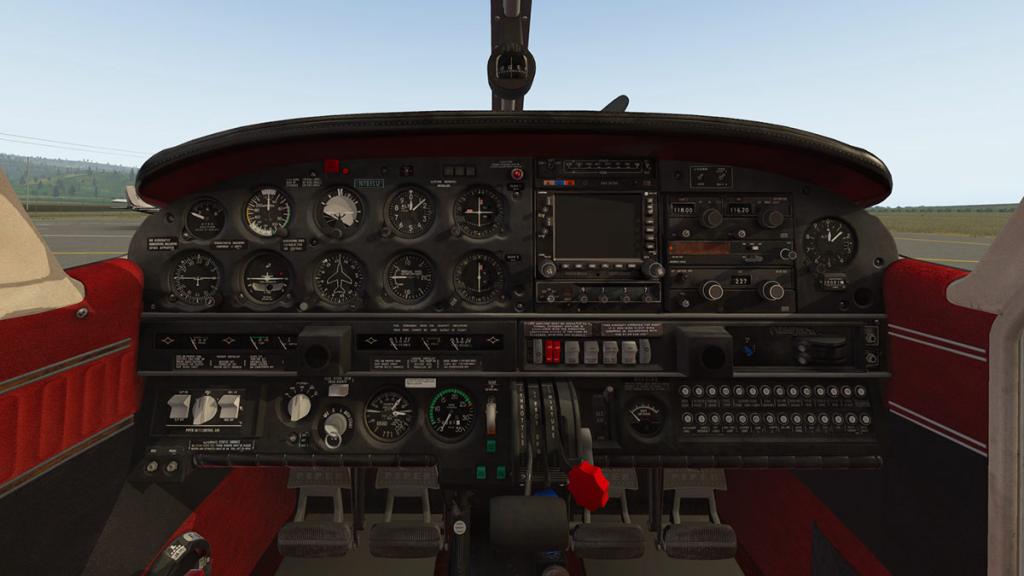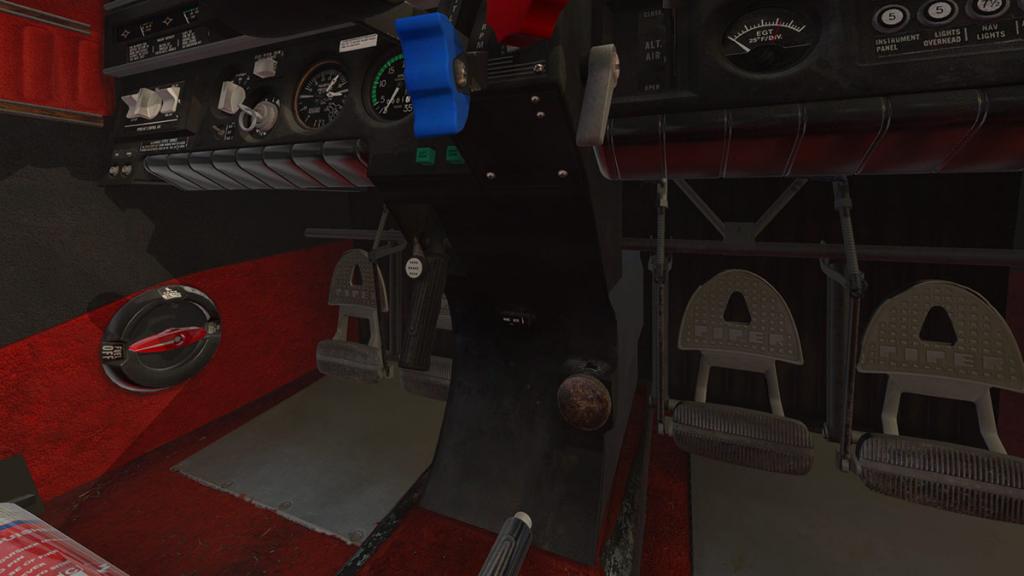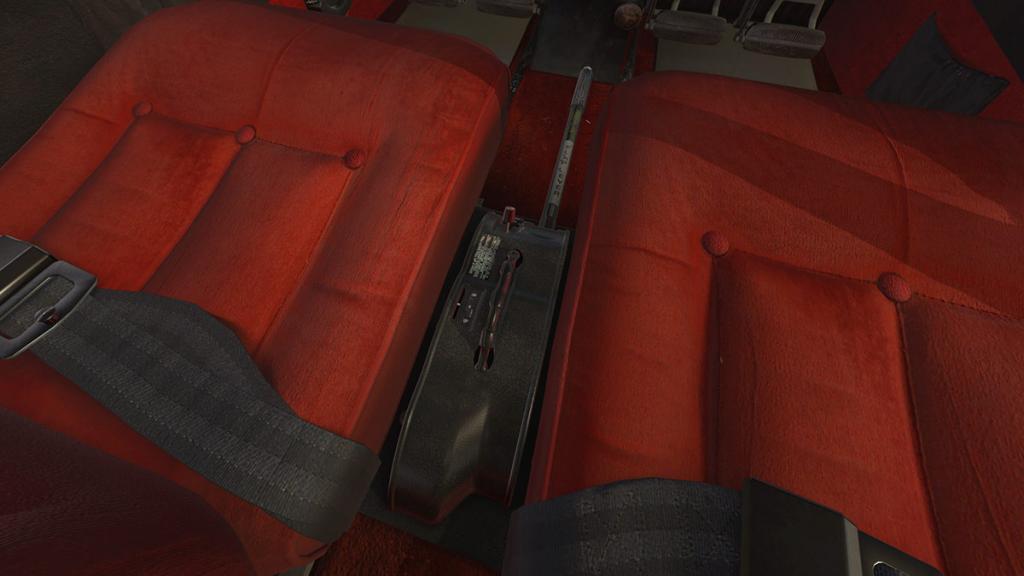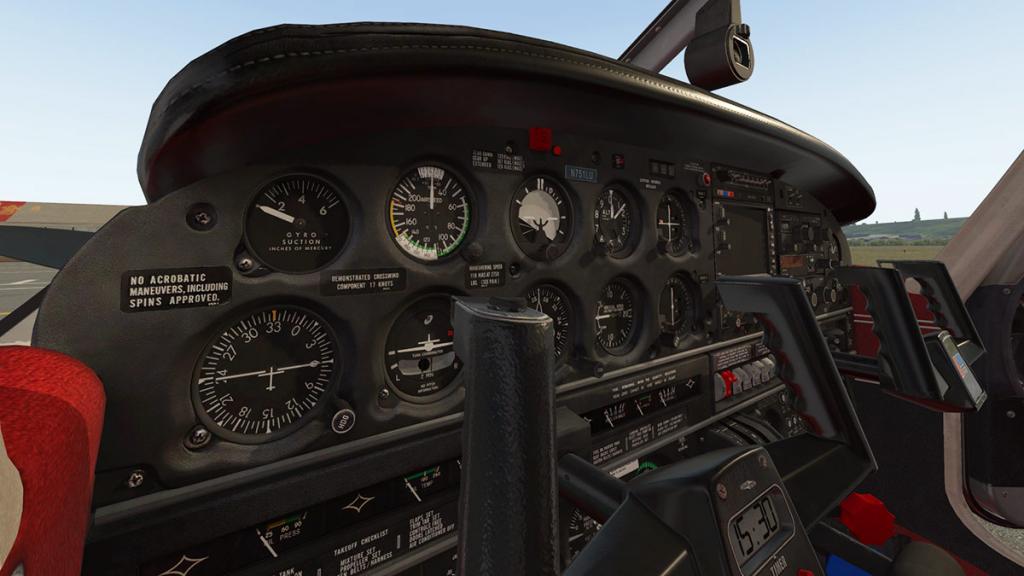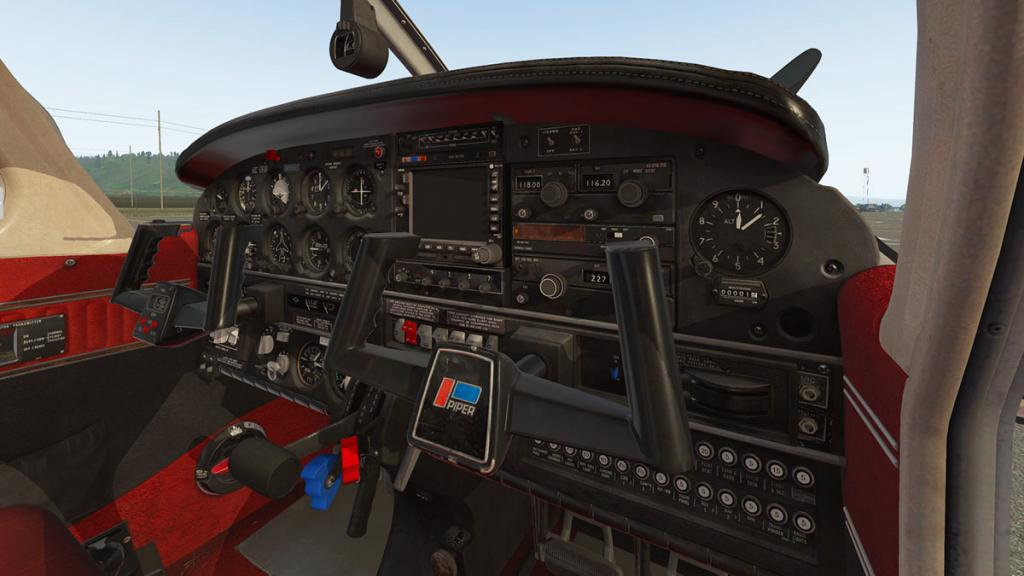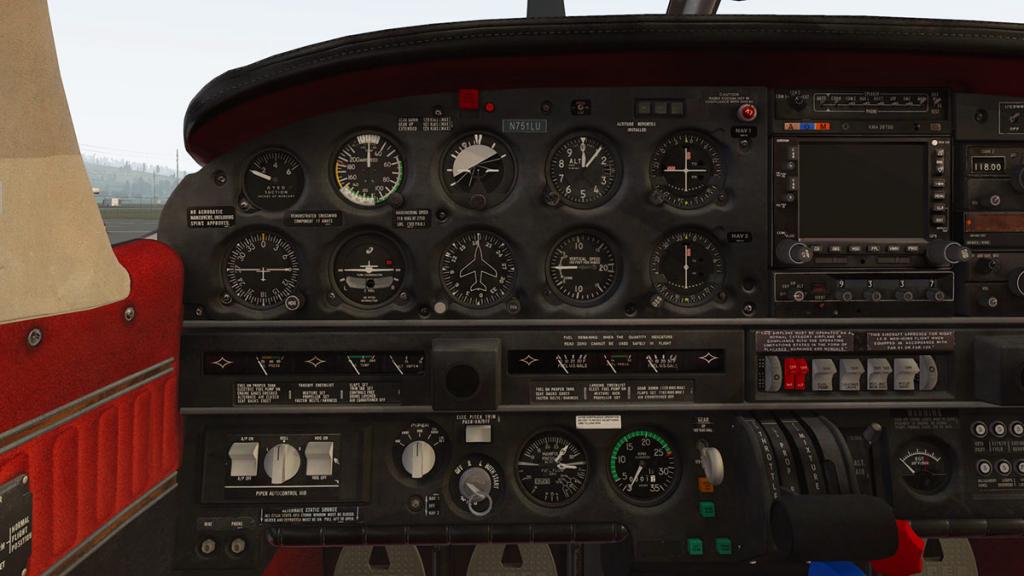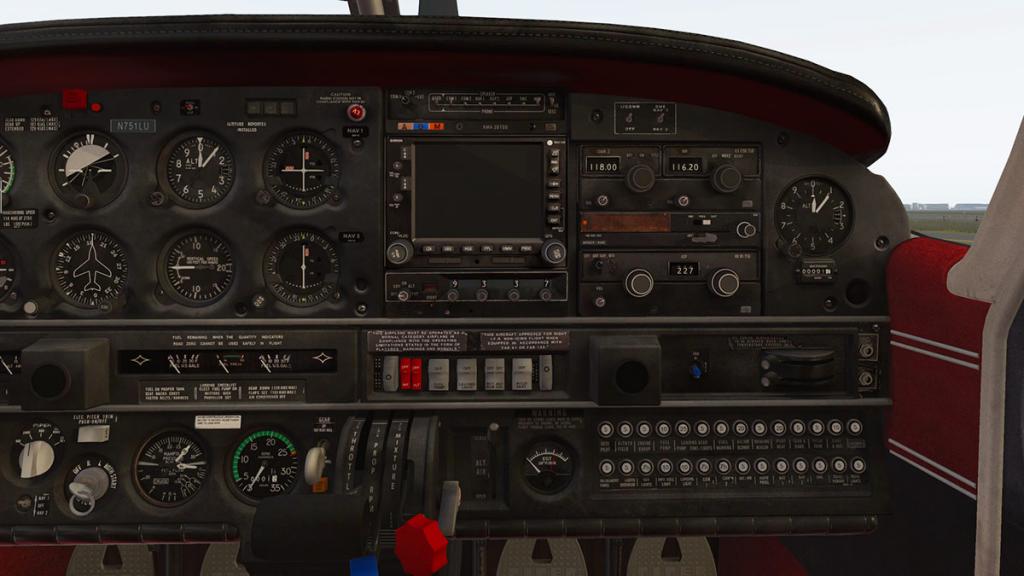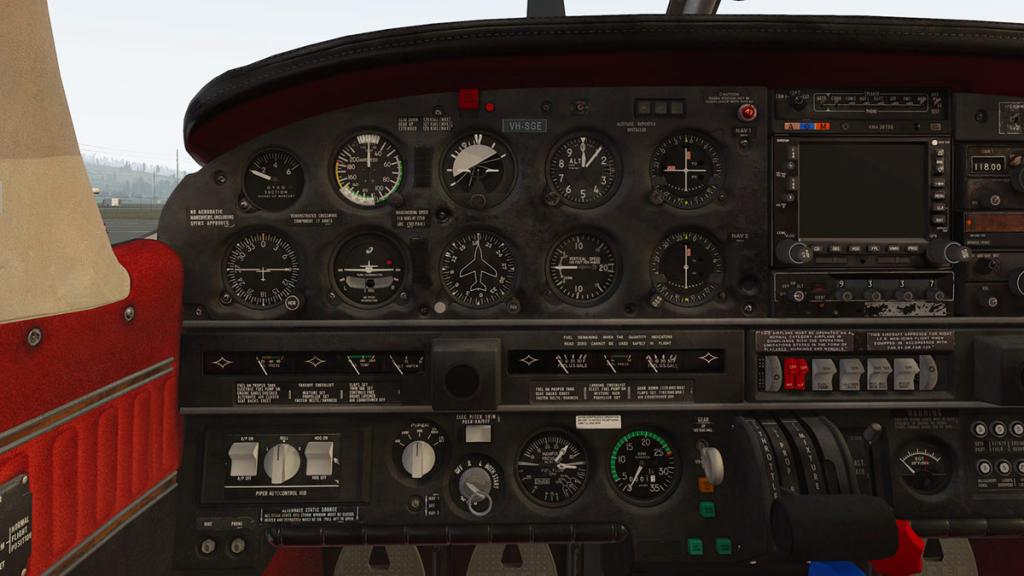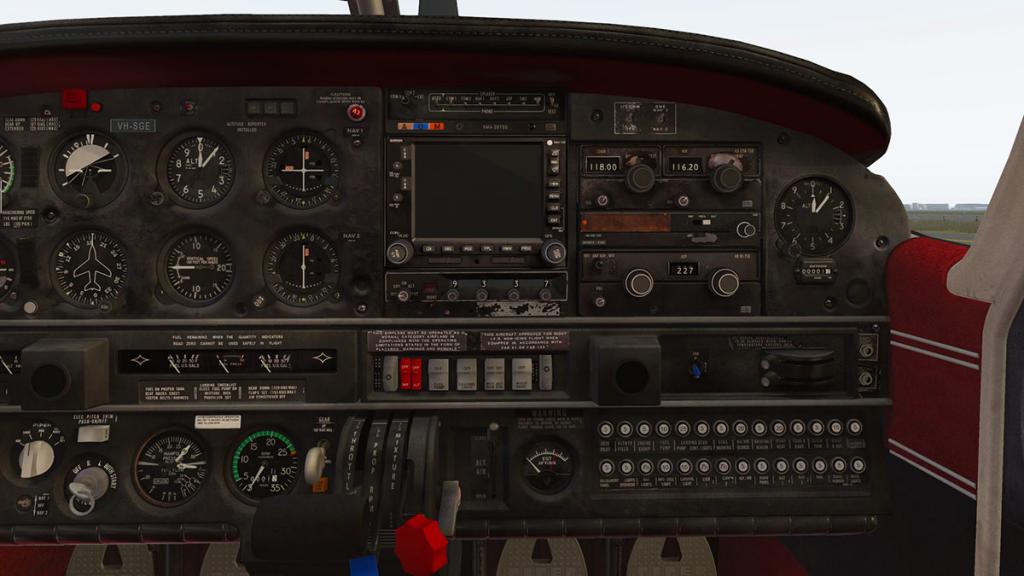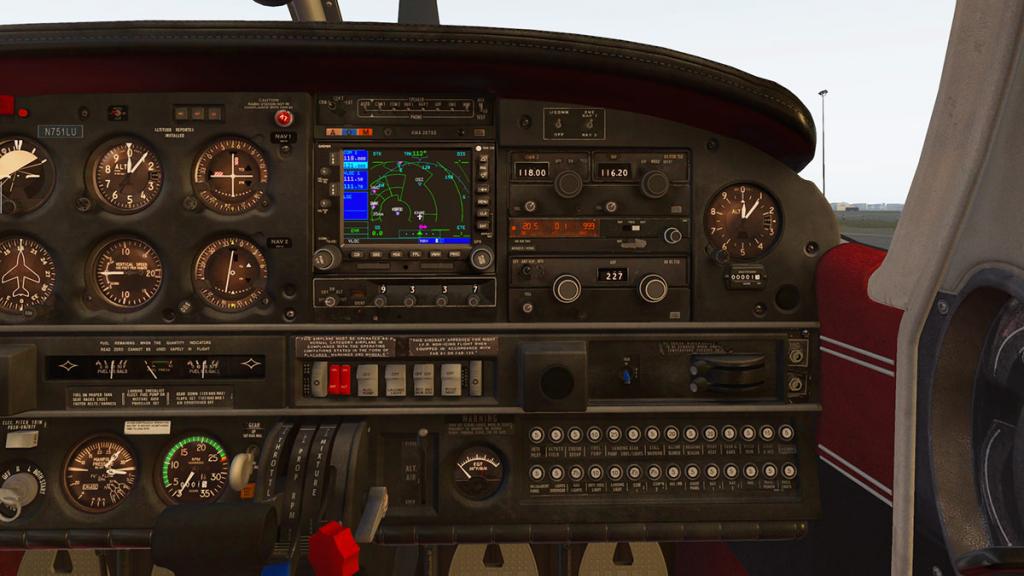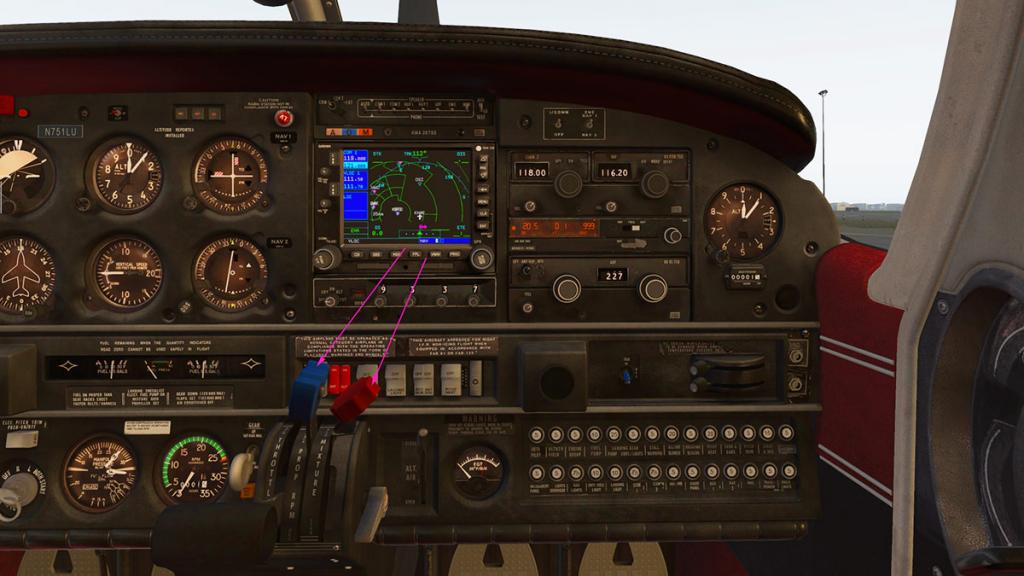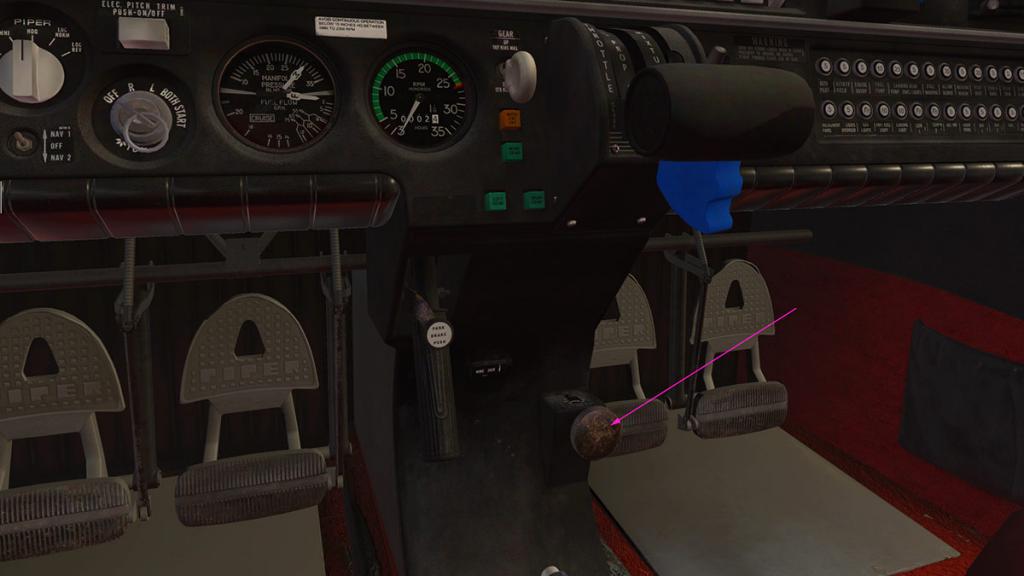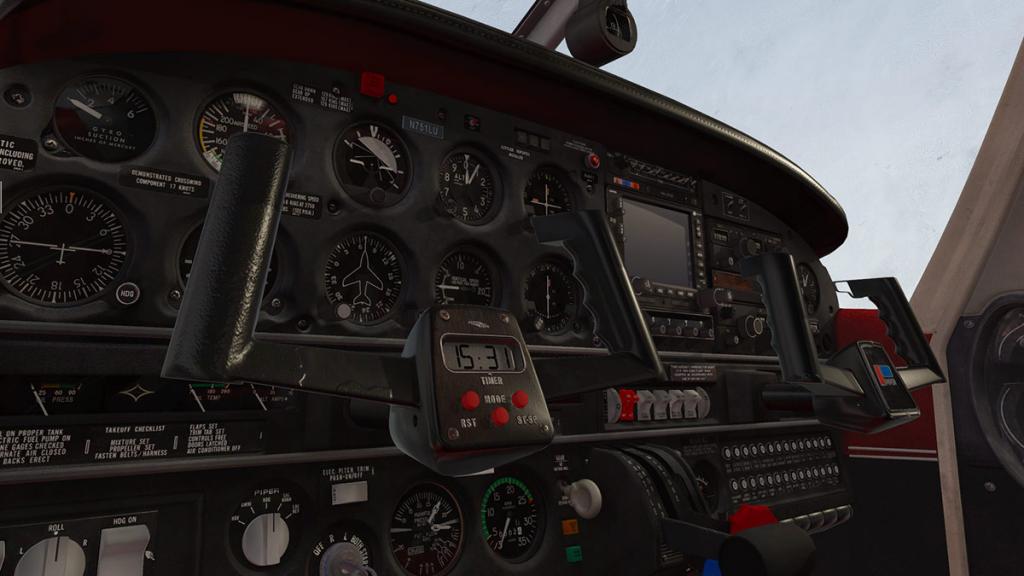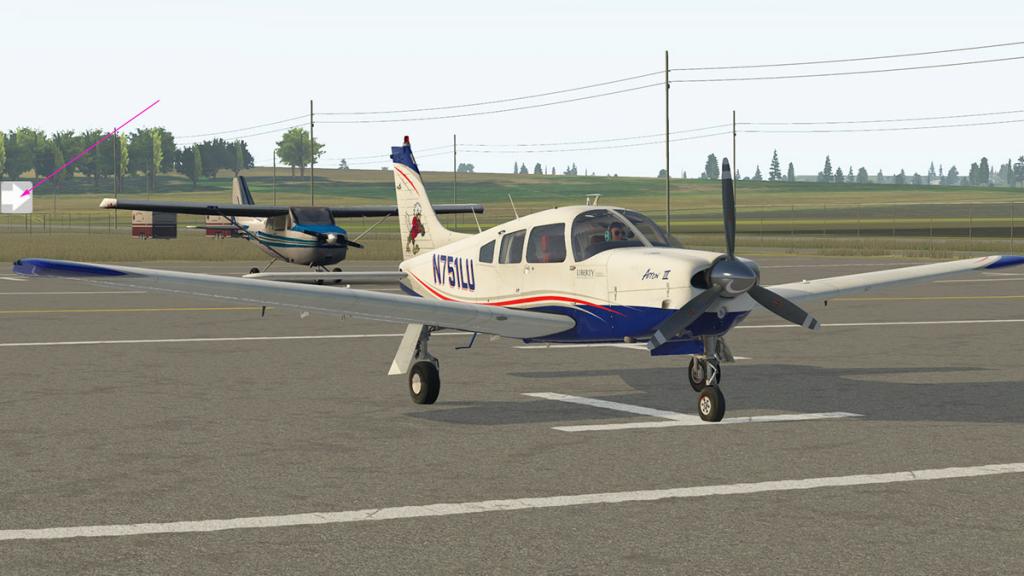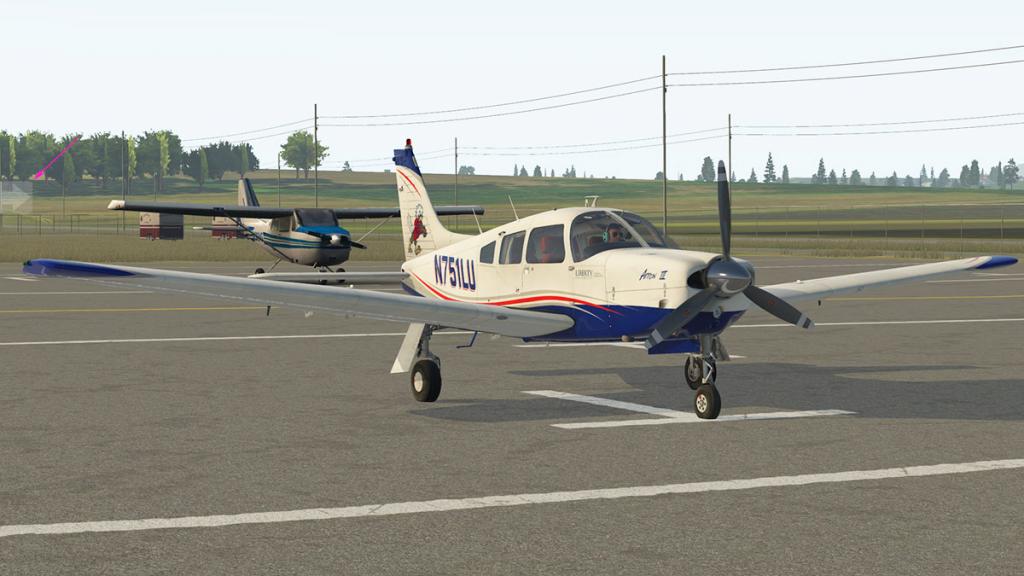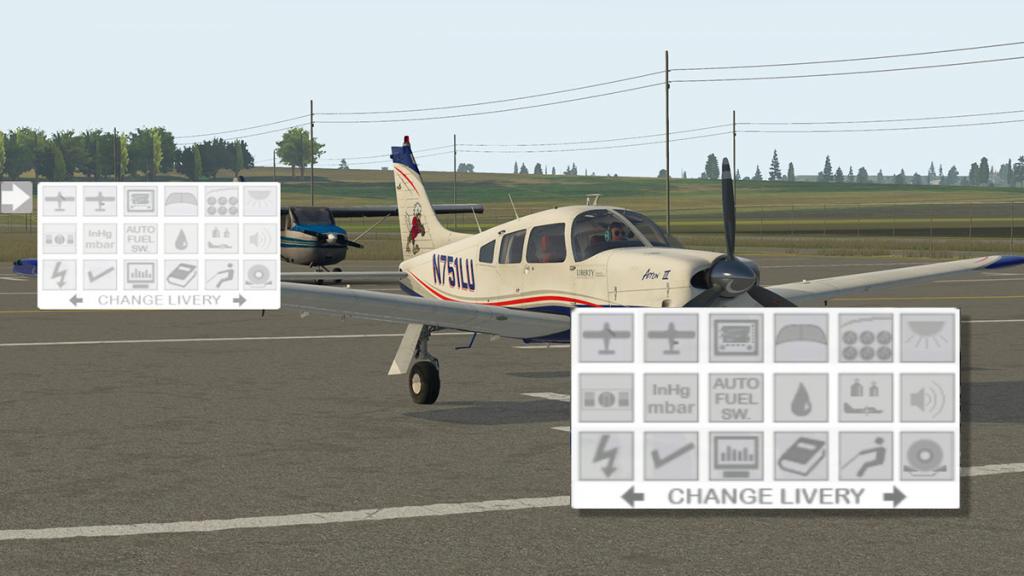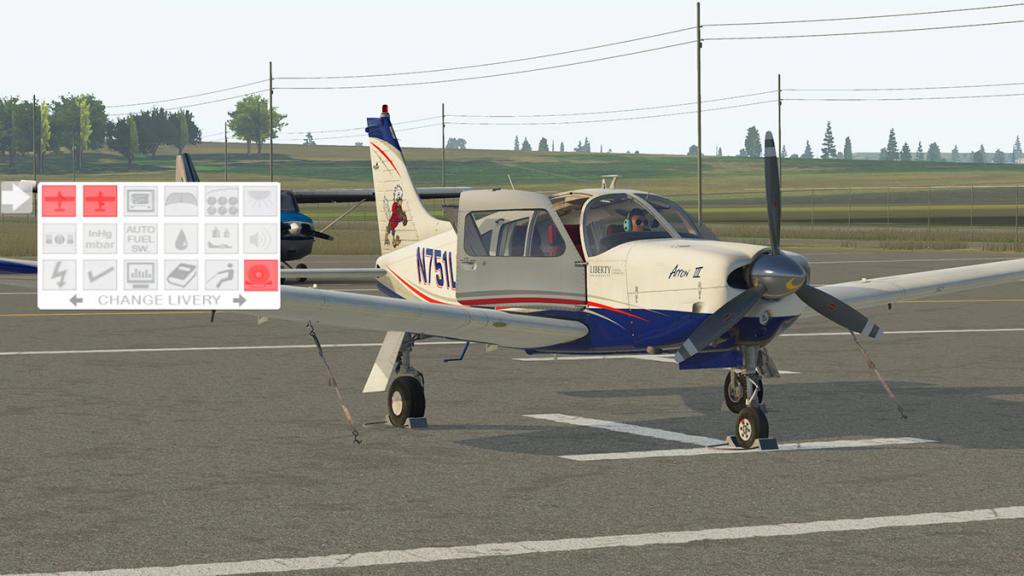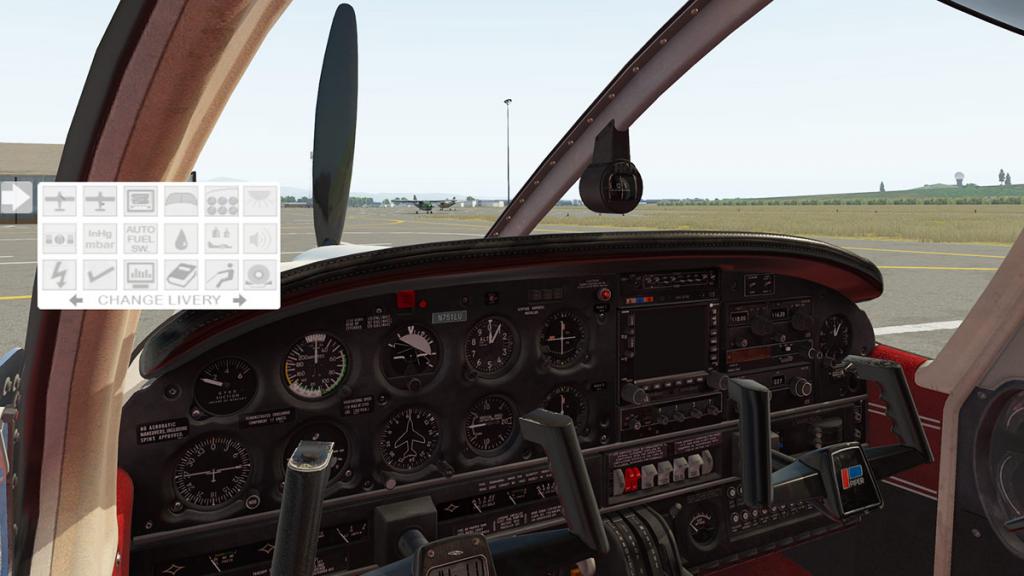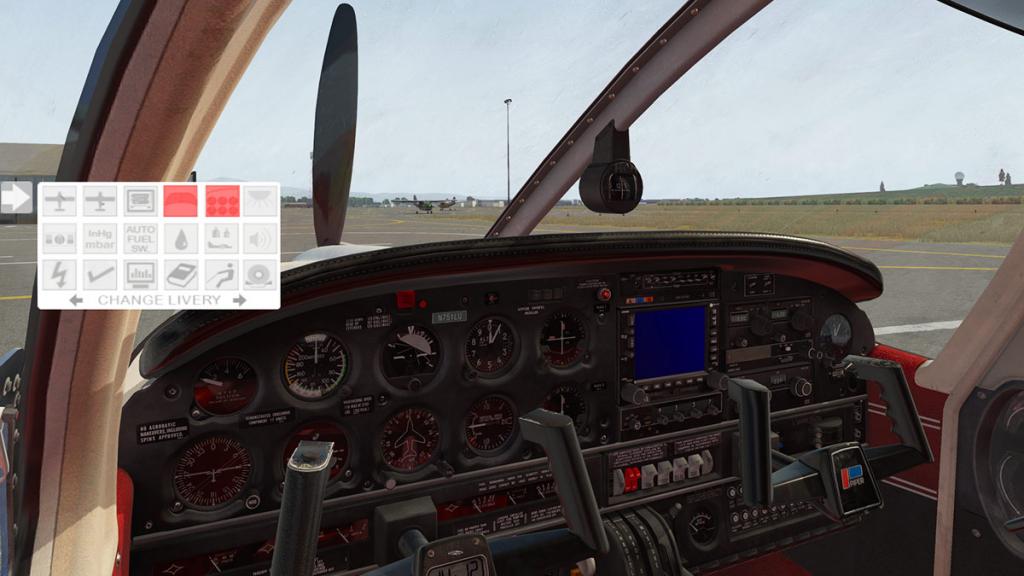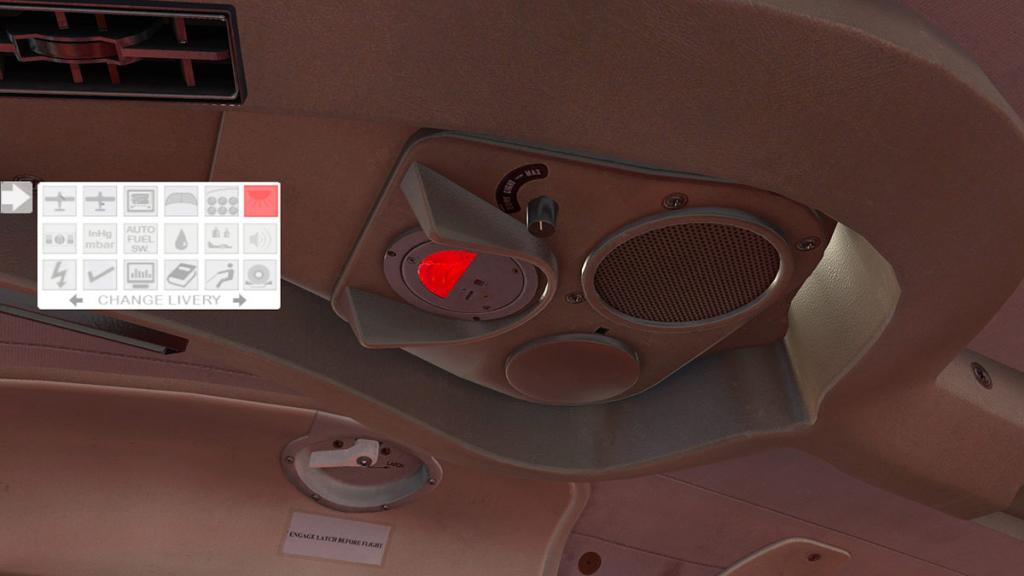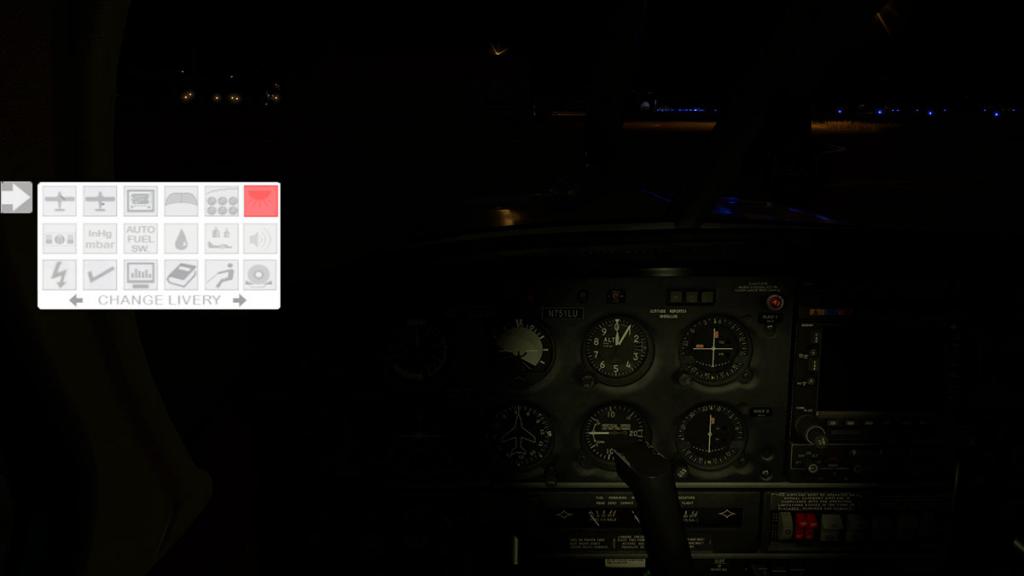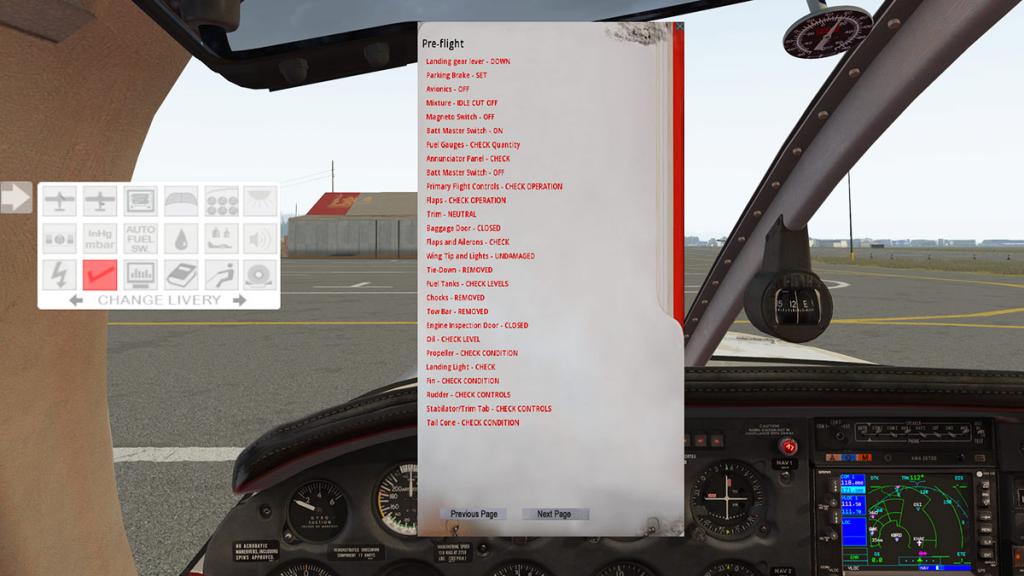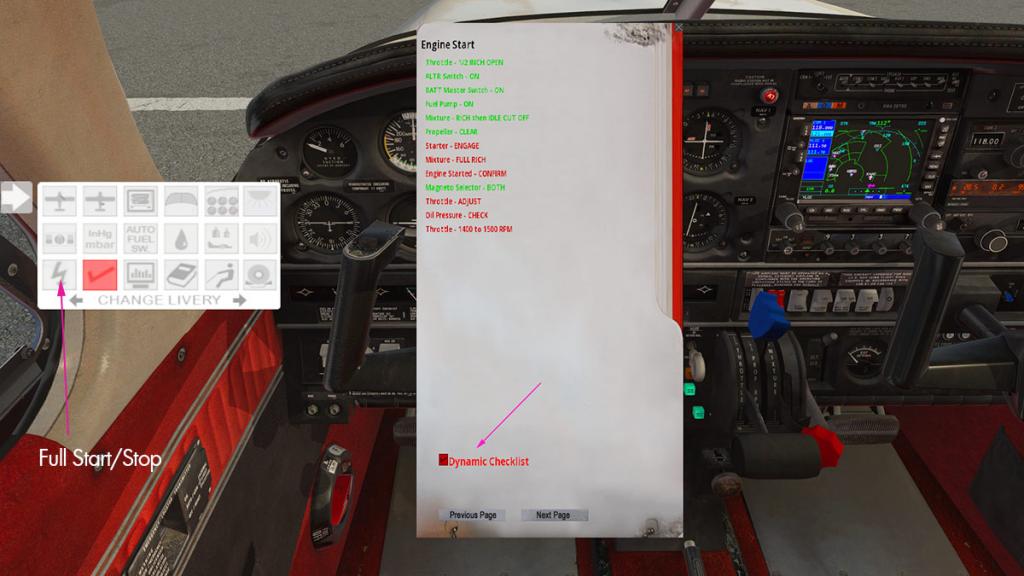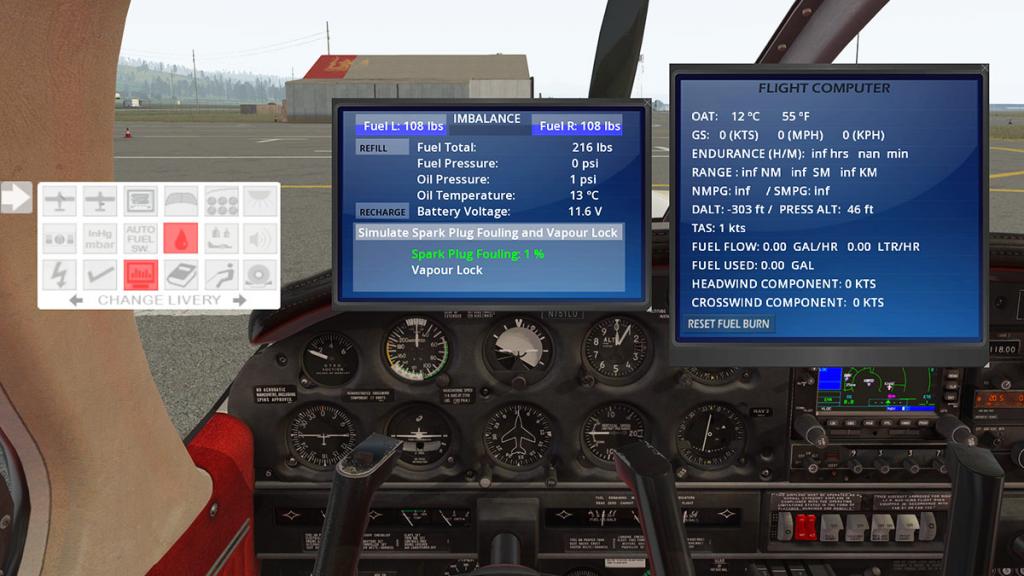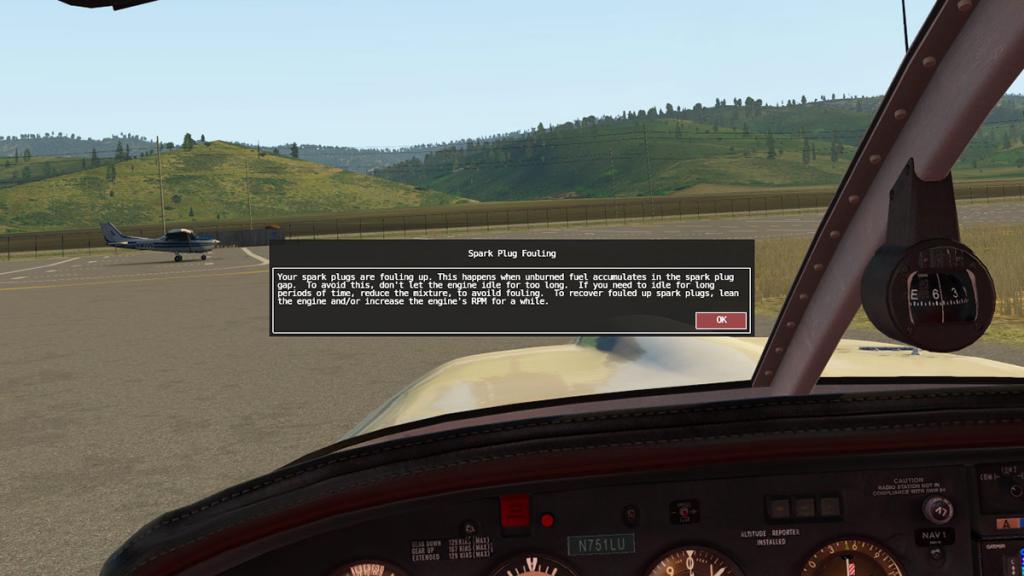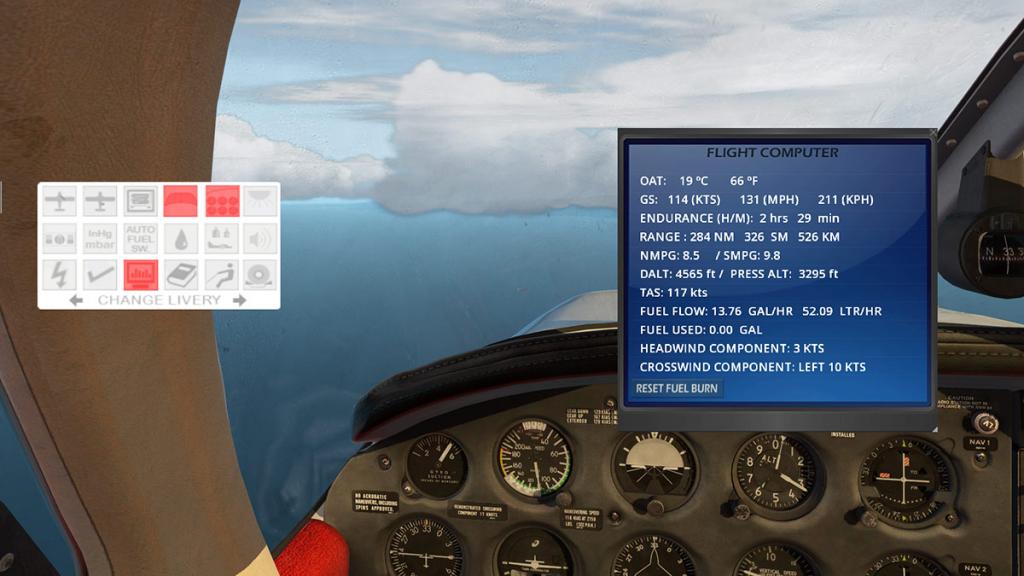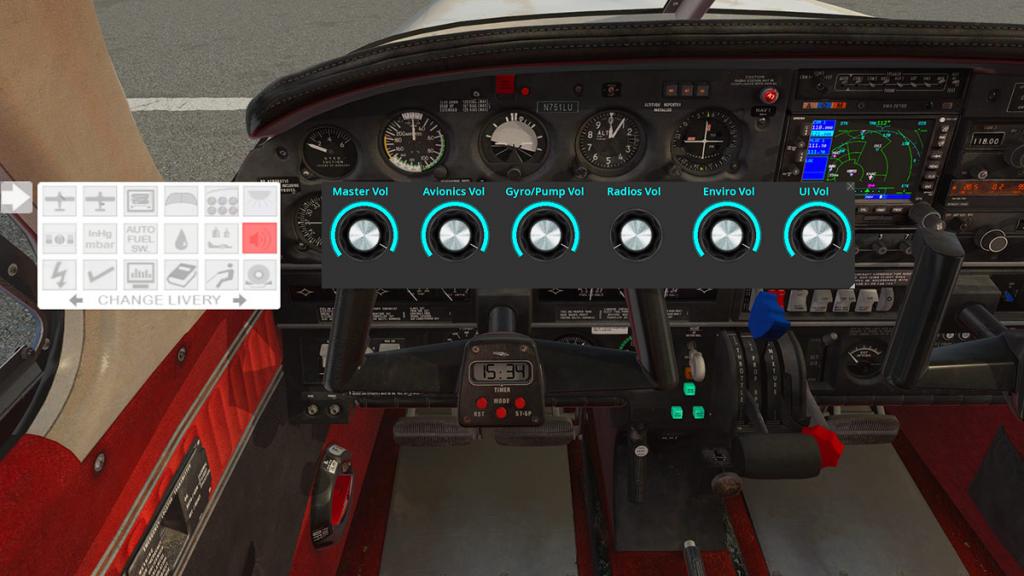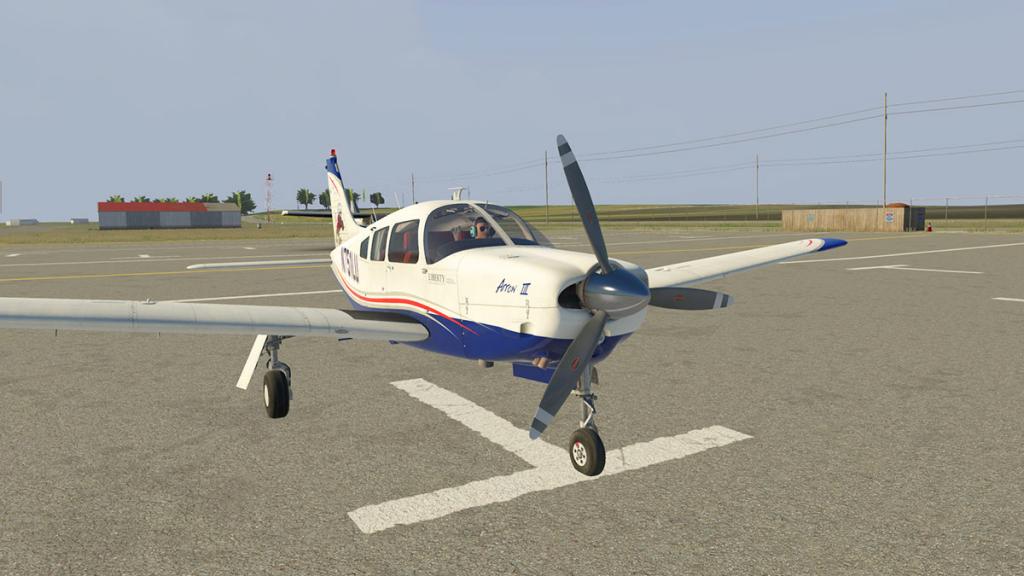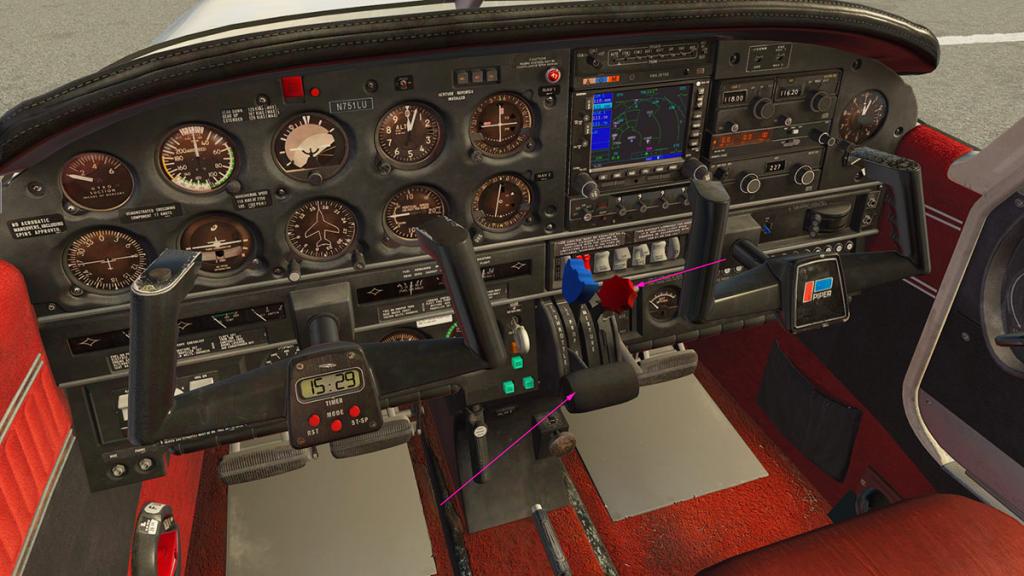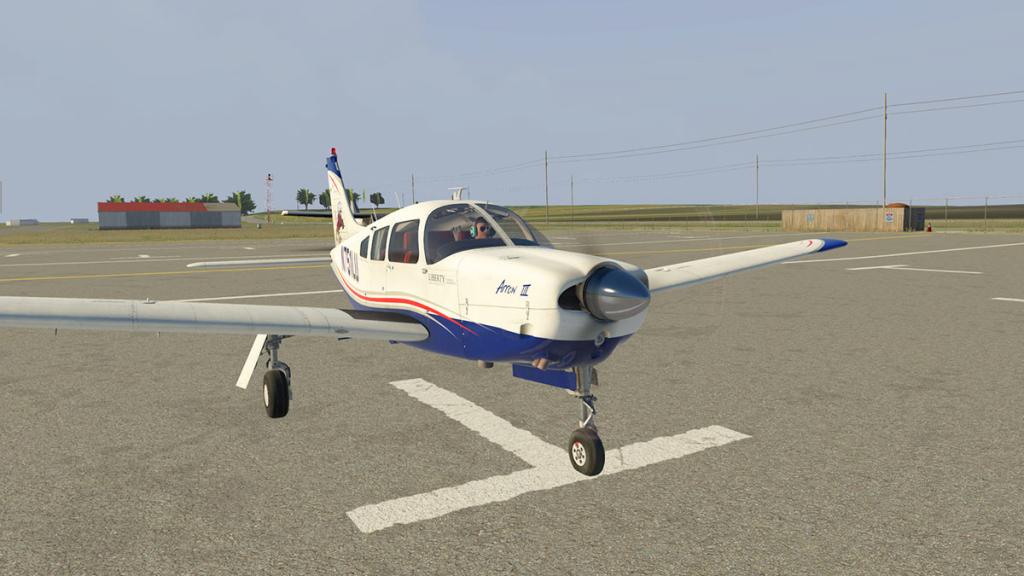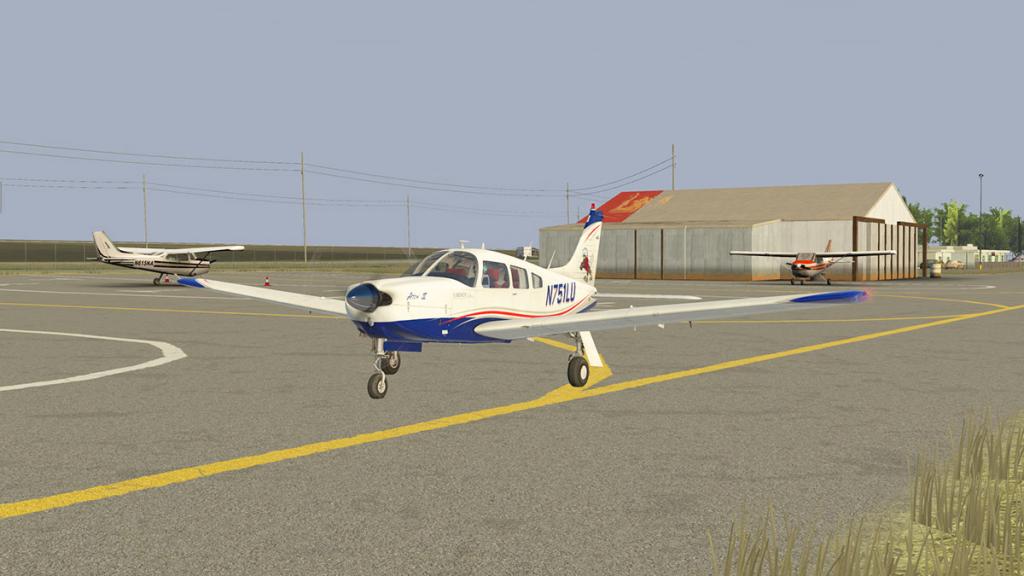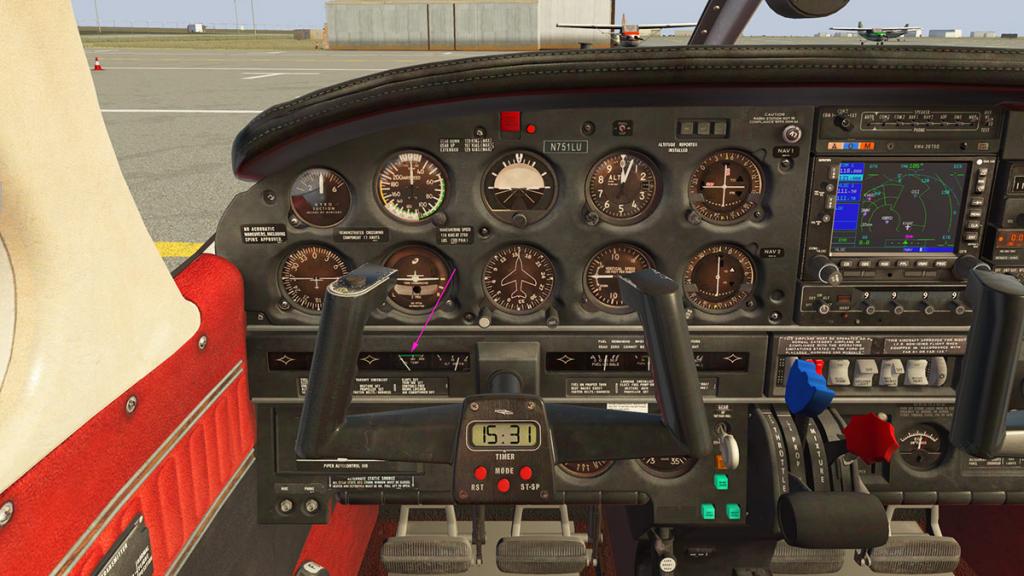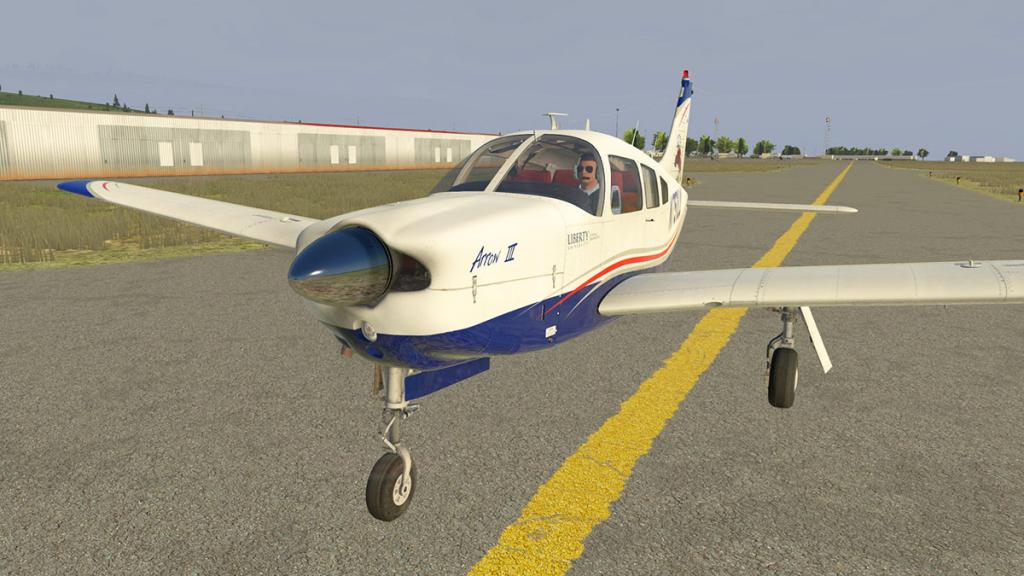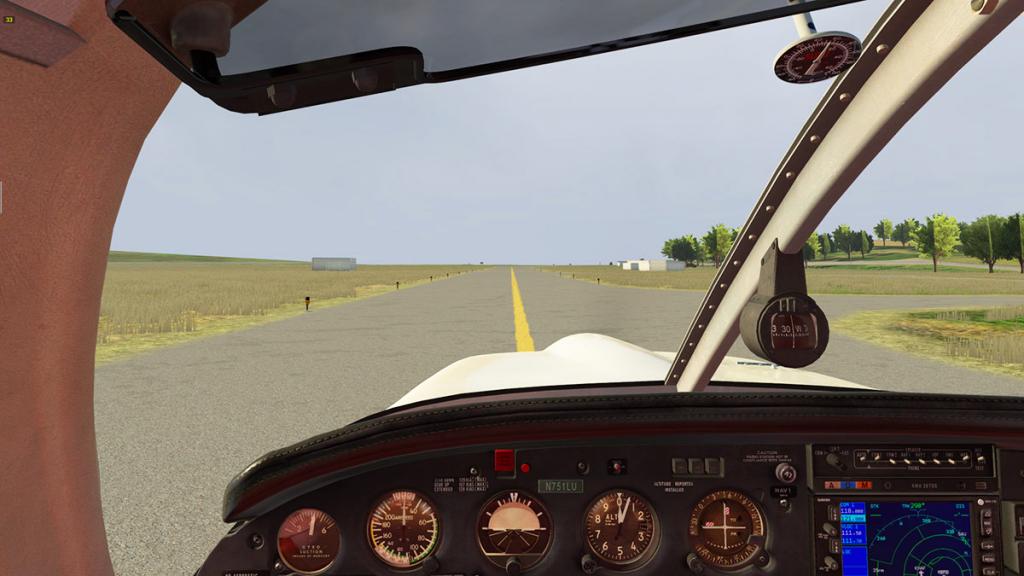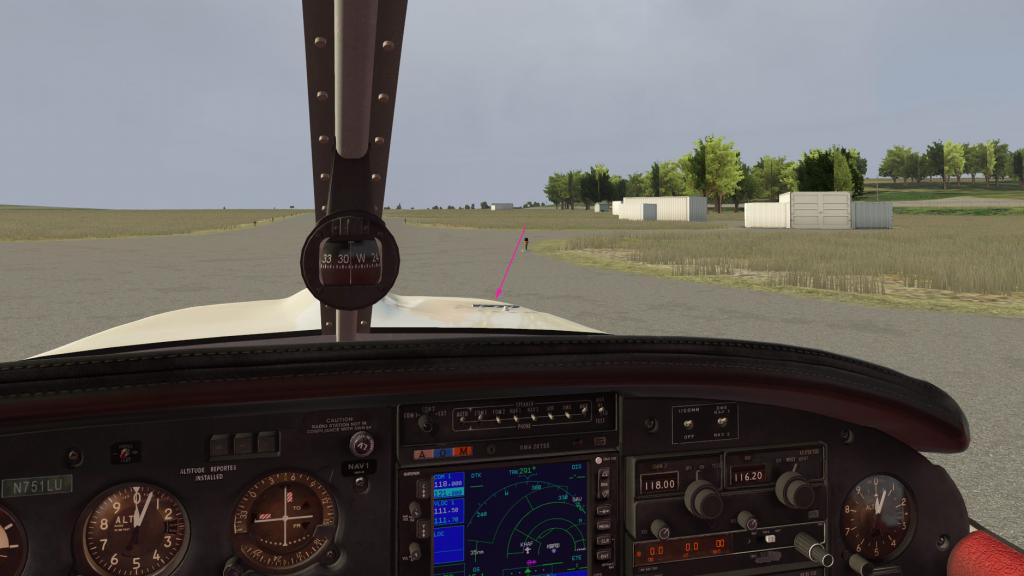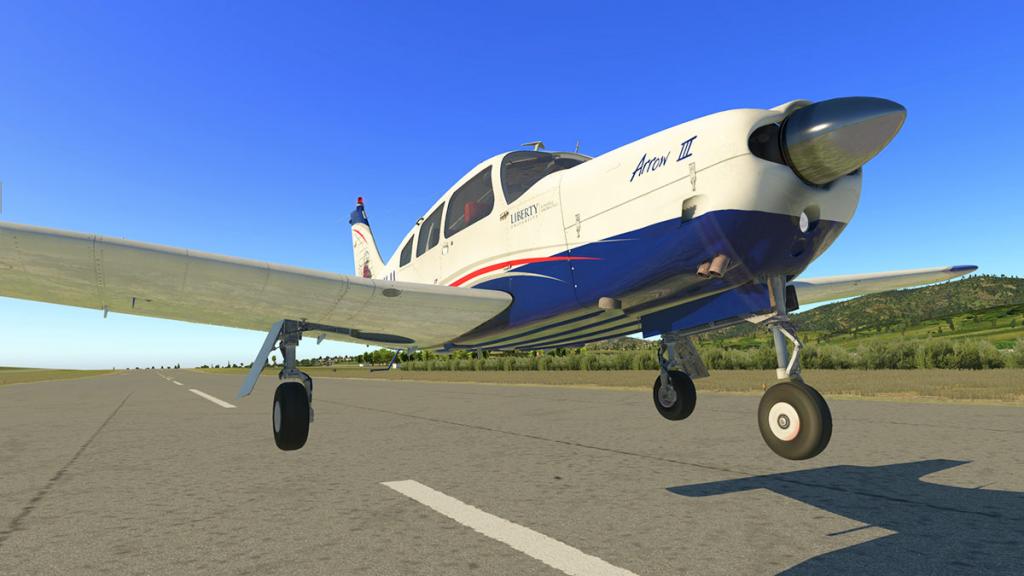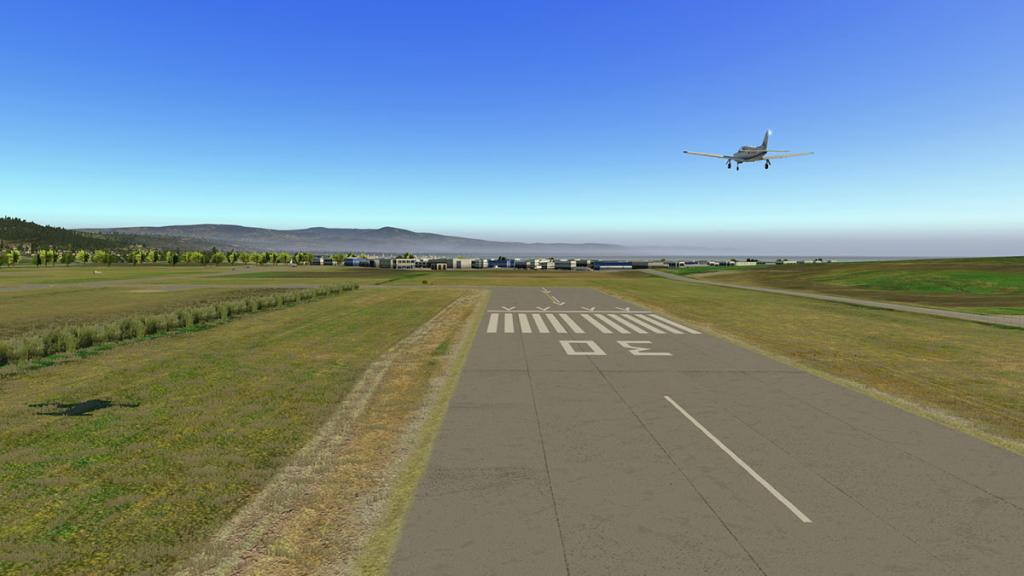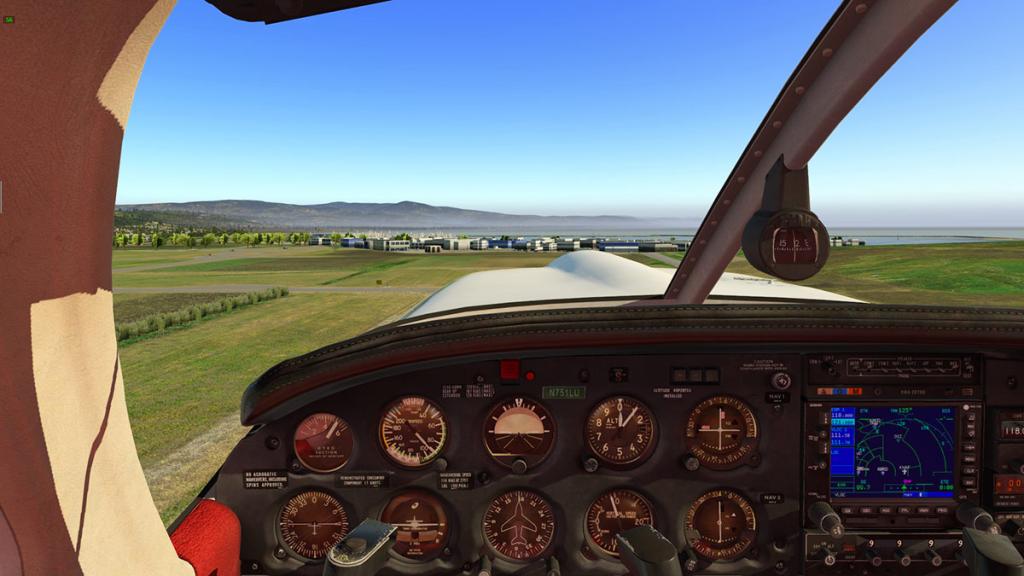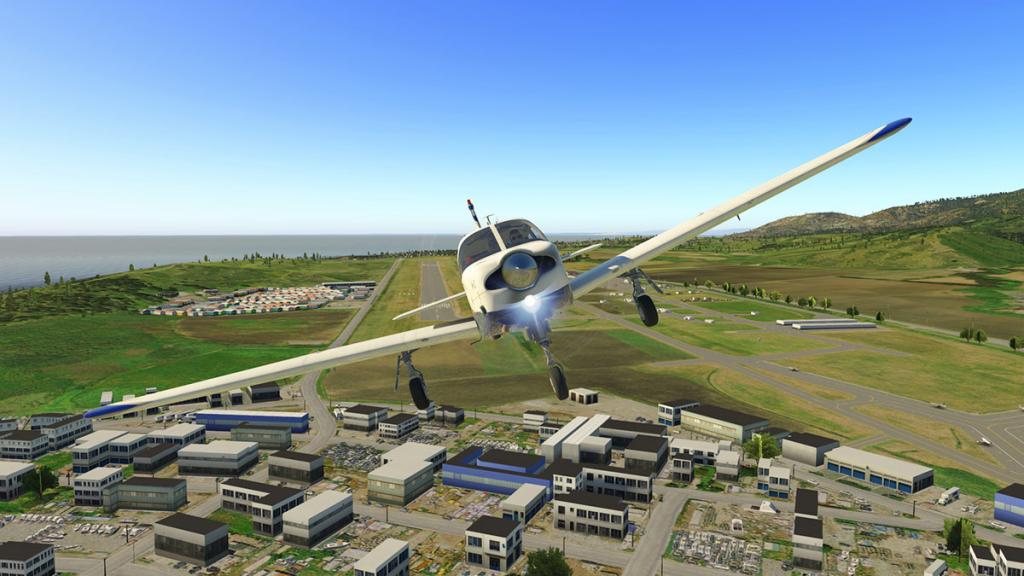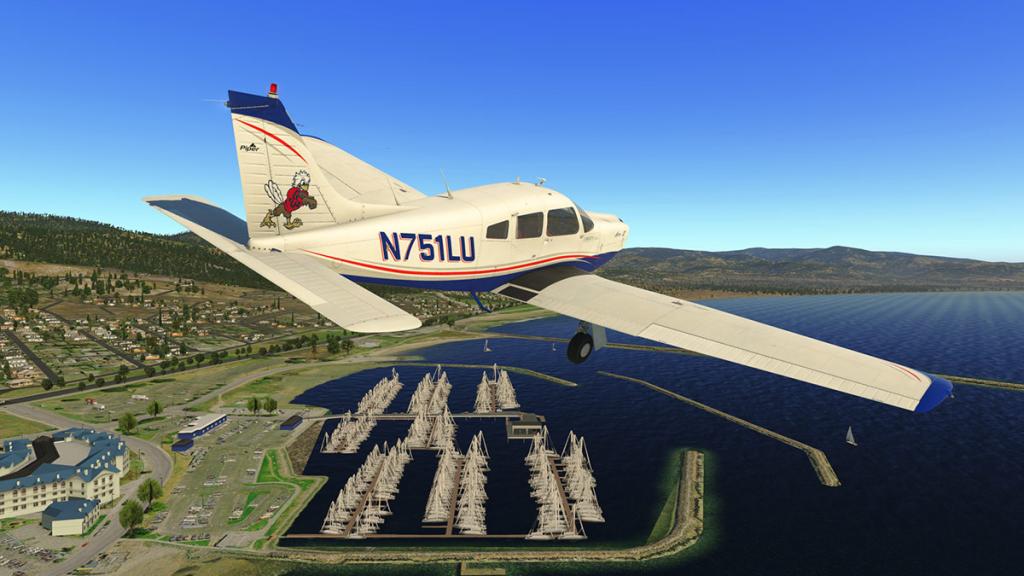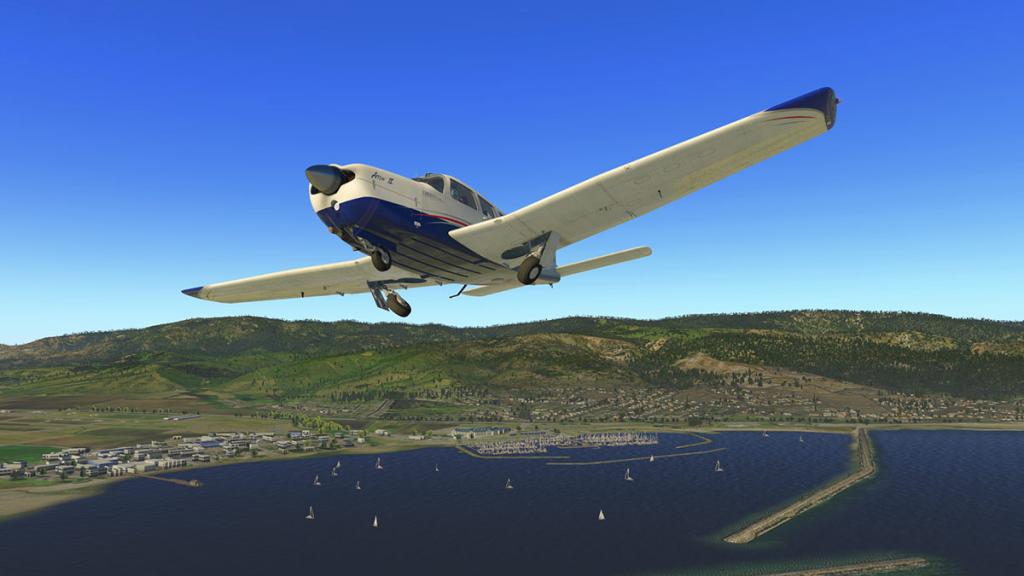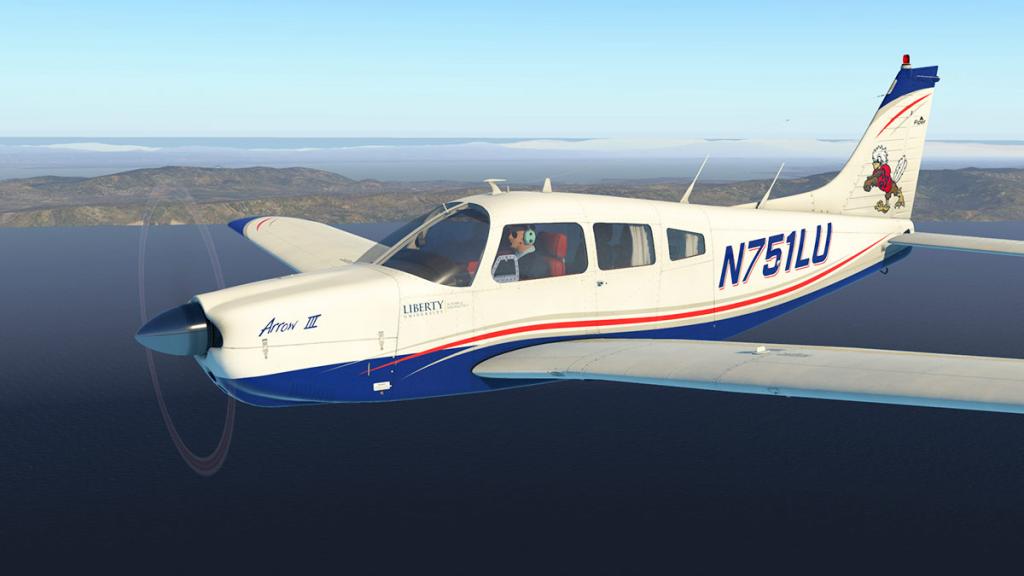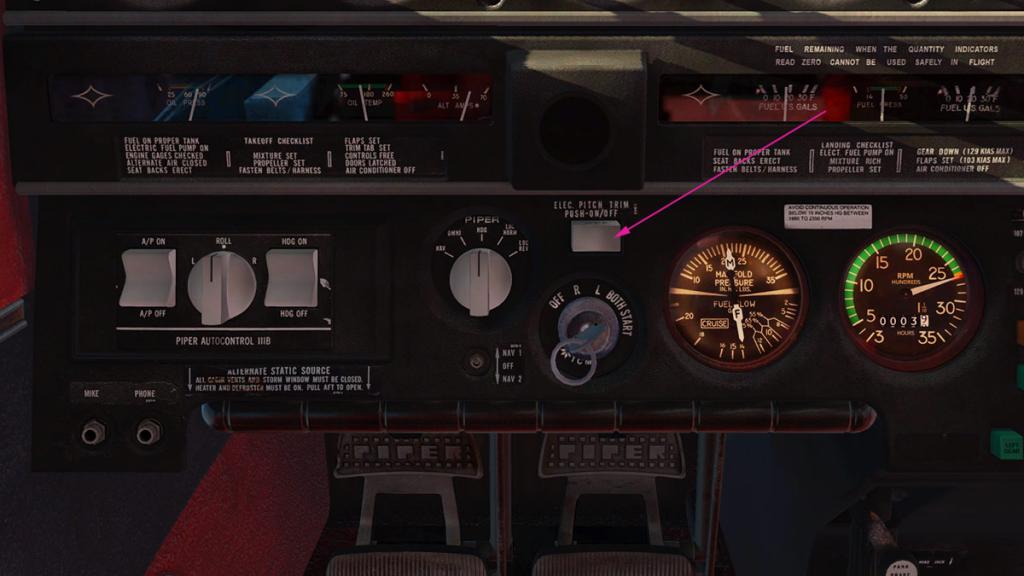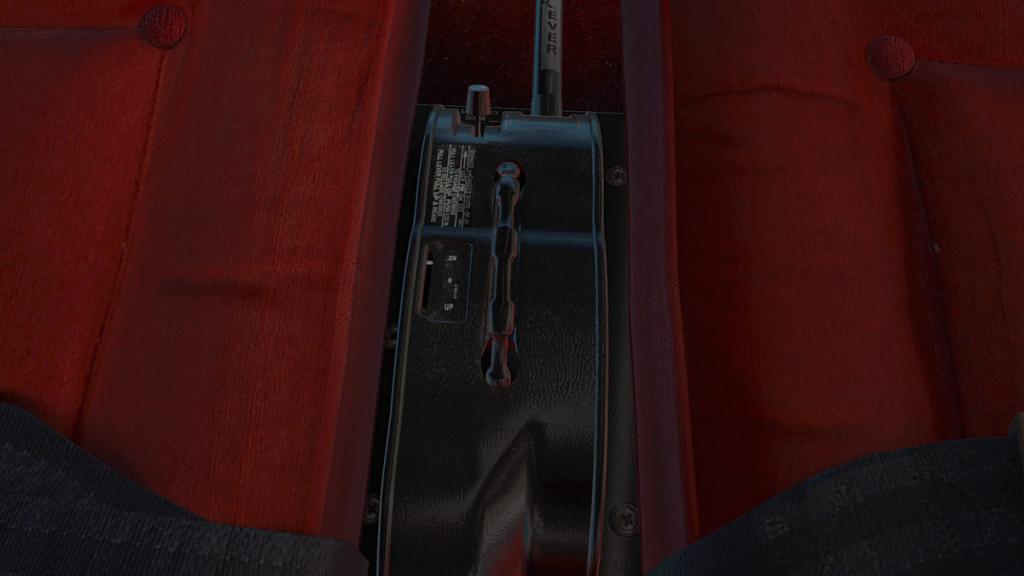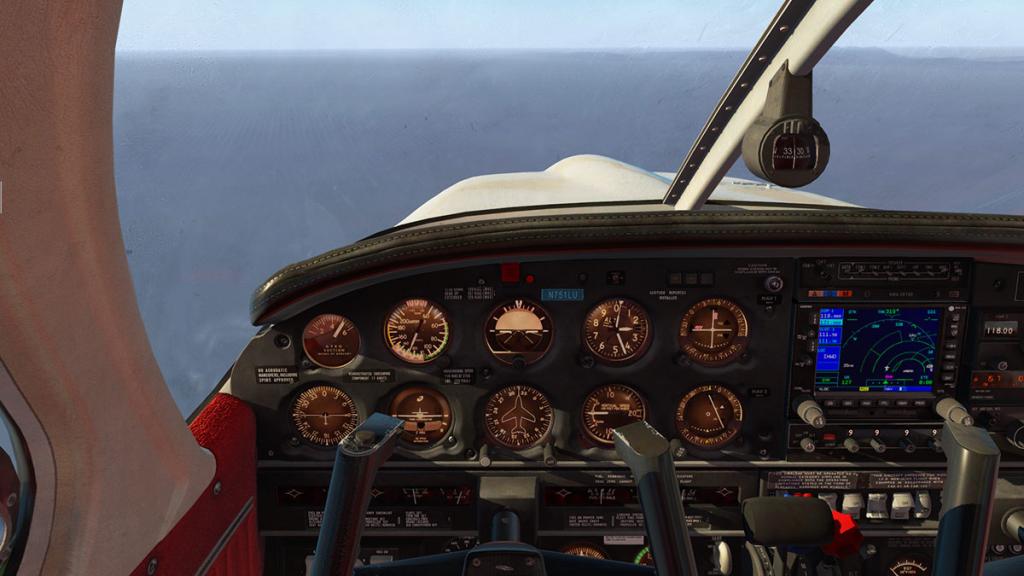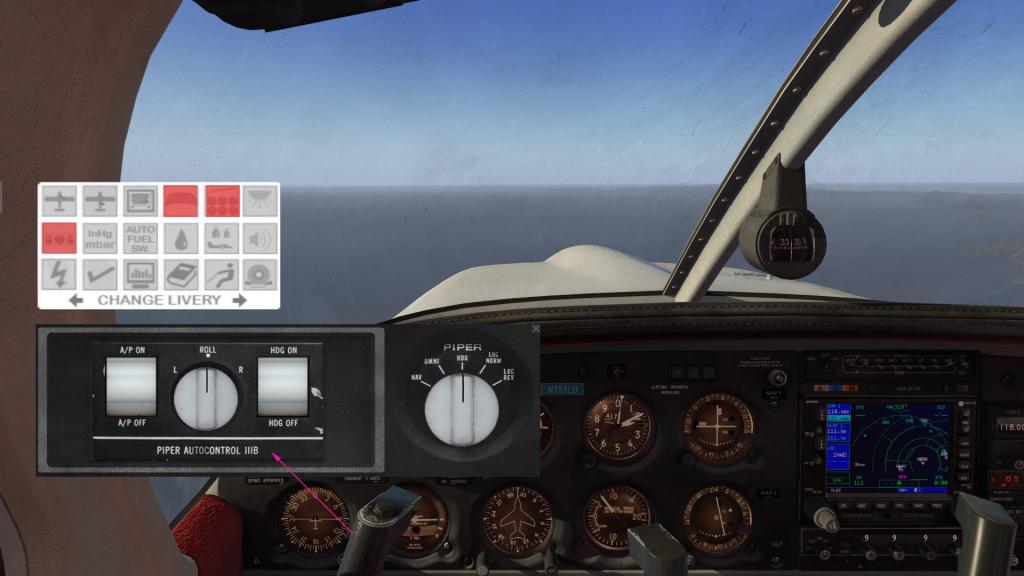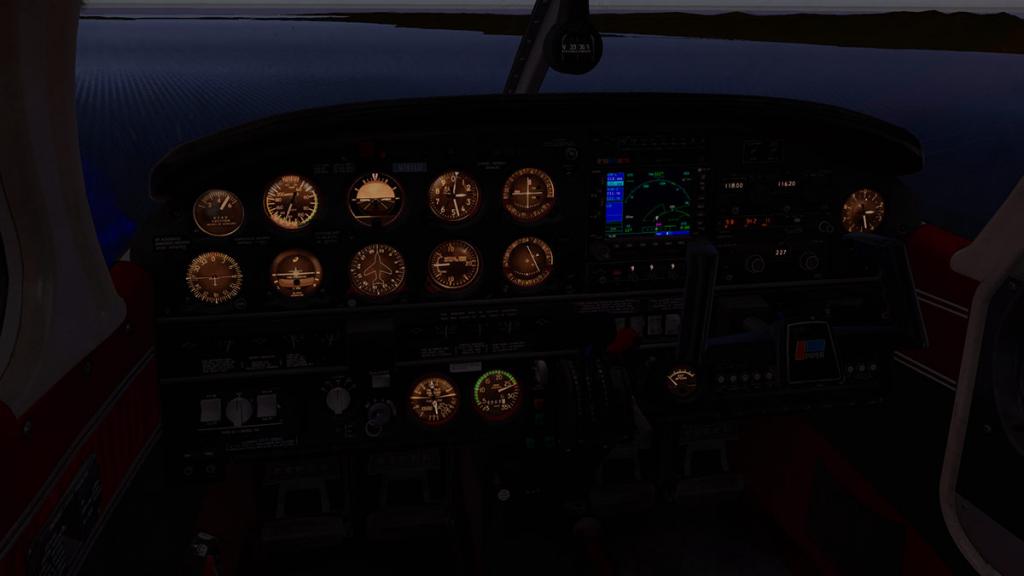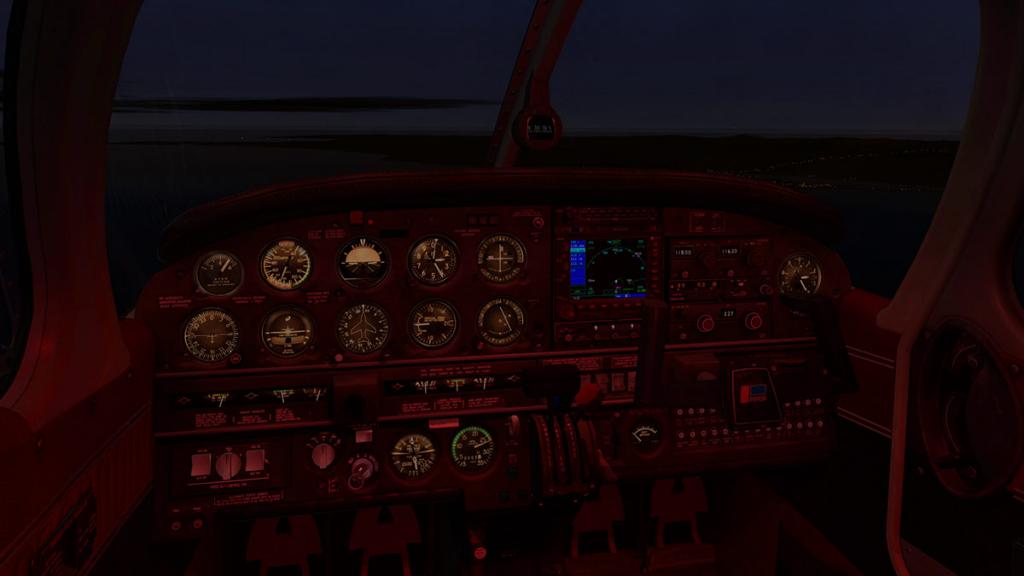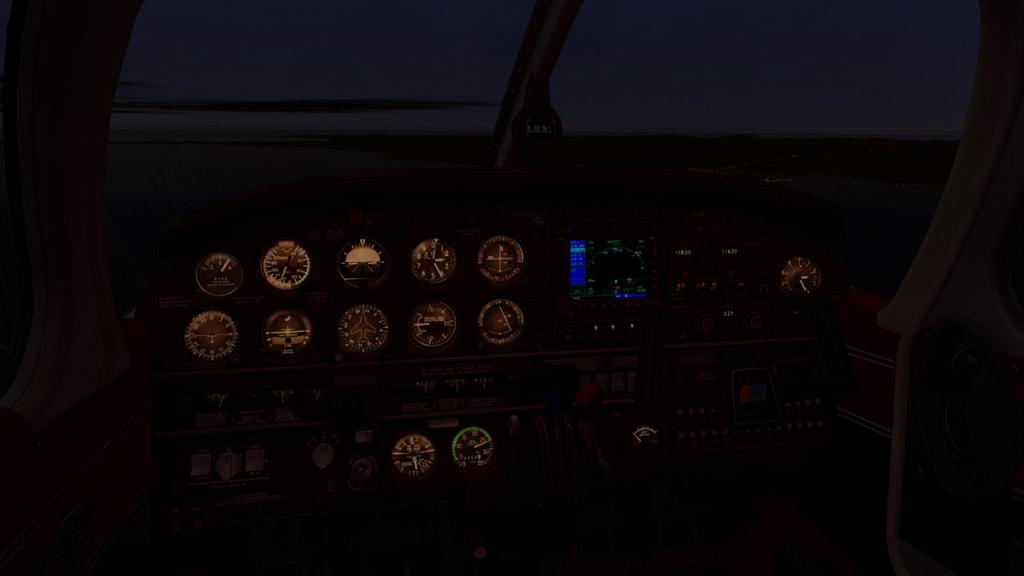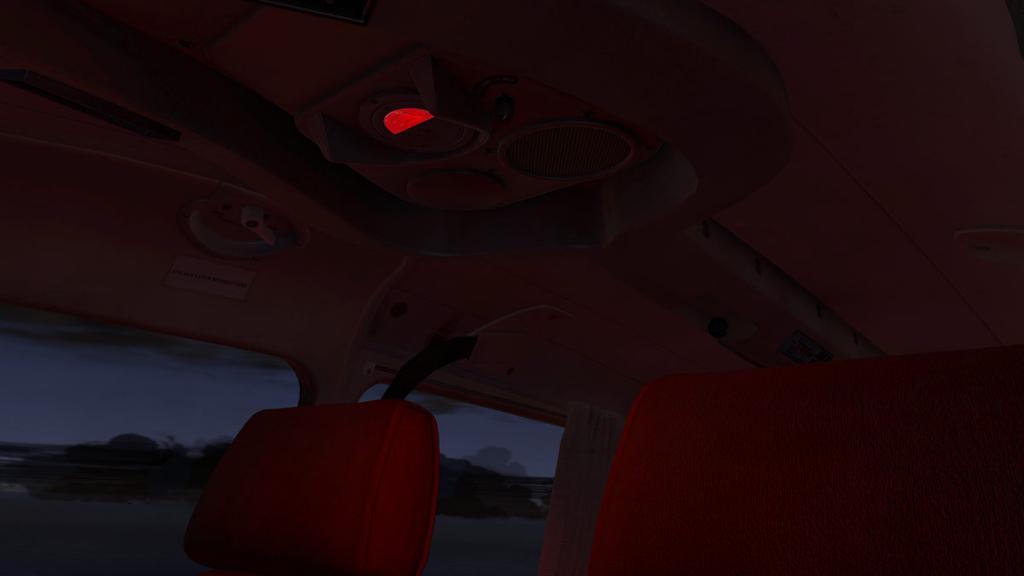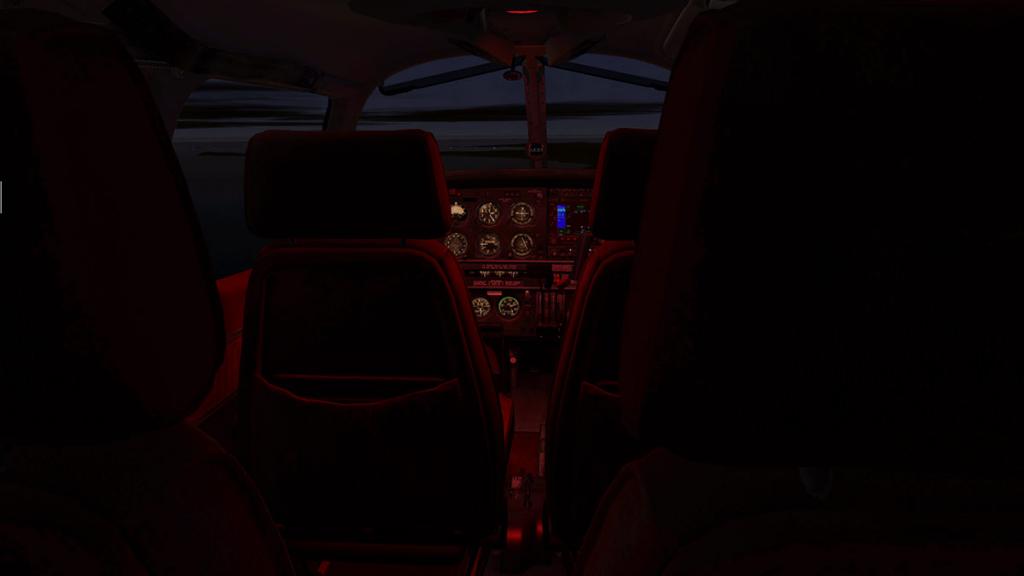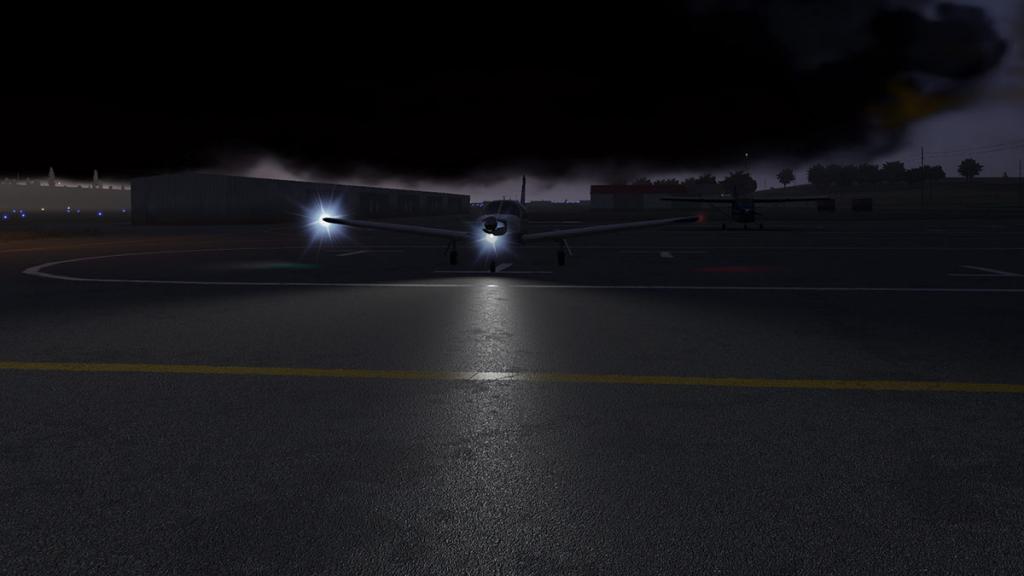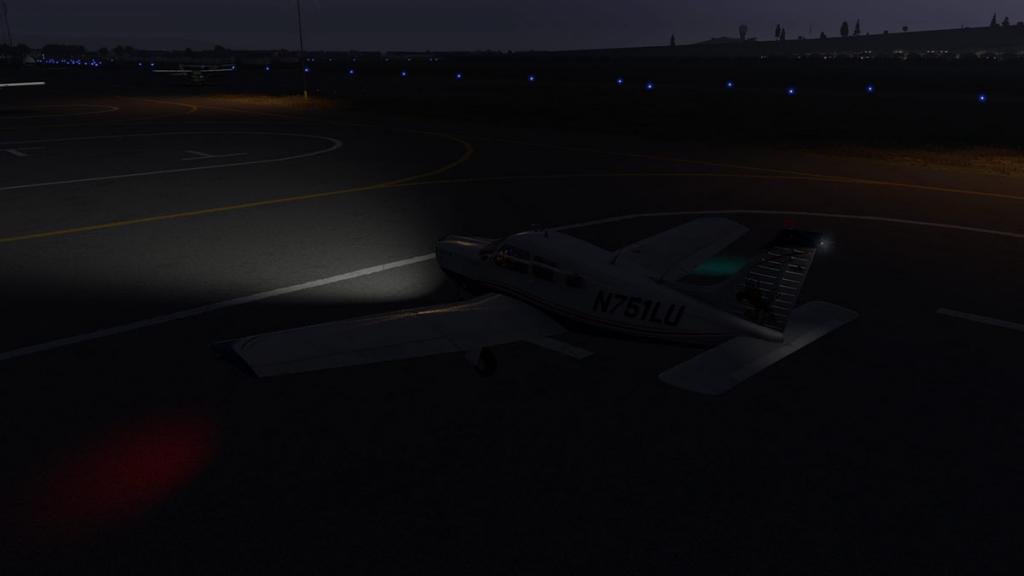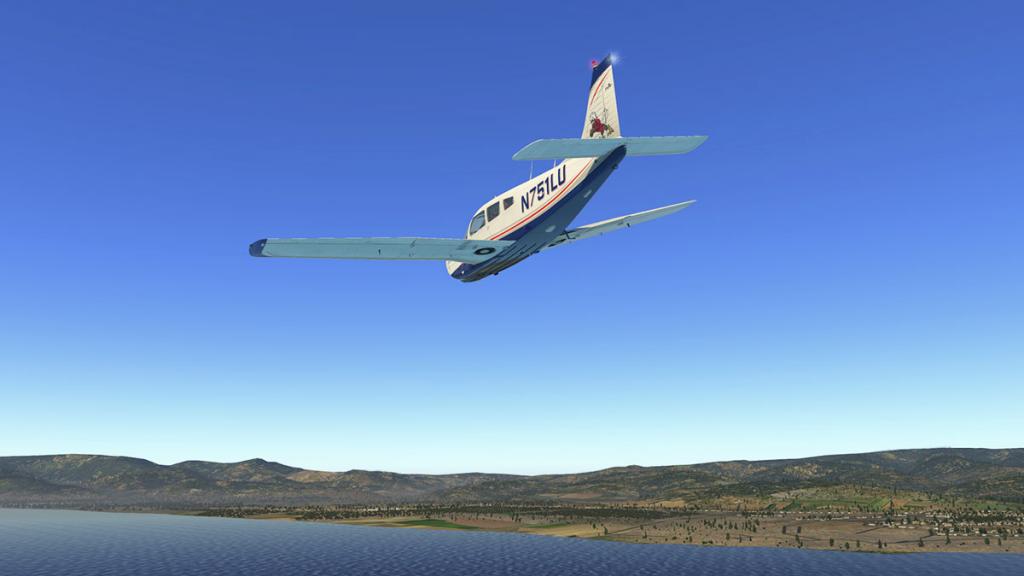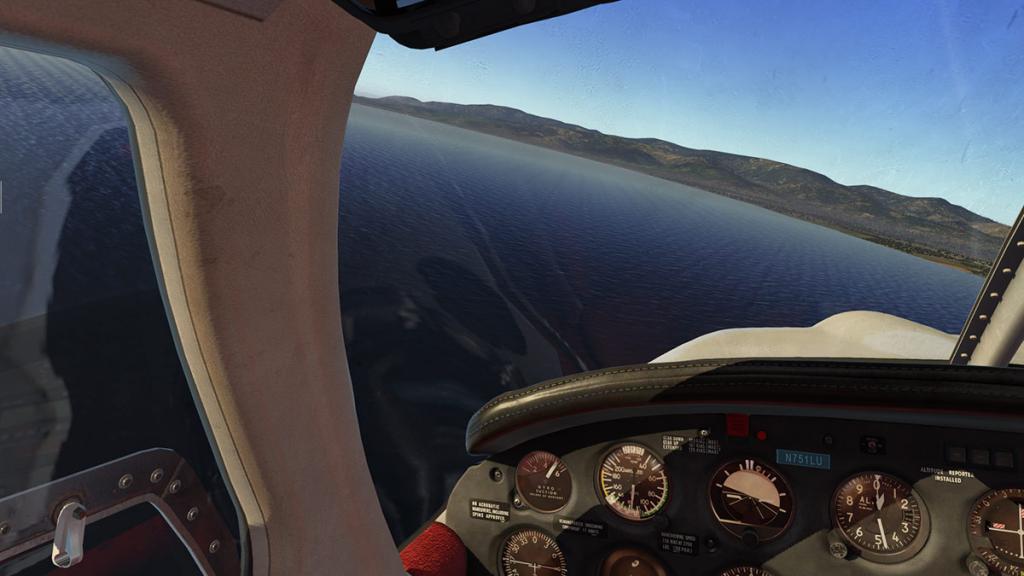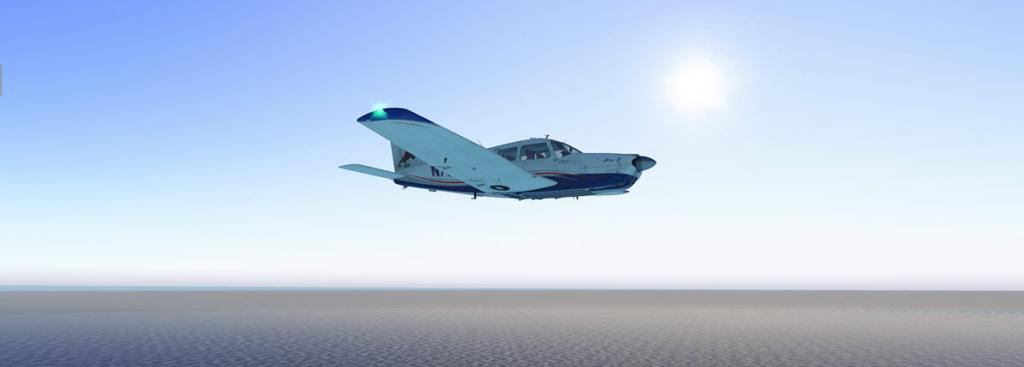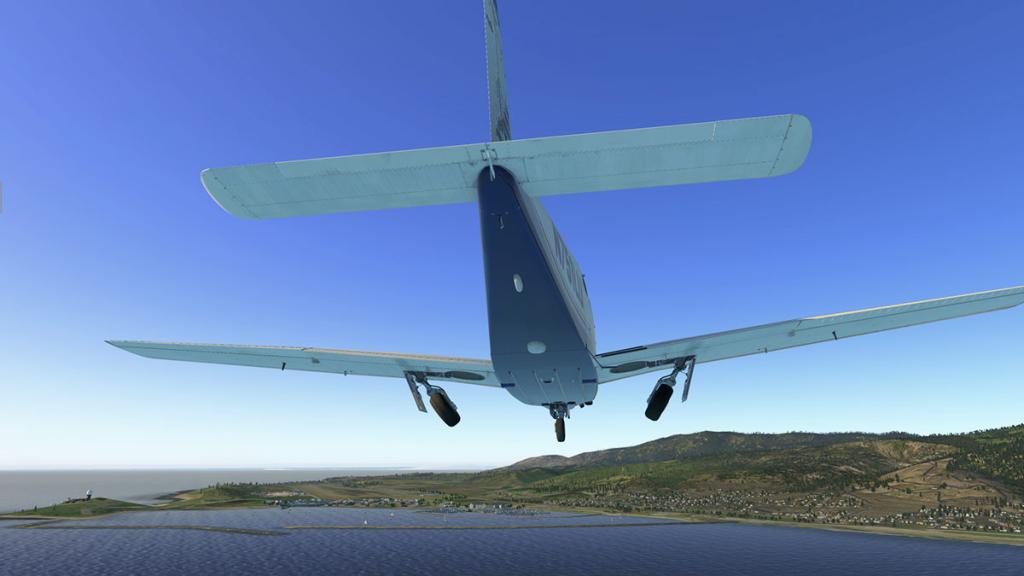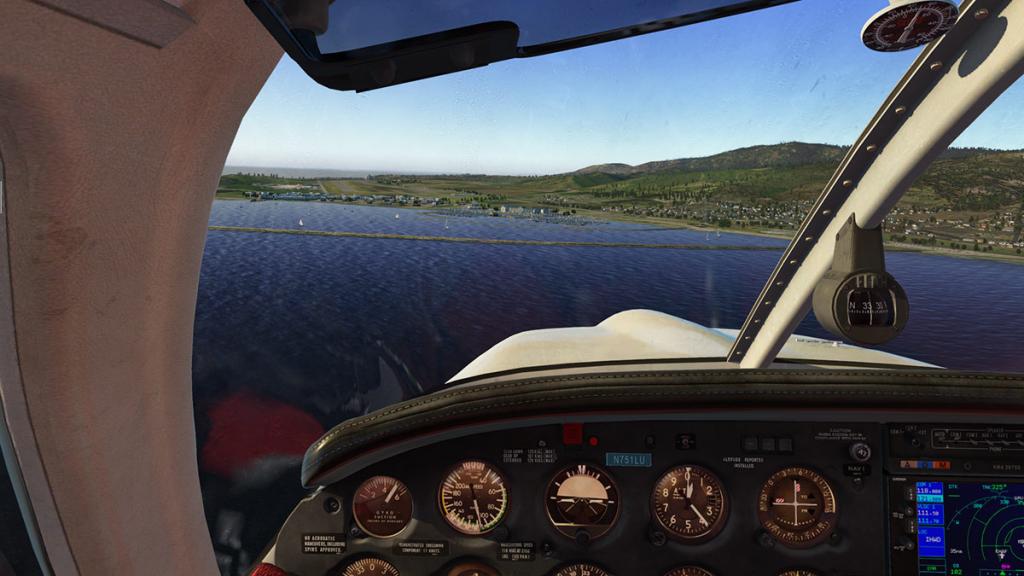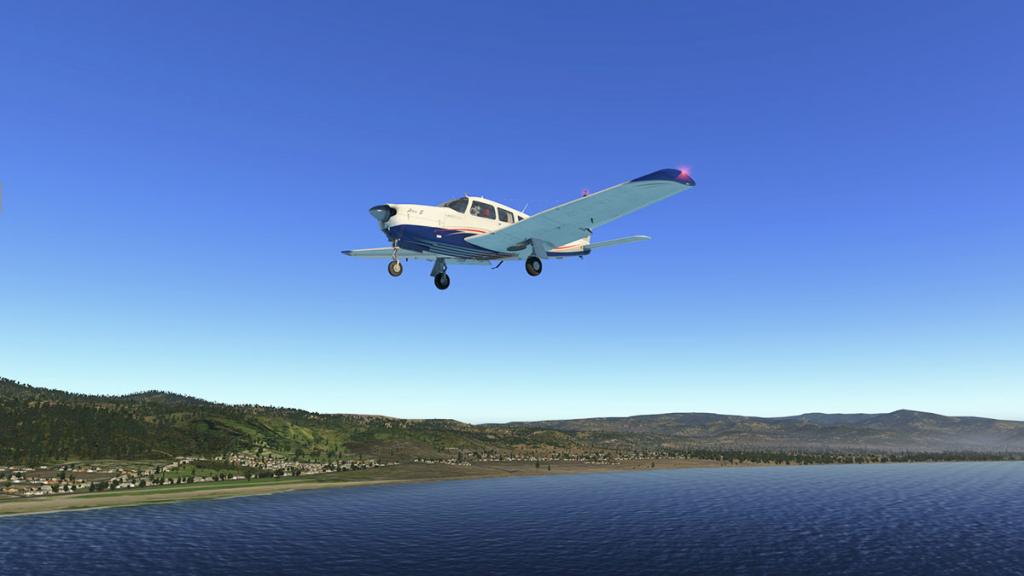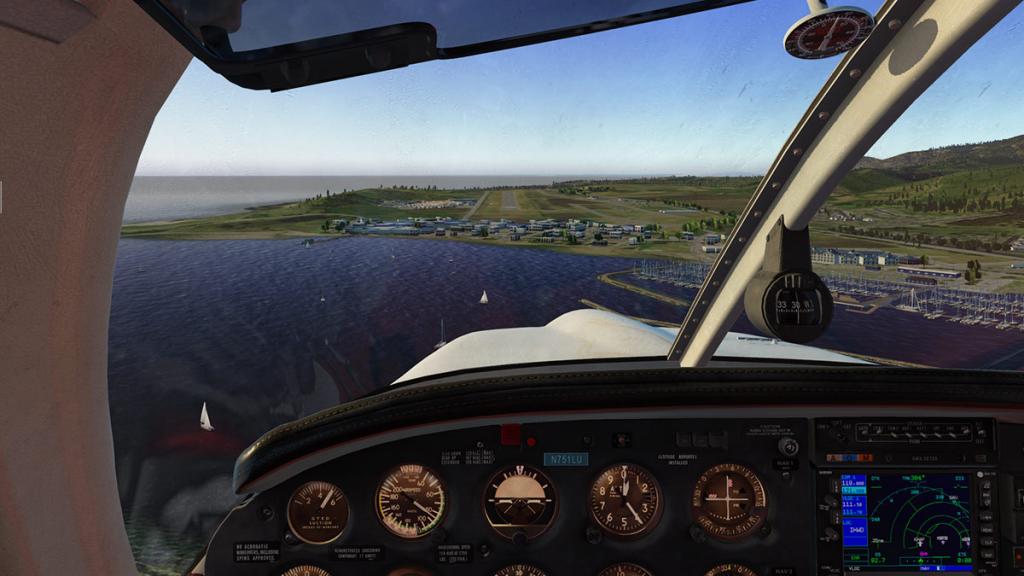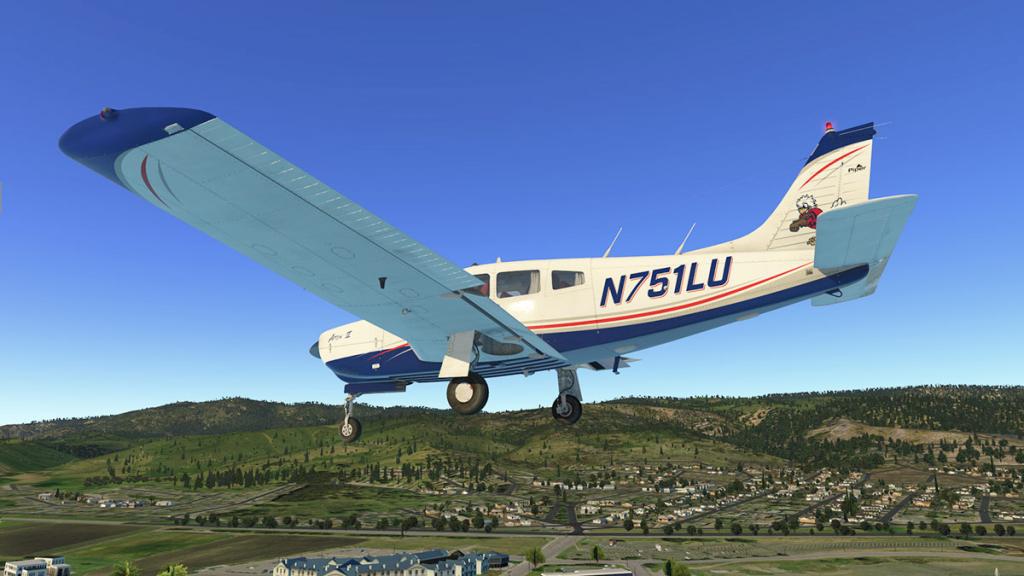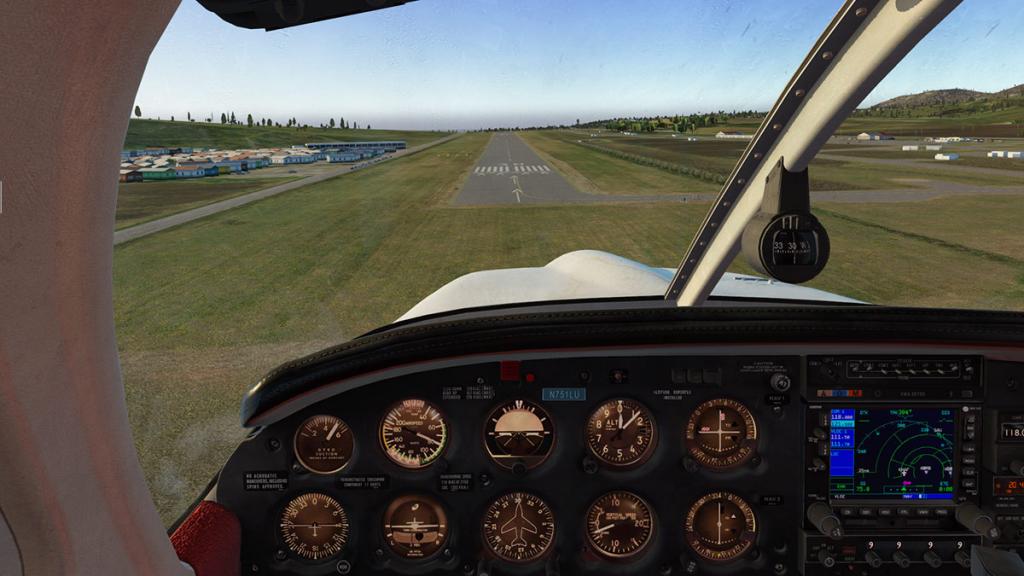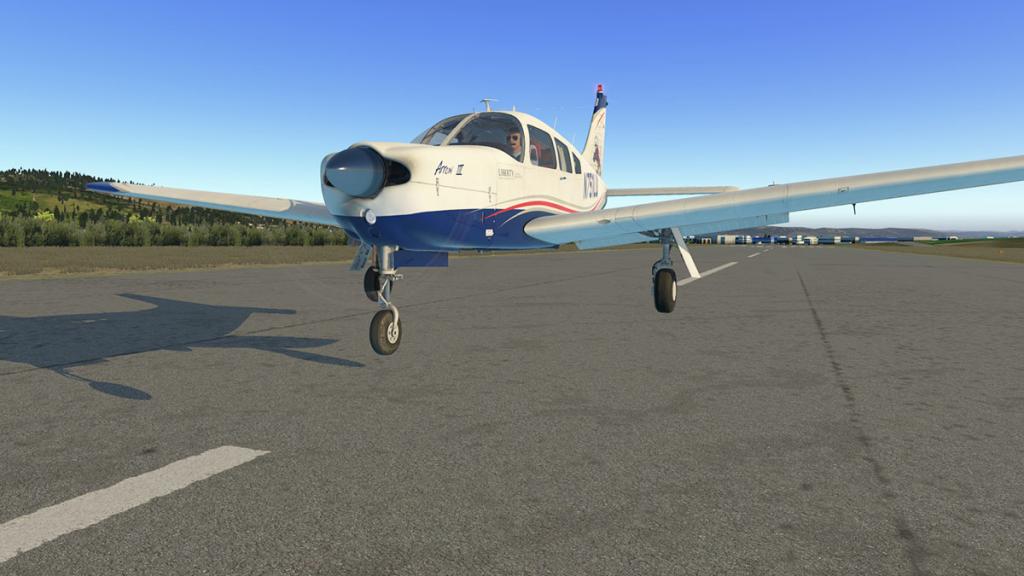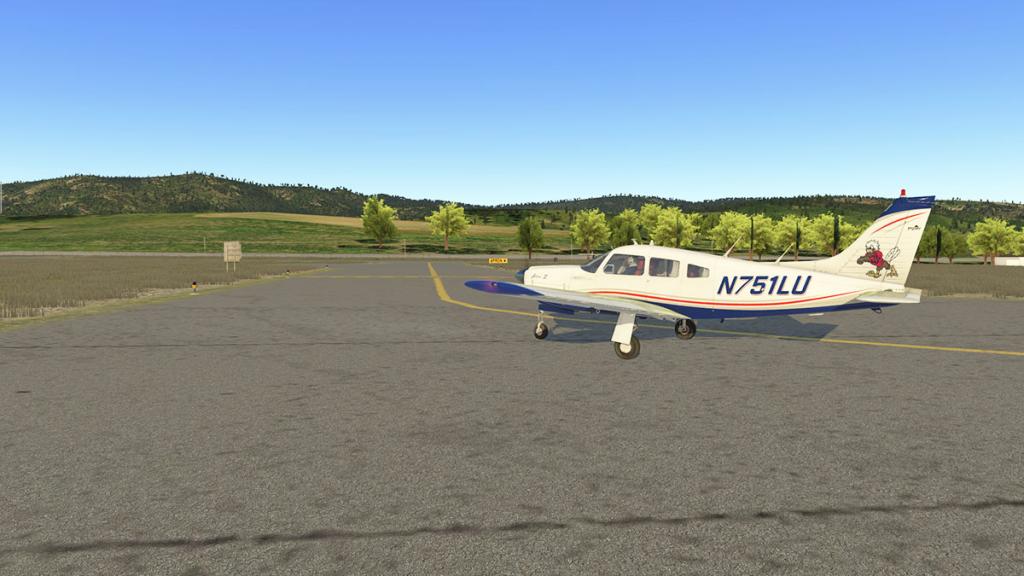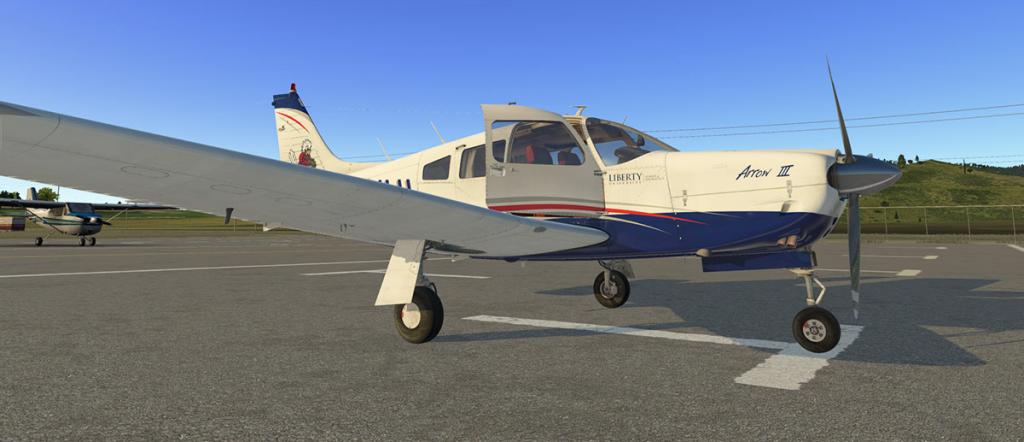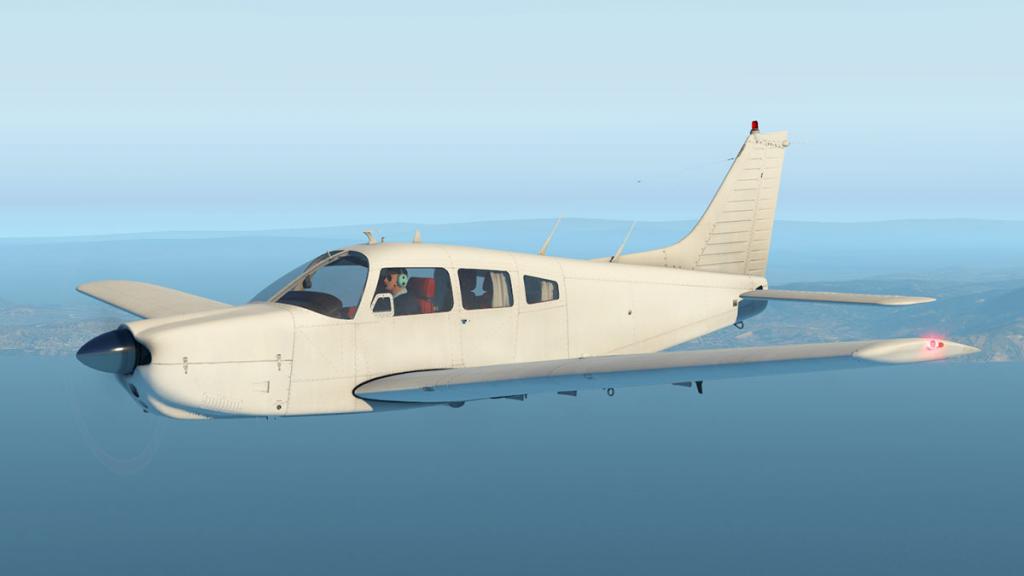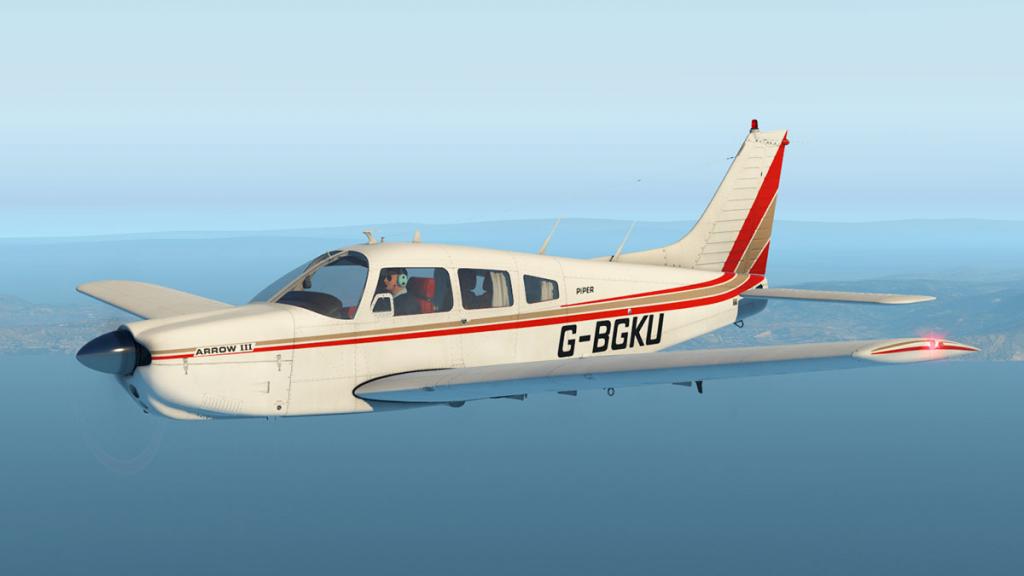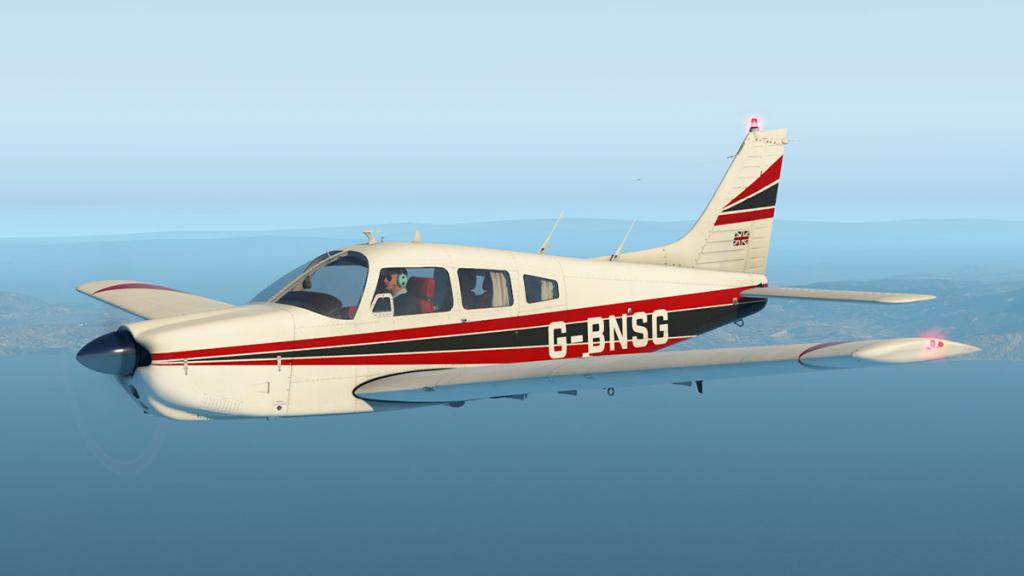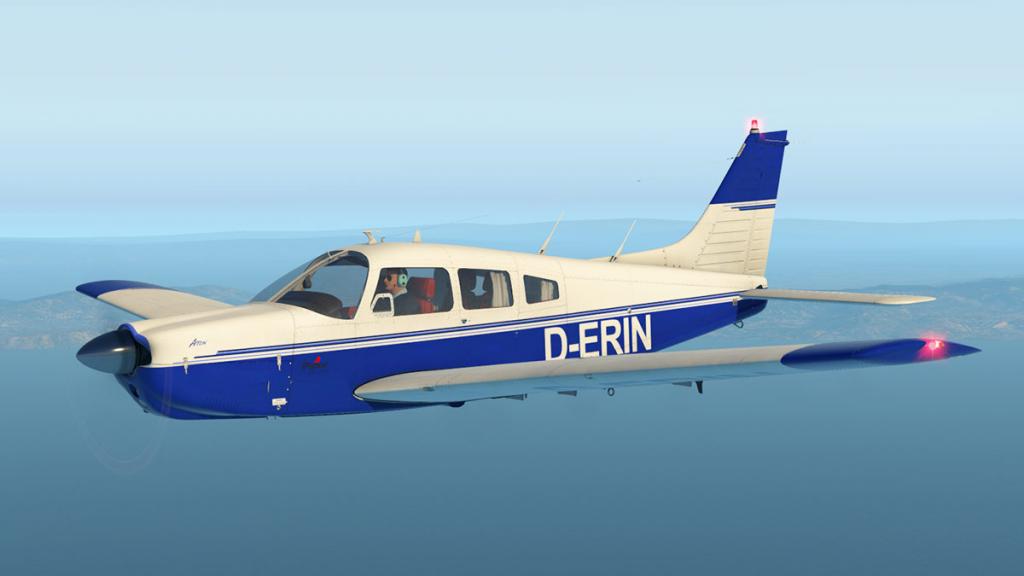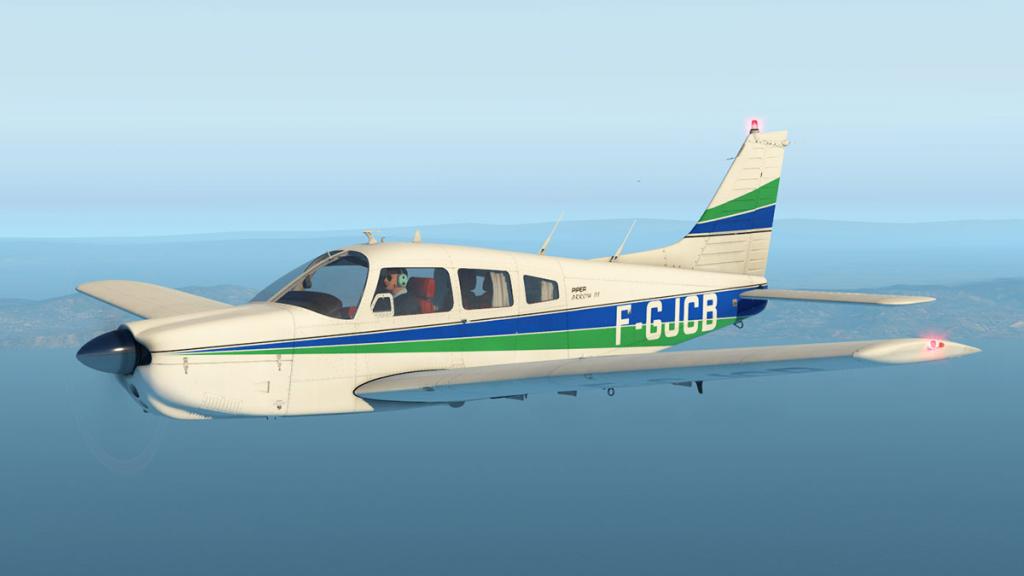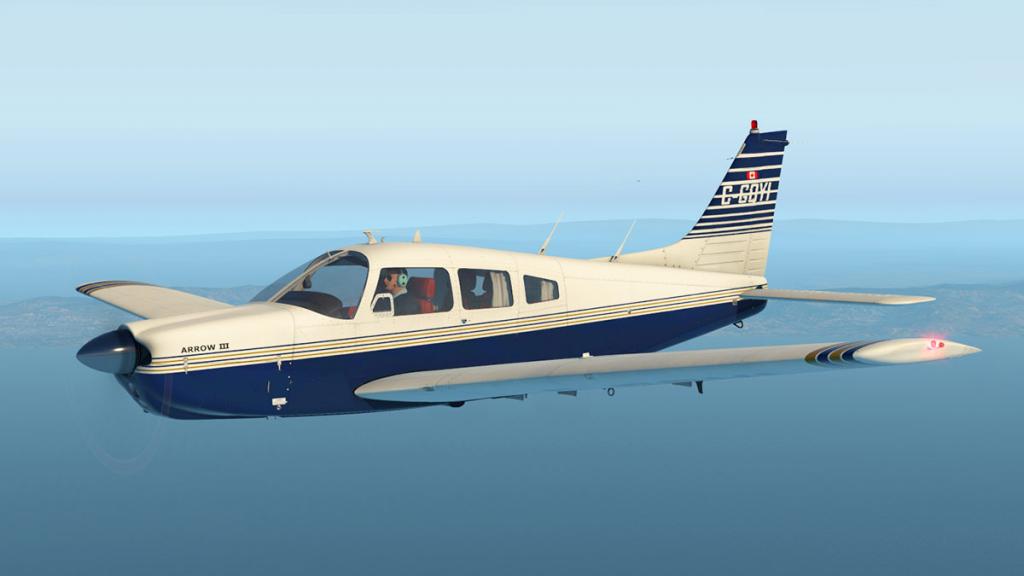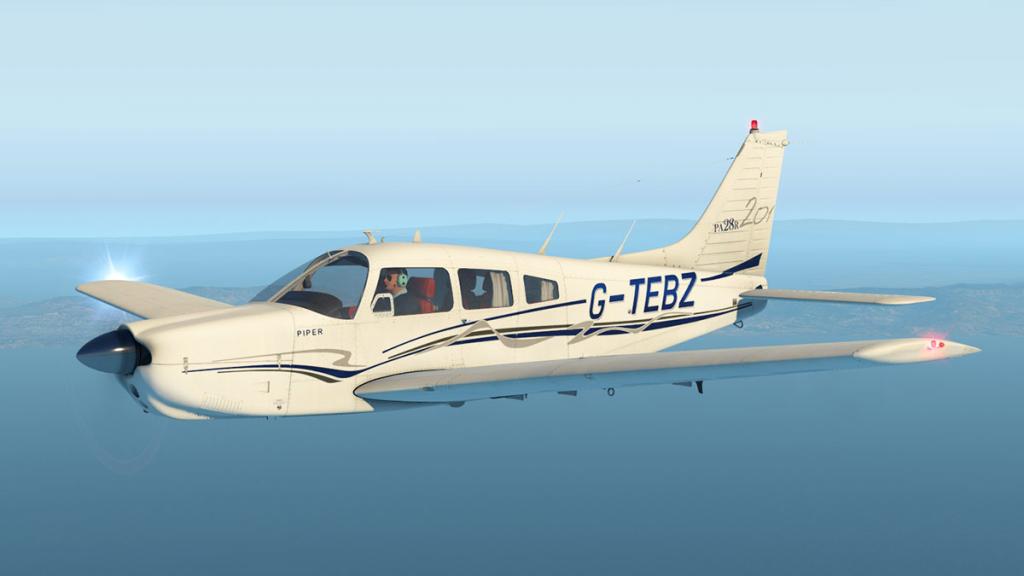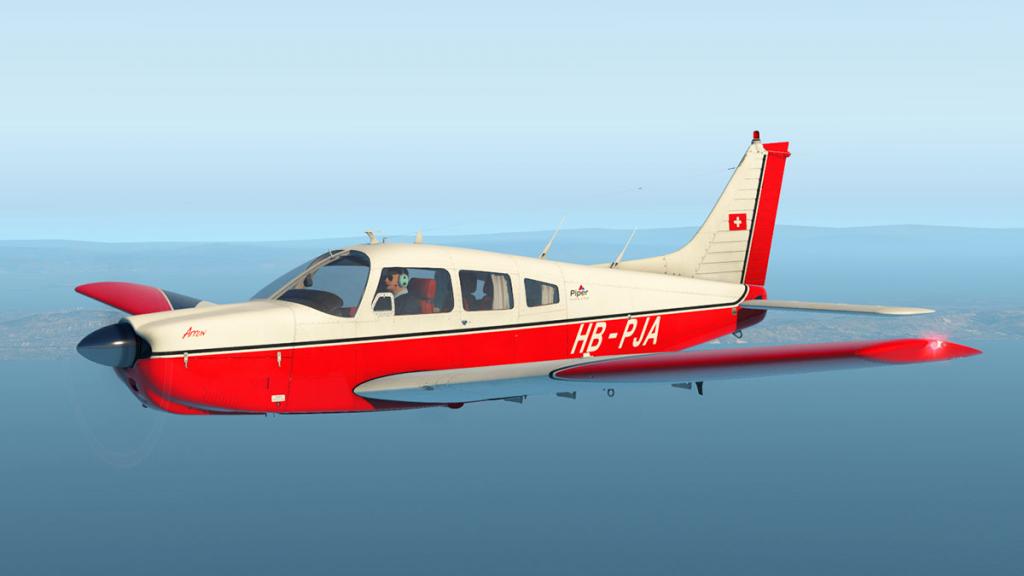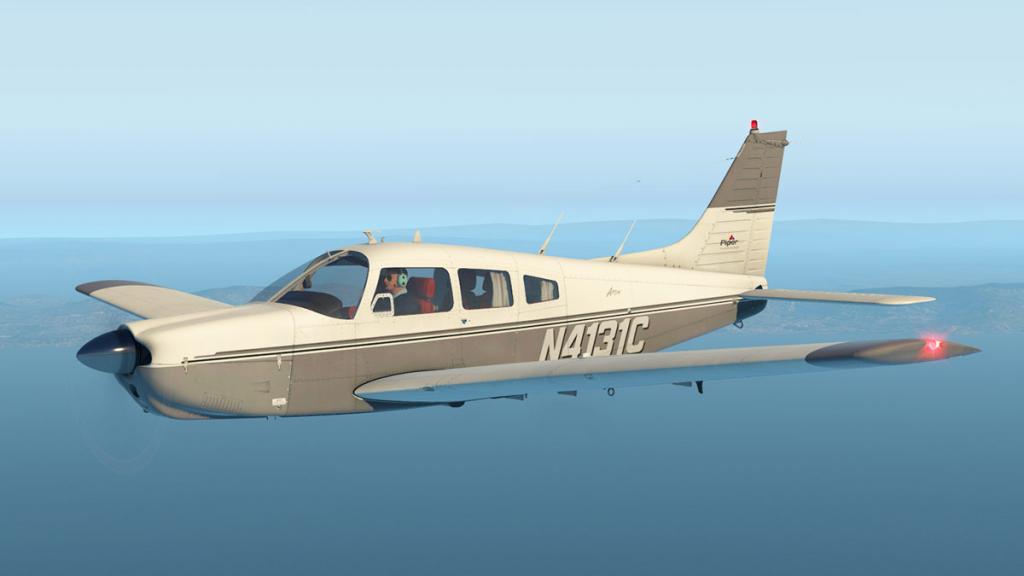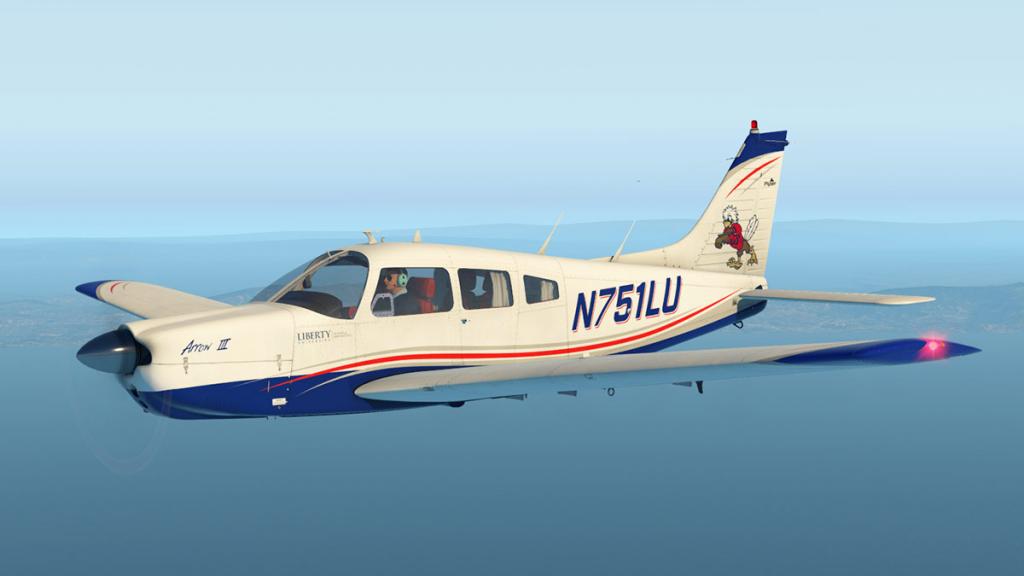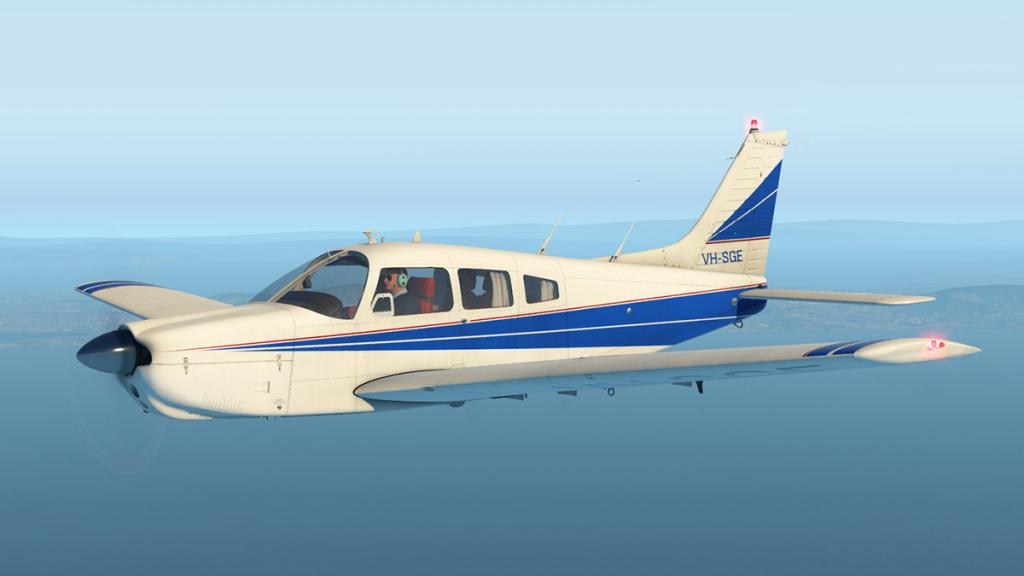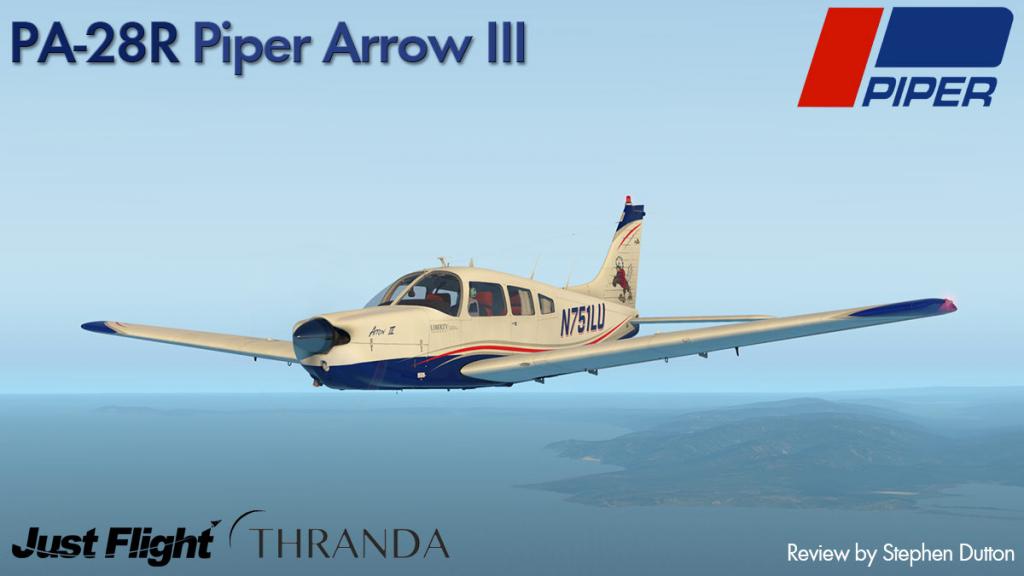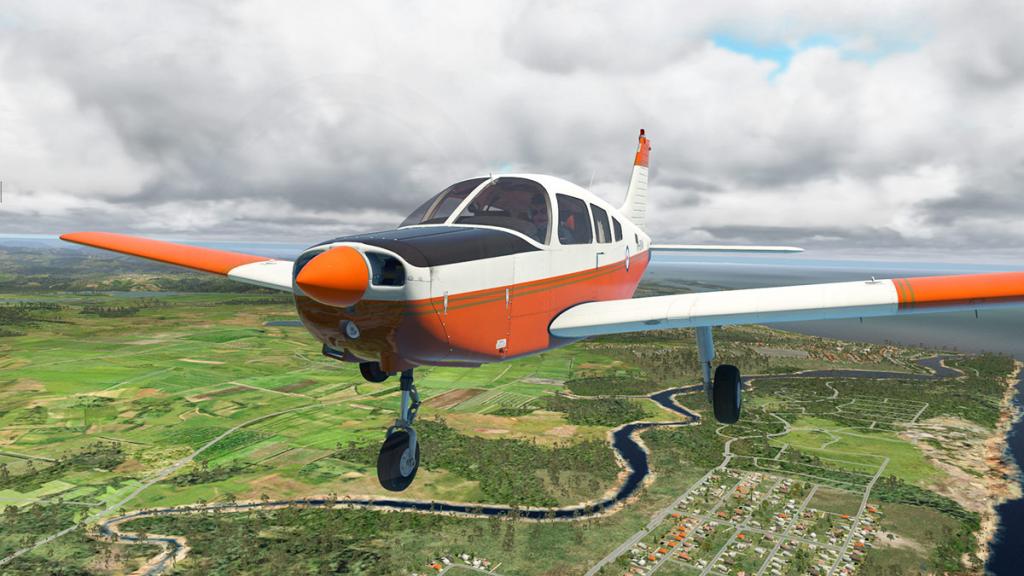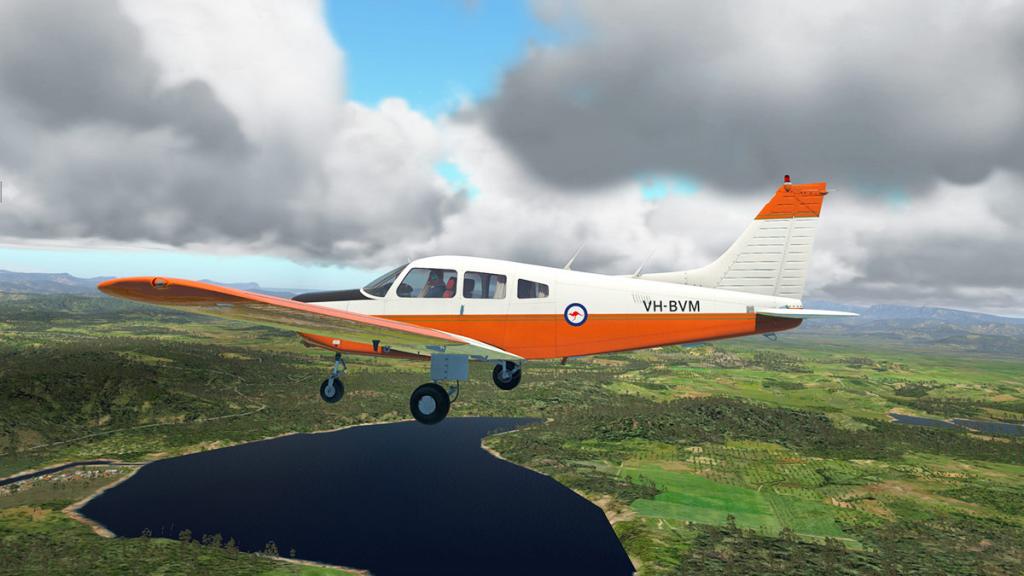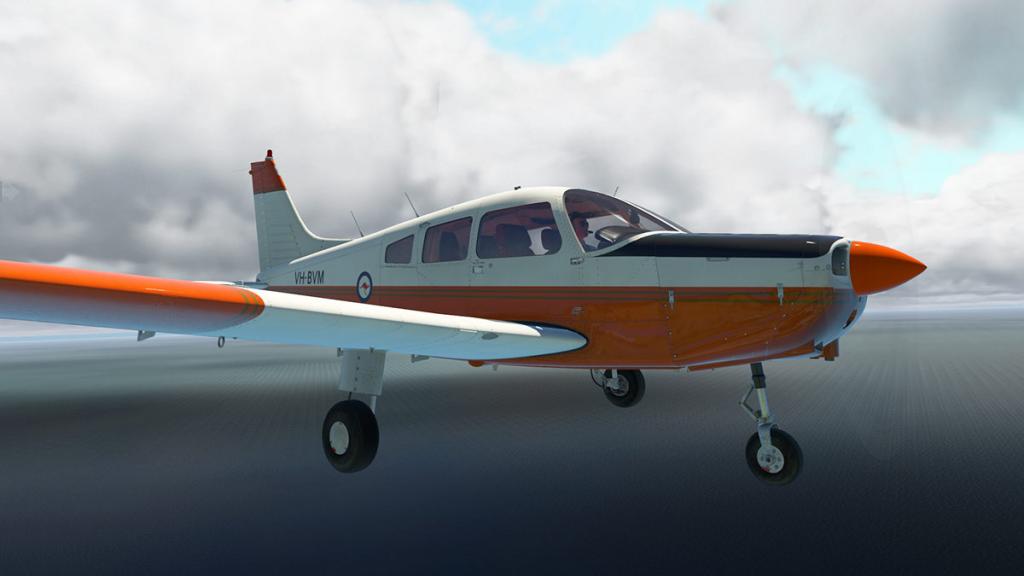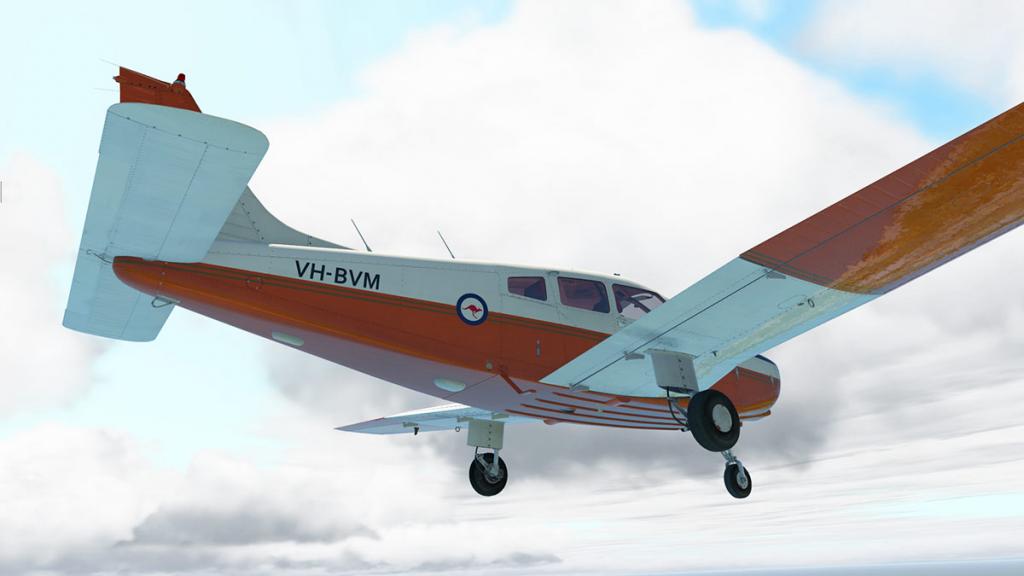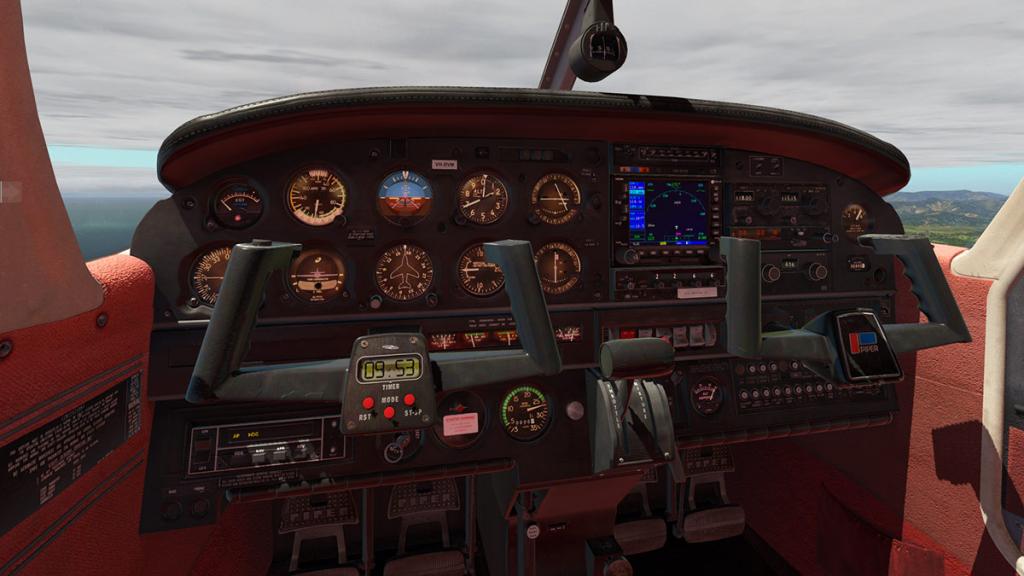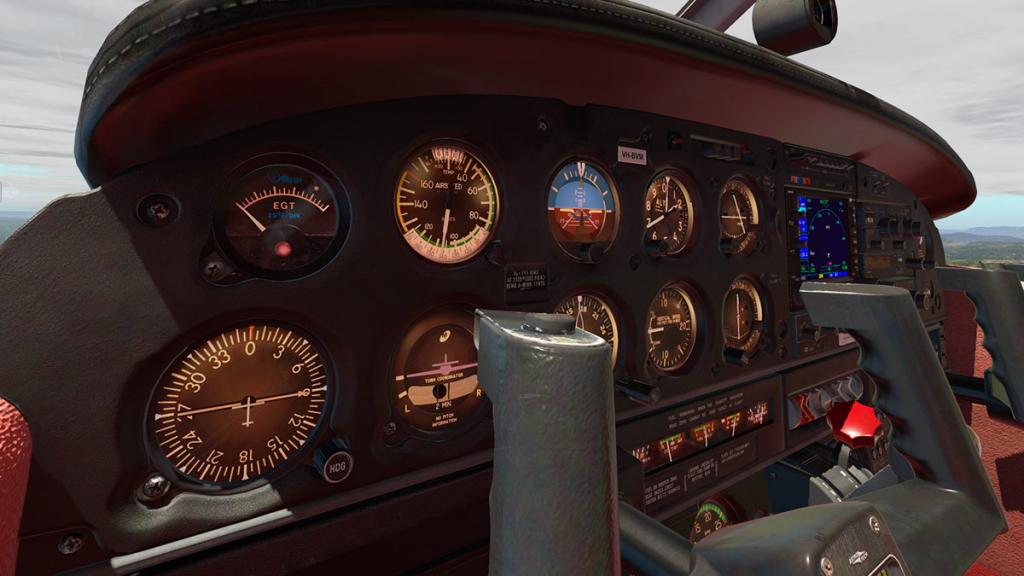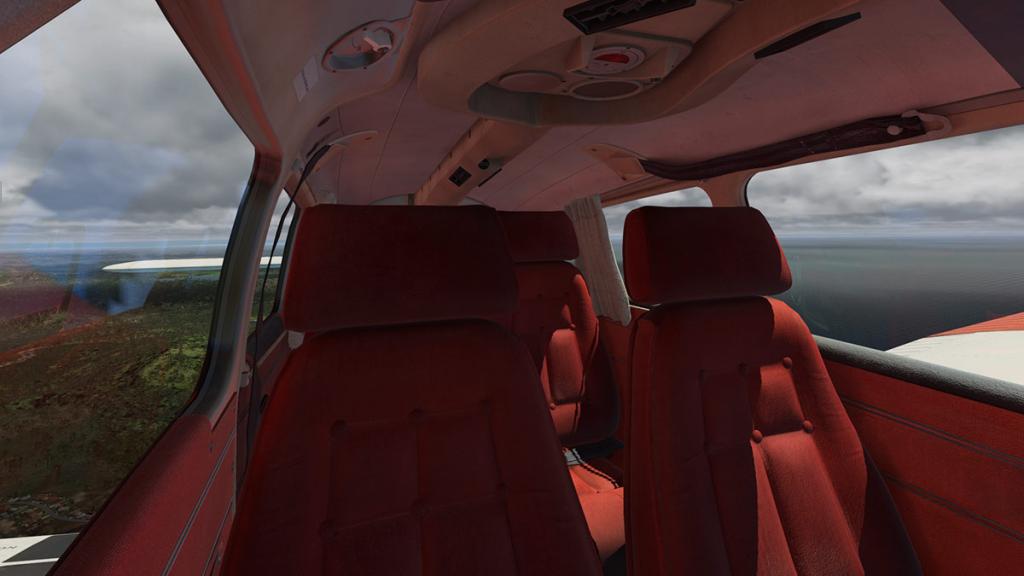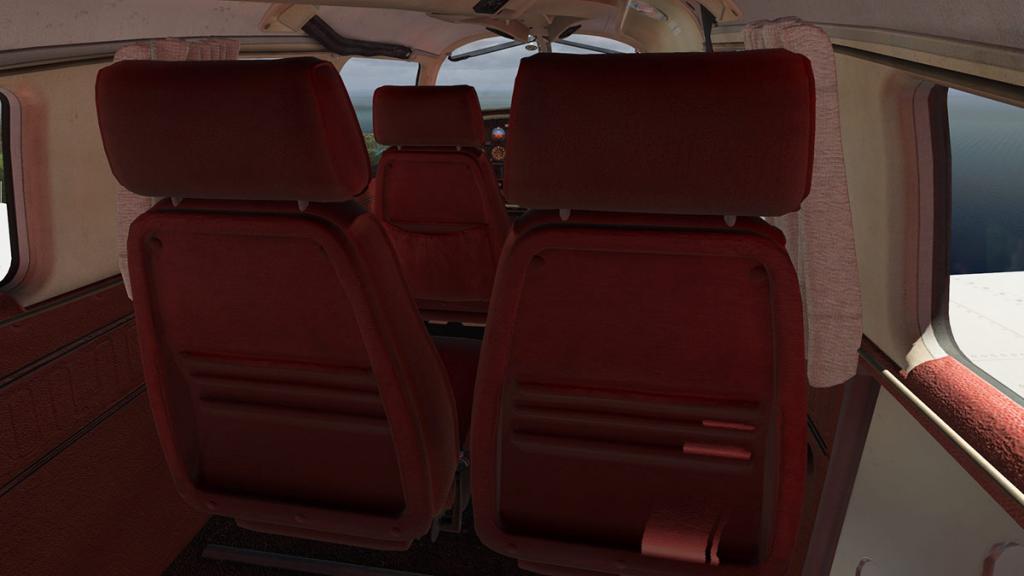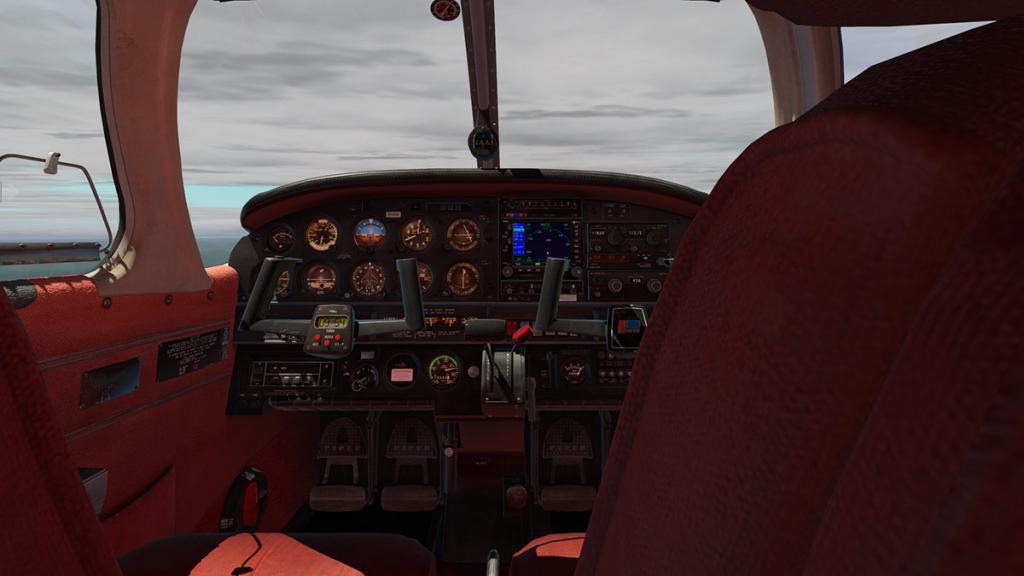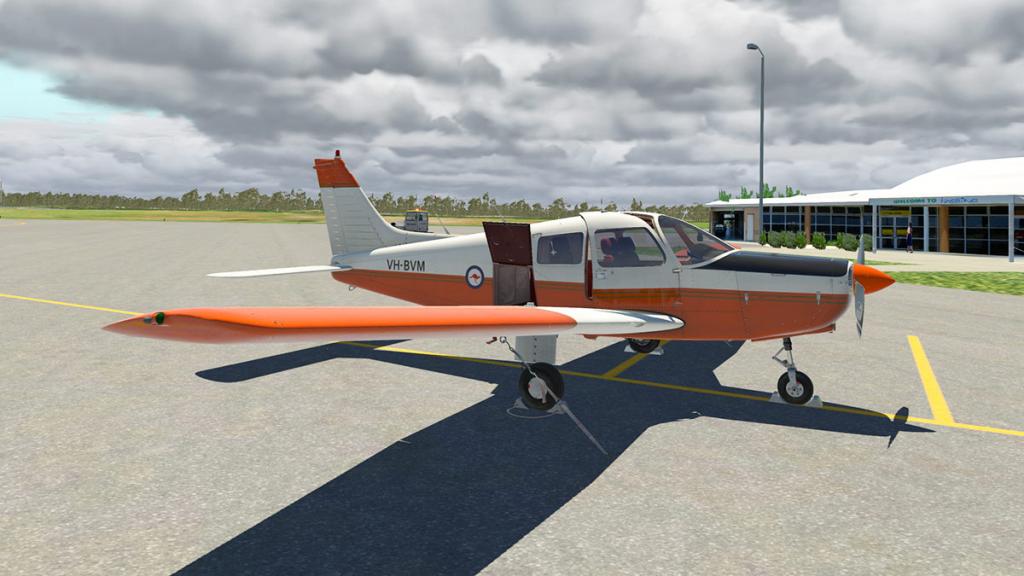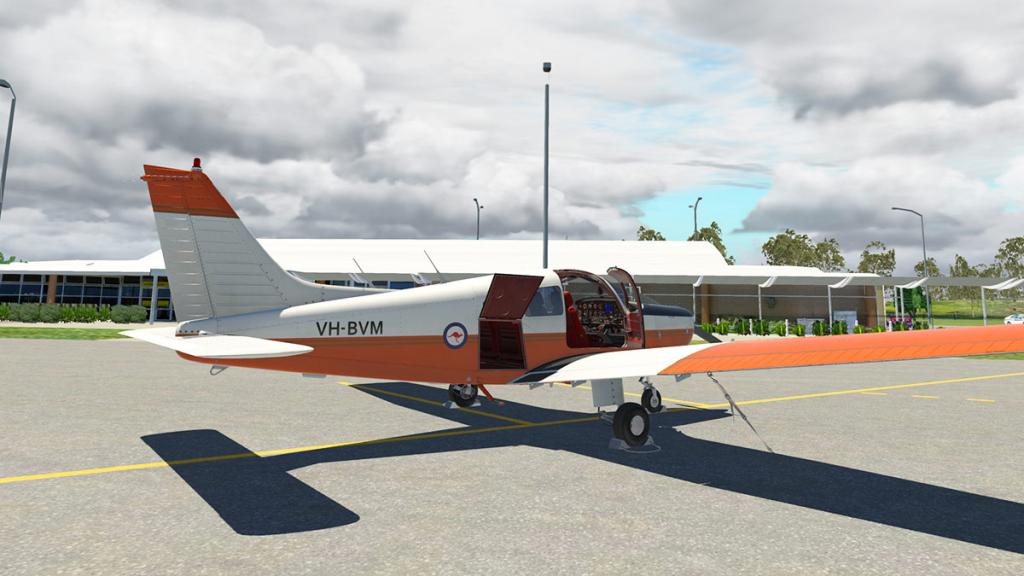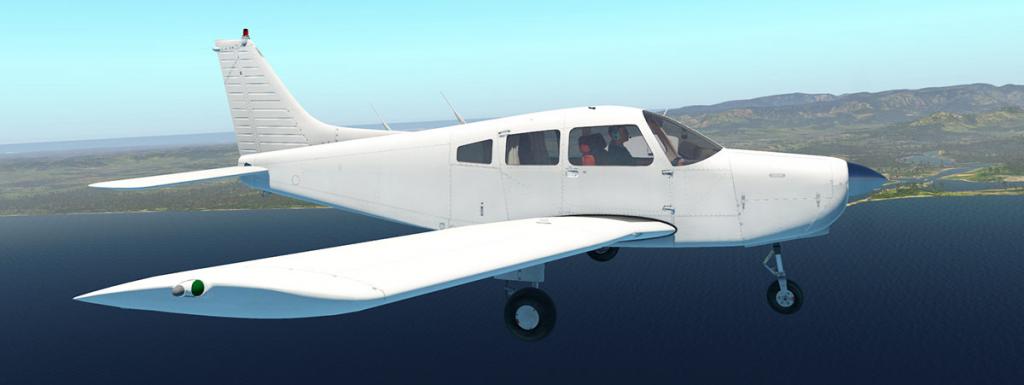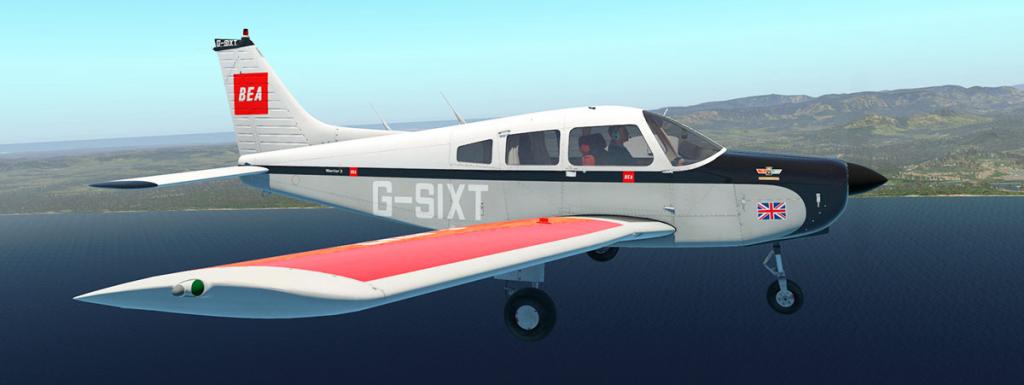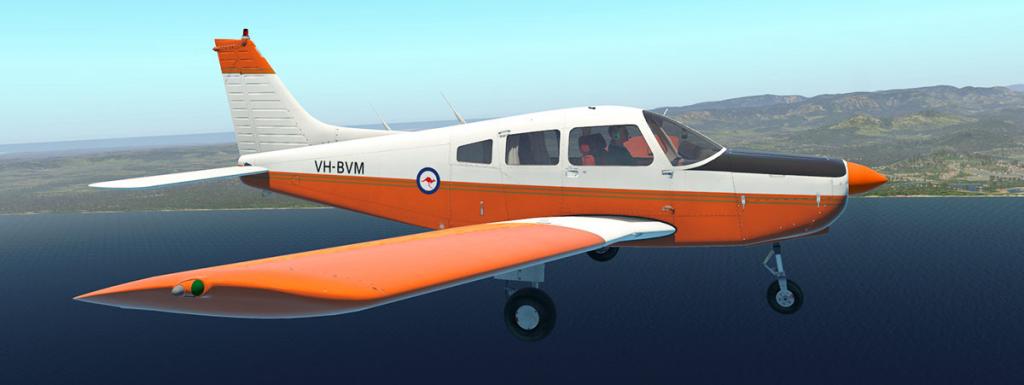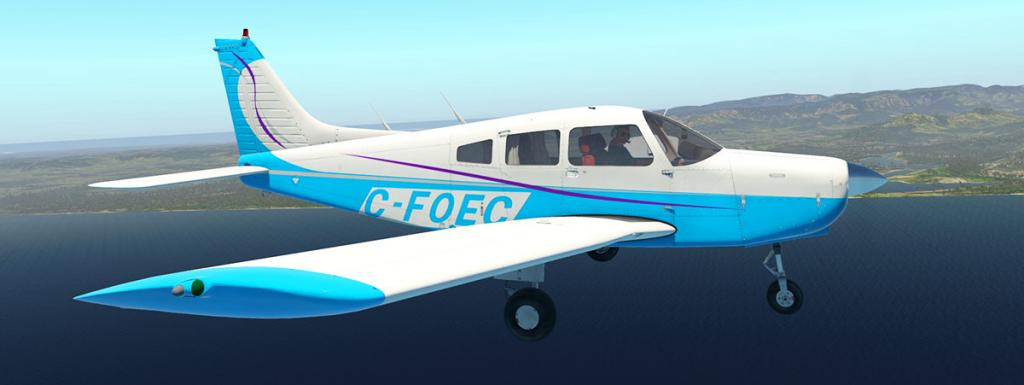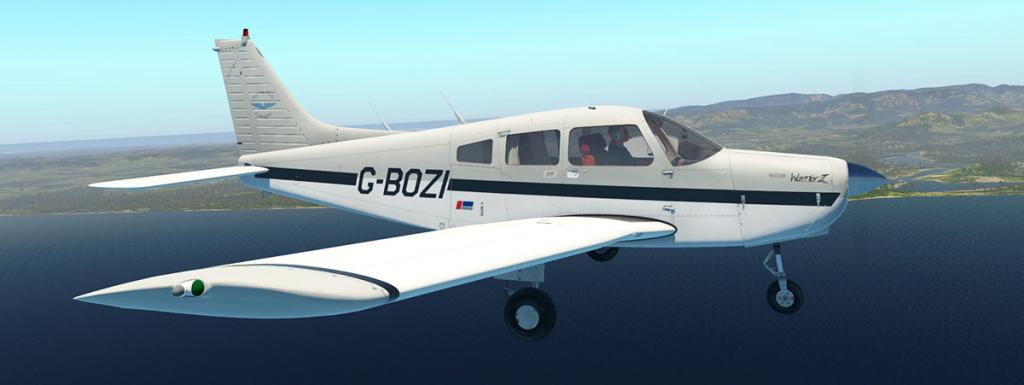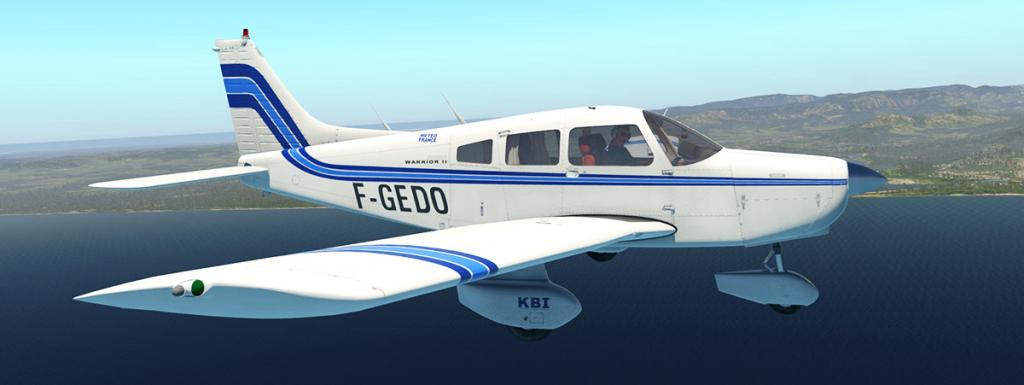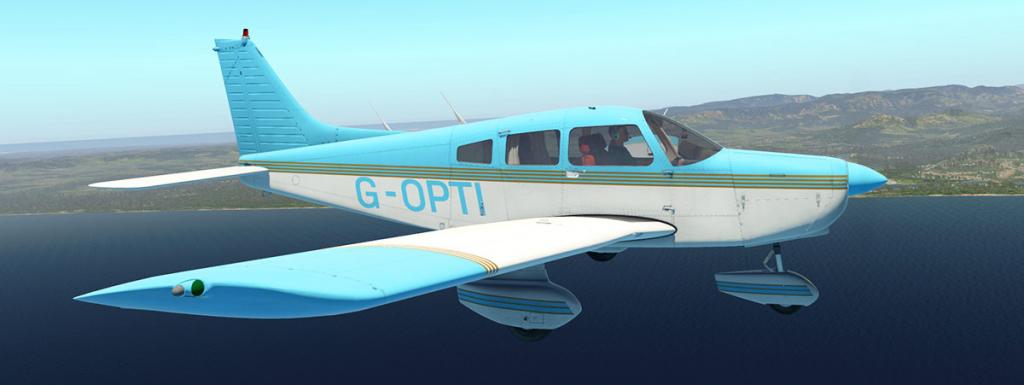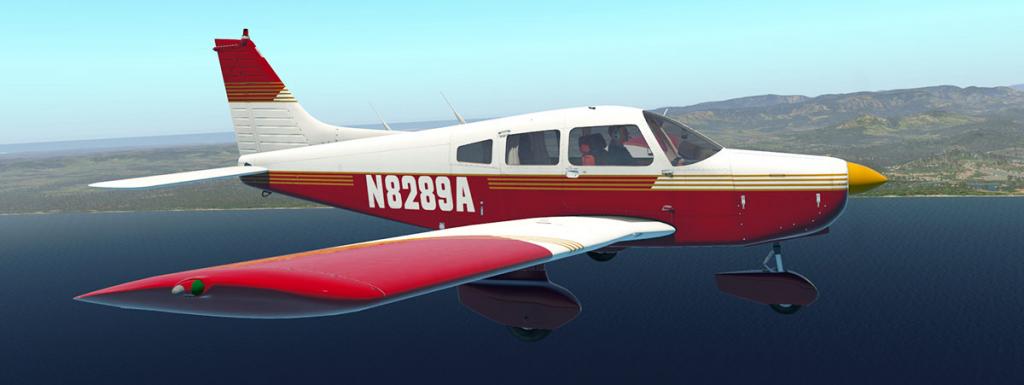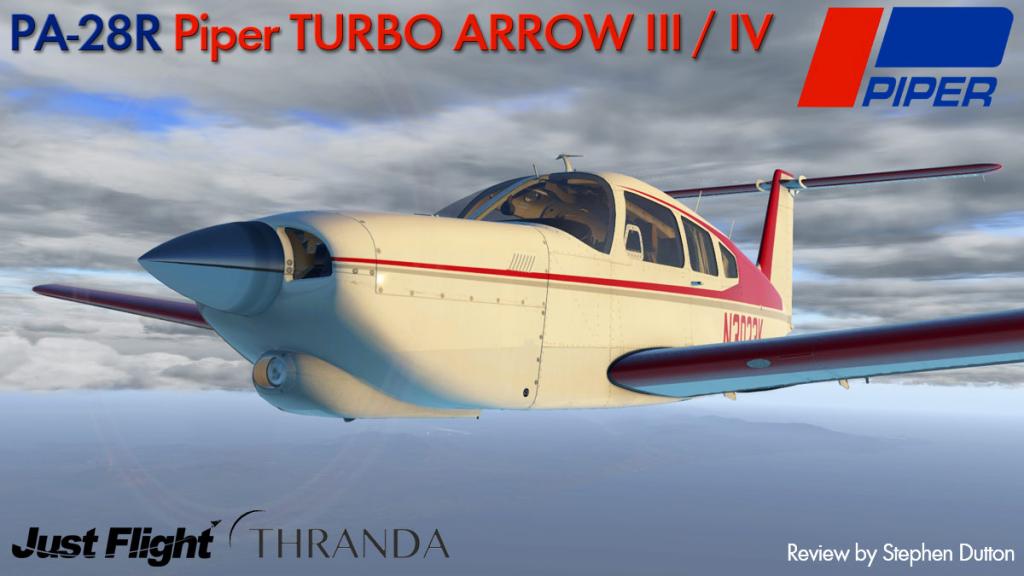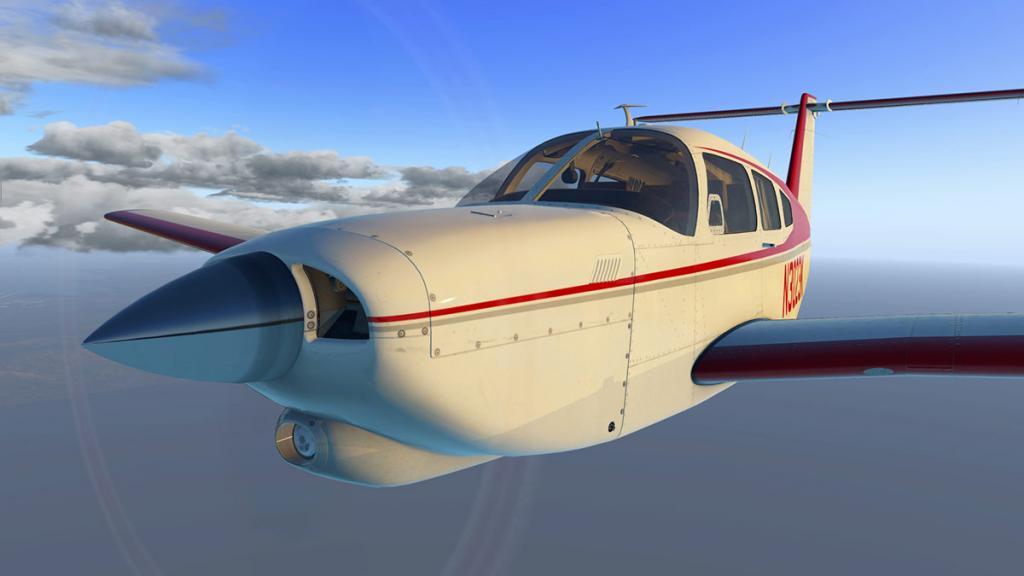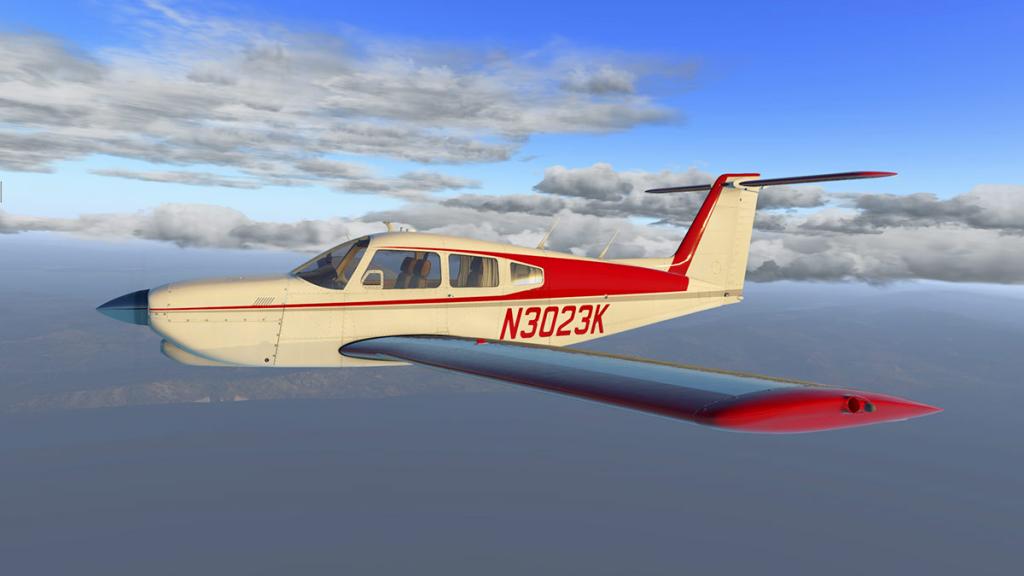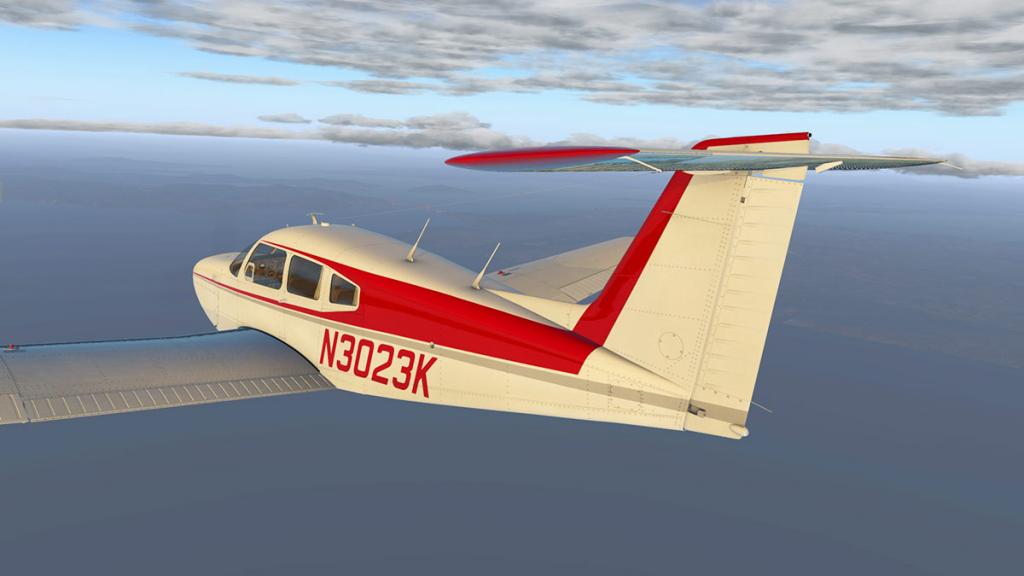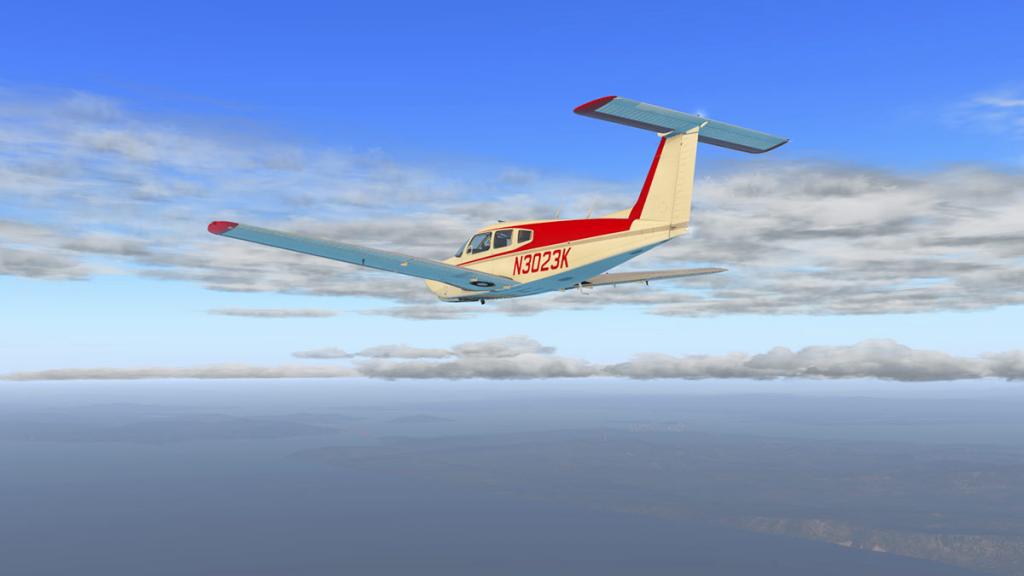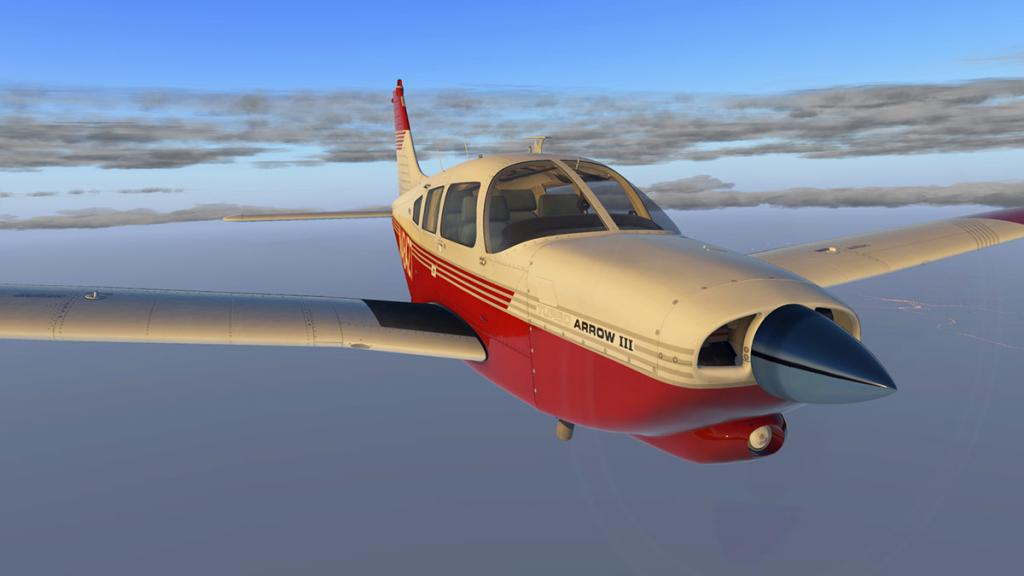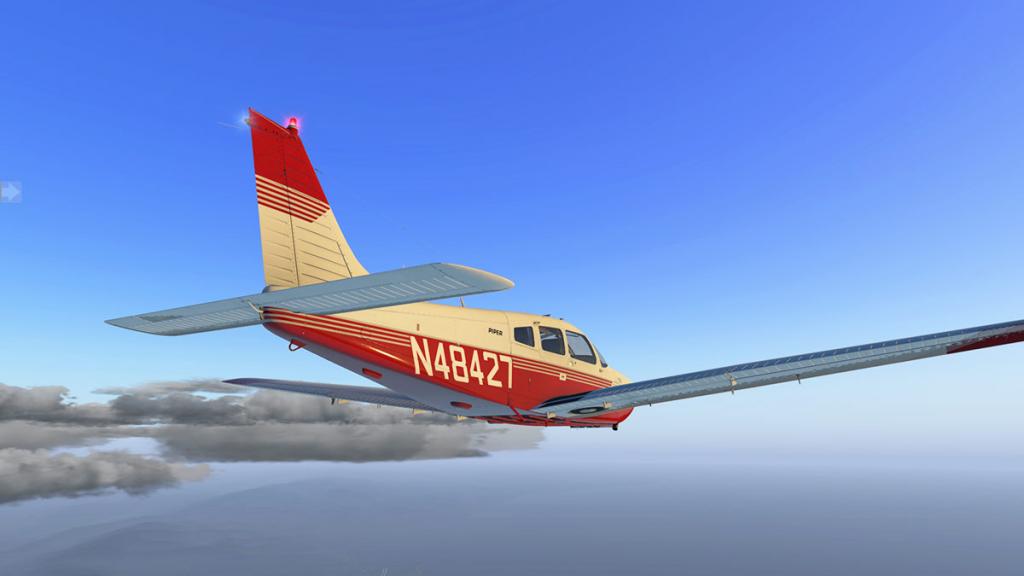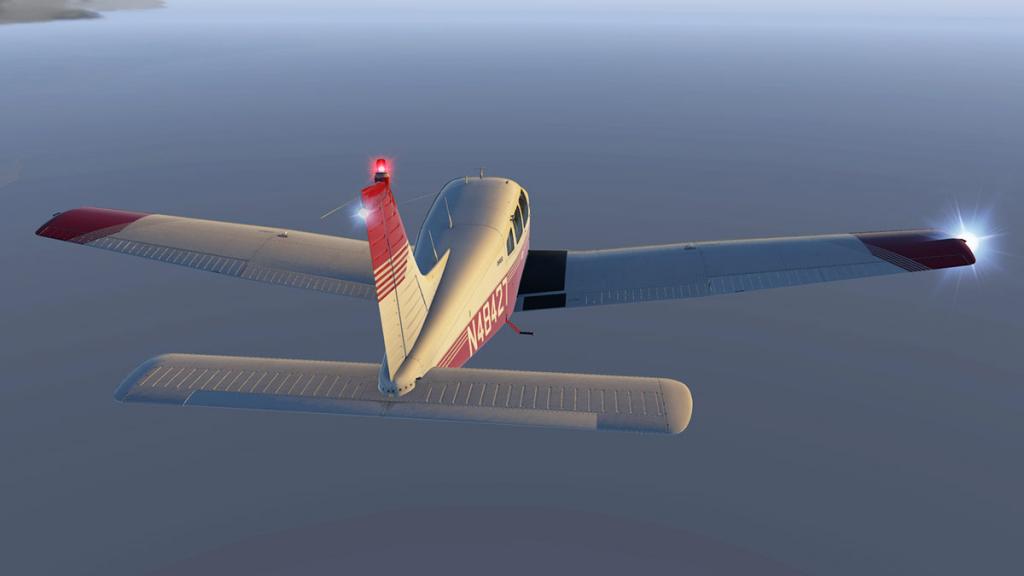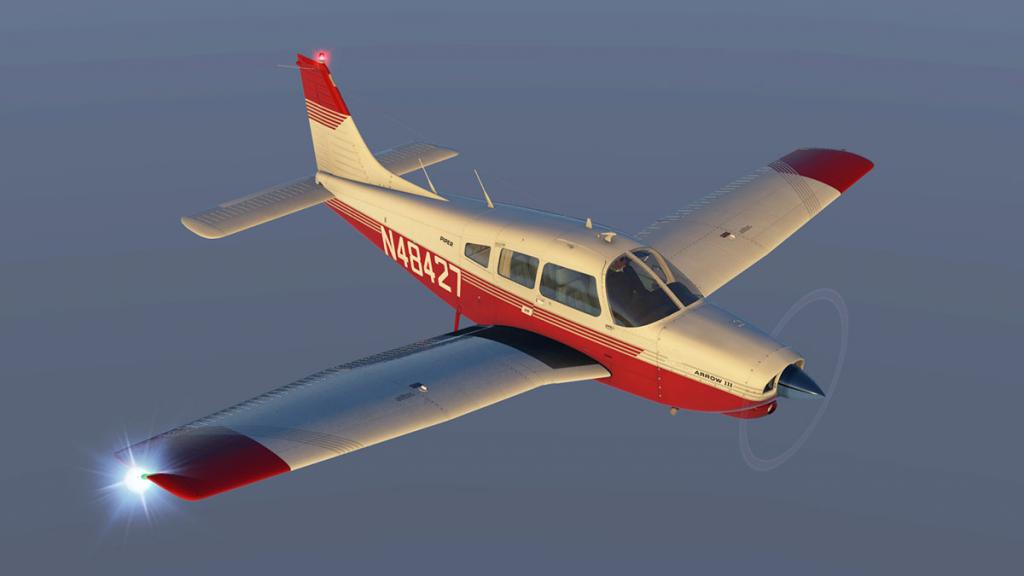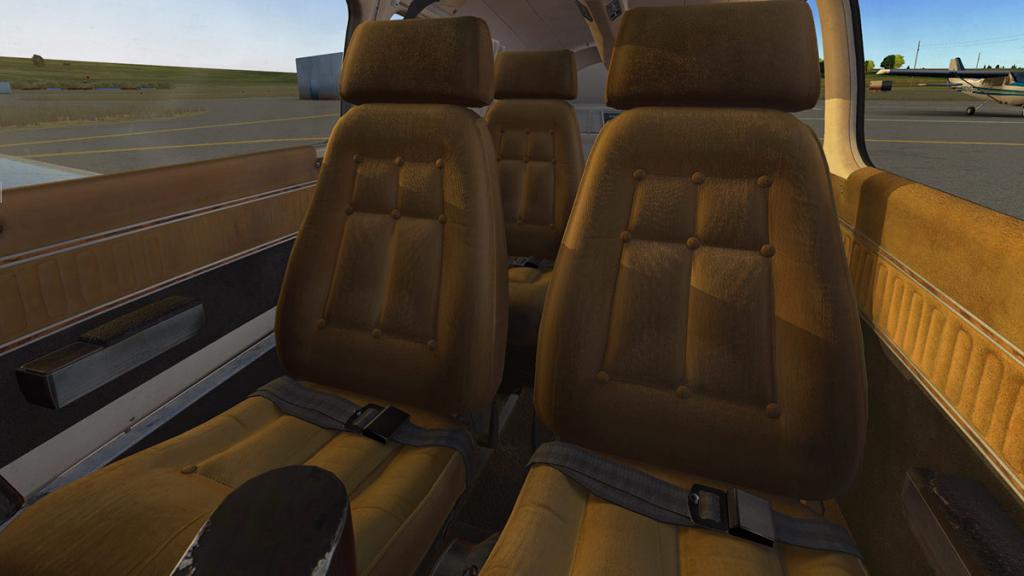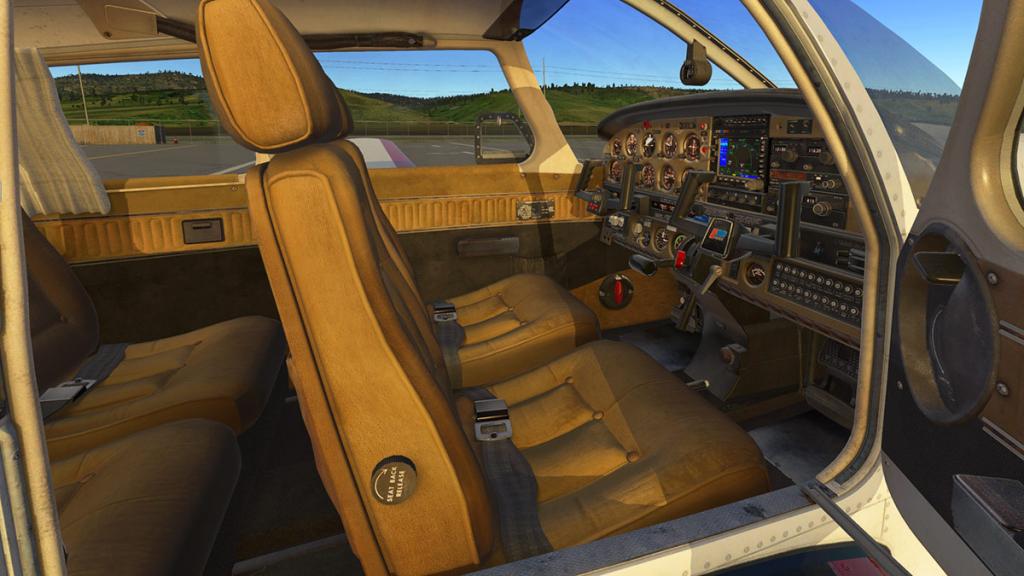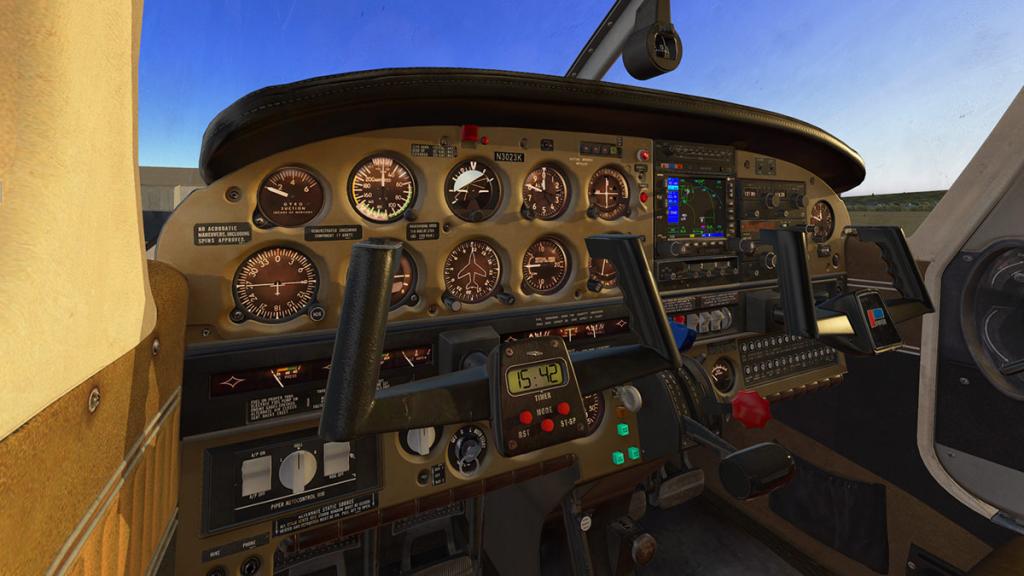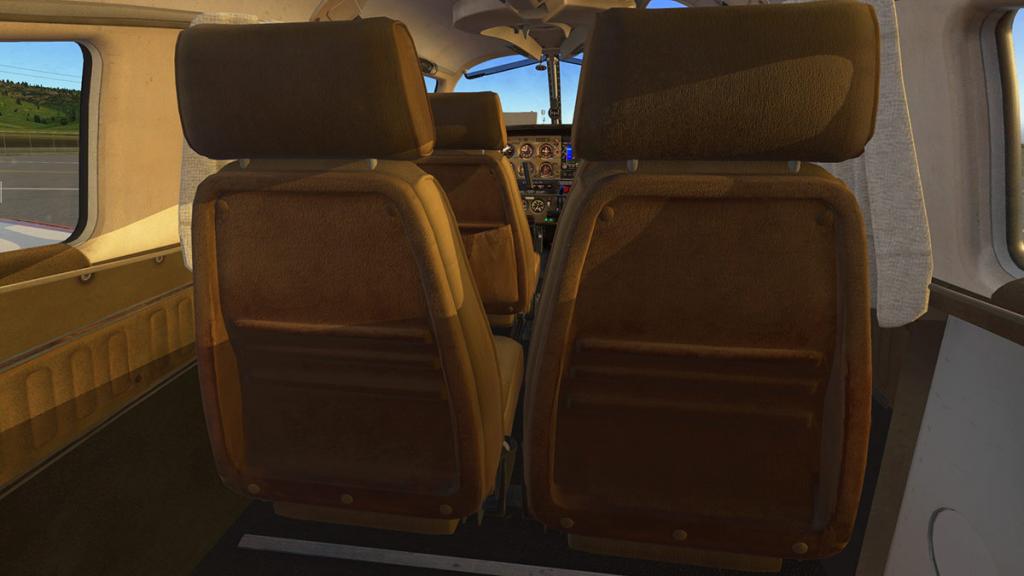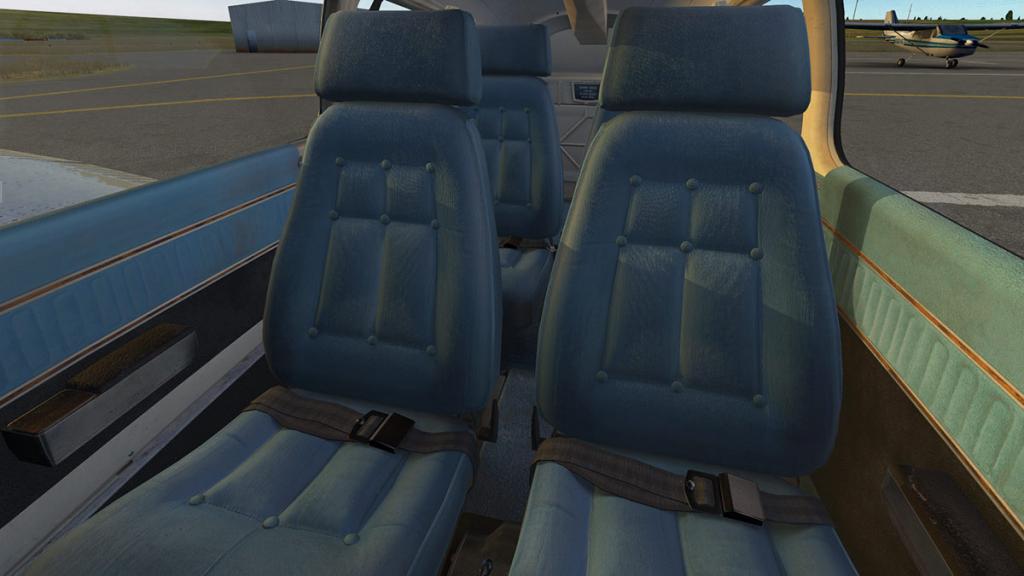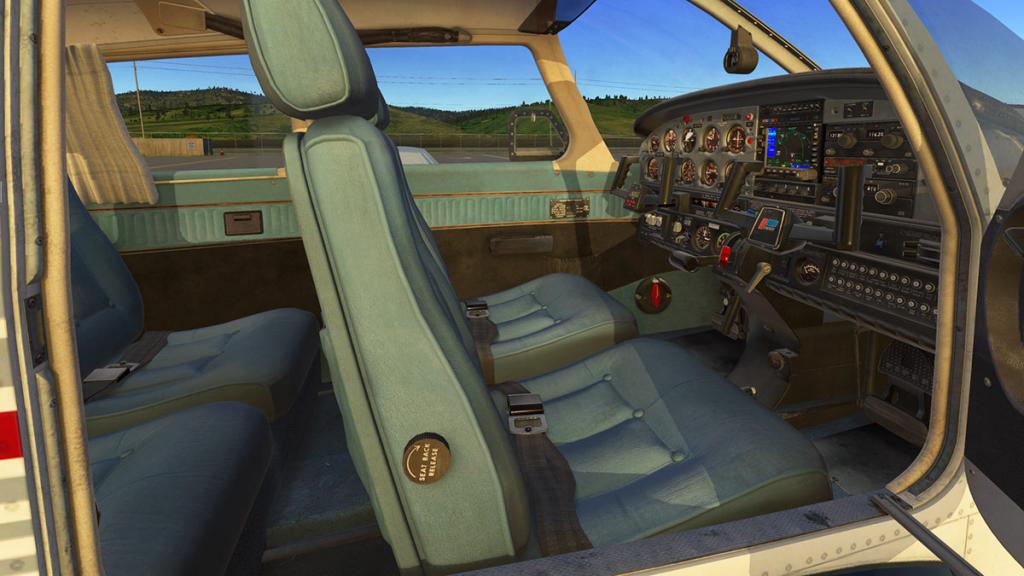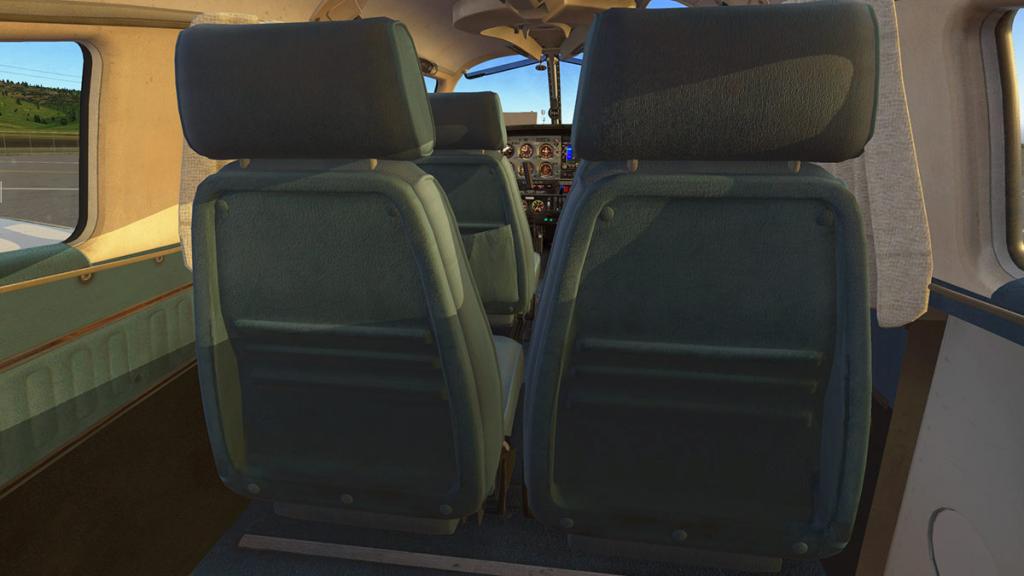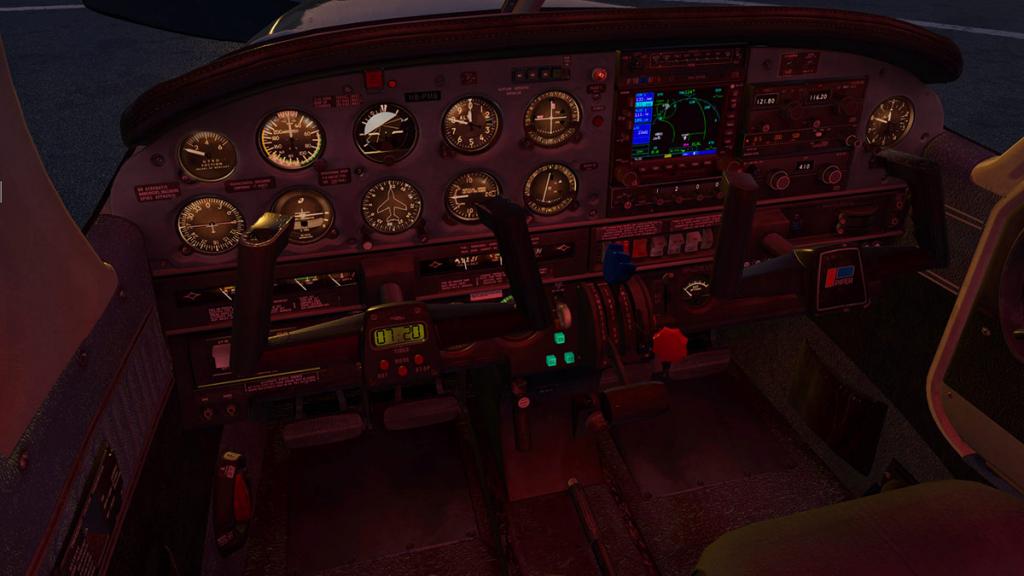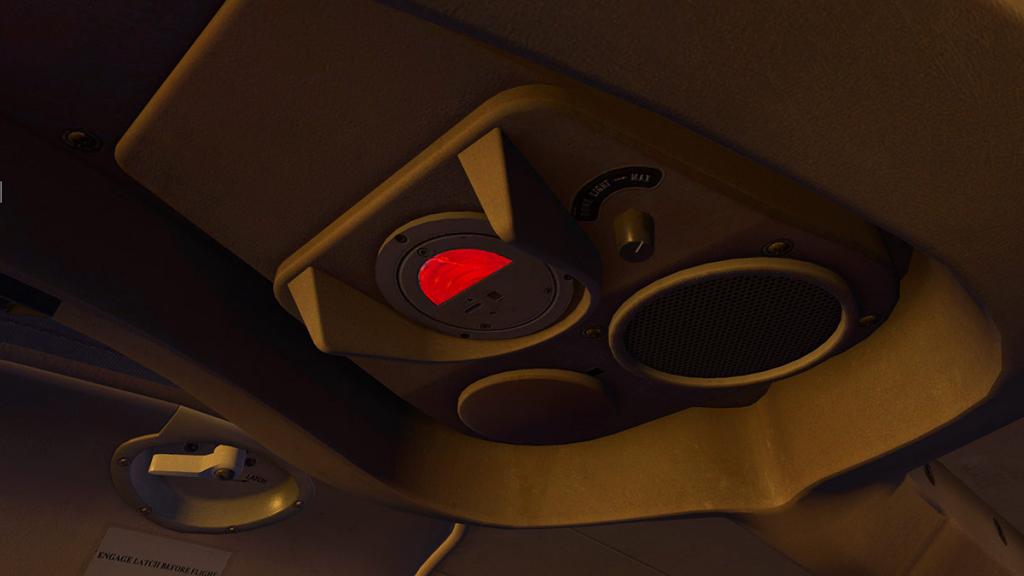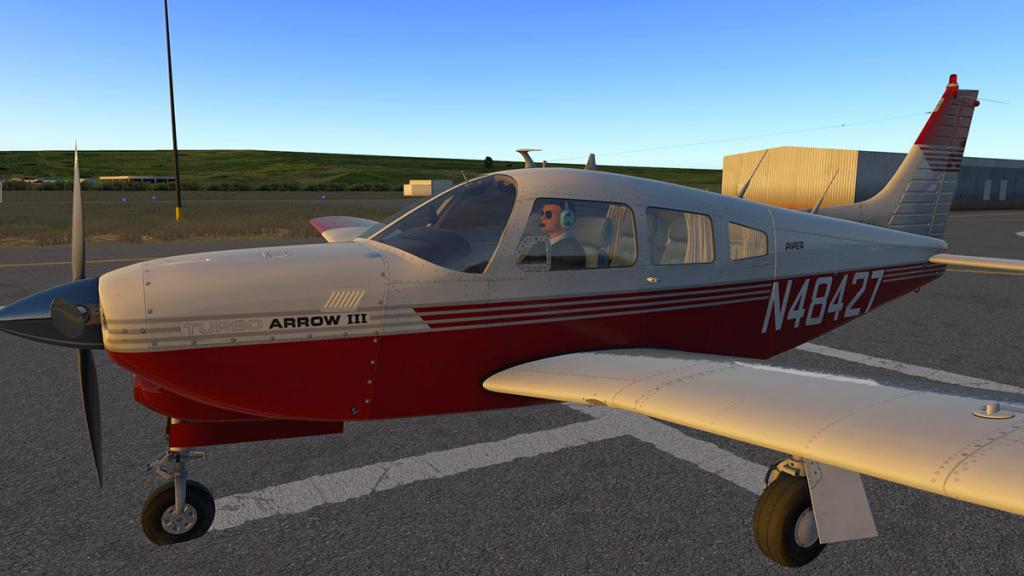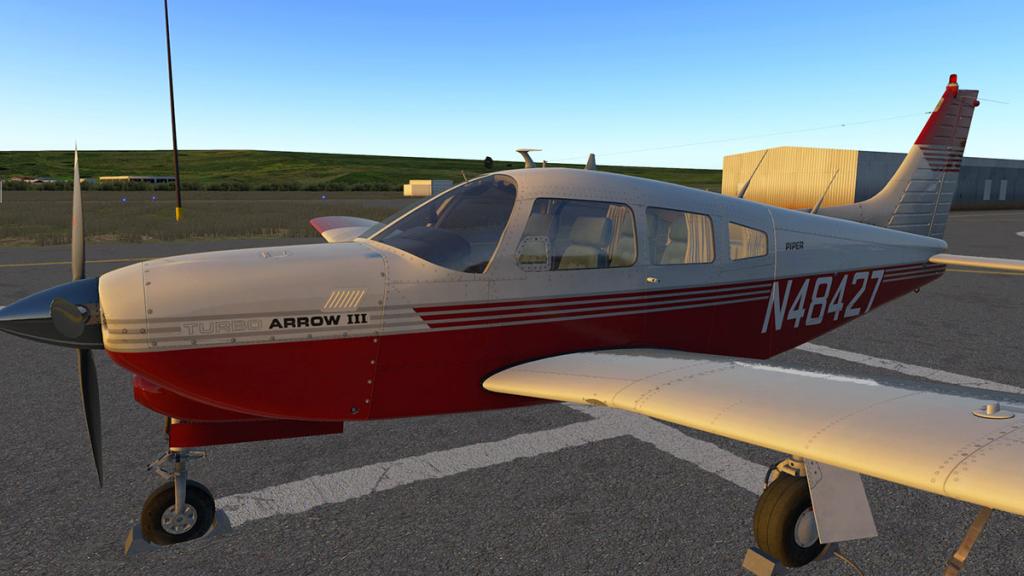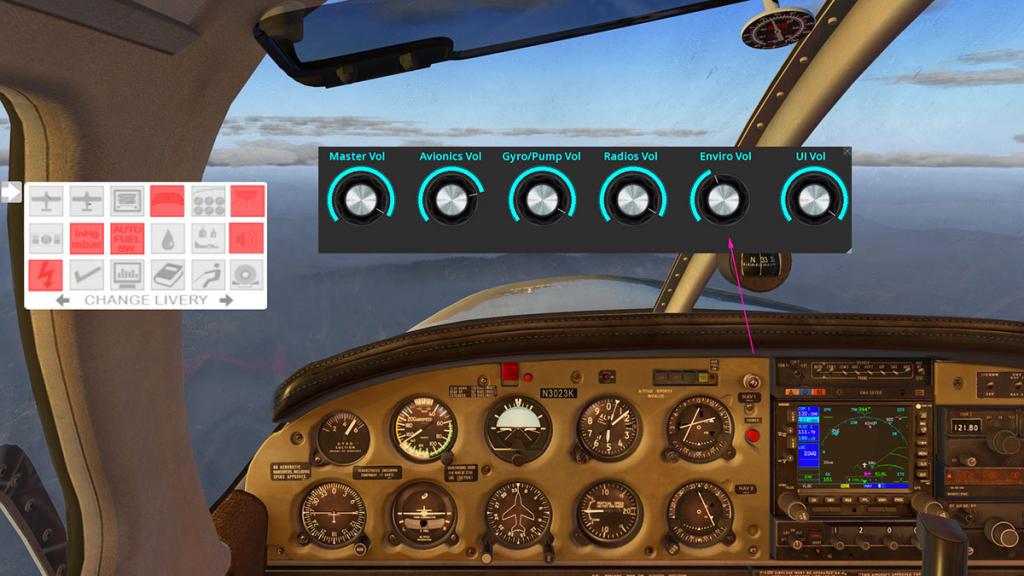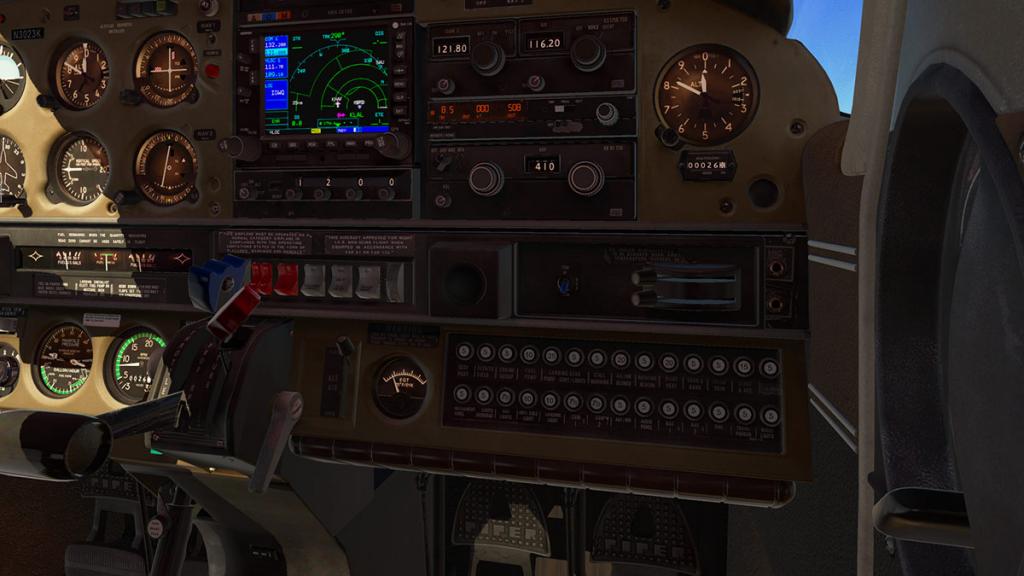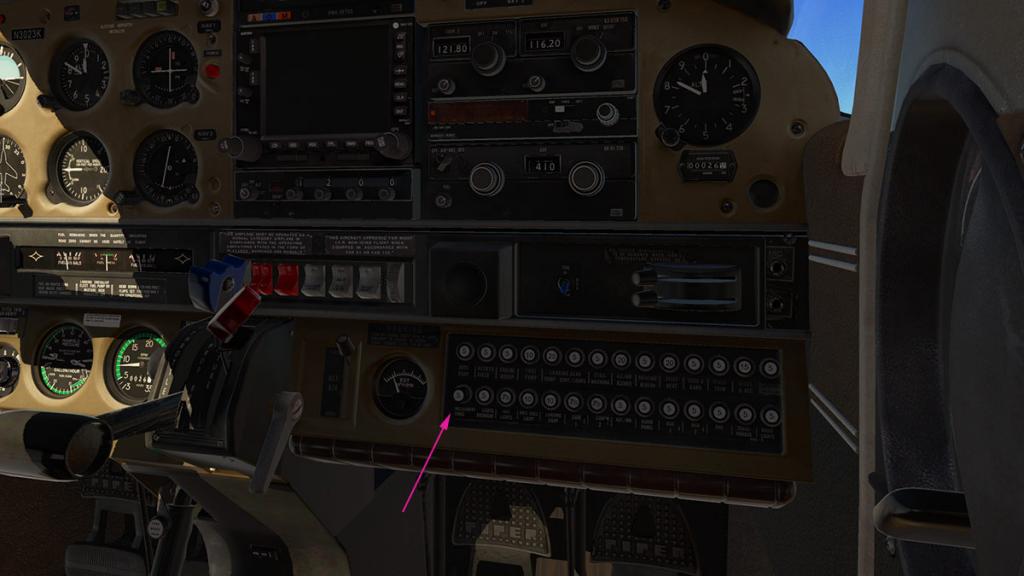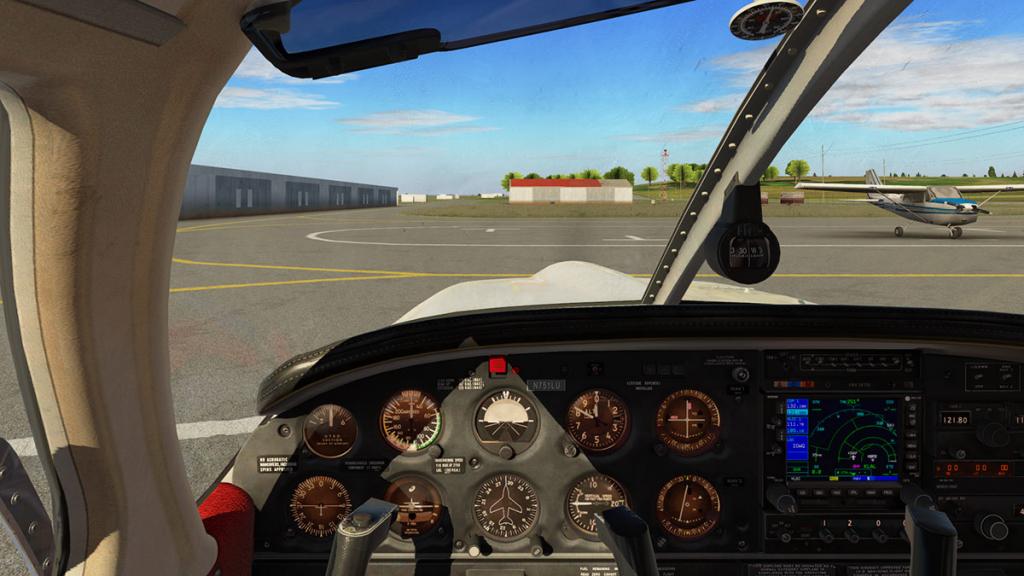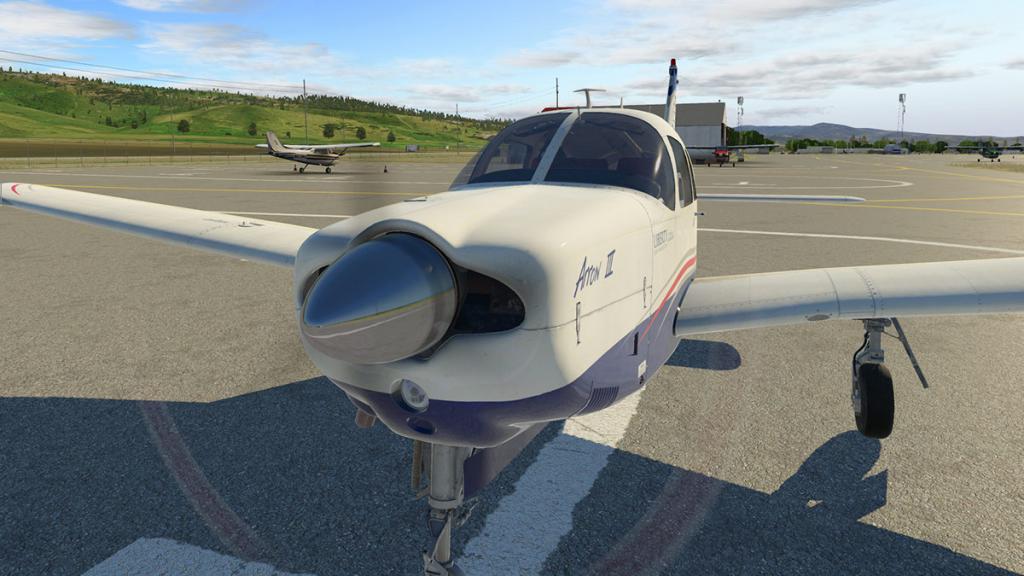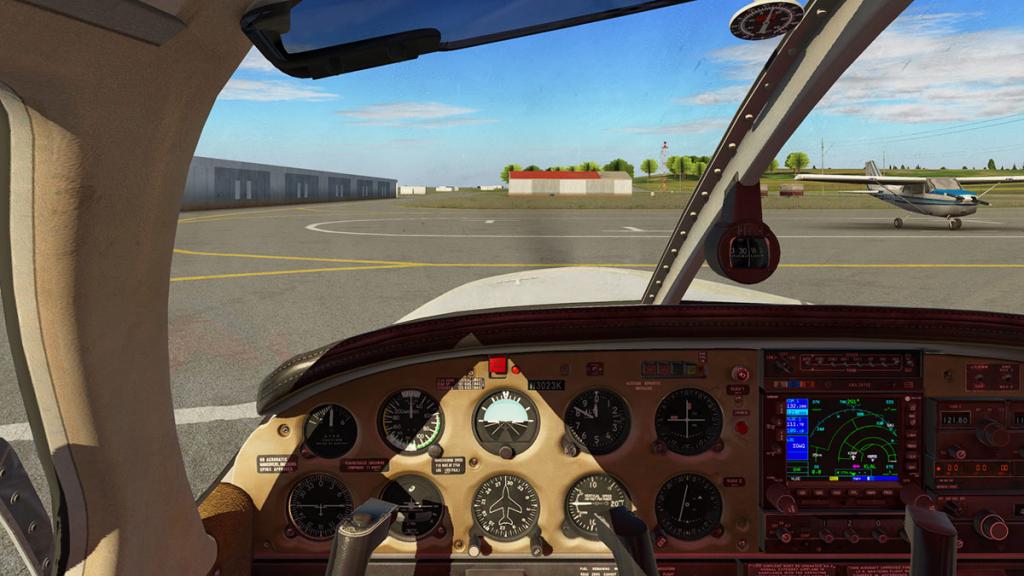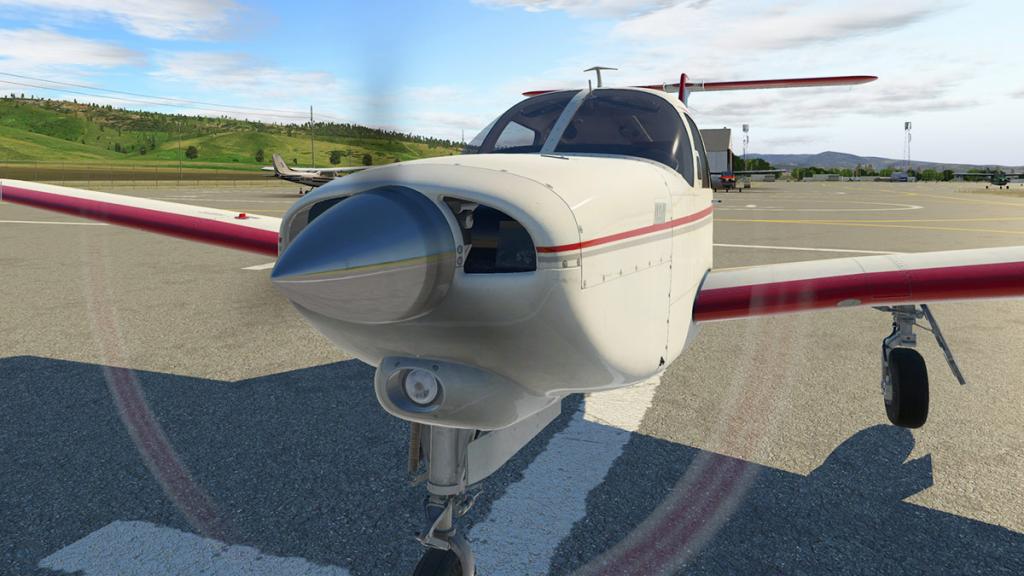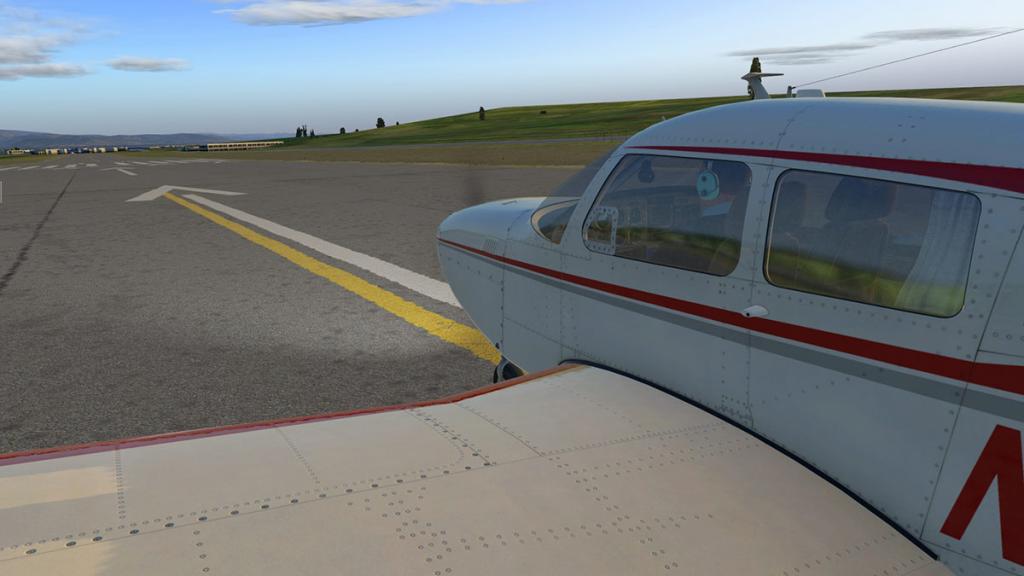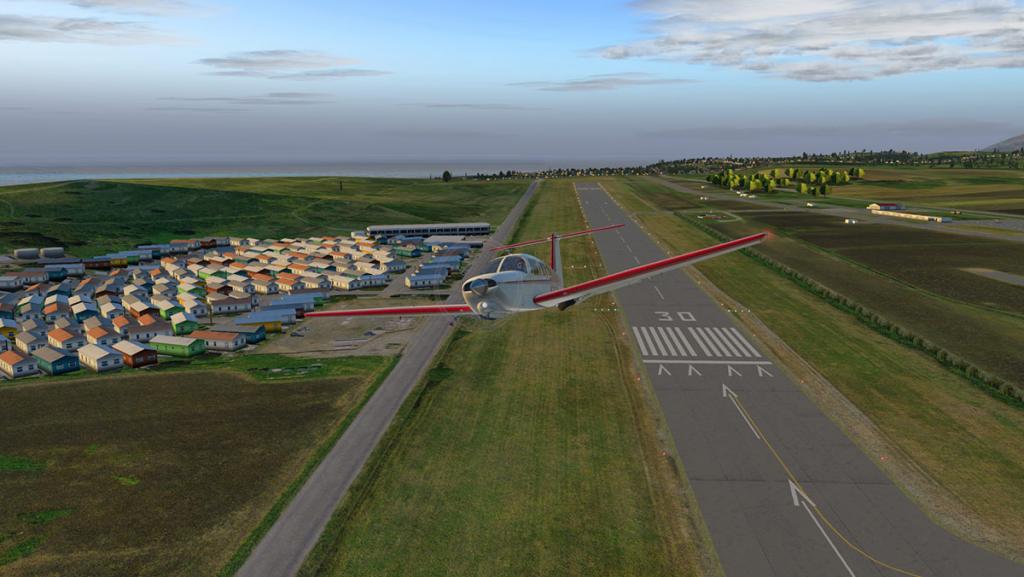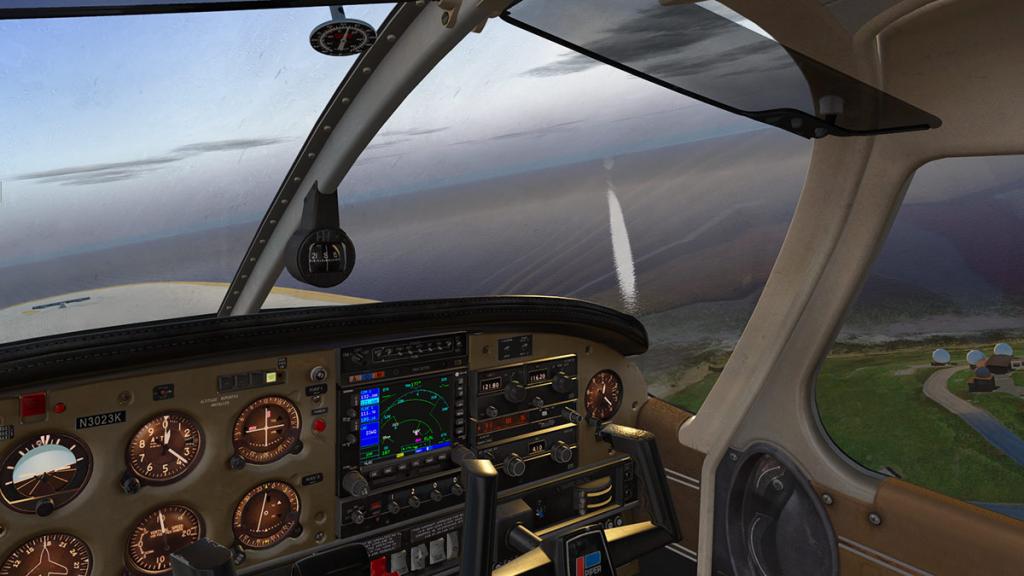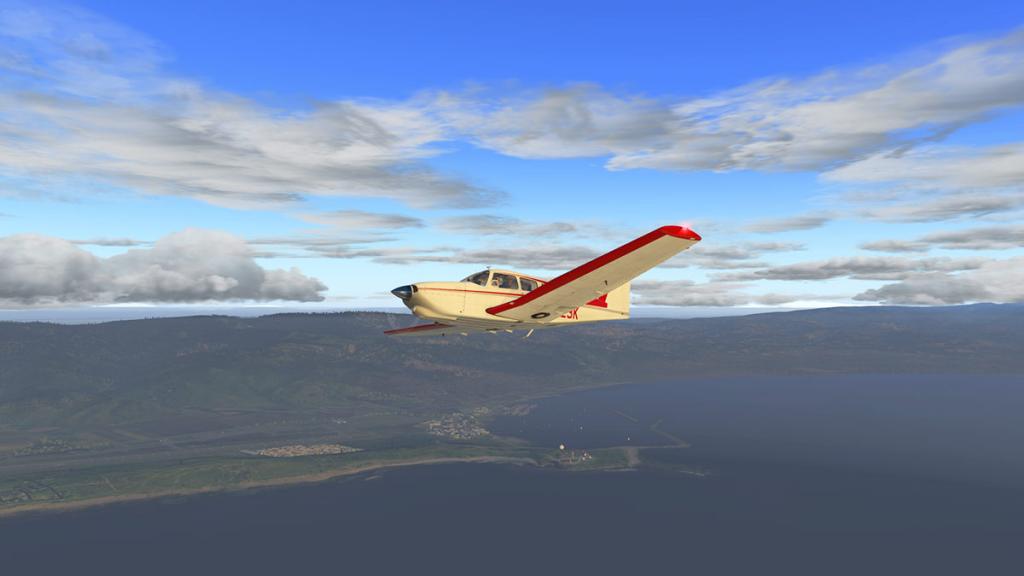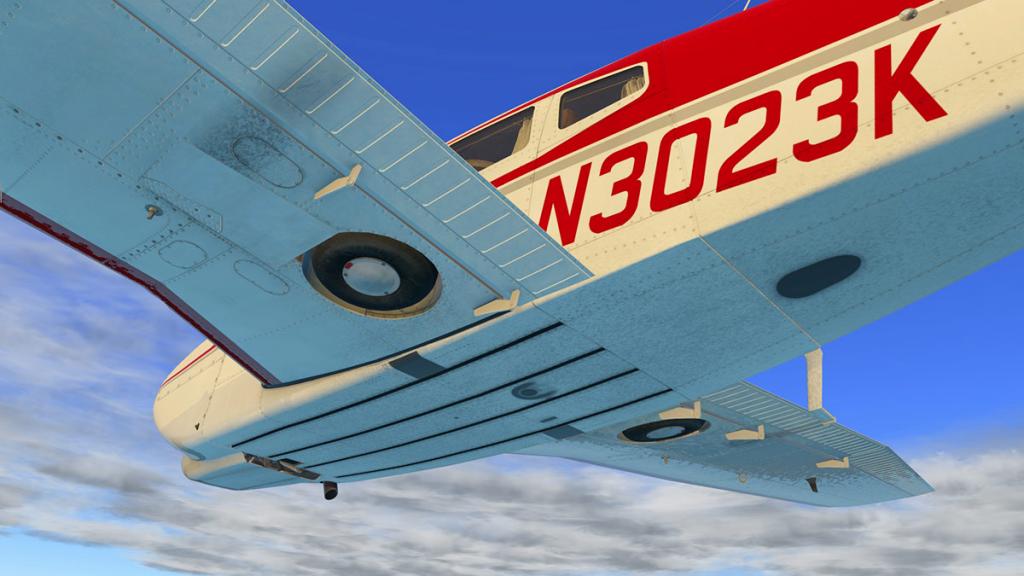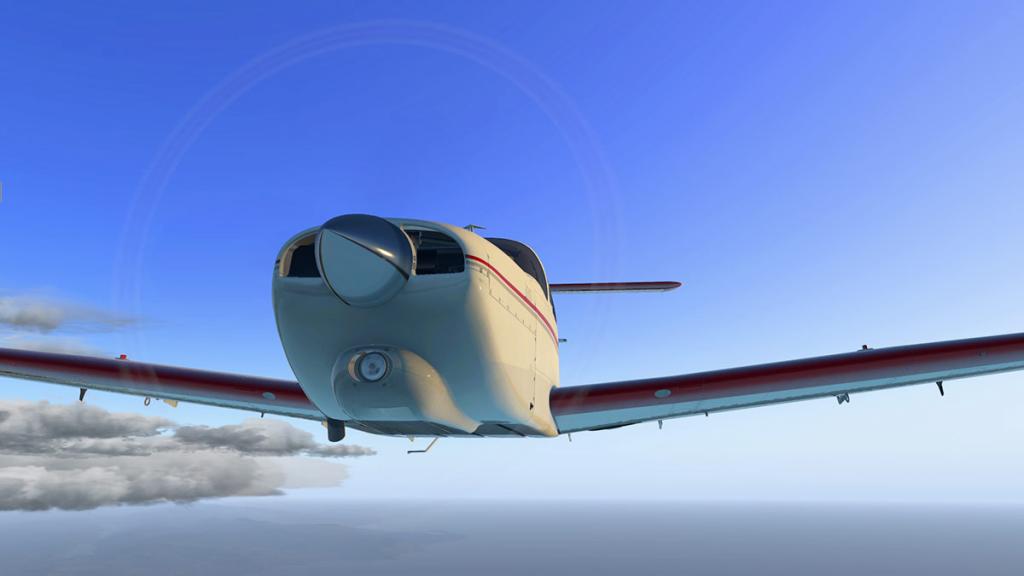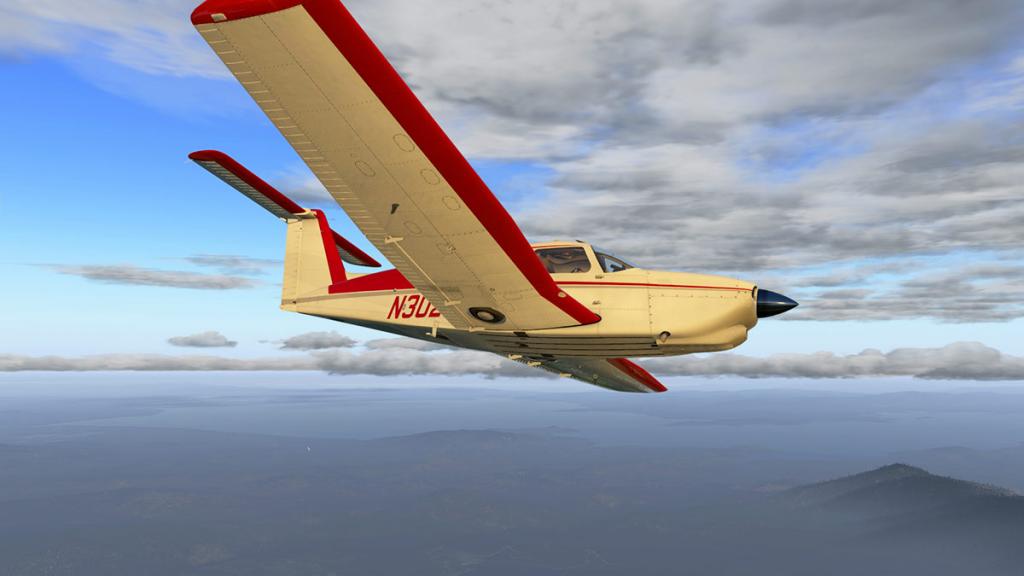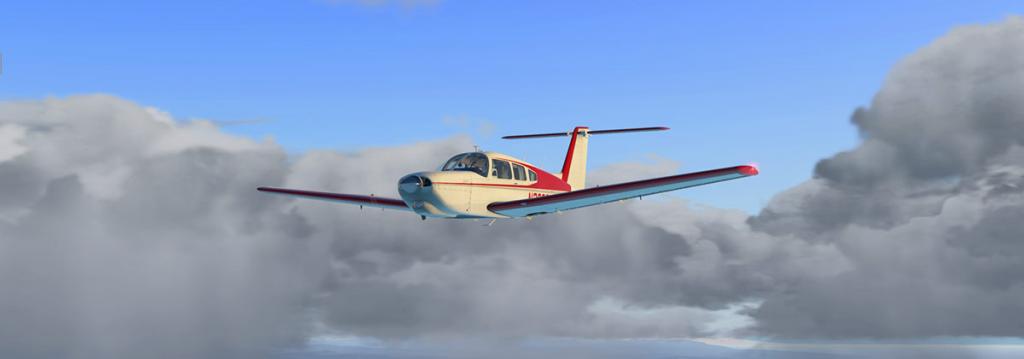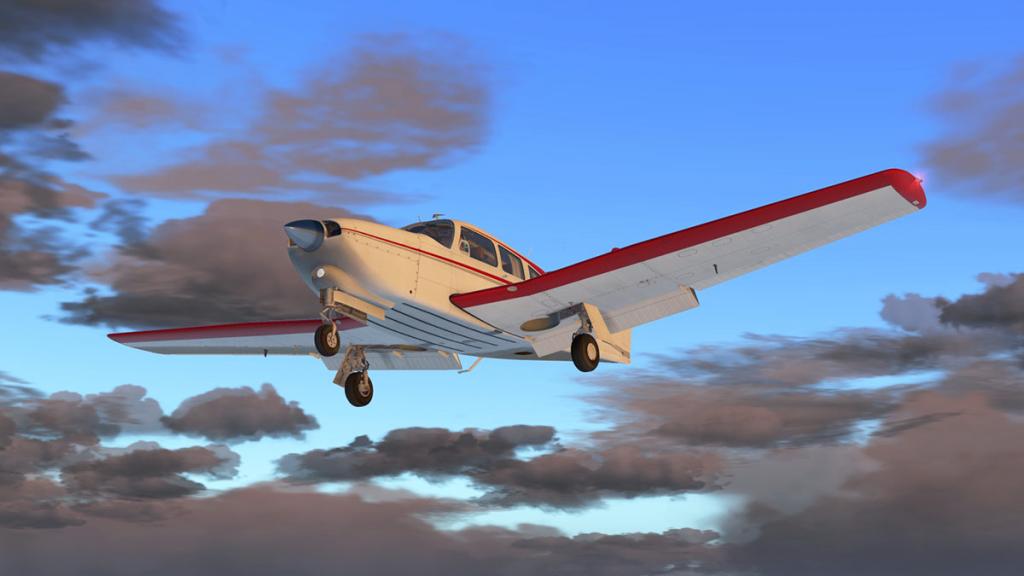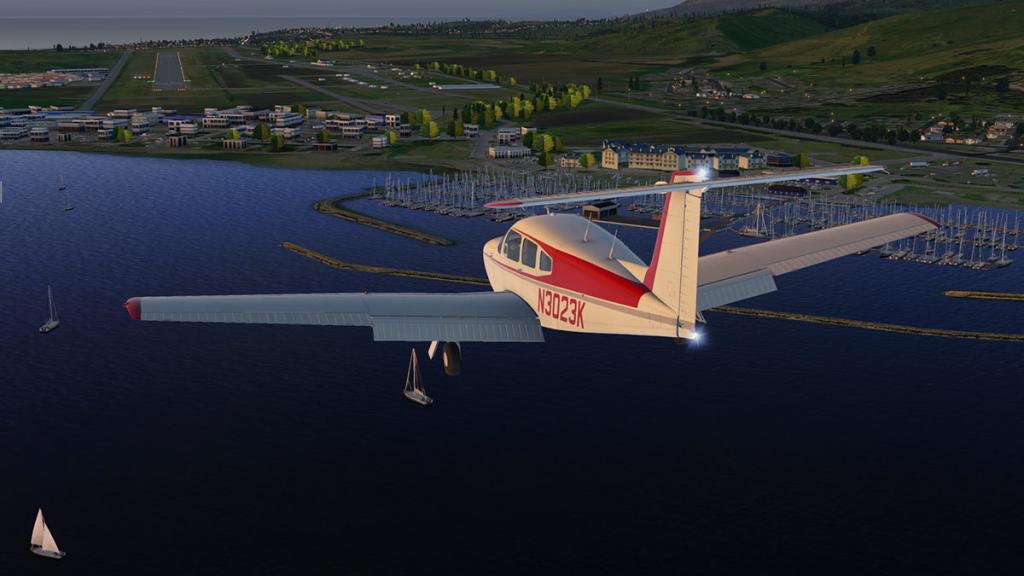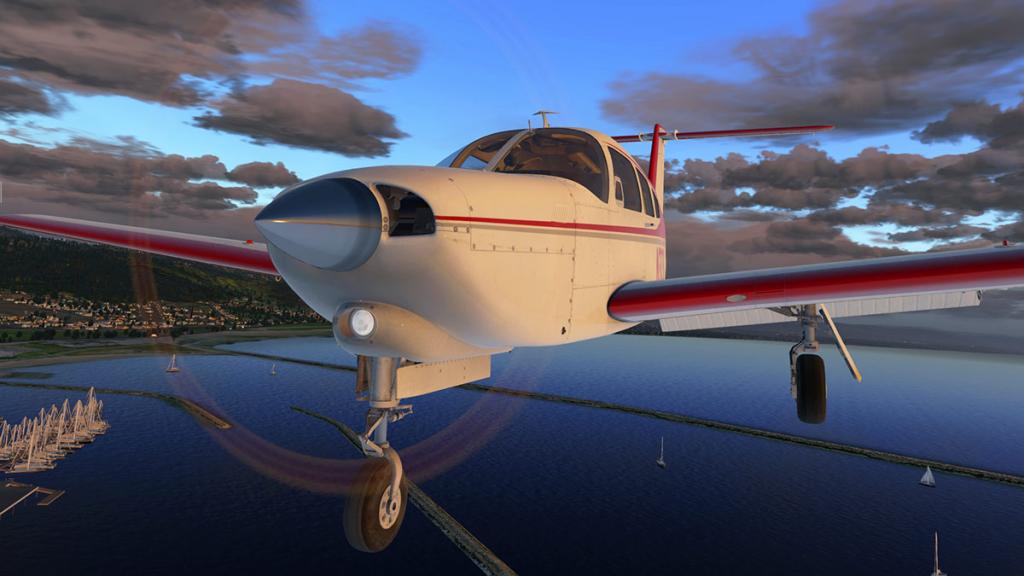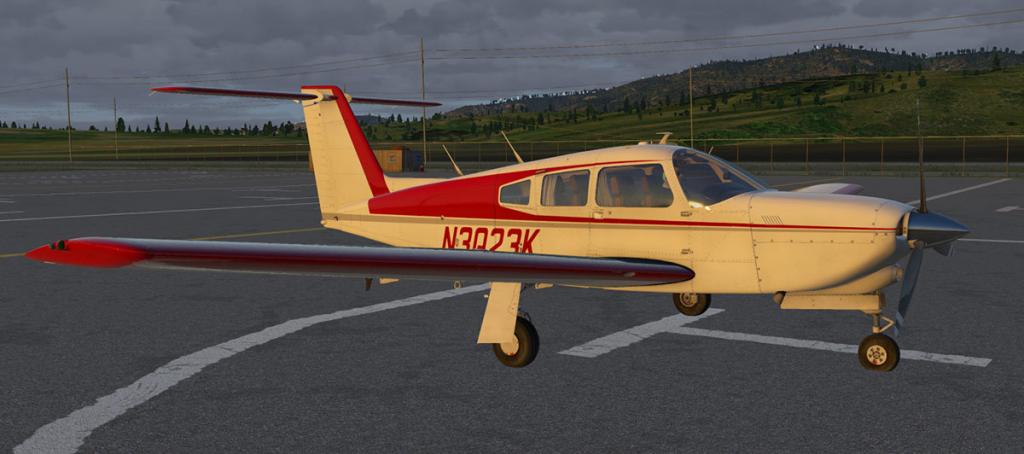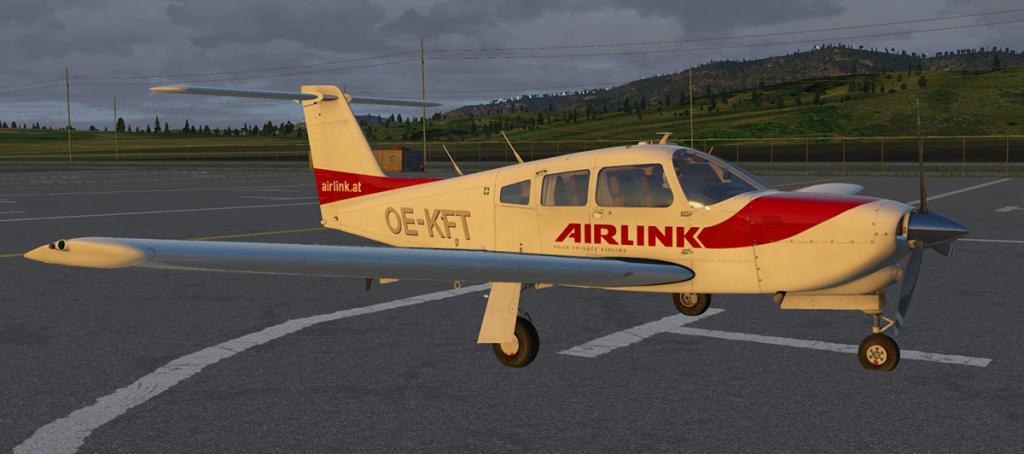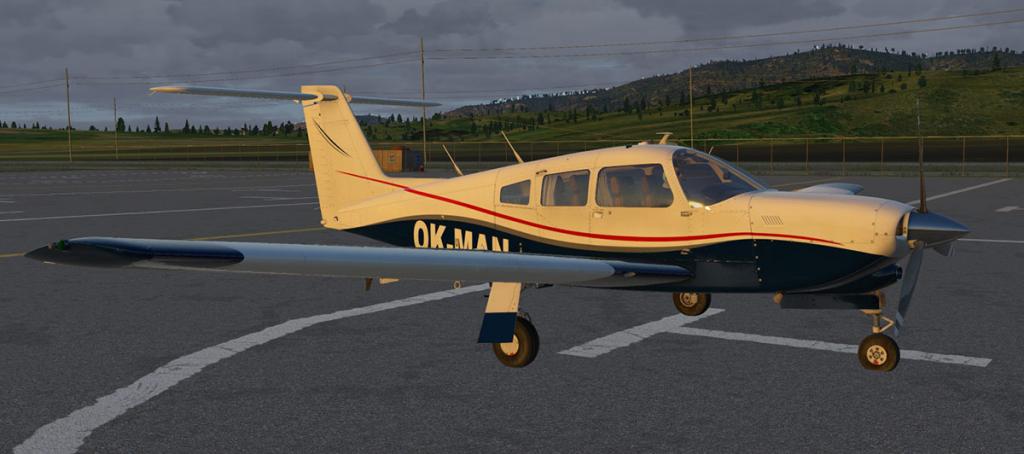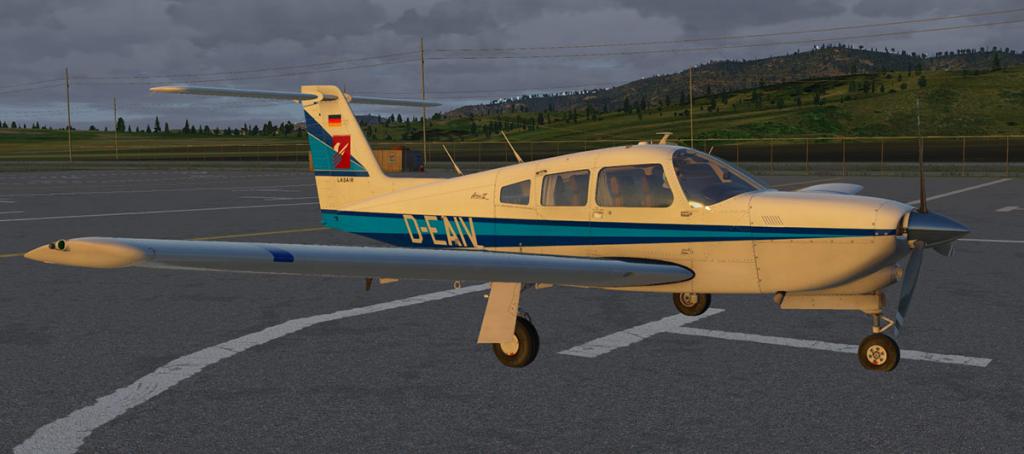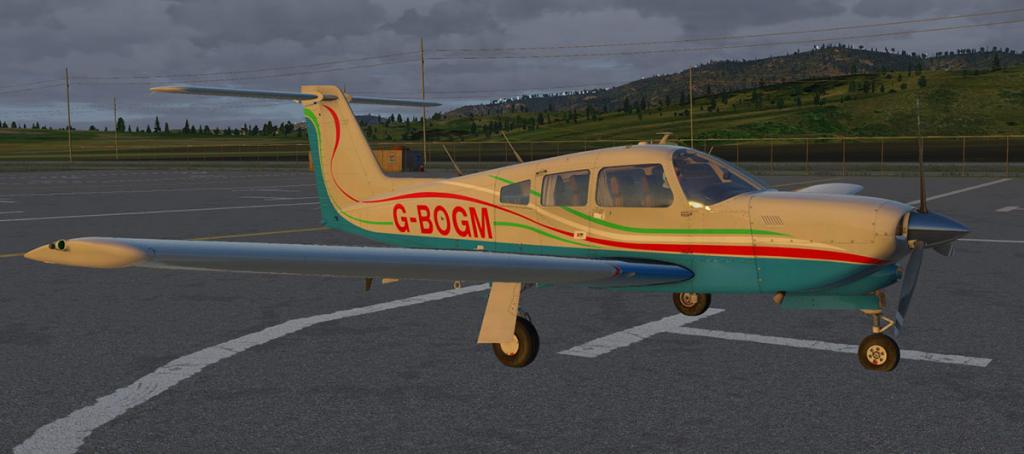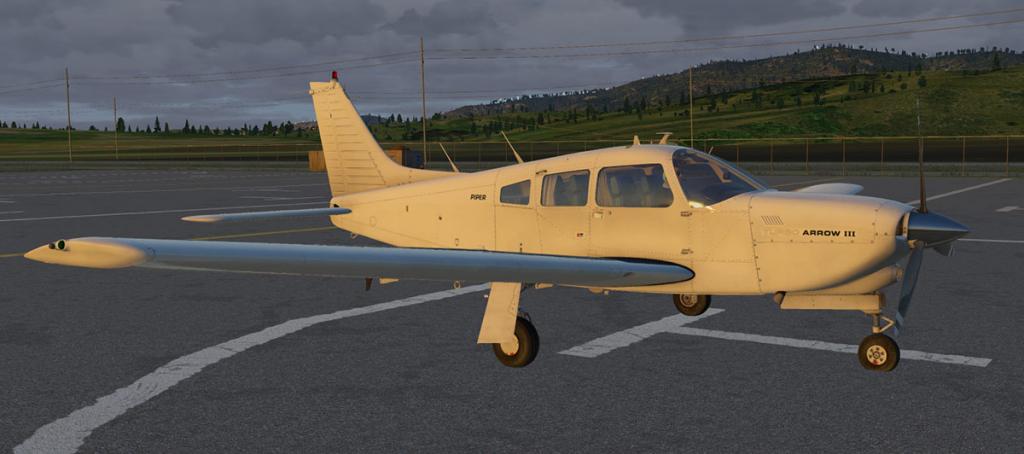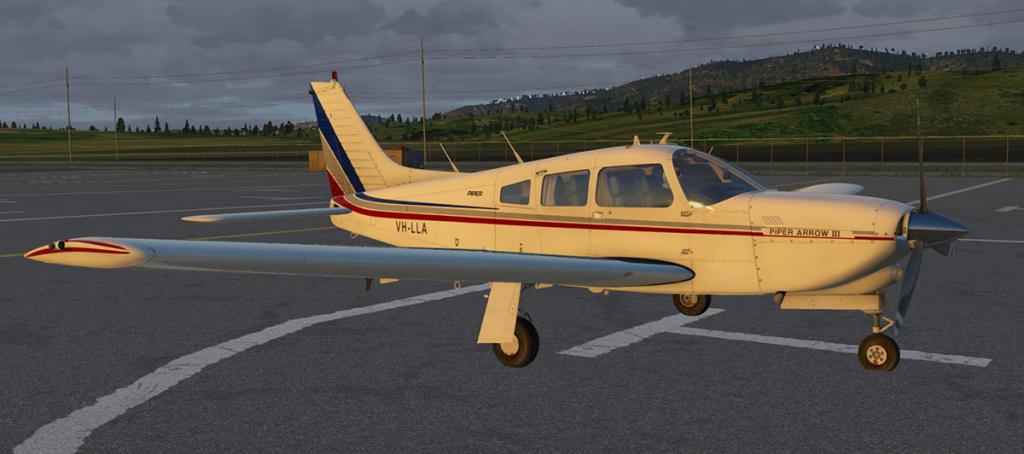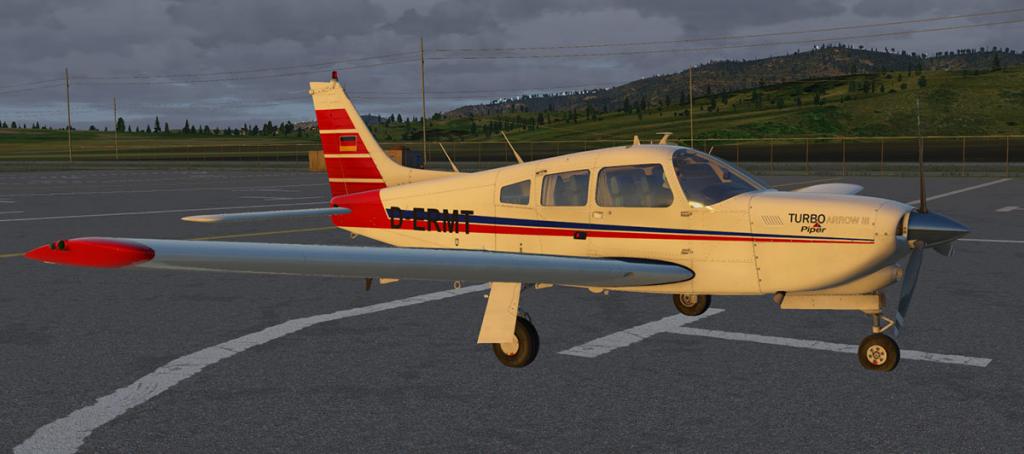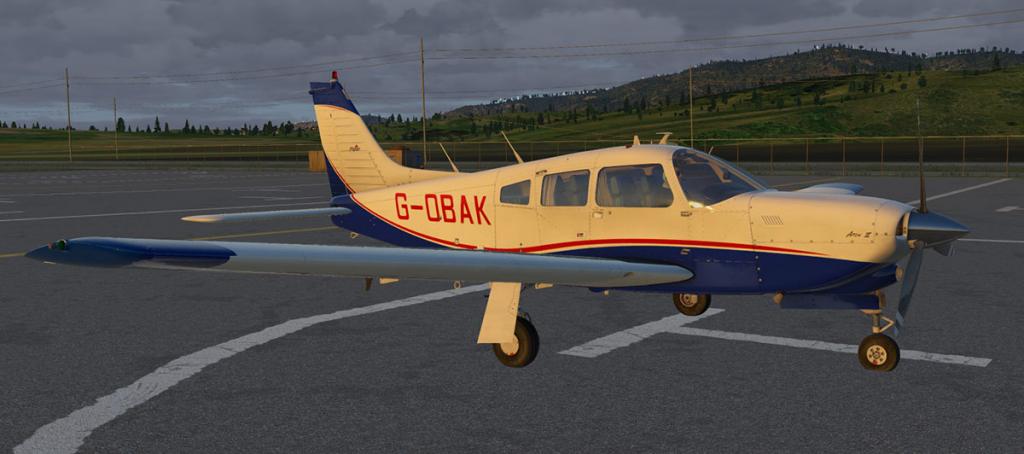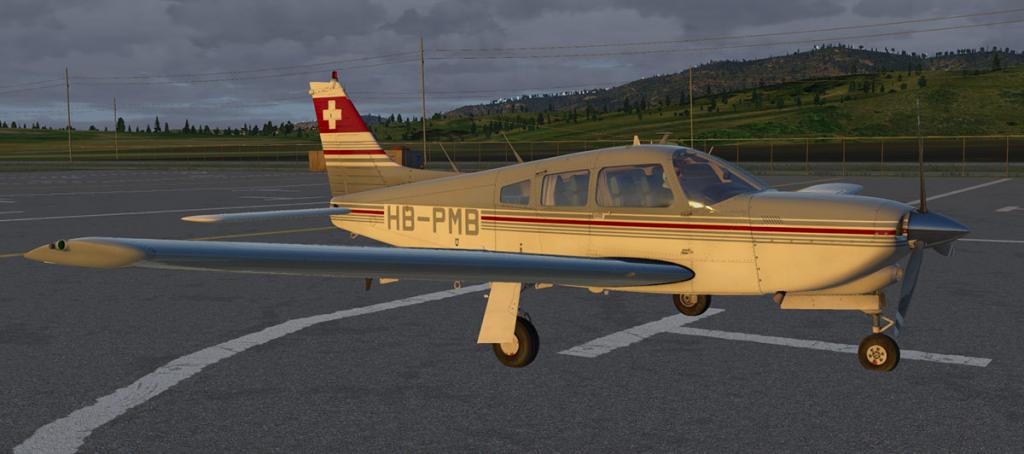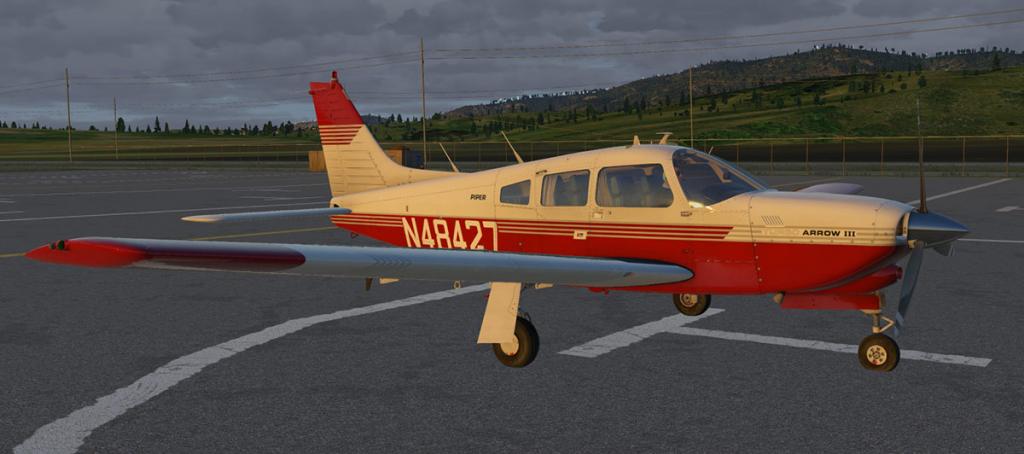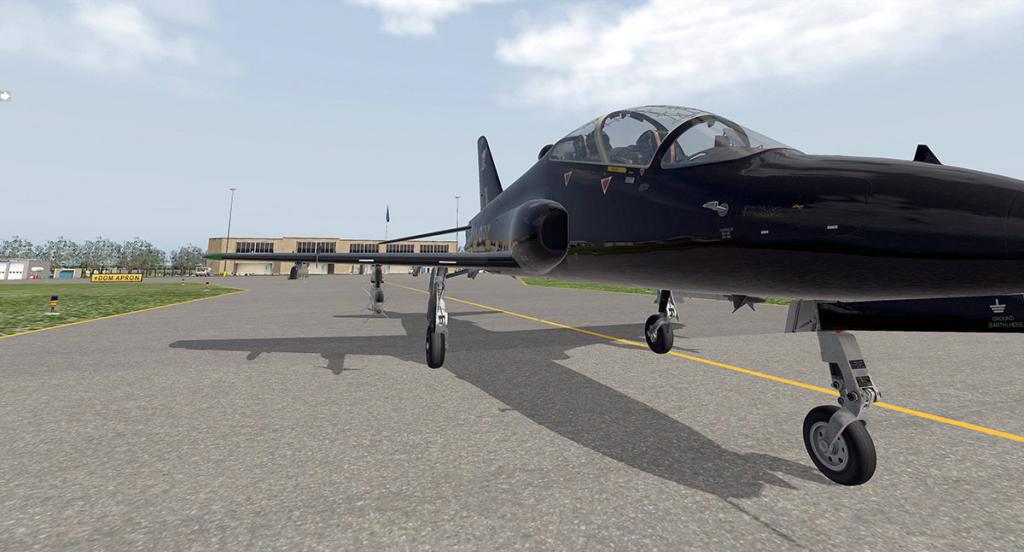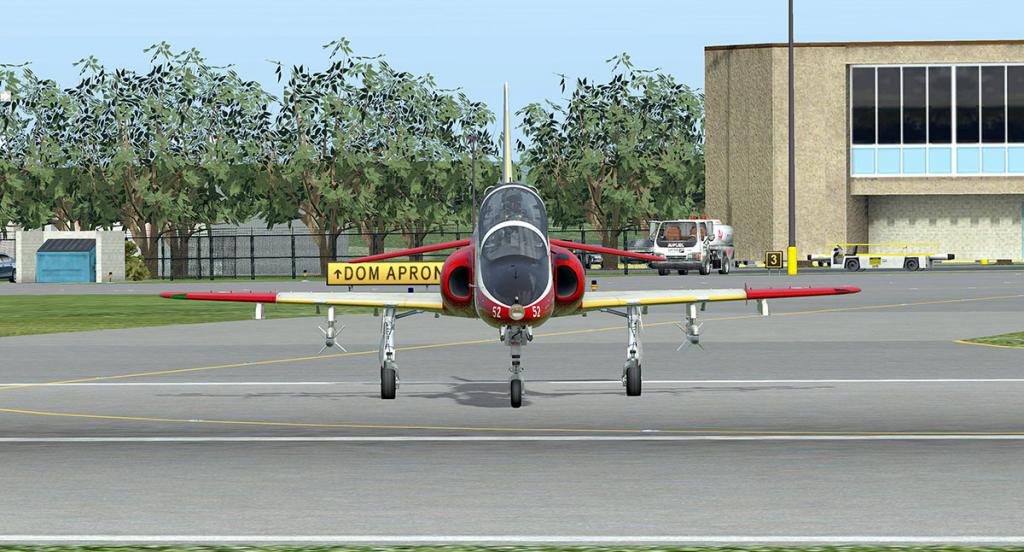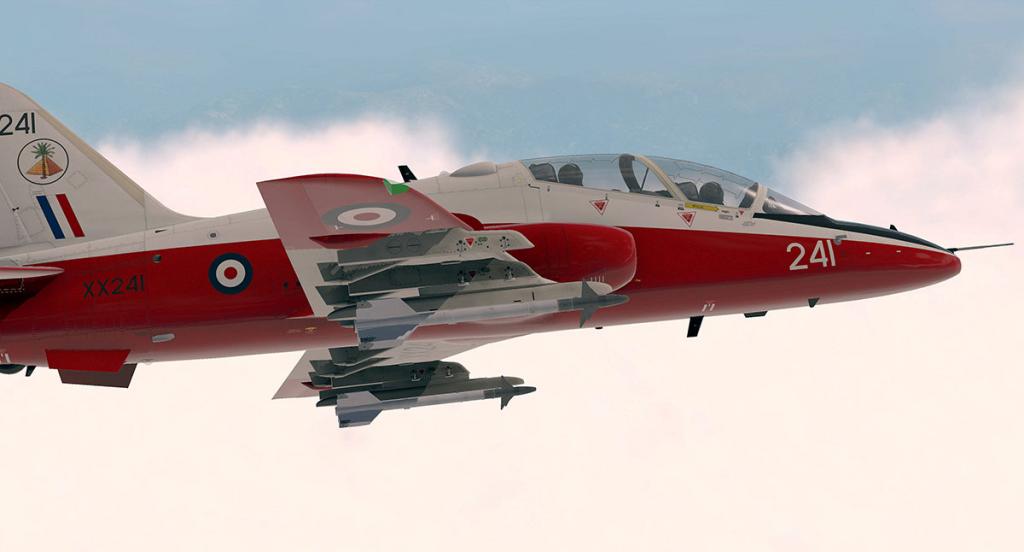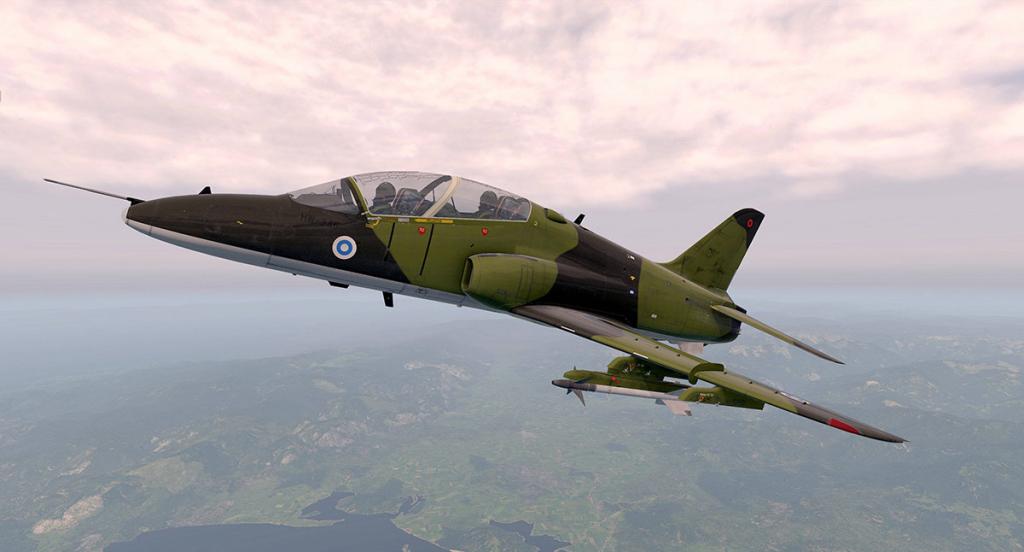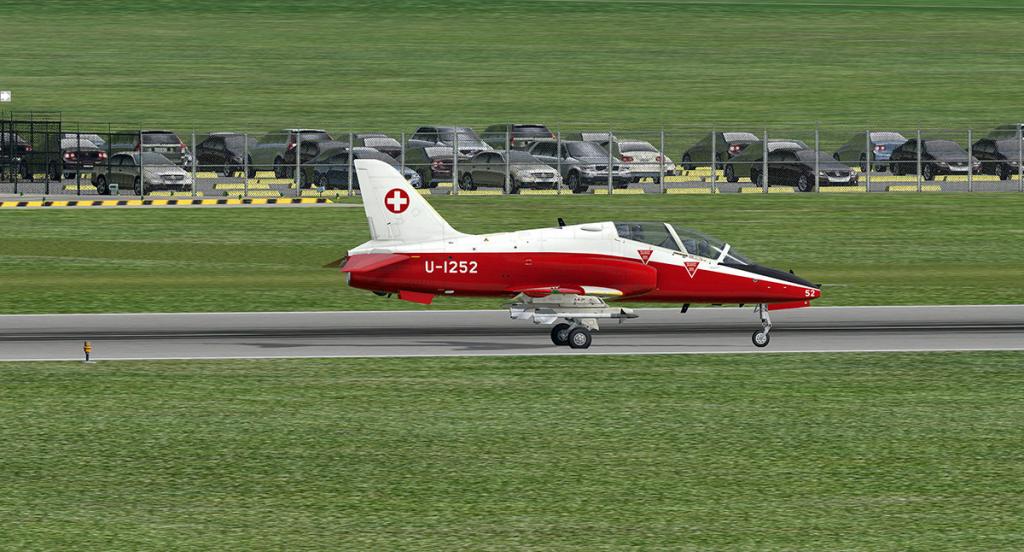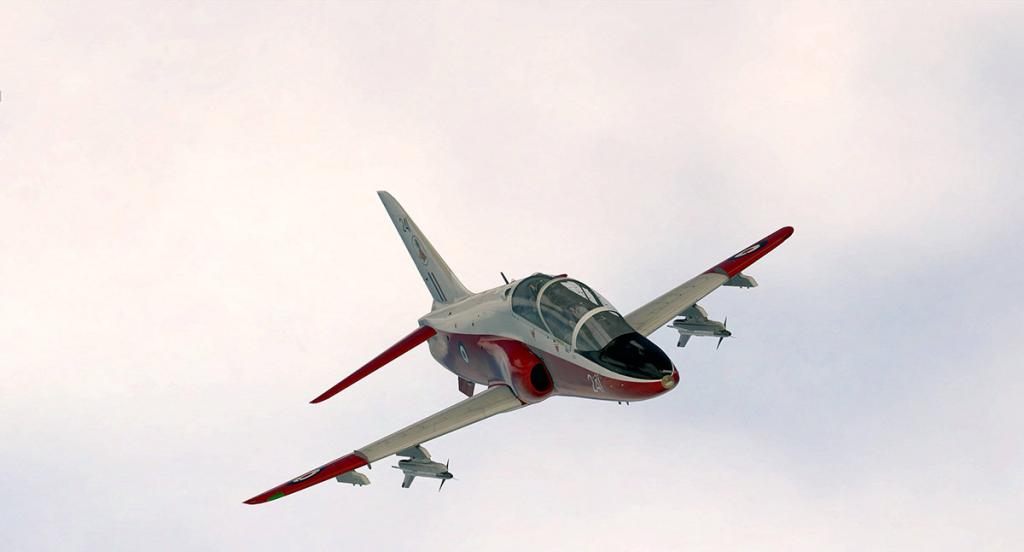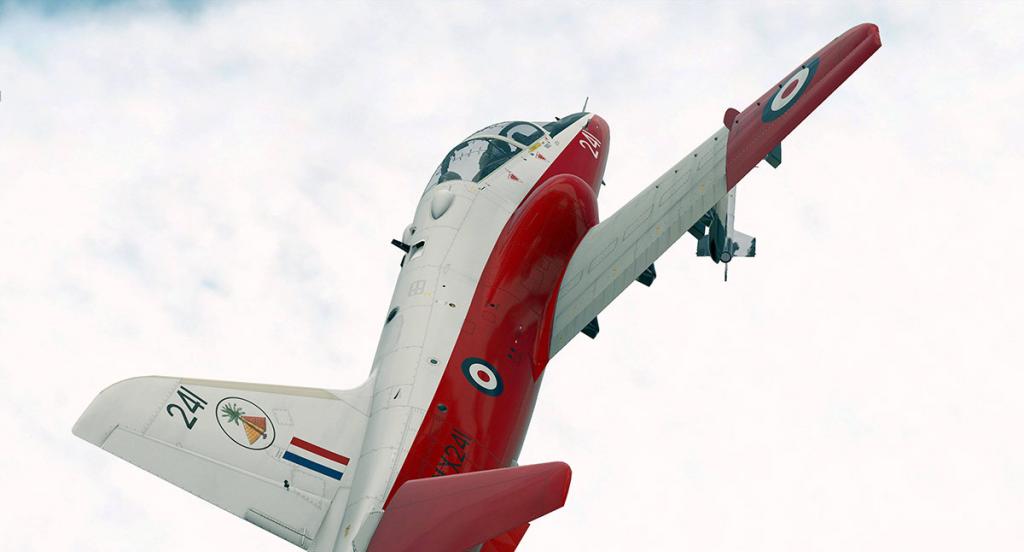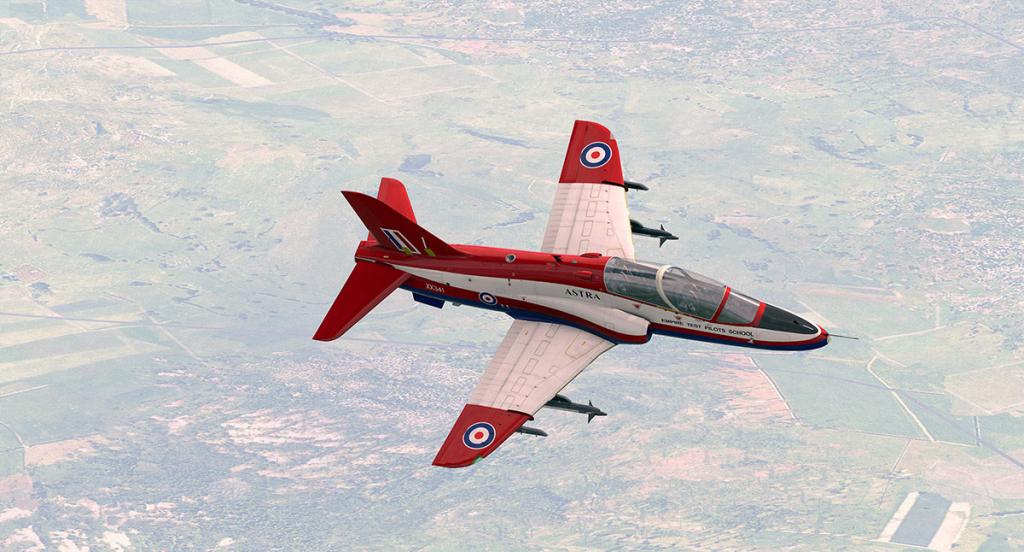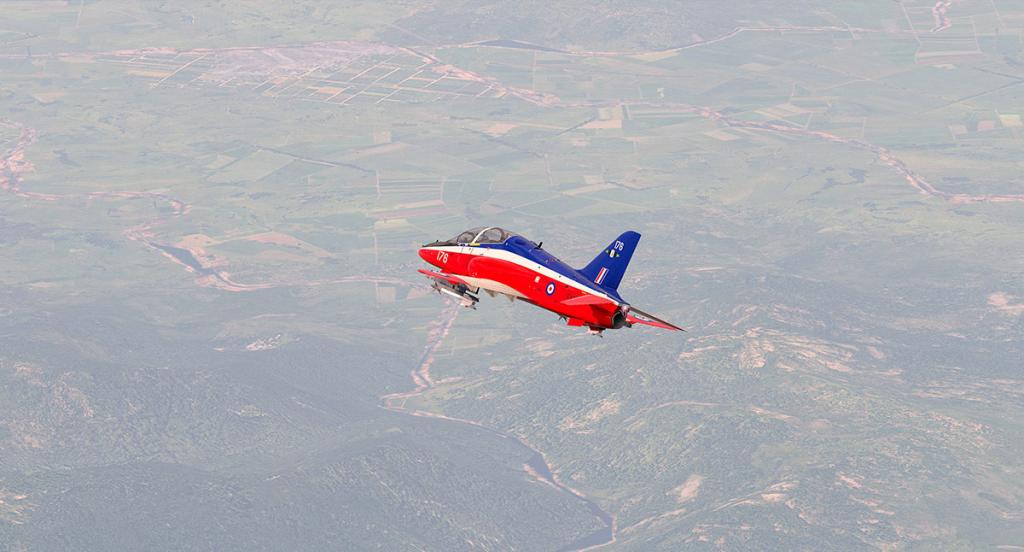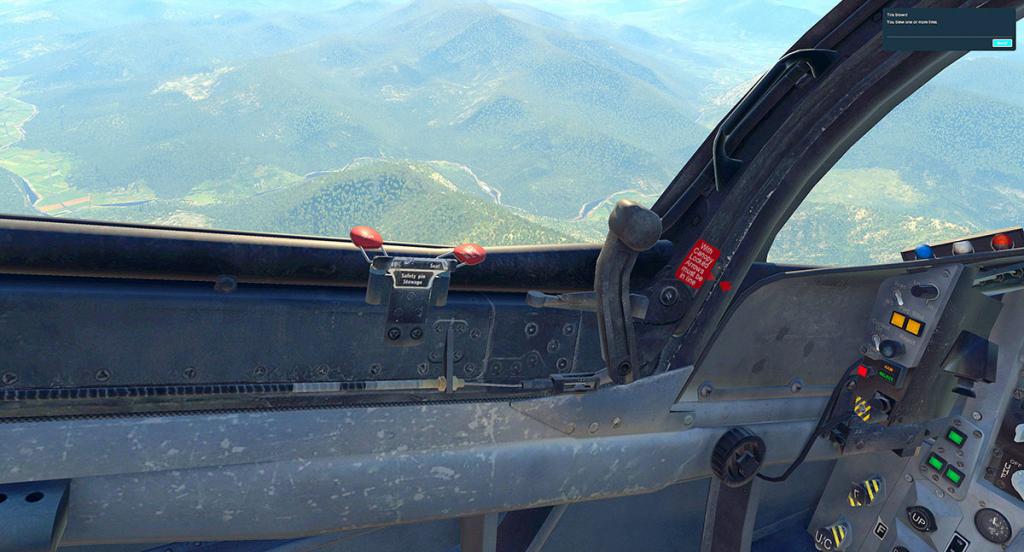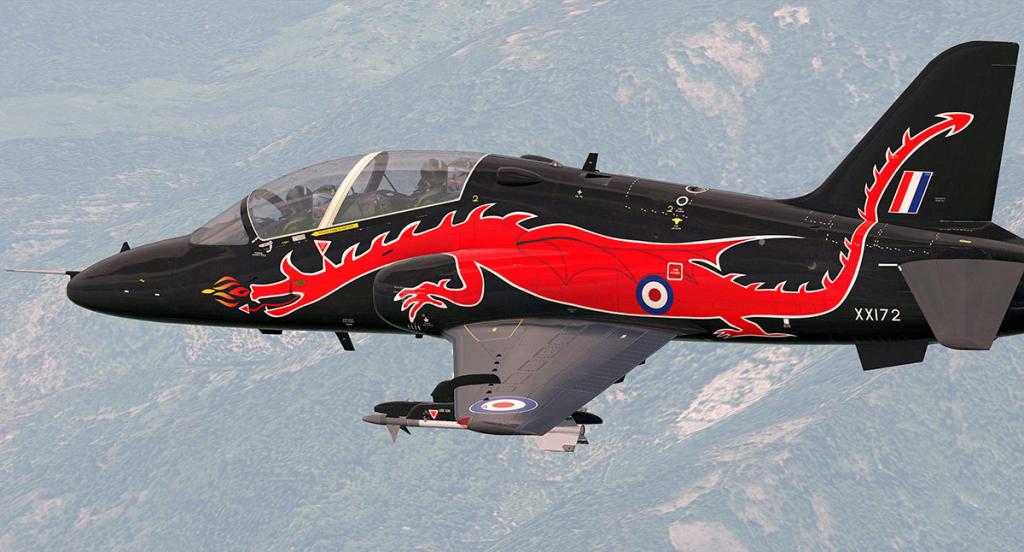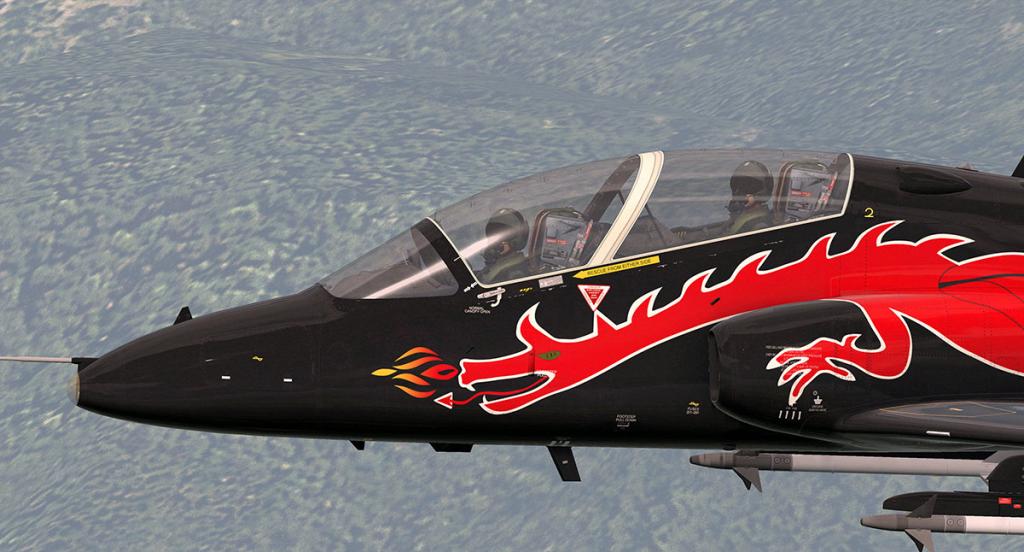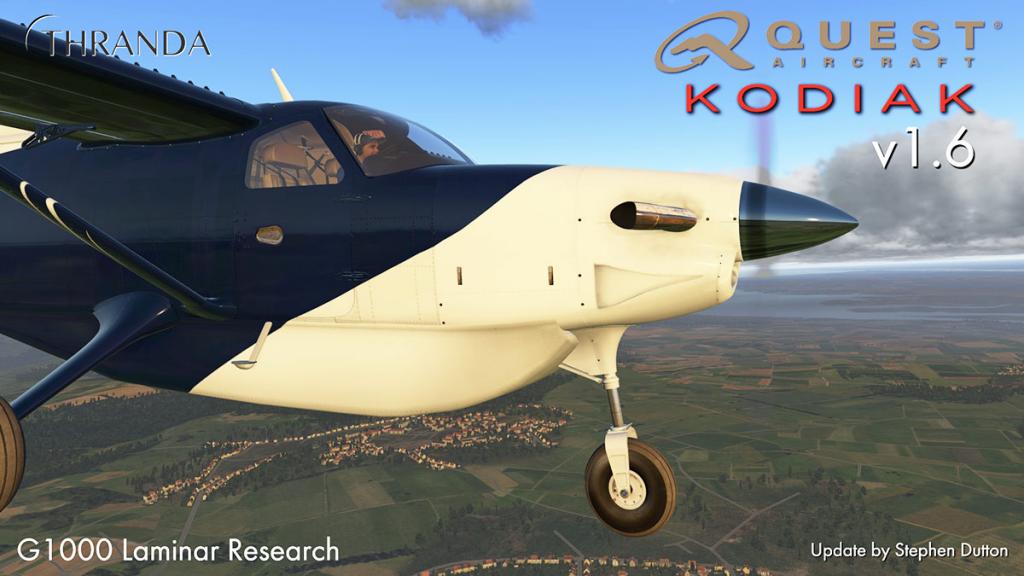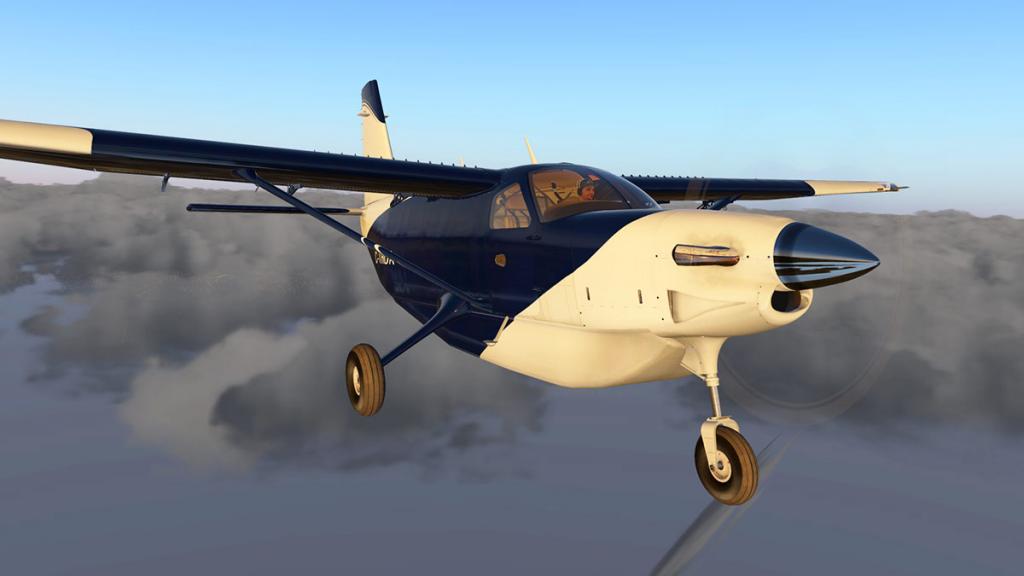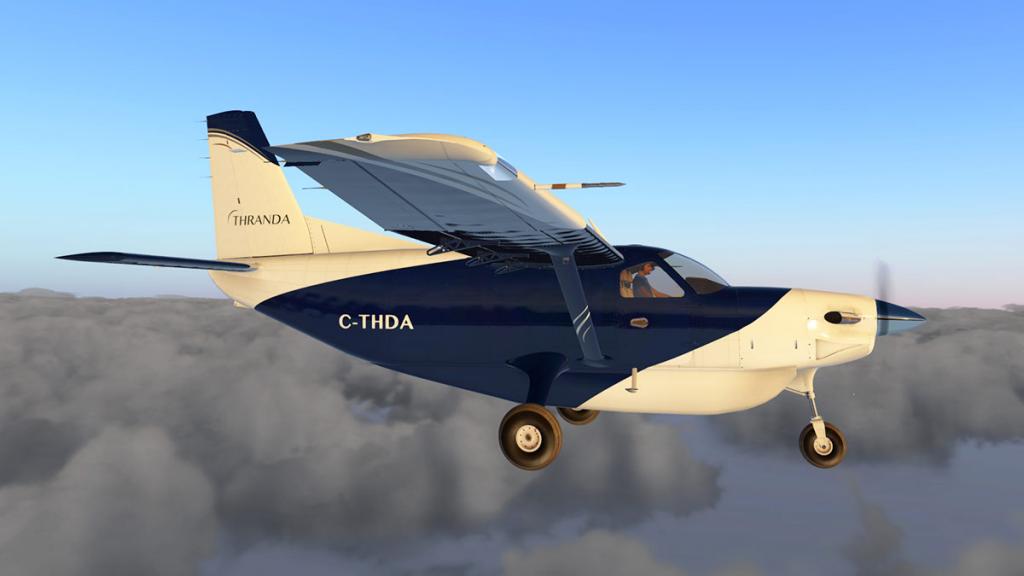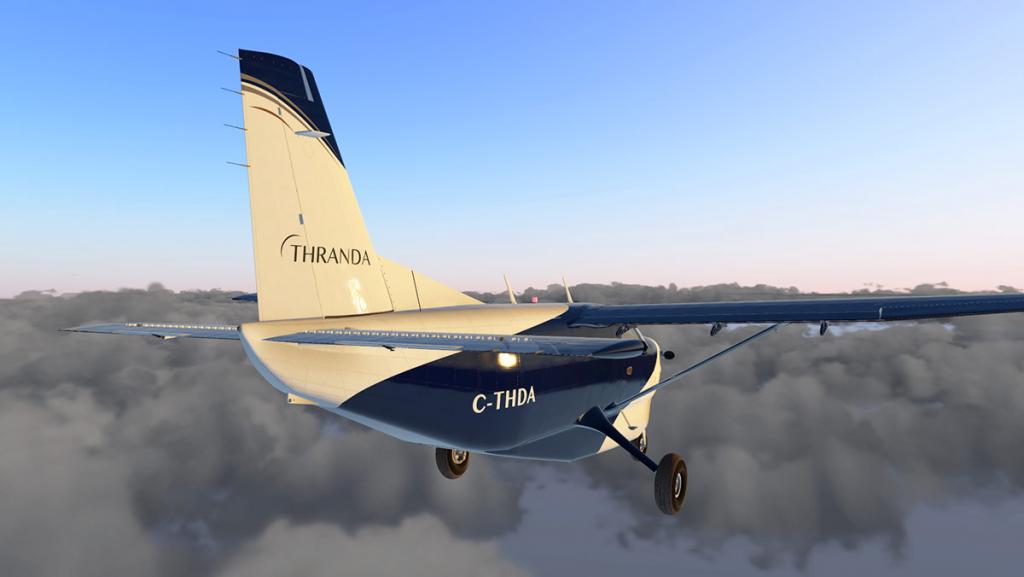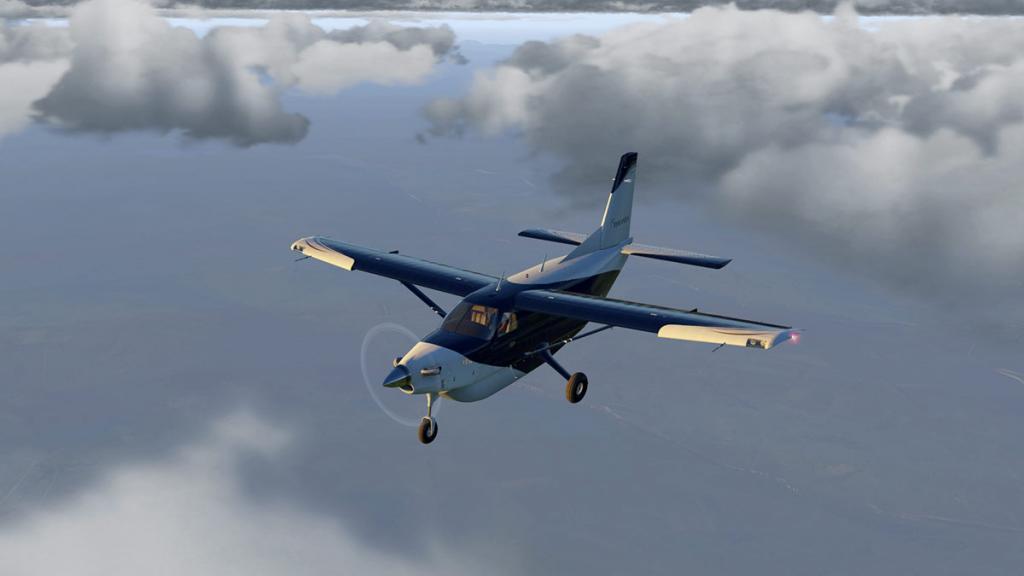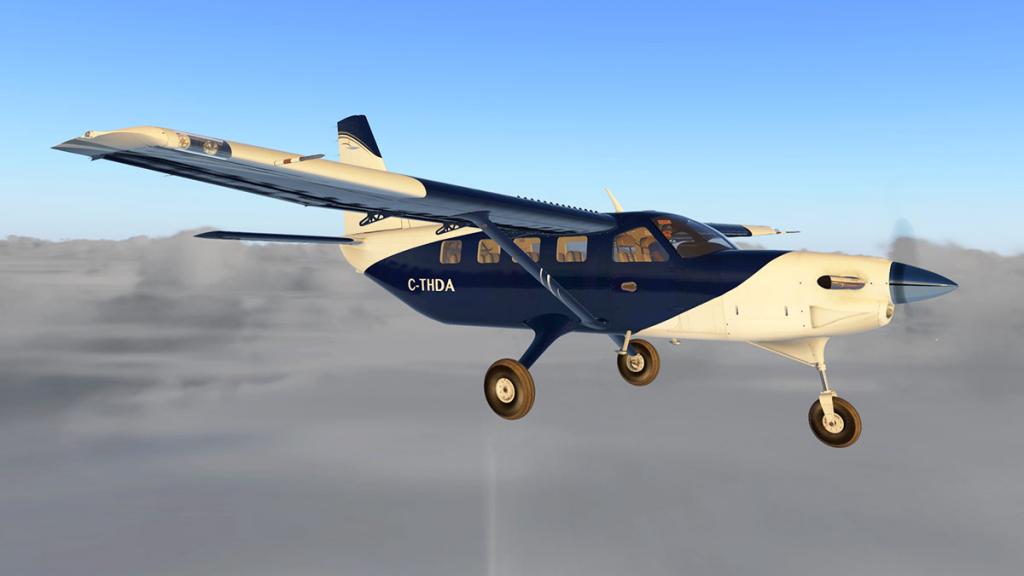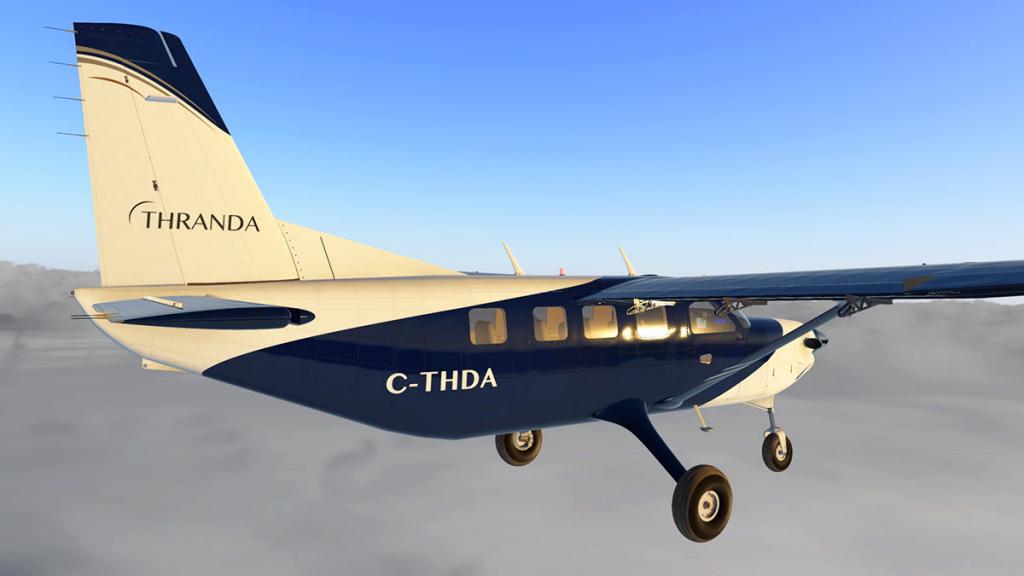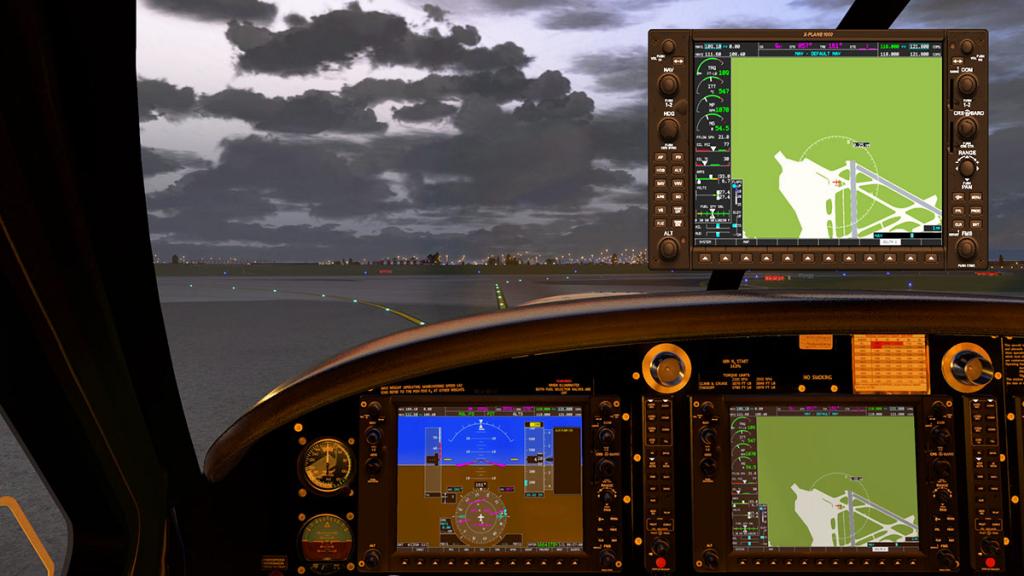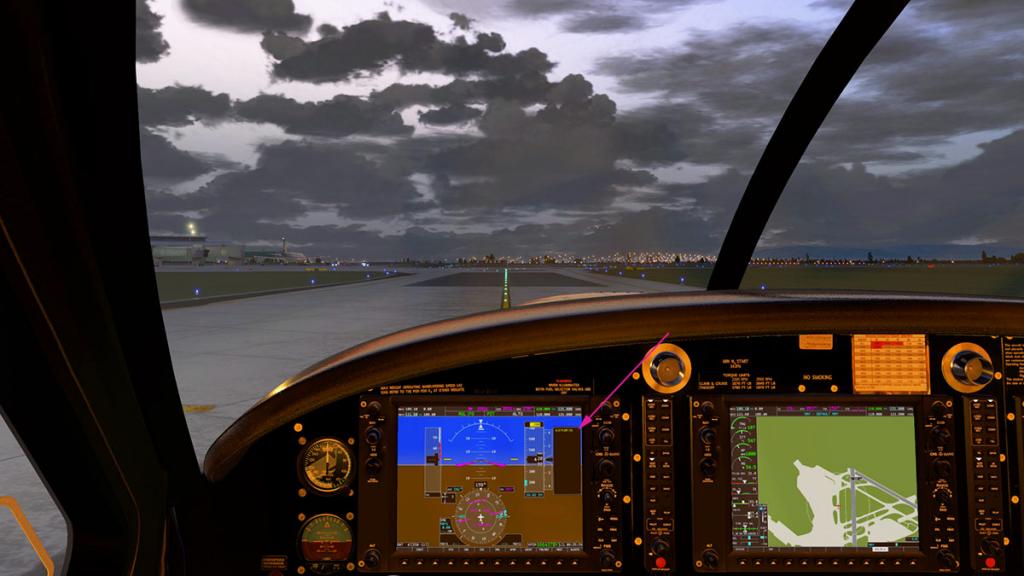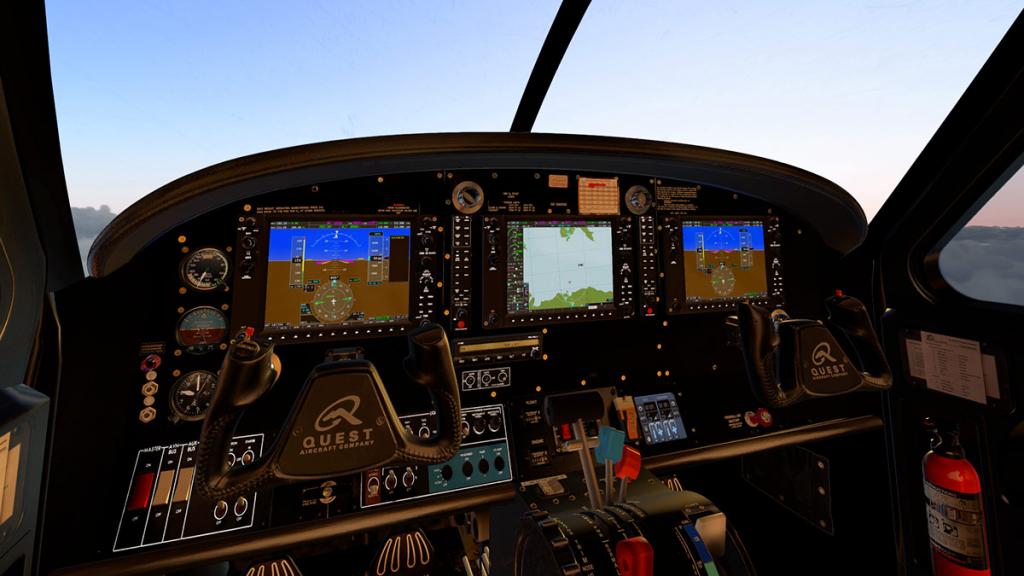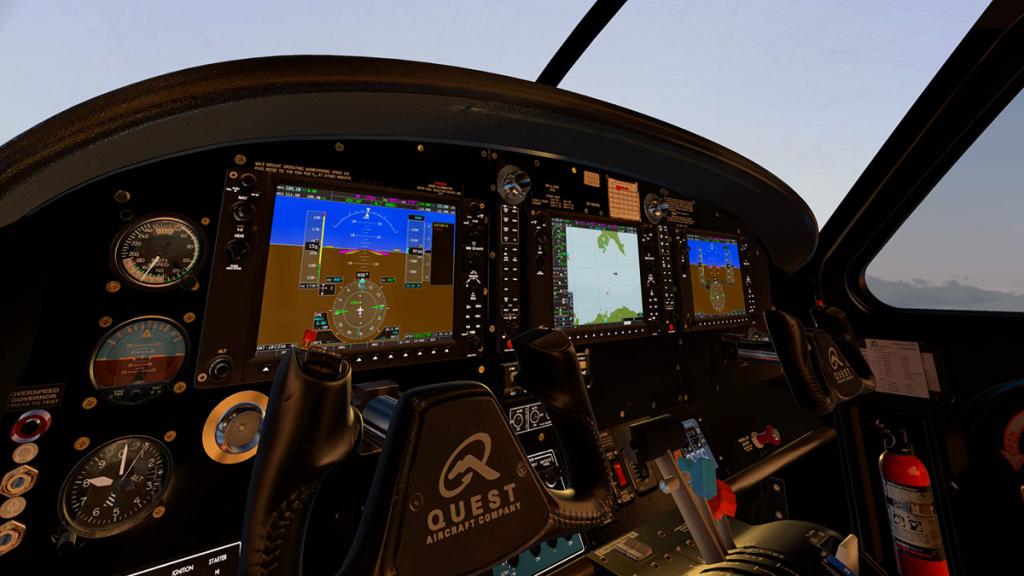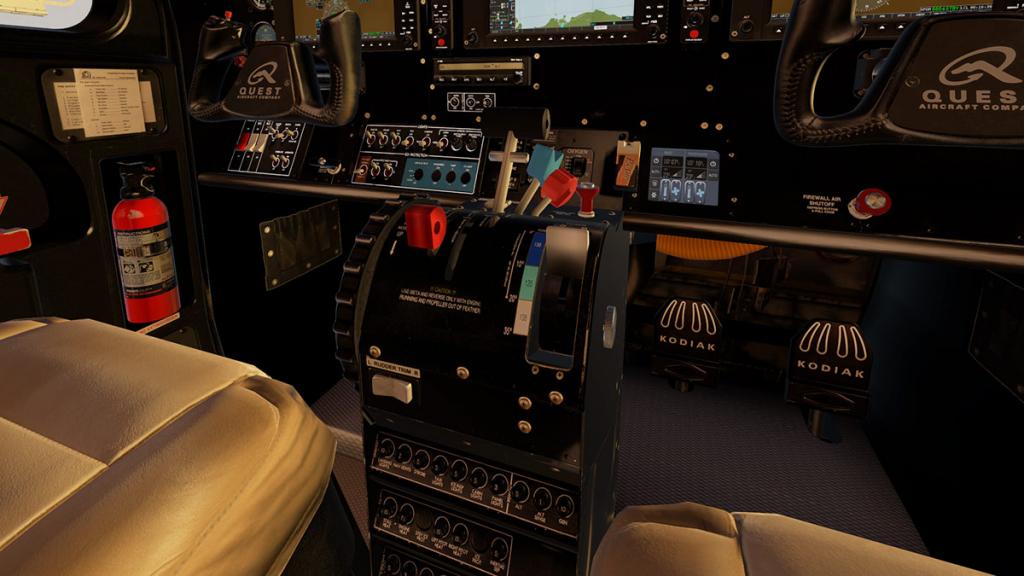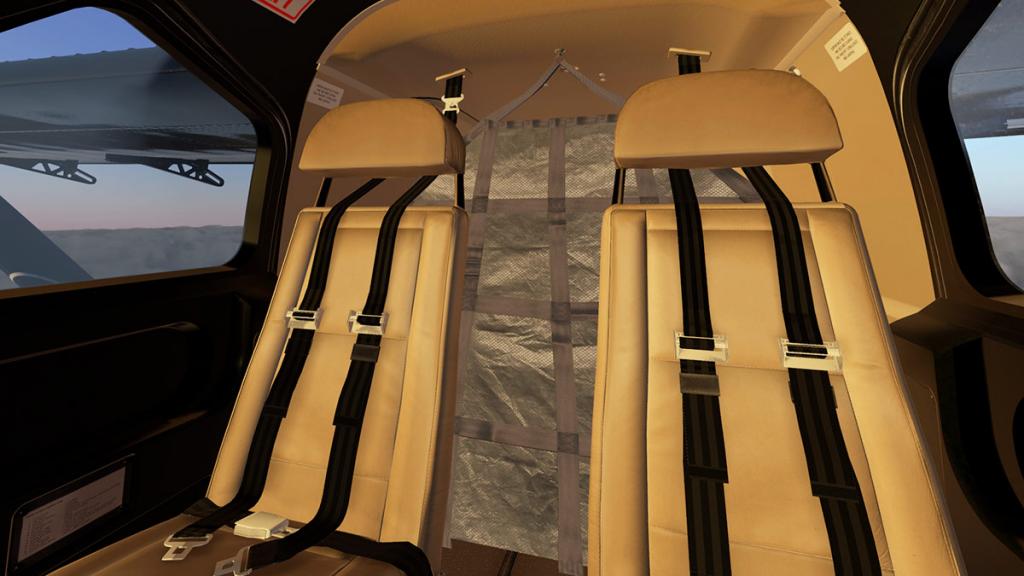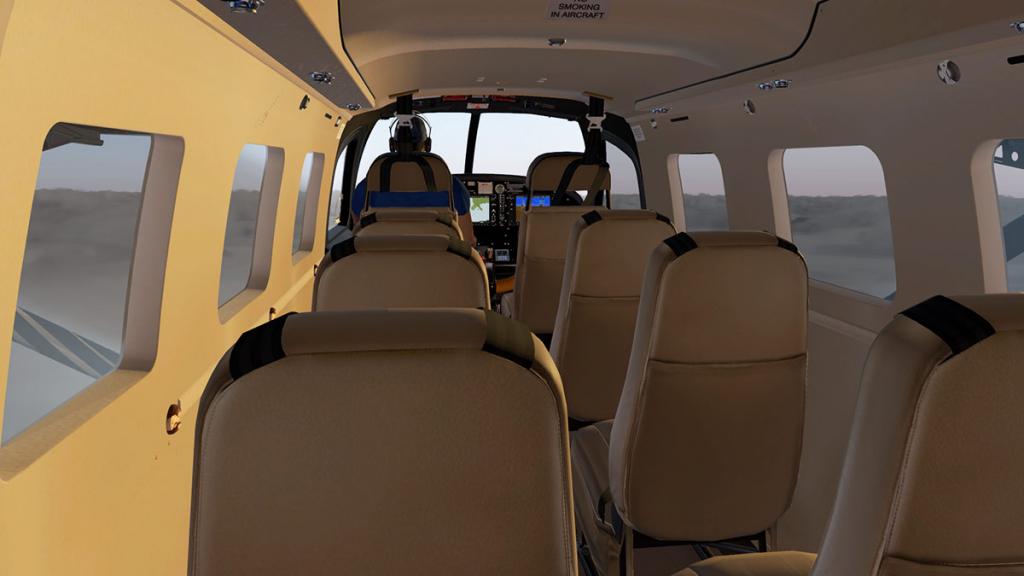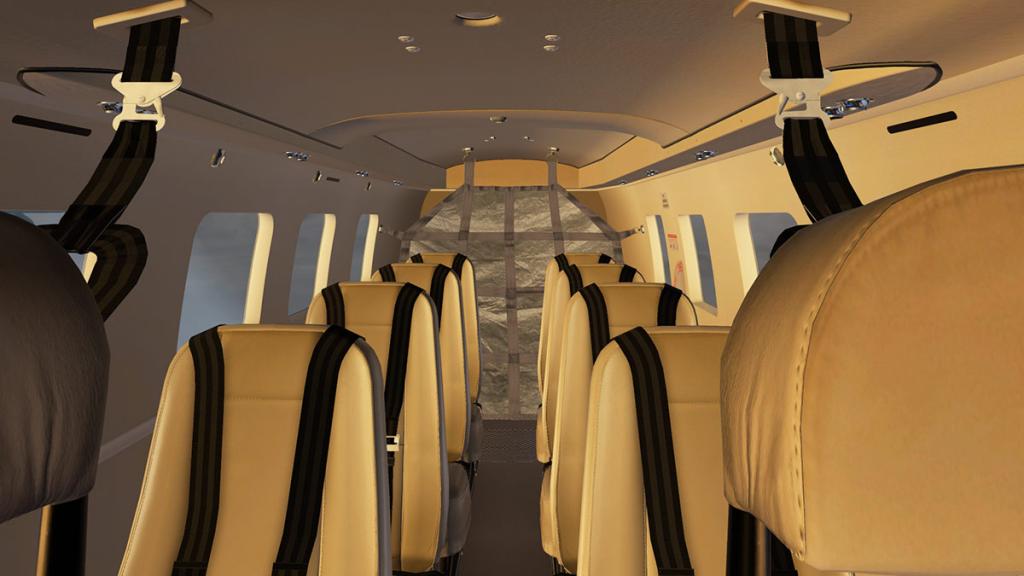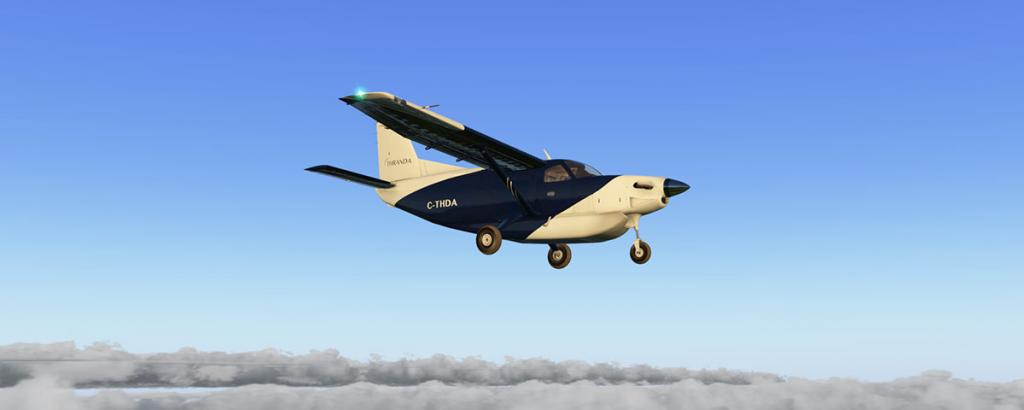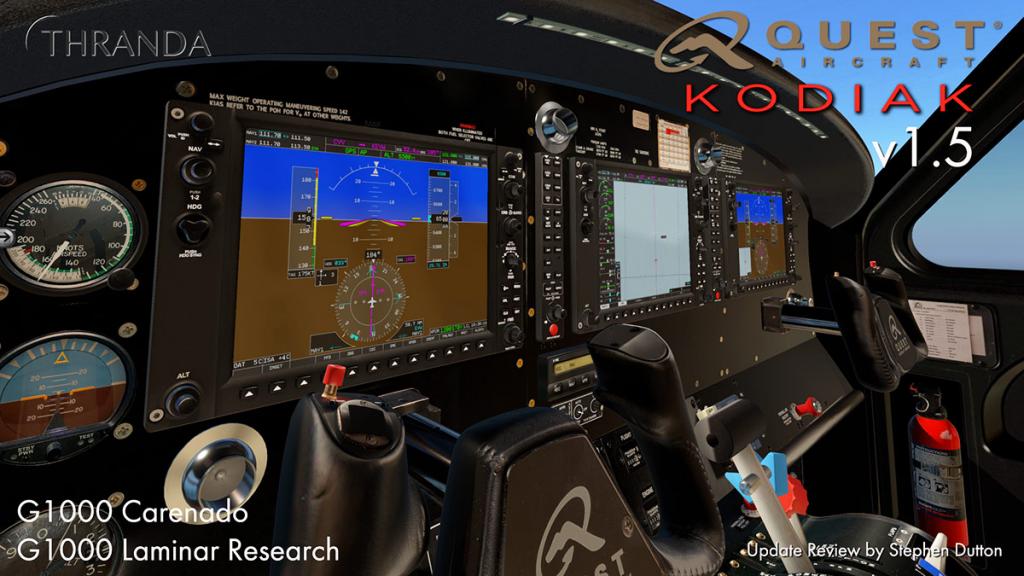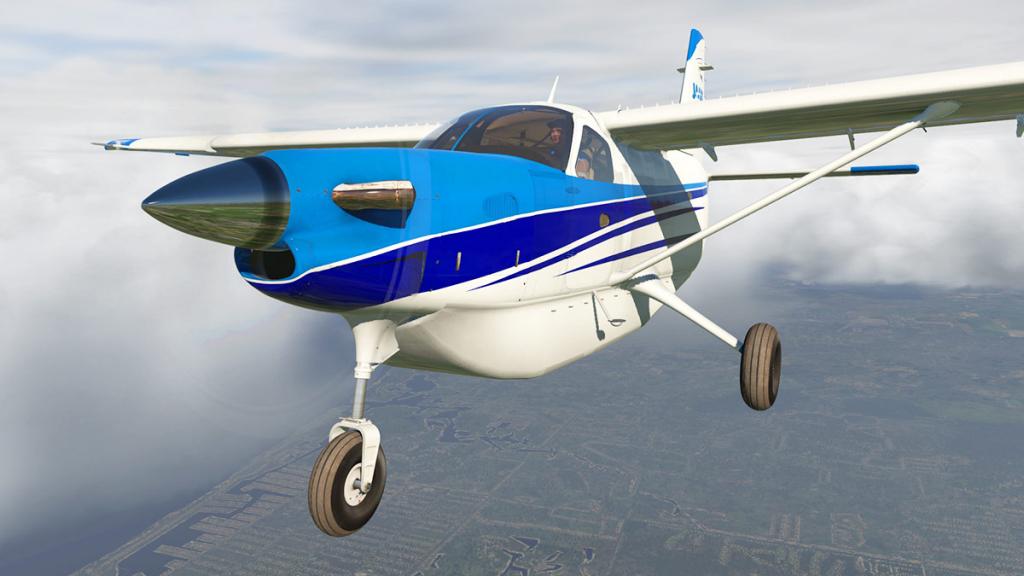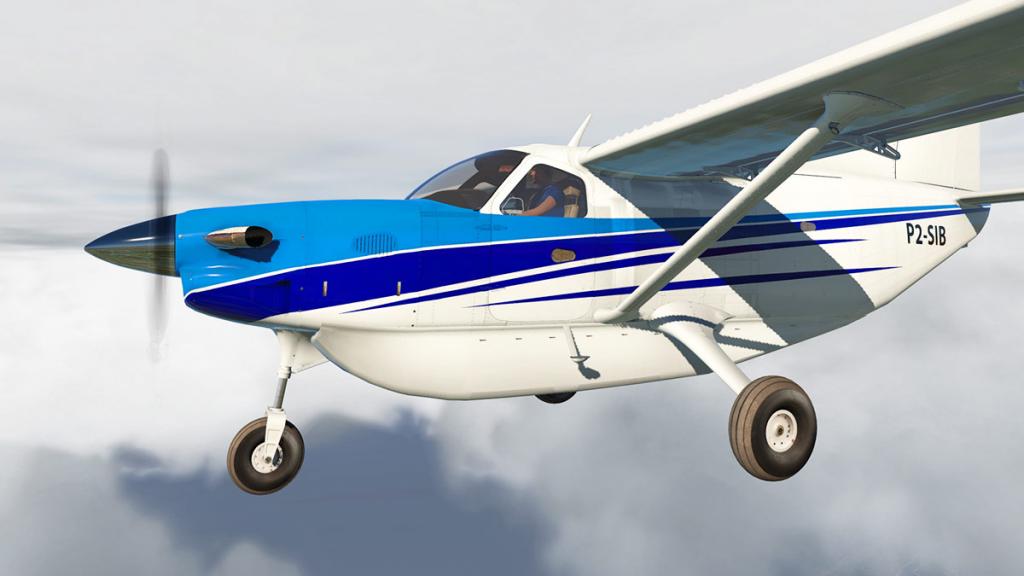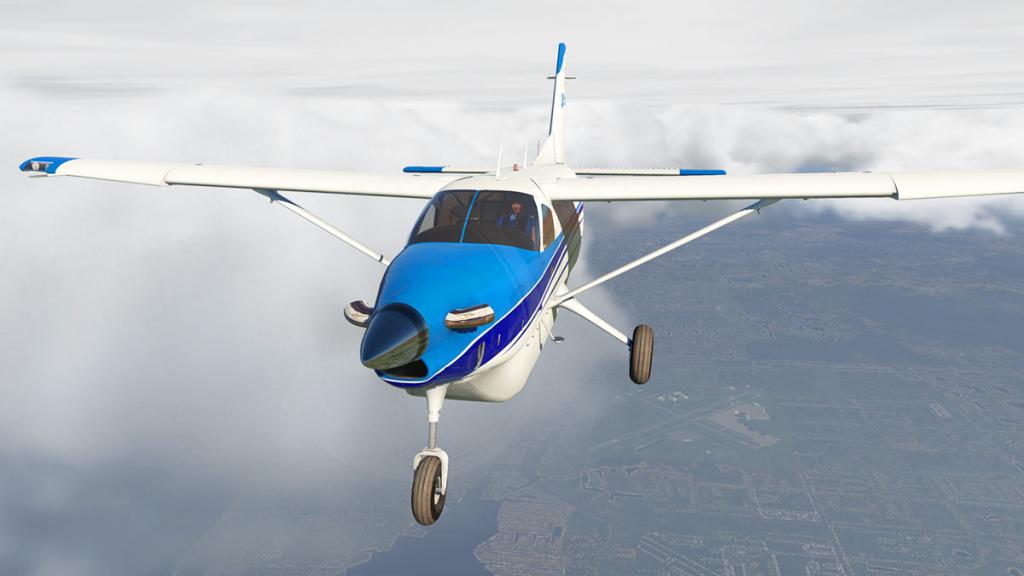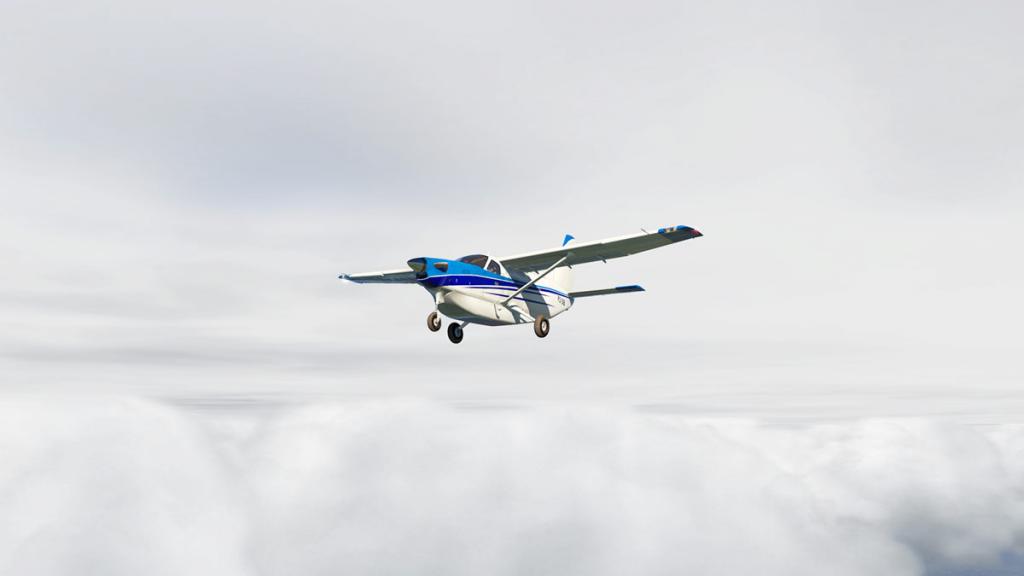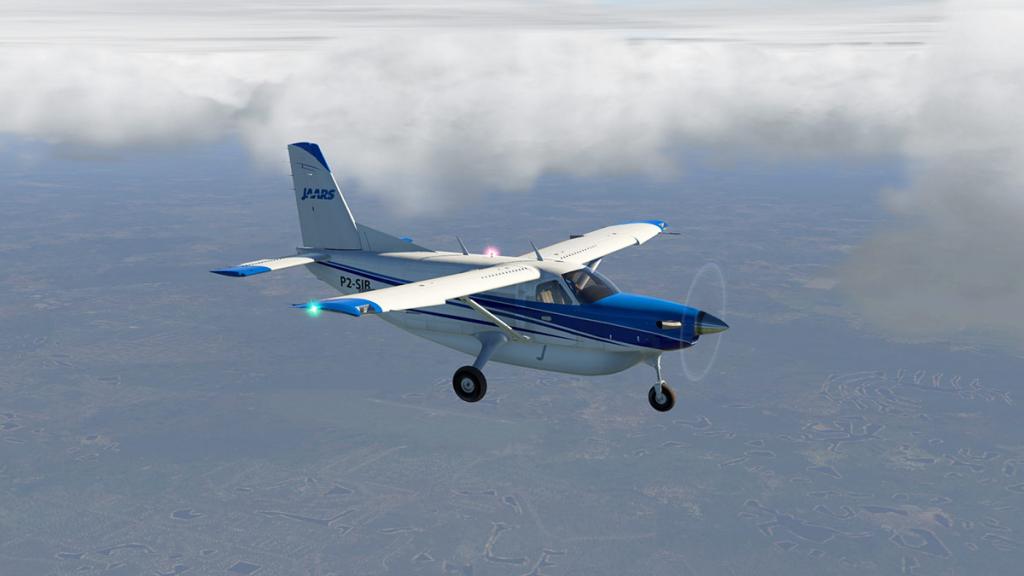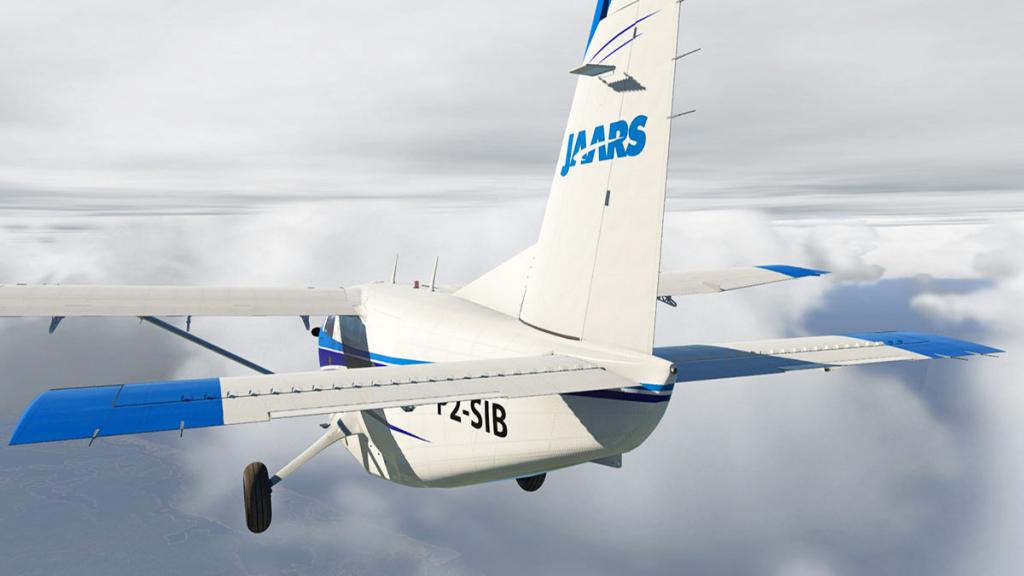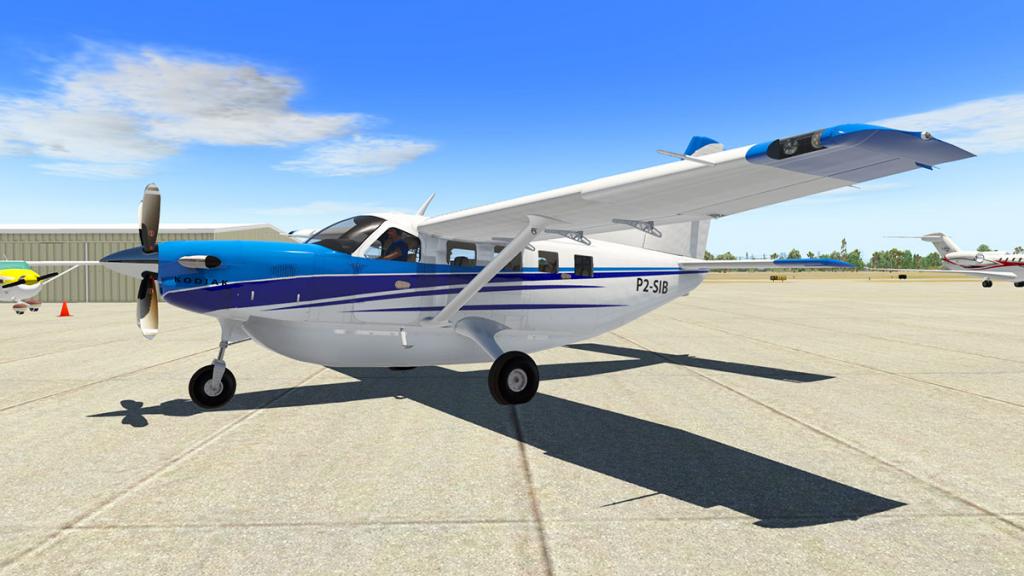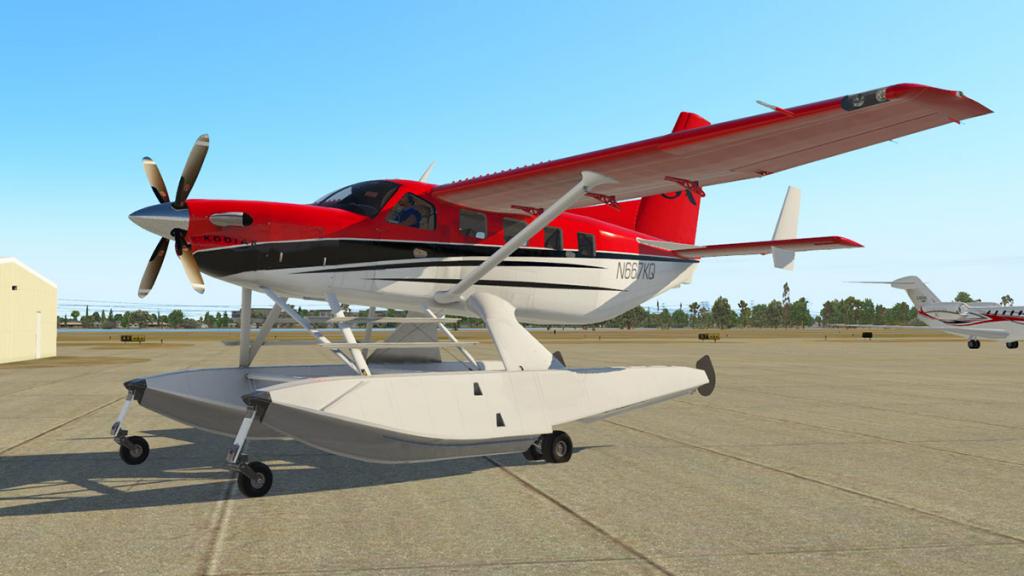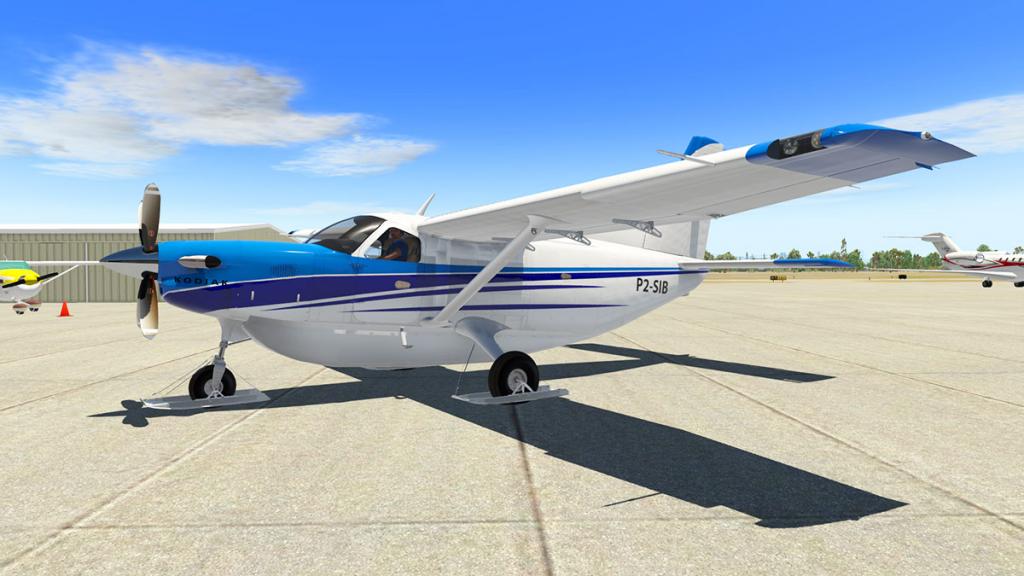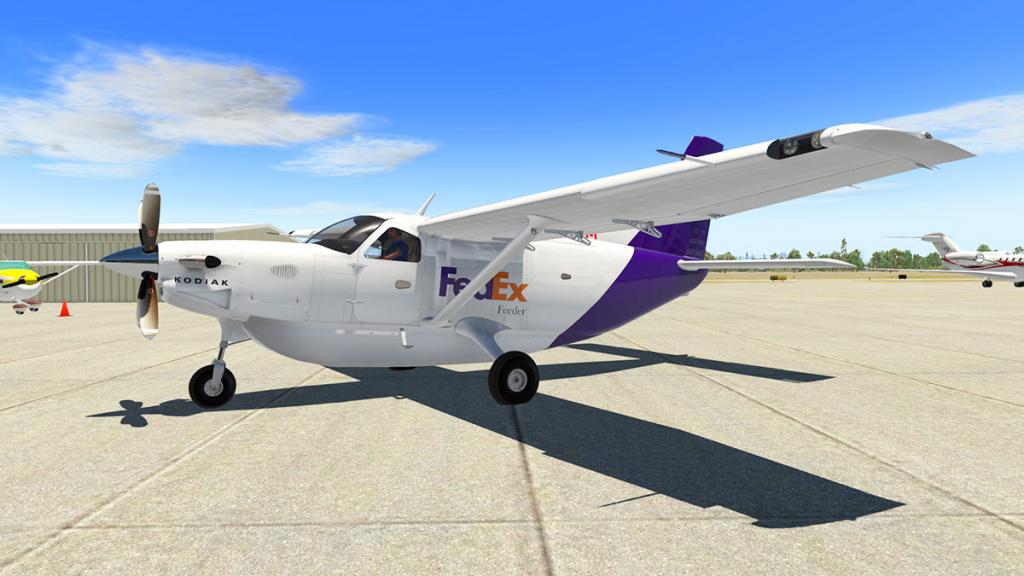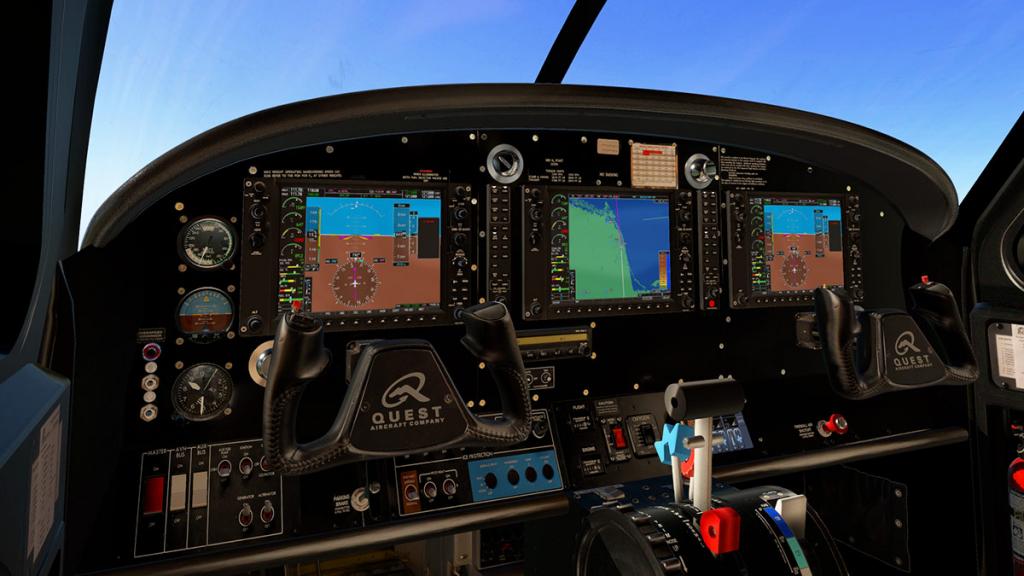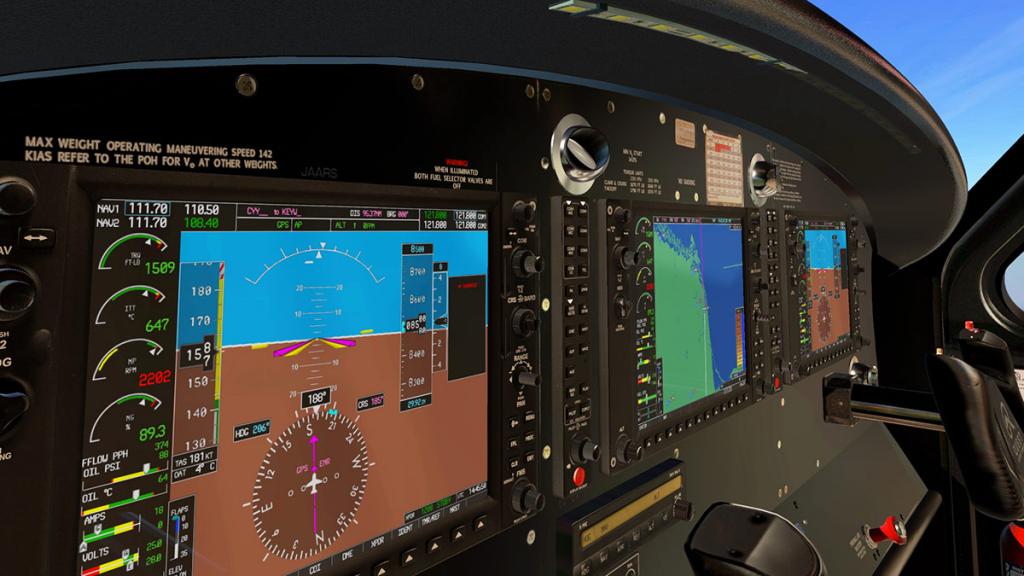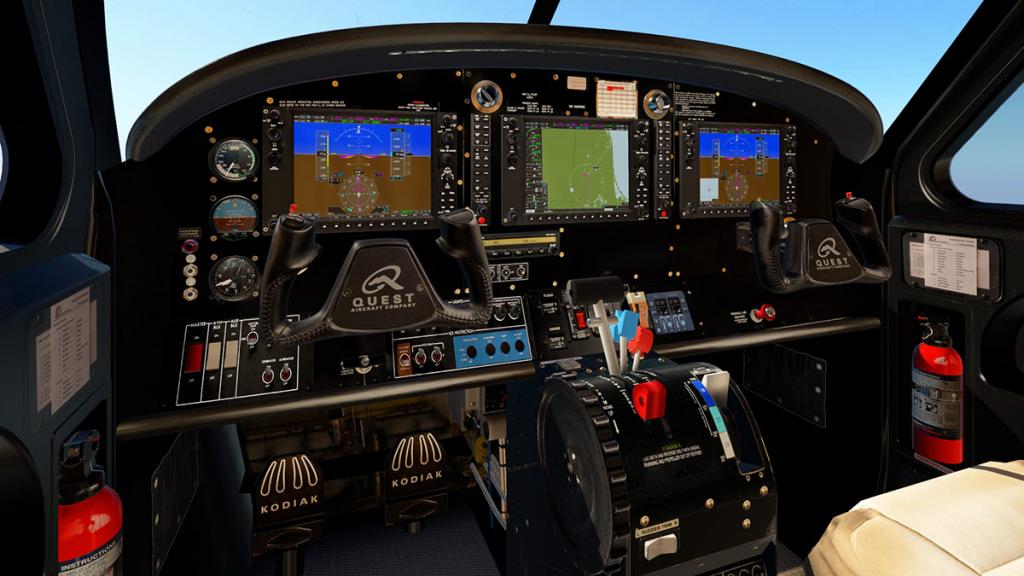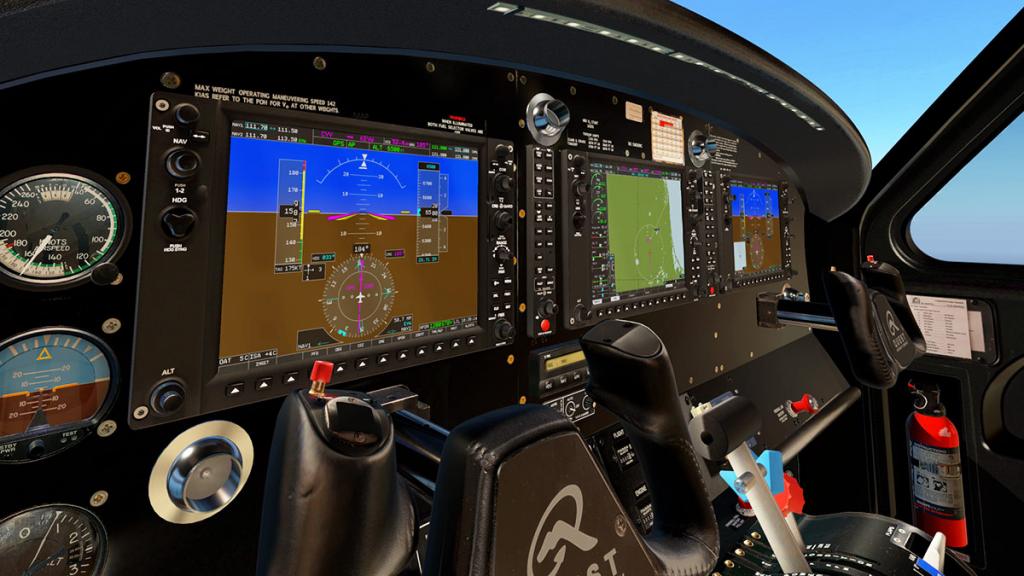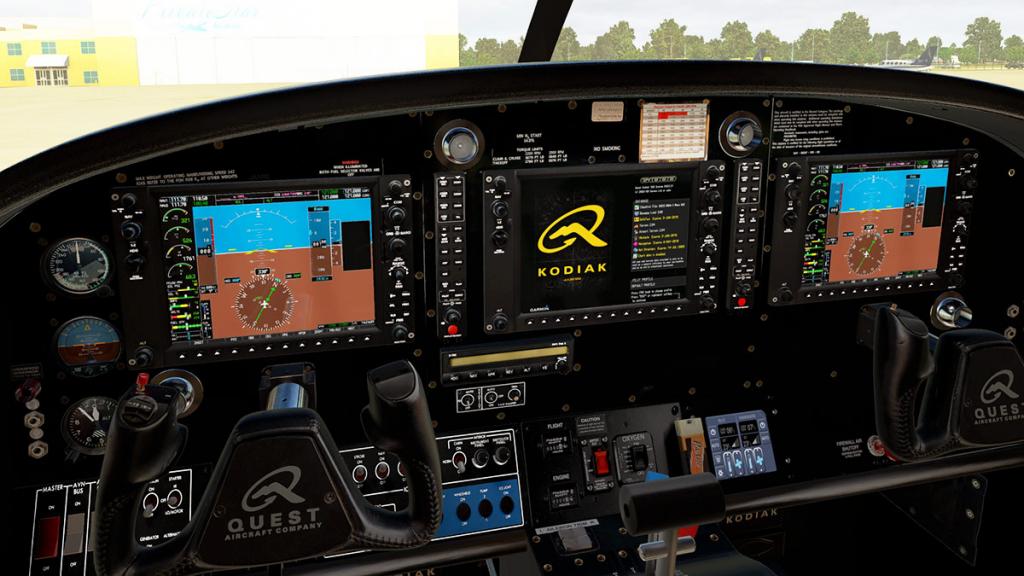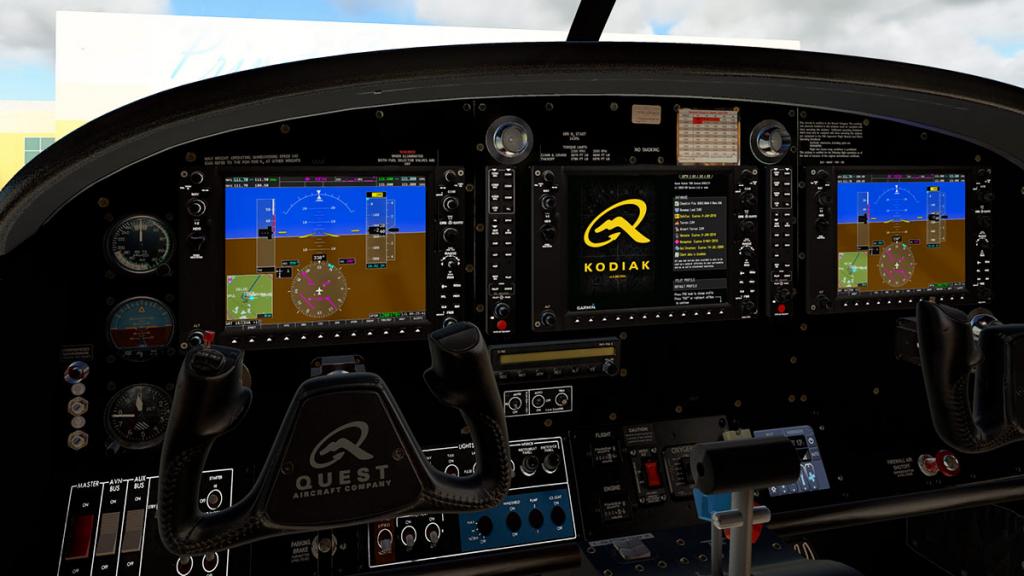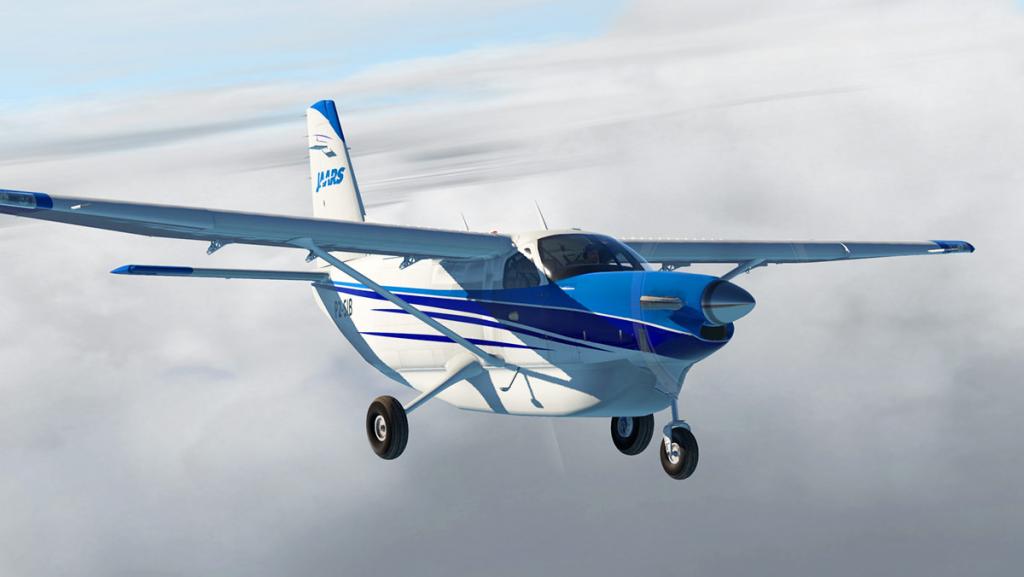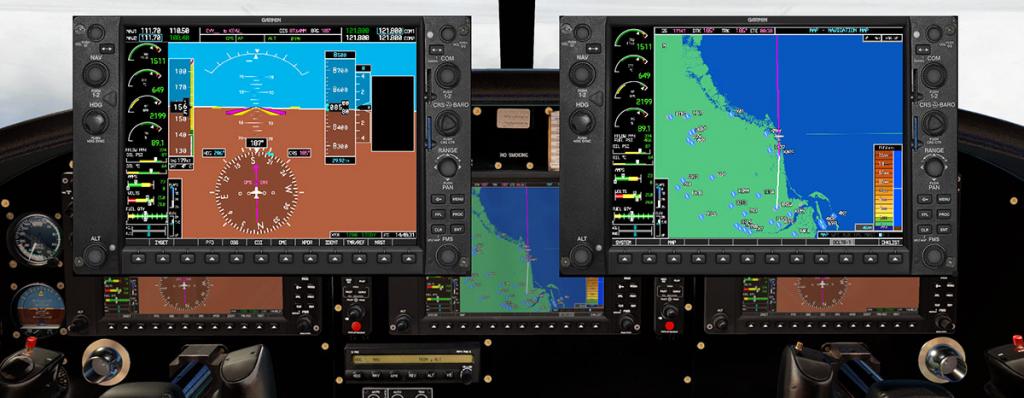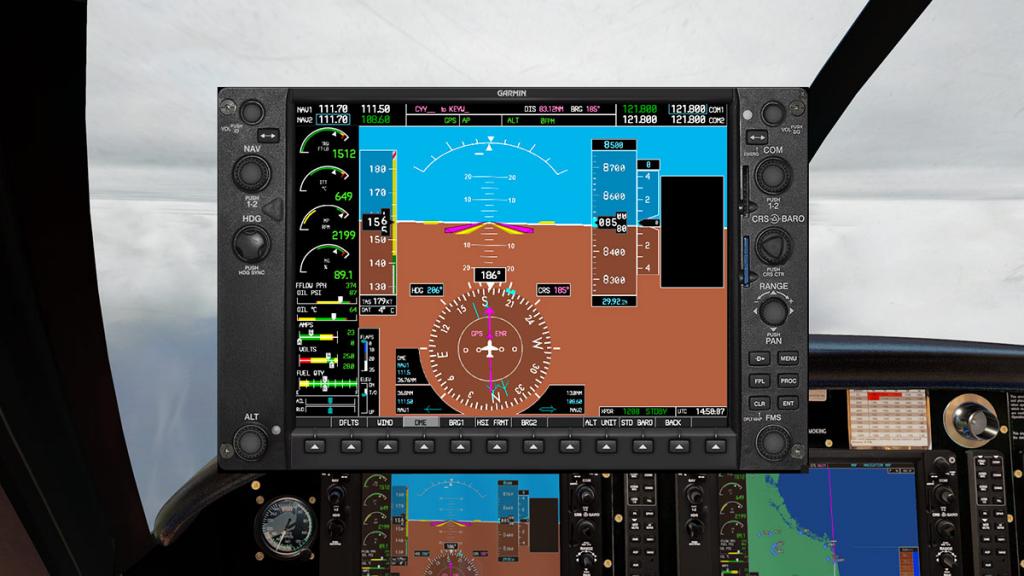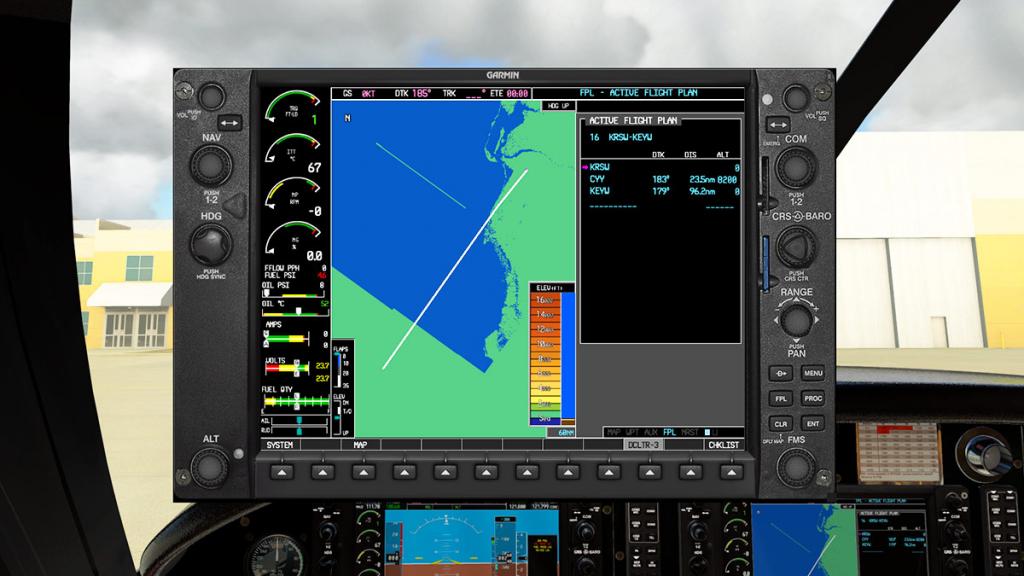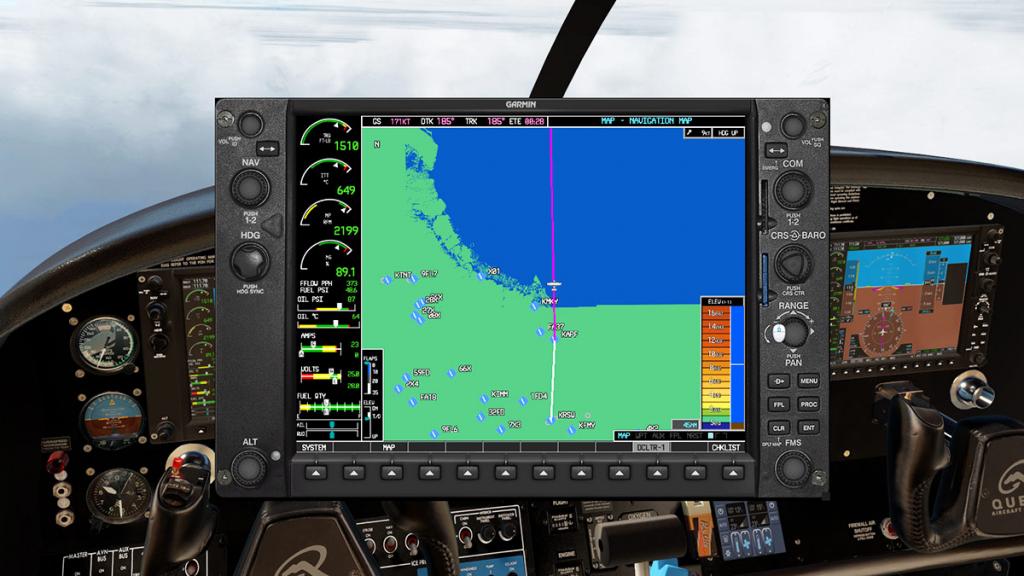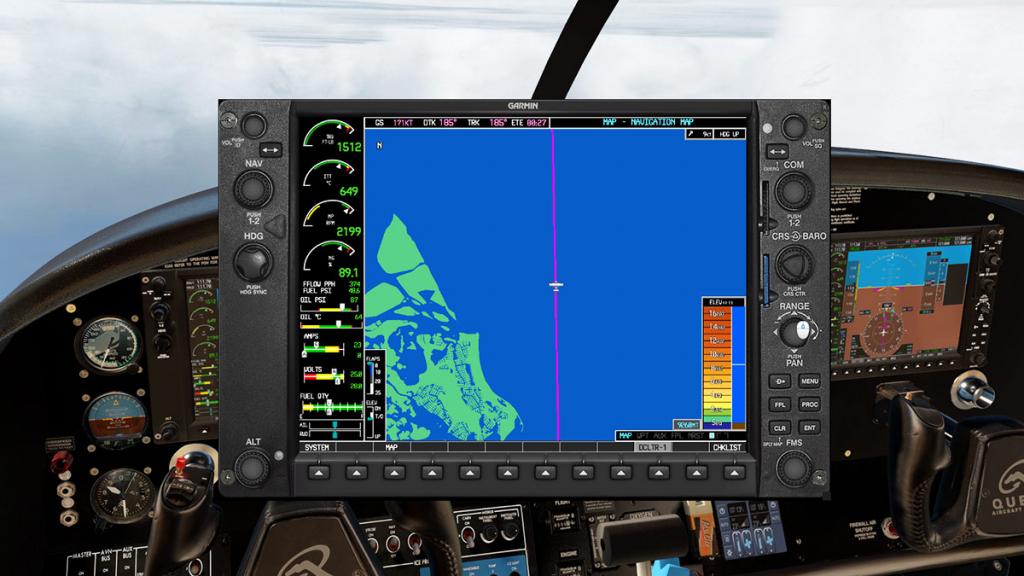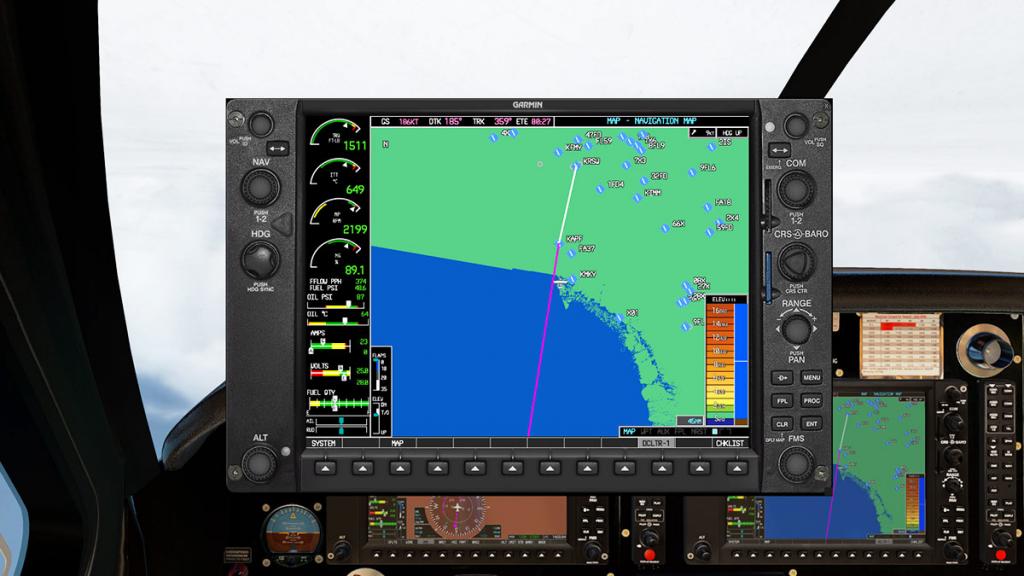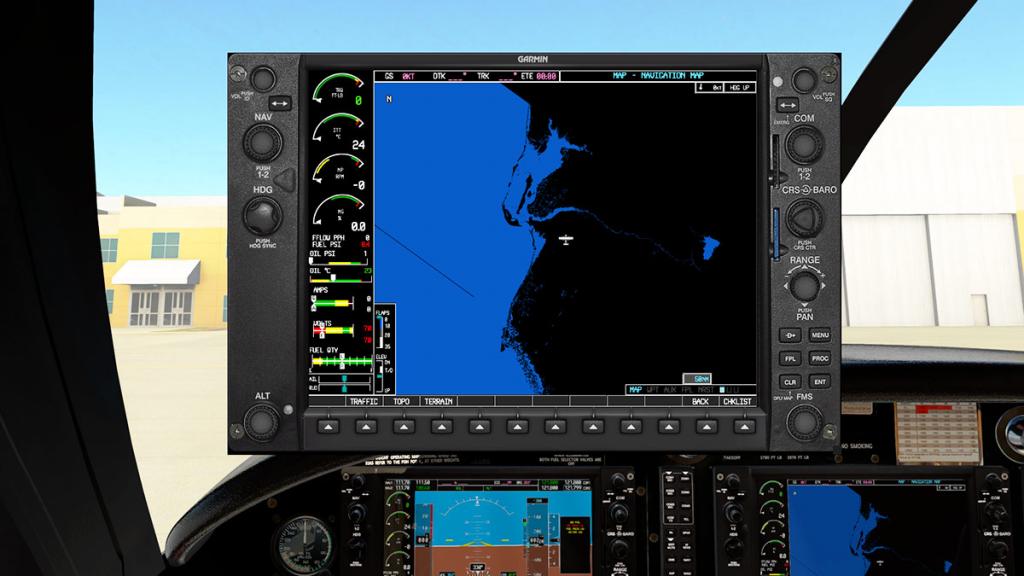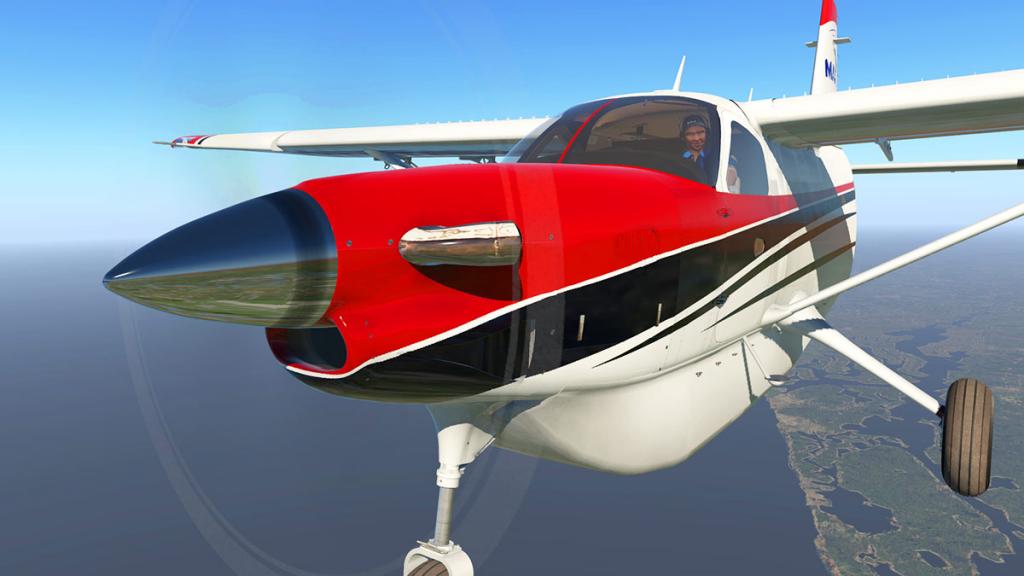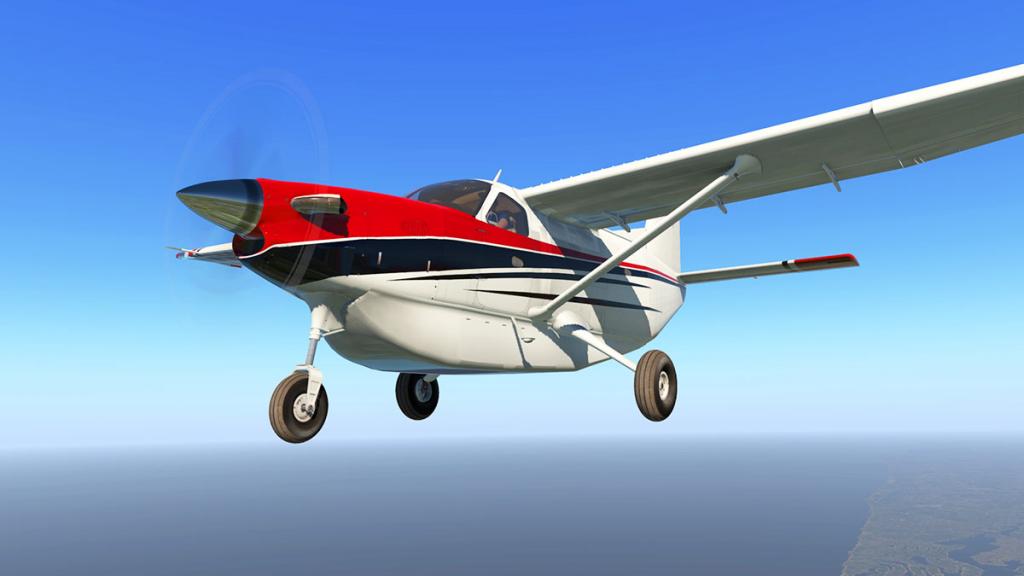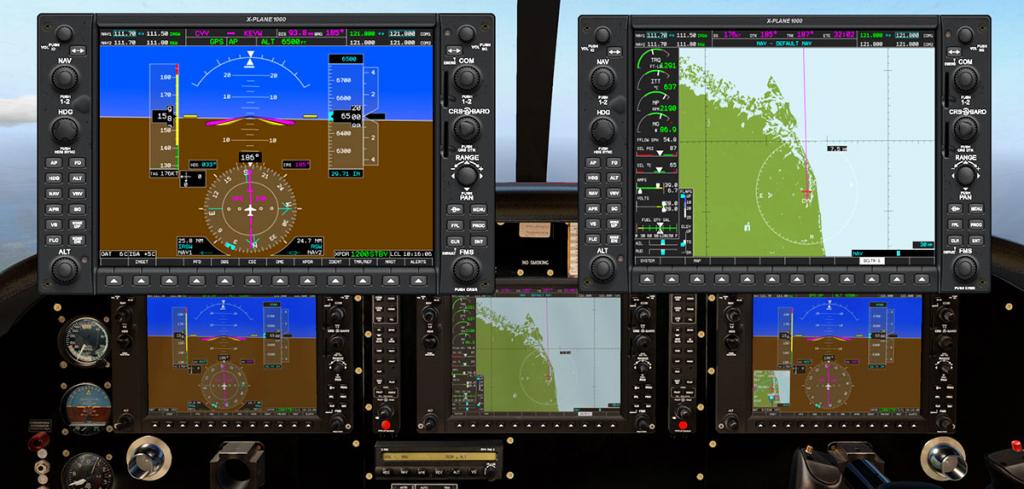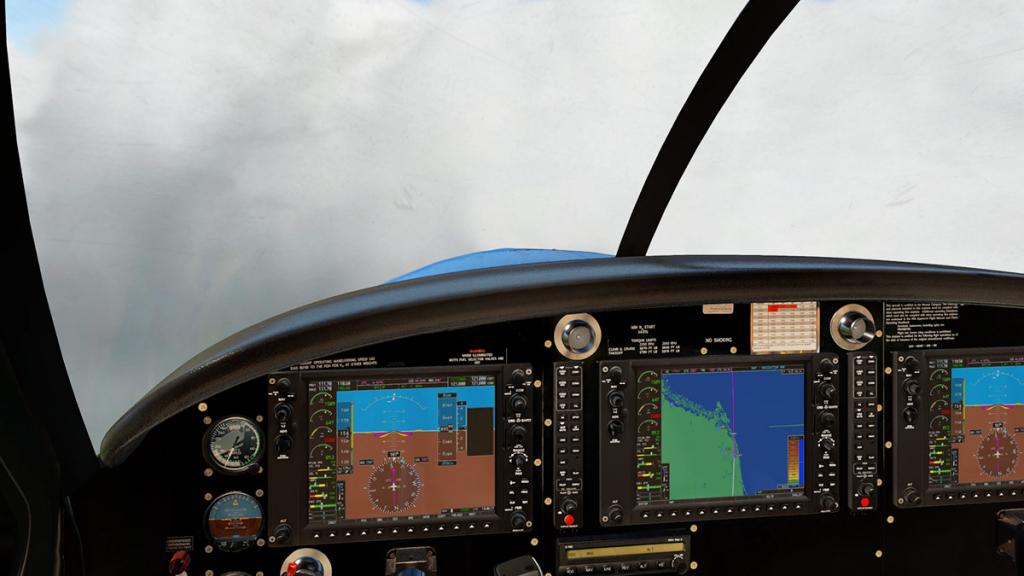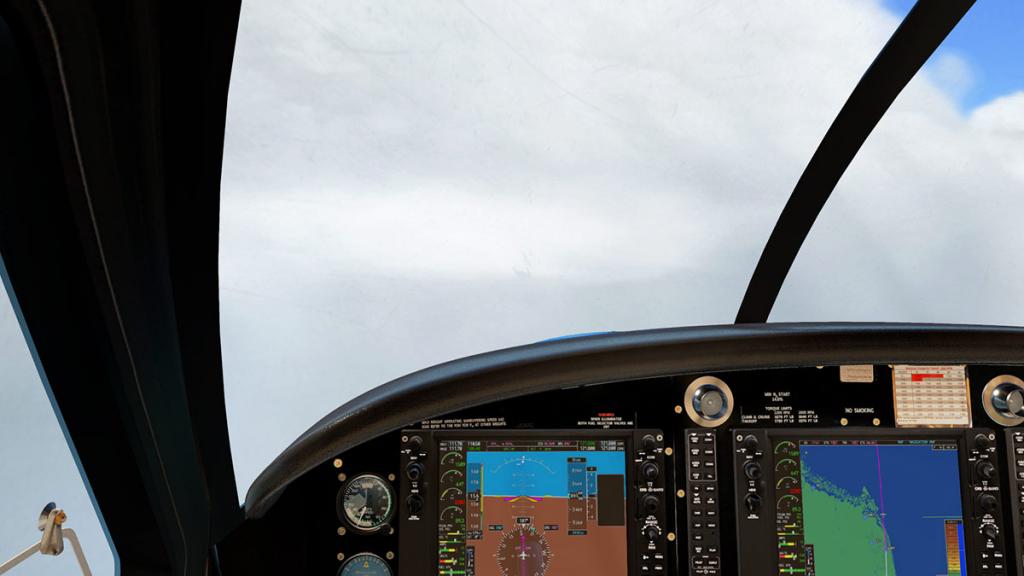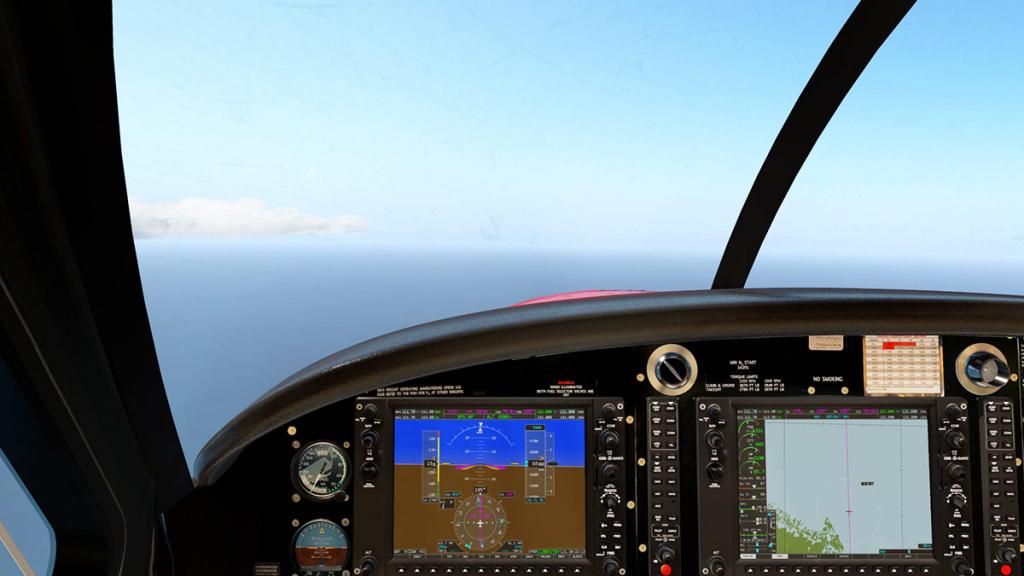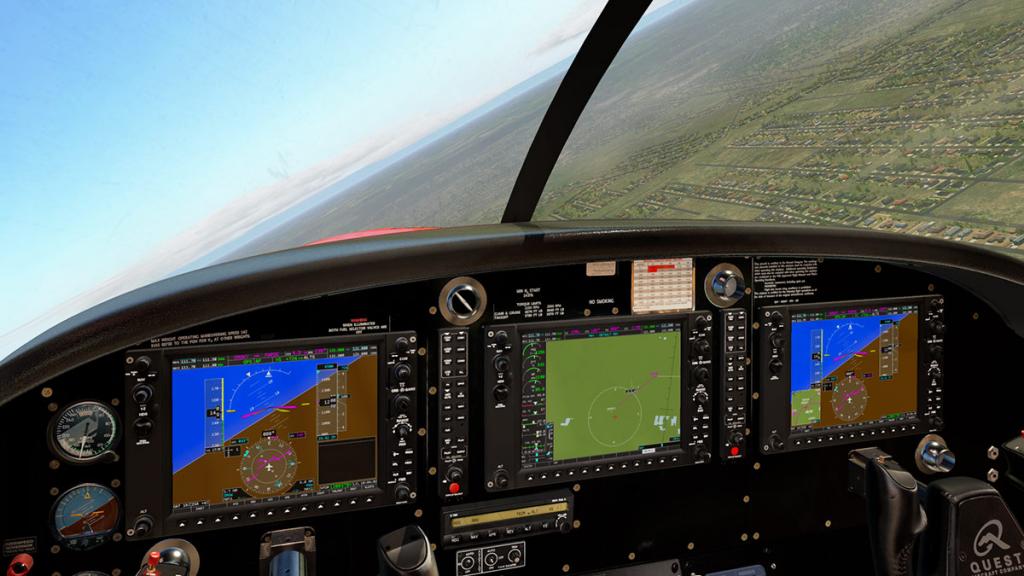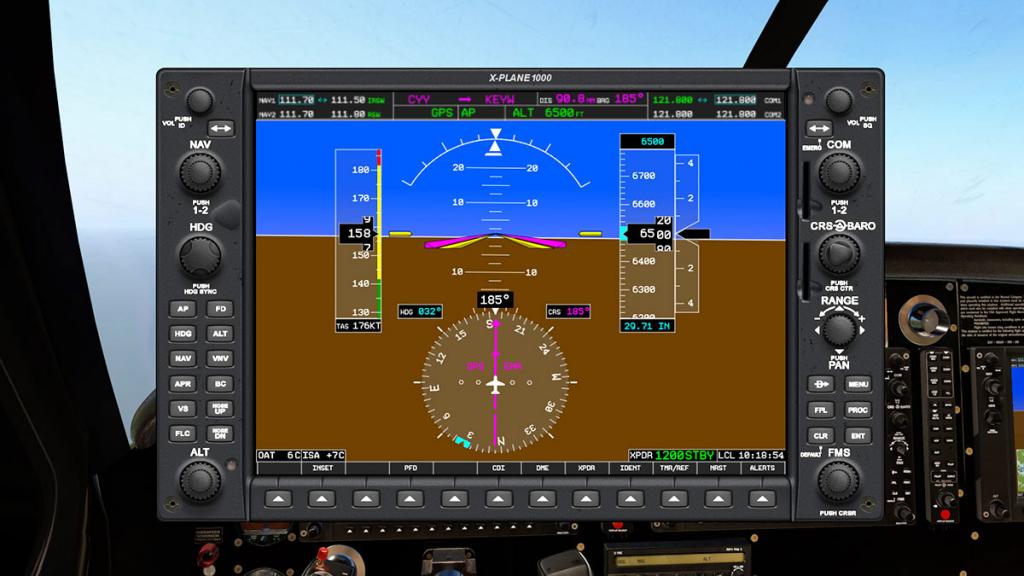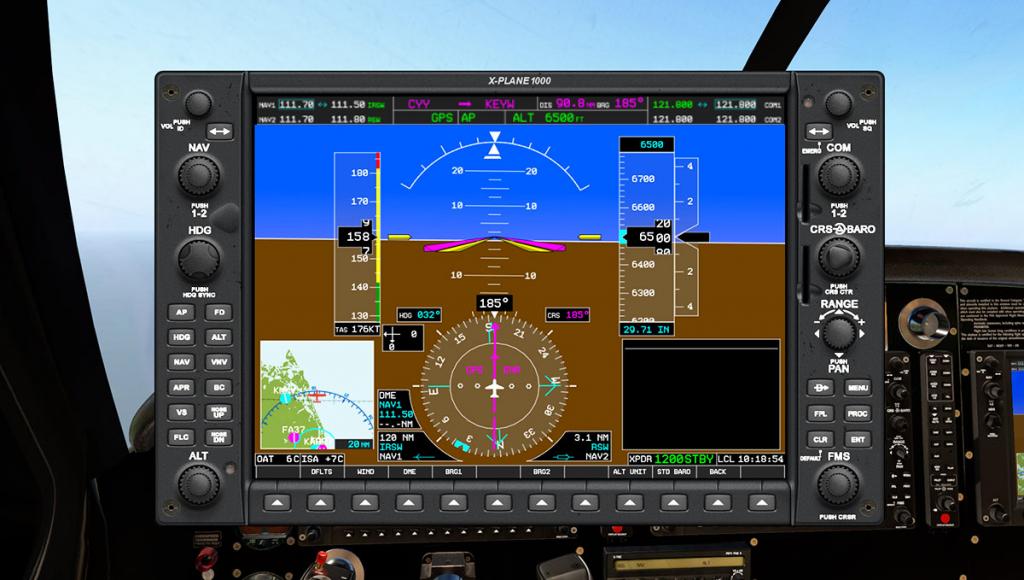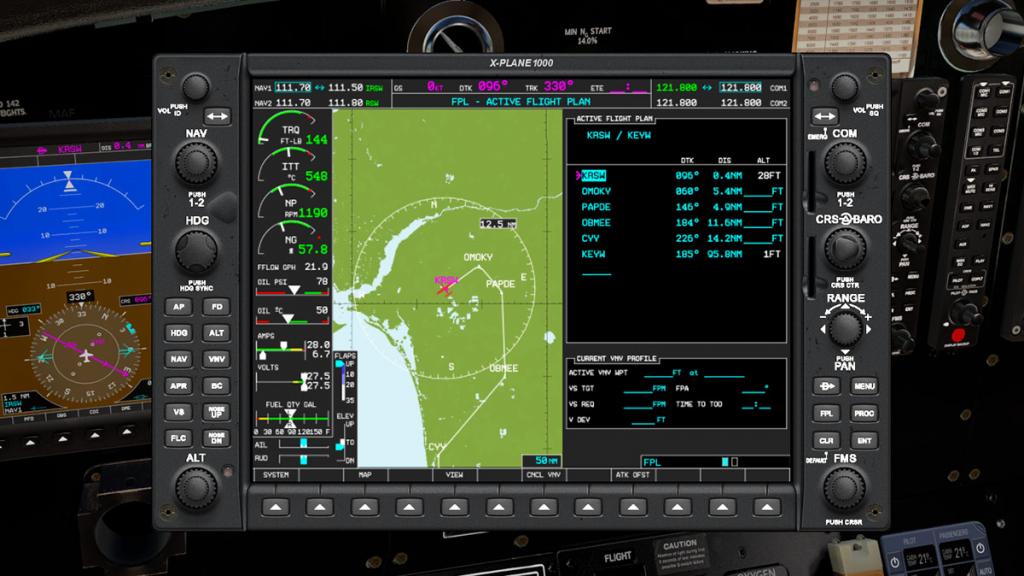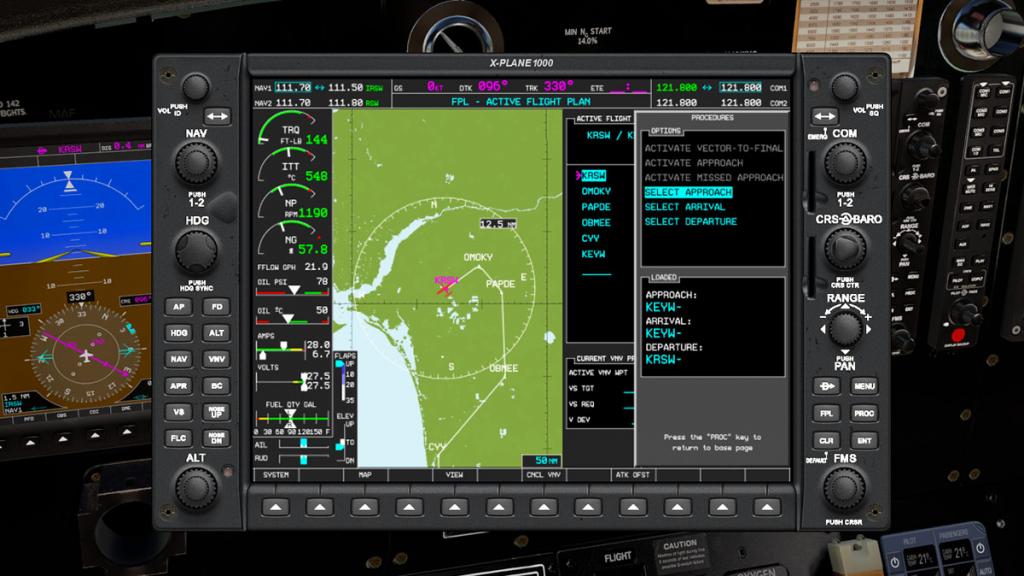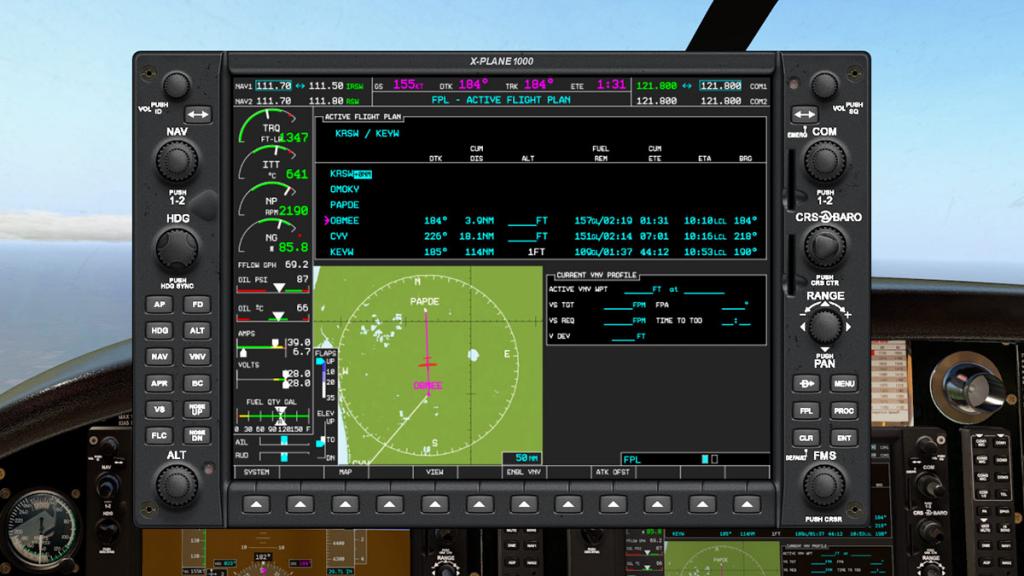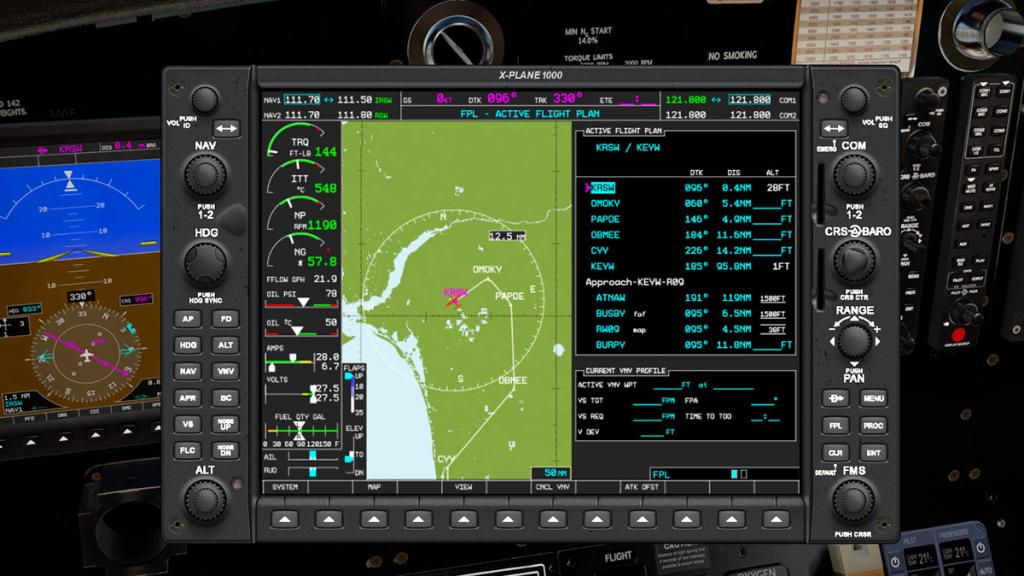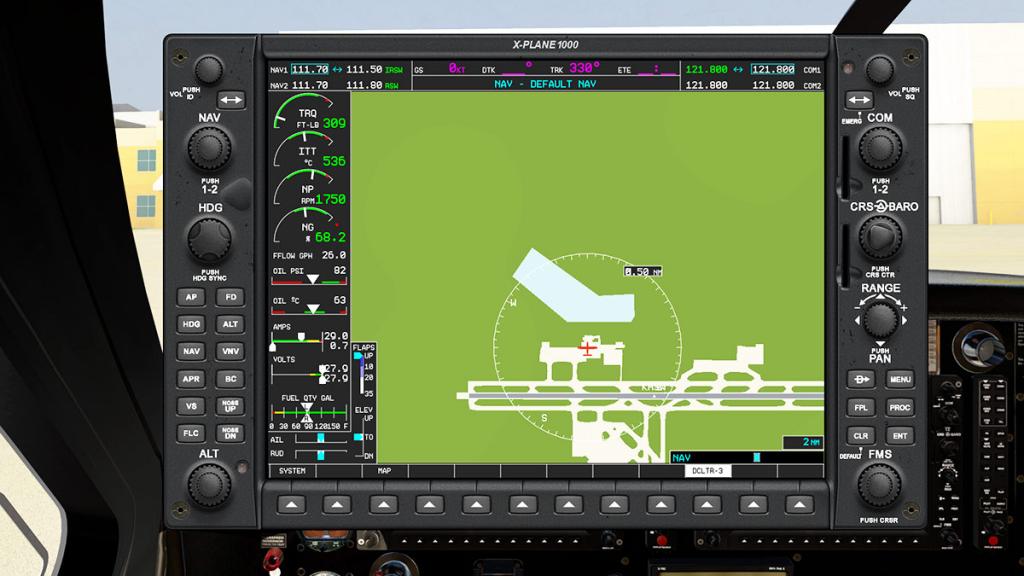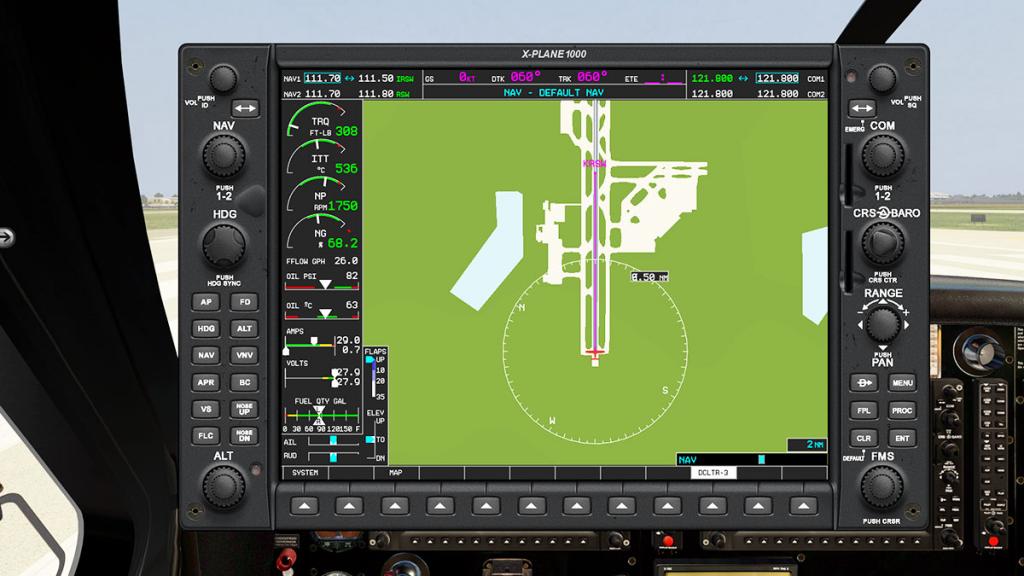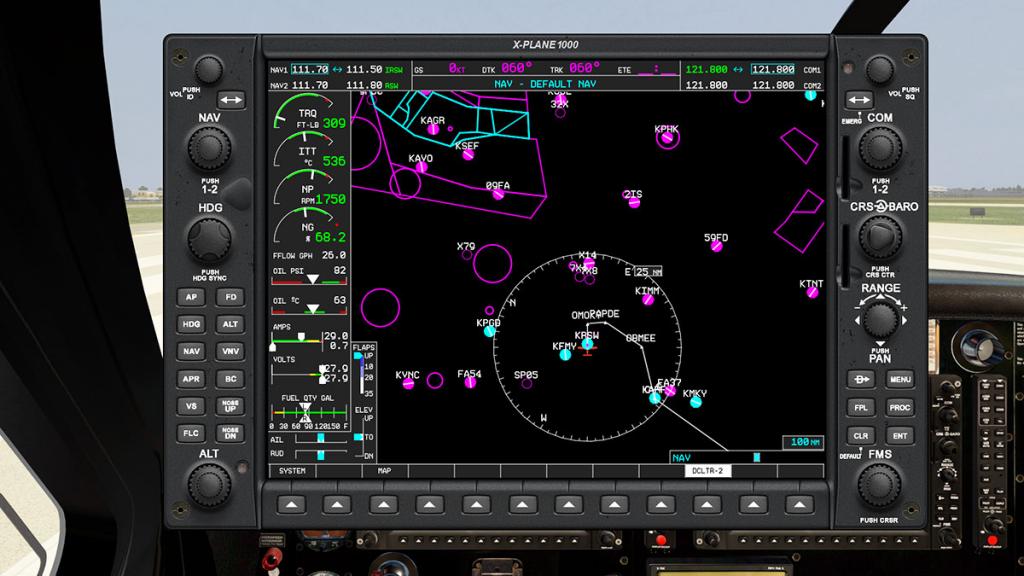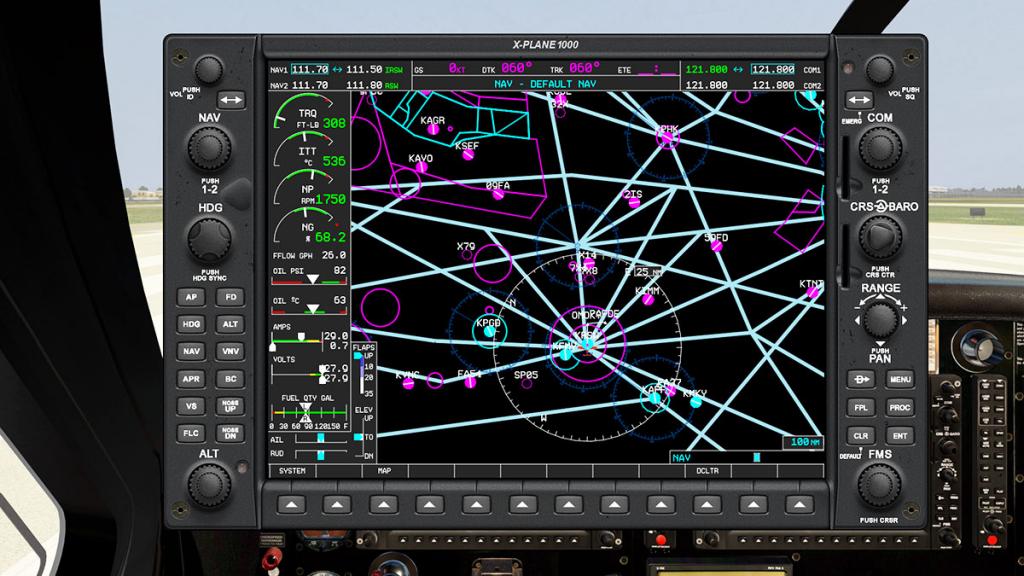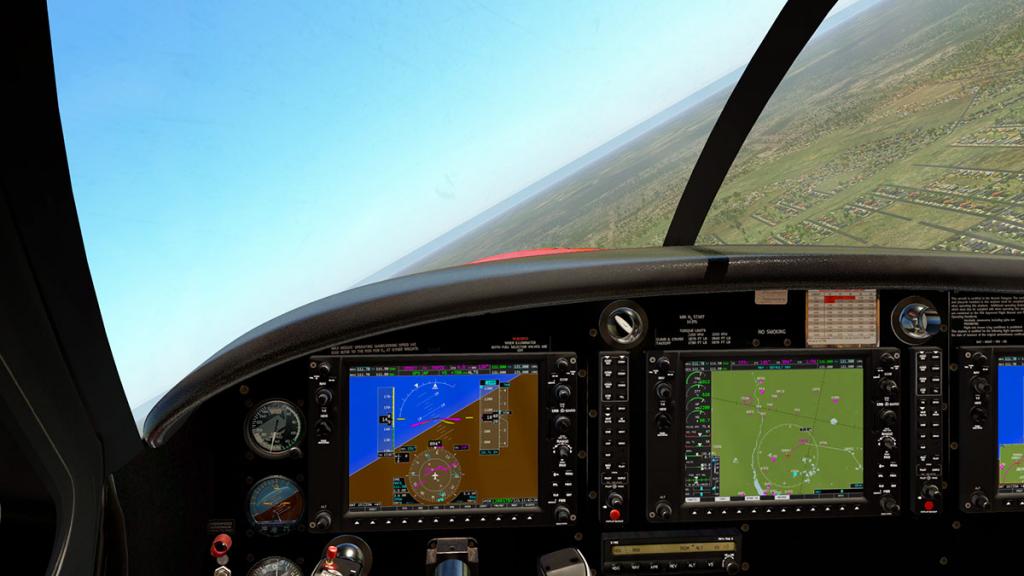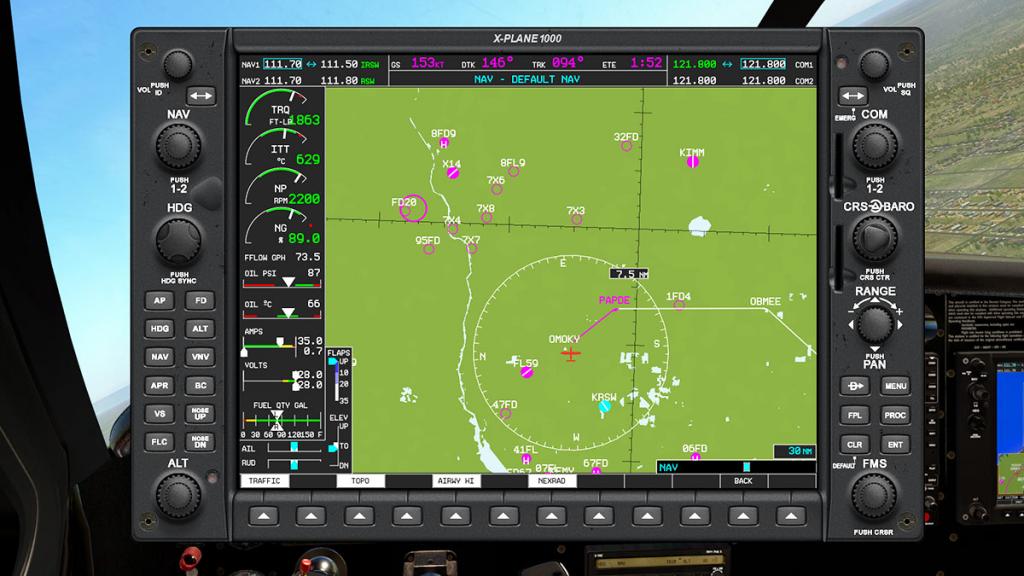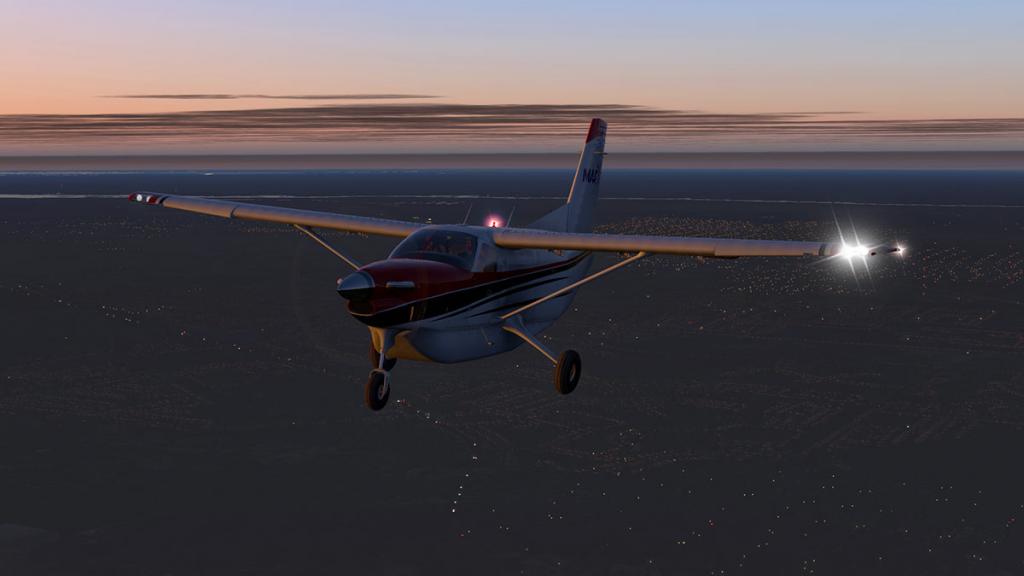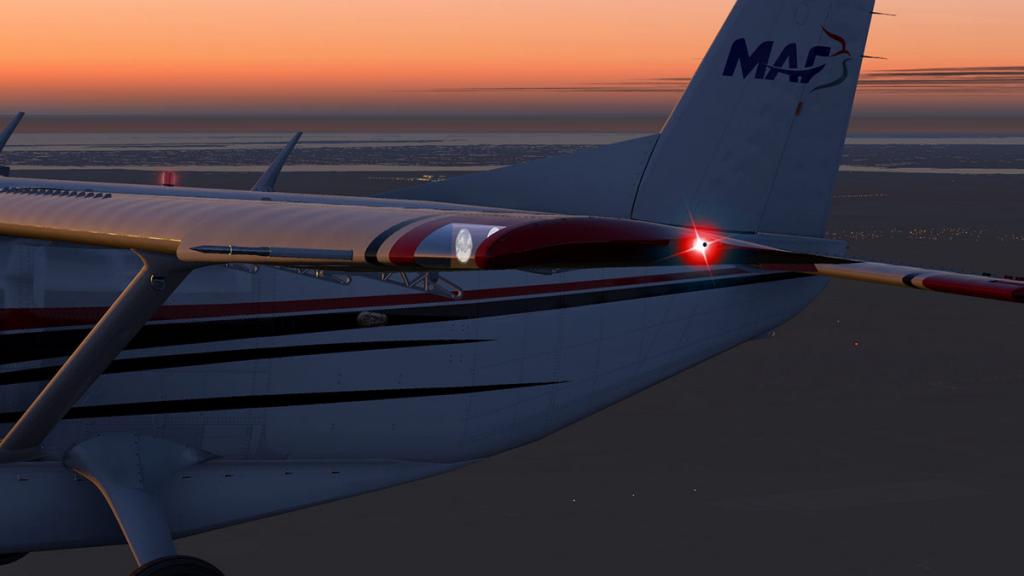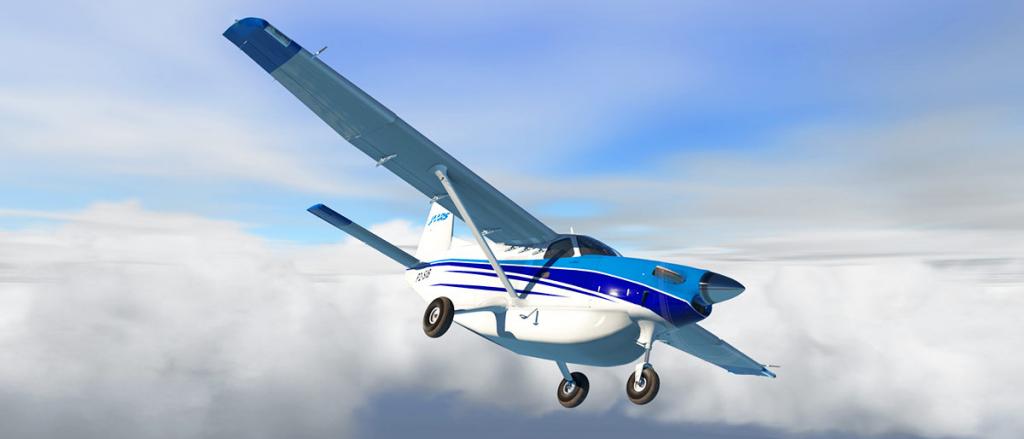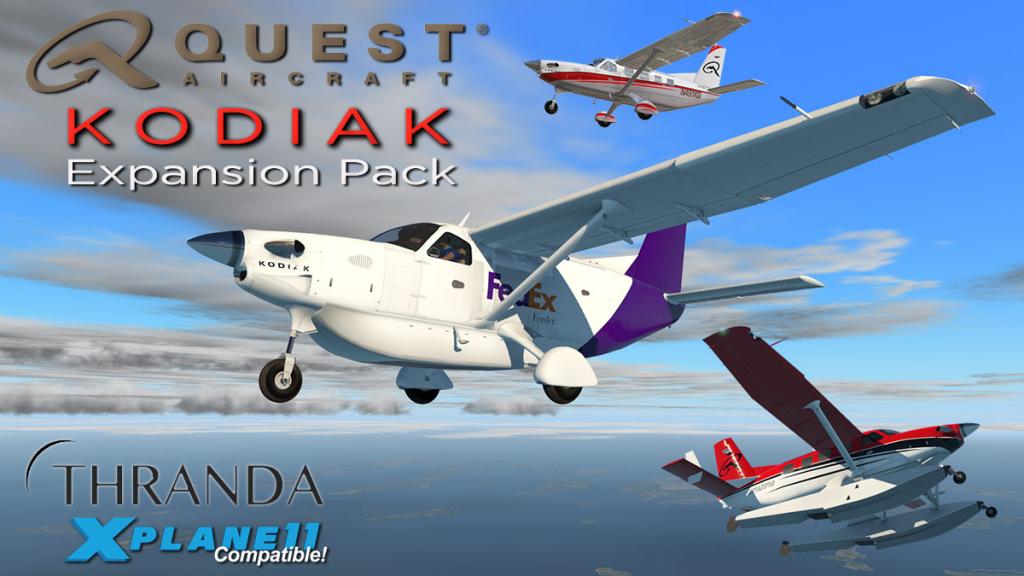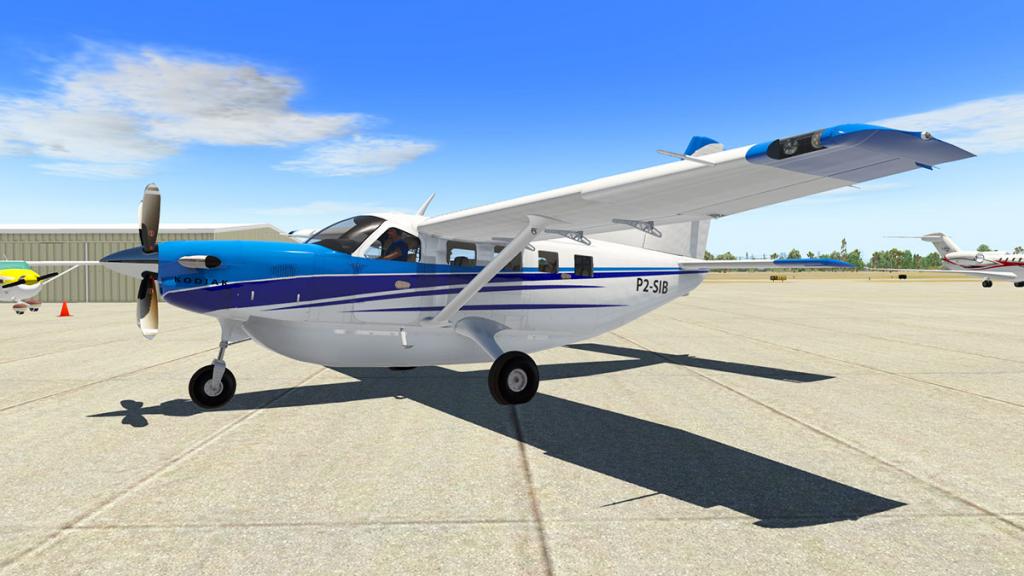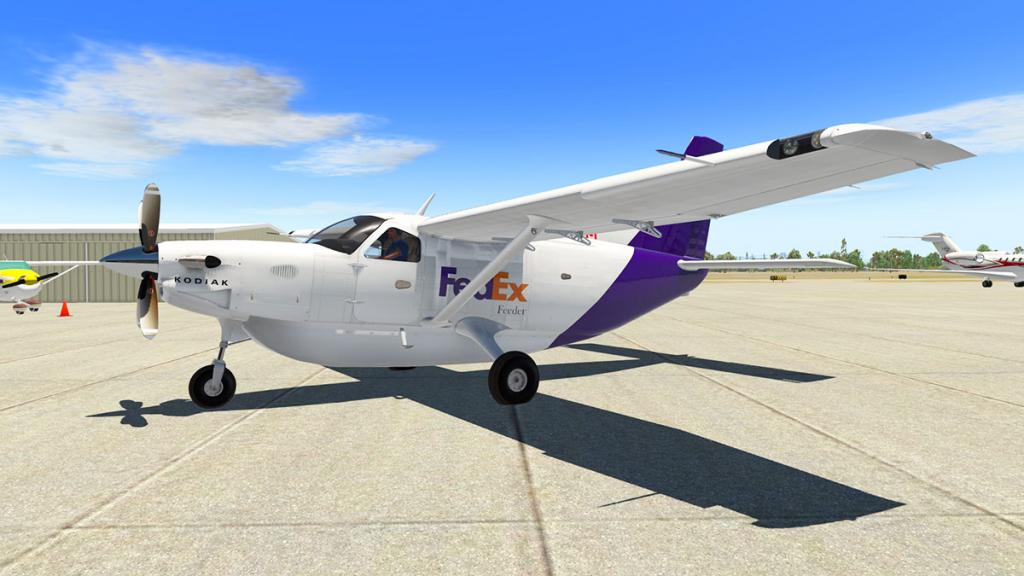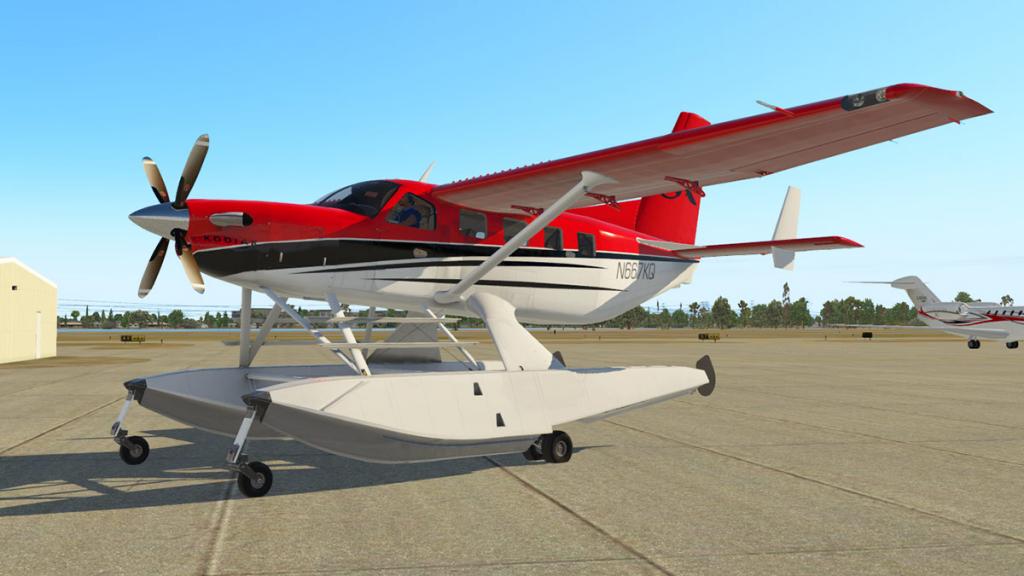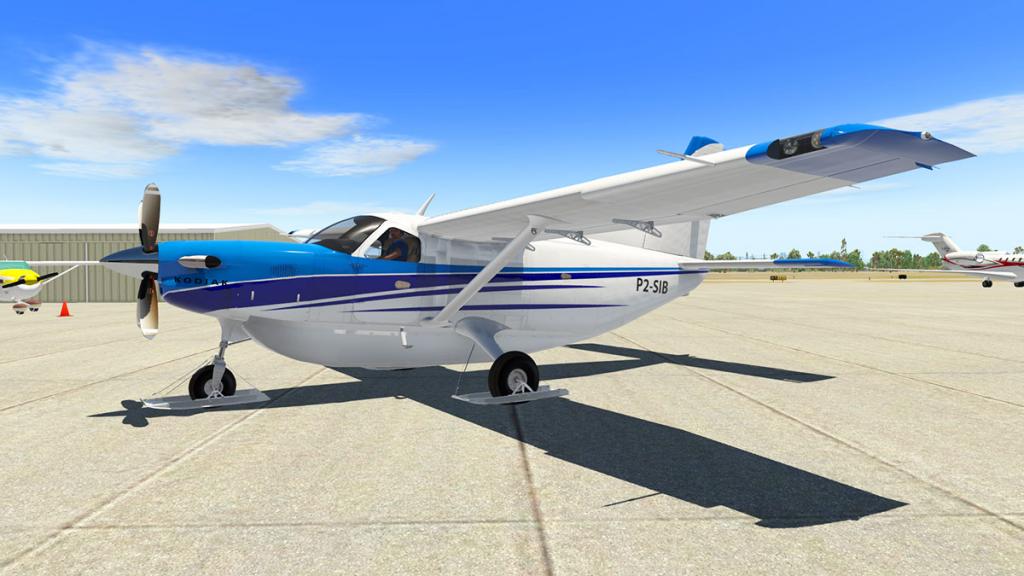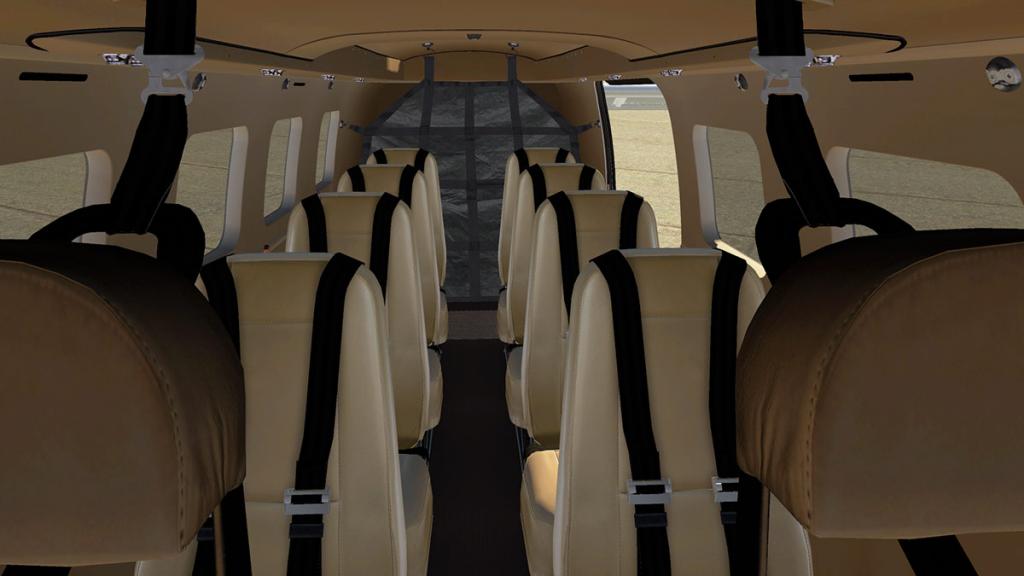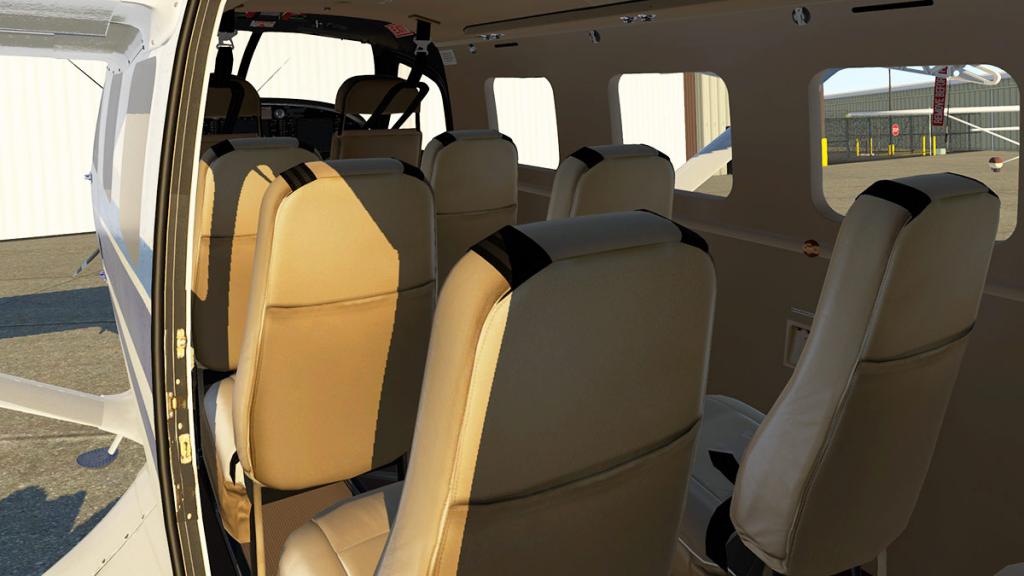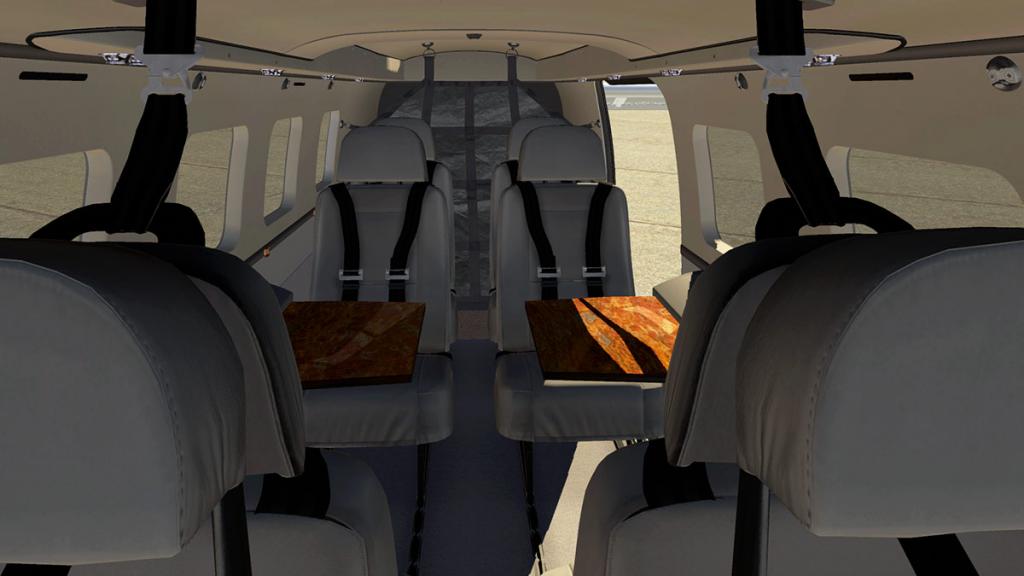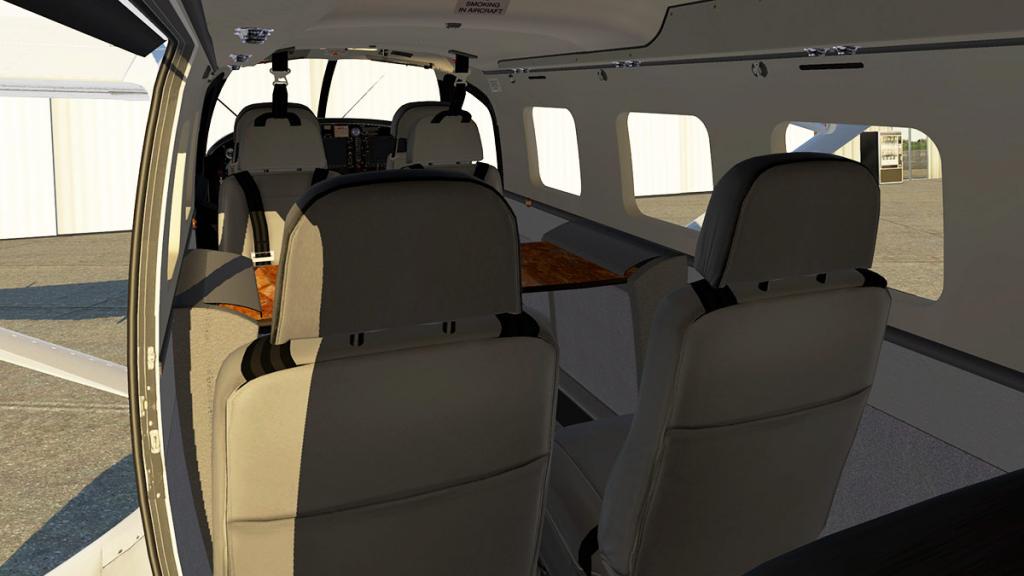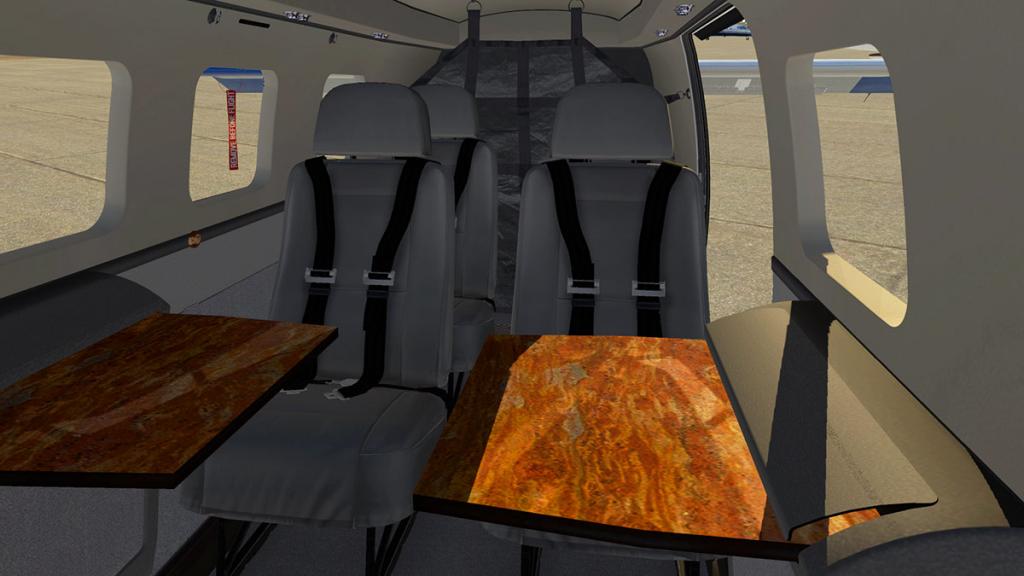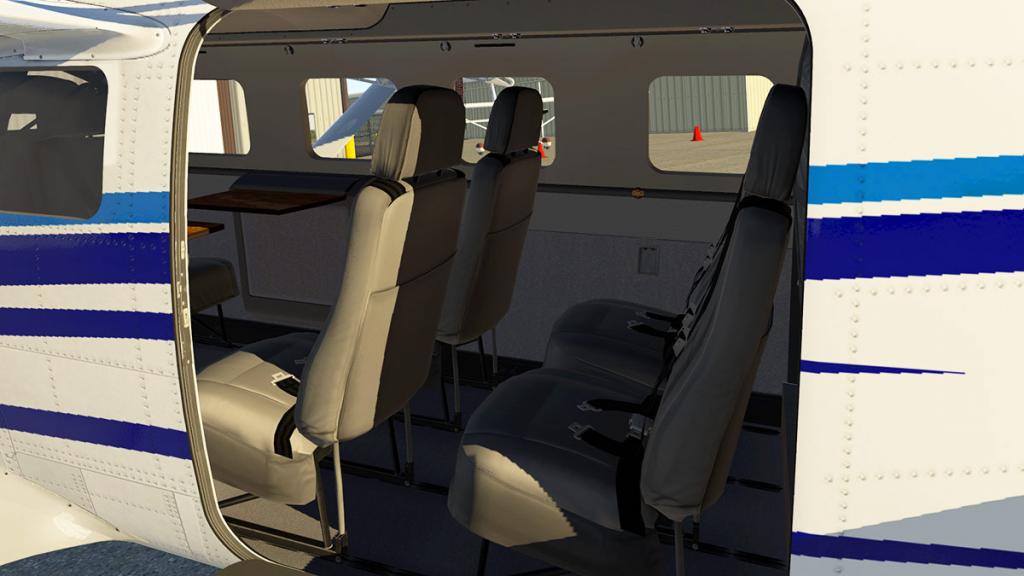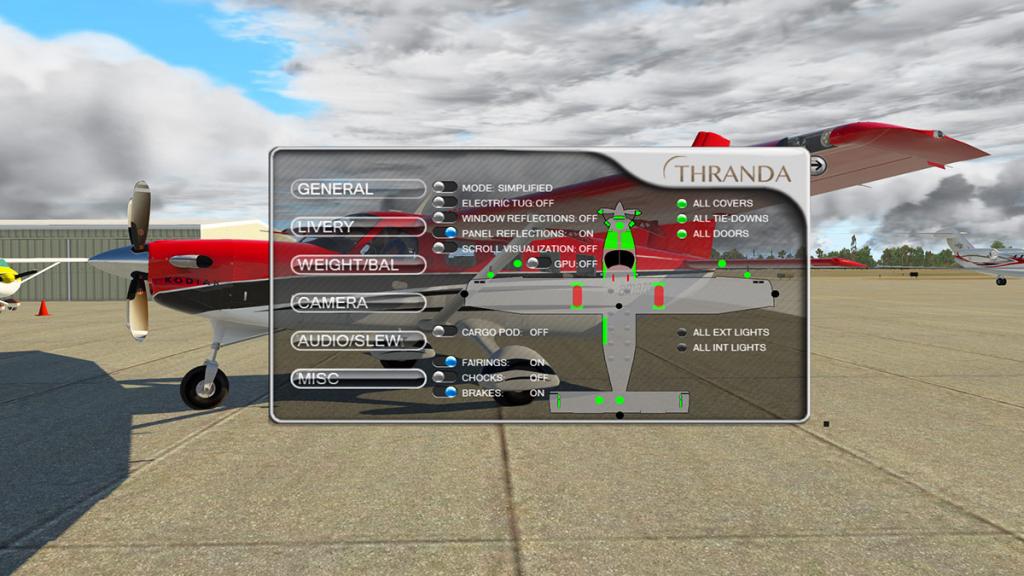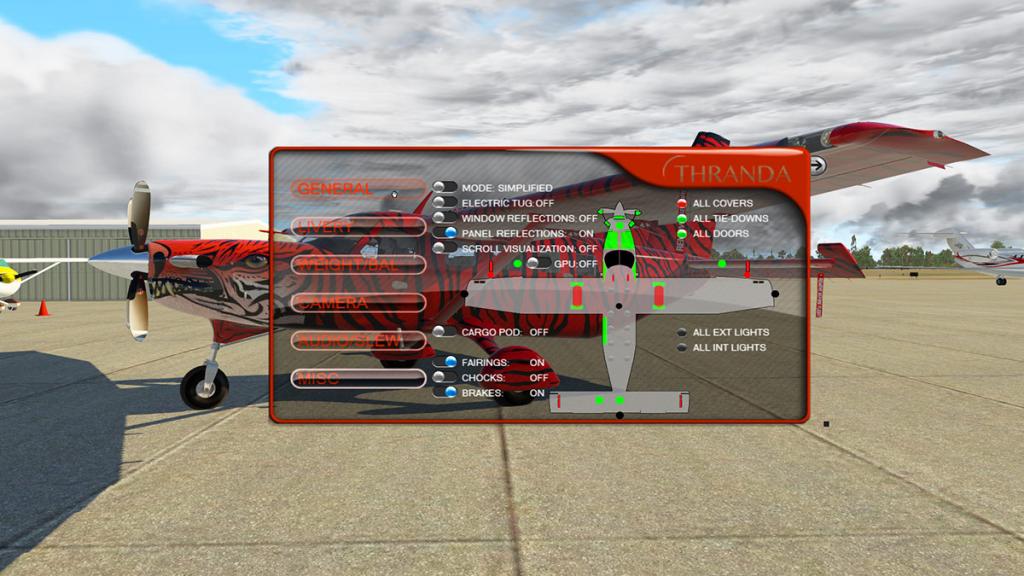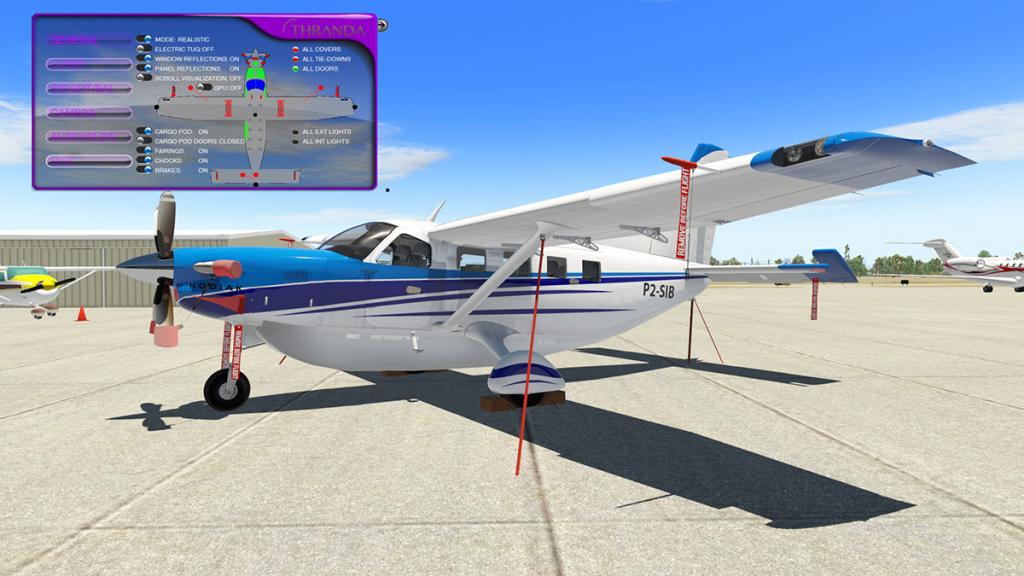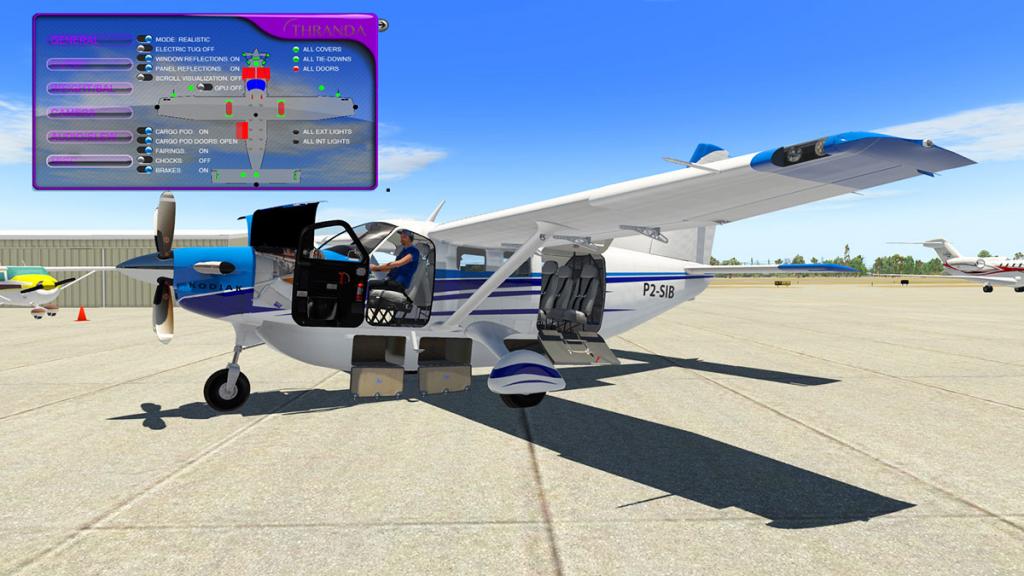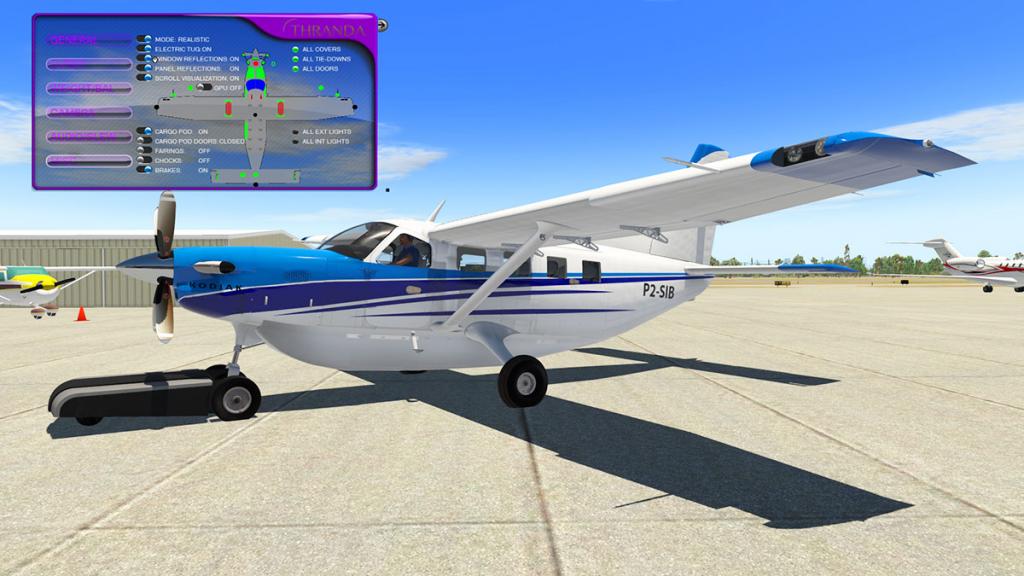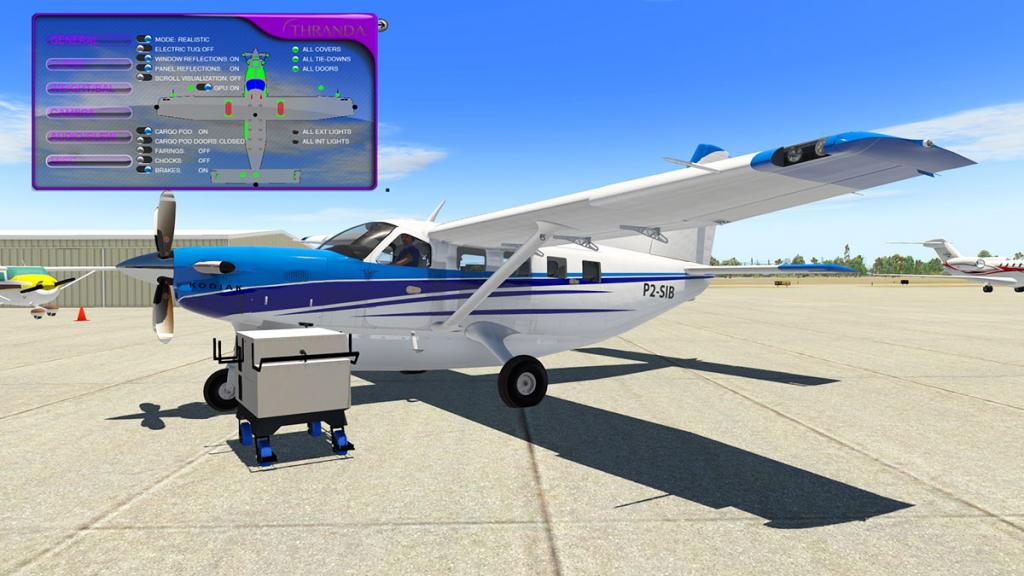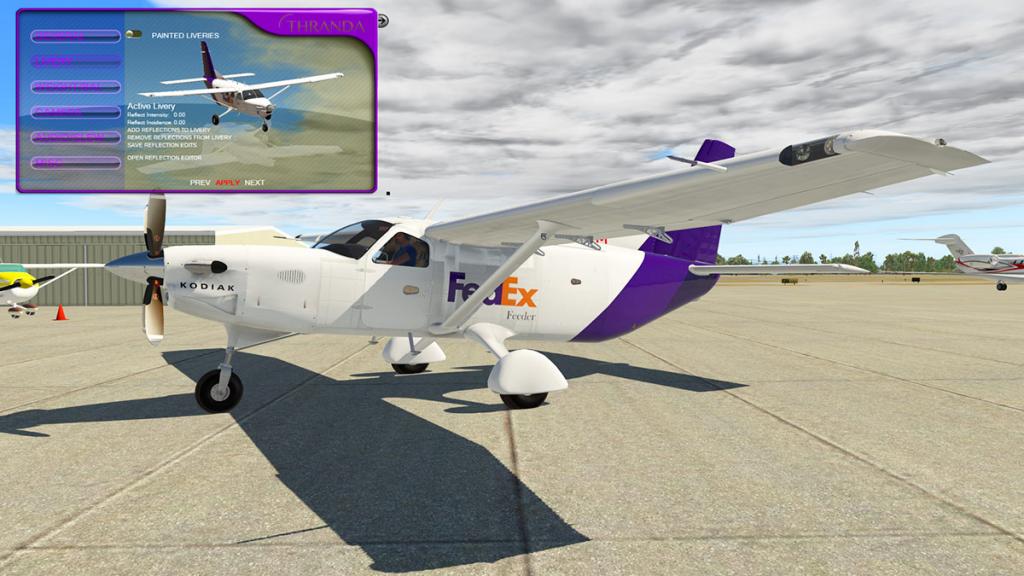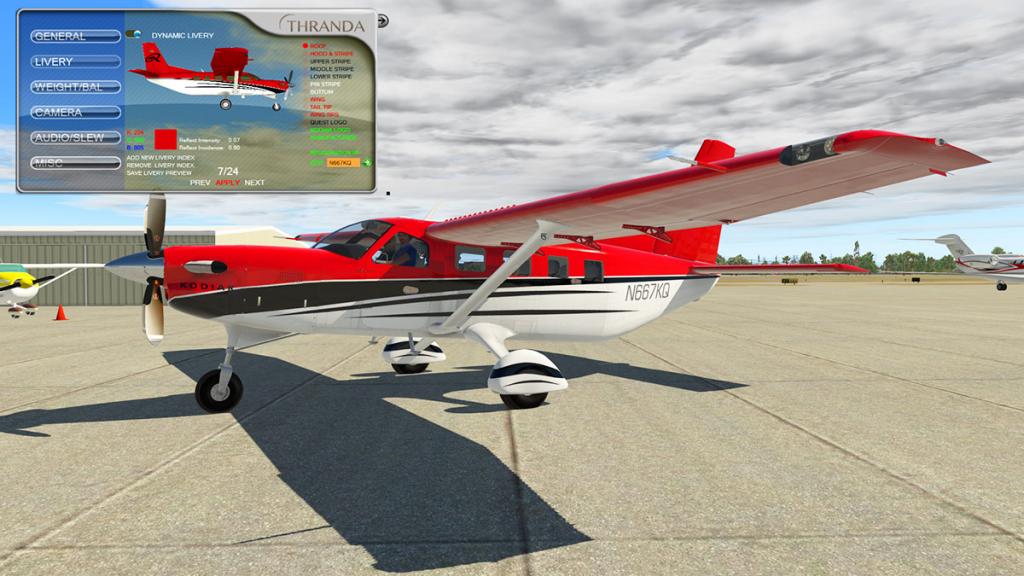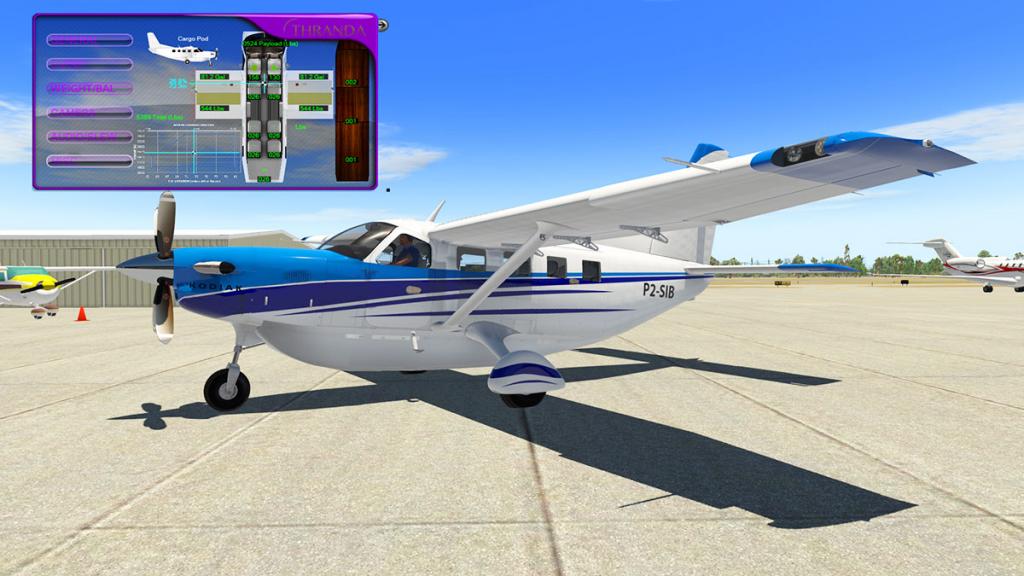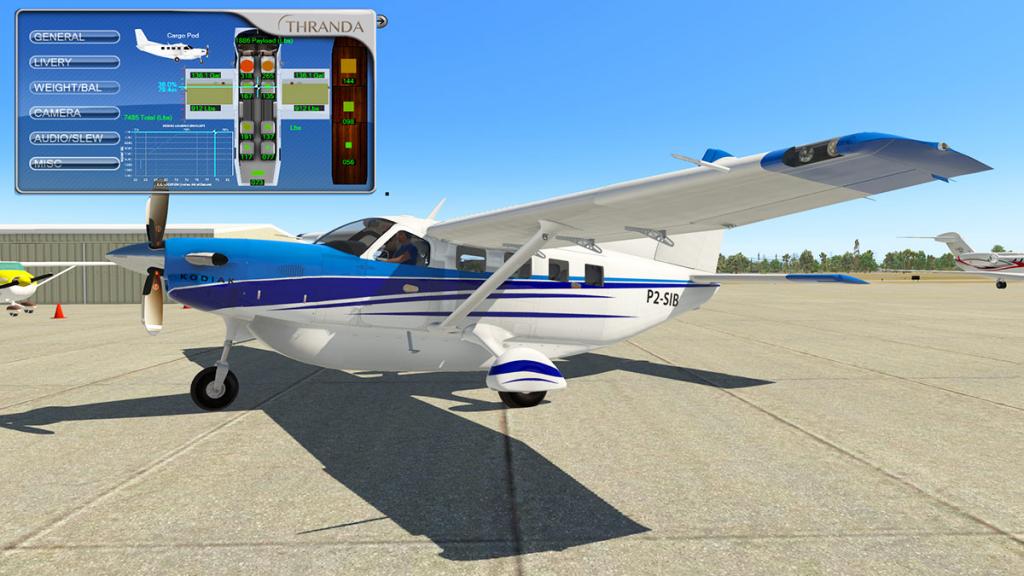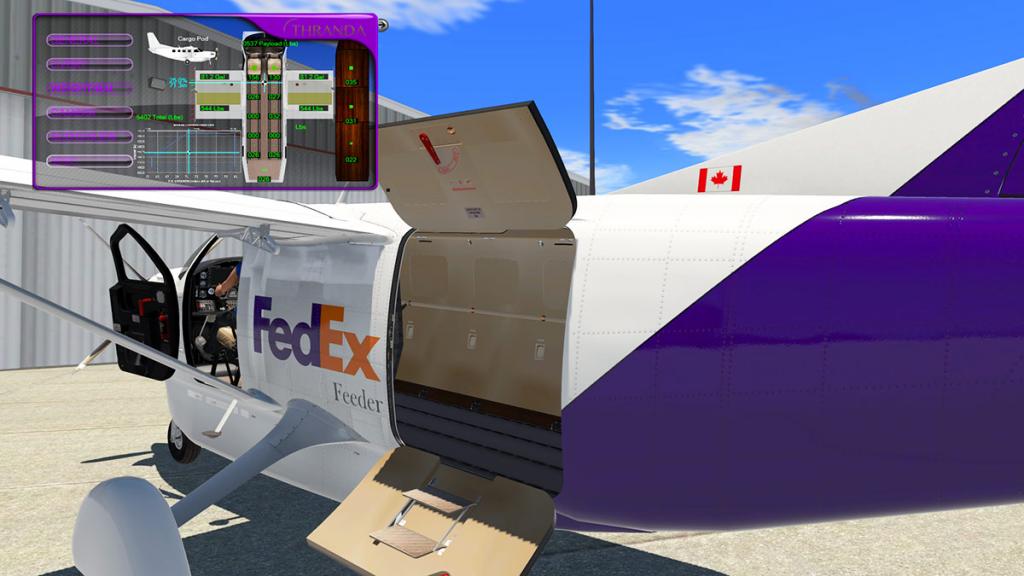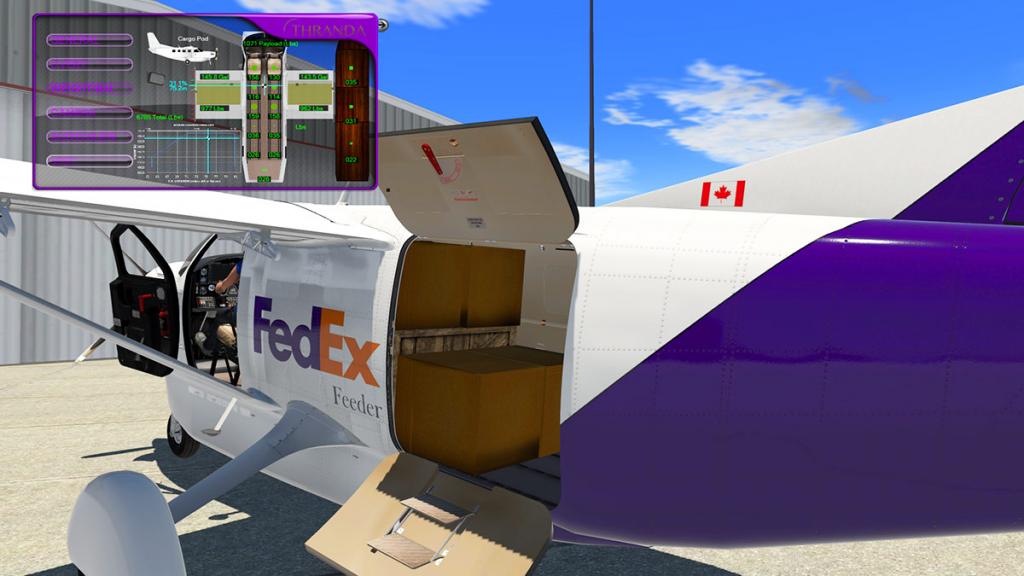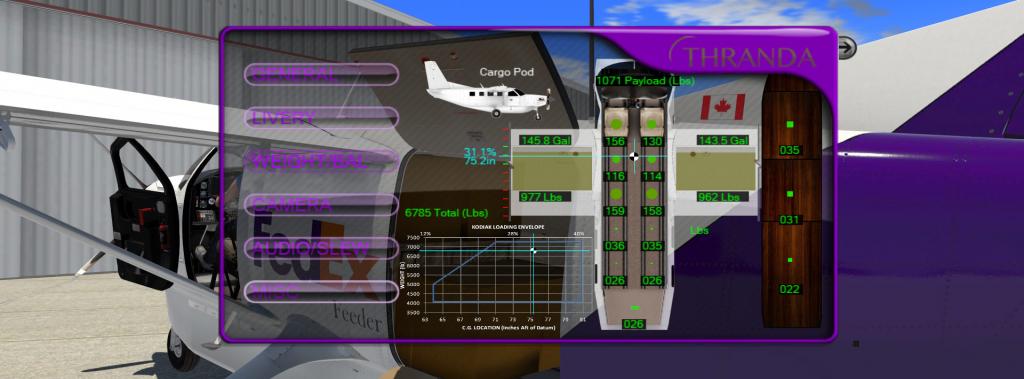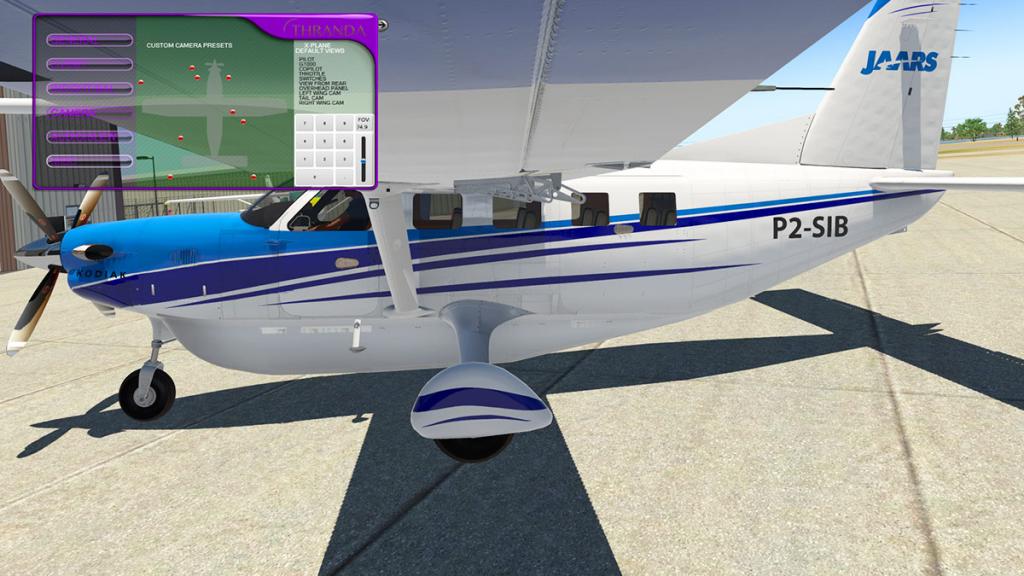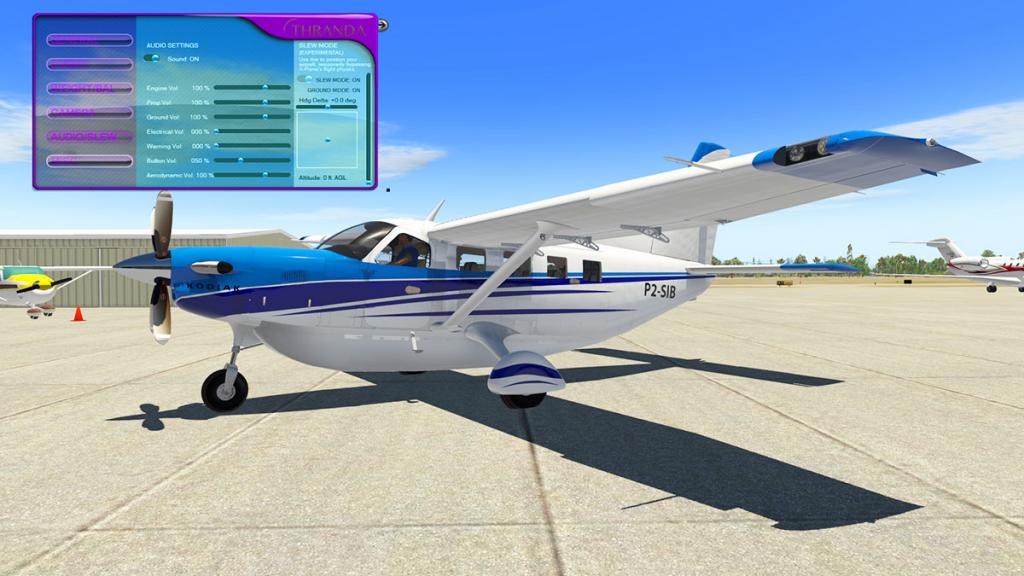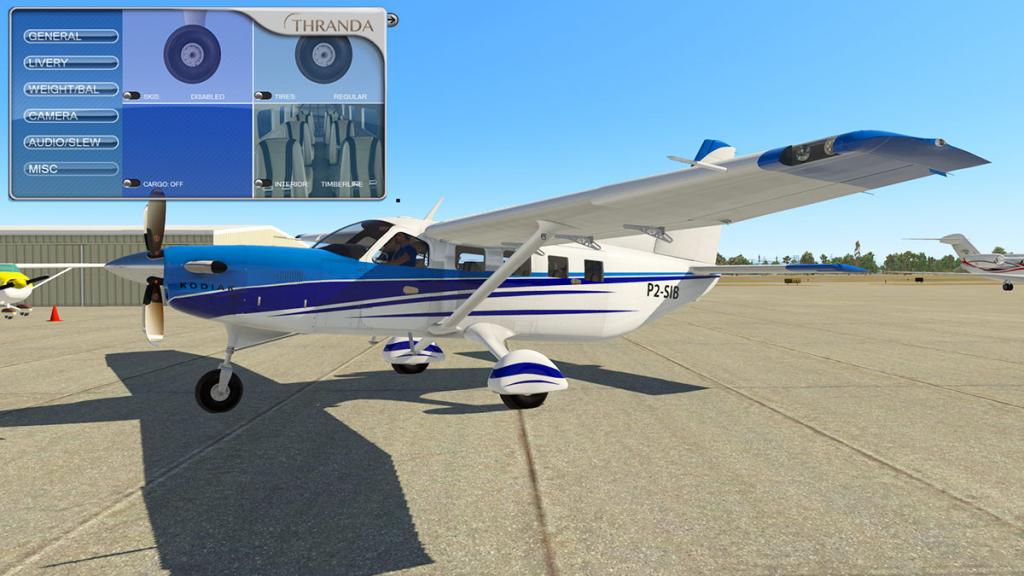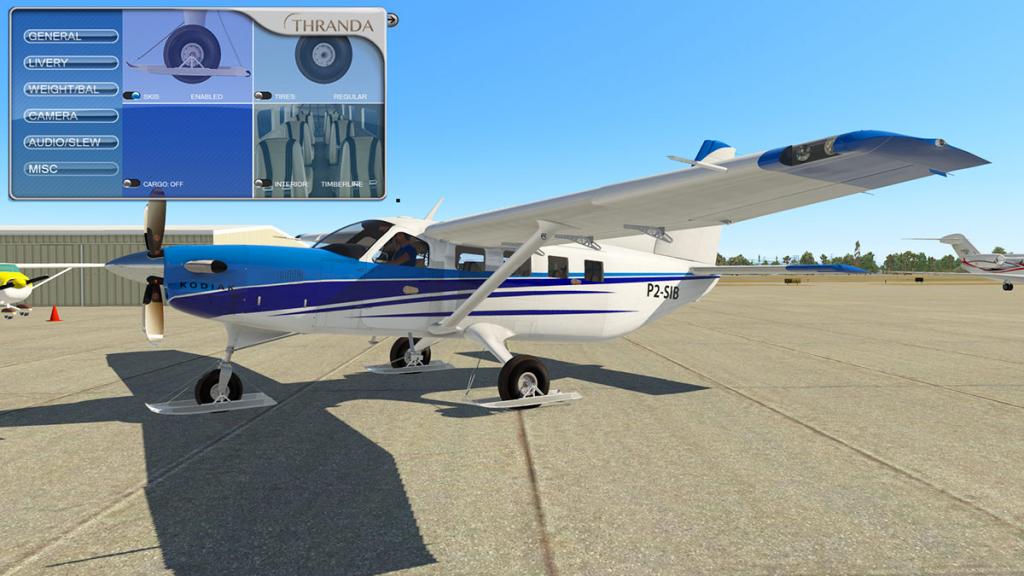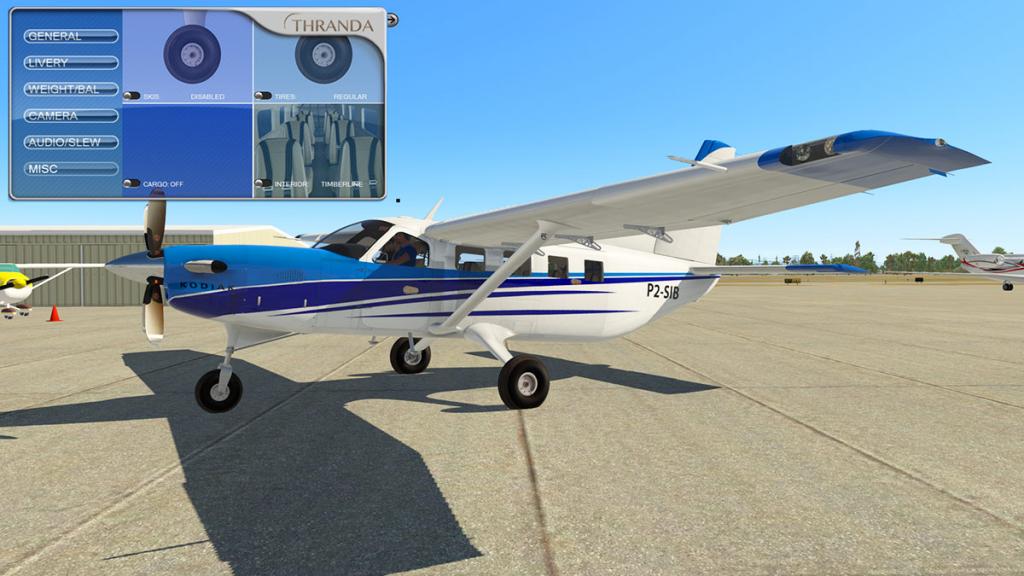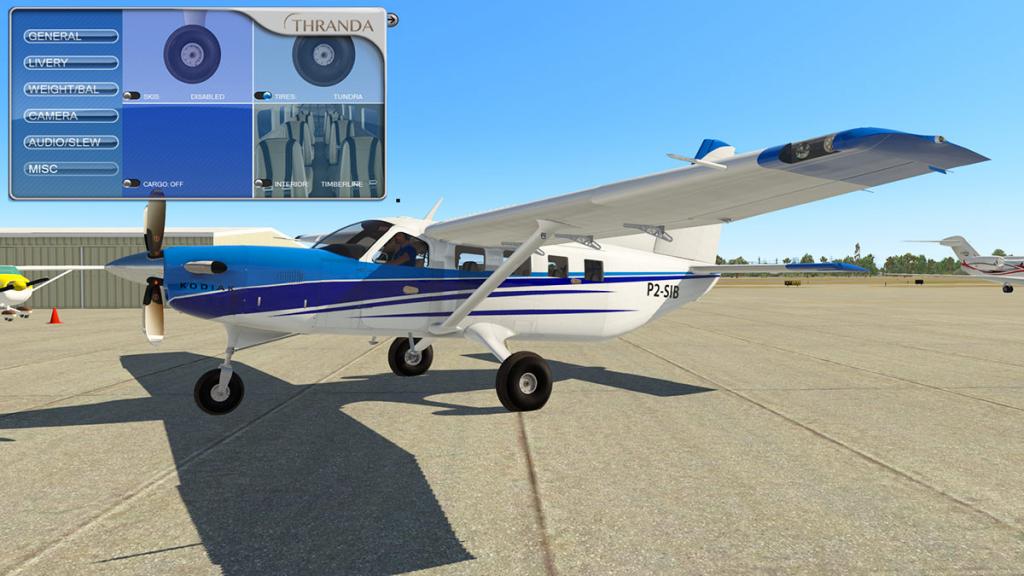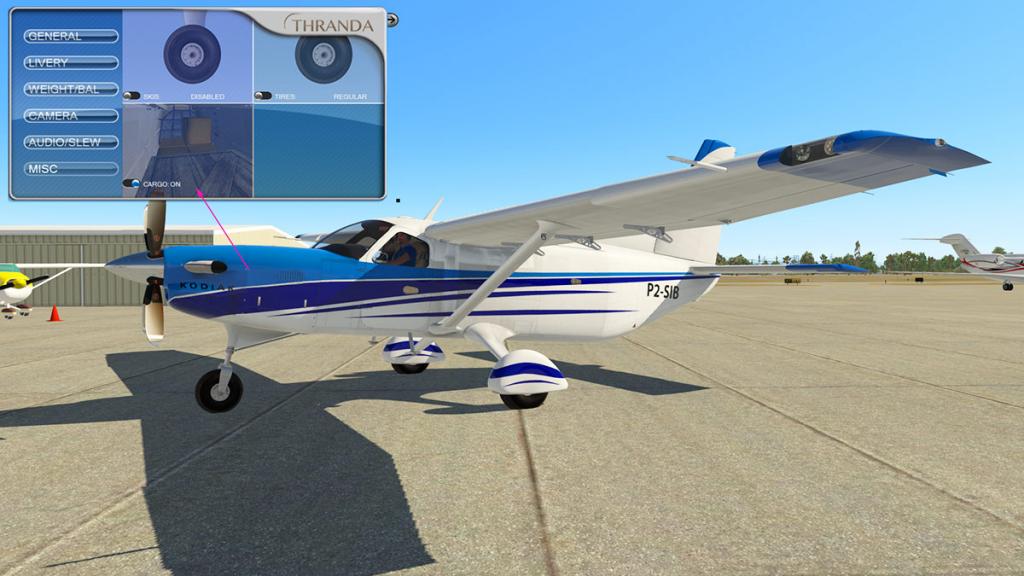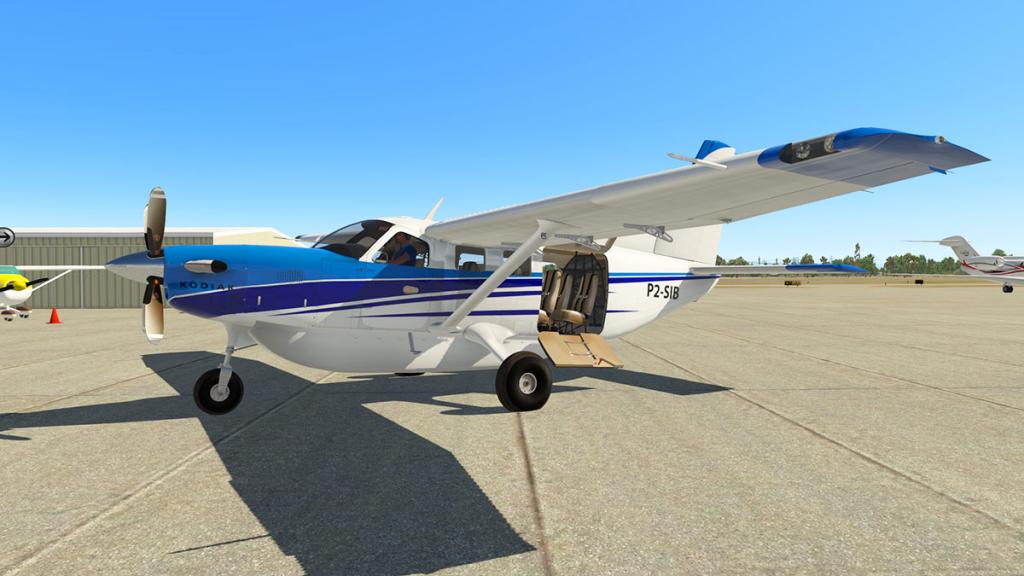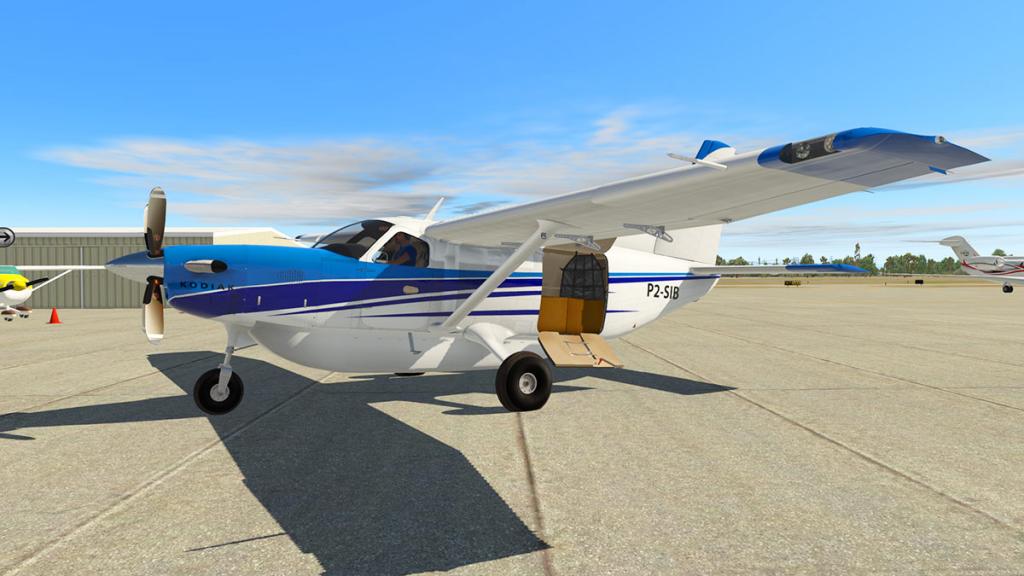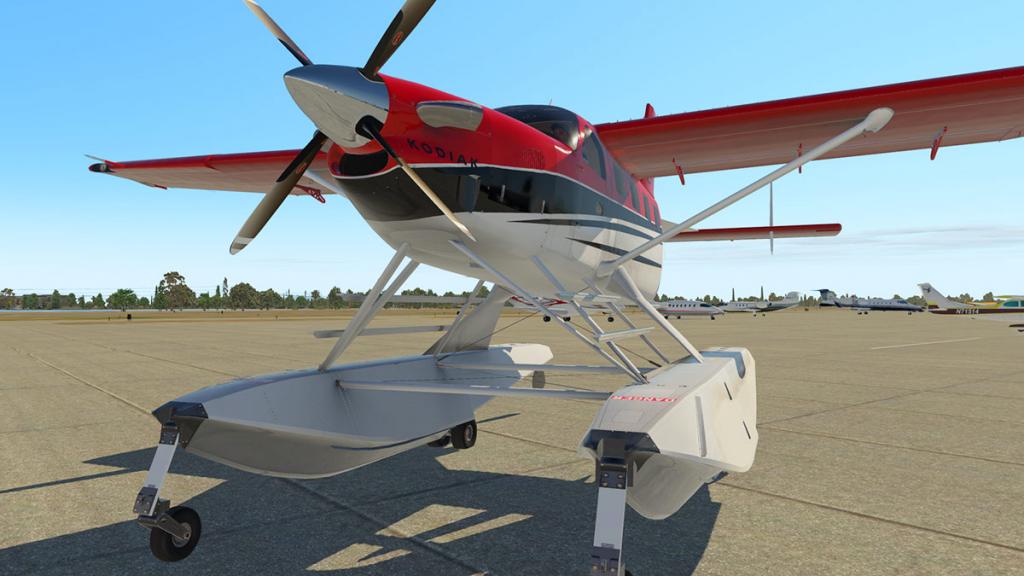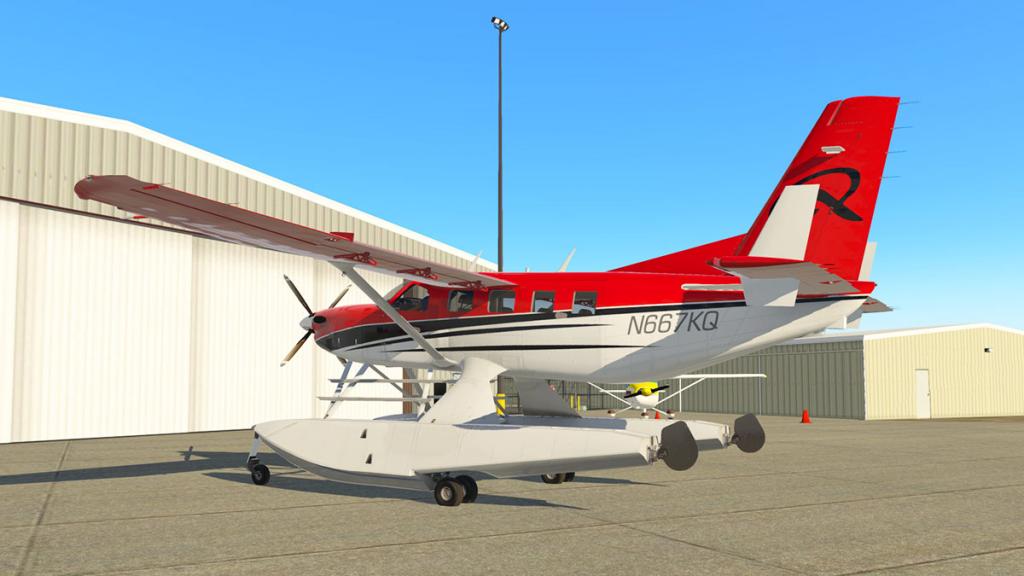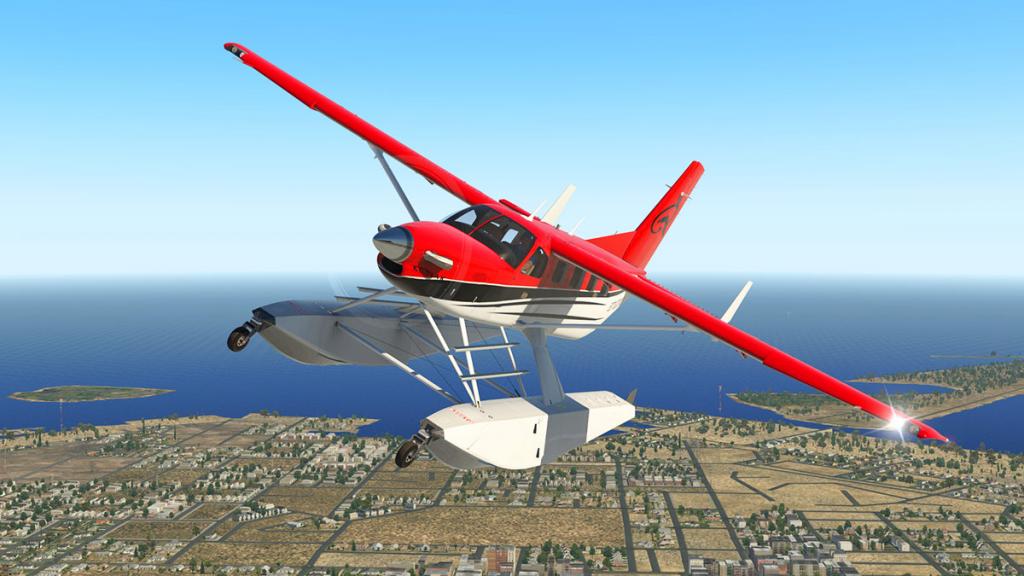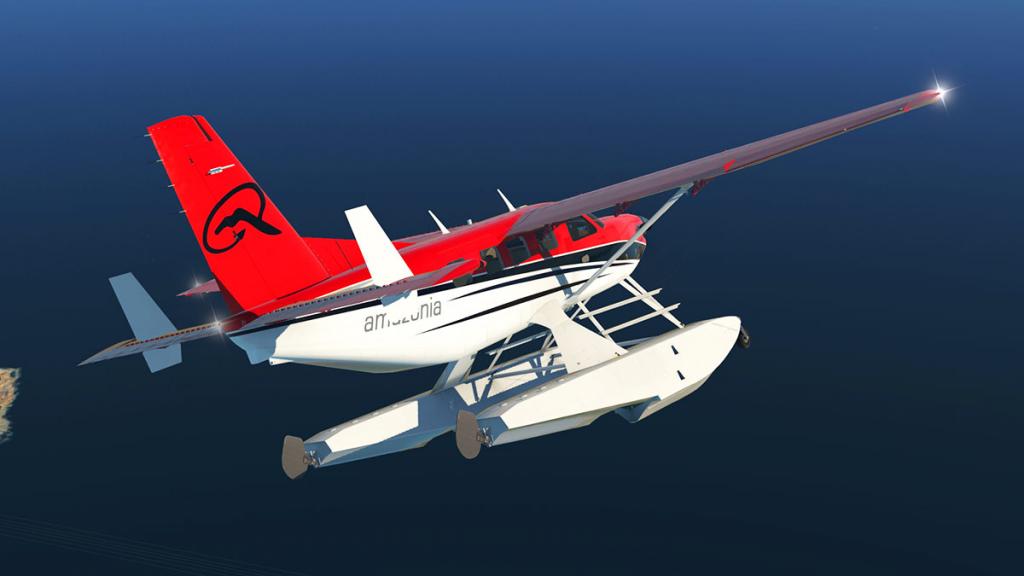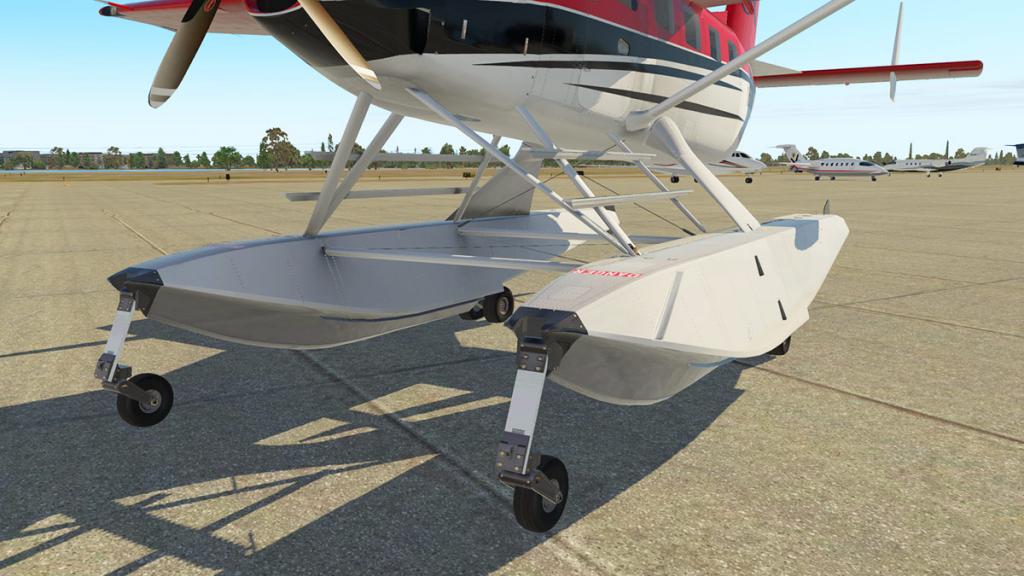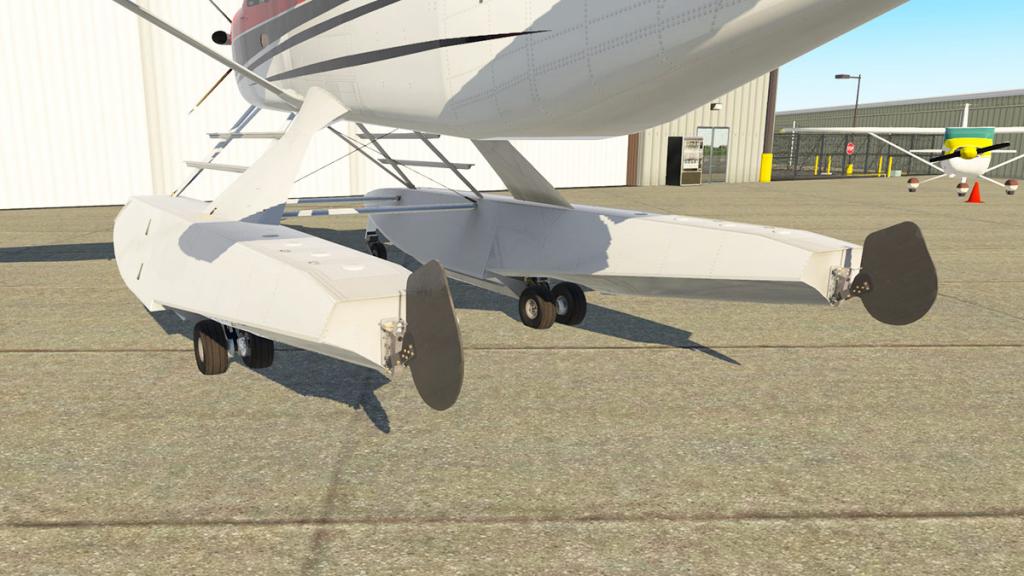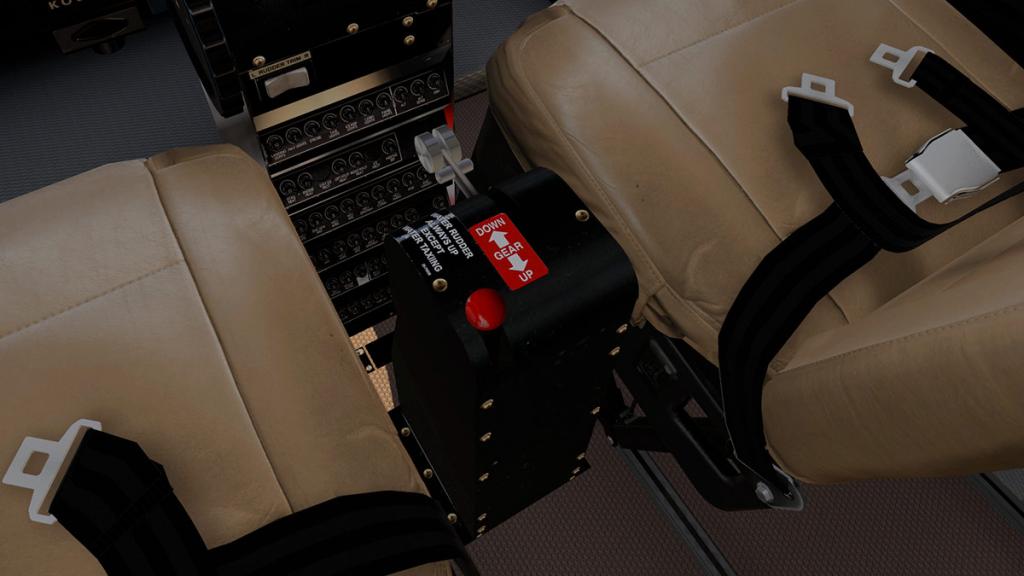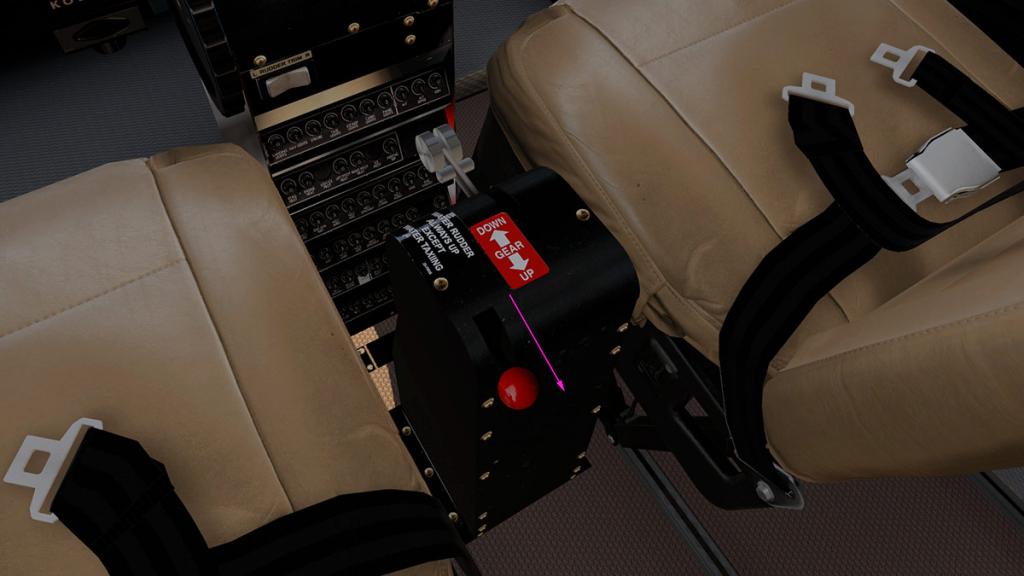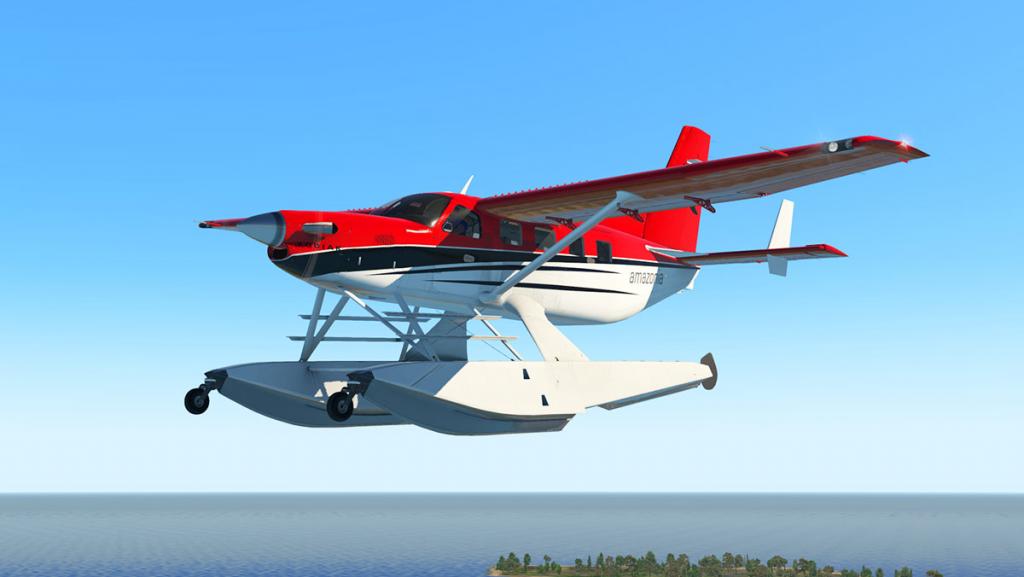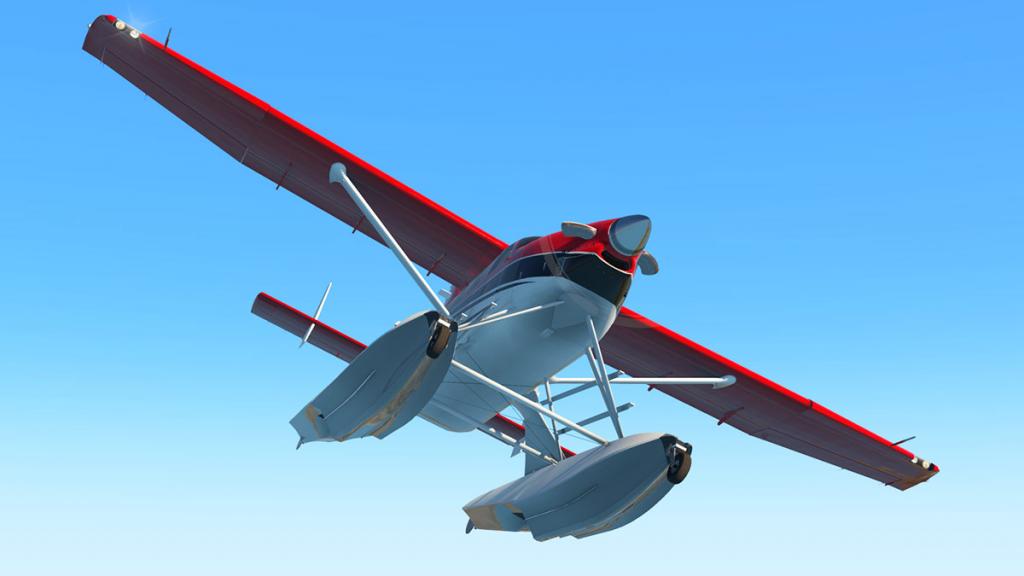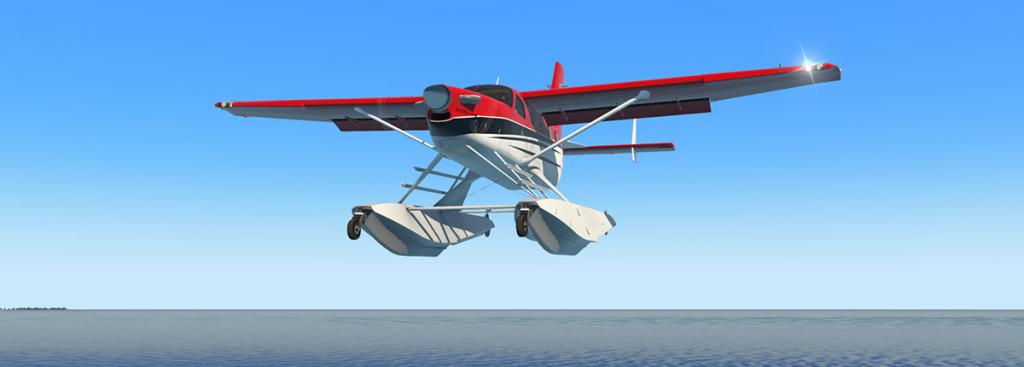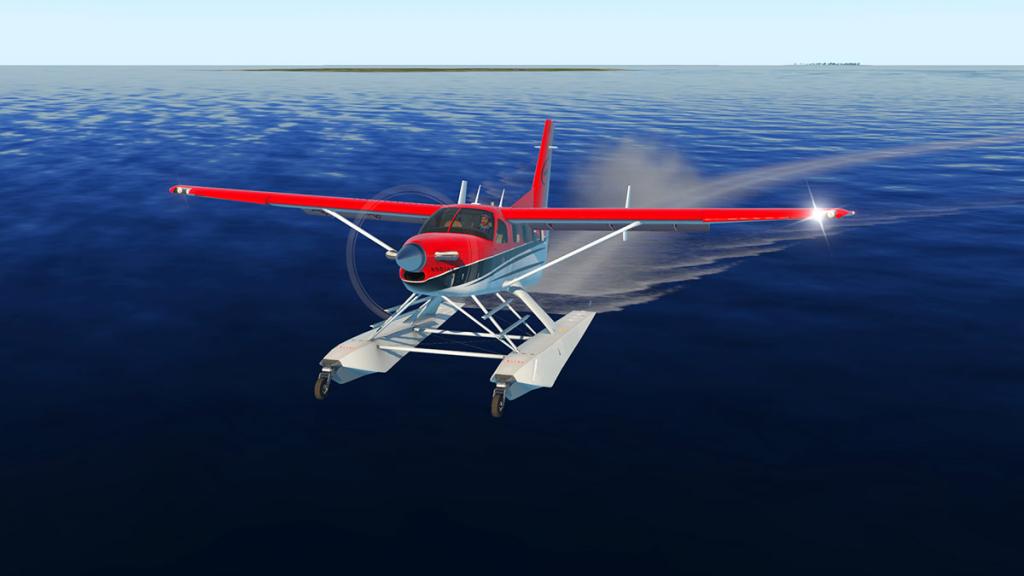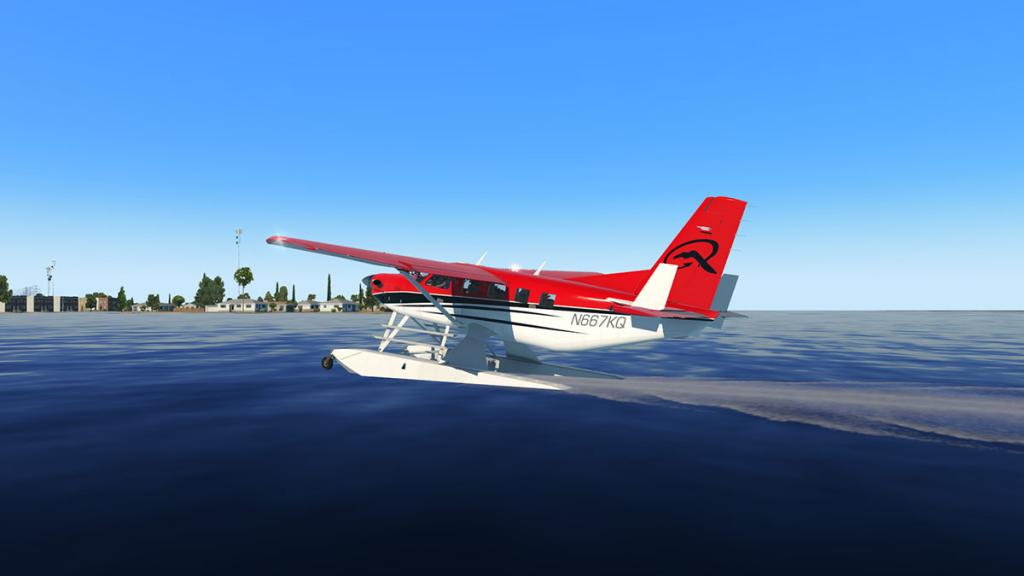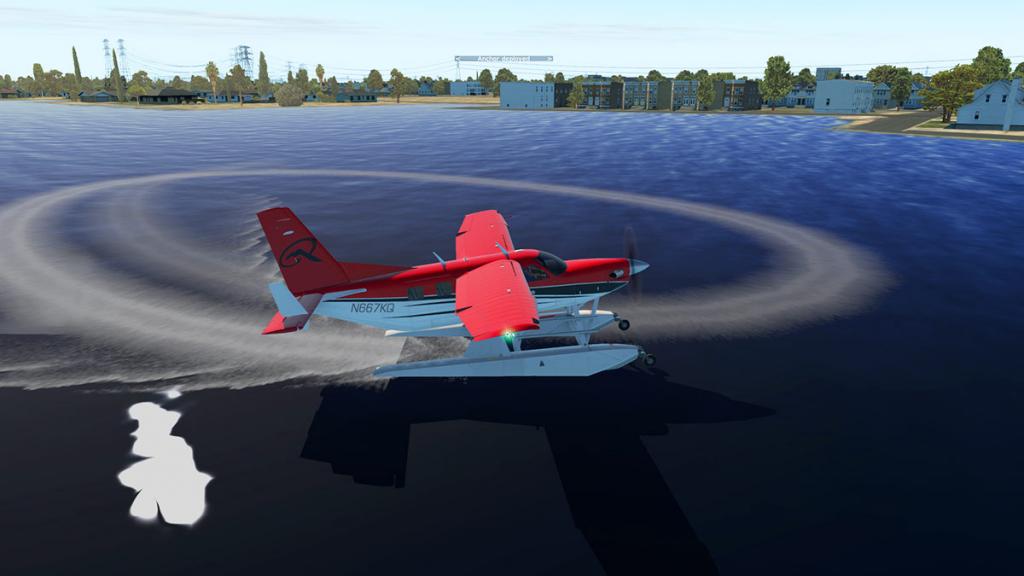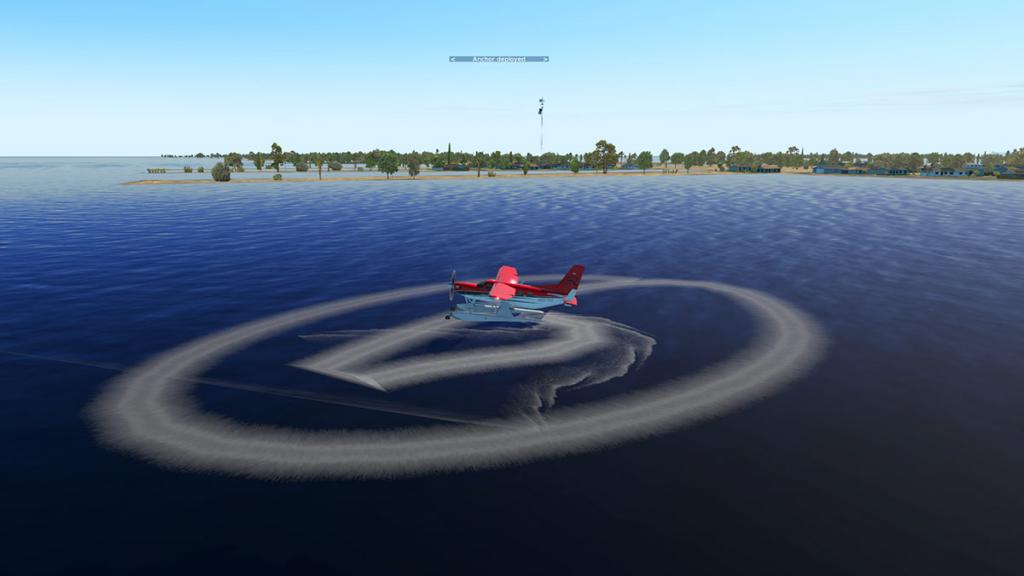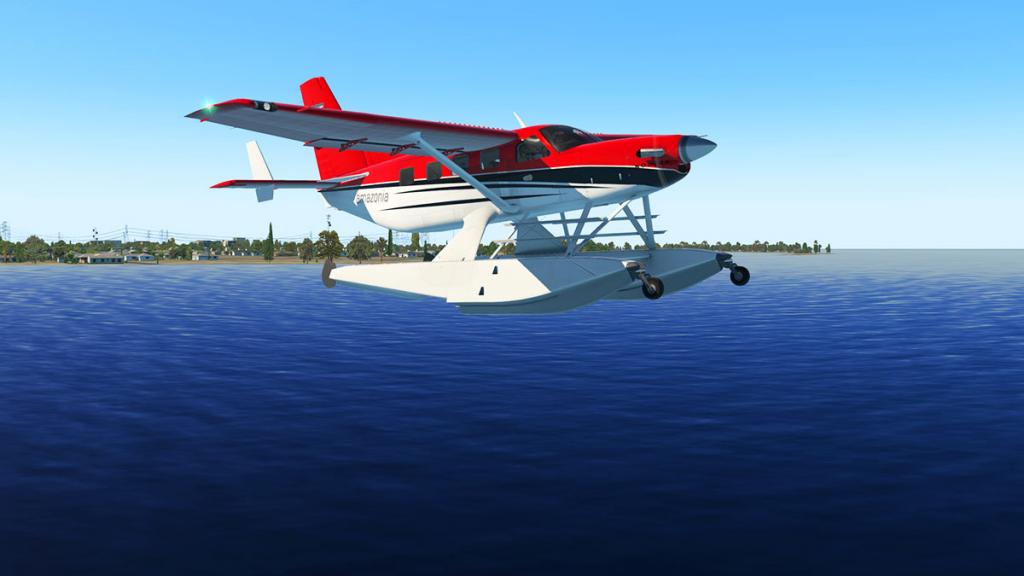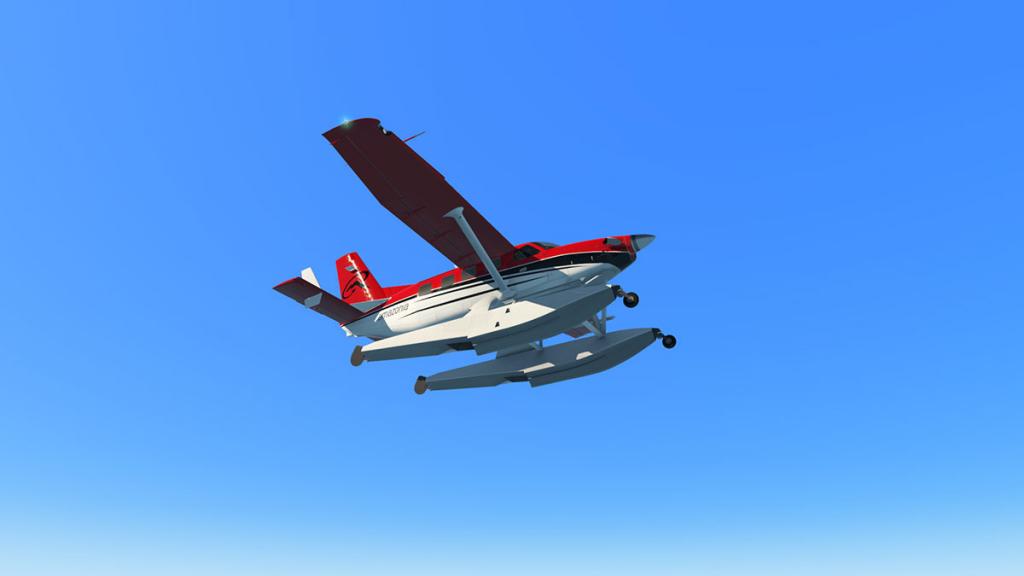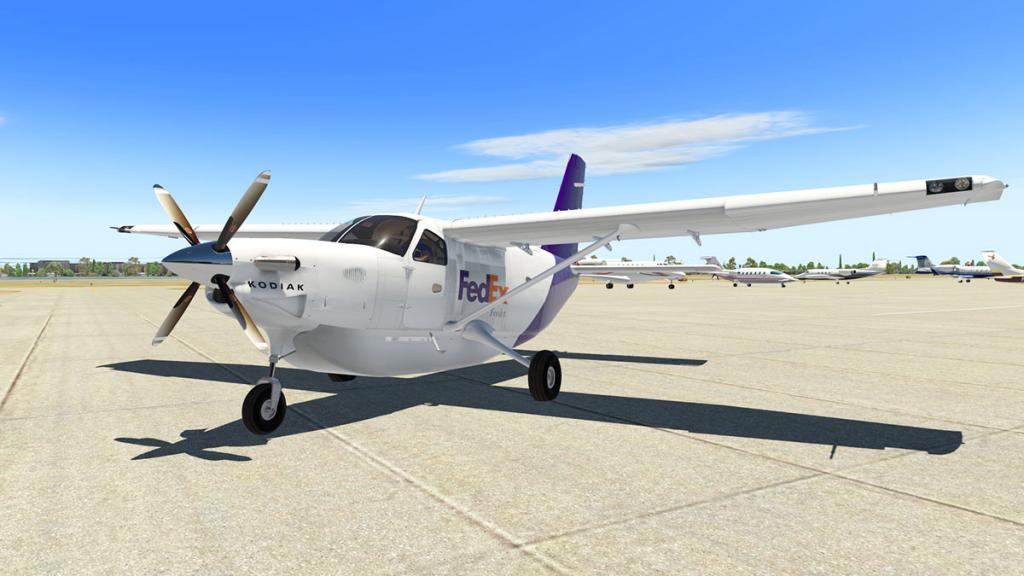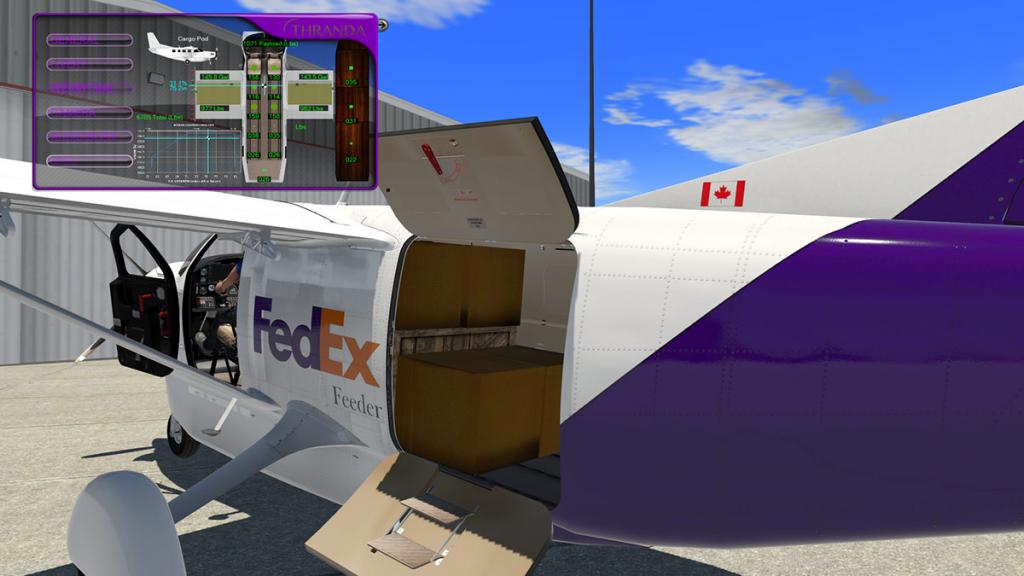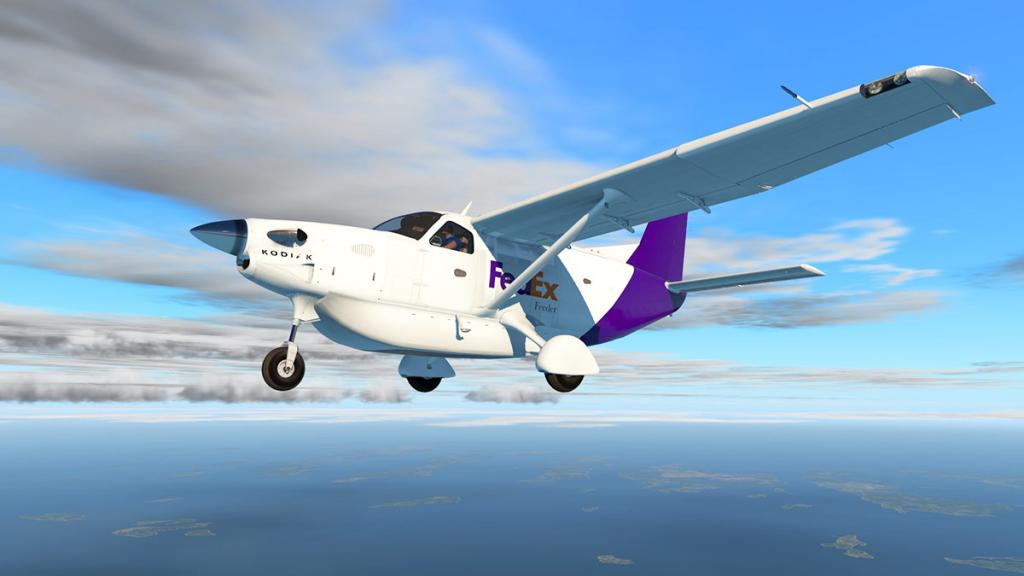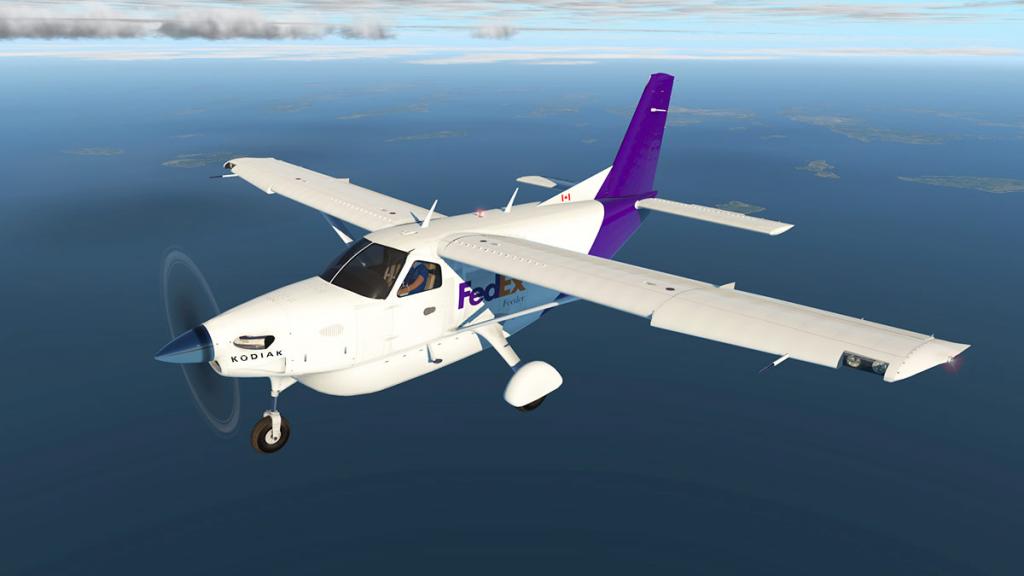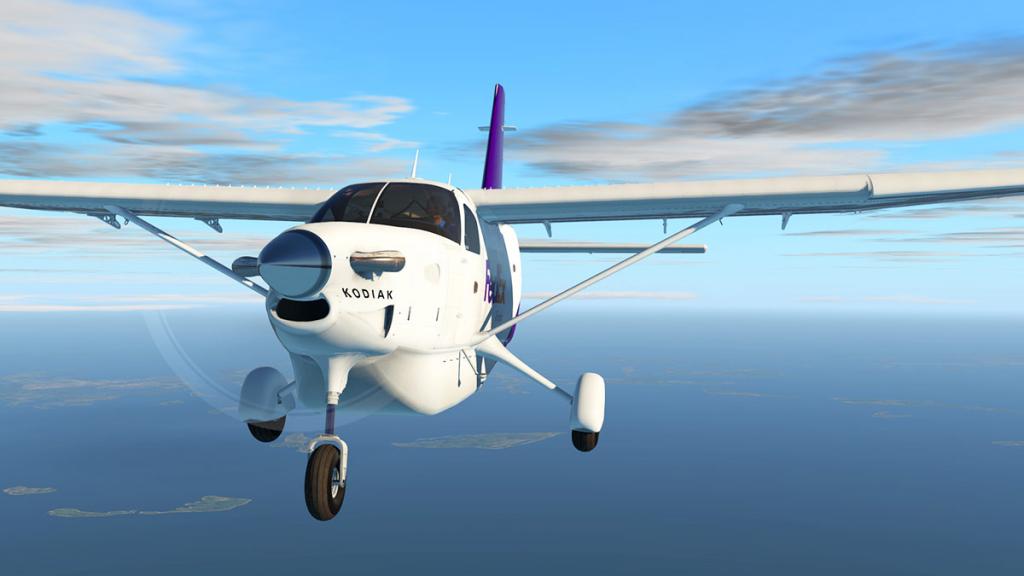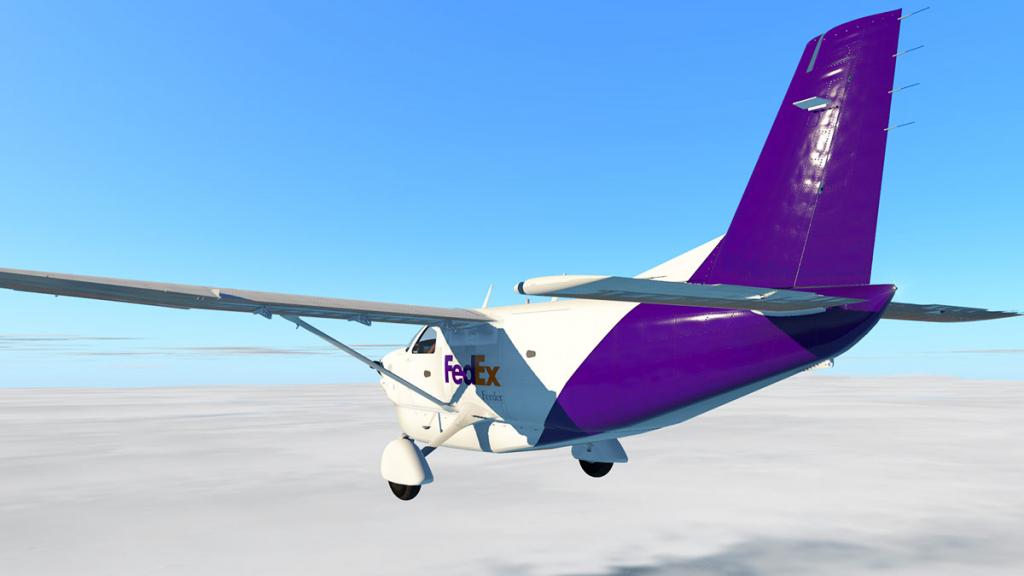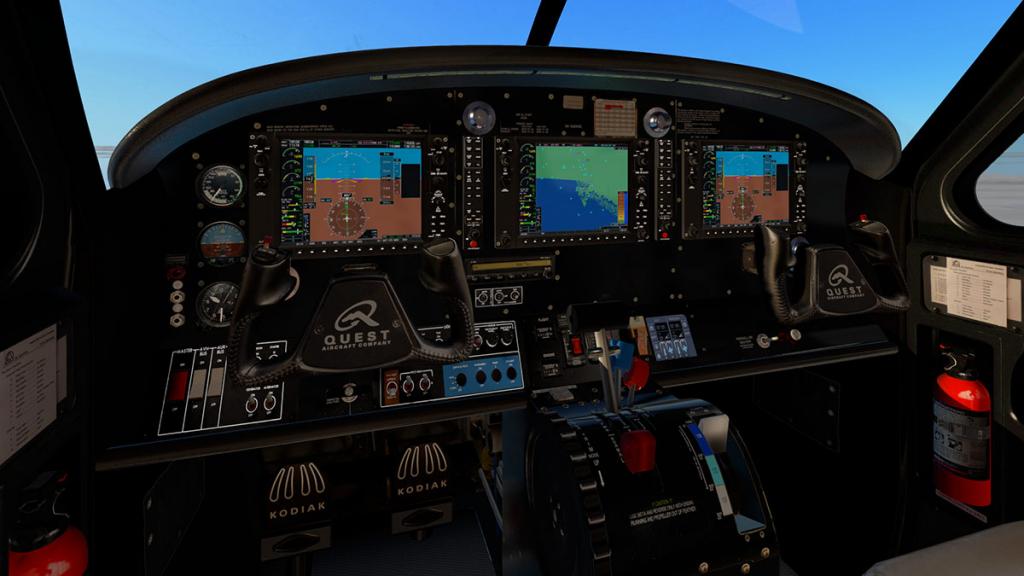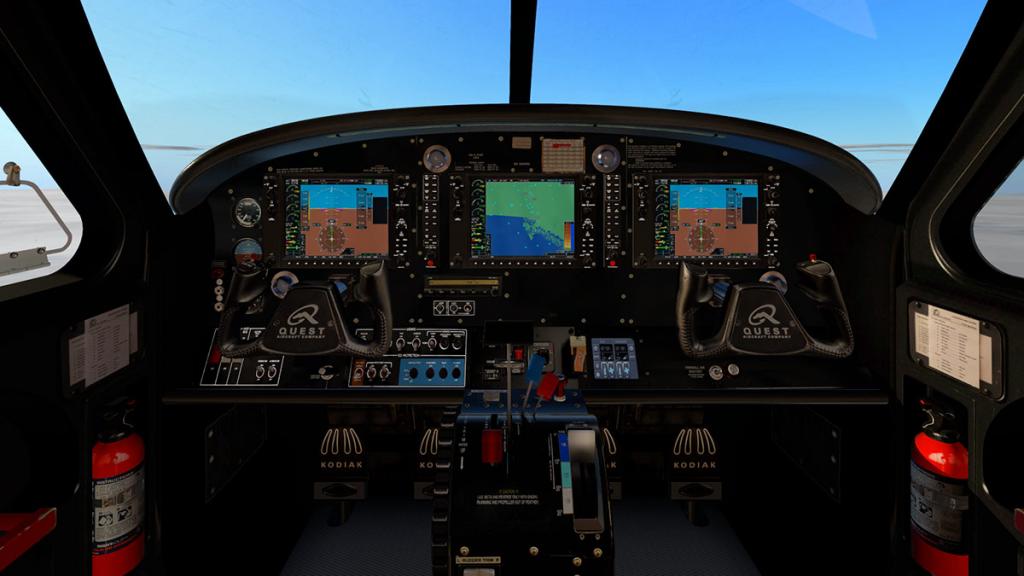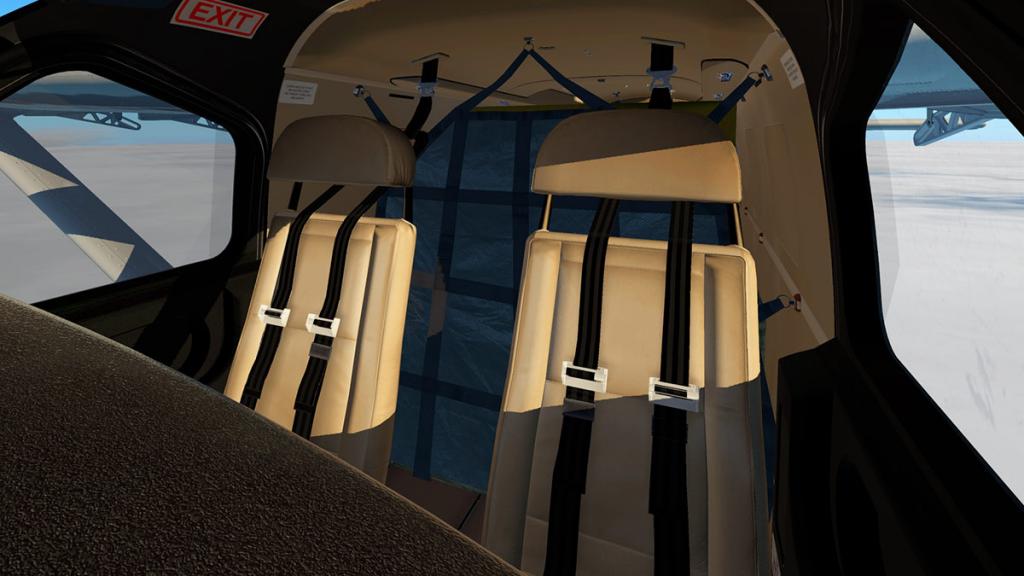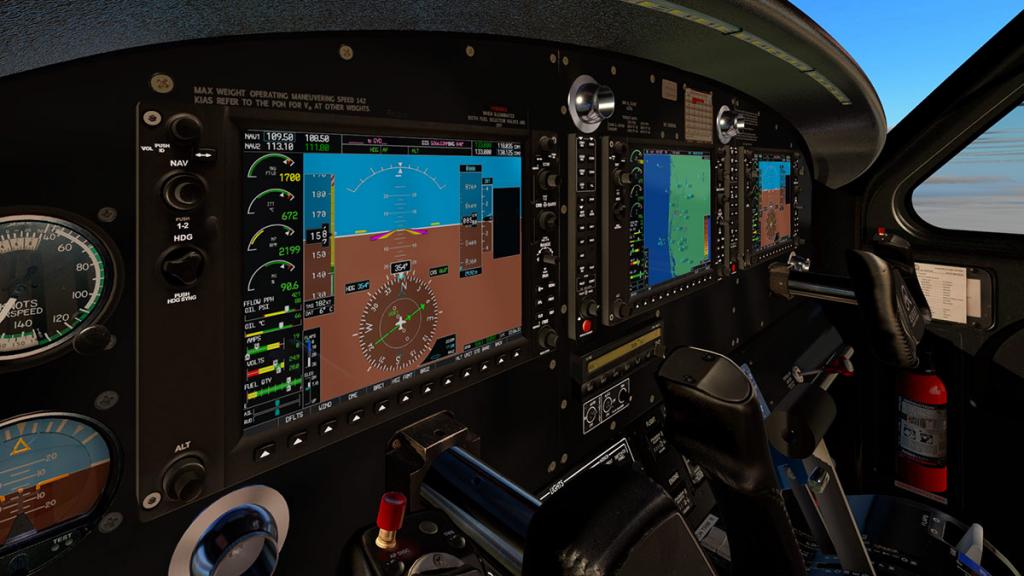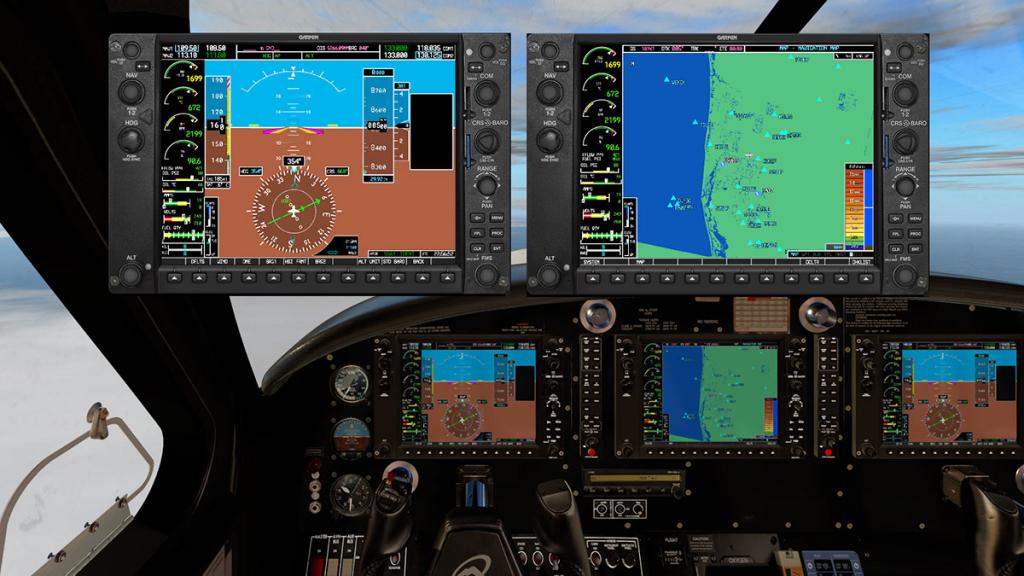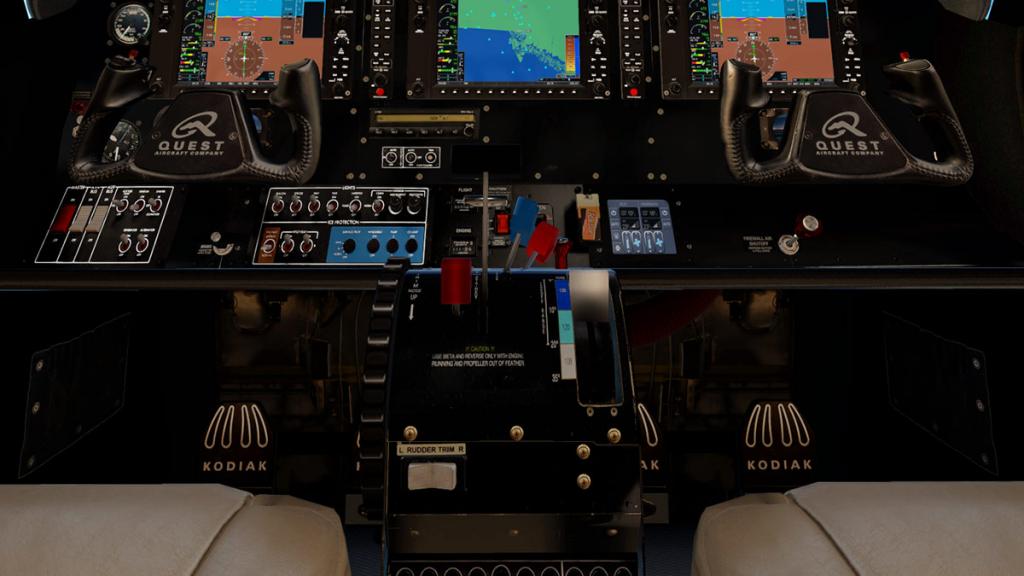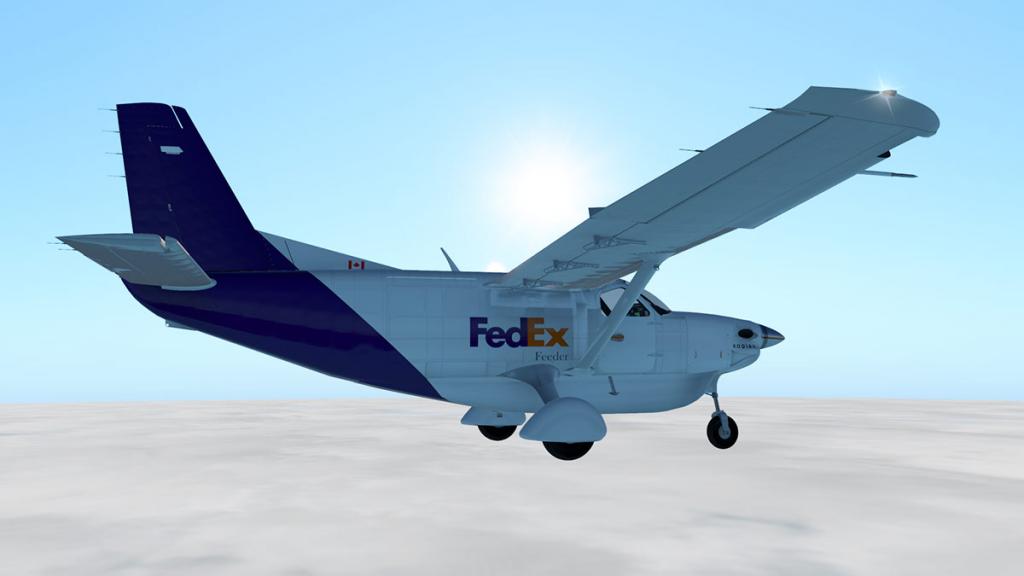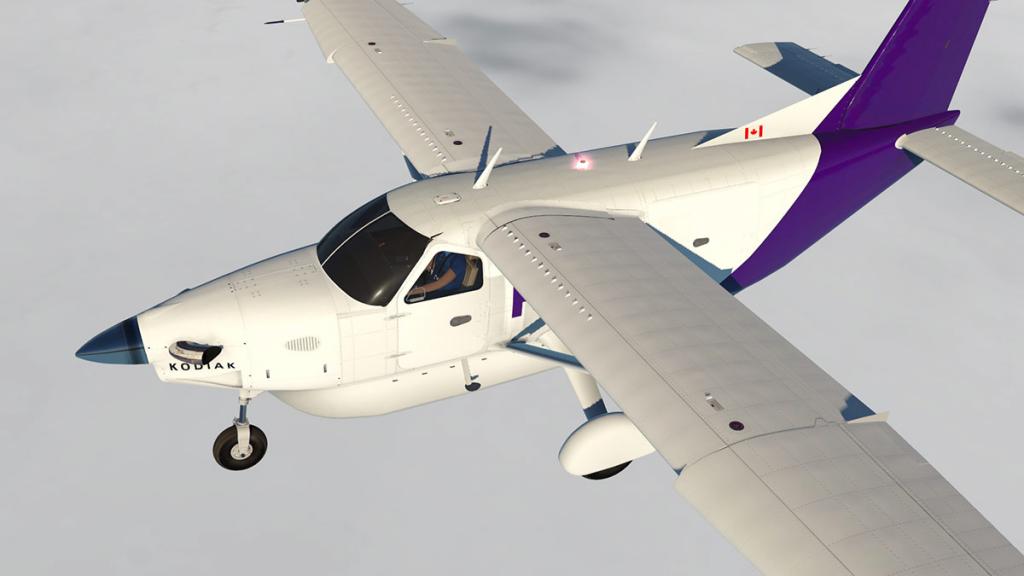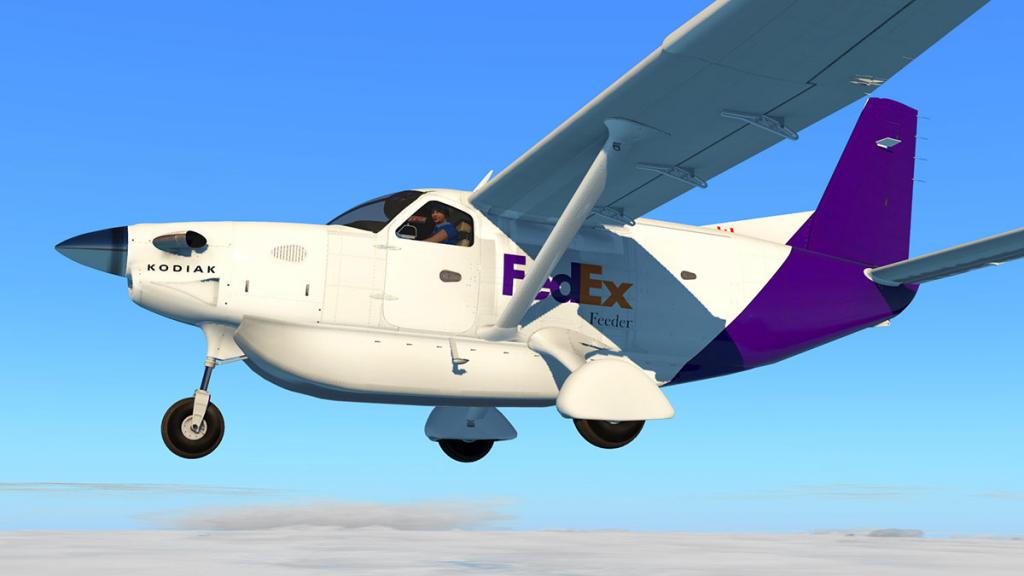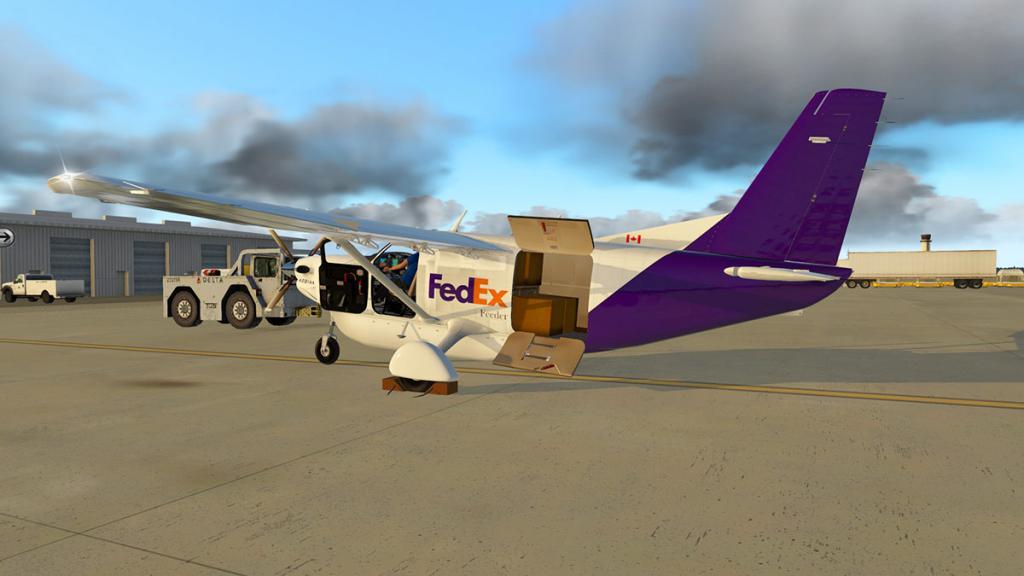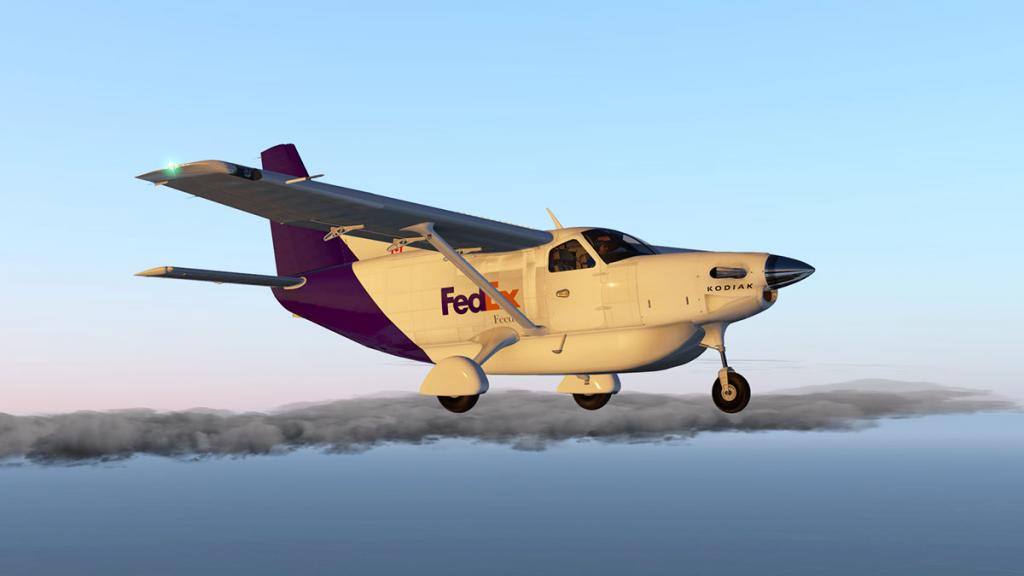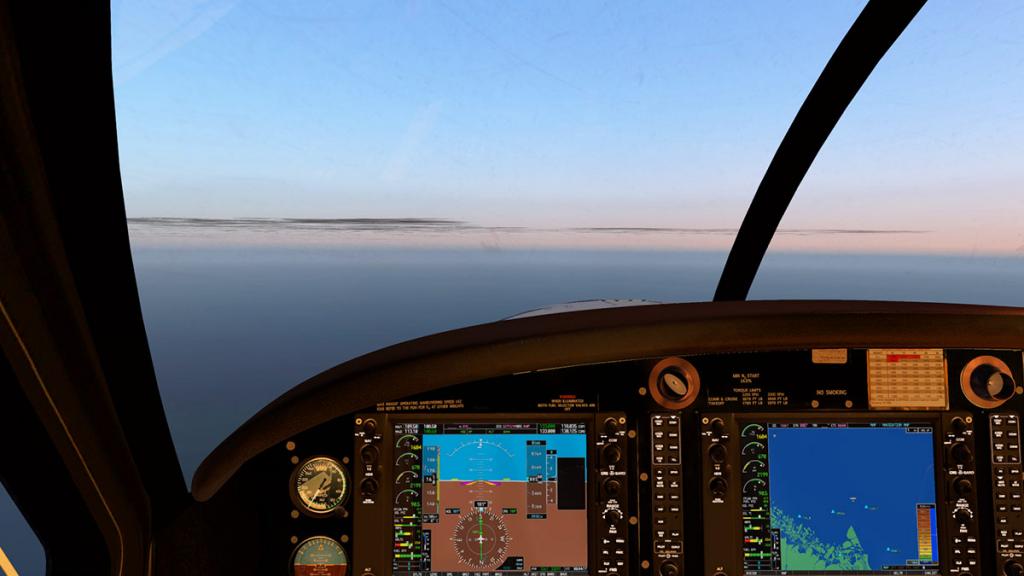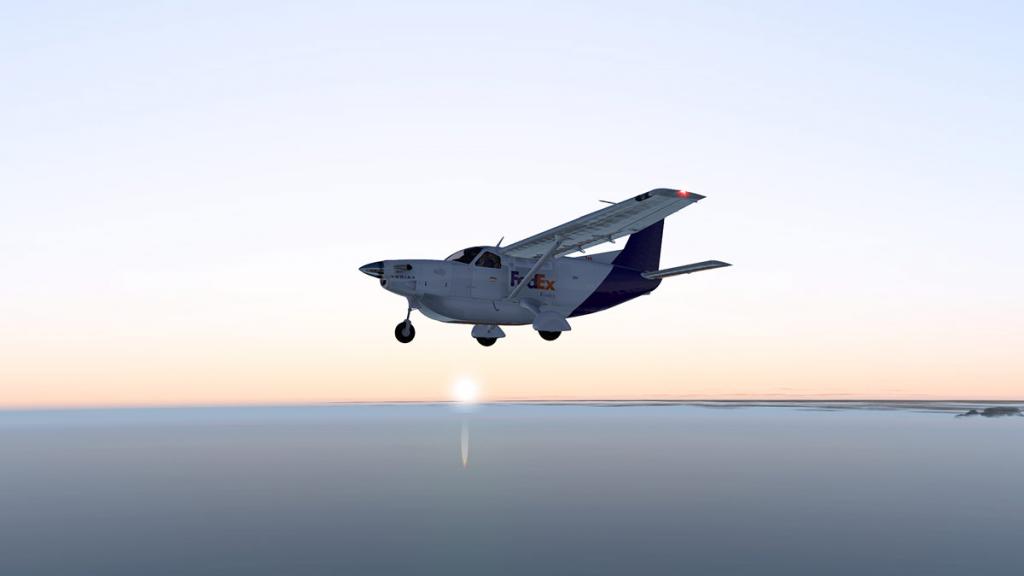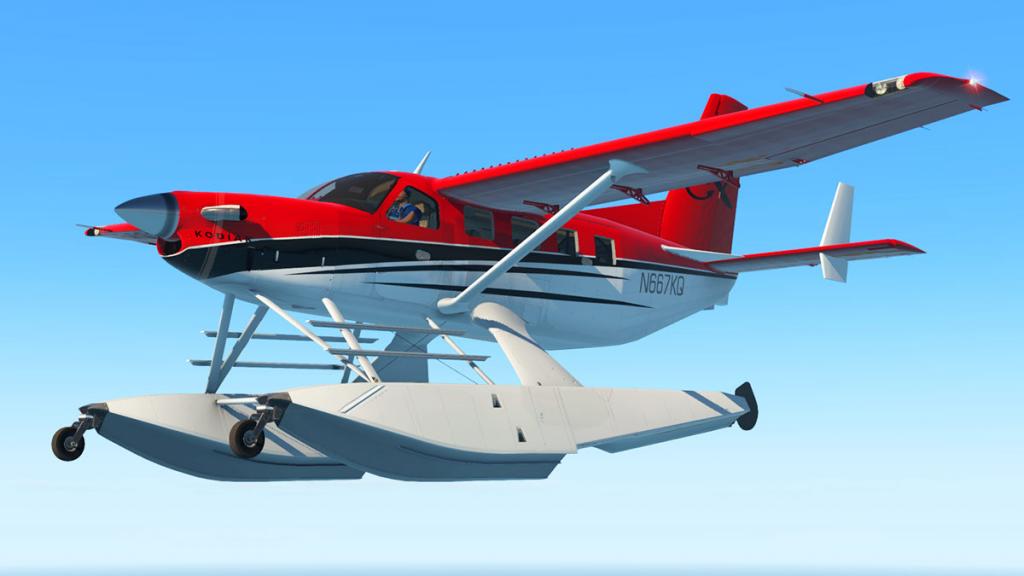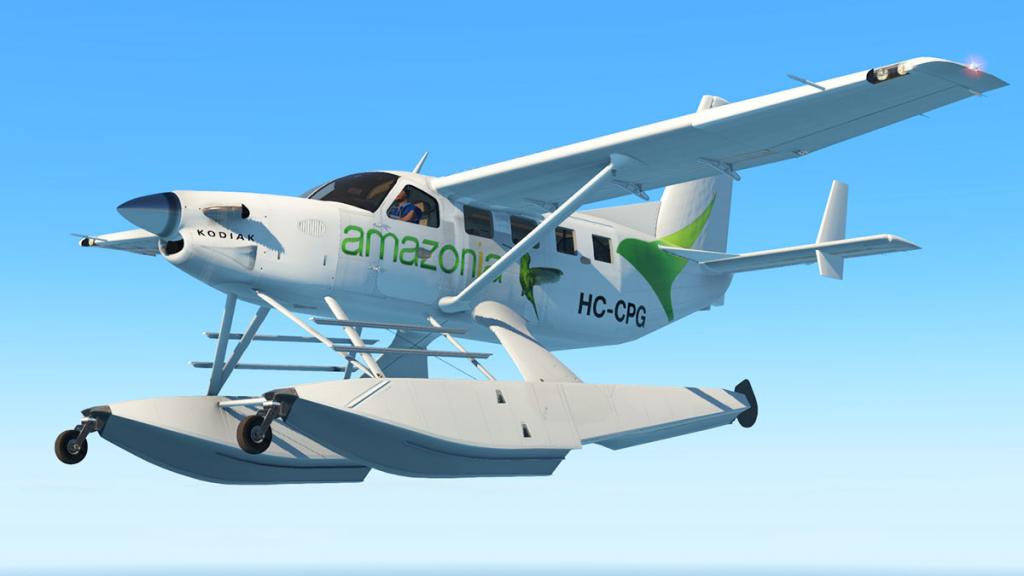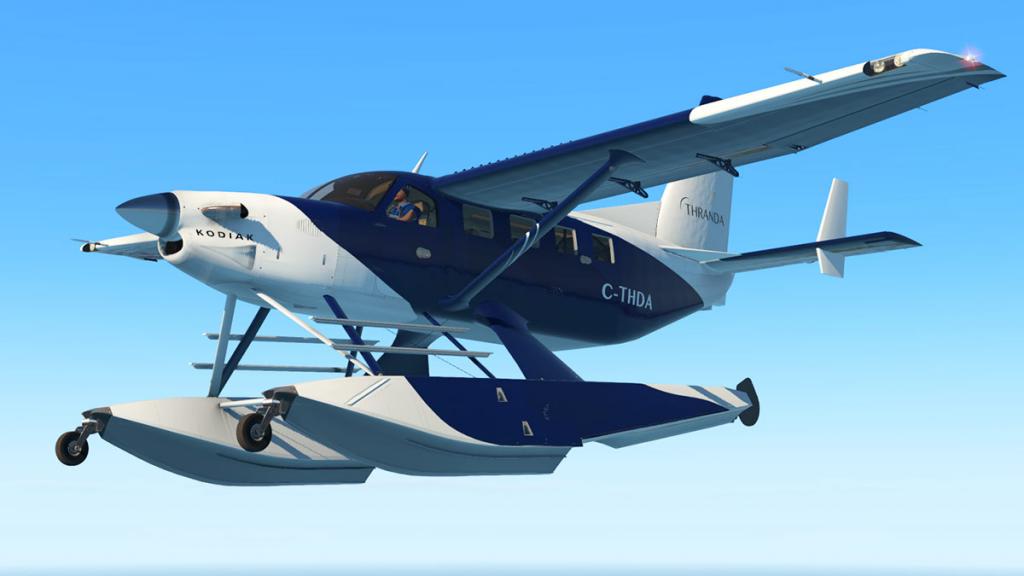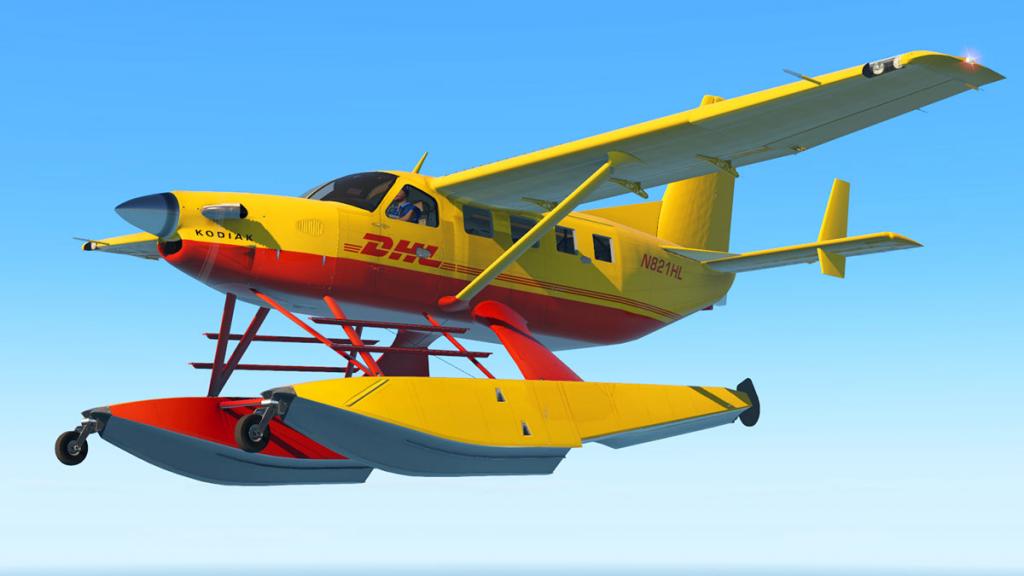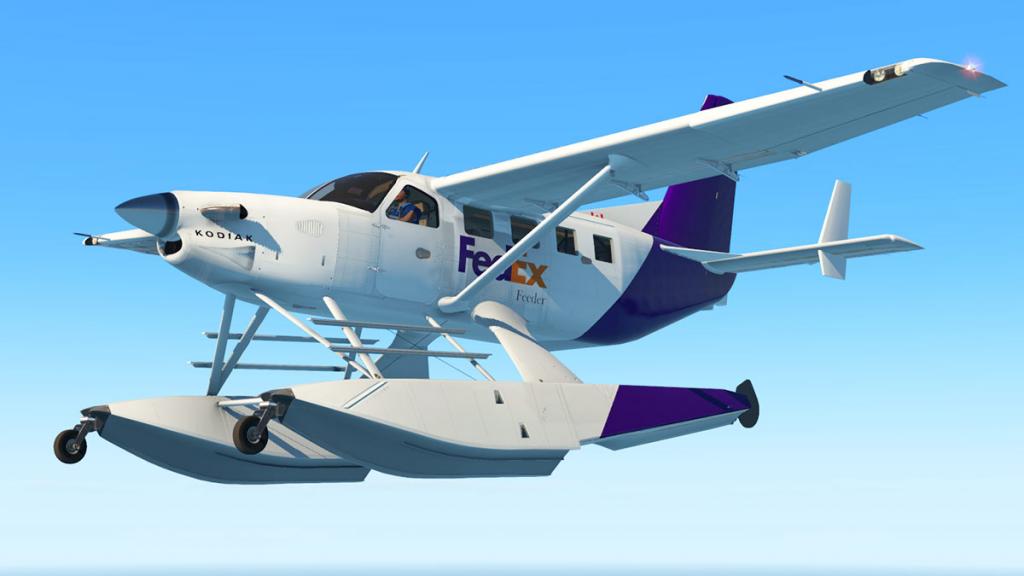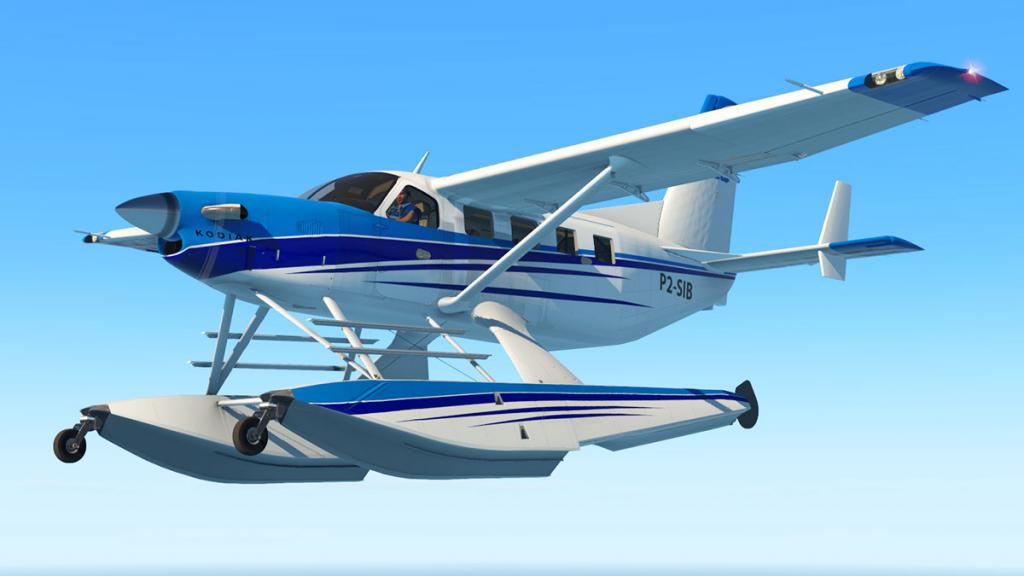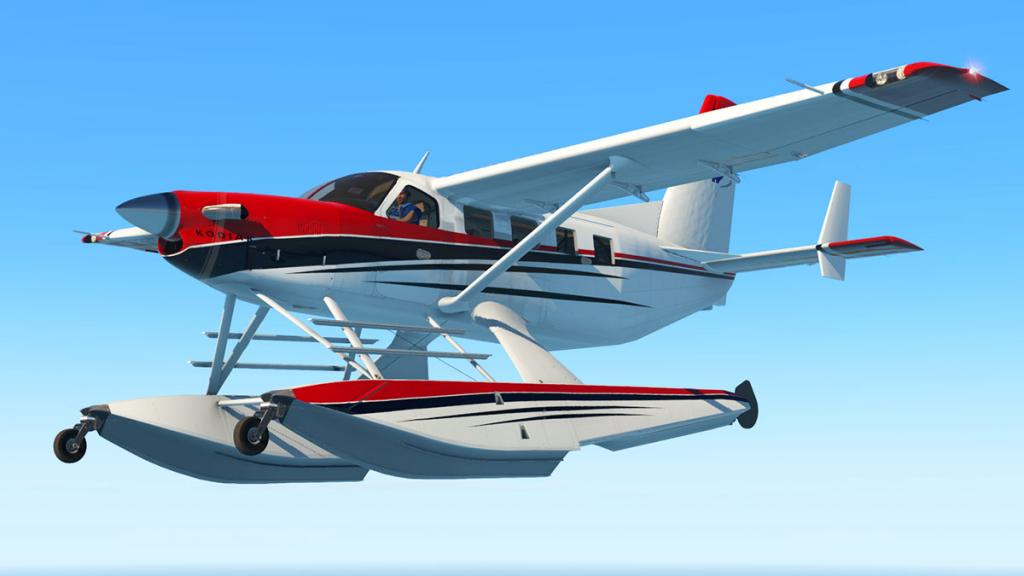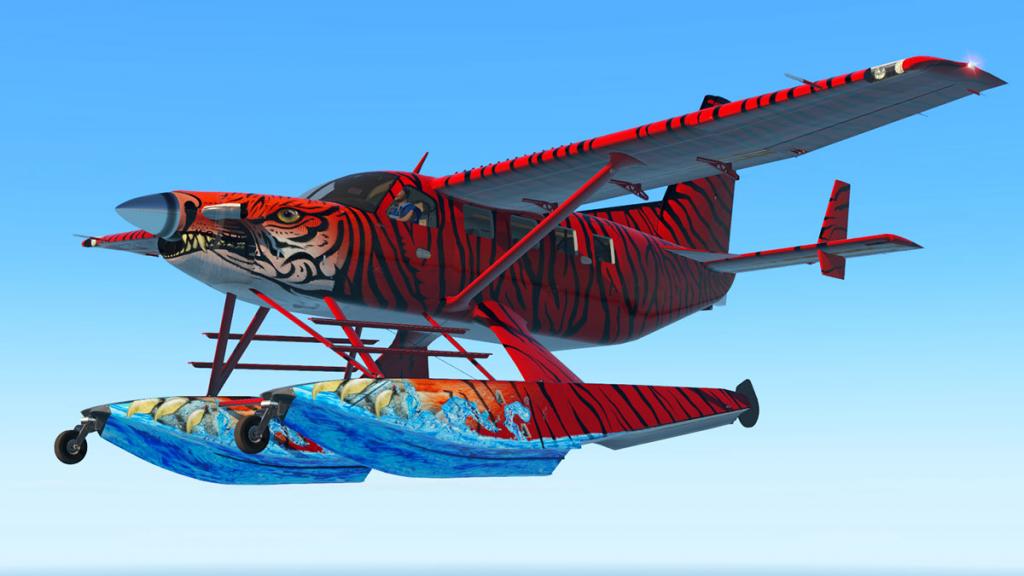Search the Community
Showing results for tags 'thranda'.
-
Scenery Updates : CZST Stewart and CYBD Bella Coola v1.5 by X-Plane.Org Life throws up some weird coincidences... When I did the excellent Thranda Pilatus PC-6 Turbo Porter review back in June I went back to a very old scenery for two reasons, one was in how after all these years is if the scenery still held up to it's status of a winner of the scenery of the year award (2016), and two to try out the now running v11.50 (Vulkan) feature of reflections. I had even planned to use the second of this series sceneries in Bella Coola as a basis for Thranda's next project in the announced Beaver DH-2. Both of these sceneries have now been released under the XPOrg banner or X-Plane.Org. Both sceneries were originally created by Beti-x or Peter Kubek, but the developer has not been involved in simulator for now quite sometime, that aspect puts the scenery into a major conflict, in that in reality it can be seen as abandoned(ware). In most cases a lot of product would date and sometimes quite substantially from this period and gradually fade away. But CZST Stewart and CYBD Bella Coola are not your average sceneries, they are as mentioned award winning sceneries and also far more significant than that in that for their time, as both sceneries predicted the future of scenery development and in features as in detail. In this situation both of the sceneries rights have been bought out by the XP.Org and also revised to current standards, in this aspect the sceneries get a refresh, but more importantly they will survive and carry on well into the simulators future, in this case the XP.Org has to be applauded to save this outstanding work for generations to come from just being a lost cause to the past. I found that in using CZST Stewart in the PC-6 review was that the scenery had indeed faired extremely well. It was released six years ago at about the mid-development point of X-Plane10, and six years in X-Plane development time is an extremely long time for any product to survive without any updates and through the significant changes of texture quality, PBR (Physical Based Reflections), baked burnt-in ambient occlusion effects and metal/glass grading.... but survive well it did. The original CZST Stewart review is here: Scenery Review : CZST Stewart by beti-x CZST Stewart, British Columbia First differences between 2014 and 2020 is of the different atmospheric feel that you have, plus the water effect is now far, far better. Having the Vulkan reflection feature active is also a huge bonus in creating a very realistic panorama, it is a superb feature and not to be underestimated here in Stewart. The CZST airfield itself is located by the Portland Canal, tricky is a word in that both approaches require skill and nerve to get right, but they are also both in return highly rewarding for the pilot. Stewart has only one asphalt runway (more of a sealed gravel strip). 18/36 (3872ft)- Elev. 24ft. CZST is nothing more than a clearing with a big double shed on it, calling it a hangar would be generous... and a smaller garage. There have been changes here since the original release and that is reflected in this updated version... the area to the south of the apron has been cleared, and this aspect has been well represented in this new version. So the apron feels now very open, compared to the more closed in field feel from before... Textures were groundbreaking (no pun intended) for the time, and simply some of the best worn asphalt and stone work you could dream of and it all comes with 3d grass and turf.... .... textures have the resolution of 2cm per pixel, an unheard of quality for the period and here they are still as refined and as highly realistic, but still also have that gritty quality we love, what is the word... exceptional. Outwardly the buildings look exactly the same. But they are quite different in that the textures have been again reworked and refined to modern methods with burnt-in ambient occlusion effects and PBR reflections that gives the glass its reflective (lower doors and side windows) effects, the newer textures brings also out the lovely wear dirt lower brickwork to the more cleaner higher building paneling realism, doors are superbly rusted to perfection. Noted is that more static elements have been added to the scene... two MHS Aviation AS350 B2 helicopters now also grace the pad, and a lot of personnel in Hi-Viz jackets... this is a debatable element? Field strips like Stewart are remote, and not hubs of aviation activity. Yes the figures look very good, but in reality very few people hang around or are to be seen working around on aprons like this... debatable. That said it is very well done with hi-quality figures. Another huge change and addition is the amazing ship sitting at the new wharf... ... ships in X-Plane scenery are usually very basic, but this... is breathtaking in realism! with so much quality and detail, and you will fly over the ship every time to arrive on RWY 36 or depart RWY 18, shame there is no name on it? The wharf is all new and extremely well done, detailed and as are the older harbour areas, and the distinct woodmill wharf that is also still excellent. Another profound aspect of the original Stewart scenery was the township itself. Obviously recreating a small township like Stewart is not new to X-Plane, but Stewart was a very significant step forward in design in that the whole town was totally recreated, that is not just with generic buildings, but the WHOLE town with EVERY SINGLE building was recreated as a custom building, no two buildings are the same unless they actually are at Stewart, and if you think about that aspect of photographing and recreating everything there, it is a mindblowing experience... but that is what was done here as a complete photographic 3d reality of the area. All the main significant buildings are correct including all other main town buildings in Churches, Schools, Port & Fishing facilities, Fuel Stations, Fire Station, (Mounted) Police, Utilities in power stations and even the standing out blue roofed Stewart Health Centre and note the sited H-Pad in front of the building. The Stewart scenery represented for X-Plane the first real fully walk-around scenery, a place to explore as per the real life Stewart township, and I have done so mostly every time I come here... it is and still is an extraordinary achievement. Any negatives.. the trees are still only 2d and the original versions, okay but just passable for a very high quality scenery like this. Lighting is still also one of the best in X-Plane, and still a high standard to meet, not just with the big in drop down lighting and nice windows, but the minute small detail in say this Coke Cola machine... the service station was the highlight in the original and it still looks as great here... Shops, garages working at night, every house, every business is lit here as per perfection. __________________________ CYBD Bella Coola, British Columbia It was three years until Beti-x released their second scenery after CZST Stewart in another British Columbia scenery and in many aspects a very, very similar layout as the former release in CYBD Bella Coola. Original Review is here: Scenery Review : CYBD - Bella Coola BC by Beti-X Yes it was again set deep within a valley, yes it had a river flowing past the runway, yes every single building was a custom building, yes it had a tricky approach and departure... and again it was all as mindblowing. The only slight difference was that the township of (lower) Bella Coola was not situated behind the airport but the airport is placed a 14 km a distant west from the main townsite. And unlike Stewart then CYBD is more of what you would call an airport than a strip of runway, it even has a terminal building, well sort of in a house with an extension built on to it. Again a few more people have been added, but in reality there was a few placed already in the original scenery, here the new members are more by the remote buildings/hangars than the terminal ramp area, but the additions are far fewer here than at Stewart. The detail was again astounding... well it did take three years to do, so what did you expect. And here it still looks as good in X-Plane as it did back then... but like Stewart the buildings have also had their textures refined and processed for v1.5, so the glass and roofs are more reflective and shiny when need to be and any metal-ness or steel buildings, water or fuel tanks now look far more realistic in nature. Textures are again sublime, asphalt is in variations, cracked and worn edges, oil spills, rubber wear, and you still have to love the faded compass detail. CYBD has one tarmac runway that is 05/23 at 4,200ft (1,280m) - Elev. 117ft. From a reviewers point of view, in that once seen, you expect other developers to be as good or better, but that is putting the bar far too high, a lot of developers have done some brilliant ground texture work and yes even a few have reached these impressive heights, but they are still the best of the best you have ever seen in a simulator. Bella Coola Valley As noted the Bella Coola scenery is far more spread-out andthere are more villages than big townships out here, so in actual custom building count they are actually quite similar, but here most are laid out around the Hwy 20 (Chilcotin-Bella Coola Highway) that winds right down from the the east of the airport of the Hagensborg township, right down through to the dwellings of going westward to Lower Bella Coola, then to Bella Coola itself. Hagensborg above and Lower Bella Coola below. One significant difference between Stewart and Bella Coola sceneries is the 2cm per pixel definition is not used (it is around the airport) but here it is the standard 50 cm per pixel definition and it shows, certainly around Lower Bella Coola and Bella Coola, this was one area I thought would be updated in this version... But the quality of the custom buildings are excellent including the Mamayu (butterfly) building. Bella Coola itself is positioned on the North Bentinck Arm inlet right, and the Government Wharf is prominent here, and very well done. Lighting is very good, but there is not a lot of it, even the runway is unlit at night, so all the lighting is restricted to just windows and street lighting, the quality however is very good. One feature that Bella Coola has that Stewart does not have is that "Winter Textures" are provided. These textures are used here under the JSGME/Generic Mod Enabler system... I have no information if they work under the more recent SAM Suite Seasons system, but I would guess as yes... The results are quite still spectacular, and are well worth the switch over with the JSGME... ______________________________ Summary Both of these former Beti-x sceneries are award winning packages that set the extremely high standards of what could be achieved in X-Plane scenery development, the sceneries in CZST Stewart and CYBD Bella Coola are both situated in Canada's British Columbia territory are now owned by the X-Plane.Org by a purchasing agreement of a change of rights. But the change of owners has not meant just a transfer of the scenery, but an update to bring the scenery up to the current X-Plane11 standards and dynamics, and even added in a few additions to make them more involving. The most significant aspect of the sceneries is that they set standards of quality that are still not even being matched today, clever then, they are still outstanding today in the sheer concept and resulting outcome. Ground textures are simply the very best in X-Plane, custom modeling of every building as per real, and not just the airport, but of the whole township itself, and the detail is overwhelming and walk-around (another first) and both sceneries took over six years to complete, both these sceneries are VFR heaven in detail and complexity. The v1.5 update shows that the Stewart and Bella Coola sceneries have lost none of their original impact and quality, added has been updates to meet the current X-Plane dynamics in burnt-in ambient occlusion effects, PBR reflections and Glass/Metalness enhancements, not forgetting the natural X-Plane advances since the original releases of the sceneries that includes better water, better weather, shaders and even Vulkan/Metal power. Additions include more ground personnel and in the Stewart scenery a new wharf and high quality ship... All in all it adds up to quite a set of packages. (the "winter" option is also still available for Bella Coola). One of the most significant aspects of this v1.50 update is that both of these former Beti-x sceneries have not thankfully been consigned to history. And to have them not only revitalised, but also refined to still provide their outstanding features to future X-Plane generations is persevering a historical element of the simulators breakthough quality scenery periods of its past, not that they were now anything but relics but are still extremely more relevant than ever and still can deliver countless hours of enjoyment... outstanding then, both Stewart and Bella Coola sceneries are even more outstanding and relevant now... a must have investment for any private or bush pilot. ______________________________________________________________________ Yes! the CZST Stewart v1.5 scenery by XP.Org is now Available from the X-Plane.OrgStore : CZST Stewart Price is US$25.80 (Currently on sale:$17.50) Features: faithful replica of the real airport with HD buildings and pre-rendered ambient occlusion the airport surroundings with handcrafted ground imagery and a resolution of 2cm per pixel surrounding Photoscenery at a resolution of 50 cm per pixel covering an area of over 150 square kilometers volumetric grass hand placed 3D trees and other custom objects precisely visualized town of Stewart, with every building modeled in 3ds MAX, the architecture of the buildings fits in precisely with this location dozens of hand placed POIs, such as the museum, schools, fire station, port, fuel station, hospital and many others simulator many species of HD trees and landscape with dense forest hand edited Mesh of the whole area. Edited abnormalities in terrain elevation, perfected roads etc Requirements X-Plane 11 Windows, Mac and Linux 4 Gb+ VRAM Video Card Download Size: 586 MB Current and Review version: 1.5 (September 21st 2020) ____________ Yes! the CYBD - Bella Coola v1.5 scenery by XP.Org is Available from the X-Plane.Org Store here : CYBD - Bella Coola Price is US$24.00 (Currently on sale:$17.50) Features: Faithful replica of the real airport with HD buildings and pre-rendered ambient occlusion Airport surroundings with handcrafted ground imagery with a resolution of 2cm per pixel Surrounding Photoscenery at a resolution of 50 cm per pixel covering an area of over 275 square kilometers Volumetric grass Hand placed 3D animated trees and other custom objects The architecture of the buildings fits in precisely with this location Winter version included 1GB of pure High-detailed fun Requirements X-Plane 11 (or XP10) Windows, Mac or Linux 4 Gb VRAM Minimum. 8 GB+ VRAM Recommended Download Size: 1Gb Current and Review version: 1.5 (September 21st 2020) _____________________________________________________________________ Scenery Review by Stephen Dutton 29th September 2020 Copyright©2020 : X-Plane Reviews (Disclaimer. All images and text in this review are the work and property of X-PlaneReviews, no sharing or copy of the content is allowed without consent from the author as per copyright conditions) Review System Specifications: Computer System: Windows - Intel Core i7 6700K CPU 4.00GHz / 64bit - 32 Gb single 1067 Mhz DDR4 2133 - ASUS GeForce GTX 1080 8Gb - Samsung Evo 1Tb SSD Software: - Windows 10 - X-Plane v11.50 Addons: Saitek x52 Pro system Joystick and Throttle : Sound - Bose Soundlink Mini Plugins: None Scenery or Aircraft - Pilatus PC-6 Turbo Porter - DGS Series by Thranda (X-Plane.OrgStore) US$34.95
- 6 replies
-
- beti-x
- x-plane.org
-
(and 2 more)
Tagged with:
-
NEWS! - Aircraft Updates : Thranda Kodiak/PC-6/Beaver/Wilga on Sale! Thranda have updated four of their aircraft in the last major set of changes before X-Plane12 is released, they also come with a 40% discount and include Thranda's acclaimed "Dynamic Generation Series" (DGS). Extremely versatile and customizable, these planes provide great value and have many tinkering options. Another bonus is that the earlier optional Pilatus PC-6 Turbo Porter Adventure Pack, is now included with the PC-6 aircraft for free. The four Thranda Aircraft updated include: Kodiak Quest, Pilatus PC-6, DHC-2 Beaver and the Wilga PLZ 104. All upgrade/changelog details are set out below: Kodiak Quest G1000 - DGS Series - X-Plane.OrgStore - On sale: $32.95 US$19.77 Kodiak v2.3 Changelog: Improved accuracy of Weight and Balance popup clickspots and cursor position. Added pointer-hand cursor to weight and balance popup. Added Docking Mode Toggle command: "thranda/operations/DockingModeToggle" Added: Releasing the parking brake will toggle SlewMode / Docking Hold off. Adjusted nose wheel steering sensitivity to improve ground handling and control. Adjusted torque green arc limit to correspond to 1670 ft-lbs. Adjusted prop airfoil to fix slow climb rate when at 2200 RPM. Icing placard warning is hidden when the de-ice system is enabled. Adjusted spacing on MISC popup page for "Anti Ice Equipped" line. Added Synthetic Vision Plugin for the G1000. Add manifest option "SeatClickLbs" to set how much weight gets added when clicking on a seat in the W&B popup. Add Auto-trim system. As flaps are extended or retracted the pitch trim automatically runs to compensate for the nose-up or nose-down moments. Active above 35 knots and when flaps are extended 5 degrees or more. Add visible cargo in the cargo pod. Fixed COM frequency swap buttons on G1000. _____________________ Pilatus PC-6 Turbo Porter - DGS Series - X-Plane.OrgStore - On sale: $34.95 US$20.97 PC-6 v1.3 Changelog: Merged Expansion Pack features (amphibian, G1000, etc.) into the main PC-6 package. Added altitude preselect instrument to panel preset 0 (Instrument #45). Altitude preselect (Instrument #45) turns on with Avionics Master switch now. Altitude preselect (Instrument #45) large knob adjusts 1000 feet, small knob 100 feet now. Added visual feedback to "Load" and "Save" buttons on Weight and Balance pop-up. Fixed ADF frequency knobs. The frequency should now change by only 1 digit per click. Fixed pitot tube cover not failing the airspeed when the 2D popup is not open. Amphibian: External power GPU is available for the amphibian now too. Amphibian: Tiedown ropes can be individually toggled for the amphibian. Amphibian: Gear and water rudder should properly initialize based on the starting surface type. Amphibian: Should show up as a seaplane in X-Plane's Flight Configuration window UI now. Improved accuracy of Weight and Balance popup clickspots and cursor position. Fixed crash in plugin when removing panel presets. Added Docking Mode Toggle command: "thranda/operations/DockingModeToggle" Added: Releasing the parking brake will toggle SlewMode / Docking Hold off. Added: GTX327 transponder automatically goes into night lighting mode after sunset. Add manifest option "SeatClickLbs" to set how much weight gets added when clicking on a seat in the W&B popup. Fixed: Aspen EFD1000 random digits in speed select when using press-and-hold to sync IAS mode to current airspeed. Fixed VR config errors. Fixed G1000 COM frequency swap buttons. Added Synthetic Vision plugin for G1000. Fixed GNS #1 or #2 appearing when G1000 is toggled on in the Panel popup. Add toggleable baro units for pilot altimeter (click on the Kollsman window to toggle between mb/inHg) _____________________ DHC-2 Beaver - DGS Series - X-Plane.OrgStore - On sale: $34.95 US$20.97 Beaver v1.2 Changelog (May 2022) Fixed error in calculation of fuel tank CG in weight and balance window. Fixed tiedowns not being individually toggleable when using the amphibian. Improved accuracy of Weight and Balance popup clickspots and cursor position Fixed crash in plugin when removing panel presets. Added Docking Mode Toggle command: "thranda/operations/DockingModeToggle" Added: Releasing the parking brake will toggle SlewMode / Docking Hold off. Fixed imbalance between pilot and copilot seat when adjusting CG slider Fixed wingspan to the correct 48 feet! Re-tuned flight dynamics, stall speeds, etc. for the new wings. Slightly reduced CHT and oil temperatures. Added: GTX327 transponder automatically goes into night lighting mode after sunset. Wobble pump now requires a fuel tank to be selected before it can build pressure. Add manifest option "SeatClickLbs" to set how much weight gets added when clicking on a seat in the W&B popup. Add a canoe that can be strapped to the floats. The canoe will reduce cruise speeds by only about 3 mph. Fixed Aspen EFD1000 random digits in speed select when using press-and-hold to sync IAS mode to current airspeed. Fix VR behavior of pop-up windows. Improved visible cargo: The aft baggage area is now separate from the bench seat area. Add support for RealityXP GTN 650 in GTN #2 slot. Add toggleable baro units for pilot altimeter (click on the Kollsman window to toggle between mb/inHg) _____________________ Wilga PZL 104 - DGS Series - X-Plane.OrgStore - On sale: $34.95 US$20.97 Wilga v1.2 (May 2022) Seaplane Wilga will show up under seaplanes in X-Plane's UI now Fixed seaports and helipads not being visible in the Garmin units for the seaplane version Improved accuracy of Weight and Balance popup clickspots and cursor position Adjusted the static rudder trim for better coordination in cruise flight Fix starter key not going to the "START" position in VR Fixed crash in plugin when removing panel presets Added Docking Mode Toggle command: "thranda/operations/DockingModeToggle" Added: Releasing the parking brake will toggle SlewMode / Docking Hold off Added: GTX327 transponder automatically goes into night lighting mode after sunset Add manifest option "SeatClickLbs" to set how much weight gets added when clicking on a seat in the W&B popup Fixed Aspen EFD1000 random digits in speed select when using press-and-hold to sync IAS mode to current airspeed Add dangling ropes to the wings of the seaplane Add support for RealityXP GTN 650 in GTN # 2 slot Add new panel presets that include the RealityXP GTN 650 Fixed reversed fuel gauge needles Add toggleable baro units for pilot altimeter (click on the Kollsman window to toggle between mb/inHg) Thranda sign off the updates with.... "We hope to close off the XP11 run with these updates, in order to concentrate on new aircraft and our fleet for XP12" If there will be a cross grade deal to X-Plane12 by Thranda is not currently yet known, but there certainly will be X-Plane12 versions of all Thranda Aircraft including the Cessna Caravan. Here are the Thranda Support forums __________________________ NEWS! by Stephen Dutton 30th May 2022 Copyright©2022: X-Plane Reviews (Disclaimer. All images and text in this review are the work and property of X-PlaneReviews, no sharing or copy of the content is allowed without consent from the author as per copyright conditions)
-
Aircraft Review : British Aerospace 146 Professional by JustFlight Was it the accidental success story that even the aircraft manufacturers of British Aerospace were surprised by? It certainly was not expected to be a big seller, but it was, if just under 400 airframes produced was a major success story. But a great aircraft it is. The British Aerospace (BAe) 146 was created to fill in a marketing gap. Faster and bigger than a regional turboprop, but smaller than a standard airliner like the 100 seater segment Fokker 100 and even the smallest of the Boeing 737 family. Designed for the regional and short-haul markets, the 146 was manufactured from 1983 until 2002. The aircraft was offered in three variants, the 146-100, 146-200 and 146-300. The equivalent Avro variants were RJ70, RJ85 and RJ100, plus the QT "Quiet Trader" and QC "Quick Change" variant. The BAe 146 was marketed heavily as a low maintenance, low operating cost, feeder airliner. Design simplicity was the priority. Many components used were off the shelf products that could be easily sourced with a minimum of specialised tooling required. This went a long way to keeping the maintenance cost of the airliner down. Using the knowledge gained in the production of the Trident and Airbus A300, the wing was made also of as few components as possible. There are no leading edge slats and the top panel of the main wing is a single piece. The wide passenger cabin of the aircraft had a standard configuration of 5 abreast seating, although a high density 6 abreast configuration was also available... but the most significant aspect of the BAe 146 was it's 4 engine configuration. The four engine layout is unusual for an airframe of this size. Four engines create complexity, but also reliability, The Avco Lycoming ALF 502 H engines produced 6,500lbf of thrust each, and were chosen for several reasons. First the BAe 146 was designed from the start to be high cantilever wing, T-tail airliner with huge STOL (Short Takeoff and Landing) capablities, and the high set engines were set in the best positioned not to ingest dirt and matter in to the engines. Another notion was that at the time there was not a better or more powerful two or twin engine option available. ALF 502 engine was based on the Lycoming T55 turboshaft which was the power behind Chinook heavy-lift helicopters. It was a very quiet engine due to a geared front fan which meant it didn’t have to spin as fast keeping the blade tip speed below the sound barrier. Other quietness factors were the high by-pass ratio as well as sound-dampening layers and the BAe 146 was marketed as the "WhisperJet". Electric power was produced by generators on the two outboard engines which gave easier access for maintenance. Keeping down running and maintenance costs, the engines were modular in construction so that parts could more quickly and easily be replaced. The aircraft configuration was also designed to enable high performance on short runways with a superior climb out rate, perfect for clearing nearby obstacles. This also enabled it to perform well at hot and high airfields where lift conditions are poor. When flight testing began, it was found that the aircraft had better takeoff and climb performance than expected, this is certainly enforced by the spectacular BAe's 146 performance in and out of London's City (LCY) airport with it's physical dimensions of the 1,508 m (4,948 ft) long runway and the steep 7.5° glideslope which is double of most 3º approaches. This highly anticipated JustFlight version of the BAe 146 is not the first one released for the X-Plane Simulator as that notion easily goes to the "Avroliner Project". I have been a huge supporter over the years of the AvroLiner Project by Andreas Much... The "Avroliner Project" was one of those projects that you signed up for, with consistent updates coming along mostly twice a year, but with smaller "Overnight" updates in-between. I loved the aircraft immensely and it was very good for it's time, but the project, sort went a bit sparse with more attention given over later to the actual website than the aircraft, but it is not to forget how much a leader the aircraft was for X-Plane in it's heyday development. A note that the difference between the 146 and the RJ versions is that the earlier 146 has a clockwork dial cockpit, were as the RJ series has a semi-glass cockpit. Currently there are still 94 aircraft in active service in the world, that being 30 BAe 146s and 64 Avro RJs, with most a conversion cargo aircraft. That sort of sets up the high expectations for this new BAe 146 release from JustFlight with their version of this classic regional airliner, the 146 has already had a release but in the P3D platform format. JustFlight's earlier detail and quality of their aircraft proceeds them, and then add in the advantage of Thranda Design doing all the X-Plane systems and performance, as it puts this release then into the stratosphere of expectation, so can it or even possibly live up to all that high regards? British Aerospace (BAe) 146 by JustFlight A first impression and the JustFlight version of the 146-300, certainly does not disappoint on the modeling or the quality... it is certainly on par with the highly regarded Rotate McDonnell Douglas MD-80. Variants included in the JustFlight BAe 146 Package You get A LOT of different variants and aircraft configurations with this BAe 146 package, so let us go through each variant first. BAe 146 Series 100 Length 28.19 m (85’ 11”) - Wingspan 26.34 m (86’ 5”) - Height 8.61 m (28’ 3”) BAe 146 Series 200 Length 28.6 m (93’ 10”) - Wingspan 26.34 m (86’ 5”) - Height 8.61 m (28’ 3”) BAe 146 Series 300 Length 30.99 m (101’ 8”) - Wingspan 26.34 m (86’ 5”) - Height 8.61 m (28’ 3”) BAe 146 Series 200QT "Quiet Trader" Quiet Traders come with a large side cargo door and internal freight, there is no -100 series QT variant BAe 146 Series 300QT "Quiet Trader" BAe 146 Series 200QC "Quick Change" The Quick Change variants come with a large side cargo door and internal freight, but also a cabin forward. There are no -100 or -300 QC Variants only a -200QC. There is however one other QC Livery for the -200 in a RAF Military quise and military elements. CC.Mk2 - RAF Statesman (ZE701) – Queen’s Flight CC.Mk2 - RAF Statesman (ZE701-Modern Livery) – Queen’s Flight Both Queens Flight aircraft are -100 Series aircraft, and note the infrared countermeasures on the side and rear of the Queens Flight Aircraft Modeling and design The problem for JustFlight is that they set their standards very high with the detail and quality of say their BAe Hawk T1/A Trainer. The Bae 146 is of course very, very good in context, again the Rotate MD80 is a good bench mark. One thing to note first off is that BAe 146 is heavy in detail, so it feels heavish on your computer, it sorts of catches up with you (revealing the base modeling in the process) when changing from the internal to external view points, it does not do anything wrong, but you feel the computer has a lot to process or get through to get the changes done... so if you have a light or low powered computer, then you will slightly struggle. Framerate was actually quite good, and in the normal numbers for me between 30fr-36fr with all the bells and whistles running on the ground with the Aerosoft's Zurich scenery installed. But if you struggle now then this airframe won't help you out. The Texture Quality images here are not shown in the "Maximum" setting, but in "High", but the differences between the two settings is minuscule, and that setting (unless you have a power house computer) is the best compromise between quality and efficiency. Glass is of course excellent, nicely shaped with great depth, tint and reflection... and delivers in realism. Notable are the aerodynamic strakes on the nose/fuselage (and wings as we will see) that add in authenticity to the aircraft... The 146's wing is interesting. As noted it is high cantilever one piece wing with no leading edge spoilers, but highly efficient. And I love the construction detail that JustFlight have done here as you can easily see the different assembly (Ailerons, flaps, spoilers) sections of the wing frame that are neatly designed and visible. Under wing detail shows all the wing access panels The leading edge is excellent with that noted aerodynamic splitter above the inner engines. Wing lighting looks authentic as well, but the wingtip inner Nav lights are a bit clumsy, all static dischargers are excellent. There flap guidance tracks on the side of the upper fuselage are really well done and when extended to full flap, extends out to the full complexity of the 146 flap system... .... I know how hard these complex flap systems are to animate, and JustFlight have done a stirling job here. The lift spoilers here are open, and note the small inner wing aileron that is really well done... as noted the detail here is simply first rate. The Avco Lycoming ALF 502 H engines are beautifully modeled and perfectly shaped. Inlet and exhaust areas are perfect and nicely cast with a realistic metal cowling on the inlet and lovely shaped engine mounts. The internal fans are highly realistic, but there are no thrust-reverser systems on the BAe 146. APU (Auxiliary Power Unit) inlet and outlet is nicely done, as is the high T-Tail detail... The famous split-airbrake tail assembly is excellent, with the internal rear lighting frame expertly done, as is the bulkhead, airbrake door detail is also very, very good with internal ribbing for strength, and with cutouts for weight savings. Note the wing speedbrake extentions when tail airbrake is activated. The undercarriage on the T1/A Hawk was exceptional with every joint, component, hydraulic line, hydraulic piston, nut and bolt is all the same and applied here, even the strut labels and markings are also correctly applied. The same can also be said of the BAe 146... in exceptional in the gear detail and realism... The nose gear is stubby... ... but the Eagle Claw trailing link main gear is exceptional in detailing. The work here is based on G-JEAO - Serial No. 1010 LN:10, which was retired from service with British European Airways in 2000 and is now preserved at the de Havilland Aircraft Museum. And the detail reproduced here is from that aircraft in all it's glory. Tyres are again like on the Hawk are excellent as are the cast rims, and bolt detail. Menu/Features The menu is surprisingly quite small with only eight selections (The Hawk had 21) to choose from and positioned via the usual JustFlight left screen side arrow, scrolling on the arrow will make it transparent. There is another menu built into the pop-up AviTab tablet. The side menu eight selections cover; ‘Toggle power’ icon (the lightning bolt) will toggle between ‘Cold & Dark’ and ‘Ready for Take-off’ states, Checklist panel, Flight computer, Animation panel (Doors and Ladder), Autopilot (Panels), Toggle the VSI between analogue and digital TCAS, Thrust Management System and the Weather radar... and on the bottom of the tab are the arrows to change the livery. The Animation panel allows you to open all four main fuselage doors, with extendable stairs on the left front main entry door... ... two lower Cargo Doors and if you are using the Cargo variant then the menu changes to access the one large left rear cargo door. There is an GPU (Ground Power Unit) toggle, but in power supply only and no physical GPU unit? Also noted by their absence, there are no Static Elements? AviTab Menu Note the AviTab plugin is required to use this feature. There is another built in menu built into the AviTab, and this is a very good if basic Weights and Balance menu... the pop-up tablet is accessed by pressing the dark patches on both front side panels. The AviTab has all the usual AviTab features including Navigraph intergration if you have a subscription. On the head of the tablet is the speed, altitude, AGL Altitude and heading (Lat-Lon). Press the top left screen change icon and it changes to another aircraft layout menu for again opening the doors, stairs and GPU... But also here you also have a weights and balance setting page to adjust passenger, cargo and the aircraft's fuel weights (arrowed)... all changes are recorded in Empty, Zero Fuel, Total Fuel and Gross weight boxes, that can be switched from Kg to Lb units. Overload the weight (very easy to do on the -100/-200 variants) and it shows up into the red. Top right on the menu are five voice announcements, that can be reset. Cabin A look up and the BAe 146 Cabin awaits... ... all four access doors are highly detailed (as are the extended stairs), but on board there is a little bit of 3d modeling in the crew seating, but most of the forward galley is simply Lo-Res textures (images)... It is not bad, but to be honest I expected more 3d detail in the galley areas. Cabin is the same... very nice but not overwhelming. But we are actually lucky in X-Plane as the JustFlight P3D version does not have any cabin layout at all? This JustFlight Version uses the six across seater layout and not the more spacious five across seating layout. Seats are again good, rather than excellent, with again the use of images to do the 3d modeling work. Ditto the overhead panels with just flat images to represent the lighting and switch panels and the air-con vents, they are a bit low-res as well. Rear galley is the same layout with lo-rate images, nice and a lot of image detail, but again not overwhelming. The Cargo variant has a sealed off front galley area and a cargo hold rear. It is all nicely detailed, but not an uber cargo interior detailed like excellent SSG B748... Cargo container is very nice, but only the one... stingy. The QC Quick Change variant does not have the combo seating and cargo interior, but it is just the same Cargo layout as the QT Quiet Trader variant... disappointing, but there you go? Cargo door detail however is excellent, note the highly detailed door conversion frame set into the fuselage. Cockpit Overview You can close or open the connection door between the cabin and the cockpit, by selecting the door... note the folded stairs to the left. Even for an airliner cockpit, it is tight in here, there is barely enough room to sit behind the controls... If JustFlight skimped in the rear, then the cockpit in detail is totally in the other overwhelming direction... it is a brilliantly detailed cockpit. Both the Captain's and First Officer's chairs are superb, great seat molding and shape with a highly detailed frame lower, and covered by a lovely full blue/cream dot material. Armrests are also all fully animated, and fold up neatly to the side of the chairs. Note the third folded seat behind the First Officer's station, better still you can move both the Captain's and First Officers chairs forward via a slider, then slide out the jump seat via it's own slider (all arrowed) and lower the seat cushion... now that is a great feature. Centre pedestal is highly detailed and the overhead panel is simply huge and also full of detail. This is a complicated layout. That is an interesting point to make. Most pilots new to this flight deck would simply want to jump in and fly the BAe 146... but that would be simply deadly. These 146s have a very unusual switchgear layout, plus the systems created here are very deep... this JustFlight BAe 146 is noted as "Professional" in that it is a "Study Grade" simulation and the extensive and deeply detailed manual bears that aspect out, the manual alone is 247 pages in size and a study of the systems and layouts are essential to getting the very best out of this aircraft. Even I had to stop, do the manual in a professional way and then go back to setting up the aircraft before doing any other aspect of understanding this complex simulation. Instrument Panel I love the layout of this instrument panel, complex, clockwork and very well done for an aircraft of this era. Yokes are lovely, and fully active with A/P Disconnect, Electric Trim and a large button right yoke is the "Sync" selection. You can hide both Yokes or each one individually by clicking on the Yoke base, which is a nice option. Close up panel detail is simply first rate and very authentic, with nice highly realistic instrument reflections. Power on (via the GPU)... The electrical power system on the BAe 146 has both AC and DC power services. AC power is supplied by two (outer) engine-driven generators, an APU-driven generator, a ground source and a hydraulically driven standby generator. The standby generator also supplies DC power. DC power is normally provided by transformer rectifiers (TRs) which convert the AC (provided by the engine and APU generators or the external source) to DC. The aircraft battery provides an emergency DC supply and also, via a standby static inverter, an emergency AC supply. The AC and DC supplies are distributed by a network of busbars classified as normal, essential and emergency. The normal busbars are duplicated to form the basis of a two-channel system: channels 1 and 2, both having AC and DC busbars. Even when I selected GPU and all the correct bus channels the, aircraft didn't receive any power? It was the EXT AC supply that I had missed (arrowed), and here are the points to make... as a lot of the switchgear in here is a three-way switch system, and finding the correct switch and the right switch position can need a little study. Again to understand anything complex, then break it down into sections and study, and that is certainly the case here with the 146's Instruments. The central Artificial Horizon is very authentic in detail... known here as the Attitude Director Indicator (ADI), it provides a visual presentation of the pitch and roll attitude of the aircraft on a spherical display. The side scale shows glideslope, and localiser deviation is presented on the lower horizontal scale, and an inclinometer is mounted on the lower front face of the instrument. F-Fast and S-Slow indications, plus the ILS indicator... There is a secondary backup ADI right. A cross-pointer flight director bar system centre displays the AFGS-computed commands, and is switched on via switch upper right, (upper left on the right hand side), and the Flight Director bars will be disabled if using the Autopilot (AP). Left of the ADI is the Airspeed Indicator with built in Mach markings, Right is the Altitude Indicator. Above is a very good and highly detailed Annunciator warning panel which you can test and adjust the brightness and follows the white, green, blue, amber or red legends warning system. There is a Instrument Comparator Monitor (ICM), compares the Captain’s and First Officer’s primary attitude and heading displays and if a difference shows warnings (ICM panel is upper left of the ADI) Lower centre Instrument panel is the Horizontal situation indicator (HSI), with built in Vertical Speed Indicator, with Heading indicator, MILES (to go) and GND Speed displays. The 146 has an identical twin gyro-magnetically stabilised compass systems installed. A flux valve is situated in each wing. With selections 1/2 that allows transfers to the other heading display Two instruments left of the HSI is a Stopwatch/Clock and a Distance Bearing Indicator (DBI) for VOR1 (DME 1) and VOR2 (DME 2). Note the Radio altimeter above the Vertical Speed Indicator. As noted in the Menu, the standard Vertical Speed Indicator (VSI) can be switched to a combined VSI and TCAS display. In addition to indicating the vertical speed, it also displays any potential TCAS conflicts. Right of the VSI is a backup Altitude Indicator... ... lower are the brake pressure dials. Note the Radio altimeter above the VSI. On the First Officer's right side pane the layout is a little simpler, but has mostly the same Standard Six instrument layout... Centre are the same nice Attitude Director Indicator (ADI), Horizontal situation indicator (HSI), with left the Airspeed Indicator, Distance Bearing Indicator (DBI) and to the right the Altitude Indicator and Stopwatch/Clock, with the Vertical Speed Indicator (VSI) set below. To the left centre of the First Officer's main instruments is the Thrust Modulation System (TMS) panel. The TMS system operates in a variety of modes and consists of a control display unit (CDU), through which the pilot can select a required mode of operation, which is interfaced with a microprocessor-based computer (TMC) driving an actuator on each engine fuel control unit to provide limited trim authority about thrust lever settings. System disconnect push-buttons are located on No.1 and 4 engine thrust levers. There are four modes the TMS system covers; Take-off (TO), TMS disconnect (GA), Maximum continuous thrust (MCT), Turbine gas temperature (TGT) and Flight descent (DESC). Set below the TMS is the Cabin Pressure gauge and OAT (Outside Air Pressure) Gauge. Centre Instument panel is dominated by the four engine sets of readout dials... ... per engine row they cover with the top five dials; Oil Quanity, Oil Temp and Oil Pressure. N1 output, TGT (Turbine Gas Temperature) and N2 ouput. Fuel Flow (FF) with Fuel Used indicators... bottom row are the three Fuel Gauges. There are three main fuel tank compartments; The Main wing compartment, Feed(er) tanks and a Surge tank... Fuel consumption is per variant; 146-100 : 425 kn: 2,468 kg (5,441 lb)/h, 146-200 : 423 kn: 2,483 kg (5,474 lb)/h, 146-300 : 429 kn: 2,517 kg (5,549 lb)/h... with ranges of; 146-100 : 82 pax: 3,870 km (2,090 nmi), 146-200 : 100 pax: 3,650 km (1,970 nmi) and 146-300 : 100 pax: 3,340 km (1,800 nmi). The fuel system is complex, but well explained by JustFlight, and transfer of fuel is possible. Very top right of the center panel is a Engine Vibration Indicator Monitor (EVIM) comprising of four separate meter mechanisms presenting vertical indication displays for engines 1, 2, 3 and 4 from the left which can be tested (arrowed lower, lower left). Below the EVIM is the flap position indicator 0º-18º-24º-30º and 33º degrees, Spolier Indicator and Landing Gear Handle/Indicator. The Master Warning System (MWS) provides the flight crew with indication of aircraft systems malfunction, status and the system is displayed on a very large warnings panel centre left and can be tested via button on the MWS Panel upper right (arrowed) and again follows the white, green, blue, amber or red legends warning system. OverHead Panel There is a lot of switchgear and detail on the OverHead Panel (OHP). All the aircraft's various systems are grouped together in panels, that can be split into upper or lower Overhead Panel(s). Upper OHP. There is a lot on these upper sections and selections of the panel, that are usually sited in the lower sections. Top of the left are Yaw Dampers, and the "Main" switches for Autopilot and Avionics power. Anti-Skid and Lift and an Hydraulic panel fills out the left. The Hydraulic power is provided by two independent systems, Yellow and Green, each having an engine-driven pump (EDP) as its main source of power as well as a standby power facility and the switch arrangement means you can control both Yellow and Green channels. The Fire Protection system on the Just Flight 146 is quite comprehensive. Each engine is equipped with a fire detection system which consists of four detector loops in two parallel pairs. When the loops are subjected to heat, a signal is transmitted to a warning system as soon as a preset temperature is reached. The warning system comprises of red and amber flight deck presentations with associated audio warnings. Each engine is also equipped with a fire extinguishing system consisting of two extinguisher bottles for each engine. The bottles are in the nose cowling of each engine. The APU, Wings, pylons, fuselage spine, electrical equipment bay and the air-conditioning equipment bay are all active in warning systems. Right Panel top is the External and Notice lighting panel, with the Air-Conditioning Panel set below. Lower OHP. The full left side of the lower OHP covers the Fuel Panel, then the Electric Panel. Top centre of the lower OHP is the APU (Auxiliary Power Unit) panel, then below the Engine Power and Start panel. Set below is the Ice-Protection warnings and switches. Right top lower OHP, is a large Pressurization Panel that covers with the Air Supply Panel, more Ice-Protection warnings and switches bottom centre and lower bottom right is an annunciator lighting and OHP lighting adjustment panel. Very bottom centre is the lighting switchgear for FlightDeck Emergency, RWY Exit Lights, Landing Lights and the left and right windscreen wipers (Three-Way) and finally the Seat Beat light switch. As this JustFlight BAe 146 is a "Study" grade aircraft, then the systems and their operations are quite comprehensive. The manual does thankfully detail everything here, but the depth of the system knowledge required here is quite high. So "Study" means just that in going deep into these systems and understanding them to get the best out of the simulation. Autopilot The Smiths SEP 10 BAe 146 automatic flight guidance system has an integrated autopilot and flight director system which provides a three- axis stabilisation and two-axis manoeuvre computation in pitch and roll, in addition to flight director computation. Study is again required here as the layout of this AP panel is quite different, the ALT (Altitude) ARM is hard to see, but I love the winding ALT SEL knob (you will find that mouse wheel settings are more accurate), and the HDG (Heading) knob is centre lower panel (took me ages to find that?) Also centre are the Course selection knobs (both NAV1 or NAV2). VHF navigation has a panel to itself on the left, you will need to turn it on via the switch, and then press the centre knob to activate (there is a Automatic Direction Finder (ADF) panel lower pedestal). VHF NAV right is VOR 2 (NAV2) radio and besides there is a brilliant "ILS TEST" system for the instruments. Engagement of the autopilot is indicated by a green triangles on the AP button at the top of the panel. The bottom row selects lateral modes and the middle row selects vertical modes. There is a Turbulence mode (TURB) mode... This mode is one of a PITCH and ROLL attitude hold, with the initial datums being those at the time of engagement. On selecting TURB, any other pitch or roll mode (or armed state) will disengage. Centre Pedestal The pedestal is very nice and boxy, but extremely well done. FMS (Flight Management System) is currently provided by the default X-Plane FMS system... so it is basic. There is a custom built FMS system coming for this aircraft in the future, and it will be a free upgrade. The late FMC is also the reason the aircraft is a little late in it's release (as well as the Covid 19 disruptions). JustFlight in rather than waiting for even more time, is releasing the aircraft and not waiting any longer on the ongoing FMC development, no timescale on the release of the better custom FMS has currently been announced other than "Soon". Centre of the top of the pedestal is a (again X-Plane default) weather radar, with VHF COMMs set below (you have to turn them on). Airbrake (Speedbrake) and Flap lever strides the stubby four impressive throttles, they have a fuel safety switch on each lever, to disengage, but as noted there is no reverse thrust levers (you have to move the Airbrakes manually as well)... Elevator Trim wheels are each side of the pedestal, and the Rudder Trim knob is on the top, and the trim positions are noted on the same panel. The Aileron Trim Knob, Parking Brake and ELEV/AIL are all on the slope panel. There is a secondary AP Panel (also on the menu pop-out), that activates and adjusts the PITCH and ROLL selections. There is a transponder that allows an ATC code and flight identification code to be entered, with XPNDR/TA and TA/RA selections. Bottom pedestal is an active BRAKE TEMPºC panel, ADF1 & ADF2 Radio and console lighting knobs (three). Side panels There are set each side a Radio and Panel Lighting panel... note the tiller wheel on both sides. Note the cup-holder that slides outwards. Lower is an Oxygen Panel, and Air Vents that can be adjusted. Window detail and opening assembly is excellent (but solid). First Officer's side has the same tiller, Cup holder (also animated), Radio and Panel Lighting knobs. There is a Flight Recorder date setting panel (that works!) and also a working Oxygen Control panel upper right. Lighting The BAe 146 lighting is extremely impressive, but also extremely complicated to use. There are four lighting panels to adjust, one each pilot side, OHP and rear console and the odd lighting knob set around the OHP. Most overhead (Storm, both side panels) and main panel lighting lights activate fluorescent tubes and filaments, which are really well done under the glareshield. Left side Instruments and Centre dials are adjusted via the left lighting panel and the right side instruments are lit via the right hand panel, Glareshield lighting is via knob lower left OHP. The best lighting feature is the centre adjustment knob on the lighting panel and two buttons for "SILL" and "LAP"... press SILL and you have a magnificent adjustable flexible stalks with a light on them... they can be positioned anywhere for the illumination of the instrument panel or side panels. There are also two "LAP" lights that are also adjustable for local illumination for reading purposes, or again to light the panel. Under LIGHTS & NOTICES panel there are also two rear ENTRY lights. OHP is simply gorgeous in lighting detail, both all the switchgear and the dial lighting can be adjusted separately. There are knee high side lights on each side of the cockpit, and again adjustable... which is a very nice touch in detail. Three knobs rear adjust the console front and rear sections, and an overhead illumination. In reality there are so many combinations you can find to get that perfect lighting scenario, for on the ground, in the air working or for minimum approach instrument lighting... it is all quite perfect. Other lighting includes EMERG CALL, CABIN CALL and GRND CALL and a reset button annotated PUSH CNCL CALL, but they don't work? Cabin, vestibule, toilet and galley lighting is provided by fluorescent tubes, with additional filament lighting in the front vestibule when ground power is connected. Illuminating signs indicate ‘fasten seatbelts’, ‘no smoking’ and ‘toilet engaged’, with a ‘return to seat’ sign in each toilet, as well as EXIT and galley lighting... of all I found only the EXIT and Galley lighting worked, but the cabin lights worked well in the daytime... but there is no cabin lighting at night. External Lighting As with the cockpit, the external lighting is extremely good as well.... Navigation lights are three-way selectable; Off-Lo and Hi. Nice tail lighting, ENTRY lighting switch can be mistaken for external use, but it is as noted for overhead cockpit use. Wing root shoulders has two sets of lights for the excellent runway turnoff lighting, and for wing (ice) lighting which is also excellent... both taxi and landing lighting is in the wing leading edge. ____________________ Flying the BAe 146 There are as noted a lot of depth in the systems in this JustFlight 146. So the awareness of all the systems and their layout positions is essential before tackling any flight. The built-in (Menu) Checklists are also invaluable to getting everything ready for flight, again I stress, that this 146 is not a hop in and fly aircraft, there is simply too much going on to do that quick fly aspect. Starting up the APU, is quite easy... then switch on the aircraft batteries and provide power to the busses. When you switch, either power, air-conditioning, hydraulics in that every action has an effect and all seen in the gauges... the depth of the systems here are really phenomenal... ... particle effects are really good as well... this the APU, but the engine thrust effects are very good as well. I am loaded just under the Gross Weight Limit 42178kg, with 106 Pass (-300), servicing the ZUR (Zurich) to BRS (Bristol) Route of 601 nm, which is about normal for the BAe 146. The full range in this configuration is 1,800 nmi. I am not going to cover the default FMS System here in this review... as almost everyone is very familiar with the system, and overall it is very basic, we will cover the FMS in detail when the custom version is released. Although the aircraft IS complex, the engine start is quite easy. Make sure all the fuel pumps are on, set the APU Air on (Bleed)... Shutting any doors or hatches and pulling in the stairs give off great action sounds, open the cockpit door and passengers are a noisy talkative group, so you close the cockpit door again for a bit of flightdeck quiet. I switched all the throttle fuel locks off before starting the engines, it is easier than fiddling around with them later... ... select the engine you want to start, but always first an outer engine for a generator power supply, via the main switch... Start Power on, CONT IGN (Ignition) on (There is a separate in Flight Start option if required), and hit the START switch... The Avco Lycoming ALF 502 H engines will then spool up very, very quickly to the 20% n2 starting point, were at this point you up the throttle from the detent to the idle position to start the fuel flow, the engine then completes the start procedure to settle around the 52% n2 running in idle. If you want the full whine and intricate startup sounds then you will be disappointed here, because there is isn't any, well a little, but these tiny Avro engines are super quiet, even when all four are running it is hard to hear anything from the cockpit, except for a nice humm... the 146 isn't called the "Whisper Jet" for nothing. Final checks of the GRND (Ground) test panel... the test of the Stall Warning will jump you out of your seat, but all the different sounds are very authentic, and a double check of the MWS Panel is also a good thing to do... .... last thing to do before pulling away is to set the Thrust Modulation System (TMS) for takeoff and sync all the engine thrusts together to the current airfield temperature, it takes time to set it's self up, but again very authentic and well worth learning to use correctly. After spending an eternity on the ground, it will good to just fly the 146. Unless you have one of those Thrustmaster TCA Quadrants with the four lever option, then you will have to do what I did, lock the four throttles together as one, not ideal, but no option. Flaps are set at 18º for takeoff, but this 146 is a STOL aircraft so a higher flap selection will give you more lift on a shorter runway... On Joysticks/Throttles, JustFlight recommend to set the "TakeOff-GoAround" selection on your Joystick/Throttle to activate the TO-GO system if required. There are significant differences between the different three variants, even by load capacity and weight as well, so this -300 at a gross full weight feels very heavy, even ponderous in the taxi, I don't mind as I love heavy aircraft to fly for the feel, but you have to be aware of the wide band of feel of flying the 146 in size and weight. In the taxi it is nice to tool around the taxiways, but as noted you need a little thrust to move the set weight. Two notes... you can physically move the tiller to steer the aircraft as well as using the standard (joystick) yaw which is a brilliant option, it was usually one or the other. Another point is to check the "Config" button, which is similar to the Airbus "Config" test. It tells you if the aircraft is fully set up for takeoff, if not the red "Config" alert will show in the MWS... aircraft ‘doors not closed’ warning system is also part of the config system, but I missed a setup as we shall see. I have a departure from Rwy28 at ZRH, but at 8202 ft, it is the very shortest at Zurich... .... throttles up and I am away... very slowly, and the speed builds slowly with the weight as well, soon I am seeing the wrong end of the runway 28, but just nudging the 150 knt takeoff speed, a slight pull of the yoke to the rear, and thankfully the 146 bites the air. But I do now have that "Config" alert now screaming in my face... I missed something, which shows there is a lot of detail to cover to get this 146 ready for flight. I have "Positive climb", but you need to get the gear and flaps retracted soon to help with the drag. This is as noted in this configuration it is not representative of the general feel of the 146 series, in the -100 the aircraft it just leapt off the runway in a rush, so as noted the weight and variant really count on the way you depart the runway. Very quickly I am in very much in love with the 146, as it is brilliant to fly, but don't ignore the fact it is a very demanding and complex aircraft to fly from JustFlight, there is a lot going on, and you have to address the details, but that also makes for a rewarding and very fulfilling simulation. Turns (banks) are smooth and clean, you very quickly tune into the aircraft. Moving knobs by pure mouse movement is hard, as noted using the wheel to get exact numbers is far better and easier, also the AP pop-up is hard to use. Getting it up on screen the menu gives you all three windows, of which two have to be removed (every time is wearing)... Then the AP can only be switched on from here and not from the glareshield panel... finally the V/S (Vertical Speed) is hard to use in one click increments, up or down, to just hold the switch down does nothing, but there is a trick!... If your climb (pitch) is correct and so is the speed, you can "Sync" them or lock them in to continue the climb by pressing the large right yoke button... The IAS selection also is another option that would then hold your selected speed (Airspeed Indicator, not a panel speed setting, because there isn't one), so IAS is more useful in the cruise than the climb. All PITCH, ROLL, ALT, MACH, IAS and VS modes can be synchronised without having to disengage and then re-engage the actual AP mode. The "Config" alert is still screaming in my ears and flashing on the MWS... what did I miss I still don't know, I again ran through the checklist, but something is amiss... I cancel the alert and it finally quietens down, but the missing setting bothers me, of what it actually was. But notable is that even the usual Course pointers have to set (NAV1/NAV2) and be split for it to set off the alert... its all in the detail, detail. So you soon realise there are a lot of hidden automation systems, the 146 is certainly no Airbus, but there are helper systems that can take the load off in crucial moments of flight, the trick is to learn them and then use them effectively. so the 146 is a pre-fully automation cockpit with early automation systems. Locking in the L NAV with the FMS flightplan is tricky, as you are a little in the dark of where you are. I well... cheat a little by using the Navigraph application to overlay my route (from Simbrief) over the map and use the aircraft position arrow to guide me to the right place to lock in to the flightplan, but this is a Laminar FMS basic limitation, it will be interesting on how the coming custom FMS will make these flightplan areas more realistic. The BAe 146 is an extraordinary simulation, but the workload is quite high to fly the aircraft Professionally, so it certainly lives up to the "Study" and Professional moniker. Note the amazing engine particle effects. Sounds are brilliantly good, but also seriously complex. There are 450 flight deck sound effects alone and recorded from RAF CC.Mk2 ZE701, with authentic flap retraction/extension airflow 'howling' sound... plus+ there are another 520 sounds samples in high-definition with accurate 3D placement. The volume is pushing the limits of FMOD 1.08 sound system with more than 150 sound tracks being played at the same time. So finding (annoying) alert sounds and even minor sounds will mean moving around the instrument panel and cockpit 3d space to find the source... super authentic, but another high workload area, another point to work out is of which sound is what, and then address it. By definition the BAe 146 is not a fast aircraft Mach 0.739 (426 kn; 789 km/h) Max, Mach 0.7 (404 kn; 747 km/h) is the usual cruise speed and the Ceiling is a low 35,000 ft (11,000 m)... but this is a regional airliner in the turbo-prop category and not a B737 or A320 classification machine. Considering, I am very quickly coming up on to the south coast of England... time to get ready to land. Like most regional aircraft the trick of flying them really professionally, is controlling the speed, and the descent speed control is highly critical, as is the final approach speeds, so you use the Airbrakes here efficiently to keep the descent rate speed down to just over the flap limitations in the 170 knt range. Set the rate of descent via the trim and press the "Sync" to hold it... this way is far better than using the awkward menu panel option, but you can do it that way if you want a more specific vertical speed control. One thing I learnt very (very) quickly was the throttle control, as the 146 is very sensitive to any throttle changes... ... nose down (too fast) or pitch up (too slow) is very (extremely) easy to do, if you don't get the speed and throttle power set "Perfectly" correct, then it will need practise to get it absolutely perfect to the size and weight of each variant, but flap set to 30º and your approach speed should be around 130 knts. Note the flap extention sounds are loud and brilliant at the same time, ditto lowering the gear... you hear everything, every movement to the final latch locks. If using the ILS, then the actions change the NAV mode from HS 1-R NAV to NAV for the X-Plane NAV1 selection, then select both the GSL (Glideslope Coupling Mode) and then V/L - VOR/LOC mode to lock on to the glideslope. Full 33º flap and your final approach speed is reduced to 120 knts then when acquiring the ILS it is reduced to 115 knts, but again to note that in a different configuration (lighter), I was able to do the same approach numbers with a flap selection one step higher at 30º, so the approach speed is relative. Keeping the speed perfectly aligned to your horizon ball, sounds easy, but you need to nudge the throttles consistently to keep the thrust correct in the right place to hold the speed... y ou really work in here with the smaller details of flying the aircraft skillfully. You are tempted to slight pitch up for the flare, but that is not a good thing to do, as when you reduce the thrust the nose goes up anyway, so you have to control the forward speed and so the pitch to have only a 3º touch up altitude rather than the 5º, three times I have done this and always missed the 3º bar, so I still need to practise a better lower nose down pitch flare to get it perfectly right. On reviewing, it's not too bad an approach, but I think I can do better... on the flare thumb disconnect the AP on the yoke, and let the 146 settle nicely... ... once down you pull the AirBrake lever full rearwards to get maximum braking from that split tail and huge lift spoliers on the wings... .... they are very effective as well, but there is no roar from the reverse-thust, just you silently losing the speed, with a progression of the brakes to slow yourself down, you can check the brake temperatures as well on the rear of the pedestal and switch on the brake fans if they are all getting too hot! Cleanup the aircraft and head for the gate, then do the shutdown list.... done. Liveries There are 10 -100 liveries including, Air France Express (G-JEAT), AirUK (G-UKPC), British Aerospace demonstrator (G-SSSH), Dan-Air London (G-BKMN), Formula One Flight Operations (G-OFOM), Jersey European (G-JEAO), Pacific Southwest Airlines (N246SS), United Express (N463AP)... The two Queens Flight; RAF Statesman 1980s (ZE701 – Queen’s Flight), RAF Statesman modern (ZE701 – Queen’s Flight) are also counted because they are -100 airframes. CLICK to ENLARGE! There are 7 -200 liveries including, AirCal (N146AC), Air Canada Jazz (C-GRNZ), American Airlines (N699AA), Continental Express (N406XV), QantasLink (VH-NJJ), SN Brussels Airlines (OO-DJJ) and USAir (N165US) There are 3 -200 QT (Quiet Trader) liveries, TNT Airways 1990s (G-TNTA), Ansett Australia Airlines Cargo (VH-JJZ) and Titan Airways (G-ZAPR) There are 3 -200 QC (Quick Change) liveries, TNT Airways (OO-TAZ), Titan Airways (G-ZAPK) and RAF C.Mk 3 (ZE708) There are 7 -300 liveries including, Aer Lingus (EI-CTO), Air New Zealand (ZK-NZN), Ansett Australia (VH-EWM), Astra Airlines (SX-DIZ), British Airways (G-OINV), Flybe (G-JEBC), KLM UK (G-UKAC) There are 3 -300 QT (Quiet Trader) liveries, ASL Airlines (EC-MID), Australian Air Express (VH-NJM) and TNT Airways (OO-TAD) ________________________ Summary The British Aerospace (BAe) 146 is a short to medium range airliner. Faster and bigger than a regional turboprop, but smaller than a standard airliner, and the 146 was manufactured from 1983 until 2002 with just under 400 airframes. The aircraft was offered in three variants, the 146-100, 146-200 and 146-300. The equivalent Avro variants were RJ70, RJ85 and RJ100, plus the QT "Quiet Trader" and QC "Quick Change" variant. Powered by four small Avco Lycoming ALF 502 H engines that produced 6,500lbf of thrust each. There was a standard configuration of 5 abreast seating, although a high density 6 abreast configuration was also available. This is the highly anticipated JustFlight version of the BAe 146, but not the is not the first RJ or 146 released for the X-Plane Simulator as that notion easily goes to the "Avroliner Project". Released by JustFlight originally for the P3D platform, the aircraft has been redesigned for X-Plane by the renowned X-Plane developers Thranda Design with extensive systems and performance enhancements and with more features than the P3D version. Priced just under US$75.00. The JustFlight BAe 146 is in reality great value for the category the aircraft is placed in. There are not only the three series variants of -100, -200 and the larger -300, but variants of the -200 QT and QC, plus -300 QT, -200 in a RAF Military QC airframe and two Queens Flight -100 with infrared countermeasures, count them, there is eight different variants of three different airframe sizes, and that is a lot of aircraft for just one package alone. The extensive manual is a deep 247 pages of systems and features, not just a system, but reproductions of authentic systems that requires study and operation... so the package is a "Study" grade and Professional aircraft to learn and operate. All major systems are covered from Fuel, Fire, Hydrolics, Air-Conditioning, Electrical, APU, Pressurisation, Iceing, Oxygen, Master MWS - Warning systems, Engine Air supply, Communication systems, Authentic Smiths SEP 10 Auto Flight systems and extensive features of Thrust Modulation System (TMS) and AviTab menu and intergration. All external and internal modeling is excellent, high quality liveries and lots of perfect detail externally, internally the cockpit is of perfect detail and immersion including for excellent VR (Virtual Reality), with moving armrests, chairs and even a pop-out third jumpseat. The cabin is although is a little lo-res and basic, but still better than the no cabin on the P3D version, QT Cargo has huge detailed door, and two menus service all opening doors, AP pop-ups, Quick start, checklists, TMS pop-up, basic weights and fuel loading. Both Internal and external (complex) Lighting and fully developed 3D extensive sounds are exceptional. Comments include no physical GPU (strange on an aircraft in this category), the mentioned internal Lo-Res and detailed cabin with no night lighting, and to note the aircraft is very complex and a little heavy on framerate, also the X-Plane replay is average. Finally is the built in basic Laminar Research FMS system is in reality out of place in this extensive cockpit. But a custom FMS system is coming (very soon) and as a free upgrade... and that installation will certainly make this aircraft an even more authentic experience. Certainly extensive in pretty well any area you would want to delve into, just pick one and be absolutely blown away by the depth of this Bae 146 Series from JustFlight. We expected it to be good, but it delivers extensively as a very deep but authentic simulation. But be aware, that depth of systems and operation, does require time to learn and be put into practise, there is a lot of areas to cover and a lot to learn to get the best out of these 146s, certainly it is no, drop in and fly (unless you want a lot of alarms in your ears), but again that is the aim of this very high level of study simulation aircraft, the skill level is high as well and you will need to commit to the aircraft to get the very best out of it... do that, and you will get an exceptional simulation in return.... Absolutely Highly Recommended. ___________________________________ Yes! the British Aerospace 146 Professional by JustFlight is now available from the X-Plane.Org Store here : BAe146 Professional - JustFlight Price is US$74.99 Features Include: Highlights Eight variants of the 146 are included: - 146-100 - 146-200 - 146-300 - 146-200 QC & QT (cargo) - 146-300 QT (cargo) - CC.Mk2 (RAF VIP configuration with countermeasure pods) - C.Mk3 (RAF cargo configuration with countermeasure pods) Accurately modelled using real-world aircraft plans and comprehensive photography of the real aircraft (G-JEAO, ZE701 and ZE708) Numerous animations including: - Trailing edge flap surfaces - Wing-mounted spoilers and tail-mounted airbrake - Ailerons and elevators feature servo tabs, and balanced, free-floating control surfaces which are affected not only by oncoming air, but also by turbulence, side winds, up and down drafts etc. during taxi or low-speed ground operations - All passenger, service and cargo doors use custom animations and featurr extra logic such as the auto-closure of doors above a certain speed - Windscreen wipers with individual left/right animations and independent speed controls - Distinctive retractable tricycle landing gear featuring complex trailing link shock-absorbing mechanism on the main gear - Countermeasure pods, HF aerial and more Cockpit A truly 3D cockpit environment right down to accurately modelled seat belts and screw heads Cockpit textures feature wear and tear based on reference photos taken in the real aircraft to produce an authentic environment Captain, Co-pilot and jump-seat positions are modelled with hundreds of functional controls, including over 200 buttons, 100 switches and knobs, with smooth animations, easy-to-use clickspots and precision sounds Fully VR compatible Aircraft configuration system that will allow you to choose between 'cold & dark' or 'engines running’. These configurations can be customised via the Manifest.json file. Custom throttle lever logic – fuel latch logic which is compatible with hardware (avoiding jitters due to conflicting throttle positions), cutomisable variation in throttle positions for added realism, clickspot for controlling all four levers simultaneously etc. Functional crank handles on knobs such as the altitude select and rudder trim, which allow for more intuitive, realistic and quicker operation Full support for command assignments, hardware and cockpit builders: - All controls can be assigned to commands, with tooltips on every clickspot to indicate which command to use - Parameters such as smoothing animation, number of positions, attached dataref, push-button depth, knob rotation multiplier, frame-skip (for optimisation), default position etc. can all be customised via the Manifest.json file, providing great support for hardware and cockpit builders. - Default commands for landing and taxi lights, windsscreen wipers, panel lights etc. are still respected, despite being implemented with custom functionality Custom features such as ‘hide yokes’ are controllable using default commands (e.g. 'Hide Yoke') as well as via clickspots EFB tablet with door and call-out controls and with AviTab support Sounds Studio quality Lycoming ALF-502 engine sounds, recorded from RAF C.Mk3 ZE708 Over 450 flight deck sound effects recorded from RAF CC.Mk2 ZE701 Detailed audio equipment such as the APU, brake fans, electrical circuits, hydraulic equipment and much more Distinctive flap retraction/extension airflow 'howling' sound More than 520 sounds samples in high definition with accurate 3D placement. Pushing the limits of FMOD 1.08 sound system with more than 150 sound tracks being played at the same time with no virtualisation. Full 7.1 surround sound support via FMOD, with 3D positional sound for VR users Extremely detailed external sound system: - Takes into account distance, speed, altitude, temperature and air pressure, just like in real life - Accurate touchdown sound based on impact speed - Multi-directional sound during fly-by and camera location on external view - Realistic runway roll sounds, complete with periodic bumps that depend on lateral runway position - Realistic wind sound that reacts not only to the speed of the aircraft but also how the wind is interacting with the fuselage (AoA, side slip etc.) - Realistic ambient sounds which replaces the default X-Plane sounds with a high fidelity FMOD sound system recreating the atmospheric effect, such as rain, birds, thunder etc. Interior and cabin sounds: - Passenger sounds, based on aircraft weight, which react according to your flying style. Passenger cabin sound changes as you move around, as if you were inside the real plane. Lighting Full HDR lighting with gimballed lights that can be aimed and dynamically illuminate whichever part of the cockpit is aimed at Independent lighting controls for Captain and First Officer Dimmable integral lighting for each panel, accurately dependent on corresponding electrical bus Dimmable dynamic flood and storm lighting for a highly immersive and customisable night environment (more than 12 individual light sources including entry, lap, sill and flight kit) White and red flashlight for night operations Accurately simulated exterior lighting including dynamic wing, logo and runway exit lights, and taxi/landing and navigation lights with different intensities Strobe lights with customisable strobe flashing pattern All exterior lights, including navigation, strobe, ice, exit, logo, landing, taxi and beacon lights are fully HDR with dynamic spill light, illuminating ground and scenery objects, as well as the aircraft itself. Other Features Comprehensive manual with tutorial, FMC guide, procedures, limitations and handling notes Payload manager for realistic fuel and passenger loads AviTab (third party tablet plugin) compatibleGoodway compatible Multiple interior and exterior viewpoint presets PSD paint kits included (free separate download) so you can create your own paint schemes You can take a look at the full detailed PDF manual here! Requirements X-Plane 11 CPU: Intel Core i5 6600K at 3.5GHz or faster 8GB RAM or more DirectX 12-capable graphics card from nVidia, AMD or Intel with at least 4GB VRAM (GeForce GTX 1070 or better or similar from AMD) Windows 10 / 7 / Vista / XP, MAC OS 10.10 (or higher) or Linux 2GB hard drive space Release and Review Version 1..0 (April 28th 2021) Installation and documents: Windows download is via an .exe installer does the full install and expansion of files in the X-Plane/Aircraft folder at a full installation of 3.63gb. Mac and Linux is a download File (no download size is provided). All updates or even downloads can be done via the Skunkcrafts updater. AviTab Tablet Plugin IS REQUIRED to use with this aircraft. Documents Extensive 247 page Manual is provided. Incuded are extensive system details, Procedures and Flying & Handling notes. Flight deck Audio guide and Laminar Research FMS Manual. JF_BAE146_Flightdeck_Equipment_Audio_Guide.txt EULAstandardcommercialandacademic2019.pdf FMS_Manual.pdf 146 Professional X-Plane manual.pdf Livery images were courtesy of JustFlight ________________________________________ Aircraft Review by Stephen Dutton 30th April 2021 Copyright©2021: X-Plane Reviews Disclaimer. All images and text in this review are the work and property of X-PlaneReviews, no sharing or copy of the content is allowed without consent from the author as per copyright conditions) All Right Reserved Review System Specifications: Computer System: Windows - Intel Core i7 6700K CPU 4.00GHz / 64bit -32 Gb single 1067 Mhz DDR4 2133 - ASUS GeForce GTX 1080 8Gb - Samsung Evo 1TB SSD Software: - Windows 10 - X-Plane 11.53 Plugins: Traffic Global - JustFlight-Traffic (X-Plane.OrgStore) US$52.99 : Global SFD plugin US$30.00 : Environment Engine by xEnviro US$69.90 Scenery or Aircraft - LSZH - Airport Zürich v2 by Aerosoft (X-Plane.OrgStore) - US$27.99 - EGGD - Bristol International Airport by Pilot-Plus + (X-Plane.OrgStore) US$22.95
- 6 replies
-
- justflight
- thranda
-
(and 1 more)
Tagged with:
-
Aircraft Review : Beechcraft Duchess Model 76 by JustFlight and Thranda With most developers in that they usually keep to a particular category or theme in say all General Aviation, Airliners, Helicopters or the just plain weird. But JustFlight with Thranda tend to jump into any category that produces interesting aircraft, so can you as these developers go then pigeon hole them as what sort of developers they are. So from a review point of view you know that really anything could be next up on the release from JustFlight for a review. In the early releases they tended to follow the Carenado model (before Carenado went all regional and private jet) in other words the staple General Aviation market, of which was covered mostly with their various Archer/Arrows and the odd Cessna.... but all were solely single engined aircraft. So this is JustFlight/Thranda's first twin-engined aircraft and it is the Beechcraft Duchess 76, and the aircraft is developed out of the Beechcraft Musketeer family of single-engined aircraft family line, and at first glance you would be pushed to see any family resemblance, between the model 24 low-wing standard low elevator design to the Series 76 twin engined high T-Tail configuration and all round far larger aircraft in a 32 ft 9 in (9.98 m) to 38 ft 0 in (11.58 m) wingspan and longer fuselage 25 ft 8 in (7.82 m) to the 76's 29 ft 0 1⁄2 in (8.852 m) overall length. But get down into the parts catalogue and you would be amazed on on how many of the same spec are on both aircraft. Its main rival is the Cessna 310 of which there are several including Milviz's T310R and a new 310L that has just been added to the X-PlaneStore. Other references in this category include the PA-30 Twin Comanche and the PA-34 Seneca V. JustFlight are in that top category in another way in quality and price, they cover the upper echelons in all their GA aircraft are priced US$40+, as is this Duchess at US$41.99. So you are expecting a lot for your investment, and on JustFlight's past record and sales then the aircraft must meet such a high criteria and standard. I really liked their last machine PA-28-181 Archer III as it was a gem of a machine, so how would a twin feel, and could it be twice as good? I doubt that, but just as good would still be very nice. Nice detail includes NACA 632A415 airfoil shape, it is well done and shaped to perfection. Wings are bonded here for a cleaner airflow, but overall the detail of the design is first rate and very well recreated. The twin enclosures houses two Lycoming O-360-A1G6D air-cooled flat-four engines, 180 hp(130 kW) each, and through out the full production run 1978-1983 there was no updated or engine revisions, except for one in house turbo development aircraft. All minor detailing is also covered, note the lovely (working) trim and rudder assembly of that high T-Tail structure, and the really nice cabin vents rear fuselage and quality entrance grab handles, so there is not a lot to get picky about here as it is all really well done. All the undercarriage came directly from the Musketeer spare parts bins, so it is exactly the same trailing link layout and structure, all is expertly done in detail and animation, it is a complex gear system but fully realised here. There was a missing texture (and hole) in the left wheel-well, but that has been fixed in the update. Interior After the eccentric Bright Reds, Blues and Salmon colours of past JustFlight GA's this is a very different and sombre cabin of just different shades of greys, bland? well no as the detail in here is very good with the well done fabric creases and stitching, but you don't get the "Bam" in your face factor of the JF other aircraft. In cabin detail it is again all first rate I do however like the factor that the pilot's seat is more forward than the passenger's front seat, that works for me. Overhead the roof trim is a grey molded one piece, with just the speaker and cabin lighting forward... both shades hide two air vents which is nicely done, but the wires don't match to the window whiskey compass (noted again to be fixed). An emergency manual extension (gravity release) gear lever is set in a floor panel that is usable and active, nice touch is the lever in the door pocket. Pitch trim is situated between the seats and is well done, but requires help in key settings in a simulation environment (electric trim is available on the yokes), fuel levers are really nice as is the engine vents that can be opened, closed or set half way.... fuel crossfeed is active and the (working) Carb heat is here as well. Instrument Panel Again like with the other in your face JustFlight GA's the instrument panel doesn't have that 'wham bam, thank you mam" factor... even slightly flat, but look closely and the detail is very well done. Yokes are up close are quite authentic and gloriously faded from their 70's heyday, you can hide them and use the switch electric trim... ... dials are also rusted, dusty and worn out, with plasters even stuck to the panel from past use. Instrument gauges have faded graphics and the lighting studs are also well worn and even rusted from use. Instrument reflections are excellent in the pursuit of realism and overall it reflects a very earlier build of a Duchess than a last off the line aircraft. Panel layout is three layers of dials to create a deep feel of instruments... The Standard Six (SS) flying instruments are front and centre... Airspeed Indicator, Artificial Horizon and the Attitude Indicator are on the top row and the Turn Coordinator, Heading Dial/Course and Vertical Speed Indicators set out directly below. Left of the SS is a clock, backup Attitude Indicator and lower EGT (Exhaust gas temperature) needles. Right of the SS is a twin-needle Manifold pressure and below a twin needle RPM gauges, lower panel centre are two Bendix/King dials ADF (yellow) VOR2 (green) pointers driven by KR 87 ADF/VOR2 and the other is a VOR 2 / ILS indicator driven by KX 165 (NAV 2). Both heading and OBS rear dials/cards are adjustable. Lower panel is a Instrument air (vacuum) gauge and electrical starting and lighting switchgear with the neat gear knob. Top panel left is the label NAV 2 over the clock, very weird? Twin (engine sets) of six rows of gauges are centre panel, with from top: Fuel L&R quantity gauges, Fuel pressure gauges, Oil pressure gauges, Oil temperature gauges, Cylinder temperature gauges and Alternator load meters with Alternator-out under/over voltage warning lights inset (are beautifully done). Top of the gauges sits a DME indicator which displays range, ground speed and time to station for NAV 1 or NAV 2 frequencies. There are no instruments for the right seat pilot/passenger with the equipment stack dominating the area. Avionics stack is the usual Bendix/King KMA 28 TSO radio top which is above the GNS430 below (the Reality XP's GTN 750 unit can also be fitted and windows only, but this is an addon extra and costs you another $49.95) There is a really nice Bendix/King KT 76A transponder unit with a Bendix/King KX 155 COM/NAV 2 radio and Bendix/King KR87 ADF radio receiver bottom. Top far right is the Century IV autopilot which is (speaking to the passenger) "can you press the second button the top row, thanks very much" as far away from the pilot as reachable possible (there is thankfully a pop-up panel), and below is a WX-8 Stormscope. An outside air temperature (digital) matches the manual pressure left window type, and a Hobbs hour meter is far right. The circuit breaker panel is active and can be used and is noted in the twin-bus layout of BUS 1 and BUS 2, it is very good and highly authentic in use. Flap lever and display are below the avionics with 0º - 10º - 20º - DN settings, but the flaps are not section driven but are continuous in operation and so the degree markers are for display only. Twin Throttle levers, Propeller control levers (feathering on both 2-bladed Hartzell 7666A constant speed propellers does work) and Mixture levers are all excellent and well worn and feel nicely authentic to use. Menus The Duchess comes with the usual JustFlight pop-out side left menu, scroll above the arrow to make it less visible. Menus provided are pretty the same standard menu layout of all JustFlight menu options in three rows... There are eighteen menu tiles to use including: Top row : Open/Close pilot's door - Open/Close passenger door - Open/Close rear left baggage door - Toggle window reflections - Toggle Interior glass dynamic reflections - Toggle dome light if the engine is running, or flashlight when starting cold and dark. Middle Row : Toggle autopilot pop-up window - Toggle altimeter between inHg and mb - Toggle GNS 430 GPS pop-up window (or the GTN750 payware add-on by RealityXP) - Toggle fuel refill menu window - Open weight and balance window - Toggle sound volumes window Bottom row : Select ‘ready for takeoff’ or ‘cold and dark’ state - Toggle checklist pop-up window - Toggle flight computer pop-up window - Toggle logbook pop-up window - Toggle ground handling pop-up window - Toggle chocks, aircraft puller and tie-downs. Static elements are "all for one and one for all", with not much custom choices or no engine covers, tags or pitot covers? Excellent animated pilot however does go home. 2d popup panels include: GNS 430, nice sound volume panel, Century IV autopilot panel... The flight computer panel provides a wealth of information that is very handy in flight with highlights including (time) endurance, range (available) and used fuel flow.... fuel burn can be reset. The Refill Menu allows you to view the fuel and oil status as well as the status of spark plug fouling, and you can recharge the battery if it goes flat, of which it does with regularity. The weight and balance window is very good, with adjustable weights for all four passengers, and baggage, fuel can be set here also as can the change from kg - lbs. A full list of weights, CG and a large graph of your settings are all very helpful into balancing the aircraft. Flying the Duchess 76 You have to prime the engines via a button in the middle of the starter switch before turning the starter switch, but it is a bit of a trick on how long to hold the primer button and not flood the engine, not a lot I believe... engine starts are excellent, but I found several times the No.2 right engine has a tendency to foul it's plugs more than the left one, if it does it is tricky to even hell to restart it again. The Hartzell constant speed propellers are counter-rotating, turning counter clockwise engine left and clockwise engine right, this is to balance the aircraft's thrust and it is very helpful on takeoff. Engine sounds are simply first rate, as they should be in this class... but more so in that they feel authentic and change through a huge range to even a deep gutter throb when close to idle but still under load, I like them very much. A fine bit of throttle while waiting with the engines running stops any stall, and the effects are shown on the EGT needles, you will note that will you use this gauge a lot in this aircraft. Both Attitude Indicators (main and backup) have to have their pressures manually set (yellow arrows above)... you can also set your Artificial Horizon marker to match the intended climb pitch (arrowed below)... Trim central to the takeoff T.O marker and you are ready to go... The Duchess will taxi at a nice speed, there is no fighting the thrust here in braking here and braking there.... so you enjoy the short ride to the runway. With no set flap degrees you can set the angle you want, here I go for 5º to create lift, but as little drag as possible.... the display (arrowed) can be hard to see at this distance, harder to set on landing. Power up and the counter-rotating blades keep you aligned on the runway, but I did find I had to still adjust each throttle (slightly) to absorb the different engine performance... but that felt highly realistic. Around 95 knts and your climbing out. Climb out is around 1000 fpm (Feet Per Minute) and that is a nice number here, officially the rate of climb limit is 1,248 ft/min (6.34 m/s), so you are using the climb to maximum effect, it doesn't feel like there is any strain on the engines or the aircraft. Using the set adjustable artificial horzion marker and your rate of turn instrument, you can get the perfect turn, while still getting the perfect climb... this is a very good tool for beginner learner flyers and to use their instruments to fly the aircraft well and with clean professionalism.... Once in KDAB (Daytona) left circuit departure pattern I leveled off at 2000ft and trimmed the aircraft. The Duchess will trim up very nicely thank you... I as noted still use the manual (keyboard) trim, but you can use the electric trim on the yoke, but to remember to switch on the electric trim version (required also for the autopilot) on the lower panel switch (lower arrow). Once trimmed the Model 76 will sit here all day with just minor adjustments, wind strength allowable. The Century lV autopilot (AP) won't work unless again you switch on the power in the same row of switches as the electric trim.... ALT will hold your current altitude, but to climb or descend you then press ATT and then set your pitch, you click and don't scroll the buttons to change the aircraft's pitch. The ATT setting can also be used just to hold your current pitch if you like that angle or rate of climb, so the AP is again very easy to use... you can really only use the pop-up 2d panel as the real layout is just too distracting a reach in it's too far right panel position. View out is excellent for a twin prop, yes the forward positioned engines do still obscure the view a little, but you seem to sit higher than in other twins so the aspect is still better than most. You go hunting for the EGT needles, the yellow needles represent the best lean to rich mixture for the best fuel flow and hence performance, you adjust both the throttles and the mixture levers to achieve your golden lean setting.... I found on the outbound flight it worked perfectly, but on the inbound flight (here) I couldn't get as close?.... unless I leaned the engines all the way to shutoff and too far. This setting is about right to the setting before, and I found the yellow needles moved back to their central positions the more the fuel burnt off. Cruise speed is 158 kn (182 mph; 293 km/h) at the best at 10,000 ft (3,000 m), Range is VOR busting 780 nmi (898 mi; 1,445 km) and the Service Ceiling is a generous 19,650 ft (5,990 m). Approach to KRSW (Southwest Florida) RWY 24 (rare as it is usually 06) means no airport circuit and a straight in approach from LBV (La Belle VOR). Height is reduced at 1300fpm to do the shorter distance landing. You can easily approach the airport at around 110 knts clean and not lose height or power, but on the final approach you drop it down to 95 knts with the first flap adjustment to 10º... you know instantly the flap drag kicks in with the low thrumming of the engines coming into play, I love the sounds they are brilliant in this phase of the flight, you adjust and the engine drag power sound adjusts to reflect the change.... brilliant. One thing has been renforced during this review of the Model 76 and that this is a nice easy aircraft for learners and it comes with a nice stable platform to practise on, yes the 76 is an easy aircraft to fly, but the pro's will get it as well... and love it as much as there is also a great built in depth in there. 20º flap (more thrumming!) 90 knts.... Full flap (dirty) and 80 knts is nice! Then gradually reduce the power to 75 knts to 73 knts then a slight pitch and you are touching down.... easy. The timing of the final pitch has to be perfect, to early and the 76 will slightly float, if right then a nice easy fall onto the runway and if the trim is right the aircraft is seemless in it's landing operational phase. Stall is 60 knts and a "no go there!" Run off the speed and then head for the parc ferme. Miss those "just chocks" and the non-choice all for one static elements, so I don't use any? Lighting Both internal and external lighting is quite basic... panel has only two adjustments in instruments (noted as "Post Lights") and Instrument flood. But you can find that nice night time flying sweetspot. However the worn graphics engine readouts look like early washed out X-Plane 2d panel, and have no depth, but otherwise the panel looks good. Overhead light (and red torch) selection does not work? (yes it will be fixed) but that also gives you a very unusable dark cabin? External lighting is basic, but very good.... navigation and strobe lights are well done, but there is no beacon. Taxilights and landing lights are situated at each wing outer leading edge, but the taxilights are a bit weak on the ground, in reality you need to use the stronger landing lights to find your way around the taxiways. Liveries Eleven Duchess liveries and a blank white are mostly focused on Europe with a few that are UK registered, The US of A gets one, so does Canada and one for Australia. All are 4K extreme top quality. ___________________________________ Summary The Duchess Model 76 is the first twin-engined General Aviation aircraft by JustFlight/Thranda for X-Plane after a procession of single-engined Arrows and Archers. The price range in the early forties is the same and so is mostly the features and details. First immersion with the aircraft found the Model 76 a bit bland, a grey interior and a flat plate panel tended to make the Duchess feel a little average. But the high quality detail is in there as is the nice wear and tear environment, the panel's authenticity also makes it in the realism stakes, after a while you just get used to it and in time don't find anything really wanting, even later very inviting. Features are the usual JustFlight panel of pop-ups and mixed X-Plane default panels: Autopilot, Door actions, Sounds, Quick Start, Flight Computer Panel, Refill Panel and that excellent Weights and Balance panel... Avionics list is good with Bendix/King KMA 28 TSO, KT 76A transponder, KX 155 COM/NAV 2 radio and Bendix/King KR87 ADF and an excellent Century IV autopilot. Static elements on an aircraft of this price however is a bit wanting? (compare to the AirfoilLab's B350!) and with not only no separate chocks, no engine inlet covers, tags and even something clever like window covers would be nice but really expected at this price range... more creativity is required here. A few missed items in the launch list will be corrected quickly in an update, but no working interior light on release is also a bit rich? But the core of the Duchess 76 is really, really good... on the surface it is a simple aircraft, simple to use and simply to fly, but that is also it's strength in that it is an excellent learner/trainee pilot aircraft, you can see why the flight schools fight to get these Duchess aircraft on to their flightlines to train up pilot's to their multi-engine rating. And this X-Plane version is that same environment in that any new pilot wanting to find their wings in a multi-engine rating environment, then I don't think there is a better aircraft out there to do that this well, and a note to those helpful nice counter-rotating props. The pros won't be disappointed either as the Duchess has all the tools and functionality is in here as well, so the Duchess comes out in the end as a really great all rounder.... Highly Recommended. _______________________________ The Beechcraft Duchess Model 76 by JustFlight and Thranda is NOW available! from the X-Plane.Org Store here : Duchess Model 76 Priced at US$41.99 Special Features MODEL Accurately modeled Duchess Model 76, built using real-world aircraft plans and comprehensive photography of the real aircraft Numerous animations including multi-animation passenger doors that, when open, respond to G-forces and air resistance, baggage door, cockpit window and sun visors Ground equipment including chocks and tie-downs HD textures are used to produce the highest possible texture clarity PBR (Physically Based Rendering) materials with real-time environment reflections for superb quality and realism Detailed normal mapping for down-to-the-rivet precision of aircraft features COCKPIT A truly 3D virtual cockpit right down to accurately modelled seat belts and screw heads - every instrument is constructed fully in 3D with smooth animations Cockpit textures feature wear and tear based on reference photos taken in the real aircraft to produce an authentic environment Interactive engine start checklist that responds to user inputs and sim variables Interactive checklists for every stage of flight Aircraft configuration system that will allow you to choose between 'cold & dark' or 'ready for take-off' (if aircraft is stationary on the ground) Fully functional and comprehensive IFR capable avionics fit including: KMA 28 audio selector Fully featured X-Plane-native GNS430 (supports procedures out of the box, and supports Navigraph and Aerosoft custom NAV databases) KX 155 COM/NAV 2 radio KR 87 ADF receiver KT 76A transponder unit WX-8 Stormscope Century IV autopilot HSI and ADF gauges Support for Reality GTN750 (sold separately, Windows only) Interactive logbook panel for logging your flight details (X-Plane native) Flight computer panel with useful information such as fuel burn, endurance, speed and wind speed/direction GoodWay compatible Ability to change barometric units from inHg to MB in altimeter adjustment Option to activate flashlight from within pop-up window, to aid in those pitch-black cold and dark starts at night Pop-up autopilot window Option to remove window and instrument reflection effects Animated toe brakes Radio knob animations routed through plugin logic, for optimum movement fidelity and sound synchronisation AIRCRAFT SYSTEMS Custom-coded fuel system with cross-feed Custom-coded electrical system with functional circuit breakers and avionics power circuit. Circuit breaker logic is linked to X-Plane's internal failure logic, so if the plane is set to fail a certain electrical component after a certain number of hours, the circuit breaker for that element will pop out. Realistic landing gear with emergency extension, slow/fast tire rotation animation (blurry when rotating fast), precise shock absorber animation and wheel chocks and tie-downs Functioning carburetor, cowl flap and primer controls Requirements X-Plane 11 Windows, Mac or Linux 4Gb VRAM Minimum - 8Gb+ VRAM Recommended Download size: 1.3Gb Current and Review version : 1.1 (April 4th 2019) Installation and documents: Download for the Beechcraft Duchess Model 76 is 1.3 Gb and the unzipped file deposited in the aircraft "General Aviation" X-Plane folder at 1.70 GB. Documentation: There are two manuals provided. The ODM is full of performance graphs and data and the X-Plane Manual is a full detailed manual of the aircraft's systems and layouts, a good if basic tutorial is also included Duchess Model 76 X-Plane manual.pdf Duchess Model 76 ODM X-Plane manual.pdf ChangeLog.rtf A paintkit is also included Duchess Paint Kit ______________________________________________________________________ Aircraft review by Stephen Dutton 26th April 2019 Copyright©2019 : X-Plane Reviews (Disclaimer. All images and text in this preview are the work and property of X-PlaneReviews, no sharing or copy of the content is allowed without consent from the author as per copyright conditions) Review System Specifications: Computer System: Windows - Intel Core i7 6700K CPU 4.00GHz / 64bit - 16 Gb single 1067 Mhz DDR4 2133 - ASUS GeForce GTX 1080 8Gb - Samsung Evo 512gb SSD Software: - Windows 10 - X-Plane 11.33 (v11.30 is required for this aircraft) Addons: Saitek x56 Rhino Pro system Joystick and Throttle : Sound - Bose Soundlink Mini Plugins: Environment Engine by xEnviro US$69.90 : WorldTraffic 3.0 Plugin - US$29.95 Scenery or Aircraft - KRSW - Southwest Florida International Airport by Aerosoft (X-Plane.OrgStore) - US$24.95 - KDAB - Daytona Beach by Aerosoft / Stairport Sceneries (X-Plane.OrgStore) - US$28.99
-
Aircraft Addon : Pilatus PC-6 Turbo Porter Adventure Pack by Thranda Design This year 2020 in early June, Thranda Design released their amazing Pilatus PC-6 Turbo Porter, a modern (if you can call the 1960's modern) bush aircraft with a utility bias. Excellent it is, but being a versatile utility aircraft then there is the need for options to cater for the aircraft's multi-role capabilities, and here it is in the "Adventure Pack". This Adventure Pack is an addon, so yes you will currently need the Thranda PC-6 Turbo Porter aircraft to use it. Installation notes are important here, so we will cover them first. First an important note!, to install you have to have the latest v1.2 version of the aircraft, if not you will get a startup conflict, followed by a nasty crash to desktop (CTD). Download and unzip the Adventure Package, then select and merge the elements into the original PC-6 folder... .... note if you use a Mac then make sure you do a clean Merge or Copy and Paste as some files overlap... when starting up you will need to authorise both aircraft (Original and Adventure Pack) with two separate keys, if correct you should have both aircraft (Wheels and Amphibian) present for selection on the Flight Configuration panel. Options There are various options to configure the aircraft for it's role, these include; Amphibian Floats, Ski's, Bush Tyres (Tunda) and Mud Flaps. Amphibian Floats Floats are always a big attraction for flying bush aircraft, and you will not be disappointed with the quality ones presented here... Not only is the shaping really, really good, then so is the hull riveting. It is this extraordinary detail of the fittings that stands out here, front support wheels and struts are excellent, pontoons to aircraft supports are also realistic with tension wires... ... the pontoon undercarriage (retractable) is high quality as well, with every nut and and bolt well rendered, The undercarriage (and front struts) are raised or lowered via a panel on the instrument panel. (Note, there is feature on this aircraft in that you can custom design your own instrument panel, so the location shown here of the location of the Gear Panel may be placed or located anywhere on the instrument panel). But the highlight are the twin rear rudders that can be raised or lowered into the water, note the springs and wires that move with the tilting action. The rudder action is controlled by a selection on the new "Misc" tab on the pull-out menu, centre left of your screen. (you can also use the beautifully crafted lever on the side of the pilot's seat). Other menu options include wing ladders, again expertly crafted, and the choice of short or long passenger windows. There is a nifty "Slew" tool to over-ride the X-Plane physics, that allows you to control the docking of the aircraft, just move (slowly) the crosshair to manoeuvre the aircraft to your wishes, and a very good tool it is as well. Overall the Amphibian Floats are an excellent addition, and look very, very nice in operation. Skis With the merged Adventure Pack, the wheeled version menu is changed as well. You now have the selection of Skis on the same "Misc" menu. Ski quality and design is again exceptional, with no ordinary straight planks here, they are all highly realistic. Bush (Tundra) Tyres and Mud Flaps Another option is for the larger Bush tyres or "Tundra" tyres, the over-sized wheels also come with another option of having "Mud Flaps" attached (The mud flaps can be used on both the Normal and Tundra tyre options). Bush tyre and flap detail is again very, very good and highly realistic, even the connection of the Mud-Flaps to the wheel assembly is done with perfection with bolts... you can't ask for more. Note; on the wheels version there are the same options for the long passenger window, and a "Coming Soon" to note "Synthetic Vision". Garmin G1000 Glass Cockpit The Turbo Porter now also comes with a G1000 two-display Glass Cockpit. It is the standard Laminar default G1000 setup, but it is still another nice feature to have. Note there is no Autopilot panel set on either of these displays, but I suppose you could adding the S-TEC 55x which is available under the panel options, and a secondary note in that there is also the EFD 1000 which is a self-contained multi-function digital display which is also available as an option instead of the G1000 layout... the G1000 option is found and selectable in the Dynamic Panel feature. PBR Metal and Rough(ness) Thranda has a unique feature on their aircraft, and that is the ability to design your own livery, or "Dynamic Liveries. Dynamic Liveries are covered in depth in the release review: Aircraft Review : Pilatus PC-6 Turbo Porter by Thranda Design In the Adventure Pack, there has been two additions to the Dynamic Liveries tool in the options to adjust the PBR (Physically Based Rendering) effects, this is the Metal (Metalness) and the Rough(ness) of the panels. The PBR effects require a bit of experimentation to get the right look and feel that you require, but you also learn of how Metalness is used in X-Plane to get the right lighting realism effect, the process is a little slow in experimenting (reloading) but your patience is rewarded.... clever though. One surprise that is missing on the Adventure Package is there is still no "Cargo"? option, in removing the seats and adding in freight, hopefully the option is still on the "to do" list. Skydivers! It wouldn't be a Dan Klaue project without something totally mindblowingly original, and here he does not disappoint again.... Skydivers! Selection of the skydiver feature is on the Menu under "Misc", when you turn the selection on you will get ten skydivers sitting in the aircraft, it is a quite a tight squeeze. It is very important your Baro pressure is set, so the pop-up panel is set at the same altitude. Then it is the takeoff and the long, long climb up to altitude and I recommend 800fpm... "oh Hi!" Note the "Open Right Rear Door" alert... the difference of the weight of a full load of skydivers on the aircraft is very evident, and I like door closed as I climb up... when you open the right rear door you get this huge load of wind noise and a far higher volume, "I love it". On the pop-up panel it shows you your ten skydivers, their smoke colours left and the choice to either "Stay With Plane" or "Join (the) Skydivers"... There is a minimum Skydiver altitude recommended, but I would double that height if you want more fun, here I aimed for 6000ft.... Press the Spacebar and out of the door they go... Their descent altitude is shown for each Skydiver, and the smoke colour shows you which skydiver they are... Now it's your turn! Select "Join Skydivers" and press the Spacebar... once "Jumped" you get additional key commands (shortcuts)... you can move the camera to the Previous or Next (C - Shift C), open the Chute (E), control your speed W (fast) or S (slow), Toggle Smoke (X) and (Q) to Release Bindings.... Two inputs are however the best fun in Right (A) or Left (D), which allow you to turn or twist in the air. You can change to any falling Skydiver you want to by selecting the Skydiver on the menu and his altitude is noted on the large altimeter. And yes it is a lot of fun.... and visually very clever if you have all ten Skydivers in the air at once.... I did find the feature a bit buggy currently (no freefalling), but the idea is very clever. Original PC-6 release review is here; Aircraft Review : Pilatus PC-6 Turbo Porter by Thranda Design _________________________ Summary After the release of the exceptional Pilatus PC-6 Turbo Porter from Thranda Design in June 2020, it was announced of an addon package, and here it is in the "Adventure Pack" for the aircraft. The package include; Amphibian Floats, Ice Skis, Bush (Tundra) Tyres, Mud Flaps, Ladders and Short or Long Windows. The G1000 avionics ( Laminar default) is also now available in the excellent "Dynamic Panel" tool and PBR Metal and Rough(ness) options have also been added to the "Dynamic Livery" tool. Highlight is the clever "Skydiver" feature, with ten Skydivers that you can jump out of your aircraft or join and control their descent to the ground. Highly original with smoke effects and keyboard commands. Oddly the much wanted Cargo (freight) option was not included? (It is available on the Thranda Kodiak). Messy authorisation with two keys required. Quality and detail on the new options (features) is second to none, all items are highly realistic and masterful in detail, as you would expect from Thranda. You asked for it, and now it is here in options for the PC-6 Turbo Porter, yes the aircraft was versatile before, but now you can expand your flying into far more rugged territory, say water, Ice and unpaved runways, that is what you wanted, that is what you got.... overall brilliant! _______________________________ Yes! the Pilatus PC-6 Turbo Porter Adventure Pack by Thranda Design is NOW available from the X-Plane.Org Store here : Pilatus PC-6 Turbo Porter Adventure Pack Price is US$16.50 The Adventure Pack is an expansion of the Thranda PC-6, which is required first. Features of the Adventure Pack: Amphibian floats With separate gear control panel Bush tires with their own aerodynamic and ground handling physics Skis for Glacier Operations Articulating Skis that follow the ground Mud flaps select them on /off on all versions G1000 panel Part of the Panel Presets PBR Painting via real-time livery editor Larger door windows to allow skydivers A new livery Requirements The Thranda PC-6 is required for the Adventure Pack. This is NOT a standalone aircraft Download Size: 480 MB Current and Review version 1.2 (October 24th 2020) _______________________________________________________________________ Installation and documents: Download is 479mb. A merge of both Aircraft and Adventure Pack files is required (see above), note the updated v1.2 is required for installation. Two Installation keys are also required on start up and is supplied with the purchased download file (and the original Aircraft key). Documents supplied are: ChangeLog.txt Thranda Pilatus PC6 Joystick Settings.pdf Thranda PC6 Expansion Pack Manual.pdf Thranda Pilatus PC6 Graphics Settings XP11.pdf X-Plane G430 Manual.pdf X-Plane G530 Manual.pdf Thranda PC6 Documentation v1_2.pdf Thranda PC6 Documentation.pdf A Blank Livery (PNG) of four files are provided for painting. Checklists and loads of Performance graphs are provided in the manual. ______________________________________________________________________ Aircraft Review by Stephen Dutton 4th November 2020 Copyright©2020 : X-Plane Reviews (Disclaimer. All images and text in this preview are the work and property of X-PlaneReviews, no sharing or copy of the content is allowed without consent from the author as per copyright conditions) Review System Specifications: Computer System: Windows - Intel Core i7 6700K CPU 4.00GHz / 64bit - 32 Gb single 1067 Mhz DDR4 2133 - ASUS GeForce GTX 1080 8Gb - Samsung Evo 1TB SSD Software: - Windows 10 - X-Plane 11.50r3 Addons: Saitek x56 Rhino Pro system Joystick and Throttle : Sound - Bose Soundlink Mini Plugins: Skunkcrafts Updater (required) Scenery or Aircraft - CZST - Stewart by Beti-x (X-Plane.OrgStore) - US$25.80
-
Aircraft Review : PA-28-181 Archer III by JustFlight and Thranda Over the 2018/19 holiday break I flew both the earlier JustFlight/Thranda aircraft in the Arrow lll and the lV Turbo. This was to see how the aircraft still lived up to their reputation of the best of the rest. Overall they did, but a few things also came to pass. First and foremost, the aircraft are slow, the Turbo was a little better at around 165 knts, but an average ground speed in the Arrow lll of 125 knts is a twiddle or play with your fingers time... even after two hours flying I had barely moved across the map, and yes that average cruise speed is correct. As a realistic simulation with immersion then the Arrow lll was very good, but if you like faster aircraft then you will find this new release of the Archer lll by JustFlight/Thranda down in the low cruise speed zone... it is certainly not boring, but you don't cover the ground very fast either. Secondly do we really need another PA28 aircraft? many on the threads moaned that enough was getting enough... but the trick is that not all PA28 aircraft are created equally, as there is always a variation somewhere in the PA28's very long but illustrious career. We have already had the Cherokee, Arrow, Warrior and the only missing PA28 was the Archer. It was released by Piper after the Cherokee and the Arrow variants as the Archer variant had again another five inch fuselage extension, wing span increase, larger horizontal tail and a small gross weight increase over the Arrow. This release is the Archer lll from 1994, so that makes the aircraft a sort of a more modern variant, than say a 60's or 70's Cherokee, and so that gives the aircraft a more later open lighter feel. The Archer's distinctive smaller round engine inlets also help in the streamline effect of projecting a more contemporary look, that of say a more composite aircraft would than it would an early 70's aircraft design. The Archer lll does look and feel a size slightly larger than the Arrow (because it actually is), so overall it doesn't feel as connected to the PA28 family as the other family members. By now after a few releases with Just Flight you expect the high quality of the design that is reflected in the price, and you are not disappointed here either. Modeling and detail is really good to excellent, with some really nice weathering to make it all look extremely realistic as well. It is very easy now to take this sort of HD quality now for granted, but it is still important to realise how far we have come in X-Plane in a very short time with this high level of ultra realism. Although complex in the convex and concave curves and it is also surprising the modeling is so outstandingly good, note the lovely air vents and NACA air-ducts. The corrugated ribs in the tail are beautifully done and the required antennas and RF aerials are excellent, note the nice vent in the upper leading edge of the tail. Build and registration plate is a nice touch, as is the tie down hook. Glass is now again expected to be now first rate, and here it is in that high quality class in shape and reflections, and also comes with a look of a mottled feel in the glass. Two doors open with the passenger door and a locker baggage door like on all PA28's behind the rear seats. Passenger door internally opens via two locks and then a slide along the door trim... The PA28 cabins are tight, more so in the rear. The cabin colour scheme is a bit to your own taste, with a salmon lower trim and motif upper design, there is here only one interior design. Seats are nice and leather crumpled, with sheepskin covers on the two front seats which is really well done. Note the huge clipboard on the pilot's yoke... it is very large and a sort of in your face (or belly), I am not sure if I like that? Instrument panel feels more Cessna in design with the lighter plain facia than the usual with a Piper, with the either usually covered or molded 70's panel trim on the earlier aircraft that is not used here. Electrical rocker switches are overhead. The trim wheel is low and tight between the seats with the three stage flap handle, all very familiar PA28. Nice rudder pedals are well done with the fuel tank switch on the left sidewall... always check if the tank switch is on before starting as the default position is OFF. Instrument Panel Overall the instrument layout in the Archer is quite basic, but it is an interesting layout as well with some unique details. The Standard Six (SS) flying instruments are quite small by design... Airspeed Indicator, Artificial Horizon and the Attitude Indicator are on the top row and the Turn Coordinator, Heading Dial/Course and Vertical Speed Indicators set out directly below. Left of the SS is a clock, Gyro Suction and ADF pointer... note the interesting compass slaving switches far left lower... Right of the SS is the GNS-255 driven OBS VOR2/ILS dial, with a Stormscope set below. Lower panel are four engine readout dials that cover Oil Temp, Fuel Press, Oil Press - EGT (Exhaust gas temperature) - Left Fuel tank (24 Gal) and Right Fuel tank (24 Gal) - Tachometer. Top panel has a very nice set of (testable) Annunciator panel lights There are no instruments on the right panel side except for a standby Attitude Indicator. Avionics stack is the usual Bendix/King KMA 24 TSO radio which is above the S-Tec 55 Autopilot with the GNS530 below (the Reality XP's GTN 750 unit can also be fitted, but this is an addon extra and costs you another $49.95.) Note the power switch for the S-Tec 55 is below right and hard to find... until the green light comes on to show it is powered up. Top of the stack is an active intercom switch and a Monroy Traffic-Watch ATD-300, this is a useful tool that displays traffic on a Garmin 430/530, personally I don't know if it works in X-Plane or with the Reality GTN 750. Second stack has top an interesting transponder in the Trig's TT31, that most pilots retro-fit over the Bendix/King KT76A and KT78A transponders. It is really nice to use and set. The COM2/VOR2 unit is a different unit as well with the Garmin GNC 255 which is a current modern avionics set. A Bendix/King KN 64 DME unit (ground speed and distance) and a Bendix/King KR 87 is the ADF unit.Upper right is an usual digital ammeter. Lower panel has the main Throttle lever, Mixture lever and a hidden Friction control. There is a full set of circuit breakers which are noted to be active.. but I couldn't get them to work? which is real surprise as they did on the Arrow lll/lV. The outside temperature gauge is up on the lower side window frame left. Menu The menu is set on the left side tab (mouse scroll to hide!) and this brings up the now familiar JustFlight menu. There are seventeen menu tiles to use including: Top row : Open/close cabin door - Open/close baggage door - Toggle GNS 530 GPS pop-up window (or the GTN750 payware add-on by RealityXP) - Toggle window reflections and interior glass dynamic reflections - Toggle dome light if the engine is running, or flashlight when starting cold and dark. Middle Row : Toggle autopilot pop-up window - Toggle Wheel Fairings - Toggle automatic fuel selector (switches fuel tanks automatically) - Toggle fuel refill menu window - Open weight and balance window - Toggle volumes window Bottom row : Select ‘ready for takeoff’ or ‘cold and dark’ state - Toggle checklist pop-up window - Toggle flight computer pop-up window - Toggle logbook pop-up window - Toggle ground handling pop-up window - Toggle chocks and tie-downs. The arrows at the very bottom of the menu panel allows you to select the livery you require and far more quickly than the X-Plane menu. Oddly missing is the usual altimeter barometric pressure scale between InHg and mb? The weight and balance window is very good, with weights for all four passengers, and baggage, fuel can be set here also as can the change from kg - lbs. A full list of weights, CG and a large graph of your settings are all very helpful into balancing the aircraft. Chocks, tie-downs and a ground pull handle are visible when activated. Switching the wheel fairings ON/OFF gives you a more exposed gear that I tend to favour. The animated pilot disappears as well, and yes he is realistic, but certainly not in the way of the better Carenado style human realism. Flying the Archer lll There is a fuel "Prime" button that is required, but don't over use it, a few seconds is fine, and then hit the starter (you did set the fuel tanks position?) And then the Lycoming IO-360-C1C6 engine of 200 hp (149 kW) should easily fire into life. The missing barometric pressure scale between InHg and mb are both shown directly in the Attitude Indicator, but either can be very hard to set unless you get very close... the standby attitude indicator on the far right has to set independently as well. Brake off, and they is a nice feel of weight (1054.7 Kg) that you feel under the throttle, and it needs a fair push to build some forward momentum. You also feel the difference of the mixture setting from lean to heavy, so you keep the mixture lever around the 3/4 mark. This aircraft feels that is now under the new X-Plane11.30 rules in better engine refinement, you just feel those new differences more now, and yes you do. The sounds reflect those minute throttle changes as well, but this more a gentle refined aircraft, than the earlier noisy shaking if over realistic forbears. Taxi speed is easily kept to, but pull the throttle back too far and the speed will run off and you quickly slow, so it is a bit of a trick to keep it all moving at a nice pace. Full mixture and throttle up... don't push the throttle right up quickly to the forward position but feed the fuel in nicely, then slowly the aircraft will start to move and then build up speed, again the required propeller thrust is felt before any movement, that is not sluggish in feel, but in realism. Flap is set at the first notch, and the aircraft tracks very nicely. Around 80 knts you can pitch up and fly, but once you feel the airflow over the wings lifting well, then quickly retract those flaps to gain more speed. Climb rate officially is 667 fpm but you can be liberal with that, I found even 700 ft fpm easily achieved, but you won't do that would you... stay at 550 fpm for the best results of a climbing speed and the nice gain of height at the same time. First thoughts on handling are "Predictable", "Solid"... even "Undemanding" but also engrossing. It is a nice aircraft to bank, climb and fly. Your certainly not going to throw it around, so your movements are very precise and slow to the actions you want to convey. One of the things I really didn't like on all the Just Flight Arrows was the manual trim... The Arrow lll was a monster to trim, and I tried everything to make the aircraft balance itself, even then it also had a nasty tendency to porpoise to any wind movements, and that made the vertical speed to always pitching badly between the positive and negative movements and sometimes for as much as 300 ft either way, and that took a lot of pleasure out of the flying. it also would have the odd effect of the aircraft having a hiccup every now and again. And the nasty trim wheel location with no panel indicator just sent you mental in trying to trim it out anyway in the first place. I tried knob adjustments (worse) and key adjustments (better but still too big a trim step). So to a point I was fearing the Archer lll would have the same behavior? but it is not... There are some interesting differences between the Arrow and the Archer. One is X-Plane 11.30. I think the better dynamics of 11.30 have calmed the aircraft down, and two there is now a better trim adjustment for your key input in "Pitch trim down-Mechanical, not servo". The adjustments feel smaller so you can now get more finer trim control, there is a very nice "Electric Trim" on the Yoke (left handle), but you really need that very fine trim adjustment that only the keys can give you. But the aircraft (thankfully) can now be trimmed out. The only note is that the Archer still has the tendency with the thrust to tilt to the left, so there is the requirement to just slightly keep a light force on the yoke to the right to keep it in a straight flightpath. Note to trim the aircraft with the yoke force applied, as if not it will be set wrong. It will be interesting to test fly the Arrows when they have been updated also to 11.30 to see if the trim issue has been reduced to be more realistic like this Archer. The now 11.30 default S-Tec 55 Autopilot is a nice bit of kit... (remember the hidden switch!) but like for all the avionics the autopilot pops-out for use. Here it is in the new X-Plane panel window system (for VR and home panels) that can be adjusted from very small to incredibly large. But you do have to adjust the background to fit the unit. Speeds are noted as 75% power, best power mixture, 8,000 ft 128 KTAS/3.8 hr (63 pph/10.5 gph) and 65% power, best economy mixture, 12,000 ft with both at 125 KTAS/4.5 hr (54 pph/9 gph) with a service ceiling of 13,236 ft and a range of 522 NM (Max Payload), So you don't cover the distance very fast, but the Archer does feel actually faster than the Arrow lll? Throttle adjustment is required to get the best downward vertical speed as well as setting -3 on the S-Tec, the thick white band on the airspeed is your performance band, and the upper yellow is the caution zone... the flap zone beneath 100knts is the smaller white band, but it is very hard to read. Time to head back in.... The one thing I really loved about the JustFlight Arrows was the low speed balance and manoeuvrability, it was a fun factor to fly, again and again. Dancing between 70 knts and 65 knts to control the height, more throttle to slow the descent and less to drop a little more was highlighted by an 8 knt crosswind. I was on the centreline and then I wasn't, so it was a balance between the right rudder and right or left yoke movements to correct the line. I eased the Archer into the correct position and then slowly reduced the throttle and at around 60 knts to sweet touch the runway... "ahhh... " nice that. So the low speed handling is again brilliant but also challenging to your skills, also it is highly rewarding, and I have done three landings now and each one was perfect, even in these blustery conditions. So the aircraft is great for both in the fact if you are a bit of a novice it is a great platform to learn on with excellent feedback, but also challenging enough for the pros to show off their skills. Lighting The instrument panel lighting is simply gorgeous... instruments have in-direct lighting, but the various avionic systems colours fill out the rest, again the lighting looks more Cessna than Piper. Two adjustable blue roof lights give off an off-world glow that is highlighted by the lovely rocker switch-gear lighting.... There are two overhead rear lights that brightens up the rear seats, these are activated by the switches on the side wall by each seat. All in all it a lovely place to cruise at night, but functional as well for serious night flying. The external lighting is a bit sparse... ... there is a landing light set at each wing tip, but otherwise the rest of the lighting is all set together in the wing-tip assembly. There are the navigation lights, the end strobe lights (bright) and in a different layout the white rear pointing navigation lights are also here in the same assembly.. there are no beacons or other external lights, so the aircraft can be silhouetted quite dark at night. A tip if you like your replays, then leave the strobes off while flying. Liveries There are ten liveries, all 4K HD high detailed quality. The choice is nicely varied and mostly focused on Europe, but a few are very similar in the variation of the same burgundy colour scheme. There is also the standard blank/white. Included are: C-GUXL (Canada), D-EFVC (Germany), EC-JQO (Spain), F-GNCH (France), G-CCHI (UK), G-CIFY (UK), HB-PPN (Switzerland), N6092U (USA), PH-AED (Netherlands) and VH-PPR (Australia). Summary This is the fourth variation of the PA28 aircraft from JustFlight/Thranda, the others being the Arrow lll, Turbo Arrow lll and the Turbo Arrow lV. The differences of this Archer lll besides the variant changes is that this is a more modern in 90's design and feel than the others in their late 70's disguises. The differences are down just not to the actual different panel and interior design, but also to the avionics packages that are quite different and unique to X-Plane with a Monroy Traffic-Watch ATD-300, GNC 255 and the Trig's TT31 transponder as the highlights... So this is a PA28 with a difference. In this mid-forties price range you expect a lot, and JustFlight are very good of delivering the quality and features that you expect. The aircraft is also up to date with the current specifications in X-Plane 11.30, and yes you notice the differences between the adjusted and the non-adjusted aircraft, and that is a significant bonus here as the Archer flies far much better than most PA28's and loses a lot of the irksome characteristics that is noticeable on the other JF PA28s and mostly in the trim area. Modeling is as noted very good, but the Salmon interior design is to your own taste, and it is certainly not like the very dramatic reds of the Arrow lll, but the more you fly the Archer then the more you love it as it sorts of through it's realism and flying characteristics in that you realise that this is certainly the very best PA28 yet. Features are very good and plentiful as is the lighting is excellent with the interior that is simply beautiful as are all the sounds which are all top quality FMOD and 180º dynamic. So the package is very strong. You don't purchase these aircraft to just put another aircraft into your hangar. In most cases it is for a personal reason, in that you have flown or owned one or want the very best dynamics of a certain aircraft. So it has to deliver on many levels as this is a serious investment. I personally think it does, but the real verdict will really be only out there with the owners that can relate to the aircraft on their own personal level.... Highly Recommended _______________________________ The PA-28-181 Archer III by JustFlight and Thranda is NOW available! from the X-Plane.Org Store here : PA-28-181 Archer III Priced at US$41.99 Special Features Cockpit A truly 3D virtual cockpit right down to accurately modeled seat belts and screw heads - every instrument is constructed fully in 3D with smooth animations Cockpit textures feature wear and tear based on reference photos taken in the real aircraft to produce an authentic environment Interactive engine start checklist that responds to user inputs and sim variables Interactive checklists for every stage of flight Aircraft configuration system that will allow you to choose between 'cold & dark' or 'ready for take-off' (if aircraft is stationary on the ground) Fully functional and comprehensive IFR capable avionics fit including: KMA 24 audio selector Fully featured X-Plane-native GNS530 (supports procedures out of the box, and supports Navigraph and Aerosoft custom nav databases) GNC 255 COM/NAV 2 radio KN 62 DME unit which can display information from NAV 1 or NAV 2 S-TEC autopilot with lateral hold modes (HDG, NAV, APR, REV) and vertical modes (ALT, VS) TT31 transponder KR 87 ADF Traffic-Watch ATD-300 traffic awareness unit Strikefinder stormscope HSI and ADF gauges Support for RealityXP GTN750 (sold separately, Windows only) Interactive logbook panel for logging your flight details (X-Plane native) Flight computer panel with useful information such as fuel burn, endurance, speed and wind speed/direction GoodWay compatible Ability to change barometric units from InHg to MB in altimeter adjustment Option to activate flashlight from within pop-up window, to aid in those pitch-black cold and dark starts at night Pop-up autopilot window Option to remove window and instrument reflection effects Animated toe brakes Functional throttle quadrant tensioning system Radio knob animations routed through plugin logic, for optimum movement fidelity and sound synchronisation Aircraft systems Custom-coded fuel system, including the option of automatic fuel tank switching for use on those long distance cross-country flights (this option is remembered for future flights) Custom-coded electrical system with functional circuit breakers, avionics power circuit and emergency bus controls. Circuit breaker logic is linked to X-Plane's internal failure logic, so if the plane is set to fail a certain electrical component after a certain number of hours, the circuit breaker for that element will pop out. Realistic landing gear with slow/fast tire rotation animation (blurry when rotating fast), precise shock absorber animation and wheel chocks and tie-downs Functioning carburetor and primer controls Dedicated interactive engine pop-up window displaying values such as fuel tank weights and imbalance, fuel pressure, oil pressure, oil temperature, battery charge (with quick charge option), and information about spark plug fouling and vapor lock condition Simulated vapor lock condition, with warning pop-up and suggested actions Simulated spark plug fouling condition, with indication of percentage of fouling Lighting system includes separate lighting control for gauges (via rheostat) Functional electric trim control on yoke Simulated fan and vent system with realistic blower sounds (linked to circuit breaker logic and electrical system for realism) Custom external light logic with custom strobe light pattern and custom light halos for added realism Requirements X-Plane 11+ Windows, Mac or Linux 4GB+ VRAM (GeForce GTX 1070 or better or similar from AMD) Windows 10 / 7 / Vista / XP, MAC OS 10.10 (or higher) or Linux Current and Review version and : 1.0 (January 30th 2019) PS: Owners of any the PA28 by JustFlight can purchase this new Archer lII with a $7 discount ( $34.99). Find your coupon code under your Arrow invoice at the store (doesn't apply to Arrows from other designers) Installation and documents: Download for the PA-28-181 Archer III is 730Mb and the unzipped file deposited in the aircraft "General Aviation" X-Plane folder at 818.60mb. Documentation: There are two manuals provided. The ODM is full of performance graphs and data and the X-Plane Manual is a full detailed manual of the aircraft's systems and layouts, a good if basic tutorial is also included PA-28-181 Archer III ODM manual X-Plane.pdf PA-28-181 Archer III X-Plane manual.pdf ______________________________________________________________________ Aircraft review by Stephen Dutton 9th February 2019 Copyright©2019 : X-Plane Reviews (Disclaimer. All images and text in this preview are the work and property of X-PlaneReviews, no sharing or copy of the content is allowed without consent from the author as per copyright conditions) Review System Specifications: Computer System: Windows - Intel Core i7 6700K CPU 4.00GHz / 64bit - 16 Gb single 1067 Mhz DDR4 2133 - ASUS GeForce GTX 1080 8Gb - Samsung Evo 512gb SSD Software: - Windows 10 - X-Plane 11.31 (v11.30 is required for this aircraft) Addons: Saitek x56 Rhino Pro system Joystick and Throttle : Sound - Bose Soundlink Mini Plugins: Environment Engine by xEnviro US$69.90 : WorldTraffic 3.0 Plugin - US$29.95 Scenery or Aircraft - LMML- Malta International Airport by JustSim (X-Plane.OrgStore) - US$22.30
-
Aircraft Review : PA-28-181 Archer TX/LX XP11 by JustFlight-Thranda I know, I know... who wants another PA-28 from JustFlight, I mean just how many Archers (slash) Arrows can you have before it all gets way, way too much and not to mention that shrinking bank balance... but yes here is another one, and this Archer is the TX/LX version. "I don't need a TX/LX version", well maybe not, but after reading this review you then just might stretch yourself to just one more PA-28, because this version has a few nice and interesting features. To clear up the TX/LX designations then the TX is aimed at the training market and the LX at the private market, but both are essentially the same aircraft. Externally you would be very hard pressed to see any differences, as the TX looks just like your standard JustFlight/Thranda PA-28. Those lovely complex convex and concave curves on the engine inlets are all as good as on all the earlier reviewed Archer lll and so with the same NACA air-ducts. The lower under body fuselage shaping is excellent as well, if fact all the external design and modeling is first rate, but then you do and should expect this quality at this +$40 price... so excellent detailing and PBR highly refined textures are also a given, but it is in the details you get the quality for the price like with the exceptional glass... .... and the correct wing profiles. So externally the Archer TX is all very good but also very similar to all of the other JF/TH PA-28s. Menu The Menu system is the very similar JustFlight's standard box layout and opened via the left screen arrow tab, but there are a few differences on closer inspection. There are eighteen menu tiles to use including: Top row : Open/close cabin door - Open/close baggage door - Toggle G1000 synthetic vision - Toggle window reflections and interior glass dynamic reflections - Toggle dome light if the engine is running, or flashlight when starting cold and dark. Middle Row : Toggle G1000 autopilot - Toggle Wheel Fairings - Toggle automatic fuel selector (switches fuel tanks automatically) - Toggle fuel refill menu window - Open weight and balance window - Toggle sound volumes window Bottom row : Select ‘ready for takeoff’ or ‘cold and dark’ state - Toggle checklist pop-up window - Toggle flight computer pop-up window - Toggle logbook pop-up window - Toggle ground handling pop-up window - Toggle chocks and tie-downs. Bottom menu selections allows you to change the livery Static elements include: Tie-downs, wheel chocks, manual aircraft puller and the pilot disappears. Pop-up windows cover the excellent "weight and balance" window which is very good, with weights for all four passengers and baggage (weight limits are very tight with two or more passengers aboard), fuel can be set here also as can the change from kg - lbs. A full list of weights, CG and a large graph of your settings are also all very helpful into balancing out the aircraft. The "Flight Computer" gives a load of performance data, including the vital FF (Fuel Flow) and Fuel Used. The "Refill Menu window" allows you to set the fuel balance correctly and see your Fuel/Oil pressures, Oil Temperature and current Battery Voltage, there is also features to simulate spark plug fouling and vapour lock. You can toggle the wheel fairings on or off, or slipstream or drag to which either you prefer, I always like the wheels mechanically bare, but long distance flying is helped by the less drag and better fuel consumption of the fairings. The worn and tired checklist is basic, but very good. There a couple more menu items to cover internally, so we will look at those later. Cabin First impressions looking internally is a bit of a shock, as the instrument panel looks a bit empty and even bland with the blank twin G1000 displays, the only additions are the active fuses (circuit breakers) lower right. It has become a bit of a game in what new internal colour scheme you will get with this particular JustFlight PA-28, but this interior is exactly the same as the earlier Archer lll in a dirty salmon lower trim and motif upper design, and there is here only one interior design unlike other PA-28 versions. Seats are nice and leather crumpled, with sheepskin covers that cover the two front seats that are really well done and feel realistic. Straps are laid out to hold down any luggage and I am warming to the motif pattern design... fine detail like the window surrounds are also really well done, and right down to fine chrome screw covers. Trim wheel and Flap selector is per all PA-28s in being low down and tight between the seats, and the fuel selector is on the left lower side. Instrument Panel Facing the instrument panel I suddenly noticed tucked tightly to the left side of the panel facia was a very nice Aspen 1000 Evolution EFD, "in a where did that come from?" but still a very nice addition to the G1000 avionics package. All the switchgear is on the roof brow panel per any PA-28 with LtoR: Start, Batt Master, Fuel Pump, Magentos 1 and 2, Landing Lights, Nav Light, Strobe Lights, Standby Battery Switch and finally the Avionics power switch... a note that the "Standby" battery switch is really the "Main" power battery switch and why it has a guard around it. both Yokes can be hidden separately, but they and the panel are boring after the very light lighter (brighter) creamy colours in the Archer lll. Turn on the battery power and with the three displays illuminated it now looks quite impressive... ... turn off the avionics power or have a circuit breaker fail and the system will revert only to the left side PFD (Primary Flight Display) with a "get you home" status, with the MAP and engine performance panels switching from the central MFD (Multi-Functional Display) over to the single PFD. All three displays pop-out on windows, but it is very crowded screen when all three are in use, so any combination of two pop-outs is the best solution. A couple of menu choices can be done with the G1000 system. One is that you can have the choice of having the G1000 autopilot panel visible on both the PFD and the MFD (arrowed) this switches the aircraft from the TX (trainer) to the LX version. .... second menu option is to use the "G1000 synthetic vision" or the forward view on the PFD Aspen EFD 1000 Evolution The Aspen EFD (Evolution Flight Display) is set up in here as a backup instrument, but you can use it as a primary one. You can reverse the positions of the both the PFD and EHSI if you need the ROSE function more than the main primary functions. And note there is no Whiskey Compass in the aircraft. Other functions allow you hide the speed-tapes and the minimum settings, but the MENU, 360 and GPSS functions don't work. The vFlyteAir EDF1000 in the PA140C was a more in-depth EFD version than what you have in the Archer TX as these functions were active. The layout and functions however are the same: Top section is your speed and height in the PFD (Primary Flight Display) and Artificial Horizon with a built in pitch and rate of turn indicator that also comes with both airspeed and altitude tapes. In the middle section is your TAS/GS speeds, OAT (Outside Air Temperature), Wind direction/speed and Baro. In the lower section is the Navigation Display with 360°/ARC heading, Left tuning dial (knob) is for CRS (Course) and IAS (Speed). Right tuning dial (knob) is for HDG Heading, Target Altitude, Baro Pressure adjustment. The colour setting system is in use here with Blue which is set and Magenta is for adjusting, the selection is changed by pressing the in centre of the selection/tuning knobs. Garmin G1000 system is default Laminar Research, the G1000 manual is not supplied in the documents but you can get it here: User Manuals G1000 features noted by JustFlight include a built-in Mode-C transponder and a timer function. In the air You feel all the weight of the gross 1148kg when you taxi, but that is not a bad thing. Overall the Archer TX is a nice aircraft to move around the taxiways and byways, easily adjusting the speed to your choice. Any adjustments on the G1000 PFD will be reflected on the Aspen EFD1000, which is a good thing because with the missing menu option on the EFD you can't change the baro pressure from hPin to HPA. I really like the excellent blinds that will drop down from their hidden forward position and they are highly effective in what they do. Considering the age of this TX/LX (current) version the engine is the very old Lycoming O-360 series producing 180hp, Top speed is still only 154 KIAS with a cruise speed of 125 KIAS, so you are not going to go anywhere fast, but still an improvement over the snail slow 128 KTAS to 108 KTAS of the Archer lll, which is the basis of the TX/LX Clean you can bite the air around 95 knts, and when airborne you have nothing but total feel and control, you could say the Archer feels a bit lazy, but I will put that down to the almost current high almost gross weight, but smooth it is and the machine is very easily controllable and I was already trimming out the pitch a barely 700ft off the runway, and to the adjustments the aircraft responded nicely to the trim changes and yes I was impressed. Climb rate and even feel is almost exactly the same as the Archer lll of 667fpm, so the 500fpm is still the main target, but the TX feels more balanced as I did a nice wide climbing arc away from KHAF (Half-Moon Bay)... ... because of the angle of the bank I found myself flying via the EFD 1000 instrument and not the larger G1000 PFD, it was a more focused unit and the natural thing to do, and I found myself in other various modes of the flight doing the same thing of using the EFD. So smooth and nice to fly are the PA-28 in this TX/LX form, and yes I will admit the feel and touch and available power is all very similar to the Archer lll, but with the far more modern instrumentation and tools at your disposal... ... but don't get me wrong, it was a nice place up here, and a really lovely aircraft to be in. A test of the "synthetic vision" feature is that it works, but personally I would not fly an aircraft like this, but in heavy cloud it would be invaluable, it is just another tool, but it works very well. I headed into a 14 knt headwind which soon turned into a 20 knt headwind and that sort of ruined my idea of flying to Portland, max range for the TX/LX is 484 nm and just over the 442 nm was what I needed to get to Portland, but with a 20 knt headwind? well that makes things a bit tricky, so I decided to turn back to KHAF. The current detail of the default G1000 is very good, not perfect and certainly not a total authentic reproduction of Garmin's twin display system, but still very good for simulation... but as I note frequently with the Laminar G1000 you need to study the manual and use the G1000 system a lot to get all the full details and the features it provides. Lighting The TX/LX nightlighting is very good. In the TX/LX all the lovely Archer lll illuminated top row switch-gear is gone, as it is now all black switches. But it does look nice and modern... two adjustable overhead blue lights give a nice cosy glow over all the switch-gear and the forward cabin, and yes it is and feels excellent... ... an extra three knobs control the Switch, Panel and Avionics lighting. The panel lighting is not just for the text, but also a slight effective lighting of the panel itself. The Avionics is for all the three displays, and yes you can lower or raise the brightness of all three EFD and G1000 displays. All these combinations can give you an excellent lighting feel to suit any of your moods, very good. Also good is the single overhead door light for the cabin, which is again highly effective. Externally you only have three switches, twin leading edge landing lights (no taxi light), Navigation but only each wing (no beacon) and wing white (rear) position lights, the strobes are very good, but a bit over bright. I love the Aspen EFD for setting things up like the course degree for RWY 11 at KHAF. Finding 20 knts of wind against you is slow, but 20 knts on your back means returning to KHAF is a breeze (pun intended). I was already eyeballing the Golden Gate bridge, so it was time to descend. Sounds are exactly the same as the Archer lll in being very good, FMOD and highly dynamic, but not say the best in this class, There is a custom-coded electrical system with functional circuit breakers for the avionics power circuit and secondary power system as well. The circuit breaker logic is linked to X-Plane's internal failure logic, so if the plane is set to fail a certain electrical component after a certain number of hours, the circuit breaker for that element will pop out. Arriving at KHAF RWY 12 and I can's see anything for the low cloud, even at 600ft, and another drop to 400ft doesn't help either, so I switch on the "synthetic vision"... ... the feature really helps actually. There is no detail of the runway, but I can see the coastline clearly. But I see the coastline, but not much else... my guess on the angle to the runway I think is pretty spot on, but the visual G1000 does help as well... .... but does the visual G1000 detect the actual runway? at this point i'm not actually sure, but suddenly I break cloud and I am slightly to the right of RWY 12. Once over RWY12 I can see why the runway was not visible earlier, the projection position on the G1000 is far further behind your actual flying position? The actual start of the runway is still being shown on the G1000 (arrowed), were as I am obviously over the threshold, and down on the runway the runway makings outside the aircraft (arrow right image) are still to be plainly seen forward in the display? the other way around might help, but in this aspect you will be well over the runway before actually seeing it, so this explains why I could pick out the runway further out... ... I hope the G1000 visual feature can be refined on this, because it is actually very good. Overall the TX/LX is a great aircraft with modern instruments. Liveries The Archer TX/LX has one blank and six liveries. Six American, One German, One British and one New Zealand. All are of high quality and actually very well done in design. ______________________ Summary The Piper Archer TX/LX is the current version in production (restarted in 1991 as New Piper) and is the modern equivalent of the original Piper Cherokee. This aircraft is the descendant of the Archer lll, but with the more modern avionics of the Garmin G1000 twin display suite, and an added bonus is the installation of the Aspen EFD1000 Evolution as a backup instrument. The JustFlight/Thranda version of the Archer TX/LX is in reality the JF Archer lll with the new instrumentation. Externally they are identical, even the cabin trim is the exact same design, but the differences are really cockpit forward with the above switch-gear being more modern and the Aspen/G1000 three panel display taking over from the old analog dials version. All the full Archer lll feature list is in here including dynamic FMOD sound, pop-out circuit breakers, comprehensive menus including weight and balance manager, fan and vent systems and various performance and realism effects... and the G1000 synthetic vision feature. As noted that in reality this is an Archer lll with modern avionics, so the choice is either the original analog Archer lll or this G1000/EFD1000 TX/LX package as the rest of the aircraft is exactly the same. I do think a more modern newer cabin trim detail would have made the aircraft a bit more divergent from the Arrow lll and the synthetic vision feature needs more alignment to the actual aircraft's position, but I still like it. Otherwise the TX/LX is another if not more to the current addition of the already large group of JustFlight PA-28 Cherokee based aircraft, and overall I really like it, but more for that Aspen EFD feature than the G1000, but that is nice feature to have as well. There is a deal that if you already own the Archer lll or another PA-28 from JustFlight then you can get US$20 off this Glass cockpit Archer... so is this another PA-28 to add to the collection, well yes certainly, and if just for the modern avionics alone. _______________________________ The PA-28-181 Archer TX/LX XP11 by JustFlight and Thranda is NOW available! from the X-Plane.Org Store here : PA-28-181 Archer TX/LX XP Priced at US$41.99 Special Features Model Accurately modeled PA-28-181 Archer TX/LX, built using real-world aircraft plans and comprehensive photography of the real aircraft Numerous animations including multi-animation passenger door that, when open, responds to G-forces and air resistance, baggage door, cockpit window and sun visors Ground equipment including chocks and tie-downs HD textures are used to produce the highest possible texture clarity PBR (Physically Based Rendering) materials with real-time environment reflections for superb quality and realism Detailed normal mapping for down-to-the-rivet precision of aircraft features Cockpit Fully functional G1000 PFD and MFD, and EFD 1000 Optional GFC 700 autopilot controls Realistic aircraft and engine systems indications A truly 3D virtual cockpit right down to accurately modelled seat belts and screw heads - every instrument is constructed fully in 3D with smooth animations Cockpit textures feature wear and tear based on reference photos taken in the real aircraft to produce an authentic environment Interactive engine start checklist that responds to user inputs and sim variables Interactive checklists for every stage of flight Aircraft configuration system that will allow you to choose between 'cold & dark' or 'ready for take-off' (if aircraft is stationary on the ground) Interactive logbook panel for logging your flight details (X-Plane native) Flight computer panel with useful information such as fuel burn, endurance, speed and wind speed/direction GoodWay compatible Option to activate flashlight from within pop-up window, to aid in those pitch-black cold and dark starts at night Option to remove window and instrument reflection effects Animated toe brakes Functional throttle quadrant tensioning system Radio knob animations routed through plugin logic, for optimum movement fidelity and sound synchronisation Aircraft systems Custom-coded fuel system, including the option of automatic fuel tank switching for use on those long distance cross-country flights (this option is remembered for future flights) Custom-coded electrical system with functional circuit breakers, avionics power circuit and secondary power system. Circuit breaker logic is linked to X-Plane's internal failure logic, so if the plane is set to fail a certain electrical component after a certain number of hours, the circuit breaker for that element will pop out. Realistic landing gear with slow/fast tyre rotation animation (blurry when rotating fast), precise shock absorber animation and wheel chocks and tie-downs Dedicated interactive engine pop-up window displaying values such as fuel tank weights and imbalance, fuel pressure, oil pressure, oil temperature, battery charge (with quick charge option), and information about spark plug fouling and vapour lock condition Simulated vapour lock condition, with warning pop-up and suggested actions Simulated spark plug fouling condition, with indication of percentage of fouling Lighting system includes separate lighting control for gauges (via rheostat) Simulated fan and vent system with realistic blower sounds (linked to circuit breaker logic and electrical system for realism) Custom external light logic with custom strobe light pattern and custom light halos for added realism Liveries The Archer TX is supplied with six liveries: G-IBEA (UK), N752ND (USA), N280HG (USA), N667LB (USA), D-EKKP (Germany), ZK-LJX (New Zealand) Other features Realistic and accurate flight dynamics based on real-world performance and handling data, and input from PA28 pilots Authentic sound set, generated using X-Plane's state-of-the-art FMOD sound system Custom sounds for switches, doors, warnings and more, featuring accurate location placement of sounds in the stereo spectrum, 3D audio effects, atmospheric effects, adaptive Doppler, exterior sounds spill in when window or door(s) are opened, different sound characteristics depending on viewing angle etc. Comprehensive manual with panel guide and performance data PSD Paint Kit included so you can create your own paint schemes Dedicated pop-up window for sound mixing, allowing for individual adjustment of the volume of exterior sounds, in-cockpit sounds and various effects Custom weight and balance manager window Requirements X-Plane 11 Windows, Mac or Linux 4GB VRAM Minimum - 8GB+ VRAM Recommended Current and Review version: 1.0 (December 16th 2019) PS: Owners of any the PA28-181 Archer III by JustFlight can purchase this new Archer III with a $20 discount . Find your coupon code under your Arrow invoice at the store (doesn't apply to other P28-181s or Arrows from other designers) Download Size: 1.1 GB Installation and documents: Download for the PA-28-181 Archer TX/LX is 1.19gb and the unzipped file deposited in the aircraft "General Aviation" X-Plane folder at 1.22gb. Documentation: There are two manuals provided. The ODM is full of performance graphs and data and the X-Plane Manual is a full detailed manual of the aircraft's systems and layouts, a good if basic tutorial is also included and a paintkit Archer TX-LX ODM manual.pdf Archer TX-LX manual.pdf Paint Kit.zip _______________________________ Review by Stephen Dutton 10th January 2020 Copyright©2020: X-Plane Reviews (Disclaimer. All images and text in this review are the work and property of X-PlaneReviews, no sharing or copy of the content is allowed without consent from the author as per copyright conditions) Review System Specifications: Computer System: Windows - Intel Core i7 6700K CPU 4.00GHz / 64bit - 16 Gb single 1067 Mhz DDR4 2133 - ASUS GeForce GTX 1080 8Gb - Samsung Evo 1Tbgb SSD Software: - Windows 10 - X-Plane 11.40 Addons: Saitek x56 Rhino Pro system Joystick and Throttle : Sound - Bose Soundlink Mini Plugins: Environment Engine by xEnviro v1.13 US$69.90 Scenery or Aircraft - KHAF - Half Moon Bay by Rising Dawn Studios (X-Plane.OrgStore) - US$19.00
-
News! - Announcement : Duchess Model 76 by Just Flight - Thranda Just Flight/Thranda have announced their next release as the Twin-Engined Duchess Model 76. This is the first twin released for X-Plane by Just Flight. The aircraft is replicated from two real-life Duchess aircraft, G-BZRT and G-GCCL, and every past released of Just Flight aircrat have been very highly featured and detailed... that is reflected in the price as well, but at least they deliver for the money and there is not one Just Flight aircraft that has been released yet for X-Plane that has disappointed me or has been undervalued. Full details and features are: Accurately modelled Duchess Model 76, built using real-world aircraft plans and comprehensive photography of the real aircraft Numerous animations including multi-animation passenger doors that, when open, respond to G-forces and air resistance, baggage door, cockpit window and sun visors Ground equipment including chocks and tie-downs HD textures are used to produce the highest possible texture clarity PBR (Physically Based Rendering) materials with real-time environment reflections for superb quality and realism Detailed normal mapping for down-to-the-rivet precision of aircraft features COCKPIT A truly 3D virtual cockpit right down to accurately modelled seat belts and screw heads - every instrument is constructed fully in 3D with smooth animations Cockpit textures feature wear and tear based on reference photos taken in the real aircraft to produce an authentic environment Interactive engine start checklist that responds to user inputs and sim variables Interactive checklists for every stage of flight Aircraft configuration system that will allow you to choose between 'cold & dark' or 'ready for take-off' (if aircraft is stationary on the ground) Fully functional and comprehensive IFR capable avionics fit including: - KMA 28 audio selector - Fully featured X-Plane-native GNS430 (supports procedures out of the box, and supports Navigraph and Aerosoft custom NAV databases) - KX 155 COM/NAV 2 radio - KR 87 ADF receiver - KT 76A transponder unit - WX-8 Stormscope - Century IV autopilot - HSI and ADF gauges - Support for Reality GTN750 (sold separately, Windows only) Interactive logbook panel for logging your flight details (X-Plane native) Flight computer panel with useful information such as fuel burn, endurance, speed and wind speed/direction GoodWay compatible Ability to change barometric units from inHg to MB in altimeter adjustment Option to activate flashlight from within pop-up window, to aid in those pitch-black cold and dark starts at night Pop-up autopilot window Option to remove window and instrument reflection effects Animated toe brakes Radio knob animations routed through plugin logic, for optimum movement fidelity and sound synchronisation AIRCRAFT SYSTEMS Custom-coded fuel system with crossfeed Custom-coded electrical system with functional circuit breakers and avionics power circuit. Circuit breaker logic is linked to X-Plane's internal failure logic, so if the plane is set to fail a certain electrical component after a certain number of hours, the circuit breaker for that element will pop out. Realistic landing gear with emergency extension, slow/fast tyre rotation animation (blurry when rotating fast), precise shock absorber animation and wheel chocks and tie-downs Functioning carburettor, cowl flap and primer controls Dedicated interactive engine pop-up window displaying values such as fuel tank weights and imbalance, fuel pressure, oil pressure, oil temperature, battery charge (with quick charge option), and information about spark plug fouling and vapour lock condition Simulated vapour lock condition, with warning pop-up and suggested actions Simulated spark plug fouling condition, with indication of percentage of fouling Lighting system includes separate lighting control for gauges (via rheostat) Functional electric trim control on yoke Simulated fan and vent system with realistic blower sounds (linked to circuit breaker logic and electrical system for realism) Custom external light logic with custom strobe light pattern and custom light halos for added realism LIVERIES The Duchess comes with eleven paint schemes: G-BZRT (UK) G-GCCL (UK) G-BNYO (UK) G-WACJ (UK) N671R (USA) D-GIGY (Germany) F-GCLJ (France) C-GTYG (Canada) VH-HKI (Australia) EC-INC (Spain) ZK-JED (New Zealand) OTHER FEATURES Realistic and accurate flight dynamics based on real-world performance and handling data, and input from Duchess pilots Authentic sound set, generated using X-Plane's state-of-the-art FMOD sound system Custom sounds for switches, doors, warnings and more, featuring accurate location placement of sounds in the stereo spectrum, 3D audio effects, atmospheric effects, adaptive Doppler, exterior sounds spill in when window or door(s) are opened, different sound characteristics depending on viewing angle etc. Comprehensive manual with panel guide and performance data PSD Paint Kit included so you can create your own paint schemes Dedicated pop-up window for sound mixing, allowing for individual adjustment of the volume of exterior sounds, in-cockpit sounds and various effects Custom weight and balance manager window Most past release announcements from Just Flight means the release is imminent, maybe later this week or even next week as at the moment it is noted as "In development" price is also not noted, but most Just Flight aircraft are usually in the low to mid-forties in US dollar terms... JustFlight are here: JustFlight Should be also on the X-Plane.OrgStore very soon after the official release... Images and text are courtesy of Just Flight ________________________________________ News by Stephen Dutton 4th March 2019 Copyright©2019: X-Plane Reviews
-
Aircraft Review : Cessna 152 ll by JustFlight Thranda The choice of an aircraft to learn to fly on is very important, mostly in every case the training school provides the aircraft, so you don't personally get that choice anyway, but you could always hunt around the flying schools to get the machine you personally want but in most cases you will then pay for that privilege. However in most cases you will usually end up in a Cessna 150, the trainer "that trainers use" is the base line of the bulk of trainers, not that they are loved as nicknames for the 150 are not that particularly kind... "One Filthy", "The buck and a half" and "Cesspit" pretty well sums the 150 up... but the 150 series still do an important job, they get still get you into the air and at a reasonable cost. So how does this relate to X-Plane? Well it does and in a very significant way... one if you are going for your PPL (Private Pilot's Licence) then you will need a really good trainer to train on, I mean an almost perfect trainer. X-Plane provides the C172SP as does Airfoillab's, but in that aircraft's case it is a size larger than the C150 and in a way it is a very different aircraft as well, and so in a training situation you can't really substitute the 175 for the 150. Carenado do a C152 ll, but it was quite basic even in it's original form, as to date it hasn't yet had the XP11 treatment either... so that leaves this Cessna 152 ll by JustFlight/Thranda. Second point is that when you first fly in X-Plane you will usually go for the big 'uns", say the B737-800 or B747-800, but if you are really serious about flying in X-Plane then it comes to the point you really do have to go back to the absolute basics, that is no gimmicks, no navigation helpers, nothing, just you and the yoke, rudder pedals and learning to fly the aircraft correctly. The trick is that if you learn it right here it will then translate quite a lot to the other more exciting aircraft in X-Plane, I personally don't think I really mastered X-Plane until I mastered a really good GA, my trainer was the excellent Carenado A33F Bonanza, but that was more for the navigation aspect than the basic, basic skills that is required here in the C152. I also note many, many comments on what I call the "rushers", that are the new fliers in X-Plane who want to rush and go fly the big exciting stuff... we all do, but their mistakes are very funny and if totally avoidable by just learning the basics correctly, and this aircraft in the C152 ll is then your real starting point in flying correctly in the X-Plane simulator. Cessna 152 ll by JustFlight Thranda JustFlight/Thranda's TB10 Tobago & TB20 Trinidad and PA28R Piper Turbo Arrow III/lV have already been a huge success in X-Plane this year, and that is mostly with their extremely handing and performance, most notably many users will counter that vFlyteAir versions of the Arrow are better, but it is the unique skills that is really required to fly the JF Arrow and they take time to master, only now do I find I can fly it with confidence. So it is an interesting point that we now have the C152 ll from JustFlight/Thranda, and that point is that is it the best basic trainer in X-Plane, that is what this review is all about, but first let us look at the aircraft. I will state this is expensive for a GA aircraft at above the US$40+ mark... but you get your money's worth in the absolute quality on show here, as you should. The airfoillabs C172SP was the first GA to break the US$35+ barrier, but here is another marker that is set higher again. It doesn't have the absolute features of the AfL C172SP, but there is that real completeness and solidness and mostly that total realism of the C152 aircraft. Detailing is spectacular, and almost perfection when you get up real close... .... panels and detail is absolute, but more so is the wear and tear, Carenado are masters at this aspect, but it is far better again here, this aircraft certainly lives up to it's "One Filthy" moniker, but it wears it with pride, and so do you when you fly it, as all the areas that are worn and tired, but in a totally realistic point of view. This aircraft comes with the highly detailed normal mapping for down-to-the-rivet precision of it's aircraft features and of course the X-Plane PBR (Physically Based Rendering) materials with those real-time environment reflections. If you have VR (Virtual Reality) then you are in for a bonus as the aircraft is already VR compatible, but to see this machine close up externally through the VR aspect must be a moment of realism par excellence. it looks excellent in 2d, so what it must be like in 3d must be incredible. It is in the small details like the wing aerofoil shape that says this is again that level of detail that is being delivered now in X-Plane. Watch the cables as they are exposed as come out of the rear fuselage to control the rudder, they are active and realistic, as are all the tie-down eyehooks on the aircraft, detail you pay for. Wheel assemblies are basic, but beautifully recreated and fully animated. Menu The menu is the standard JustFlight pop-out from the left side of your screen, the large arrow can be made transparent via your scroll wheel. Eighteen squares note your options. First Row: First two options open both front doors, Next is the GNS 430, the aircraft is not actually fitted with the X-Plane native GNS430, but the panel is still accessible via the menu option. Next is the toggle interior glass dynamic reflections and instrument glass dynamic reflections. then there is a clever toggle feature that I have used many times of the overhead dome light if the engine is running, or the flashlight when for starting from cold and dark. Second Row: First selection opens an empty glovebox, far right, toggle for altimeter barometric pressure scale between InHg and mb. Toggle for the automatic fuel selector, which will automatically switch the fuel tanks every 20 minutes to avoid fuel imbalance, toggle for the Refill menu window... for Fuel, Battery Voltage and you can simulate Spark Plug fouling and Vapour lock. Weight and Balance window that is a bit basic compared to others but it works well as you can still adjust the two passengers weights and baggage via a animated graph, Fuel can also be set and the results in lbs and inches weights are all listed below. There is a sound adjustment panel that covers Master, Avionics, Gyro/Pump, Radios, Enviro and UI sound volumes and the look of the panel and use is excellent. Third Row: Includes Quick Start (invaluable), Checklist which comes in a very nice clipboard folder (above right), a "Flight Computer" panel is certainly very handy for longer distance flying as it shows you your fuel flow and estimated endurance and range and used fuel, speeds and wind. There are two native X-Plane items in logbook and Ground handling? and the final selection in Static Elements... Elements include Chocks, Tiedowns, Tow bar (useless unlike the FS/P3D version which works) and the young single pilot disappears... note the power has to be off for the static elements to work. Both aircraft doors open, but it is not a two latch system like on the other JustFlight aircraft, a single latch movement does the job here. Both the door windows open as well. Panel is basic, but not as stark as the Carenado C152, in fact the facia padding gives it a quality feel. Cabin is tight at just under 40" across by 42" high and 56" long... very tight, "shoulder to shoulder" tight. Nice big rear window(s) to watch your rudder and elevator movements. Only two seats, but detail is very good with quality fittings including above lighting, Beige is the cabin colour with a brown panel upper and dark blue lower instrument facia. First things you notice when you sit in the pilot's seat are the two air-vents that pop-out internally from the forward part of the high-wing layout... ... they channel air in via vents from forward edge of the wings, the right side one also has a built in temperature gauge, here they are both animated to move realistically in and out, but rotate as well. (hairdryer required for realism). Instrument Panel For a trainer the C152 has a well specialised panel layout. This is the C152 ll version, the ll (Two) is designated for the advanced avionics package "Nav Pac" for IFR training use. A trainer has to have the Standard Six instruments that are centred correctly in line of sight of the flying pilot with the Airspeed Indicator, Artificial Horizon and the Attitude Indicator on the top row with a clock separating the Artificial Horizon and the Altitude Indicator. Below is the Turn Coordinator, Heading Dial and Vertical Speed Indicator. Two instruments right cover a CDI or Course Deviation Indicator (VOR 1) which is slightly different from the heading dial version, lower is an ADF pointer dial... Far right panel is a RPM x100 gauge and a Amperes gauge, a DATCOM hours meter sits below. Lower left panel covers the park brake, and the two tanks gauges with 26 GAL fuel capacity, and oil Temp/Pressure gauges. lower is the Primer (fuel), master, start, and electrical switchgear. Elevator trim, Carb Heat, Throttle (knob), Mixture (knob) and flaps in four positions of 0º-10º-20º-30º degrees. All lower circuit breakers (poppers) do work, and are active two ways, one to break the circuit to the item noted, and two they will induce failures if you use or push the item beyond it's operating limits... Radio equipment provided is basic but very realistic. There is a Bendix/King KMA 20 communications radio, Bendix/King KX 175B Comm 1/Nav1 unit, and vintage Aircraft Radio Corp. 300 R546E ADF Receiver and a Aircraft Radio Corp. RT-359A transponder. A nice feature on both yokes is a button (upper right) that brings up the X-Plane ATC panel. Flying the C152 ll The 152 was based on the earlier Cessna 150 including a number of minor design changes and a slightly more powerful engine running for running on 100LL aviation fuel. It was powered by a Lycoming O-235-L2C flat-4 engine, 110 hp (82 kW) driving a 69-inch (175 cm), two-blade, fixed-pitch McCauley propeller... the C150 had the lesser 100 hp (75 kW) powerplant. The Lycoming O-235-L2C will start quite easily, as long as you give the primer a few pumps and set the mixture to half, and the throttle to about an third. In colder conditions then you will need the Carb Heat and a bit more patience Sounds are instantly instinctively highly realistic, FMOD also, but excellent. With most GA's from cold I let the C152 warm up the temperatures, before moving off, a few minutes will settle them correctly. I have my x56 Rhino twin-throttle set as one lever (left) for the throttle and the other lever (right) as the mixture, and for taxi just two-thirds mixture is about right for the movement speed and control with the throttle inputs... Number one important note here is the aircraft's trim, or trim wheel... for takeoff you have to set it to the middle "TAKE OFF" position via the huge trim wheel... .... then mixture to rich and it is throttle up and away you go! The C152 has surprisingly a lot of power and the speed builds quite quickly with not that much left pull from the prop, rotate is around 70kts and the aircraft is very light for movement on the controls. Climb is noted at 700fpm, but you can easily with the power available here still keep a 650fpm climb and not lose speed. One thing you really quickly notice in the air is that the feedback from this aircraft in X-Plane11 is excellent, as it should be. This is the point of this aircraft, the way you are really flying it and that important reaction from your inputs to the controls.... If you don't smile at this point in this C152, then your just not cut out to be pilot. This is the point you start to work on your skills, your hand to eye co-ordination and smooth turn and climb inputs, get it right and you will feel like a pro. This aircraft works with you and you get the aural and physical feedback to your movements. Once leveled off at your required altitude it is time to trim the aircraft, This is the most important aspect of the flight... balance. You have to originally twiddle with small down trim adjustments to get it right, but then you should find that balance and if correct then you should be able to take your hands and feet off the controls and the aircraft should simply balance and fly straight and stay there correctly. After a few flights you should be able to pick that perfect trim position directly, but first you have to find it. The trim is only for the elevation here, and not for rudder yaw, so there will always be the need to hold the yoke a little to the right to counter the prop thrust, however it only a light touch required to keep the aircraft in a straight line. You need this as there is no autopilot in here, so as little work to do on the controls will help with the workload, in all cases the aircraft should literally fly itself if the trim is correctly set. A note that if you reduce or put on more power the trim will go out, mostly if you reduce the power it will allow you to descend still under the same trim, and increasing the power to the same RPM as before should bring the trim back into balance. Any bank will need slight pressure on the yoke backwards to counter the dropped wing, if correct the aircraft will bank but hold still its altitude for a clean turn... ... once straight again the aircraft should simply go back to it's former trim balance. In a nutshell that really sums up this C152 here, set it up correctly and it will do all the work, but you have to fly it with skill and a light sweet touch. There is a realism provided in this aircraft, that it is a perfect trainer, the glass and reflections are all part of the package as are the 180º sounds, you won't better this feel for taking your first flying steps towards the real aircraft. The C152 is created for mostly going around in circles, or circuits, than flying point to point. The range is only 690nm, but mostly you only use a 350nm radius, and your altitude is 14,700ft (in other words by the time time you achieve your ceiling it will be time to come straight back down again). It's not a fast aircraft either, at around 100knts, with max speed at only 110knts, but speed is not what this aircraft is about. There is no course pointer in the 152 to help you in flying circuits, so your heading dial is important, first make sure it is is calibrated with the compass correctly... KIDA - Idaho's main runway is 20/02 so you need to set the heading compass dial to the correct heading setting (compass). From then on 90º turns can be achieved by first using the side pointers to hold the runway headings horizontal, then the second downwind 90º turn to the heading of the runway's opposite heading. Another 90º is towards the runways centreline, again note the horizontal heading position... Final upwind 90º turn to the runway heading (20º) and you have two helpers in an ADF pointer (if the ADF is situated there) and the ILS align CDI (If the runway has ILS Alignment). This is all of course basic flying skills, but practise can make you pretty proficient in using them, and here the C152 gives you a great platform to practise those skills. Get it all right and the runway should be where you expect it to be... Landing the C152 is quite easy, if you get the numbers correct... 80knts is a nice approach speed and then for setting the 10º flap then 70knts is perfect, the next flap 20º setting should set you around 60knts... ... 55knts is fine for the 30º flap and the final approach speed. The flap operating range is 35knts - 85knts and the stall is around 48knts clean and 43knts flaps down. There is no flap lift if you get those numbers correct and the C152 is a pretty stable aircraft right down to the runway. I will admit that my x56 Rhino throttle can make a huge difference in throttle response and controlling the final flare speed at 52knts. The point to make is the flying here is quite simple, but the C152 from JustFlight/Thranda gives you the perfect feedback to get it right, and that is what is important here, everything including the feel allows you to learn and control the aircraft to a high and realistic degree. And in that context this C152 is highly impressive. A new feature with this C152 and all coming JustFlight/Thranda aircraft is the end-user configurability (via the Manifest.json file). This file allows you to tweak the aircraft's performance and many the areas on the aircraft as these new SASL3_Tbient (Plugin) planes are now highly configurable for end-users. So if you want to more personalise the aircraft to replicate a real world machine, or just don't like the standard strobe light pattern, you can now change it to your wishes, the "Manifest.json file" can be found in the aircraft's root folder. Lighting The lighting internally is basic but still pretty good. There is panel adjustment for instrument back lighting, and avionics, but the avionic detail is quite small. There is one internal central roof light that is very good in illuminating the cabin and the panel. Externally there is a combination taxi and landing light that is quite powerful in use. The rest is a red tail beacon, navigation lights and the new style wing strobe lights. Liveries There are eight Liveries provided and are all excellent in 4K Hi-Def resolution ... G-BGAE is the set default of the real-life C152, G-BGAE, based at Conington Airfield that was the aircraft at the basis of this simulation version. Summary There is no doubt this Cessna 152 ll from JustFlight/Thranda is very impressive, but not in the context you think it is. Yes it is loaded with features, but at that US$40+ price then it should be. But the real point is that the C152 is a basic trainer par excellence, and at it's heart it is a very simple aircraft to set up and fly. This is the aircraft to learn the basics on, the simple stuff, because this aircraft really gives you right feedback on what your flying skills are doing correctly or incorrectly... if any X-Plane aircraft that should be a flying school standard then this is it. Many will note that the JustFlight C152 is also in FS/3PD, but this version comes with the more realistic X-Plane dynamics, in real feel handling and environmental feedback, it is a super balanced aircraft to fly, once flown you want more of that real deal feel. It is also already VR (Virtual Reality) compatible, so that makes it even more realistic for training and constant circuit practise. Detail and quality is phenomenal, so realism is part of the package. So is this C152 ll now the current best training aircraft in X-Plane? Well everyone can have a serious debate about that, but for me I think it is, and will be for quite a long time in the future as well, it just really delivers in that most crucial of areas, the real "seat of your pants" flying machine for learning to fly with. It is highly addictive as well, so if you are looking for the very best basic trainer in X-Plane then this is it but it comes at a cost... Highly Recommended. ______________________________________________________________________ Yes! the Cessna 152 ll by JustFlight Thranda is available from the X-Plane.Org Store here : Cessna 152 ll Price is US$41.99 Features: MODEL Accurately modeled C152, built using real-world aircraft plans and comprehensive photography of the real aircraft Numerous animations, including windows, doors, air vents, sun visors, map compartment and realistically animated ignition keychain that responds to G-forces Ground equipment including chocks and tie-downs Authentic labelling and placards based on those found in the real aircraft, including unique airworthiness documentation for each livery based on the country of origin HD textures are used to produce the highest possible texture clarity and immersion PBR (Physically Based Rendering) materials with real-time environment reflections for superb quality and realism HDR lighting (real-time illumination of interior and exterior surfaces) Detailed normal mapping for down-to-the-rivet precision of aircraft features COCKPIT A truly 3D virtual cockpit right down to accurately modeled seat belts and screw heads - every instrument is constructed fully in 3D with smooth animations Cockpit textures feature wear and tear based on reference photos taken in the real aircraft to produce an authentic environment Full VR support (VR manipulators, camera snap points, tweaked for comfortable usage) Interactive checklists for every stage of flight Aircraft configuration system that will allow you to choose between 'cold & dark' or 'ready for take-off' (if aircraft is stationary on the ground) Fully functional and comprehensive IFR capable avionics fit including: KMA 20 audio selector unit KX 175B COM 1 / NAV 1 radio RT-359A transponder unit ADF 300 unit with ADF/REC/BFO modes Interactive logbook panel for logging your flight details (X-Plane native) Flight computer panel with useful information such as fuel burn, endurance, speed and wind speed/direction GoodWay compatible Ability to change barometric units from InHG to MB in altimeter adjustment Option to activate flashlight from within pop-up window, to aid in those pitch-black cold and dark starts at night Option to remove window and instrument reflection effects Animated toe brakes Radio knob animations routed through plugin logic, for optimum movement fidelity and sound synchronization AIRCRAFT SYSTEMS Custom-coded electrical system with functional circuit breakers. Circuit breaker logic is linked to X-Plane's internal failure logic, so if the plane is set to fail a certain electrical component after a certain number of hours, the circuit breaker for that element will pop out. Realistic landing gear with slow/fast tyre rotation animation (blurry when rotating fast), and wheel chocks and tie-downs Functioning carburettor heat and primer controls Dedicated interactive engine pop-up window displaying values such as fuel tank weights and imbalance, fuel pressure, oil pressure, oil temperature, battery charge (with quick charge option), and information about spark plug fouling and vapour lock condition Simulated vapour lock condition, with warning pop-up and suggested actions Simulated spark plug fouling condition, with indication of percentage of fouling Lighting system includes separate lighting control for gauges (via rheostat) and realistic implementation of radio light rheostat Custom external light logic with custom strobe light pattern and custom light halos for added realism OTHER FEATURES Realistic and accurate flight dynamics based on real-world performance and handling data, and input from C152 pilots Stunning audio effects - atmospheric distance, multi-layered engine, individual click spots, aerodynamic effects and electrical system sounds, made possible by X-Plane's state-of-the-art FMOD sound system Custom sounds for switches, doors, warnings and more, featuring accurate location placement of sounds in the stereo spectrum, 3D audio effects, atmospheric effects, adaptive Doppler, exterior sounds spill in when window or door(s) are opened, different sound characteristics depending on viewing angle etc. Comprehensive manual with panel guide and performance data PSD Paint Kit included so you can create your own paint schemes Dedicated pop-up window for sound mixing, allowing for individual adjustment of the volume of exterior sounds, in-cockpit sounds and various effects Custom weight and balance manager window End-user configurability (via Manifest.json file) ______________________________________________________________________ Requirements : X-Plane 11 CPU: Intel Core i5 6600K at 3.5GHz or faster 8GB RAM or more DirectX 12-capable graphics card from nVidia, AMD or Intel with at least 4GB VRAM (GeForce GTX 1070 or better or similar from AMD) Windows 10 / 7 / Vista / XP, MAC OS 10.10 (or higher) or Linux 2GB hard drive space ______________________________________________________________________ Installation : Download is 638.90mb which is unzipped and is inserted in your General Aviation folder as a 664.90mb flie. Key authorisation is required. Documentation : includes Comprehensive manual with panel guide and performance data There is an excellent POH and FAA Approved manual by the KCN Aero Club, that is well worth downloading for detailed flying of the Cessna152 ______________________________________________________________________ Review by Stephen Dutton 29th May 2018 Copyright©2018: X-Plane Reviews (Disclaimer. All images and text in this review are the work and property of X-PlaneReviews, no sharing or copy of the content is allowed without consent from the author as per copyright conditions) Review System Specifications: Computer System: Windows - Intel Core i7 6700K CPU 4.00GHz / 64bit - 16 Gb single 1067 Mhz DDR4 2133 - ASUS GeForce GTX 1080 8Gb - Samsung Evo 512gb SSD Software: - Windows 10 - X-Plane 11.20 Addons: Saitek x56 Rhino Pro system Joystick and Throttle : Sound - Bose Soundlink Mini Plugins: Environment Engine by xEnviro v1.07 US$69.90 : XPRealistic Pro v1.0.9 effects US$19.95 : WorldTraffic 3.0 Plugin - US$29.95 Scenery or Aircraft - KIDA - Idaho Falls - by Turbulent Designs (X-Plane.OrgStore) - US$25.90
-
News! - Now Released - Cessna 152 ll from JustFlight/Thranda Only weeks after their excellent TB10 Tobago & TB20 Trinidad release then JustFlight/Thranda are already back with another aircraft... Coming very soon is the X-Plane11 version of their Cessna 152 ll with the 110-hp (82-kW) Lycoming O-235-L2C piston engine, note the ll (Two) version is designated for the advanced avionics package "Nav Pac" for IFR use. We got an early look at the aircraft and as expected it is another little gem from JustFlight. This is overall just a basic trainer, that is it what it was built for and that is exactly what the C152 does is in being delivered here, and now it has been released. Quality is outstanding, and the C152 is a bit weary, teary... to the good of course. Flying performance and dynamics are excellent, perfect control and balance, for the "seat of the pants" fliers, they will simply love this aircraft's capabilities. Internally the aircraft is nicely kitted out and well trimmed, not a lot of do,da's in autopilot or avionics, but that is not what this tiddler is all about, panel finish is excellent. A quick circuit and I quickly loved the handling and fine control.. The C152 comes with the standard JustFlight menu... with opening doors/windows, checklist, sound panel (FMOD Sounds), Flight Computer and Refill menu window... for Fuel, Battery Voltage and a Weights & Balance panel is now standard as well. Official details include: MODEL Accurately modelled C152, built using real-world aircraft plans and comprehensive photography of the real aircraft Numerous animations, including windows, doors, air vents, sun visors, map compartment and realistically animated ignition keychain that responds to G-forces Ground equipment including chocks and tie-downs Authentic labelling and placards based on those found in the real aircraft, including unique airworthiness documentation for each livery based on the country of origin HD textures are used to produce the highest possible texture clarity and immersion PBR (Physically Based Rendering) materials with real-time environment reflections for superb quality and realism HDR lighting (real-time illumination of interior and exterior surfaces) Detailed normal mapping for down-to-the-rivet precision of aircraft features COCKPIT A truly 3D virtual cockpit right down to accurately modelled seat belts and screw heads - every instrument is constructed fully in 3D with smooth animations Cockpit textures feature wear and tear based on reference photos taken in the real aircraft to produce an authentic environment Full VR support (VR manipulators, camera snap points, tweaked for comfortable usage) Interactive checklists for every stage of flight Aircraft configuration system that will allow you to choose between 'cold & dark' or 'ready for take-off' (if aircraft is stationary on the ground) Fully functional and comprehensive IFR capable avionics fit including: - KMA 20 audio selector unit - KX 175B COM 1 / NAV 1 radio - RT-359A transponder unit - ADF 300 unit with ADF/REC/BFO modes Interactive logbook panel for logging your flight details (X-Plane native) Flight computer panel with useful information such as fuel burn, endurance, speed and wind speed/direction GoodWay compatible Ability to change barometric units from InHG to MB in altimeter adjustment Option to activate flashlight from within pop-up window, to aid in those pitch-black cold and dark starts at night Option to remove window and instrument reflection effects Animated toe brakes Radio knob animations routed through plugin logic, for optimum movement fidelity and sound synchronisation AIRCRAFT SYSTEMS Custom-coded electrical system with functional circuit breakers. Circuit breaker logic is linked to X-Plane's internal failure logic, so if the plane is set to fail a certain electrical component after a certain number of hours, the circuit breaker for that element will pop out. Realistic landing gear with slow/fast tyre rotation animation (blurry when rotating fast), and wheel chocks and tie-downs Functioning carburettor heat and primer controls Dedicated interactive engine pop-up window displaying values such as fuel tank weights and imbalance, fuel pressure, oil pressure, oil temperature, battery charge (with quick charge option), and information about spark plug fouling and vapour lock condition Simulated vapour lock condition, with warning pop-up and suggested actions Simulated spark plug fouling condition, with indication of percentage of fouling Lighting system includes separate lighting control for gauges (via rheostat) and realistic implementation of radio light rheostat Custom external light logic with custom strobe light pattern and custom light halos for added realism There are seven Liveries provided and are all excellent... G-BGAE is the default. Requirements: X-Plane 11 CPU: Intel Core i5 6600K at 3.5GHz or faster 8GB RAM or more DirectX 12-capable graphics card from nVidia, AMD or Intel with at least 4GB VRAM (GeForce GTX 1070 or better or similar from AMD) Windows 10 / 7 / Vista / XP, MAC OS 10.10 (or higher) or Linux 2GB hard drive space Price is as was noted... US$41.99 Now Available Just Flight ________________________________________ Product details courtesy of JustFlight News Updated by Stephen Dutton 25th May 2018 Copyright©2018: X-Plane Reviews Disclaimer. All images and text in this review are the work and property of X-PlaneReviews, no sharing or copy of the content is allowed without consent from the author as per copyright conditions)
-
Aircraft Review : TB10 Tobago & TB20 Trinidad by JustFlight/Thranda for X-Plane11 I own and drive a French car. My first French car was a Peugeot 505 and I didn't keep it very long because it was riddled with electrical issues that were the sort that if you left the battery connected it could simply go on fire. But there was something wonderful about it (when it ran correctly which wasn't very often) that I connected with, it was quirky, but had features that were very clever and it handled like nothing else. So with the next few cars in my life I missed the quirkiness and they all felt ordinary (i.e. boring) compared to the 505. So when I bought my current Peugeot 406 I pulled it apart in front of its previous owner to make sure it was solid... It was and I have had it now for 13 Years. I can't sell it, because what would I replace it with... something boring. It is a French thing, a sort of "je ne sais quoi" as you can't really put your finger on it, but it's just different and not of the everything else. And so are aircraft the same... I think so, the Airbus A320 is very different from the Boeing 737 and yet they do exactly the same thing. In general aviation the American aircraft have totally dominated the genre for decades, but a few European designs have also done very well. One is French in SOCATA (Societe de Construction d'Avions de Tourisme et d'Affaires) with their Rallye family (3,300 sold!) and in the early 70's they wanted a bigger aircraft than the Ralle for the very lucrative four-seater market, or in other words to "Take on the Yanks". The current Rallye could actually squeeze in four people, but it was in reality only a two seater and its performance and the range was small. This resulted in the TB series or as they have become known the "Caribbean Planes" as all the aircraft were named after Caribbean Islands, TB by the way is designated by the city of Tarbes, the French city as where the aircraft is manufactured. As with the Rallye the TB Series was just as successful with over 2,150 aircraft built, the last aircraft produced was in the early 2000's as sales dropped off after the 9/11 event, but many are still flying and the aircraft are immensely popular. So here is from JustFlight and Thranda their second type of X-Plane aircraft release after the Arrow lll/lV series with the TB10 Tobago and the TB20 Trinidad. The differences are small, but the Tobago is the earlier 180 horsepower (134 kW) fixed wheeled version and the Trinidad is the later more powerful 250 horsepower (186 kW) aircraft fitted with retractable tricycle landing gear. Here are the two types, first the TB10 Tobago... The aircraft is a 1975 era lovely all-metal, cantilever low wing, single-engine aircraft design, with a quite wider than tall cabin at 49 inches (124 cm) at the shoulder, plus or minus. In part, this is due to the fuselage having a pronounced "round out" above the wing. Adding in to the actual spaciousness, the side windows extend up well into the roof line, giving the Socata a very airy feeling inside and that it can also (squeeze) in the rear seat three passengers across a bench seat. This wider cabin does however come with a few negatives in weight and speed compared to a similar American design, but owners have reflected that it is minimal tradeoff to the light, nice handling and the overall general comfort that the aircraft provides. The TB10's 180 horsepower (134 kW) Lycoming O-360 piston engine gives the aircraft a top speed of VNE of 165ktns and VNO cruise of around 128knts. TB20 Trinidad The Trinidad came along five years later with the more powerful 250 horsepower (186 kW) Lycoming IO-540 six cylinder piston engine, and was fitted with retractable tricycle landing gear. Weight was up 100kgs to 800kgs (empty) but VNE was now 187knts and VNO cruise was up to 150knts, service ceiling was up to 20,000ft (from 13,000ft) and the range was extended out from 697nm to 1,100nm. You get both aircraft in the JF/Thranda package and the type version is selected via the choosing of the livery, of which there are six liveries for each of the different aircraft type. A note in that the personal settings you set for one are then available in the other, so you don't have to do your settings twice for each aircraft. Another note on this aircraft selection setup in the X-Plane replay still also views the aircraft as one .acf load and not separate individual loads? So you must make sure that the aircraft you want to replay is the same aircraft you saved the aircraft in and the aircraft version is currently viewable in X-Plane, or you may get the wrong aircraft in the replay? This is originally like all of JustFlight's aircraft a FlightSim/P3D design converted to X-Plane (by Thranda), so it is not a pure X-Plane construction, but like with the Carenado's we sort of get the best deal of the two simulators because of the use of X-Plane's more dynamic features and lighting. That said the aircraft is more of a semi-matt finish than a gloss exterior and this does give the aircraft a more FS feel overall than pure X-Plane, as the Arrow lll had a very nice glossy feel to it, it then felt more of the other way around. Detailing is however outstanding of which at this price it should be, but it is very good with a lot of wear and tear well produced here. It does feel very high mark Carenado than most, but that is not a bad thing. All riveting and panel design is first rate, but the highlight is the glass, here it is beautifully formed and reflections are about as perfect as you could get. I like the aerodynamic fences just in front of the windscreen, which is great detail, as are the row of HF and VHF Antenna on the roof. Tail is highly detailed and again with an addon aerodynamic device. Lower tailplane is really a one single (large) wing rightly positioned across the tail and is very effective, detailing again is excellent with rear navigation light and aircraft build plates under the tailplane. End of wing lighting assemblies cover landing and taxi lights, navigation and the well modeled globe strobe light, under wing is well constructed with even the bolts protruding out of the wings ... impressed. Undercarriage action is excellent, top-notch animations with all the links all separately animated, so the gear retraction or extension is highly realistic, even beautiful to watch... ... the wheels just don't move straight up or down, but sort of drag themselves into each position as they would on a real aircraft, hi fine detail. Construction detail of the wheel assemblies are also top-notch and beautifully crafted. Internal Design You pretty well know that an French aircraft is not going to be internally like a Cessna, Piper or what have you. There is no flat panel with instruments affixed to gaze over, but there are instead separately boxed in instrument panels with a tall centre console, it is different with the same sorta feel I have with both my Peugeots, with the same but different and it all comes with a Gallic charm. The cabin fitout is a lot of grey with a few side blue highlights, and it is nothing like the glary red internals of the Arrow, and it is all even a bit on the dull side, but it is authentic. On various TB's the Instrument boxes are usually the same on the pilot's side but can be different height's depending on the instrument selection on the right side. Note the very nice clock built-in to the right yoke. I am still debating on if the texture feel on the instrument surrounds are right, the real cowling material is more of a hard looking, but softer to touch plastic, but here looks too hard, I think it is the colour that doesn't help as most material in TB cockpits are more a darker grey, some are light blue that dirty and wear very badly, But this is a tough material to replicate and overall the look is very good... Cabin fitout is excellent and highly detailed. There is a lot of different textures on show here from plastics to moldings and cloth/vinyl covered seats. The seats are very well done, but in some lighting conditions they come across as too glossy and a bit false, a few notches down in the gloss and think they would look better, the colour again doesn't help in it being a slate grey. Another point is that the seat inserts I think are cloth or that velour material, but the overt gloss again sorts of ruins that effect in certain lighting angles. In the footwells the rudder pedal assemblies are excellent with just a nice touch of chrome here and there, all items like the door catches have both French and English text for authenticity. There is a sort of sportscar feel in the cockpit that is heightened by the high and long centre console, Your fuel tank switch, large trim wheel (stabliser) and Knob (rudder) with Carburettor, Throttle, Prop and Mixture levers are all very handy for use. I particularly like the sticking up seatbelt locks that feel very 70's in their design. Menu The JustFlight style menu is the tab on the left side of your screen, and you can thankfully dissolve it or make it transparent by using your scroll wheel over it. The menu is boxed of over six across to four down in choices. Personally on the Arrow I thought it looked old fashioned, but I have got used to it as it is handy and easy to use. Top row covers the doors and walkaround items... By the menu you can open both forward doors, you can also open (and close) them manually by lifting the lever (like in the Arrow), which opens the door to a gap, and then pushing it up to fully open, and just grab the door to close and then relock. Walkaround menu items include ice fluid door and it also refills de-icing fluid, and opening Baggage door. Forward is the Oil check door and Engine inspection panel, sadly the cowling doesn't come off to see the full engine. Second menu row covers GTX 330 (transponder) pop-up window, GNC 255 pop-up, GNS 430 GPS popup (or the GTN750 payware add-on by RealityXP, if it is installed) and you can toggle window reflections, interior glass dynamic reflections and instrument glass dynamic reflections. there is a clever toggle feature that I have used many times of the overhead dome light if the engine is running, or the flashlight when starting cold and dark. Third Menu row covers a toggle for the KAP 150 (autopilot) pop-up, toggle for altimeter barometric pressure scale between InHg and mb. Toggle for the automatic fuel selector, which will automatically switch the fuel tanks every 20 minutes to avoid fuel imbalance, toggle for the Refill menu window... for Fuel, Battery Voltage and you can simulate Spark Plug fouling and Vapour lock. There is a Weight and Balance window (not actually on the Arrow), but it a bit basic compared to others (vFlyteAir's is excellent) but it works as you can still adjust the four passengers weights and baggage via a animated graph, Fuel can also be set and the results in lbs and inches are all listed below. There is a sound adjustment panel that covers Master, Avionics, Gyro/Pump, Radios, Enviro and UI sound volumes and the look of the panel and use is excellent. Fourth Menu row covers Quick Start (invaluable), Checklist which comes in a very nice clipboard folder, a "Flight Computer" panel is certainly very handy for longer distance flying as it shows you your fuel flow and estimated endurance and range and used fuel, speeds and wind. Like the Arrow there are two native X-Plane items in logbook and Ground handling? and the final Static Elements... Elements include Chocks, Tiedowns, Tow bar (useless unlike the FS/P3D version which works), Pitot and Engine inlet covers and a Yoke lock (that locks the yoke but the flying surfaces still move?) and some tiedown tools (weights?) that are attached to ends of the wings. Our friendly animated pilot also goes home with the static elements activated as well. As mentioned the Menu is quite comprehensive but basic in parts and very good in others, but it is very easy to use. And far bottom of the menu you can change the liveries inside the plane, I prefer to use the aircraft menu because of the two distinct types of aircraft. Flying both the Tobago and Trinidad First thing to note is the slightly different panel setup's between the two aircraft. In the TC10 the lower pilot's side panel is mostly blank... In the TB20 version the undercarriage switches and indications are set out here. Also different is the Emergency Landing Gear control (arrowed left) and the Alternator air control (arrowed right). Warning lights top panel have three lighting situations, Green for Normal, Amber (Yellow) for Caution and Red for immediate action required. As such there is no switchgear? The centre panel works by basically popping the fuses, Yellow button down for action and Red (or popping) for inactivity. The panel covers all the Lights, Master power and Alternator. Flap indicator and flap selection (Three Stage in Retracted - Takeoff - Landing) Fuse Panel is left and down of the pilot, There are three buses with: 60-amp ALTr – between the alternator and electrical system 70-amp BAT – between the battery and electrical system 30-amp BUS 1 – bus bar 1 supply 30-amp BUS 2 – bus bar 2 supply 30-amp BUS 3 – bus bar 3 supply Manual notes the fuses work, but I didn't get no actual actions (they all worked on the Arrow?). The centre ALT popper (arrowed) is interesting in that the circuit breaker is calibrated at 60 amps and limits the alternator electrical load to the battery and electrical system. So in the event of over-voltage, the alternator control unit cuts off the alternator field and the amber warning light labelled ‘ALTr’ illuminates on the top annunciator panel. I usually set my twin-throttle (X-56 Rhino) to one lever the throttle and the other lever for the mixture for single-engine flying, mostly to control the hi-speed while taxiing in leaning the mixture. I have the same set up here, but the lean was not really required. But if you do decide to use the lean, it then gives you a far wider range of speeds in the taxi so you can find the exact right speed you require. This range setup then gives you one of the most nicest taxiing aircraft in a GA I think I have used in X-Plane, you can adjust the speeds finely via the throttle to turn corners and sprint (if allowed) along long taxiways. If you listen to the sounds with the TB Series here, you will be impressed, good is an understatement, but you have to listen for the subtle more than the grandeur. A headset will help, but good bassy speakers are great as well. All sounds are 180º in spectrum, but in the startup and the adjustments of idle you will be inspired. To me good sound is the reflection of changes in your environment and of course engine tones, if the sounds match your actions perfectly you are on to a great thing in the overall realism of the moment. In most cases I have the instrument reflections switched on and still do here. But it does create a sort of greyness across the instruments in certain lighting conditions, and it doesn't look very realistic either? Turn the reflections off in the menu and the instruments are certainly far, far better and clearer. It is odd in that only the dials have the reflections, but it affects almost everything across the panels? Flaps are set to "Takeoff" and it is the difference of about 20knts in 75knts to 95knts in speed if you takeoff with the flaps retracted. This is the TB10, so when you rotate you don't do a high pitch, but more of the same, but with just a little nose up... Those flaps do however create more of a barrier than a help with their heavy drag (the TB20 is a little better with the extra power) so in in most cases a flaps up position is a better way to gain flight. The sounds are excellent from an idle of throbbing to the drum, drum of the power required for flying, the range of aural feedback throughout the throttle adjustment is also very, very good. +80knts and 600fpm will give you a nice power to climb ratio... 787fpm is max or recommended, the TB20 gives you far more room at 1200fpm, but the Tobago is not a fast or powerful aircraft, even by GA standards os you have to kind to the aircraft... ... but what the Tobago lacks in power it totally gains in handling... it is a simply amazing aircraft to fly, light movements and the total ease of control from the moment you leave the ground, as it is a really lovely thing to be in. I would certainly highly recommend this aircraft for any first time fliers, it is certainly one of the best to understand and feel what a good GA is really all about. It is also quite a contrast to the Arrow lll, which by all accounts was a serious challenge to fly, a more of a "take control of the beast" rather than an easy plane to fly, but don't get me wrong as that is the major huge attraction to that aircraft as well as if you get it right it is then extremely rewarding flying machine. A significant point that is noticeable about aircraft from JustFlight is that setting the trim balance is very important. Again the Arrow lll was very, very sensitive to its trim, and worse the position of the trim wheel well down low between the seats made it almost impossible to adjust (I did try to set this trim on the Rhino knob, but that just made it even 10 times worse). If you set the trim correctly before takeoff in the TB series the aircraft is fine, and adjustment is far easier to manage later as well as the trim wheel is easily in your same line of sight. The BendixKing KAP 150 autopilot is also light-years better than the cantankerous AutoControl IIIB in the Arrow, it is far more versatile as well and easy to operate (and it pops out for use). In cruise (slow in the TB10) the aircraft is a very nice pleasant place to fly, sounds are again really good, but the TB's can get a little engine drummy thrummy over a period of time, you either love it or get tired of the sound over distances (The Arrow was the same in this case as well). Instruments The instrument layout is quite basic, but it is still very flexible in use. Both yokes can be hidden, and on the pilot's yoke there is an autopilot disconnect, and trim switch. Co-Pilot's yoke gets that lovely clock to gaze at... Standard Six instruments that are centred in line of sight of the flying pilot with the Airspeed Indicator, Artificial Horizon and the Attitude Indicator on the top row and the Turn Coordinator, Heading Dial and Vertical Speed Indicators set out directly below and are lovely and clear (reflections off). On the right top is a Garmin OBS VOR indicator (VOR2) and the same ADF indicator below. Annunciators are positioned at the top. A Giro/Suction dial is lower panel. On the co-pilot's panel there is only the Artificial Horizon and the Attitude Indicator flying instruments, the others are engine or atmosphere related in two instruments that are lovely and set (at an angle towards the pilot) RPM dial and Manifold pressure (inHg) fuel flow/fuel pressure (gallons per hour / PSI) gauges. Far right is Cylinder Head Temperature (CHT) and Exhaust Gas Temperature (EGT) top, middle is a M377C outside air temperature (OAT) indicator and VDO hour meter bottom (same as a hobbs). There is a Emergency Locator Transmitter (ELT) switch (active) and a Stormscope -WXR. The Stormscope doesn't work like it does the FS version as it is restricted to the X-Plane weather system, so all it really does is show crosses of the storm? How effective this all is debatable. Lower right panel is a KR 87 – ADF set and a very comprehensive TKS – ice protection panel that has windshield de-ice (fluid) with default propeller and structural de-ice systems, but you have to make sure you keep your fluid topped up, the amount left (US Gallons) is shown on the panel. Cabin environmental panel is also active and effective. The lovely chrome vents are animated by both the outer and inner adjustments (arrowed). Top of the tall centre console is a pointer marker readout panel that covers (L to R) Oil temperature and Oil pressure indicators (L & R) Fuel tank quantity indicators and a Voltmeter, very distinctive it can be hard to read in daylight, but it is very authentic. Lower in the equipment avionics stack is a KMA 24H audio control panel, Native XP GNS 430 GPS / COM 1 / NAV 1 unit (or if required RealityXP GTN). A Garmin GNC 255 COM 2 / NAV 2 unit, Benedix/King KN 62A DME unit, Benedix/King KAP 150 autopilot unit and bottom a GTX 330 transponder unit. So the TB Series are both well equipped with gear and all the main avionic panels pop-out. Lower left panel are switches for NAV/GPS toggle button, Electrical attitude indicator (AI) power, Radio master switch (avionics), Autopilot power switch and DME NAV 1 / NAV 2 selector that selects whether the GNS 430 or GNC 255 is used as the input to the KN 62. (TB20 panel is shown with gear selector). Arriving back at KHAF and lining up on RWY30.... then speed control is essential with the TB Series, as the aircraft are well known for their poor low speed capabilities, but that doesn't mean they are not stable in the lower speeds, in fact I found it a nice platform if you stick within it's constraints. Like with all flying there is a trick to certain aircraft, but this one also has a nasty surprise? First after disconnecting the AP then make "really" sure the trim is centred, then lowering down to around 90knts is a nice clean approach speed. 85knts or lower is required for one flap down position... Then you will have your work cut out to get the speed down to 70knts or less to drop to the vital second flap position, minimum throttle and pitching the nose up can rub off speed, but it can also lose you height, if you are really good at it and get yourself into that almost stall zone of nose pitch and off throttle sink in that you can drain off the speed and then drop the flaps, and then with a push of the power to keep you still airborne... ... but try to be over smarty and drop the flap to "landing" too early or too fast and you will hit a brick wall as the aircraft will easily gain two hundred or three hundred feet in a moment and enough in height to tatally ruin your perfect approach. And that final flap positioning is also very draggy, draggy and almost arrester wire stall in effect, real stall noted is 53knts (keep it just slightly below 60knts) and you just don't want to go there. Throttle control is now everything in keeping and losing height, but I have done a few landings now in both variants and have had a simply perfect landing every time with perfect throttle control. Damn it is a nice aircraft to fly... ... as were the Arrow lll sort of intimidated you and pushed hard on your skills, the TB Series doesn't as it is peach to fly, but just be aware of that heavy flap drag... Lighting There are three knobs left on the main pilots panel that adjusts the forward lighting. Top knob is for the main instrument brightness, the two lower ones control two large lights above the pilots heads, so you can go from almost complete darkness to a very bright cabin lighting. The overheads do however give you a lot of control on how you light up the panels and consoles, so you can get the almost perfect lighting settings for night flying if you are willing to play with the adjustments (far bottom wide image)... The top marker gauges are lit by hanging bulbs, which is really well done, they are connected however to the main instrument lighting adjustment knob which means you can't have bright instruments without the bright bulbs. There is a roof light for the rear that is switched on via a roof switch. External lighting is very good, but a little too bright in the navigation and strobe lights, top beacon is nice and the two sets of lights for taxi and landing in the left wing are the modern halogen variety. A note for those who use the replay mode a lot, then keep the strobes off while flying, as they stay on and are quite bright in the replay and sort of spoil the effect in both day and night conditions... Liveries There is a blank for each variant, then five liveries again for each variant, all are very high quality 4K designs with a nice spread of registrations. Summary The release of JustFlight's/Thranda's Arrow lll series lifted the bar and price of general aviation aircraft into X-Plane. It was and still is a very good aircraft, but it did come with a certain convoluted aspect in that it was and still is only for the most skilled of fliers who could fly it really well. This Socata TB Series is really the totally opposite of the Arrow lll in that respect, as it is very easy and a really lovely aircraft to fly and highly accessible to early fliers and learners to get the feel of a high grade GA aircraft without all the sheer complexities that is involved with flying at that level. Only point to master however is the very forceful drag from the flaps, one position is so called easy, the down full position is harder to master if you are new to this aircraft flying thingy, but otherwise the aircraft is a total gem. Detail and feature wise then the Scoata twins are packed with everything you desire, but they are not cheap either, at least in this case you do get two interesting variants for the single price, and a very nice pair they both are. I have gotten used to the JustFlight vintage style menu system, mostly because it is very accessible and easy to use, but it still looks out of date compared to a lot of others. A lot of the quirks that annoyed in the Arrow lll's have been addressed here, this includes the resizing of pop-ups, Weights&Balance manager (if basic) and the Autopilot is far more easier to use and has more functions. The interior is not at all as dramatic as the Arrow lll's red overload, and in some views even a little bland as the textures are very hard to reproduce, the greyed out colour scheme doesn't help here either, but it is all very well done and looks authentic in most lighting conditions, a more darker grey contrast may have helped more out in like there is on the real designs. The instrument reflections bland out as well in certain lighting conditions and the seating is too glossy as well, and so overall the cockpit environment could have been a little more realistic compared to the overwhelmingly excellent Arrow interiors. Sounds are simply first rate with 3D audio effects in complete 180º, and with atmospheric effects, and adaptive Doppler effects, but overall it is the total realism that comes through, though the drum, drum in cruise could get boring even if it is perfectly real. Of course the pick is always going to be the TB20 of the pair. It is a lot faster, climbs far quicker and has a far better range, but in reality both aircraft are a lot of fun in the air, and ultimately that is their real attraction, They are just simply great aircraft to fly in the air and taxi around on the ground, quality costs of course, but certainly these French twins really deliver... Highly Recommended! ______________________________________________________________________ Yes! the TB10 Tobago & TB20 Trinidad by JustFlight/Thranda is NOW available from the X-Plane.Org Store here : TB-10 TOBAGO & TB-20 TRINIDAD Also Available from JustFlight Price is US$41.99 Features Model Accurately modelled TB-10 Tobago and TB-20 Trinidad, built using real-world aircraft plans Numerous animations including passenger doors, baggage door, cockpit window, sun visors, oil cover and dipstick, engine access door, TKS fluid door and NACA ducts Ground equipment including chocks, pitot cover, engine intake covers and tie-downs 4096 x 4096 textures are used to produce the highest possible texture clarity Bump and specular mapping used throughout the aircraft to produce a truly 3D feel Engine exhaust vibration effects Cockpit A truly 3D virtual cockpit right down to accurately modelled seatbelts, screw heads and animated seat backs - every instrument is constructed fully in 3D with smooth animations Cockpit textures feature wear and tear (and even fingerprints!) based on reference photos taken in the real aircraft to produce an authentic environment Interactive checklists for every stage of flight Panel state system which will automatically save the panel state whenever a flight is saved and reload the panel state whenever that flight is loaded Aircraft configuration system that will allow you to choose between 'cold & dark' or ready for take-off Numerous 2D pop-up panels are included to provide easy access to cockpit controls and instruments, all accessible from an unobtrusive panel selector Fittable control lock for preventing control surface movement or insertion of ignition key Fully functional and comprehensive IFR capable avionics fit including: - KMA 24H audio selector unit - GNS 430 COM 1 / NAV 1 radio and GPS unit - GNC 255 COM 2 / NAV 2 radio unit with frequency databases, recently used frequencies and flight timers - KN 62 DME unit which can display information from NAV 1, NAV 2 or its own inbuilt receiver (NAV 3) - KAP 150 autopilot unit with navigation, heading, altitude and pitch hold modes, and self-test functionality - GTX 330 transponder unit with flight timers, altitude information and monitoring - KR 87 ADF unit with active and standby frequencies, mode selection and flight timers Functional WX-1000 Stormscope with integrated TCAS and checklists Interactive logbook panel for logging your flight details (FSX and P3D v1-v3 only) Ice protection system with fluid quantity indication Flight computer panel with useful information such as fuel burn, endurance, speed and wind speed/direction Independently operated left and right panel instruments including attitude indicator and altimeter Cockpit vibration effects Flight1 GTN 650/750 integration in the virtual cockpit – toggle between the GNS 430 or GTN 650/750 (Flight1 GTN 650/750 sold separately) using a simple-to-use switcher tool Aircraft systems Custom-coded fuel system including the option to have automatic switching of the fuel tanks for use on those long distance cross-country flights Custom-coded electrical system with busbars and functional circuit and switch breakers Realistic landing gear system with emergency release on the TB-20 Functioning alternate air and standby vacuum controls Failures including spark plug fouling, limited battery life, vapour lock and more Realistic engine oil and TKS fluid usage, and battery drain Preferences (GPS choice, engine failures and sounds) are saved and restored on every flight Refill menu – pop-up menu for refilling engine oil, TKS fluid and fuel, and recharging the aircraft battery _____________________________________________________________________________________ Requirements: X-Plane 11 CPU: Intel Core i5 6600K at 3.5GHz or faster Video card: 4GB VRAM (GeForce GTX 1070 or better or similar from AMD) Windows 10 / 7 / Vista / XP, MAC OS 10.10 (or higher) or Linux 1GB hard drive space Installation Download of the TB Series is 642mb and it is installed in your General Aviation Folder as a 807mb folder. Documents Documentation is excellent with one (large) manual included: TB-10 TB-20 X-Plane manual The main aircraft manual covers everything including aircraft install, data with a fully detailed instrument locations and feature points and aircraft procedures and Checklists (124 pages) TB_Paintkit (photoshop) is also provided _____________________________________________________________________________________ Review by Stephen Dutton 7th May 2018 Copyright©2018: X-PlaneReviews (Disclaimer. All images and text in this review are the work and property of X-PlaneReviews, no sharing or copy of the content is allowed without consent from the author as per copyright conditions) Review System Specifications: Computer System: Windows - Intel Core i7 6700K CPU 4.00GHz / 64bit - 16 Gb single 1067 Mhz DDR4 2133 - GeForce GTX 980/SSE2 - Samsung Evo 512gb SSD Software: - Windows 10 - X-Plane 11.20 Addons: Saitek x56 Rhino Pro system Joystick and Throttle : Sound - Bose Soundlink Mini Plugins: Environment Engine by xEnviro v1.07 US$69.90 : XPRealistic Pro v1.0.9 effects US$19.95 Scenery or Aircraft - KHAF - Half Moon Bay by Rising Dawn Studios (X-Plane.OrgStore) - US$19.00
-
Aircraft Review : PA28R Piper Arrow III by Just Flight - Thranda The forward march to the Holy Grail of simulation is ever on going. The constant steps in to recreate the almost exact feel and replication of an aircraft for casual fliers but more importantly for trainee pilots in the wanting to get experience on the aircraft before tackling the real thing. In many ways the General Aviation segments in simulation are then always the most competitive in this field and as to get that right if perfect characteristics relayed through the controls and the general operations of the aircraft can easily deliver a mother lode of financial returns. Carenado have dominated this area for years and rightly so as their aircraft are extremely good in their quality and really deliver in the areas of flying characteristics. But in the last few years it is now getting even more highly competitive in this category. Players including Airfoillabs, Aerosphere but mostly with vFlyteair in their quality and the shear design of their aircraft are now starting to crowd out a field that to a point Carenado had to themselves in X-Plane. So here is a new player in Just Flight with a collaboration with Thranda or by another name one of the greatest of all developers in X-Plane in Dan Klaue. Just Flight are new to X-Plane as developers but they already have an extensive record for aircraft in Flight Simulator/P3D and so this is in the first significant crossover aircraft for Just Flight for the X-Plane platform and that their first foray is set the above US$40 price of this aircraft at US$41.99... and in any point of view that is a lot of money for a GA aircraft (In X-Plane) and only Carenado with their larger aircraft have been nudging in the around the US$40 market, and even then in the sub US$40 pricing and not above. So which ever way you slice this aircraft here in this review it always going to come down to that price and value as the main marking points, it also notes is that at that price you can nit pick here as well... as you will be expecting it to be extremely good on just for that very pricey reason. PA28R Piper Arrow III by Just Flight - Thranda Your very first impressions of the Archer III are thankfully in the "wow" category, as the aircraft is very good in the flesh. Certainly well within the high quality detail that you get with any Carenado, but with even slightly more in the detailing quality.... The aircraft does look quite brilliant in X-Plane11's lovely lighting. So that is an excellent start as this is a very nice looking but more importantly in the feeling of a very nice aircraft in X-Plane. The Piper Arrow III is also the first aircraft in X-Plane to use the latest in plugin's with the SASL v3.0. This is a totally rescripted engine and thankfully doesn't require those multiple Microsoft Visual C++ Redistributables packs. It is a far more efficient script as well and far more framerate friendly. This is a very complex and heavy aircraft (in download size), but it ran very efficiently for me here. But this latest SASL v3.0 is also very new, and a few users have had installation issues (mostly in the authorisation setup). Overall I had no issues with SASL v3.0 but a few users may pick up a few early bugs, this new plugin is certainly the way of the future and with that it will bring a lot of new benefits to X-Plane and a few of those early v3 features are on this aircraft. The quality of the detailing is shown by the wingtip and the perfect aerodynamic wing chord, the great reflections here above note the shape perfectly. External Detailing The chrome spinner is "see your own face" perfect with excellent shinyness. 3d modeling work is overwhelmingly very good, with perfect panel fit and no outstanding straight line points anywhere but perfect curves. Glass is perfectly curved and with depth and excellent reflections. Panel riveting either painted or exposed is excellent. All appendages in latches, door hinges, fuel caps, access panels are all created as perfectly real. There is dirt, but the general view is that this is much loved machine with a regular wipe down after every flight. This aircraft is based on a real-life Arrow III in G-BGKU, that is based at Conington Airfield in the UK. Roof antennas and radio aerials are perfectly cast and every aspect on the Arrow has been covered, you are wanting for nothing more here. Note the really well done rudder corrugation work... and the same excellent work is also extends out on to the flaps and ailerons (below left). Undercarriage is also top notch with all the struts, uprights and links perfectly recreated as is the brake hydraulic fittings. If you want to get millimeter close there are a very few slight small gaps, but nothing here to wipe the smile from your face. Front strut has the same detail and worn metal quality as well, and all tyres, rubber and wheel components are excellent. Internal Lycoming IO-360-C1C6 engine of 200 hp (149 kW) is roasted worn and it is a real shame the engine cover doesn't come off to see the same detailing inside the cowling. The Arrow is a part of the PA28 Cherokee family, but in this latest more modern reincarnation as it is a four-seater that includes a five inch fuselage extension, wing span increase, a larger horizontal tail, gross weight increase and other minor changes over the earlier Cherokee and the Series III here also has the retractable landing gear arrangement. There is only one entrance door on the right, and a substantial baggage area behind the rear seats. It is beautifully kitted out and detailed inside, but no luggage... The right side door is an amazing piece of work by itself... construction and fittings are amazing in detail and quality, and yes we are talking just about a door here on an aircraft. The 3d modeling is exceptional, latches, paneling, aircraft plate, door locking mechanism and that lovely red cloth door covering that is worn on the edges.... and we haven't finshed there yet as it is animated, not just open the door animated, but you actually open the door by yourself animated by sliding your pointer across the lower panel and then when the door is actually open, you have to be careful as it moves around in any wind! Internal Detail As you would have gathered by now is that the aircraft's upholstery is a bright red woven cloth and it is simply sensational in the sheer detail, form and fittings. I have seen some great and well created internal upholstery, but this cabin is probably one of the very best, but the really significant aspect of the interior is that you can feel that overwhelming redness surrounding you in the cabin as it reflected off the seating and out and on to the harder surfaces... ... and that creates another level of awareness in realism. Close the door (or opening) and there is first your own movements to do the action and then there are two latches to fasten it tight, it is clever in that when you tighten or release the latches then the door moves in that much more tighter shut (or the open) position and the latch sounds and movements are incredibly good, small but very clever details that makes the aircraft come alive with realism. Detailing freaks will need oxygen while looking around this cabin, there is so much to take in and so much to love. Instrument Panel The design of the instrument panel is early 1967 Arrow clockwork and not the later glass-panel Aspen Avionics EFD1000 PFD fit-out that comes with the latest Arrows, mostly in the Turbo's. Here it is straight classic dial, all the way. You get that moulded imprinted 70's look and feel and it is all not that bad for that... it is a very classical feel. The thin style yokes can be hidden just by clicking on them a' la Carenado, but overall it is a busy instrument panel. Under the panel the detail is very good as well, but get right under and it does stop in detail once out of normal seating eyesight. Note the three-way fuel tank switch left. Between the front seats is your elevator trim and flap handle, there is an emergency gravity assist gear drop lever here as well that works. Panel design is absolutely first rate, beautiful detail and with all the sheer realism you can get in simulation today, a highlight is the lovely glareshield with realistic stitching... you just feel and touch it, or is that a caress for the sheer ownership of it all. Panel actually comes with two conditions in "loved and cared for" and "worn" or unloved and scruffy. This panel condition changes with the change of the liveries, the difference is set via the default "worn" or the insertion of the "clean" version files in the appropriate livery folder in I1, I2, I1_LIT and I2_LIT... it it would be very easy to cut&paste the files if you wanted a clean version on a certain aircraft's registration. Worn is the top row and the clean version is the bottom row, for the review I am using the clean version. As you change the livery then the aircraft's registration also changes on the panel which is a nice touch. Instrument panel is set out with the Standard Six instruments that are centred in line of sight of the flying pilot with the Airspeed Indicator, Artificial Horizon and the Attitude Indicator on the top row and the Turn Coordinator, Heading Dial and Vertical Speed Indicators set out directly below. Left of the six pack top is the Gyro Suction dial with the Bendix/King ADF indicator set below. On the right top is a Garmin OBS VOR indicator (VOR1) and the same OBS VOR indicator (VOR2) below. I prefer the pointer VOR needle than this version as it is better for circuits and runway lineup (that is if the VOR is placed close to the runway). All the main dials are older black/white in design and not with the coloured Artificial Horizon you can also have in this aircraft. Mid-left panel gauges are standard Cherokee with Oil Press, Oil Temp and Alt Amp on the left side and Left Fuel tank, Cyl Head Temp and Right Fuel tank on the right of the yoke. Lower-left panel has a basic Piper "AutoControl IIIB" Autopilot, which we will cover more in detail later, the start key and a Manifold Pressure (inHG) and Fuel Flow gauge (Gallons per hour). Another gauge here is a Tachometer/RPM dial with built in Hobb's meter. Avionics The basics of the avionics in the Arrow are old, the only modern gadget is the centre stack mounted X-Plane default Garmin GNS530, and yes of course it pops out. There is also the provision to install Reality XP's GTN 750 unit, but this is an addon extra and costs you another $49.95. The audio panel is a very early model Bendix/King KMA T20 TSO which is above the GNS530, below bottom is the Benedix/King 76A transponder. The right side stack has a Bendix/King KX 175B radio for VOR in COM2 and VOR2 (COM1 and VOR1 is set via the GNS530). Then below is a Bendix/King KN 62A DME (Distance Measuring Equipment) set, the Benedix/King KR 85 ADF radio is set out below the KN 62A. I would certainly be interested in a glass panel Aspen Avionics EFD1000 PFD system in an aircraft like this, there is Arrow aircraft out there suitably equipped and that system would be great for the more later and modern style training. Lower right panel is an Exhaust gas temperature (EGT) indicator and you can rotate the screw to control the position of the red (maximum value) needle and left of the EGT is a comprehensive set of active circuit breakers. There is a fan switch and heating controls as well. The only instrument on the right side is a standby Altimeter and spare hobbs meter. There is a set of rocker switches mid lower panel for (L to R) Power (Battery & Alternator), Fuel pump, Landing Light, Anti-Collision Lights in rotating and navigation and Pitot Heat. Either end of the switch panel are two scroll wheels for Avionic brightness and instrument brightness. The centre mini-pedestal has the familiar Throttle, Propeller and Mixture levers, but also a mixture lever lock on the side that restricts the mixture lever from moving below a 40% setting. The levers are a bit odd in that you have to move your movement upwards to move the levers down and vise-versa and in busy traffic conditions it can be annoying in the actions being the wrong way around. Also you have to use your switch gear before moving the Propeller and Mixture levers to the full forward position as they cover the avionics lighting scroll wheel, main power switches and fuel pump switch. Below the mini-pedestal is your aileron trim wheel and park brake lever. The yoke is fitted with a digital chronometer. The mode button allows you to toggle between either the clock mode or the timer mode. On top of the yoke but very hard to see is a black electric trim button with down (forward) and up (rearwards) adjustments. Menus The menu is situated on the left-centre of your screen and is activated by pressing the large ugly arrow tab... ... thankfully you can adjust the transparency if you have a scroll wheel on your mouse and in hiding it (tab still works hidden). The menu block is quite old fashioned and activated tiles show up in a red tint way that went out of style in the mid- 2000's There are seventeen menu tiles to use including: Top row : Open/close cabin door - Open/close baggage door - Toggle GNS 530 GPS pop-up window (or the GTN750 payware add-on by RealityXP) - Toggle window reflections and interior glass dynamic reflections - Toggle dome light if the engine is running, or flashlight when starting cold and dark. Middle Row : Toggle autopilot pop-up window - Toggle altimeter barometric pressure scale between InHg and mb - Toggle automatic fuel selector (switches fuel tanks automatically) - Toggle refill menu window - Open weight and balance window - Toggle volumes window Bottom row : Select ‘ready for takeoff’ or ‘cold and dark’ state - Toggle checklist pop-up window - Toggle flight computer pop-up window - Toggle logbook pop-up window - Toggle ground handling pop-up window - Toggle chocks and tie-downs. The arrows at the very bottom of the menu panel allows you to select the livery you require and far more quickly than the X-Plane menu. Doors (above right) include the side door and baggage door and the static elements include chocks and tie-downs, but no engine covers or pitot "remove before flight" tags. The window and instrument reflections are significant in the changes they make between in being switched off than on... instrument reflections are simply excellent with the setting switched on in that lovely red glow again being reflected back at you, off and everything is just bland and boring. There is a nice red (more redness!) overhead light which is adjustable on the roof with the light option on. Power off and you have the torch light to find your way around in the darkness, this is a nice if only the basic built in X-Plane tool used well. The checklist is good, but average to look at, but there is a reason for that... in parts to start the aircraft you are given a helping hand by having a "Dynamic Checklist" that if you press the checklist line it will do the action for you.... there is also the over-riding option of using the Full Start/Full stop menu tile. There are two menu options that give out data. One is the "Refill menu" but it is more of an aircraft situation panel that allows you to reset the fuel and battery voltage, there is sort of Centre of Gravity marker for fuel balance but not for the entire aircraft. Common now are great Weights&Balances setup pages and vFlyteAir have one of the best in this class... but not here on the Arrow III which is very surprising and sadly missing? Second data page is the "Flight Computer" that shows you a lot of relevant information for your flight, certainly very handy for longer distance flying as it shows you your fuel flow and estimated endurance and range and used fuel. There isn't a full failure menu per se. But there are active elements that cause spark plug fouling, vapour lock and battery drain of which all are very realistic and can be reset... Following the onscreen instructions can allow you to also learn what the cause is and how to fix them, like when I left the mixture too high and started to foul up the spark plugs (in my defence I was warming up the engine). It is very realistic though in that your actions (in this case adjusting the mixture) that the engine takes time to recover and runs rough and then slowly clears as it burns off the fuel and the details of the action in progress is shown on the "refill" panel. There is really good sound adjustment panel that covers Master, Avionics, Gyro/Pump, Radios, Enviro and UI sound volumes and the look of the panel and use is excellent. The Piper "AutoControl IIIB" Autopilot has a popup menu panel, but it is quite basic and strangely the only one without a scale adjustment? And this is the one that needs a scale adjustment more than any other popup panel... very odd. More on this later. The last few menu tabs are a bit odd as well... because they all just activate the X-Plane default menus. They include the X-Plane logbook, weight, balance and fuel, Ground handling??? and even odder the GNS530 popup ????.... Flying the PA28 Arrow III Your senses are far more heightened flying this Arrow III. I consider myself a pretty good flyer in X-Plane (for god's sake I have had enough practise) but the Arrow III does take your skill level again still a notch higher. Which is really hard today as flying quality is already high in so many excellent aircraft, but yes it is even better here... and will note the fact that I do require far more time yet to get the very best out of this aircraft, it is that challenging and has such a depth of feel and movement. Both power switches on... fuel pump and strobe light. The setting (from cold) of the mixture lever and throttle is important, too much fuel and you will flood it (or foul the plugs) so a half way position between low and high mixture is about right and then an inch of throttle. Get it right and the PA28 will start easily, but check the park brake is on before you churn the engine as it seems to load the aircraft with it set off? so when the engine starts you suddenly start going forward as well. If you do foul the plugs then it will take awhile to clear them and to get going again, but overall I found the PA28 far far better in starting than some aircraft that makes churning over the engine a career option... This Piper from cold is not really a start up and fly aircraft (use the menu quick start for that). Time is needed to get some heat into the engine and so a little time on warming it up is really needed. Again the mixture and throttle position has to be in the right place to keep it ticking over until it feels more loosened up and will idle with out stuttering or killing off (stuttering) the engine power altogether. First sense on startup is that excellent engine sound, the churn and start is formidable and highly, highly realistic, certainly the best sounds yet on a GA aircraft and that is said with no boast. Taxiing is excellent with the right mixture settings, slow enough not to conk out but not too fast in that you are on the brakes all the time, you know already that this Arrow III is something very special just by the feedback it is giving you, and you haven't even left the ground yet! I love the shiny curve of the front engine cover and the oil check flap detail on the right side of the engine cover, small but significant details. The oil flap is supposed to open, but I couldn't work it out? Mixture set to high and power up.... rotation is around 90knts, and you are flying. Your concertration is high and you are so focused on the feedback the aircraft is giving back to you... and those sounds are just amazingly great and realistic, it is time to bring out that wide grin on to your face... Handling is very realistic, it is so realistic and so engrossing in fact that I forgot to stow up the undercarriage... twice? God knows how because the gear creates such drag in the air and a lot of wind noise... but I did.... and again twice. Your focus is so high on the flying, with the roar of the 200hp Lycoming heavy in your ears.... you are working hard in this pilot's seat. You do have a autopilot in the guise of Piper's version called "AutoControl IIIB" which is about as basic as they come. It is situated on the left lower section of the instrument panel, but as noted there is also a popup in the menu. The popup is plainly annoying in that you can't scale it? It is huge and covers a large segment of your instruments, so there is absolutely nowhere to put it to keep it handy, so you have to keep opening both the menu and the autopilot popups to do any changes, so after a while you just don't bother to use it. The "AutoControl IIIB" has only two functions in holding the heading and roll L&R. You can adjust the heading (thankfully) via the Heading instrument knob, or switch off the heading on the AP and roll the aircraft to your new heading. There is a hidden function to hold your altitude (not on the real system) by pressing the "Piper" text above the coupler knob on the left part of the panel, It is hard to find and almost half-hidden but you do get a manipulator hand or finger to say it is actually there and but not when activated? It does work very well but the aircraft has to be perfectly trimmed before pressing it on... it deactivates with a kick as well when you adjust the trim wheel, so be ready for that. There is also a third item which is a button hidden behind the yoke that activates the electric pitch trim (on the yoke), but it seems to have no effect when pressed in when moving the pitch trim? So how do you adjust the pitch? I used my elevator trim and that works well, but it is very sensitive and it is not easy to use either as it is positioned down low between the front seats. My fix was to use a knob on my Saitek 56 Rhino (RTY 3) throttle system to adjust it... I'm not saying the electric trim will not do the same adjustment, which I suppose it would do.... but the RTY 3 knob I found was the best solution all round for trim changes with the RTY 4 knob is also set for the aileron/roll adjustment trim, but I rarely used that. Once in level flight, you have the heading selected and then come back off the yoke slowly while adjusting up the elevator trim to match until they are even. But that trim is highly sensitive and any rolls or changes in the throttle position will annoy the trim, so you have to control the aircraft via the yoke until it settles down or is then re-trimed adjusted into the new heading. So if there is a lot of manoeuvres (up or down, or a lot of heading changes) then it is easier to do all the changes and then just reset the elevator trim to hold position, as constant manoeuvres or changes is very work load heavy. You are very aware of the systems working behind the scenes. Fuel Flow, engine and oil heat and any changes in the electrical systems are noted on the dials and you have to make adjustments to cover the items like heating in cabin heating. Circuit breaker logic is linked to X-Plane's internal failure logic, so if the plane is set to fail a certain electrical component after a certain number of hours, then the circuit breaker for that element will pop out. There is also the simulated fan and vent system with realistic blower sounds ( also linked to circuit breaker logic and electrical system for realism)... The Arrow III is a very alive machine. The Arrow III's lighting is basic but it is very good in what it does. The panel is really very sepia and black/white in its design, but it does make for a very readable panel in the dark or in low lighting conditions. Note the nice glow off the GNS530. There is only one internal light and that is guess what? Red... This large light is set up on the roof with a big knob for adjustment, and very effective it is. It does give you a nice comforting feeling and surprisingly it is very effective. It does illuminate the whole panel well to find what you want... ... but you can tone it down enough to give you just the panel's outline when you require that better vision outside, like for takeoff or landing, so it is quite perfect. The external lighting is the same in just basic lighting with a strobe on the tail and navigation lights (or noted here as "anti-collision") There is a very strong nose landing light and the bright flashes of strobe lighting that don't strobe together which is interesting, in that you get the left wing and then the right wing in multiple flashes on each side. All external lights are very different in colour and in the more modern LED halogen bright than X-Plane dull, you get a brilliant star feel effect as well. You can lower the nose just by pulling the throttle back (slowly) then readjusting the trim to keep the lower speed and level out the flight... Your focus has to be 100% and be aware of what the aircraft is doing, any throttle reduce requires adjustment in pitch. Lowering the gear gives you a huge amount of drag, if you are trying to rub off speed then use the gear to do so, but be aware they can act like flaps in killing your speed badly, it is skill set you need to learn in first lowering the gear and then later the flaps and all the time controlling your height and speed correctly, It is not as easy as it sounds but practise does help, but your really have too work through your flying abilities, this Arrow III is certainly not an aircraft set on rails or a predictable flying machine, but the experts will revel in its realism. The aircraft is also extremely sensitive to winds, so even a slight 7knt wind is making you sweat to hold the on to centreline correctly on approach. Is flying this aircraft fun? Most certainly yes but in a tension physical way. 80knts and throttle control only required to lower the aircraft in speed to 60knts-65knts and your height down to the runway, no yoke input is actually required unless you want to rub off some last minute speed.... in this area then the PA28 is a very, very throttle sensitive machine. The aircraft will track true, but as noted it is very sensitive to wind and if that is factor then you will work for it. Back at the ramp you shut the aircraft down and hop out... ... you will crouch down and look over at the aircraft... hard. You know from now on there is going to be a serious relationship that is going to be long and ongoing here with this excellent Arrow III, but who will master who? Liveries There is one blank and eleven liveries provided : G-BGKU (UK) - G-BNSG (UK) - D-ERIN (Germany) - F-GJCB (France) - C-GQYI (Canada) - G-TEBZ (UK) -- G-TSGA (UK) - HB-PJA (Switzerland) - N4131C (USA) - N751LU (USA) - VH-SGE (Australia) and all are of exceptional 4K (4096 x 4096) texture quality. ___________________________ Summary The biggest impact here with JustFlight's and Thranda's Arrow III is in the... "Quality detail - Sounds - Flying&handling" triangle. In all corners in these areas then this PA28 is just exceptional, even a step forward in simulation awareness and feel. And for most purchasers these are the main requirements that will bring them to the table and do the deal. And that price here is high as noted in being above that US$40 marker for a GA light aircraft. But there are still a few notes to consider. In that there are a few quirks but not with the aircraft actually but with the extra features. The menu system is quite average in keeping with today's standards, in its layout and to a point its functionality. It is basic to a point, but it is however easy to use and thank god you can hide the awful menu arrow. No dedicated Weights&Balance menu is a major loss with this aircraft, there is a sort of basic version, but in today's market even sub$20 GA's have a decent Weights&Balance menu, the loss here is highlighted as the aircraft is sensitive to set up, and a weights vs Centre of Gravity graph is a high requirement. A menu that highlights fuel, baggage and passenger weights (yes all four) is a certain requirement and the items should be shown in either passengers and baggage in the aircraft (yes in 3d) and no in that the X-Plane native weight&balance menu is not a decent replacement. There is a nice pilot, but he isn't animated? and he still sits in there even if the aircraft is shut down and you are heading home with the keys. The non-adjustable for scale popup autopilot panel is really useless in this form, and I question if a few of the functions in altitude hold and trim adjustment are working. And what is in the idea that native X-Plane menu items are noted features, only the flashlight is really handy, but that is still only a keystroke away. But we are then only just noting the slight negatives... the rest is simply superlative. The detailing and quality is just overwhelmingly great, there is nothing you are left wanting for, and with that exceptional lovely red interior that is well... very red. But you can admire in the evolution in that the quality of materials used is still going upwards. Sounds are again simply exceptional that feature accurate location placement of sounds in the stereo spectrum, 3D audio effects, atmospheric effects, and adaptive Doppler effects, but overall it is the realism of the sounds that give you that real feel of the Piper aircraft Flying characteristics are superbly excellent as well. Your awareness is heightened and your skills do require another level again (unless you are an actual pilot). Only for the experts? It is a good question as I like all aircraft to be accessible to everyone, but experience is certainly an advantage here especially in the hand to eye to throttle control input. A decent throttle system is also then an advantage here. So do I actually like the Arrow III? Ohhhh yes, totally absolutely, is it worth the high dollar cost? Oh yes absolutely again, but there are a few areas that need attention as noted above, and if they had been covered then it would have been simply an absolute total clean sweep. Is this the best General Aviation Aircraft in X-Plane? then that question is always going to be a subjective question to any simulator pilot, but I think it is certainly one of the very best right now, and a well worthy future investment for your flying career. ______________________________________________________________________ Yes! the PA28R Piper Arrow III by Just Flight - Thranda is NOW available from the new X-Plane.Org Store here : PA-28R Arrow III Price is US$41.99 Features Accurately modelled PA-28R-201 Arrow III, built using real-world aircraft plans Numerous animations including multi-animation passenger door that, when open, responds to G-forces and air resistance, baggage door, cockpit window, sun visors and oil cover Ground equipment including chocks and tie-downs 4096 x 4096 textures are used to produce the highest possible texture clarity PBR (Physically Based Rendering) materials with real-time environment reflections for superb quality and realism Detailed normal mapping for down-to-the-rivet precision of aircraft features. Cockpit A truly 3D virtual cockpit right down to accurately modelled seat belts and screw heads - every instrument is constructed fully in 3D with smooth animations Cockpit textures feature wear and tear based on reference photos taken in the real aircraft to produce an authentic environment Heavy and reduced levels of wear and tear in the virtual cockpit (changes according to selected livery) Interactive engine start checklist that responds to user inputs and sim variables Interactive checklists for every stage of flight Aircraft configuration system that will allow you to choose between 'cold & dark' or 'ready for take-off' (if aircraft is stationary on the ground) Fully functional and comprehensive IFR capable avionics fit including: - KMA 20 audio selector unit - Fully featured X-Plane-native GNS530 (supports procedures out of the box, and supports Navigraph and Aerosoft custom nav databases) - KX 175B COM 2 / NAV 2 radio - KN 62 DME unit which can display information from NAV 1 or NAV 2 - Piper Autocontrol IIIB autopilot unit with navigation, heading and roll hold (hidden autopilot altitude hold system included for convenience) - KT 76A transponder unit - KR 85 ADF unit - Support for RealityXP GTN750 (sold separately, Windows only) Interactive logbook panel for logging your flight details (X-Plane native) Flight computer panel with useful information such as fuel burn, endurance, speed and wind speed/direction Yoke-mounted flight timer/clock Independently operated left and right (standby) altimeter GoodWay compatible Ability to change barometric units from InHG to MB in altimeter adjustment Option to activate flashlight from within pop-up window, to aid in those pitch-black cold and dark starts at night Pop-up autopilot window Option to remove window and instrument reflection effects Animated toe brakes Functional throttle quadrant tensioning system Radio knob animations routed through plugin logic, for optimum movement fidelity and sound synchronisation Aircraft Systems Custom-coded fuel system, including the option of automatic fuel tank switching for use on those long distance cross-country flights (this option is remembered for future flights) Custom-coded electrical system with functional circuit breakers. Circuit breaker logic is linked to X-Plane's internal failure logic, so if the plane is set to fail a certain electrical component after a certain number of hours, the circuit breaker for that element will pop out. Realistic landing gear system with intricate retraction animation, slow/fast tyre rotation animation (blurry when rotating fast), precise shock absorber animation with multiple linkages animated accurately, and wheel chocks and tie-downs Functioning alternate air and static source controls Fully implemented back-up landing gear system Dedicated interactive engine pop-up window displaying values such as fuel tank weights and imbalance, fuel pressure, oil pressure, oil temperature, battery charge (with quick charge option), and information about spark plug fouling and vapor lock condition Simulated vapor lock condition, with warning pop-up and suggested actions Simulated spark plug fouling condition, with indication of percentage of fouling Lighting system includes separate lighting control for gauges (via rheostat) and realistic implementation of navigation light / radio light rheostat Functional electric trim control on yoke (requires electric trim button to be pushed) Functional ELT which is automatically triggered above 4.6 G Simulated fan and vent system with realistic blower sounds (linked to circuit breaker logic and electrical system for realism) Custom external light logic with custom strobe light pattern and custom light halos for added realism Other Realistic and accurate flight dynamics based on real-world performance and handling data, and input from Arrow pilots Authentic sound set, generated using X-Plane's state-of-the-art FMOD sound system Custom sounds for switches, doors, gear warnings and more, featuring accurate location placement of sounds in the stereo spectrum, 3D audio effects, atmospheric effects, adaptive Doppler, exterior sounds spill in when window or door(s) are opened, different sound characteristics depending on viewing angle etc. Comprehensive manual with panel guide and performance data, adapted to X-Plane 11 usage PSD Paint Kit included so you can create your own paint schemes Dedicated pop-up window for sound mixing, allowing for individual adjustment of the volume of exterior sounds, in-cockpit sounds and various effects Option to launch X-Plane's weight and balance manager window from the custom pop-up panel Requirements: X-Plane 11 CPU: Intel Core i5 6600K at 3.5GHz or faster Video card: 4GB VRAM (GeForce GTX 1070 or better or similar from AMD) Windows 10 / 7 / Vista / XP, MAC OS 10.10 (or higher) or Linux 2GB hard drive space Installation Download of the Arrow III is a huge 1,12gb and it is installed in your General Aviation Folder as a 1.38gb folder. It is a fair size in gb's is this aircraft package and the question will be what of the framerates? Overall I found it very good, but it does take a fair time to load up in X-Plane depending on the size of scenery you are loading up with it. A fairly good graphics card is highly recommended and not less than a 4gb is required. Documents Documentation is excellent with two manuals included: PA-28R Arrow III manual X-Plane PA-28R Arrow III ODM (Operating Data Manual) manual X-Plane The main aircraft manual covers everything including aircraft install, data with a fully detailed instrument locations and feature points and aircraft procedures (80 pages) ODM covers aircraft performance and associated graphs (32 Pages) _____________________________________________________________________________________ Review by Stephen Dutton 28th October 2017 Copyright©2017: X-PlaneReviews (Disclaimer. All images and text in this review are the work and property of X-PlaneReviews, no sharing or copy of the content is allowed without consent from the author as per copyright conditions) Review System Specifications: Computer System: Windows - Intel Core i7 6700K CPU 4.00GHz / 64bit - 16 Gb single 1067 Mhz DDR4 2133 - GeForce GTX 980/SSE2 - Samsung Evo 512gb SSD Software: - Windows 10 - X-Plane 11.05 Addons: Saitek x56 Rhino Pro system Joystick and Throttle : Sound - Bose Soundlink Mini Plugins: Environment Engine by xEnviro v1.07 US$69.90 : XPRealistic Pro v1.0.9 effects US$19.95 Scenery or Aircraft - KHAF - Half Moon Bay by Rising Dawn Studios (X-Plane.OrgStore) - US$19.00
-
News! - Aircraft Release! - PA-28-161 Piper Warrior ll by JustFlight/Thranda JustFlight and Thranda have released their fourth aircraft based on the PA-28 Cherokee. This is the PA-28-161 Piper Warrior ll after the other PA-28's of the Arrow lll, the Turbo Arrow lll and the Turbo Arrow lV. The difference? The Warrior ll was the 160 hp (119 kW) Cherokee with the tapered wing and was first certified on 2nd November 1976. The aircraft is just slightly heavier and has the PA28-160 Cherokee's fixed landing gear. Internally you would be hard pressed to tell the difference between the Warrior and the Arrow except for the "Century 21" Autopilot, which is a simple roll-axis only (heading) style instrument. The Warrior feels and flies like a more simpler aircraft than the Arrow, and that is why it is very popular with Flying Schools, uncomplicated and easy to fly and that sum's up very well this very latest aircraft from JustFlight and Thranda. Cabin is the same as the Arrow lll in being all red, in really red. Features include: Model Accurately modeled PA-28-161 Warrior II, built using real-world aircraft plans Numerous animations, including multi-animation passenger door that, when open, responds to G-forces and air resistance, baggage door, cockpit window, sun visors and oil cover Ground equipment including chocks and tie-downs 4096 x 4096 textures are used to produce the highest possible texture clarity PBR (Physically Based Rendering) materials with real-time environment reflections for superb quality and realism Detailed normal mapping for down-to-the-rivet precision of aircraft features Cockpit A truly 3D virtual cockpit right down to accurately modelled seat belts and screw heads - every instrument is constructed fully in 3D with smooth animations Cockpit textures feature wear and tear based on reference photos taken in the real aircraft to produce an authentic environment Interactive engine start checklist that responds to user inputs and sim variables Interactive checklists for every stage of flight Aircraft configuration system that will allow you to choose between 'cold & dark' or 'ready for take-off' (if aircraft is stationary on the ground) Fully functional and comprehensive IFR-capable avionics fit including: KMA 20 audio selector unit Fully Featured X-Plane-native GNS530 (supports procedures out of the box, and supports Navigraph and Aerosoft custom nav databases) KX 175B COM 2 / NAV 2 radio KN 62 DME unit which can display information from NAV 1 or NAV 2 Century 21 autopilot with lateral hold modes (HDG, NAV, APR, REV) – hidden autopilot altitude hold system included for convenience KT 76A transponder unit KR 85 ADF unit Support for RealityXP GTN750 (sold separately, Windows only) Ground elements include Static chocks, tiedowns and great animated main cabin door and baggage door. Aircraft systems Included: Custom-coded fuel system, including the option of automatic fuel tank switching for use on those long distance cross-country flights (this option is remembered for future flights) Custom-coded electrical system with functional circuit breakers, avionics power circuit and emergency bus controls. Circuit breaker logic is linked to X-Plane's internal failure logic, so if the plane is set to fail a certain electrical component after a certain number of hours, the circuit breaker for that element will pop out. Realistic landing gear with slow/fast tyre rotation animation (blurry when rotating fast), precise shock absorber animation and wheel chocks and tie-downs Functioning carburettor and primer controls Dedicated interactive engine pop-up window displaying values such as fuel tank weights and imbalance, fuel pressure, oil pressure, oil temperature, battery charge (with quick charge option), and information about spark plug fouling and vapour lock condition Simulated vapour lock condition, with warning pop-up and suggested actions Simulated spark plug fouling condition, with indication of percentage of fouling Lighting system includes separate lighting control for gauges (via rheostat) and realistic implementation of navigation light / radio light rheostat Functional electric trim control on yoke (requires electric trim button to be pushed) Simulated fan and vent system with realistic blower sounds (linked to circuit breaker logic and electrical system for realism) Custom external light logic with custom strobe light pattern and custom light halos for added realism Liveries include both open and closed wheels with: A blank White and C-FOEC (Canada), G-BOZI (UK), G-SIXT (UK), VH-BVM (Australia) - F-GEDO (France)*, G-OPTI (UK)*, D-EIIT (Germany)*, N8289A (USA)* (The liveries marked with an asterisk (*) include fairings over the wheels.) A paintkit is included as well. Requirements: X-Plane 11+ Windows, Mac or Linux 4GB+ VRAM (GeForce GTX 1070 or better or similar from AMD) Windows 10 / 7 / Vista / XP, MAC OS 10.10 (or higher) or Linux Current version: 1.0 (Jan 26th 2018) PS: Owners of the Arrow III or Arrow Turbo by JustFlight can purchase this new Warrior II with a $9 discount ( $32.99). Find your coupon code under your Arrow invoice at the store (doesn't apply to Arrows from other designers) ______________________________________________________________________ Yes! the Piper Warrior ll by Just Flight - Thranda is NOW available from the X-Plane.Org Store here : PA-28-161 Warrior lll Price is US$41.99 Note the above deal for owners of the Arrow III or Arrow Turbo by JustFlight can purchase this new Warrior II with a $9 discount ( $32.99). _____________________________________________________________________________________ Review by Stephen Dutton 27th January 2018 Copyright©2018: X-PlaneReviews (Disclaimer. All images and text in this review are the work and property of X-PlaneReviews, no sharing or copy of the content is allowed without consent from the author as per copyright conditions)
-
Aircraft Review : PA28R Piper Turbo Arrow III / lV by Just Flight - Thranda In October 2017 Just Flight with partner Thranda released the PA28R Piper Arrow lll. Which by all accounts it is an extraordinary aircraft. The aircraft is also in the company of some of the most competitive competition with both AeroSphere Simulations and vFlyteAir both providing the same Arrow lll versions for choice. All are good, but vFlyteAir's version just updated is also exceptional. In reality the vFlyteAir version of it's Arrow lll should have won my best aircraft of the year for GA aircraft, but the update was released to late to take into consideration, but still the JustFlight/Thranda Arrow lll would still have picked up the top gong because it does lift up the level of immersion and the overall realistic sheer flying feel of the aircraft. Mostly I thought that was going to be the only JustFlight/Thranda release of 2017, but just days before Christmas on the 22nd December they then released this version of the Arrow in the lV and also threw in a Turbo for good measure. So if your first thought was "oh that's a bit of a deal in having to now buy another expensive Arrow lll to get the Turbo". Then don't fret that one as if you do already own the original Arrow lll then this Turbo lV can be added to your pleasure for just only $14.99 and you also get the Arrow lll Turbo as part of the package. The "Turbo lV" is distinctive because it has a T-Tail instead of the lower conventional rear tailplane. Which gives the aircraft a more cleaner line. The debate is if it is more effective, because the tailplane is high out of the prop-wash and you need a slightly higher speed (75 kts) to takeoff, but they don't create much drag and that is reflected in the slightly higher speed 153 knts (Arrow lll is 149 ktns). As noted the Arrow lll in the low tailplane version but now with a Turbo that is also part of this package, so if you want the extra power but with the conventional tail then you have both. Switching between aircraft types is done via the livery menu, change the livery and you change the aircraft type at the same time. So there is only one aircraft (.acf) file and so all set preferences and settings work between both aircraft. Interiors Many users found the Arrow lll interior a bit overwhelming with all that reddness... personally I loved it, but if you want some relief from the red then the Turbo has a more subdued feel with both Turbo versions having different colour schemes. The Turbo Arrow lV cabin has a mixture of browns and ochres... ... and the Turbo Arrow lll cabin is more to the full shades of blue. They both don't have the drama of all that red, but the interior fit-out is still exceptional. In times of course you still have that funny overwhelming feeling of reddness, but that is not the original colour scheme passed over, but it is the overhead red night light and turn it down and the red mist feeling goes away. The only visual differences between the standard Arrow lll and the Turbo aircraft is that the distinctive hump has gone over the engine... Arrow lll Turbo The Turbo's nose is slightly different and more aerodynamic, but the differences are minute here in speed. Version 1.3 These details relate to all three Arrow lll/lV versions. For the original release Arrow lll it has been upgraded to v1.3 and although this package is noted as v1.0 it is in reality the v1.3 version across the board, so all changes noted are relevant to all the Arrow versions from JustFlight/Thranda. The only differences are in performance and aircraft dynamics with the conventional tail and the T-Tail versions. There are besides the different types and interior colour schemes, the three aircraft are exactly the same in configuration and avionics, so X-PlaneReviews comprehensive review : Aircraft Review : PA28R Piper Arrow III by Just Flight - Thranda is totally relevant for the detail and design of this Turbo lll/lV version. A few of my gripes have thankfully been covered with the v1.3 update, most are minute small in the full scheme of the aircraft but still the changes here are very welcome. Click the chocks and the pilot now goes home... "bye, bye... Mr Pilot see you tomorrow". The autopilot panel was non-scalable before and took up a lot of space... now it is scalable and makes it's use and positioning so much more effective. The sounds panel has had a few tweeks and I like the "Enviro" option to turn down the wind noise (I have another wind noise on the XPRealistic plugin). The average looking menu panel remains, but you get used to it but not the odd native X-Plane X-Plane tiles for : logbook, weight, balance and fuel, Ground handling and the GNS530 popup? Electrics have had some attention and the excellent circuit breaker panel shows now the extent of the electrical detailing... pull (or click) the "Instrument Panel" breaker and it goes dark, all lighting breakers work as perfection as well. The key switch turns "off" in no power now as well. Flying the... Turbo The flying characteristics between the Turbo and none Turbo are not significantly different, but you do feel the slightly extra power... The original 200hp version was not the quickest horse out of the block and with a slight headwind 140 knts was about as fast as you flew. Here the Turbo is noticeable if not in outright power but in the back of your seat power feel, the 153 knt cruise does feel faster as does the takeoff roll. As with the Arrow lll the trim is crucial for balance, it is still tricky to fly unless you get that trim setting absolutely right, once sorted the aircraft is a masterclass in feel and handling... Like I noted in the original review. This aircraft needs time and time in hours to understand its characteristics and talents, the more you fly the aircraft, the more it comes to you. But no one can waste the time up here with this Arrow, just looking at it will set your heart pumping. One of the most noticeable aspects is the drag on the aircraft in power. So dropping the gear or flaps, but also in the throttle position creates significant drag. Even if you pitch down, if you don't reduce the power the aircraft will not descend in the same parallel. So even if you hold the pitch and increase the power then the aircraft will rise or again fall with a decrease of power, it is that finely tuned an aircraft and makes control as much for the throttle as for the yoke. T-Tails are known for their sudden loss of lift, so remember that in the landing phase you will have no prop-wash to get you out of trouble, and so too high a pitch can hide the tail from the airstream and you can fall into a stall. I still put the mixture to lean to land, but the idle ratio has had some adjustment in v1.3 and that makes it about perfect with not that surge of power when the aircraft is back on the ground.... lovely. Liveries There are two sets of liveries for both the Turbo in : N48427 (USA), D-ERMT (Germany), G-OBAK (UK), HB-PMB (Switzerland), VH-LLA (Australi T-Tail aircraft : D-EAIV (Germany), G-BOGM (UK), OE-KFT (Italy), OK-MAN (Czech Republic), N3023K (USA) There is blank for the Turbo lll, but both aircraft come with photoshop paintkits included... and all liveries are of exceptional 4K (4096 x 4096) texture quality. Summary This package extends out the original Arrow lll aircraft to three versions (if you buy the extended Turbo pack here for the $14.99 offer), and that really opens up your choice between the original, the Arrow lll with a Turbo and the Arrow lV (T-Tail) with again the Turbo, you also get three different custom interiors as well and I am quite sure it is not too hard to create a Turbo with the Red interior. If your finances don't stretch to that, then just buy this Turbo package and still get the two great Arrow Turbo aircraft, as both are a great deal. All aircraft detailing and quality is top-notch, the cabins alone are worth the investment, and they are some of the best in X-Plane and that is saying something as there is some great interiors out there. Avionics are great but not exceptional, a glass panel Aspen Avionics EFD1000 PFD system would be to die for in this aircraft and no dedicated Weights&Balance menu is a surprise as well. This package and the original have all been updated to v1.3 and few early kinks have been cleaned up, the JustFlight/Thranda Arrow is even better now than before, but this is an outstanding aircraft, but requires a lot of skill and time to really get the best return for the investment, but what an investment... ______________________________________________________________________ Yes! the PA28R Piper Turbo Arrow III / lV by Just Flight - Thranda is NOW available from the new X-Plane.Org Store here : PA-28R Turbo Arrow III/lV Price is US$41.99 Note - If you have already purchased the Arrow III by JustFlight you can purchase this new Turbo Arrow for only $14.99. Find your coupon code under your Arrow invoice at the store (doesn't apply to Arrows from other designers). Features MODEL Accurately modelled PA-28R-201T Turbo Arrow III and PA-28RT-201T Turbo Arrow IV, built using real-world aircraft plans Numerous animations including multi-animation passenger door that, when open, responds to G-forces and air resistance, baggage door, cockpit window, sun visors and oil cover Ground equipment including chocks and tie-downs 4096 x 4096 textures are used to produce the highest possible texture clarity PBR (Physically Based Rendering) materials with real-time environment reflections for superb quality and realism Detailed normal mapping for down-to-the-rivet precision of aircraft features. Ability to use the in-flight livery switcher to switch between the Turbo Arrow III and IV variants in real-time without needing to use the aircraft menu. COCKPIT A truly 3D virtual cockpit right down to accurately modelled seat belts and screw heads - every instrument is constructed fully in 3D with smooth animations Cockpit textures feature wear and tear based on reference photos taken in the real aircraft to produce an authentic environment Interactive engine start checklist that responds to user inputs and sim variables Interactive checklists for every stage of flight Aircraft configuration system that will allow you to choose between 'cold & dark' or 'ready for take-off' (if aircraft is stationary on the ground) Fully functional and comprehensive IFR-capable avionics fit including: - KMA 20 audio selector unit - Fully featured X-Plane-native GNS530 (supports procedures out of the box, and supports Navigraph and Aerosoft custom nav databases) - KX 175B COM 2 / NAV 2 radio - KN 62 DME unit which can display information from NAV 1 or NAV 2 - Piper Autocontrol IIIB autopilot unit with navigation, heading and roll hold (hidden autopilot altitude hold system included for convenience) - KT 76A transponder unit - KR 85 ADF unit - Support for RealityXP GTN750 (sold separately, Windows only) AIRCRAFT SYSTEMS Custom-coded fuel system, including the option of automatic fuel tank switching for use on those long distance cross-country flights (this option is remembered for future flights) Custom-coded electrical system with functional circuit breakers. Circuit breaker logic is linked to X-Plane's internal failure logic, so if the plane is set to fail a certain electrical component after a certain number of hours, the circuit breaker for that element will pop out. Realistic landing gear system with intricate retraction animation, slow/fast tyre rotation animation (blurry when rotating fast), precise shock absorber animation with multiple linkages animated accurately, and wheel chocks and tie-downs Functioning alternate air and static source controls Fully implemented back-up landing gear system Dedicated interactive engine pop-up window displaying values such as fuel tank weights and imbalance, fuel pressure, oil pressure, oil temperature, battery charge (with quick charge option), and information about spark plug fouling and vapour lock condition Simulated vapour lock condition, with warning pop-up and suggested actions Simulated spark plug fouling condition, with indication of percentage of fouling Lighting system includes separate lighting control for gauges (via rheostat) and realistic implementation of navigation light / radio light rheostat Functional electric trim control on yoke (requires electric trim button to be pushed) Functional ELT which is automatically triggered above 4.6 G Simulated fan and vent system with realistic blower sounds (linked to circuit breaker logic and electrical system for realism) Custom external light logic with custom strobe light pattern and custom light halos for added realism Requirements: X-Plane 11 CPU: Intel Core i5 6600K at 3.5GHz or faster Video card: 4GB VRAM (GeForce GTX 1070 or better or similar from AMD) Windows 10 / 7 / Vista / XP, MAC OS 10.10 (or higher) or Linux 2.5GB hard drive space Current version: 1.0 (Dec 22nd 2017) Installation Download of the Turbo Arrow III/lV is a huge 2,21gb and it is installed in your General Aviation Folder as a 2.48gb folder. It is a fair size in gb's is this aircraft package and the question will be what of the framerates? Overall I found it very good, but it does take a fair time to load up in X-Plane depending on the size of scenery you are loading up with it. A fairly good graphics card is highly recommended and not less than a 4gb is required. Documents Documentation is excellent with two manuals included: PA-28R Turbo Arrow III-IV manual A4 X-Plane 150.pdf PA-28R Turbo Arrow III-IV ODM manual A4 X-Plane 150.pdf The main aircraft manual covers everything including aircraft install, data with a fully detailed instrument locations and feature points and aircraft procedures (80 pages) ODM covers aircraft performance and associated graphs (32 Pages) _____________________________________________________________________________________ Review by Stephen Dutton 8th January 2018 Copyright©2018: X-PlaneReviews (Disclaimer. All images and text in this review are the work and property of X-PlaneReviews, no sharing or copy of the content is allowed without consent from the author as per copyright conditions) Review System Specifications: Computer System: Windows - Intel Core i7 6700K CPU 4.00GHz / 64bit - 16 Gb single 1067 Mhz DDR4 2133 - ASUS GeForce GTX 1080 8Gb - Samsung Evo 512gb SSD Software: - Windows 10 - X-Plane 11.05 Addons: Saitek x56 Rhino Pro system Joystick and Throttle : Sound - Bose Soundlink Mini Plugins: Environment Engine by xEnviro v1.07 US$69.90 : XPRealistic Pro v1.0.9 effects US$19.95 Scenery or Aircraft - KHAF - Half Moon Bay by Rising Dawn Studios (X-Plane.OrgStore) - US$19.00 v1.3 Changelog (the same as the v1.0 notes for this Turbo lll/lV) Changes/fixes: Improved prop disc visualization effects Brightened landing spill light Hiding pilot when static elements are enabled Tweaked internal lit texture (text) Improved electrical system Fixed “Avionics Off” item in checklist Added “Ground Roll” mixer to co-pilot volume knob. Fixed flap deflection time Revised gyro sound Fixed halo artefacts Adjusted idle ratio Fixed NAV1/2 flip switch to be entered when in GPS mode. Made starter key set to “Off” when starting from cold and dark Upgraded SASL to 3.12 Added change log
-
News! - Aircraft Coming : Hawk T1/A Advanced Trainer by Just Flight/Thranda Usually most developers stay within their designated basic genres in X-Plane and only a few develop outside that envelope. But Just Flight with Thranda are going to shake up that theory. Already known for their excellent GA's with the Arrow lll/lV series, their next release is a light jet? and not only a light jet but the Hawk T1/A Advanced Trainer! Detailed Description is: Model Accurately modelled Hawk T1 and T1A, built using real-world aircraft plans Numerous animations including a storage hatch, ram air turbine (RAT), canopy and crew ladder Ground equipment including chocks, access steps and engine intake covers 4096 x 4096 textures are used to produce the highest possible texture clarity PBR (Physically Based Rendering) materials with real-time environment reflections for superb quality and realism Detailed normal mapping for down-to-the-rivet precision of aircraft features Cockpit A truly 3D virtual cockpit right down to accurately modelled ejector seats and screw heads - every instrument is constructed fully in 3D with smooth animations Cockpit textures feature wear and tear based on reference photos taken in the real aircraft to produce an authentic environment Interactive checklists for every stage of flight Aircraft configuration system that will allow you to choose between 'cold & dark' or 'ready for take-off' (if aircraft is stationary on the ground) Fully functional and comprehensive IFR-capable avionics fit, including AN/ARC 164 UHF radio, plus a retrofitted modern AN/ARC-232 UHF/VHF unit and TACAN/ILS radio units Authentic head-up display (HUD) Interactive logbook panel for logging your flight details (X-Plane native) Flight computer panel with useful information such as fuel burn, endurance, speed and wind speed/direction GoodWay compatible Ability to change barometric units from InHg to MB in altimeter adjustment Option to remove canopy and instrument reflection effects Animated toe brakes Radio knob animations routed through plug-in logic, for optimum movement fidelity and sound synchronisation Aircraft systems Custom-coded electrical system with AC and DC resets and loads Realistic landing gear with slow/fast tyre rotation animation (blurry when rotating fast), precise shock absorber animation and wheel chocks Custom-coded hydraulic systems, including functioning RAT Realistic lighting system with rheostat controls Custom external light logic with custom strobe light pattern and custom light halos for added realism Liveries The Hawk T1 is supplied in the following twelve paint schemes: Hawk T1 Royal Air Force Early trainer livery, XX241 Hawk T1 Empire Test Pilots School livery, XX341 Hawk T1 Royal Air Force Valley, Central Flying Squadron, XX176 Hawk T1 Royal Air Force Camouflage scheme, XX353 Hawk T1 Royal Air Force 4 FTS, Welsh Dragon livery, XX172 Hawk T1 Royal Air Force 19 Squadron, RAF Leeming – XX329 Hawk T1 Royal Air Force Red Arrows 2011 livery XX260 Hawk T1A Royal Air Force 100 Squadron, Black livery, XX331 Hawk Mk 51 Finnish Air Force, HW-346 Hawk Mk 53 Indonesian Air Force, LL-5320 Hawk Mk 63 Royal Saudi Air Force, 79034 Hawk Mk 63 Swiss Air Force, U-1252T1 Other features Realistic and accurate flight dynamics based on real-world performance and handling data, and input from Hawk pilots Authentic sound set, generated using X-Plane's state-of-the-art FMOD sound system Custom sounds for switches, canopy, warnings and more, featuring accurate location placement of sounds in the stereo spectrum, 3D audio effects, atmospheric effects, adaptive Doppler, exterior sounds spill in when canopy is opened, different sound characteristics depending on viewing angle etc. Comprehensive manual with panel guide and performance data PSD Paint Kit included so you can create your own paint schemes Dedicated pop-up window for sound mixing, allowing for individual adjustment of the volume of exterior sounds, in-cockpit sounds and various effects Option to launch X-Plane's weight and balance manager window from the custom pop-up panel Noted as coming soon!... to a familiar sim near you! ________________________________________ News by Stephen Dutton 13th February 2018 Copyright©2018: X-Plane Reviews Images and text are courtesy of Just Flight/Thranda
-
Aircraft Update : Quest Kodiak v1.6 by Thranda In my last update review of Thranda's excellent Quest Kodiak which was v1.5, I detailed the addition of Laminar Research's G1000 GPS system and then compared it to the original Carenado G1000 avionic package that had come installed with the aircraft from release. Except for a few extra features the native Laminar G1000 was far better and easier to use than the bulky Carenado install. It was nice to have the choice of both G1000 versions, but in reality you knew which version you cared to usually use in operations. In this surprisingly quick update since the Dec 2017 release that choice has now been addressd, as the v1.6 Kodiak now only comes with the native Laminar Research G1000 avionics installed and the Carenado version now removed. This does also however reduce your aircraft list from four aircraft and down to two for the Cargo/Passenger version and a Float version. The constant revision and tuning by Thranda has brought the Quest Kodiak up to a very high standard now. And in this v1.6 version update the refining is again with quite a lot of tuning and adjustments. Visually there are no new features. VR (Virtual Reality) is also now part of the package with click spots and snap points, but most areas adjusted are mostly focused on the engine parameters. With calibrated cruise speeds with new engine performance, fixed low idle to 53%, improved generator, battery and oil temp, high ITT (Interstage Turbine Temperature) settings during start, throttle limiter with realism is now removed and a better weight and balance code. Performance does feel better and more realistic, but the TRQ engine dial still surges and can be distracting, I will note this is a more Laminar Research X-Plane issue than the developers. This also requires you to leave the AUX Pump on to stop the whole PFD info box (below left) flashing on and off as the Torque surge hits the red zone. The taxi speed also still a little to fast for my liking even with the mixture at slow idle, but it is better than before if still you have to keep using or touching the brakes to keep the speed down, the brakes as well have been made non-hydraulic but you can't really tell the difference in the feel. The native G1000 map display's range (above right) and is excellent for finding your way around complex airport runway and taxiway systems like they have at Dublin (EIDW). I found the very early Kodiak's a bit of a handful (mostly on the ground), but as noted they have had a lot of refinement since, and the aircraft is now seriously very nice to fly. The X-Plane11 dynamics have also gone a long way to benefit the Kodiak and not the other way around. Internal sounds are also improved and a few of the coming X-Plane 11.20 features have already been intergrated for future proofing the aircraft, this includes a better oxygen system and improvements to the native G1000. There was a few rear cabin glass issues, but you had to look at the glass from a strange angle to see them (yes I find everything!), but the glass has been redone with better reflections and the issue fixed. The removal of the extra double aircraft (.acf) files has reduced the download as well in the Expansion Package, and from 290mb to 164.10mb but the main package has increased to 329.72mb. Summary It is not often you see items removed from a package, but as my analysis in the v1.5 update review conclusion pointed out, is that the for the few extra features the original Carenado G1000 avionics provided, it was totally over shadowed in every area by the newer native Laminar Research G1000 version, and so to remove it is not really a backward step as a clean the table ready to keep on moving forward. It is a great benefit for the developer in that they are now only concerned with two aircraft files (Cargo/Pass and Floats) and not four files, ditto in that you aircraft folder is not clogged up with the same four .acf files. If you want the Carenado G1000 (for some reason) then just keep the older v1.5 in your aircraft folder, but why would you really? Otherwise this is nice v1.6 update to clean up engine tuning to the current X-Plane11 performance standards and to install the required VR (Vitual Reality) tools for VR flying. So another nice update, and in the few flights I did, the aircraft feels very, very mature now and flies very well. ______________________________________________________________________ Yes! the Quest Kodiak v1.6 by Thranda (Dan Klaue) is NOW available from the X-Plane.Org Store here : Quest Kodiak G1000 by Thranda Price is US$33.95 If you already own the original Quest Kodiak or v1.5 or earlier then this update is free, just go to your X-Plane.OrgStore account and upgrade to v1.6 Kodiak Expansion Pack Price is US$19.95 (currently) with US$5 off! @ US$14.95 Features Include (v1.6 expansion Pack): AMPHIBIAN VERSION (Floats with Retractable Landing Gear) SKI VERSION (with animated skis that adapt to ground angle and bumpiness) EXECUTIVE INTERIOR (with seats facing each other, and animated slide-out tables). Weight and balance manager graphics adapt to seating configuration. CARGO VERSION (featuring covered windows, flat loading area, and cargo visualization that adapts to the weight set in the weight and balance manager) TUNDRA VERSION (featuring larger balloon tires to tackle any rough terrain. Affects flight dynamics and ground handling) Amphibian version includes control for retractable water rudder, extra aerodynamic surfaces on the tail of the plane, retractable gear, and dynamic paint scheme adapted textures. Several menus in the slide-out window adapt dynamically to the configuration selected by the user. (E.g. cargo pod is not available for float version) ______________________________________________________________________ Requirements : (new version requires XP11.10+, will not run on XP11.0) Windows, Mac or Linux running in 64bit mode 16Gb RAM - 2Gb VRAM Minimum. 4Gb+ VRAM Recommended Current version 1.6 (last updated Feb 2nd 2018) The plane comes with an auto-updater. Free auto updates for the life-cycle of X-Plane 11 ______________________________________________________________________ Installation : Base Kodiak Download is 329.73 mb which is unzipped to your X-Plane Fighter folder at 728.64mb (both packages). Key authorisation is required. Expansion Pack Download is 164.10mb and is installed as noted below... Expansion pack comes with three folders: Into_Liveries, Into_Objects and Into_Quest Installation is quite easy in that you just deposit the correct contents in to the same folders (Liveries, Objects and main aircraft root folder) in the basic Kodiak aircraft folder and replacing or adding the same in those folders. Only the X-Plane11 version has the X-Plane11 features noted in this review. Documentation : includes... Carenado and Laminar G1000 Comparison.pdf Thranda Kodiak Joystick Settings.pdf ChangeLog.rtf Thranda Kodiak Documentation.pdf G1000-X-Plane Kodiak.pdf Thranda Kodiak Credits and Copyright.pdf Thranda Kodiak Graphics Settings XP11.pdf ______________________________________________________________________ Review by Stephen Dutton 3rd February 2018 Copyright©2018: X-Plane Reviews (Disclaimer. All images and text in this review are the work and property of X-PlaneReviews, no sharing or copy of the content is allowed without consent from the author as per copyright conditions) Version 1.60 (Feb 2nd 2018) Changelog Removed Carenado’s G1000 and related infrastructure (now using LR G1000 exclusively) Added VR camera snap points Caused prop to disappear when shaft is broken Removed throttle limiter with realism on Updated version splash screen on MFD improved generator, battery, oil temp, etc. Calibrated cruise speeds with new engine performance Adjusted yellow line in G1000 screen fixed low idle to 53% Added VR-compatible click spots to the autopilot in the 3D panel Prepared oxygen system and .acf file for X-plane 11.20 oxygen update. Tweaked ELT threshold Deactivated Slew mode by default Remixed internal sounds Tweaked weight and balance code Changed autopilot altitude step size from 10 to 100 Updated “Localizer intercept to auto-engage BC” value to match the real G1000. Added ground roll and shaft damage sounds. Fixed high ITT during start Tweaked windows to reflect aircraft interior Added ENG INLET BP CAS annunciator Made brakes non-hydraulic Updated documentation folder
-
Aircraft Update Review : Quest Kodiak v1.5 by Thranda The Kodiak is based on the principals of the extremely successful Cessna Caravan 200B, which is a single PT6A-140 868 hp (647 kW) Turboprop short-haul regional airliner and utility aircraft with a seating arrangement for nine passengers and two crew. These aircraft are of a niche aircraft but a very important and useful niche, and that is why they are so extremely popular among operators. The original Kodiak from Thranda (or X-Plane sage Dan Klaue) was a heightened extravaganza of features and ideas, and it came on the crux of the new PBR or "Physically-Based Rendering" era. Then mid-year 2017 came the first major update in v1.4 and with a newly added "Expansion Pack" This extension added in extra variants to the aircraft, with a : Passenger (with two types of seating arrangements), Ski's, Floats, and a Cargo. It was a brilliant update, and shows the versatility of the Kodiak. My personal preference like with the same variant of the Carenado 208B is the cargo versions. I love to potter from regional to hub or vice-versa with a load in the back and a smile on my face... ... and with the excellent cargo adjustments available in weight and even the size of the actual boxes or crates on the Kodiak your are in sort of mini-haulers heaven. Kodiak v1.5 The main focus of this new v1.5 version of the Kodiak is based mainly around the features of X-Plane11 and is mainly focused on the changes with the X-Plane11-10 version of the simulator. The original Kodiak had Carenado's in-built Garmin G1000 three panel display system. As G1000's go it was very good as expected coming from the Carenado system. But and here is the big but, in operation it was a little overwrought to use, mostly because of the weight it had built into it and that made it slow to respond and visually slow. So here in v1.5 you now have another G1000 option with the native version from Laminar Research that was introduced with the X-Plane11.10 release. And both versions are included here for your personal preference. You also get four different menu aircraft loading options with both the two x G1000 versions Passenger, Ski and Cargo, and also the two x G1000 versions of the Float aircraft. I flew both G1000 versions to see the differences, first was the older Carenado version to get a reacquaintance with the original setup and then with the newer native G1000 version. There is a full chart provided in the package that covers the features of both G1000 setups, their pluses and minuses, but here I will look at the most obvious differences. Carenado G1000 Laminar Research G1000 The native PFD (Primary Flight Display) of the Laminar version is far darker than the Carenado display, of which I don't really like, the problem is visually is that both are wrong? (I know someone will certainly correct me on this) but the real displays have in reality a mixture of the two approaches. The brown lower ground colouring on the Carenado is too light, but the very dark blue sky area of the native version is too dark? The real displays have a slightly brighter brown and a more brighter blue if looking at the native version. If you took the lower of the native and the upper blue of the Carenado then you would be closer to the medium correction. The touch of the Kodiak startup screen is a nice added visual startup on both systems, so it also means that the native version is not always or has to be a pure native but is adjustable to different aircraft setups. But if you use the replay a lot, then these startup screens stay on during the replay? A note that neither G1000 system has the Autopilot buttons on any of the G1000 displays, they are however on the pop-up version of the native Laminar system but not on your panel version. Carenado G1000 flying Remember this Carenado G1000 is even at only a few years in development now feels old. When released it had a lot of features, but in a strange way it feels more now like a native G1000 than the 3rd party system it is. The PFD feels crowded, as it is because of the duplicated engine parameters side panel, and it can't be removed either. There is the three switchable DME/VOR1/2 backgrounds with points on the heading dial, but they are hard to define (at a distance) but the rate of turn indicator is very good. Both speed and altitude ribbons with built in vertical speed are also good as is the radio banner along the top. On the MAP display the Flightplan insertion is basic... but I haven't add in separate the waypoints either to make it more of a flightplan than other than using a downloaded route. The PROC (Procedures) button is not active either. features Waypoint (WPT), AUX (Flight Planning) and NRST (Nearest) are all supported but basic. The route is point to point, with no options. Range is restricted (below). the closest in (9268mts) to the wide (50nm) is not that large and very slow in response. However the biggest issue is when you turn the aircraft around and at the wide MAP setting, it also drags or stutters as the MAP turns... and then most of the next scenery tile is missing and that is giving you a sea of green of where there should be water. Terrain and TOPO are both supported. Laminar Research G1000 flying The Kodiak cockpit was always quite dark with all that black trim, so the native darker G1000 layout makes it look even darker again. The missing engine parameters side panel on the PFD makes the screen more open and empty, but it is actually easier to use, the PFD engine parameters panel is not an changeable option either. But there are a lot of PFD options available to fill in the empty space. Insert (MAP), Alerts are the two big switchable panels. Wind and the same three switchable DME/VOR1/2 backgrounds with points on the heading dial are as they are in the Carenado G1000. Both speed and altitude ribbons with built in vertical speed are also really good with the rate of turn indicator with the darker background actually helping here as is the radio banner along the top. But it is in the MAP display that the differences between the two GPS systems are far more substantial. Flight planning and routing is far easier to create and much more featured here in the native G1000. The main attraction is the far more options you have in building the route and the better map layout. The PROC (Procedures) button is also available for Arrivals, Approaches and Departures, in other words you now have SID and STAR procedures and even Airways are available as well. Finally the route can be aligned vertically or horizontally on the display. MAP range is simply sensational... the range is as low as 500ft to a space view of 800nm, that is not a typo, it is 800nm and half the continent of the USofA is in view. Notably the MAP can also be used valuably to find your route around the airport, as the airport layout is adjustable and your position also well stated. Only thing you have to be aware of is to activate your route from the runway start position so it aligns correctly from your start roll. More MAP options include TOPO, Restricted areas and Airways. Waypoint (WPT), AUX (Flight Planning) and NRST (Nearest) are not supported but NRST (Nearest) is available on the PFD. The screen DCLTR (DeClutter) is in three modes is excellent. MAP rotation is smooth and fast, no lag here or stuttering in either the panel or pop-out modes, all inputs are also lag free in that the system is very efficient in operation and all ranges are visible (no missing tiles). The native version does have the extra feature of System "Fuel" Current and also remain and used quantities (GAL) and can be reset, Both G1000's are not perfect, the switchable engine parameters side panel on either the PFD or the MAP are either on or off (or missing). the missing AP (Autopilot panel) would be a nice option and then of course is my feelings on the PFD colouring. You would think that the 3rd party G1000 version would be far, far superior to the usually basic default native X-Plane system, but here that is simply not the case, you do have the choice of either with the Kodiak, but I don't see the Carenado version being available long term and certainly if Laminar add in more features to their version. v1.50 Changes That reasoning is heightened more so by the fact that the rest of this upgrade is mostly in changes of items to the alignment of the X-Plane native and mostly with the X-Plane11-10 features in the place of the original custom features that was offered before. So let us see what has been tuned. All the sounds are now FMOD and not the custom audio plugin as before, and expect all the Carenado aircraft to follow the same route. The turbine curves have been calibrated in taking advantage of XP11.10’s new PT6 modelling capabilities as has the entire flight dynamics been refined to match the XP11.10’s new flight physics, the ground handling new ground physics have also been adjusted. Other v11.10 tuning includes the electrical systems logic to the new electrical model and the aircraft's Water Handling to conform better to the new water physics. The manipulators and click spots have all been changed to be X-plane native and this for the VR (Virtual Reality) introduction and it means the Kodiak will be now ready when the VR features are available in X-Plane. Lighting has had attention with fine tuning to fix light halo artifacts, and the forward edge wing lights now have has better glass detail. Dan Klaue was always the innovator with the best highest quality textures with the lowest framerate impact. Again the textures have had some nice fine tuning and all exported OBJ files have been re-optimised, to continue even more saving of your FPS. Finally the SASL plugin which has been updated, and been updated here to v2.51 for all the new features the update provides and that includes in now allowing for the SASL plugin to not be force-reset after a crash. More finer update changes are noted in the changelog below. Summary Even from it's earliest release the Thranda Quest Kodiak was always ahead of the pack in features and refinements anyway. But the world keeps moving on with new X-Plane features and new upgrades, and so changes to these native foundations are also required to keep the aircraft not only the best right now but also well prepared for changes to X-Plane in the future. The last twelve months have possibly seen the biggest changes that X-Plane has ever been subjected too, with a barrage of the completely new version in X-Plane11, but also the already high number of revisions to X-Plane to currently v11-10 or (11) as it now stands. So this release is fundamentally a reflection of those changes and the more significant alignment with the X-Plane native items and that is for the huge benefits that the new native features bring and that is to be noted not as a backward step, but in a big advancement forward. The highlight is of course the native G1000 GPS system, which is surprisingly far better than the original custom version and far more efficient as well and so that is a very welcome addition to the Kodiak, the older Carenado version is also still available as part of the package if you would rather prefer that version, it is still your choice. The rest of the Kodiak is what you expect... a lot. There is great features, with four different variants in Passenger, Ski's, Floats, and a Cargo. Great weights and balances options, external static elements and great refined liveries and the custom livery maker is still there as well. So a great update to the Kodiak and now an even more better flying experience... If you like your regional single-prop utility aircraft to be versatile and capable and a great simulator experience then you can't go past the Quest Kodiak. ______________________________________________________________________ Yes! the Quest Kodiak v1.51 by Thranda (Dan Klaue) is NOW available from the X-Plane.Org Store here : Quest Kodiak G1000 by Thranda Price is US$33.95 If you already own the original Quest Kodiak or v1.4 then this update is free, just go to your X-Plane.OrgStore account and upgrade to v1.5 Kodiak Expansion Pack Price is US$19.95 (currently) with US$5 off! Features Include (v1.5 expansion Pack): AMPHIBIAN VERSION (Floats with Retractable Landing Gear) SKI VERSION (with animated skis that adapt to ground angle and bumpiness) EXECUTIVE INTERIOR (with seats facing each other, and animated slide-out tables). Weight and balance manager graphics adapt to seating configuration. CARGO VERSION (featuring covered windows, flat loading area, and cargo visualization that adapts to the weight set in the weight and balance manager) TUNDRA VERSION (featuring larger balloon tires to tackle any rough terrain. Affects flight dynamics and ground handling) Amphibian version includes control for retractable water rudder, extra aerodynamic surfaces on the tail of the plane, retractable gear, and dynamic paint scheme adapted textures. Several menus in the slide-out window adapt dynamically to the configuration selected by the user. (E.g. cargo pod is not available for float version) ______________________________________________________________________ Requirements : X-Plane 11 ONLY and X-Plane v11-10 version is required. X-Plane 11.10+ Windows, Mac or Linux running in 64bit mode 16Gb RAM - 2Gb VRAM Minimum. 4Gb+ VRAM Recommended Current version 1.5 (last updated Dec 16th 2017) The plane comes with an auto-updater. Free auto updates for the life-cycle of X-Plane 11 Windows users: Please ensure that you have all the Microsoft Visual C++ Redistributables downloaded and installed. Carenado navigation database installed ______________________________________________________________________ Installation : Base Kodiak Download is 297.00 mb which is unzipped to your X-Plane Fighter folder at 554.30mb (both packages). Key authorisation is required. Expansion Pack Download is 257.30mb and is installed as noted below... Expansion pack comes with three folders: Into_Liveries, Into_Objects and Into_Quest Installation is quite easy in that you just deposit the correct contents in to the same folders (Liveries, Objects and main aircraft root folder) in the basic Kodiak aircraft folder and replacing or adding the same in those folders. When running X-Plane there are two Kodiak aircraft files (.acf) to choose from, with one version for the Passenger, cargo and ski choices and another aircraft (.acf) for the amphibian version. Only the X-Plane11 version has the X-Plane11 features noted in this review. You must have the Carenado navigation database installed (840mb) in your main X-Plane root folder, download from the link. Documentation : includes... Carenado and Laminar G1000 Comparison.pdf Thranda Kodiak Joystick Settings.pdf ChangeLog.rtf Thranda Kodiak Documentation.pdf G1000-X-Plane Kodiak.pdf Thranda Kodiak Credits and Copyright.pdf Thranda Kodiak Graphics Settings XP11.pdf ______________________________________________________________________ Review by Stephen Dutton 19th December 2017 Copyright©2017: X-Plane Reviews (Disclaimer. All images and text in this review are the work and property of X-PlaneReviews, no sharing or copy of the content is allowed without consent from the author as per copyright conditions) Review System Specifications: Computer System: Windows - Intel Core i7 6700K CPU 4.00GHz / 64bit - 16 Gb single 1067 Mhz DDR4 2133 - ASUS GeForce GTX 1080 8Gb - Samsung Evo 512gb SSD Software: - Windows 10 - X-Plane 11.11 Addons: Saitek x56 Pro system Joystick and Throttle Plugins: Environment Engine by xEnviro US$69.90 : XPRealistic Pro v1.0.9 effects US$19.95 : WorldTraffic 3.0 Plugin - US$29.95 Scenery: - KEYW - Key West International Airport V1.0 by FletcherJ (X-Plane.Org) Free - KRSW - Southwest Florida International Airport by Aerosoft (X-Plane.OrgStore) US$24.99 v1.5 Changelog Added support for Laminar’s native G1000 (Icons and .acf name have a description of which G1000 users have selected to use). Added ability to save various preferences set in the pop-up window (such as weight units, fairings, chocks, etc. Updated SASL to v2.51, which now allows for SASL to not be force-reset after a crash. Added a “Startup Running On/Off” option, which resets the plane immediately to the desired condition, provided the plane is stationary on the ground. Re-authored all audio as FMOD. (Removed previous in-house audio plugin). Removed all instances of degenerate UVs (known colloquially as the “Marching Ants” problem) Calibrated turbine curves, taking advantage of XP11.10’s new PT6 modelling capabilities Re-calibrated entire flight dynamics to match XP11.10’s new flight physics Re-calibrated ground handling, to match XP11.10’s new ground physics Fixed dynamic livery generator to allow for “-“ characters in aircraft registration Fine-tuned PBR materials inside and out Fixed landing light covers transparency and PBR Re-authored all click spots to be X-plane native (in anticipation of VR support). Previous Thranda-based scroll wheel implementation will not be supported in VR, so it had to be revamped. Added X-Plane-native checklist file (which Laminar says will be the basis for future G1000-integrated checklist capability) Adapted electrical systems logic to new v11.10 electrical model Assigned different sound events to various sliders in the “Audio/Slew” tab of the pop-up window. Reworked all SASL-based panel elements to do a single-pass graphics draw, as opposed to multi-pass, to reduce load on GPU. Re-optimized all exported OBJ files, to continue saving FPS Calibrated oxygen system to allow for about 5 hours of oxygen Updated Water Handling to conform better to XP11.10’s new water physics. Fixed light halo artifacts. Fixed firewall smoke handle direction
-
Aircraft Extension : Quest Kodiak G1000 Expansion Pack by Thranda The Quest Kodiak was released at the end of October 2016 by Thranda or by another name in Dan Klaue who is an old sage in X-Plane developers. On the aircraft's release you were met with a very different sort of aircraft than you usually expected. It was full of innovations, interesting details and was or is quite different to fly than most aircraft of this genre. A full X-PlaneReview is here : Aircraft Release Review : Quest kodiak by Dan Klaue As noted in the review the Kodiak is based on the principals of the extremely successful Cessna Caravan 200B, which is a single PT6A-140 868 hp (647 kW) Turboprop short-haul regional airliner and utility aircraft with a seating arrangement for nine passengers and two crew. The word here is "utility aircraft" and a versatile machines these C200B and Kodiaks are. The initial release version was delivered with just the 8 + 2 passenger version and an "Expansion Pack" was noted as coming... Well here it is and the expansion pack delivers not only the standard 8 + 2 seating arrangement but now an "Executive" version as well. Also in the new package is a Cargo version, Ski Version, Amphibian (Float) Version and a Tundra tired version. Which all together makes up a pretty extensive package. Important is that you will need to first purchase the standard Kodiak version and then add on the new "Expansion Pack". Which is very similar to the Carenado Cessna Caravan arrangement, and so you can't just purchase one aircraft package of both roles. On top of the new package availability, this release also brings the aircraft in both forms up to X-Plane11 standards as well as there is now also two versions available for both X-Plane10 and X-Plane11. Also to note that there are two separate aircraft files with one covering the Passenger, Cargo, Ski, Tundra versions and one for the Amphibian (Float) Version. The "Passenger" version's new two seating arrangements are excellent, with first the original 8 + 2 version... ... and the new six seater "Executive" version with nice animated fold out tables. Although I will admit that last row is a bit cramped. There was an update for the Kodiak for X-Plane11 the moment the beta version was released in late Nov 2016. But that was far too early in the new simulators beta run to be effective. This v1.4 covers the full revision of X-Plane11 features including all the main X-Plane11 areas of thrust calibration, ground handling, textures, flight dynamics, electrical systems and more improvements to the G1000 avionics suite. These in v1.4 changes now make the aircraft fully X-Plane11 compatible. Thranda also include an Auto X-Updater for the duration of X-Plane 11 to update the aircraft at any time without having to go and redownload the full package from your purchase store. This review will focus mostly on the cargo version as I get most of my "jollies" from those aircraft in flying small loads of freight from larger airports to small regional or even very remote strips that most other aircraft could never service. For this task the C200B and the Kodiak are very well equipped and built for that certain specalised role. Menus But first a run through the comprehensive menu system that comes with the Kodiak to configure the aircraft to your specalised desires. Although the menu is basically the same as the original release menu, with the new "Expansion Pack" the menus are changed to add in the newer elements of the different types of versions available. I mentioned "comprehensive" before but extremely versatile also is the menu system is as well for different configurations and layouts. The menu is accessed by the arrow tab on the left side of your screen. The colour of the menu is linked to the aircraft's primary colour and so changes if you change the livery on the aircraft. This can be from the pleasing cool light grey to some really gaudy colours that even makes the menu harder to read... The same set of main menu options are still set out in the same five menus of : General, Livery, Weight/Bal (Balance), Camera, Flight Data and MIsc. General: The main menu covers all the general items on the aircraft and notes: Realistic mode, Electric tug, reflections on/off and scroll (mouse) visualization on/off. Lower selections cover the Cargo pod on/off, wheel fairings on/off, chocks on/off and brakes on/off. The three "All" buttons in Covers, Tie-Downs and Doors activate all items in that segment, but you can also touch areas on the aircraft to open/close, add or take away all the different individual items featured on the menu. Overall this menu is the same as the original except for one new addition in an external GPU (Ground Power Unit) - (above right) Liveries: Selecting the livery button gives you a selection with more "PAINTED" liveries for you to select from with three added cargo liveries for FedEx, DHL and JAARS. The amazing "Dynamic" livery system is still there as well, which allows you build you own colour livery in the style you like and save it. I found it a little more efficient than on the original release were it would be slow sometimes changing colours and saving, it is far better now. I did a full description of this dynamic livery system in the original review. Weights & Balances : "WEIGHT/BAL" tab allows you to set the aircraft weight (lbs) in fuel, passenger (weight) and cargo weight in the rear or with the cargo in the under fuselage Pod. This menu option page is excellent for setting up the aircraft with the different weights allowed. Easy to use but a reset to default settings would be a nice touch. But not only now can you set up your passenger weights, but load up the aircraft in the cargo configuration as well. As the cargo hauler in you can get (a little) carried away, and you can easily overload your aircraft! My tail was almost touching the ground until I saw sense and lightened the load a little. A really great touch is that as you add in your weights then the aircraft loads up with crates and boxes. You fly full there and empty back... oh it is heaven. Camera : The camera button covers two set of views with one the external (walkaround) views via a set of red dots, and two a set of ten default (X-Plane) views as noted via the keypad or selecting one from the list and this menu is not changed from the original. Audio/Slew The Audio/Slew panel was quite basic on the release version with just the master volume to switch the sound on or off. The sound menu has been expanded to now include: Engine Volume, Prop Volume, Ground Volume, Electrical Volume, Warning Volume, Button Volume and Aerodynamic Volume (wind). The unfinished "slew" feature was also slightly problematic and that has also been refined but still not perfected. The idea is to allow you to place the aircraft at an new altitude or turn it around to a new heading very quickly and without going to the X-Plane local map to do the same thing but without that nasty bump as X-Plane kicks back in. MISC : Although the MISC menu option in the original release was listed it didn't work. Now it does. The menu covers four squares that represent Skis, Tires, Cargo and Interior. Skis : Skis allows you to add skis to all the wheels. All skis are really well modeled with even detailed cables holding them in place. Tires : Tires allows you to select the regular tire size or the balloon style "Tundra" tires for wetland use. Cargo or Interior : You can only use the cargo option or the Interior option with these selections. The Cargo version takes away the windows and fits the internal floor ready for hauling freight. In the Interior version you have the 8 + 2 seating arrangement or the "Executive" version as noted above. As a note the liveries work with both versions in that you can have a FedEx livery on the passenger version which gives a whole new meaning to "Hauling cattle class". Amphibian (Float) Version The addition of floats to the Kodiak makes the aircraft feel huge! The fuselage is way up there and the aircraft stands well above the ground with these huge pontoons attached below. The pontoon detailing is excellent, the best in X-Plane by a mile. Detail is outstanding with every rivet and screw shown. Pylons are aerodynamic and beautifully joined to the fuselage. The pontoons are well shaped and the bottom curves and shapes will be better seen in flight are excellent. The rear twin rudders can be raised or lowered by a lever in the cockpit between the front seats... ... the bigger front lever is for the undercarriage and not to used on land as it is a noisy and damaging experience. Animation (in flight) of the gear is excellent. You do feel the realistic weight of the extra external appendages. Speed is slower and the centre of gravity is in a different place, but still the Kodiak is nice too fly. Note the extra fins on the rear tailplane for extra stability. Movement and handing on the water is also very good, but the aircraft does sit quite low on the pontoons. If you have already flown the Kodiak then you will know it is a bit like a frolicking horse. This speed can be a bit strong to reign in and on the water with no brakes to slow you down it can be a bit disconcerting... ... as even in the low idle position and if throw out the anchor you will just circle around it like on a circus ride? Only a full propeller pitch change will make the Kodiak finally calm down. But overall this Kodiak is a very nice aircraft in it's amphibian role and can be used in both the passenger and cargo versions. Flying the Quest Kodiak Cargo version I love regional cargo flying. Distributing small freight to remote strips or just from regional airports to hubs. Of course the Carenado Caravan was a master of these routes, but the newer Kodiak can now give the old timer a better run for its money. This route is a favorite, it is from KEYW (Key West) to KRSW (South West Florida) and small hop but a vital link in the chain of delivering freight to the end of the keys. The route out was lightly loaded, but coming back I filled the Kodiak to the line of what is allowable in weight to get off the ground. As much fun in simulation is found not only in the actual flying but in the ground work before the actual airborne work. The Kodiak is really one of the best in this case in not only selecting the way I want to fly the aircraft (Wheel Fairings on) but in the way that I load the aircraft. Both pilot and cargo weight distribution is excellent and with a great scale to show the centre of gravity and load balance. This weight balance is very important in the Kodiak as it does affect the way the aircraft flies as it should in the real world. This was noted in the original review in that the Kodiak is not a simple aircraft to fly easily. You can't just slip into the pilot's seat and fly off into the sunset. It does require a bit of time and feel to get under this aircraft's skin and the way the aircraft handles. Certainly different load factors affect the handling, but it is very tricky on takeoff and landing and requires a very firm feel and cool head to get it right. So it will take a few flights before you will feel comfortable with your place at the helm, a bit of practise helps as well. As I found heading out of KEYW to KRSW and all of a sudden the earlier flying reminders came flooding back and I had to adjust accordingly. But like most aircraft in this manner you do adjust but it won't be without a little time in getting back into the groove again. My advice is that to spend time in the Kodiak to get the very best out of the aircraft. The more mileage you do the easier the aircraft becomes, it certainly is not a hop in and out of again machine because you certainly won't get the best out of it in that way of flying. First issue is power or idle thrust. I rarely moved the "Condition" lever out of low idle except for takeoff or climbing, as on the ground at high idle you just head off directly into the scenery once the brakes are released, never land even if the manual says not to in high idle, you won't stop or even get any sort of taxi speed that is controllable. And put in also a soft bouncy undercarriage and the Kodiak can test your nerves on the ground. In the air the aircraft is far more stable but challenging. But that is in the fun flying and control sort of way than in a challenging painful way. There is a lot of feedback and you need to use that active yoke trim tool to balance the aircraft correctly if you are going to fly any distance and even before you use the S-Tec Fifty Five X Autopilot, and to note the manual trim down by the seats is impossible to use anyway while holding the yoke steady and your eyes on the floor using it. Thank god for the yoke positioned switch. The look of the Kodiak in the air in X-Plane11 is different from the look in X-Plane10. The ultra shinyness is gone to be replaced by the more natural PBR look in X-Plane11 and that is not a bad thing as the aircraft does look sensational in X-Plane11. The ultra shiny look was artificially created anyway. In that vein the Kodiak looks excellent in the air in X-Plane11, far better than I remembered like it was in X-Plane10. Detailing is superb and I really love this bulky looking cargo version going about its work. Cockpit and instrument panel is still overwhelmingly dark. You don't really get used to the blackness but it is faithful to the real aircraft. Those clever air vents that can be not only a adjusted for position but also the inner flap for the right airflow to your face (small fan facing face is highly recommended for authenticity) but they are also now in a perfect chrome look courtesy of X-Plane11's metalness feature, internal lighting fittings also have the same metallic feel as do small metal items on the aircraft. G1000 avionics feature is very good now with updates since the original Kodiak release. Only the map is still a little laggy in turning and loading and the weight of the system although now refined does still require a bit of PC power behind it. But the cockpit detailing is excellent, so much detail and every switch and lever works as it should. X-Plane11 refinements mean you get more flying feedback and good sounds to create that big experience. Nice PBR shadows help and with the aircraft fully loaded with cargo you feel like you are flying a huge full backback strapped on behind you, but you wouldn't want it any other way. Hauling in the best sense. The route is only an hour's flying time, but up here at 8500ft you are enjoying the view. On the ground at KRSW and a quick turnaround with even a larger and heavier load back to KEYW. You notice the difference of the weight, but more so in that with all that extra load it does make the aircraft a little less squirmy on takeoff and landing, not by much but it does help in keeping the aircraft more straight. In the air the extra weight also means a far slower climb back up to 8500ft, almost twice as long as the first flight. Key West is straight ahead over the water, and the need to adjust the rev's to the best speed setting vs not over running the engine is paramount. So there no doubt in that the new expansion pack adds in a huge difference in the way you can now use the Kodiak. Cargo running is my game, but you can also find your fun in either the Float version, Skis up in the mountains or just the usual passenger island hopping to your heart's content, this Kodiak will do all and do them all now very, very well. Liveries The original set of liveries are in the original review, so here they are what they look like on the passenger version of the amphibian version, just note again they will work on every version of either the passenger, cargo and ski aircraft. Note the excellent extra water detail on the "Tiger" float version (above right) Summary It is important to first note that you will need to purchase the base or passenger version of the Thranda Kodiak and then add in the extra cargo, Ski and amphibian elements of the "Expansion Pack" into the folders of the main package (details below). This is also a double package in not only with the new expansion pack, but also the compatibility to X-Plane11 for the Kodiak. Both are certainly worth the effort and purchase. Do I recommend the Quest Kodiak to only experienced fliers? It is a tricky bird to fly to full capacity. If you are very familiar with Carenado aircraft then you should easily convert to the Kodiak as their traits are very similar as long as you are aware of the extra area of weights and the centre of gravity settings. Otherwise don't expect to jump in an just fly it like a pro when you are not. It will take awhile to get the feel and control of the machine but once you get it, then it all falls into place and the aircraft will then reward you hugely in return. Most if not all purchasers simply love it because of these traits and they will also certainly love this updated aircraft. On its release last late October 2016 the Thranda Kodiak was certainly a very ambitious project, with a lot, no a huge amount of features and creative ideas featured throughout the package. It was all very good, but with such an ambitious aim there was always going to be a few things not ready and also it being released on the edge of X-Plane11's release as well. An early update (to X-Plane11 beta) covered most areas, but it is really in this release that the full X-Plane11 package and details can now be seen . It is good, very good, if not the best all round quality package for an aircraft of this type of aircraft and at a very value packed price. So the best point to make is that this update and "Expansion Pack" does make the Quest Kodiak from Thranda a complete all round and up to date package, it comes from one of the very best developers in X-plane and you can't simply get better than that. ______________________________________________________________________ Yes! the Quest Kodiak by Thranda (Dan Klaue) is NOW available from the X-Plane.Org Store here : Quest Kodiak G1000 by Thranda Price is US$33.95 If you already own the original Quest Kodiak then this update is free, just go to your X-Plane.OrgStore account and upgrade to v1.4 Kodiak Expansion Pack Price is US$19.95 (currently) with US$5 off! Features Include (v1.4 expansion Pack): AMPHIBIAN VERSION (Floats with Retractable Landing Gear) SKI VERSION (with animated skis that adapt to ground angle and bumpiness) EXECUTIVE INTERIOR (with seats facing each other, and animated slide-out tables). Weight and balance manager graphics adapt to seating configuration. CARGO VERSION (featuring covered windows, flat loading area, and cargo visualization that adapts to the weight set in the weight and balance manager) TUNDRA VERSION (featuring larger balloon tires to tackle any rough terrain. Affects flight dynamics and ground handling) Amphibian version includes control for retractable water rudder, extra aerodynamic surfaces on the tail of the plane, retractable gear, and dynamic paint scheme adapted textures. Several menus in the slide-out window adapt dynamically to the configuration selected by the user. (E.g. cargo pod is not available for float version) ______________________________________________________________________ Requirements : X-Plane 11 or X-Plane 10.50+ Windows, Mac or Linux running in 64bit mode 16Gb RAM - 2Gb VRAM Minimum. 3Gb+ VRAM Recommended Current version 1.4 (last updated June 15th 2017) The plane comes with an auto-updater. Free auto updates for the life-cycle of X-Plane 11 Windows users: Please ensure that you have all the Microsoft Visual C++ Redistributables downloaded and installed. Carenado navigation database installed ______________________________________________________________________ Installation : Base Kodiak Download is 300.70 mb which is unzipped to your X-Plane Fighter folder at 623.80mb (both packages). Key authorisation is required. Expansion Pack Download is 151.85mb and is installed as noted below... Expansion pack comes with three folders: Into_Liveries, Into_Objects and Into_Quest Installation is quite easy in that you just deposit the correct contents in to the same folders (Liveries, Objects and main aircraft root folder) in the basic Kodiak aircraft folder and replacing or adding the same in those folders. When running X-Plane there are two Kodiak aircraft files (.acf) to choose from, with one version for the Passenger, cargo and ski choices and another aircraft (.acf) for the amphibian version. Only the X-Plane11 version has the X-Plane11 features noted in this review. You must have the Carenado navigation database installed (840mb) in your main X-Plane root folder, download from the link. Documentation : includes ______________________________________________________________________ Review by Stephen Dutton 21st June 2017 Copyright©2017: X-Plane Reviews (Disclaimer. All images and text in this review are the work and property of X-PlaneReviews, no sharing or copy of the content is allowed without consent from the author as per copyright conditions) Review System Specifications: Computer System: Windows - Intel Core i7 6700K CPU 4.00GHz / 64bit - 16 Gb single 1067 Mhz DDR4 2133 - GeForce GTX 980/SSE2 - Samsung Evo 512gb SSD Software: - Windows 10 - X-Plane 11.02 Addons: Saitek x56 Pro system Joystick and Throttle Plugins: Environment Engine by xEnviro US$69.90 Scenery: - KEYW - Key West International Airport V1.0 by FletcherJ (X-Plane.Org) Free - KRSW - Southwest Florida International Airport by Aerosoft (X-Plane.OrgStore) US$24.99




























































































































